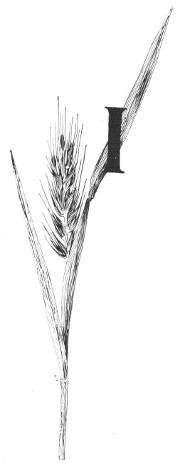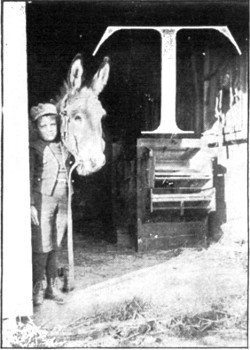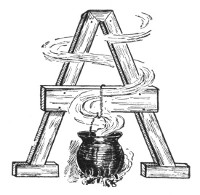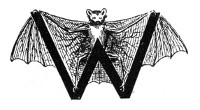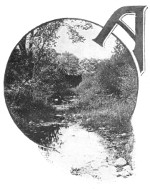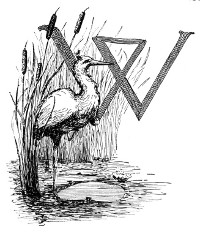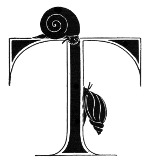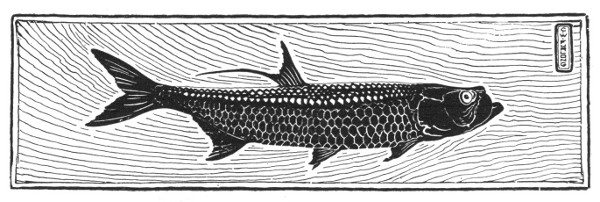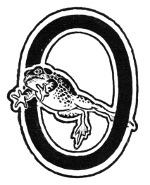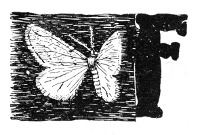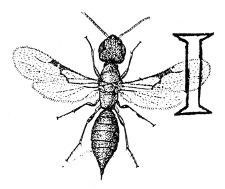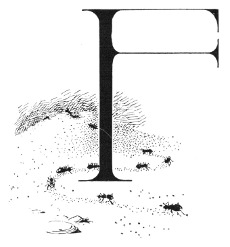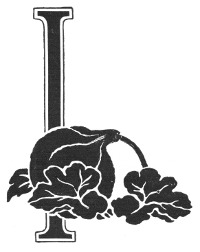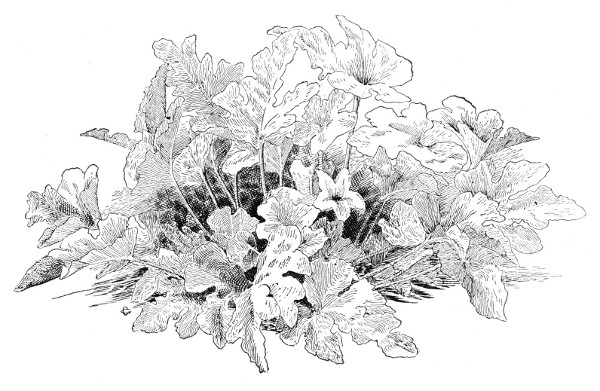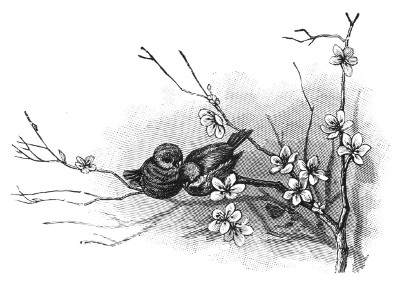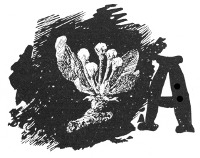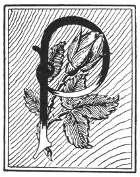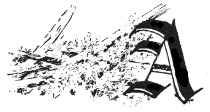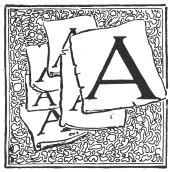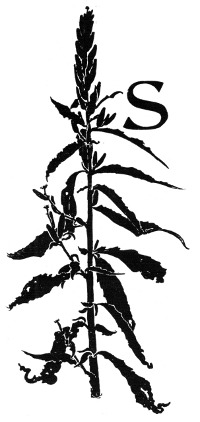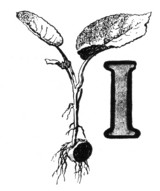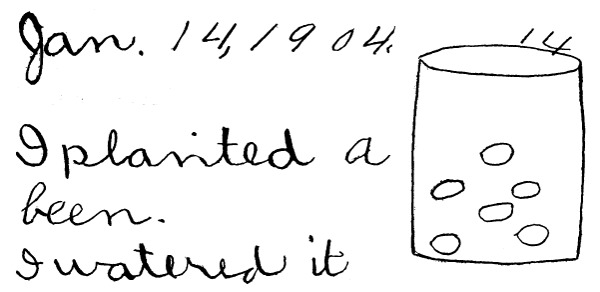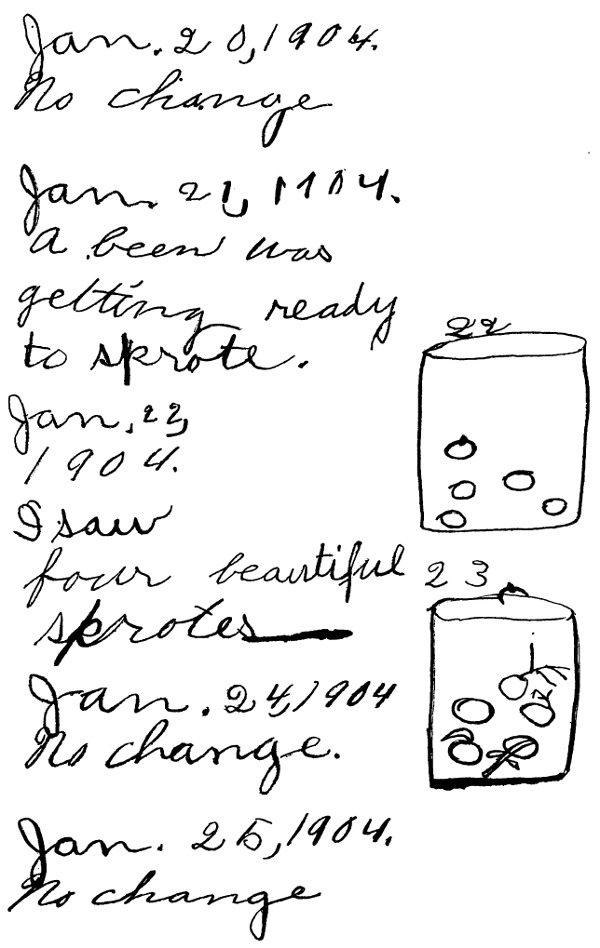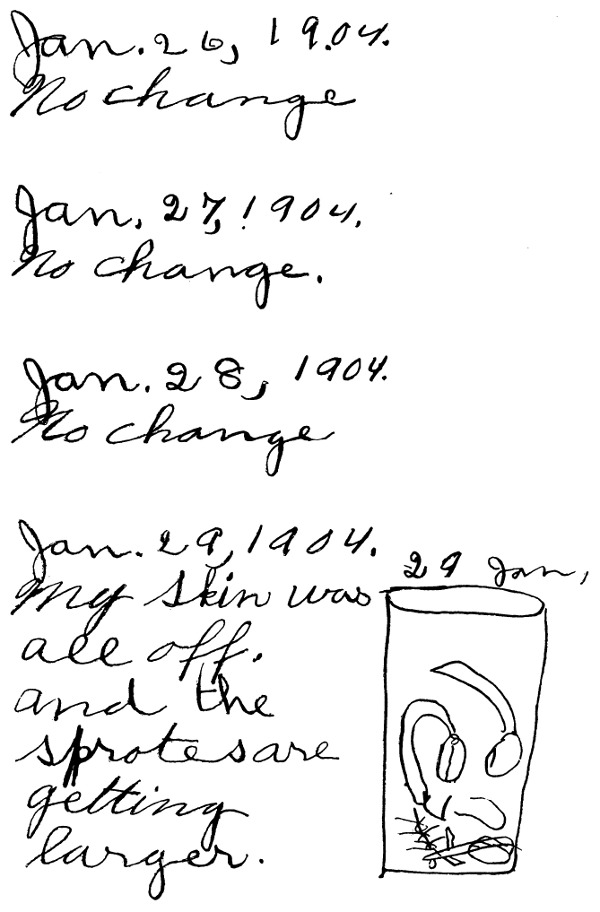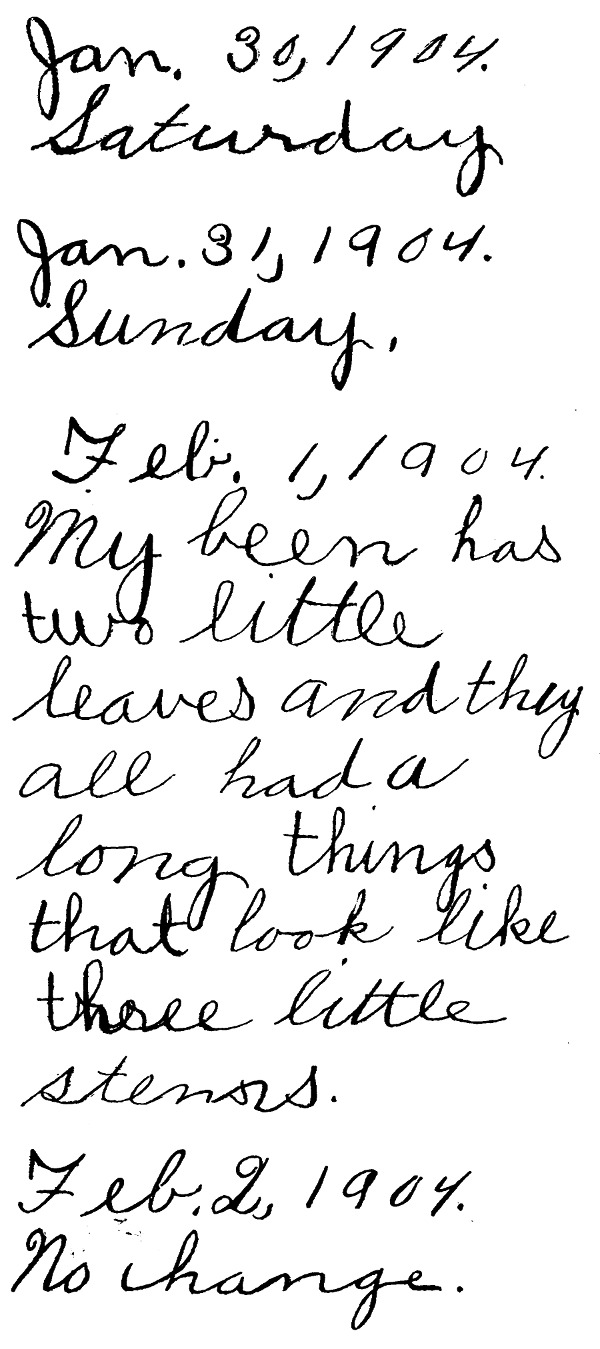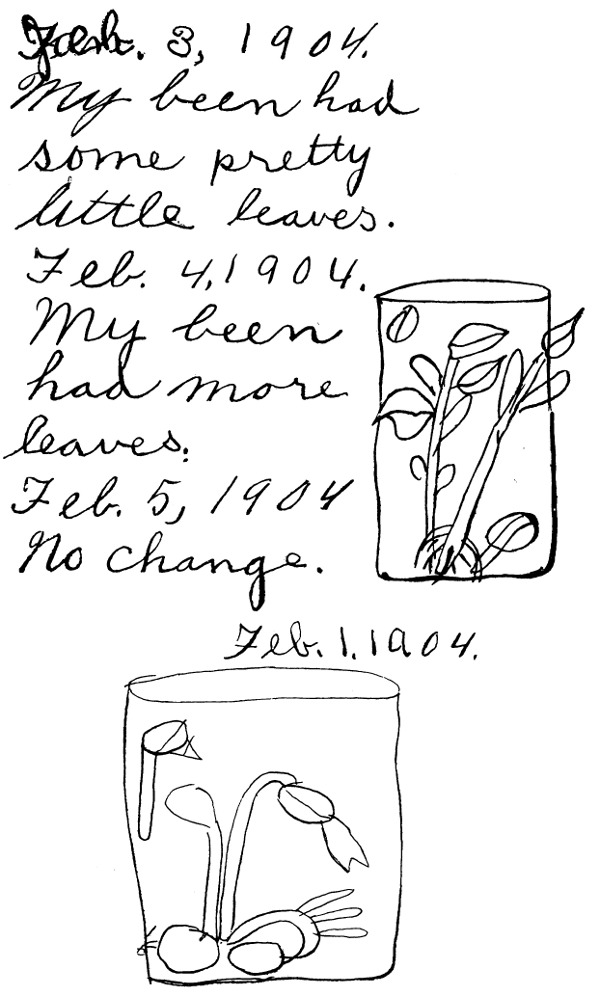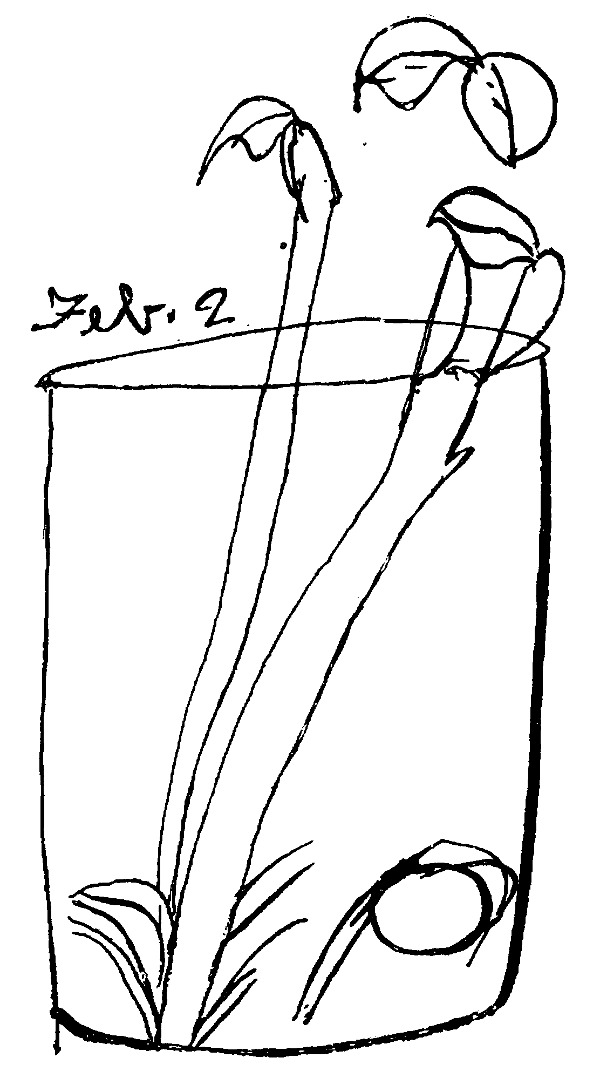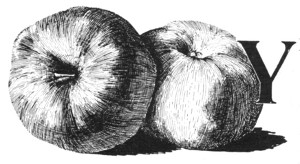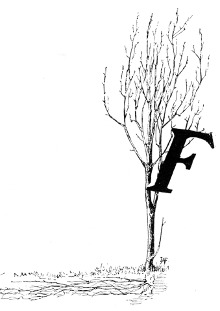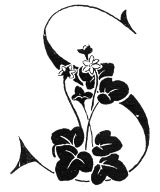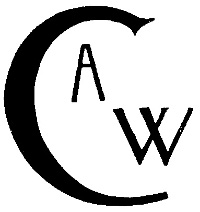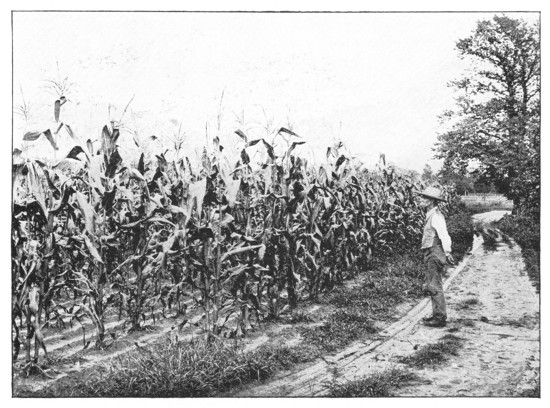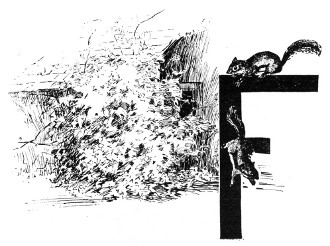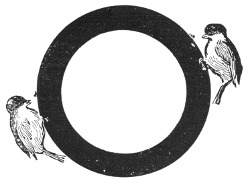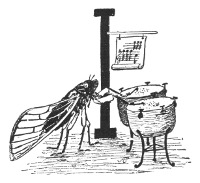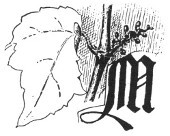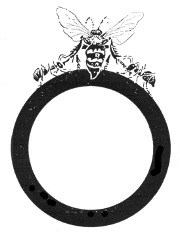*** START OF THE PROJECT GUTENBERG EBOOK 43200 ***
Transcriber's Note:
Images may not appear in the raw html text in the same place as the text version. Images were moved in some instances to minimize blank space in the html document due to wrapping.
CORNELL
Nature-Study Leaflets
BEING A SELECTION, WITH REVISION, FROM THE
TEACHERS' LEAFLETS, HOME NATURE-STUDY
LESSONS, JUNIOR NATURALIST MONTHLIES AND
OTHER PUBLICATIONS FROM THE COLLEGE OF
AGRICULTURE, CORNELL UNIVERSITY, ITHACA, N.Y.,
1896-1904
State of New York—Department of Agriculture
Nature-Study Bulletin No. 1
ALBANY
J. B. LYON COMPANY, PRINTERS
1904
[1]
College of Agriculture,
Cornell University,
Ithaca, N. Y.
Hon. C. A. Wieting,
Commissioner of Agriculture,
Albany, N. Y.:
Sir.—I submit herewith as a part of the Annual Report of 1903
a number of the nature-study publications for reprinting. Most
of these publications are out of print and the call for them still
continues. These publications have practically all arisen under
your supervision, and under the directorship of Professor I. P.
Roberts.
Nature-study work should begin in the primary grades. It is a
fundamental educational process, because it begins with the concrete
and simple, develops the power of observation, relates the
child to its environment, develops sympathy for the common and
the near-at-hand. By the time the child has arrived at the fifth
or sixth grade he should be well prepared for specific work in the
modern environmental geography, in the industries, or in other
exacter common-life subjects. Nature-study is a necessary foundation
for the best work in biology, physiography and agriculture.
Since it is content work, it is also equally important as a preparation
in all expression work, as in English, number and reading.
In most present-day rural schools it may well continue through
the eighth grade; and, if well taught, it may even take the place
very profitably of some of the "science" of some of the higher
schools. Its particular sphere, however, in a well-developed
school, is below the sixth grade, possibly below the fifth. But
even if the term nature-study ceases at the fifth or sixth grade, the
nature-study method will persist throughout the school course,—the
method of dealing first-hand and in their natural setting with
objects, phenomena and affairs, and of proceeding from the
simple and undissected to the complex and remote.
The reader should bear in mind that the College of Agriculture
has no organic connection with the public school system of New
[2]
York State, and that its nature-study work is a propaganda. From
first to last the College has been fortunate in having the sympathy,
aid, and approval of the State Department of Public Instruction,
and now of the new Education Department. The time is now
near at hand when nature-study will be adequately recognized in
the school system of the State, and then the nature-study work of
the College of Agriculture may take new form.
In these reprinted leaflets the reader will find many methods of
presentation of a great variety of subject-matter. A wide range
has purposely been included, in the hope that any interested
teacher may find at least one or two leaflets that will be suggestive
in his own work. Our own ideas as to what is a valuable leaflet
have changed greatly since the work was begun; and it is to be
expected that they will continue to change with the progress of
the work and the development of the schools. It would be an
interesting review if we were to summarize our own experiences
with our own work. The leaflet that is most praised by the critics
may be the least useful in practice. The greatest danger is that
of making the work too complete, too rigid and too formidable.
L. H. BAILEY,
Director College of Agriculture.
[3]
CONTENTS.
| Part I. Teachers' Leaflets. |
| Leaflet. |
|
Page. |
|
The Schoolhouse
L. H. Bailey. |
9 |
| I. |
What is Nature-Study?
L. H. Bailey. |
11 |
| II. |
The Nature-Study Movement
L. H. Bailey. |
21 |
| III. |
An Appeal to the Teachers of New York State
L. H. Bailey. |
31 |
| IV. |
What Is Agricultural Education?
L. H. Bailey. |
45 |
| V. |
Suggestions for Nature Study Work
Anna Botsford Comstock. |
55 |
| VI. |
A Summer Shower
Ralph S. Tarr. |
81 |
| VII. |
A Snow Storm
Anna Botsford Comstock. |
93 |
| VIII. |
A Handful of Soil: What It Is
Ralph S. Tarr. |
99 |
| IX. |
A Handful of Soil: What It Does
L. A. Clinton. |
115 |
| X. |
The Brook
J. O. Martin. Introduction by L. H. Bailey. |
125 |
| XI. |
Insect Life of a Brook
Mary Rogers Miller. |
135 |
| XII. |
Life in an Aquarium
Mary Rogers Miller. |
141 |
| XIII. |
A Study of Fishes
H. D. Reed. |
157 |
| XIV. |
The Opening of a Cocoon
Mary Rogers Miller. |
167 |
| XV. |
A Talk about Spiders
John Henry Comstock. |
171 |
| XVI. |
Life History of the Toad
Simon Henry Gage. |
185 |
| XVII. |
Life in a Terrarium
Alice I. Kent. |
207[4] |
| XVIII. |
Directions for Collecting and Preserving Insects
Anna Botsford Comstock. |
213 |
| XIX. |
Some Tent-Makers
Anna Botsford Comstock. |
227 |
| XX. |
Mosquitoes
Mary Rogers Miller. |
237 |
| XXI. |
The Ways of the Ant
Anna Botsford Comstock. |
243 |
| XXII. |
The Birds and I
L. H. Bailey. |
253 |
| XXIII. |
The Early Birds
Louis Agassiz Fuertes. |
261 |
| XXIV. |
The Woodpeckers
Anna Botsford Comstock. |
269 |
| XXV. |
The Chickadee
Anna Botsford Comstock. |
279 |
| XXVI. |
The White-Breasted Nuthatch
Anna Botsford Comstock. |
283 |
| XXVII. |
About Crows
Mary Rogers Miller. |
287 |
| XXVIII. |
How a Squash Plant Gets Out of the Seed
L. H. Bailey. |
291 |
| XXIX. |
How the Trees Look in Winter
L. H. Bailey. |
297 |
| XXX. |
One Way of Drawing Trees in Their Winter Aspects
Charles W. Furlong. |
307 |
| XXXI. |
Four Apple Twigs
L. H. Bailey. |
317 |
| XXXII. |
The Burst of Spring
L. H. Bailey. |
327 |
| XXXIII. |
Evergreens and How They Shed Their Leaves
H. P. Gould. |
333 |
| XXXIV. |
The Clovers and Their Kin
Anna Botsford Comstock. |
349 |
| XXXV. |
How Plants Live Together
L. H. Bailey. |
361 |
| XXXVI. |
Planting a Plant
L. H. Bailey. |
367 |
| XXXVII. |
Cuttings and Cuttings
L. H. Bailey. |
369 |
| XXXVIII. |
A Children's Garden
L. H. Bailey. |
379[5] |
| XXXIX. |
A Hill of Potatoes
I. P. Roberts. |
385 |
| XL. |
The Hepatica
Anna Botsford Comstock. |
391 |
| XLI. |
Jack-in-the-Pulpit
Anna Botsford Comstock. |
395 |
| XLII. |
Indian Corn
Anna Botsford Comstock. |
397 |
| XLIII. |
The Ripened Corn
Anna Botsford Comstock. |
401 |
| XLIV. |
The Uses of Food Stored in Seeds
Anna Botsford Comstock. |
409 |
| XLV. |
The Life History of a Beet
Mary Rogers Miller. |
415 |
| XLVI. |
Pruning
Mary Rogers Miller. |
417 |
| XLVII. |
Study of a Tree
Anna Botsford Comstock. |
423 |
| XLVIII. |
The Maple in February
Anna Botsford Comstock. |
431 |
| XLIX. |
The Red Squirrel or Chickaree
Anna Botsford Comstock. |
435 |
| L. |
Improvement of School Grounds
John W. Spencer. |
437 |
| Part II. Children's Leaflets. |
|---|
|
The Child's Realm
L. H. Bailey. |
451 |
| LI. |
A Snow Storm
Alice G. McCloskey. |
453 |
| LII. |
A Plant at School
L. H. Bailey. |
455 |
| LIII. |
An Apple Twig and an Apple
L. H. Bailey. |
467 |
| LIV. |
Twigs in Late Winter
Alice G. McCloskey. |
473 |
| LV. |
Pruning
Alice G. McCloskey. |
475 |
| LVI. |
The Hepatica
Alice G. McCloskey. |
477 |
| LVII. |
Jack-in-the-Pulpit
Alice G. McCloskey. |
479 |
| LVIII. |
Dandelion
Alice G. McCloskey and L. H. Bailey. |
481[6] |
| LIX. |
Maple Trees in Autumn
Alice G. McCloskey. |
483 |
| LX. |
A Corn Stalk
Alice G. McCloskey. |
485 |
| LXI. |
In the Corn Fields
Alice G. McCloskey. |
487 |
| LXII. |
The Alfalfa Plant
L. H. Bailey and John W. Spencer. |
489 |
| LXIII. |
The Red Squirrel
Alice G. McCloskey. |
495 |
| LXIV. |
Robin
L. H. Bailey. |
499 |
| LXV. |
Crows
Alice G. McCloskey. |
501 |
| LXVI. |
A Friendly Little Chickadee
Alice G. McCloskey. |
503 |
| LXVII. |
The Family of Woodpeckers
Alice G. McCloskey. |
505 |
| LXVIII. |
Deserted Birds' Nests
Alice G. McCloskey. |
515 |
| LXIX. |
The Poultry Yard: Some Thanksgiving Lessons
Alice G. McCloskey and James E. Rice. |
517 |
| LXX. |
Little Hermit Brother
Anna Botsford Comstock. |
529 |
| LXXI. |
A Home for Friendly Little Neighbors
Alice G. McCloskey. |
537 |
| LXXII. |
Moths and Butterflies
Alice G. McCloskey. |
545 |
| LXXIII. |
The Paper Makers
Alice G. McCloskey. |
551 |
| LXXIV. |
Some Carpenter Ants and Their Kin
Alice G. McCloskey. |
555 |
| LXXV. |
A Garden All Your Own
John W. Spencer. |
559 |
| LXXVI. |
The Gardens and the School Grounds
John W. Spencer. |
569 |
| LXXVII. |
Something for Young Farmers
John W. Spencer. |
573 |
| LXXVIII. |
Bulbs
John W. Spencer. |
577 |
| LXXIX. |
A Talk About Bulbs by the Gardener
C. E. Hunn. |
581 |
| LXXX. |
Horses
Alice G. McCloskey and I. P. Roberts. |
589 |
[7]
PART I.
TEACHERS' LEAFLETS.
Publications designed to aid the teacher with
subject-matter, to indicate the point of view,
and to suggest a method of presentation.
[8]
[9]
THE SCHOOL HOUSE.
By L. H. BAILEY.
In the rural districts, the school must become
a social and intellectual centre. It must stand
in close relationship with the life and activities
of its community. It must not be an institution
apart, exotic to the common-day lives;
it must teach the common things and put the pupil
into sympathetic touch with his own environment.
Then every school house will have a voice, and will
say:
I teach
The earth and soil
To them that toil,
The hill and fen
To common men
That live right here;
The plants that grow,
The winds that blow,
The streams that run
In rain and sun
Throughout the year;
And then I lead,
Thro' wood and mead,
Thro' mold and sod,
Out unto God
With love and cheer.
I teach!
[10]
[11]
LEAFLET I.
WHAT IS NATURE-STUDY?[1]
By L. H. BAILEY.
Nature-study,
as a process, is seeing the things that one looks at, and
the drawing of proper conclusions from what one sees. Its purpose is to
educate the child in terms of his environment, to the end that his life
may be fuller and richer. Nature-study is not the study of a science, as
of botany, entomology, geology, and the like. That is, it takes the
things at hand and endeavors to understand them, without reference
primarily to the systematic order or relationships of the objects. It is
informal, as are the objects which one sees. It is entirely divorced
from mere definitions, or from formal explanations in books. It is
therefore supremely natural. It trains the eye and the mind to see and
to comprehend the common things of life; and the result is not directly
the acquiring of science but the establishing of a living sympathy with
everything that is.
The proper objects of nature-study are the things that one
oftenest meets. Stones, flowers, twigs, birds, insects, are good
and common subjects. The child, or even the high school
pupil, is first interested in things that do not need to be analyzed
or changed into unusual forms or problems. Therefore,
problems of chemistry and of physics are for the most part
unsuited to early lessons in nature-study. Moving things, as
birds, insects and mammals, interest children most and therefore
seem to be the proper objects for nature-study; but it is often
difficult to secure such specimens when wanted, especially in
liberal quantity, and still more difficult to see the objects in
perfectly natural conditions. Plants are more easily had, and are
therefore usually more practicable for the purpose, although
animals and minerals should by no means be excluded.
[12]
If the objects to be studied are informal, the methods of teaching
should be the same. If nature-study were made a stated part
of a rigid curriculum, its purpose might be defeated. One difficulty
with our present school methods is the necessary formality
of the courses and the hours. Tasks are set, and tasks are
always hard. The best way to teach nature-study is, with no hard
and fast course laid out, to bring in some object that may be at
hand and to set the pupils to looking at it. The pupils do the
work,—they see the thing and explain its structure and its meaning.
The exercise should not be long, not to exceed fifteen
minutes perhaps, and, above all things, the pupil should never
look upon it as a "recitation," nor as a means of preparing for
"examination." It may come as a rest exercise, whenever the
pupils become listless. Ten minutes a day, for one term, of a
short, sharp, and spicy observation lesson on plants, for example,
is worth more than a whole text-book of botany.
The teacher should studiously avoid definitions, and the setting
of patterns. The old idea of the model flower is a pernicious
one, because it does not exist in nature. The model flower, the
complete leaf, and the like, are inferences, and pupils should
always begin with things and phenomena, and not with abstract
ideas. In other words, the ideas should be suggested by the
things, and not the things by the ideas. "Here is a drawing of a
model flower," the old method says; "go and find the nearest
approach to it." "Go and find me a flower," is the true method,
"and let us see what it is."
Every child, and every grown person too, for that matter, is
interested in nature-study, for it is the natural way of acquiring
knowledge. The only difficulty lies in the teaching, for very
few teachers have had experience in this informal method of
drawing out the observing and reasoning powers of the pupil
without the use of text-books. The teacher must first of all feel
in natural objects the living interest which it is desired the pupils
shall acquire. If the enthusiasm is not catching, better let such
teaching alone.
Primarily, nature-study, as the writer conceives it, is not knowledge.
He would avoid the leaflet that gives nothing but information.
Nature-study is not "method." Of necessity each teacher
will develop a method; but this method is the need of the teacher,
not of the subject.
Nature-study is not to be taught for the purpose of making
[13]
the youth a specialist or a scientist. Now and then a pupil will
desire to pursue a science for the sake of the science, and he
should be encouraged. But every pupil may be taught to be
interested in plants and birds and insects and running brooks, and
thereby his life will be the stronger. The crop of scientists will
take care of itself.
It is said that nature-study teaching is not thorough and therefore
is undesirable. Much that is good in teaching has been sacrificed
for what we call "thoroughness,"—which in many cases
means only a perfunctory drill in mere facts. One cannot teach
a pupil to be really interested in any natural object or phenomenon
until the pupil sees accurately and reasons correctly. Accuracy
is a prime requisite in any good nature-study teaching, for
accuracy is truth and it develops power. It is better that a pupil
see twenty things accurately, and see them himself, than that he
be confined to one thing so long that he detests it. Different subjects
demand different methods of teaching. The method of
mathematics cannot be applied to dandelions and polliwogs.
The first essential in nature-study is actually to see the thing
or the phenomenon. It is positive, direct, discriminating, accurate
observation. The second essential is to understand why the thing
is so, or what it means. The third essential is the desire to know
more, and this comes of itself and thereby is unlike much other
effort of the schoolroom. The final result should be the development
of a keen personal interest in every natural object and
phenomenon.
Real nature-study cannot pass away. We are children of
nature, and we have never appreciated the fact so much as we
do now. But the more closely we come into touch with nature,
the less do we proclaim the fact abroad. We may hear less about
it, but that will be because we are living nearer to it and have
ceased to feel the necessity of advertising it.
Much that is called nature-study is only diluted and sugar-coated
science. This will pass. Some of it is mere sentimentalism.
This also will pass. With the changes, the term nature-study
may fall into disuse; but the name matters little so long as
we hold to the essence.
All new things must be unduly emphasized, else they cannot
gain a foothold in competition with things that are established.
For a day, some new movement is announced in the daily papers,
and then, because we do not see the head lines, we think that
[14]
the movement is dead; but usually when things are heralded they
have only just appeared. So long as the sun shines and the fields
are green, we shall need to go to nature for our inspiration and
our respite; and our need is the greater with every increasing
complexity of our lives.
All this means that the teacher will need helps. He will need
to inform himself before he attempts to inform the pupil. It is
not necessary that he become a scientist in order to do this. He
goes as far as he knows, and then says to the pupil that he cannot
answer the questions that he cannot. This at once raises him in
the estimation of the pupil, for the pupil is convinced of his
truthfulness, and is made to feel—but how seldom is the sensation!—that
knowledge is not the peculiar property of the teacher
but is the right of any one who seeks it. Nature-study sets the
pupil to investigating for himself. The teacher never needs to
apologize for nature. He is teaching merely because he is an
older and more experienced pupil than his pupil is. This is the
spirit of the teacher in the universities to-day. The best teacher
is the one whose pupils the farthest outrun him.
In order to help the teacher in the rural schools of New York,
we have conceived of a series of leaflets explaining how the common
objects can be made interesting to children. Whilst these
are intended for the teacher, there is no harm in giving them to
the pupil; but the leaflets should never be used as texts from
which to make recitations. Now and then, take the children for
a ramble in the woods or fields, or go to the brook or lake. Call
their attention to the interesting things that you meet—whether
you yourself understand them or not—in order to teach them to
see and to find some point of sympathy; for every one of them
will some day need the solace and the rest which this nature-love
can give them. It is not the mere information that is valuable;
that may be had by asking someone wiser than they, but the
inquiring and sympathetic spirit is one's own.
The pupils will find their regular lessons easier to acquire for
this respite of ten minutes with a leaf or an insect, and the school-going
will come to be less perfunctory. If you must teach drawing,
set the picture in a leaflet before the pupils for study, and
then substitute the object. If you must teach composition, let
the pupils write on what they have seen. After a time, give ten
minutes now and then to asking the children what they saw on
their way to school.
[15]
Now, why is the College of Agriculture at Cornell University
interesting itself in this work? It is trying to help the farmer,
and it begins with the most teachable point—the child. The
district school cannot teach technical professional agriculture
any more than it can teach law or engineering or any other profession
or trade, but it can interest the child in nature and in
rural problems, and thereby join his sympathies to the country
at the same time that his mind is trained to efficient thinking.
The child will teach the parent. The coming generation will see
the result. In the interest of humanity and country, we ask for
help.
How to make the rural school more efficient is one of the most
difficult problems before our educators, but the problem is larger
than mere courses of study. Social and economic questions are
at the bottom of the difficulty, and these questions may be beyond
the reach of the educator. A correspondent wrote us the other
day that an old teacher in a rural school, who was receiving $20
a month, was underbid 50 cents by one of no experience, and
the younger teacher was engaged for $19.50, thus saving the
district for the three months' term the sum of $1.50. This is an
extreme case, but it illustrates one of the rural school problems.
One of the difficulties with the rural district school is the fact
that the teachers tend to move to the villages and cities, where
there is opportunity to associate with other teachers, where there
are libraries, and where the wages are sometimes better. This
movement is likely to leave the district school in the hands of
younger teachers, and changes are very frequent. To all this
there are many exceptions. Many teachers appreciate the
advantages of living in the country. There they find compensations
for the lack of association. They may reside at home.
Some of the best work in our nature-study movement has come
from the rural schools. We shall make a special effort to reach
the country schools. Yet it is a fact that new movements usually
take root in the city schools and gradually spread to the
smaller places. This is not the fault of the country teacher;
it comes largely from the fact that his time is occupied by so
many various duties and that the rural schools do not have the
advantage of the personal supervision which the city schools have.
[16]
Retrospect and Prospect after five years' work.[2]
To create a larger public sentiment in favor of agriculture, to
increase the farmer's respect for his own business,—these are the
controlling purposes in the general movement that we are carrying
forward under the title of nature-study. It is not by teaching
agriculture directly that this movement can be started. The common
schools in New York will not teach agriculture to any extent
for the present, and the movement, if it is to arouse a public
sentiment, must reach beyond the actual farmers themselves.
The agricultural status is much more than an affair of mere farming.
The first undertaking, as we conceive the problem, is to
awaken an interest in the things with which the farmer lives and
has to do, for a man is happy only when he is in sympathy with
his environment. To teach observation of common things, therefore,
has been the fundamental purpose. A name for the movement
was necessary. We did not wish to invent a new name or
phrase, as it would require too much effort in explanation.
Therefore, we chose the current and significant phrase "nature-study,"
which, while it covers many methods and practices, stands
everywhere for the opening of the mind directly to the common
phenomena of nature.
We have not tried to develop a system of nature-study nor to
make a contribution to the pedagogics of the subject. We have
merely endeavored, as best we could, to reach a certain specific
result,—the enlarging of the agricultural horizon. We have had
no pedagogical theories, or, if we have, they have been modified
or upset by the actual conditions that have presented themselves.
Neither do we contend that our own methods and means have
always been the best. We are learning. Yet we are sure that the
general results justify all the effort.
Theoretical pedagogical ideals can be applied by the good
teacher who comes into personal relations with the children, and
they are almost certain to work out well. These ideals cannot
always be applied, however, with persons who are to be reached by
means of correspondence and in a great variety of conditions,
and particularly when many of the subjects lie outside the customary
work of the schools.
Likewise, the subjects selected for our nature-study work must
be governed by conditions and not wholly by ideals. We are
[17]
sometimes asked why we do not take up topics more distinctly
agricultural or economic. The answer is that we take subjects
that teachers will use. We would like, for example, to give
more attention to insect subjects, but it is difficult to induce
teachers to work with them. If distinctly agricultural topics
alone were used, the movement would have very little following
and influence. Moreover, it is not our purpose to teach technical
agriculture in the common schools, but to inculcate the habit of
observing, to suggest work that has distinct application to the
conditions in which the child lives, to inspire enthusiasm for
country life, to aid in home-making, and to encourage a general
movement towards the soil. These matters cannot be forced.
In every effort by every member of the extension staff, the betterment
of agricultural conditions has been the guiding impulse,
however remote from that purpose it may have seemed to the
casual observer.
We have found by long experience that it is unwise to give too
much condensed subject-matter. The individual teacher can
give subject-matter in detail because personal knowledge and
enthusiasm can be applied. But in general correspondence and
propagandist work this cannot be done. With the Junior Naturalist,
for example, the first impulse is to inspire enthusiasm
for some bit of work which we hope to take up. This enthusiasm
is inspired largely by the organization of clubs and by the
personal correspondence that is conducted between the Bureau
and these clubs and their members. It is the desire, however,
to follow up this general movement with instruction in definite
subject-matter with the teacher. Therefore, a course in Home
Nature-study was formally established under the general direction
of Mrs. Mary Rogers Miller. It was designed to carry on
the experiment for one year, in order to determine whether such
a course would be productive of good results and to discover
the best means of prosecuting it. These experimental results
were very gratifying. Nearly 2,000 New York teachers are now
regularly enrolled in the Course, the larger part of whom are outside
the metropolitan and distinctly urban conditions. Every
effort is made to reach the rural teacher.
In order that the work may reach the children, it must be
greatly popularized and the children must be met on their own
ground. The complete or ideal leaflet may have little influence.
[18]
For example, I prepared a leaflet on "A Children's Garden"
which several people were kind enough to praise. However, very
little direct result was secured from the use of this leaflet until
"Uncle John" began to popularize it and to make appeals to
teachers and children by means of personal talks, letters and circulars.
So far as possible, his appeal to children was made in
their own phrase. The movement for the children's garden has
now taken definite shape, and the result is that more than 26,000
children in New York State are raising plants during the present
year. Another illustration of this kind may be taken from the
effort to improve the rural school grounds. I wrote a bulletin
on "The Improvement of Rural School Grounds," but the tangible
results were very few. Now, however, through the work of
"Uncle John" with the teachers and the children, a distinct
movement has begun for the cleaning and improving of the school
grounds of the State. This movement is yet in its infancy, but
several hundred schools are now in process of renovation, largely
through the efforts of the children.
The idea of organizing children into clubs for the study of
plants and animals, and other outdoor subjects, originated, so
far as our work is concerned, with Mr. John W. Spencer himself
an actual, practical farmer. His character as "Uncle John"
has done much to supply the personality that ordinarily is lacking
in correspondence work, and there has been developed
amongst the children an amount of interest and enthusiasm
which is surprising to those who have not watched its progress.
The problems connected with the rural schools are probably
the most difficult questions to solve in the whole field of education.
We believe, however, that the solution cannot begin
directly with the rural schools themselves. It must begin in
educational centres and gradually spread to the country districts.
We are making constant efforts to reach the actual rural
schools and expect to utilize fully every means within our power,
but it is work that is attended with many inherent difficulties.
We sometimes feel that the agricultural status can be reached
better through the hamlet, village, and some of the city schools
than by means of the little red school house on the corner.
By appeals to the school commissioners in the rural districts,
by work through teachers' institutes, through farmers' clubs,
granges and other means we believe that we are reaching farther
and farther into the very agricultural regions. It is difficult
[19]
to get consideration for purely agricultural subjects in the
rural schools themselves. Often the school does not have facilities
for teaching such subjects, often the teachers are employed
only for a few months, and there is frequently a sentiment against
innovation. It has been said that one reason why agricultural
subjects are taught less in the rural schools of America than in
those of some parts of Europe, is because of the few male teachers
and the absence of school gardens.
We have met with the greatest encouragement and help from
very many of the teachers in the rural schools. Often under disadvantages
and discouragements they are carrying forward their
part of the educational work with great consecration and efficiency.
In all the educational work we have been fortunate to have the
sympathy and co-operation of the State Department of Public
Instruction. We do not expect that all teachers nor even a majority
will take up nature-study work. It is not desirable that they
should. We are gratified, however, at the large number who are
carrying it forward.
This Cornell nature-study movement is one small part of a general
awakening in educational circles, a movement which looks
towards bringing the child into actual contact and sympathy
with the things with which he has to do. This work is taking on
many phases. One aspect of it is its relation to the teaching of
agriculture and to the love of country life. This aspect is yet in
its early experimental stage. The time will come when institutions
in every State will carry on work along this line. It will be several
years yet before this type of work will have reached what may be
considered an established condition, or before even a satisfactory
body of experience shall have been attained. Out of the varied
and sometimes conflicting methods and aims that are now before
the public, there will develop in time an institution-movement of
extension agricultural teaching.
The literature issued by the Bureau of Nature-Study is of two
general types: that which is designed to be of more or less permanent
value to the teacher and the school; and that which is of
temporary use, mostly in the character of supplements and circulars
designed to meet present conditions or to rally the teachers
or the Junior Naturalists. The literature of the former type is
now republished and is to be supplied gratis to teachers in New
York State. The first publication of the Bureau of Nature-Study
was a series of teachers' leaflets. This series ran to twenty-two
[20]
numbers. It was discontinued in May, 1901, because it was
thought that sufficient material had then been printed to supply
teachers with subjects for a year's work. It was never intended
to publish these leaflets indefinitely. Unfortunately, however,
some persons have supposed that because these teachers' leaflets
were discontinued we were lessening our efforts in the nature-study
work. The fact is that later years have seen an intensification
of the effort and also a strong conviction on the part of all
those concerned that the work has permanent educative value.
We never believed so fully in the efficiency of this kind of effort
as at the present time.
[21]
LEAFLET II.
THE NATURE-STUDY MOVEMENT.[3]
By L. H. BAILEY.
The nature-study movement is the outgrowth of an effort to put the child
into contact and sympathy with its own life.
It is strange that such a movement is necessary. It would seem to be
natural and almost inevitable that the education of the child should
place it in intimate relation with the objects and events with which it
lives. It is a fact, however, that our teaching has been largely exotic
to the child; that it has begun by taking the child away from its
natural environment; that it has concerned itself with the
subject-matter rather than with the child. This is the marvel of marvels
in education.
Let me illustrate by a reference to the country school. If any
man were to find himself in a country wholly devoid of schools,
and were to be set the task of originating and organizing a school
system, he would almost unconsciously introduce some subjects
that would be related to the habits of the people and to the welfare
of the community. Being freed from traditions, he would
teach something of the plants and animals and fields and people.
Yet, as a matter of fact, what do our rural schools teach? They
usually teach the things that the academies and the colleges and
the universities have taught—that old line of subjects that is supposed,
in its higher phases, to lead to "learning." The teaching
in the elementary school is a reflection of old academic methods.
We really begin our system at the wrong end—with a popularizing
and simplifying of methods and subjects that are the product
of the so-called higher education. We should begin with the
child. "The greatest achievement of modern education," writes
[22]
Professor Payne, "is the gradation and correlation of schools,
whereby the ladder of learning is let down from the university to
secondary schools, and from these to the schools of the people."
It is historically true that the common schools are the products
of the higher or special schools, and this explains why it is that
so much of the common-school work is unadapted to the child.
The kindergarten and some of the manual-training, are successful
revolts against all this. It seems a pity that it were ever necessary
that the ladder of learning be "let down;" it should be stood
on the ground.
The crux of the whole subject lies in the conception of what
education is. We all define it in theory to be a drawing out and a
developing of the powers of the mind; but in practice we define
it in the terms of the means that we employ. We have come to
associate education with certain definite subjects, as if no other
sets of subjects could be made the means of educating a mind.
One by one, new subjects have forced themselves in as being
proper means for educating. All the professions, natural science,
mechanic arts, politics, and last of all agriculture, have contended
for a place in educational systems and have established themselves
under protest. Now, any subject, when put into pedagogic form,
is capable of being the means of educating a man. The study of
Greek is no more a proper means of education than the study of
Indian corn is. The mind may be developed by means of either
one. Classics and calculus are no more divine than machines and
potatoes are. We are much in the habit of speaking of certain
subjects as leading to "culture;" but this is really factitious,
for "culture" is the product only of efficient teaching, whatever
the subject-matter may be. So insistent have we been on the
employing of "culture studies" that we seem to have mistaken the
means of education for the object or result of education. What
a man is, is more important than what he knows. Anything that
appeals to a man's mind is capable of drawing out and training
that mind; and is there any subject that does not appeal to
some man's mind? The subject may be Sanskrit literature,
hydraulics, physics, electricity, or agriculture—all may be made
the means whereby men and women are educated, all may lead to
what we ought to know as culture. The particular subject with
which the person deals is incidental, for
"A man's a man for a' that and a' that."
Is there, then, to be no choice of subjects? There certainly is.
[23]
It is the end of education to prepare the man or woman better to
live. The person must live with his surroundings. He must live
with common things. The most important means with which to
begin the educational process, therefore, are those subjects that
are nearest the man. Educating by means of these subjects puts
the child into first-hand relation with his own life. It expands
the child's spontaneous interest in his environment into a permanent
and abiding sympathy and philosophy of life. I never
knew an exclusive student of classics or philosophy who did not
deplore his lack of touch with his own world. These common
subjects are the natural, primary, fundamental, necessary subjects.
Only as the child-mind develops should it be taken on long
flights to extrinsic subjects, distant lands, to things far beyond
its own realm; and yet, does not our geography teaching still
frequently begin with the universe or with the solar system?
In the good time coming, geography will not begin with a book
at all, as, in fact, it does not now with many teachers. It may
end with one. It will begin with physical features in the very
neighborhood in which the child lives—with brooks and lakes
and hills and fields. Education should begin always with objects
and phenomena. We are living in a text-book and museum age.
First of all, we put our children into books, sometimes even into
books that tell about the very things at the child's door, as if a
book about a thing were better than the thing itself. So accustomed
are we to the book-route that we regard any other route
as unsystematic, unmethodical, disconnected. Books are only
secondary means of education. We have made the mistake of
considering them primary. This mistake we are rapidly correcting.
As the book is relegated to its proper sphere, we shall find
ourselves free to begin with the familiar end of familiar things.
Not only are we to begin with common objects and events, but
with the child's natural point of contact with them. Start with
the child's sympathies; lead him on and out. We are to develop
the child, not the subject. The specialists may be trusted to
develop the subject-matter and to give us new truth. The child
is first interested in the whole plant, the whole bug, the whole
bird, as a living, grooving object. It is a most significant fact that
most young children like plants, but that most youths dislike
botany. The fault lies neither in the plants nor in the youths. A
youth may study cells until he hates the plant that bears the cells.
He may acquire a technical training in cells, but he may be
[24]
divorced from objects with which he must live, and his life
becomes poorer rather than richer. I have no objection to minute
dissection and analysis, but we must be very careful not to begin
it too early nor to push it too far, for we are not training specialists:
we are developing the power that will enable the pupil to get the
most from his own life. As soon as the pupil begins to lose interest
in the plant or the animal itself, stop!
There is still another reason for the study of the common things
in variety: it develops the power to grasp the problems of the day
and to make the man resourceful. A young man who has spent
all his time in the schoolroom is usually hopelessly helpless when
he encounters a real circumstance. I see this remarkably illustrated
in my own teaching, for I have young men from the city
and from farms. The farm boy will turn his hand to twenty things
where the city boy will turn his to one. The farm boy has had
to meet problems and to solve them for himself: this is sometimes
worth more than his entire school training. Why does the farm
boy make his way when he goes to the city?
It is no mere incident to one's life that he be able to think in
the thought of his own time. Even though one expect to devote
himself wholly to a dead language, in school he should study
enough natural science and enough technology to enable him to
grasp living problems. I fear that some institutions are still turning
out men with mediæval types of mind.
Now, therefore, I come again to my thesis,—to the statement
that the end and purpose of nature-study is to educate the young
mind by means of the subjects within its own sphere, by appealing
to its own sympathetic interest in them, in order that the person's
life may be sweeter, deeper, and more resourceful. Nature-study
would not necessarily drive any subject from the curriculum;
least of all would it depreciate the value of the "humanities;"
but it would restore to their natural and proper place the subjects
that are related to the man. It would begin with things within
the person's realm. If we are to interest children—or grown-ups,
either, for that matter—we must begin by teaching the things
that touch their lives. Where there is one person that is interested
in philology, there are hundreds that are interested in
engines and in wheat. From the educational point of view,
neither the engine nor the wheat is of much consequence, but the
men who like the engines and who grow the wheat are immeasurably
important and must be reached. There are five millions of
[25]
farms in the United States on which chickens are raised, and also
thousands of city and village lots where they are grown. I
would teach chickens. I would reach Men by means of the Old
Hen.
How unrelated much of our teaching is to the daily life is well
shown by inquiries recently made of the children of New Jersey
by Professor Earl Barnes. Inquiries were made of the country
school children in two agricultural counties of the State as to
what vocation they hoped to follow. As I recall the figures, of
the children at seven years of age 26 per cent desired to follow
some occupation connected with country life. Of those at fourteen
years, only 2 per cent desired such occupation. This
remarkable falling off Professor Barnes ascribes in part to the
influence of the teacher in the country schools, who is usually a
town or city girl. The teacher measures everything in terms of
the city. She talks of the city. She returns to the city at the
end of the week. In the meantime, all the beauty and attractiveness
and opportunity of the country may be unsuggested. Unconsciously
both to teacher and pupil, the minds of the children are
turned toward the city. There results a constant migration to
the city, bringing about serious social and economic problems;
but from the educational point of view the serious part of it is
the fact that the school training may unfit the child to live in its
normal and natural environment. It is often said that the agricultural
college trains the youth away from the farm; the fact is
that the mischief is done long before the youth enters college.
Let me give another illustration of the fact that dislike of
country life is bred very early in the life of the child. In a certain
rural school in New York State, of say forty-five pupils, I
asked all those children that lived on farms to raise their hands;
all hands but one went up. I then asked those who wanted to
live on the farm to raise their hands; only that one hand went up.
Now, these children were too young to feel the appeal of more
bushels of potatoes or more pounds of wool, yet they had thus
early formed their dislike of the farm. Some of this dislike is
probably only an ill-defined desire for a mere change, such as one
finds in all occupations, but I am convinced that the larger part
of it was a genuine dissatisfaction with farm life. These children
felt that their lot was less attractive than that of other children;
I concluded that a flower garden and a pleasant yard would do
more to content them with living on the farm than ten more
[26]
bushels of wheat to the acre. Of course, it is the greater and
better yield that will enable the farmer to supply these amenities;
but at the same time it must be remembered that the increased
yield itself does not arouse a desire for them. I should make
farm life interesting before I make it profitable.
Of course, nature-study is not proposed merely as a means of
keeping youth in the country; I have given these examples only
to illustrate the fact that much of our teaching is unrelated to
the circumstances in which the child lives—and this is particularly
true of teaching in the rural schools. Nature-study applies
to city and country conditions alike, acquiring additional emphasis
in the country from the fact that what we call "nature" forms
the greater part of the environment there. But the need to connect
the child with itself is fundamental to all efficient teaching.
To the city child the problems associated with the city are all-important;
but even then I should give much attention to the
so-called "nature subjects;" for these are clean, inspiring, universal.
"Back to nature" is an all-pervading tendency of the
time.
We must distinguish sharply between the purposes of nature-study
and its methods. Its purposes are best expressed in the
one word "sympathy." By this I do not mean sentimentalism or
superficiality or desultoriness. The acquiring of sympathy with
the things and events amongst which one lives is the result of a
real educational process—a process as vital and logical and
efficient as that concerned in educating the older pupil in terms
of fact and "science." Nature-study is not "natural history,"
nor "biology," nor even elementary science. It is an attitude, a
point of view, a means of contact.
Nature-study is not merely the adding of one more thing to a
curriculum. It is not co-ordinate with geography, or reading, or
arithmetic. Neither is it a mere accessory, or a sentiment, or an
entertainment, or a tickler of the senses. It is not a "study." It
is not the addition of more "work." It has to do with the whole
point of view of elementary education, and therefore is fundamental.
It is the full expression of personality. It is the practical
working out of the extension idea that has become so much a
part of our time. More than any other recent movement, it will
reach the masses and revive them. In time it will transform our
ideals and then transform our methods.
The result of all this changing point of view I like to speak of
[27]
as a new thing. Of course, there is no education that is wholly
new in kind; and it is equally true that education is always new,
else it is dead and meaningless. But this determination to cast
off academic methods, to put ourselves at the child's point of
view, to begin with the objects and phenomena that are near and
dear to the child, is just now so marked, and is sure to be so far-reaching
in its effects, that I cannot resist the temptation to collect
these various movements, for emphasis, under the title of the
"new education."
"Nature-study" is another name for this new education. It is a
revolt from the too exclusive science-teaching and book-teaching
point of view, a protest against taking the child first of all out of
its own environment. It is a product of the teaching of children
in the elementary schools. The means and methods in nature-study
are as varied as the persons who teach it. Most of the criticism
of the movement—even among nature-study folk themselves—has
to do with means and methods rather than with real ideals.
We are now in the epoch when we should overlook minor differences
and all work together for the good of a common cause.
There is no one subject and no one method that is best.
While it is not my purpose to enter into any discussion of the
methods of teaching nature-study, I cannot refrain from calling
attention to what I believe to be some of the most serious
dangers, (1) I would first mention the danger of giving relatively
too much attention to mere subject-matter or fact. Nowhere
should the acquiring of mere information be the end of an educational
process, and least of all in nature-study, for the very
essence of nature-study is spirit, sympathy, enthusiasm, attitude
toward life. These results the youth gains naturally when he
associates in a perfectly free and natural way with objects in
the wild. Science-teaching has fallen short of its goal in the elementary
schools—and even in the colleges and universities—by
insisting so much on the subject-matter that the pupil is overlooked.
In standing so rigidly for the letter, we have missed the
spirit. President Eliot has recently called attention to this danger:
"College professors heretofore have been apt to think that
knowledge of the subject to be taught was the sufficient qualification
of a teacher; but all colleges have suffered immeasurable
losses as a result of this delusion." (2) A second danger is
the tendency to make the instruction too long and too laborious.
As soon as the child becomes weary of giving attention, the danger-point
[28]
is reached; for thereafter there is loss in the spirit and
enthusiasm, however much may be gained in dry subject-matter.
I believe that even in high schools and colleges we make mistakes
by demanding too long-continued application to one subject.
Short, sharp, enthusiastic exercises, with pith and point, of five
to ten minutes' duration, are efficient and sufficient for most purposes,
particularly with beginners. (3) A third danger is the
practice of merely telling or explaining. Set the child to work,
and let the work be within his own realm. Pollen, lichens, capsules,
lymphatics, integuments—these are not within the child's
range; they smack of the museum and the text-book. Yet it
appears to be the commonest thing to put mere children at the
subject of cross-fertilization; they should first be put, perhaps, at
flowers and insects. I wish that in every schoolroom might be
hung the motto, "Teaching, not telling." (4) A fourth point I
ought to mention is the danger of clinging too closely to the
book habit; this I have already touched on. We are gradually
growing out of the book slavery, even in arithmetic and grammar
and history. This means a distinct advance in the abilities of the
teacher. Of all subjects that should not be taught by the book,
nature-study is chief. Its very essence is freedom from tradition
and "method." I wish that there were more nature-study books;
but they are most useful as sources of fact and inspiration, not as
class texts. The good teacher of nature-study must greatly modify
the old idea of "recitations." I wish to quote again from President
Eliot: "Arithmetic is a very cheap subject to teach; so are spelling
and the old-fashioned geography. As to teaching history in
the old-fashioned way, anybody could do that who could hear a
lesson recited. To teach nature-studies, geometry, literature,
physiography, and the modern sort of history requires well-informed
and skillful teachers, and these cost more than the lesson-hearers
did." (5) Finally, we must come into contact with
the actual things, not with museums and collections. Museums
are little better than books unless they are regarded as secondary
means. The museum has now become a laboratory. The
living museum must come more and more into vogue,—living
birds, living plants, living insects. The ideal laboratory is the
out-of-doors itself; but for practical school purposes this must
be supplemented. The most workable living laboratory of any
dimensions is the school garden. The true school garden is a
laboratory plat; time is coming when such a laboratory will be as
[29]
much a part of a good school equipment as blackboards and charts
and books now are. It will be like an additional room to the
school building. Aside from the real school garden, every school
premises should be embellished and improved as a matter of
neighborhood and civic pride; for one cannot expect the child to
rise above the conditions in which he is placed. All these dangers
cannot be overcome by any "system" or "method;" they must be
solved one by one, place by place, each teacher for himself.
Whenever nature-study comes to be rigidly graded and dressed
and ordered, the breath of life will be crushed from it. It is
significant that everywhere mere "method" is giving way to
individualism.
In time, the methods of teaching nature-study will crystallize
and consolidate around a few central points. The movement
itself is well under way. It will persist because it is vital and
fundamental. It will add new value and significance to all the
accustomed work of the schools; for it is not revolutionary, but
evolutionary. It stands for naturalness, resourcefulness, and for
quickened interest in the common and essential things of life.
We talk much about the ideals of education; but the true philosophy
of life is to idealize everything with which we have to do.
[30]
[31]
LEAFLET III.
AN APPEAL TO THE TEACHERS OF NEW YORK STATE.[4]
By L. H. BAILEY.
The kernel of modern educational development is to relate the
school-training to the daily life. Much of our education is not
connected with the conditions in which the pupils live and is extraneous
to the lives that they must lead. The free common schools are more
recent in development than universities, colleges and academies and they
are even yet essentially academic and in many ways undemocratic. They
teach largely out of books and of subjects that have little vital
relation with things that are real to the child. The school work is
likely to be exotic to the pupil. The child lives in one world, and goes
to school in another world.
Every subject has teaching-power when put into pedagogic
form. The nearer this subject is to the child, the greater is its
teaching power, other conditions being comparable; and the
more completely does it put him into touch with his environment
and make him efficient and happy therein. In time, all subjects
in which men engage will be put in form for teaching and be
made the means of training the mind. The old subjects will not
be banished, but rather extended; but the range of subjects will
be immensely increased because we must reach all people in
terms of their daily experience. How all these subjects are to be
handled as school agencies, we cannot yet foresee, nor is it my
purpose now to discuss the question; but it is certain that the
common things must be taught. And the common subjects
[32]
are as capable of being made the means of developing the
imagination and the higher ideals as are many of the traditional
subjects.
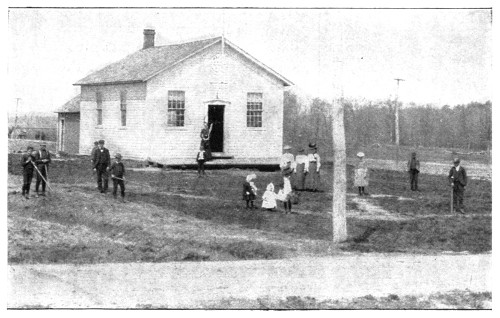
Fig. 1. Junior Gardeners beginning the work of cleaning
up a New York school ground.
Great numbers of our people are in industrial and agricultural
environments. By means of the industrial and agricultural trades
they must live. These trades must be made more efficient; and
the youth must be educated to see in them more than a mere
livelihood. These industrial and agricultural subjects must be put
more and more into schools. My own interest lies at present more
with the agricultural subjects, and these are the occasion for this
appeal. The so-called "industrial" and commercial subjects have
already been put into schools with good effect: the agricultural
subjects now must come within the school horizon.
Probably one million and more of the people of New York State
live on farms. This is approximately one in seven of our entire
population. Moreover, every person is interested in the out-of-doors
and in the things that grow therein. The future agricultural
efficiency of New York State will depend on the school
training more than on any other single factor; and on the agricultural
efficiency of the State will depend, to an important extent,
its economic supremacy. New York is the fourth State in total
agricultural wealth, being exceeded only by Illinois, Iowa and
[33]
Ohio. All the country children should be reached in terms of the
country. Most of our school books are made for the city and
town rather than for the country. The problem of the development
of the rural school is the most important single educational
problem now before us; and it is essentially an agricultural
problem.
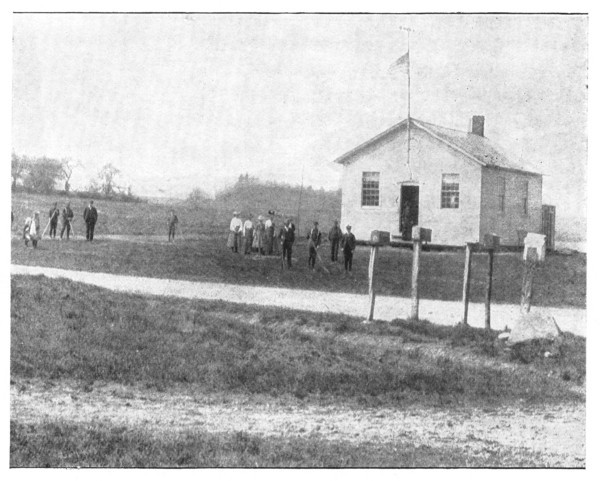
Fig. 2. Junior Gardeners at work in a New York school ground. The grounds
are now ready for planting. The mail carrier now calls and the pupils take the
mail home.
My appeal, therefore, is to every teacher in New York State,
whether in country or city—for the city teacher makes public
opinion, helps to set educational standards, and many of the
country children go to school in the cities. I do not wish to press
agriculture into the schools as a mere professional subject, but I
would teach—along with the customary school work—the objects
and phenomena and affairs of the country as well as of the city.
The schools lead away from the country rather than towards it.
All this I do not regard as a fault of the schools, but merely as a
limitation due to the fact that the schools are still in process of
[34]
evolution. It requires time to adapt a means to an end, and the
schools are not to be criticised. But we must do our best to
hasten the evolution. Schools, colleges and universities have
only begun to reach the people effectively: these institutions
must eventually touch every vital and homely problem, for they
are to be the controlling factors in our civilization. Any subject
that is worthy a person's attention out of school is also worthy
his attention in school.
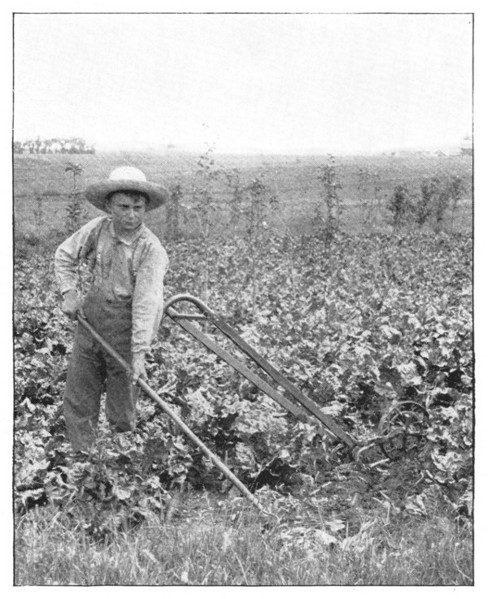
Fig. 3. Sugar beets and a fourteen-year-old experimenter.
(Supt. Kern, Illinois.)
I heard a good story the other day of an occurrence of many
years ago illustrating the fact that school training may be
wholly exotic to the pupil. The story was told in Ogdensburg,
and Heuvelton is near by. The class in geography was on
exhibition, for there were visitors. The questions were answered
quickly: "How far is it from Rome to Corinth?" "From Rome
[35]
to Constantinople?" "From Paris to Rome?" A visitor was
asked whether he had any questions to propound. He had one:
"How far is it from Heuvelton to Ogdensburg?" No one
answered; yet the visitor said that none of the pupils would be
likely to go from Rome to Constantinople, but that every one of
them would go from Heuvelton to Ogdensburg.
Not only must the school teach in terms of its own environment,
but more and more it must become the intellectual and
social center of the neighborhood or district. Every modern
rural school building should be attractive enough to induce clubs
of many kinds to hold meetings in it. In the old "lyceum" days
the school house was an important gathering place. These days
are mostly past, but better days should be coming: the school
should connect at every point with the life of the community.
Any event, however small, that centers the attention of the people
at the school house is a beginning and is worth while. A year
ago the children and teacher in one of our district schools began
the work of "cleaning up" the premises. The picture (Fig. 1)
shows them at work. Later, when the grounds were renovated
and ready for the planting, boxes were placed for the reception
of the mail for those who do not live on the carrier's route: this
is the beginning of a centering of attention at the school house.
I think that the boxes might have been more attractive and perhaps
better placed, but this will come in time: a beginning has
been made. When once the people of any community come to
think of the school house as a meeting-place for old folks as
well as for children, what may we not expect of the rural school?
We need adult education as well as juvenile education.
I have now no course of study to propose for agricultural or
country-life subjects in the schools, but I would like to know
how many teachers in the State desire to take up certain work of
this nature as an experiment. The College of Agriculture will be
glad to suggest the kind of work, if need be. The western states
are undertaking this work: we must not be behind. It is endorsed
by Superintendent Skinner, as will be seen from the letter published
at the close of this pamphlet.
To be effective and meaningful, this work should deal directly
with the things,—handling the things, studying the things, learning
from the things. This is nature-study. To commit to memory
something about things is of little consequence. We are too
closely committed to books. We are often slaves to books. Books
[36]
are only secondary or incidental means of educating, particularly
in nature-study subjects. We have known the book-way of educating
for so long a time that many of us have come to accept it
as a matter of course and as the only way. A New York school
man recently told me an incident that illustrates this fact singularly
well. In the Cattaraugus Indian Reservation he opened a
school in which at first he employed only manual-training and
nature-study work. Soon one of the children left school. The
teacher sought the mother and asked why. The mother replied
that there was no use in sending the child to school because the
teacher had given it no books to study. So slavishly have we followed
the book-route that even the Indian accepts it as the only
road to schooling!
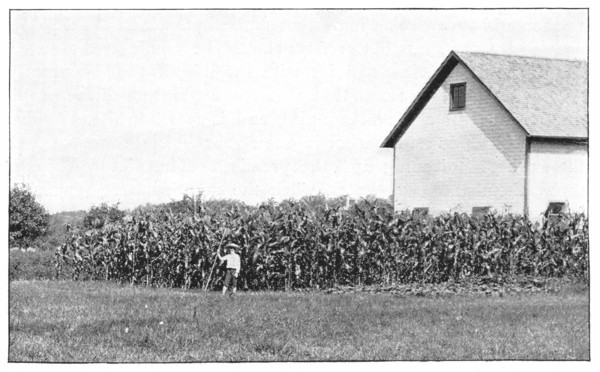
Fig. 4. Prize corn and a ten-year-old experimenter in one of Supt. Kern's
districts, Illinois.
School-Gardens.
Many lines of work might be suggested for an occasional period.
Perhaps the best one for spring is a school-garden. In time, every
good school will have its garden, as it now has charts and blackboards
and books. A school-garden is a laboratory-room added
to the school house. It may be five feet square or ten times that
much. The children prepare the land,—lessons in soils, soil
physics; sow the seed,—lessons in planting, germination, and the
[37]
like; care for the plants,—lessons in transplanting, struggle for
existence, natural enemies, conditions that make for the welfare
of the plants. The older pupils may be organized into experiment
clubs, as they are being organized in parts of Illinois (see article
on "Learning by Doing," by Supt. O. J. Kern, Review of Reviews,
Oct., 1903, p. 456). We can help you in this school-gardening
work.
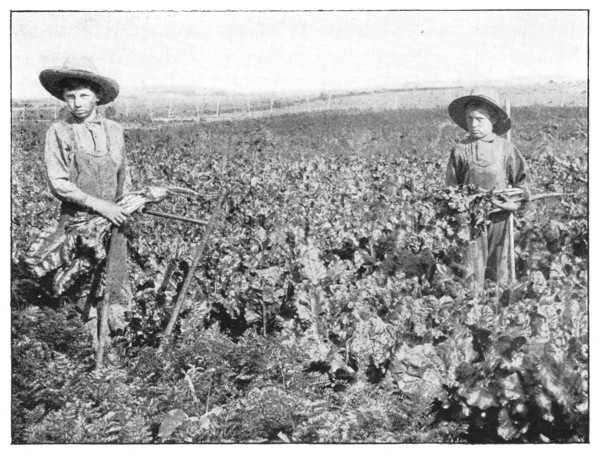
Fig. 5. "Learning by doing." A new kind of school work in Illinois, under the
direction of Supt. Kern.
Other Work.
If not school-gardens, take up other lines of work,—study the
school premises, the nearby brook or field, an apple tree, or any
other common object or phenomenon. If there is any special
agricultural industry in the neighborhood, discuss it and set the
pupils at work on it. Any of these common-day subjects will
interest the children and brighten up the school work; and the
pursuit of them will teach the children the all-important fact that
so few of us ever learn,—the fact that the commonest and homeliest
things are worthy the best attention of the best men and
women.
[38]
Improving the School Grounds.
Just now, the improving of school grounds is a pressing subject.
As a preliminary to the actual improving of the grounds, suppose
that the following problems were set before the pupils:
1. Exercises on the Grounds.
1. Area.—Measure the school grounds, to determine the lengths
and widths. Draw an outline map showing the shape. The older
pupils may compute the square surface area. The distances may
be compared, for practice, in feet, yards and rods. (Arithmetic.)
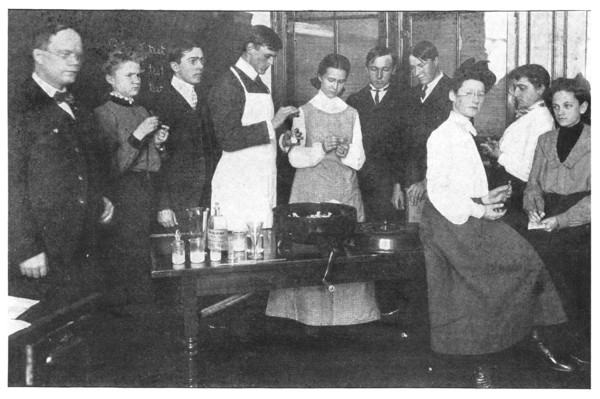
Fig. 6. Using the Babcock milk test at Professor Hollister's School, Corinth, N. Y.
2. Contour.—Is the area level, or rough, or sloping? Determine
how great the slope is by sighting across a carpenter's level. In
what direction does the ground slope? Is the slope natural, or
was it made by grading? The older pupils may draw a cross-section
line, to a scale, to show what the slope is. (Geography.)
3. Fences.—What parts of the area are fenced? What kind of
fence? Total length of fence? Give opinion whether this fence
is needed, with reasons. Is the fence in good repair? If not,
what should be done to remedy it? (Arithmetic, language.)
4. Soil.—What is the nature of the soil—clay, sand, gravel,
field loam? Was subsoil spread on the surface when the grounds
were graded? Is the soil poor or rich, and why do you think so?
[39]
Is it stony? What can be done to improve the soil? (Geography,
language.)
5. Ground cover.—What is on the ground—sod or weeds, or is
it bare? What do you think would be the best ground cover, and
why? (Geography, language.)
6. Trees and bushes.—How many trees and bushes are there on
the ground? Were they planted, or did they come up of themselves?
Make a map showing where the principal ones are.
Name all the kinds, putting the trees in one list and the bushes
in another. Do any of the trees need pruning, and why? State
whether any of them have been injured or are unhealthy. (Geography,
language.)
7. Tenants.—What animals live or have lived on the school
premises? What birds' nests do you find (these may be found in
winter)? Hornets' nests? Perhaps you can find cocoons or egg-masses
of insects in winter, and the active insects themselves in
spring and fall. What birds visit the place? Do rabbits or mice
or moles or frogs inhabit the premises? (Geography, language.)
8. Natural features.—Describe any strong natural features, as
rocks, ponds, streams, groves. What views do you get from the
school grounds? (Geography, language.)
2. Exercises on the School Structures.
9. Buildings.—How many buildings are on the grounds, including
sheds, etc.? Give the sizes in lengths and widths. Brick or
wood? Color? Make a map or chart showing the position of these
structures, being careful to have the buildings properly proportioned
with reference to the entire area. (Language, geography.)
10. Repairs needed.—Describe what condition the structures are
in. Tell whether repairs are needed on foundations, side walls,
roof, belfry, chimney, steps, doors, windows, paint. (Language.)
11. Flag pole.—Where is your flag pole? Could it be in a better
place? How tall is it above ground? How much in diameter at
the base? What kind of wood? Painted? How deep in the
ground? When was it put up? What repairs does it need?
(Language.)
3. General Exercises.
12. History.—When was the land set aside for a school? When
was the school house built? Who built it? (History, language.)
13. Cost.—Try to find out what the land cost. What the building
cost. Are they worth as much now? (History, language.)
[40]
14. Government.—Determine what officers have general control of
the school. How did they come to be officers? How long do they
hold office? What are the duties of each? Determine whether
your school receives any aid from the State. (Government.)
15. Improvement.—Tell what you think should be done to improve
the school grounds and the school structures. (Language.)
16. Photographs.—The teacher or some pupil should photograph
the school premises, and send the picture to us. We want at least
one picture of every rural school house and grounds in the State.
Even a very poor photograph is better than none.
Experiment Garden.—Every school ground should have at least
one small plat on which the children can grow some plant that is
useful in that community. Just now alfalfa is demanding much
attention from farmers, and it is certain soon to become a very
important farm crop in New York State. It is used for pasturage
and for hay. When once established, it lives for years. It is
allied to clover and is a handsome plant for any school grounds.
Will not the teacher suggest to the children that they make an
alfalfa bed along one side of the school grounds? It will be
attractive and will teach many lessons to pupils and parents even
if it is only a few square feet in size. We want to put an alfalfa
plat on every rural school ground in the State. We will supply the
seed free. Alfalfa is easy to grow if only a few essential principles
are kept in mind. We will send full directions to any one who
applies. From year to year we will give nature-study lessons on
these alfalfa plats.
We are anxious to start work of the above kind. It can be done
at any time of the year. We are already in touch with more than
400 school grounds, but we want to reach every rural school ground
in the State. Will not the teacher send to us the best piece of work done
by any pupil in any of the foregoing sixteen problems? These papers
we will file, as showing the conditions of the premises of the particular
school. They will enable us to see the progress that is
being made from year to year in the improvement of your school
premises. They will also enable us better to give advice, when
called upon to do so. Sometimes we can send to the particular
school a man to give advice on the spot. Sending the best
reports to the University will be a reward to the most diligent
pupils. Send all reports to John W. Spencer, Nature-Study
Bureau, Ithaca, N. Y.
We desire to put in the rural school houses of the State some
[41]
good pictures of country and farm scenes. These pictures will
be artistic reproductions of meritorious photographs, and large
enough to hang on the walls of the school room. With each picture
will be sent instructions for framing in order to make the
picture more attractive. We shall choose eight such pictures for
distribution the present school year. We will send one of these
pictures free to any rural school in the State that takes up two of the
problems given above; and all of them to schools that take up the sixteen
problems. We expect to publish lists of all schools, with
teachers' names, that take up this work in improving the premises
of rural schools.
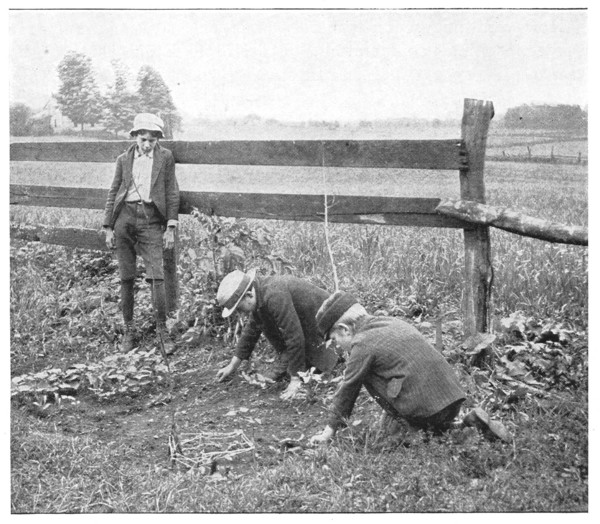
Fig. 7. Junior Naturalists making ready for planting. Tompkins Co., N. Y.
To one who is not teaching in the public schools, all this work
seems to be simple enough. Such persons are likely to be impatient
that more rapid progress is not made in introducing agricultural
and common-life subjects into the schools. But the teacher
knows that all this work requires patience and skill. It cannot
as yet be forced into the schools and still retain spontaneity and
[42]
vitality. It must come gradually, and prove itself as it goes.
Probably all public school teachers are now agreed that the schools
should be put closely in line with the life of their various communities.
The questions now to be solved are chiefly those of
means and methods, and of arousing the school constituencies to
the new points of view. A full and free discussion of the whole
subject is now needed. The time is hardly yet ripe for very definite
courses of study in these new fields. Many schools are already
teaching these new subjects with entire success: these schools
can serve the cause by making their experience public.
LETTERS ON THE SUBJECT.
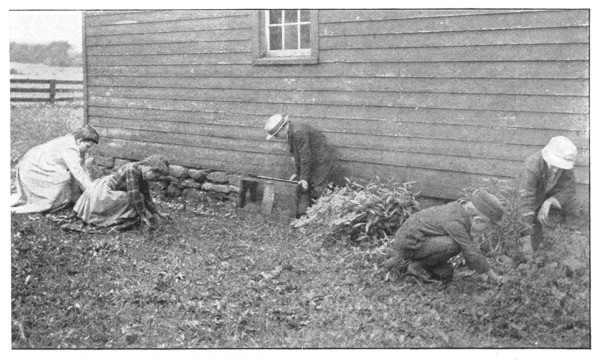
Fig. 8. Junior Gardeners at work in one of the New York Schools.
However, this circular is merely an appeal. It is an inquiry for
suggestions and co-operation. I desire to know what can be
accomplished in the schools of New York State in the direction
of inspiring and useful work for children that live in the country
or are interested in the country. I am sure that something needs
to be done: just what is most feasible and best the teachers must
largely determine. As further suggestions, I append two letters
from New York teachers:
From A. M. Hollister, Principal of the Corinth Public Schools, Saratoga Co., N. Y.
"I am sending you under separate cover a picture of my class at work
with the Babcock test machine (Fig. 6). We have used the machine both
[43]
as a means of instruction in physics and chemistry and as a general demonstration
before the different classes in the school. It beautifully illustrates
some very important principles of physics and chemistry. The most marvellous
effect, however, has been shown in the quality of the milk sold in
the village. Milk was sold showing a test as low as 2.9 per cent butter fat.
Almost as soon as the first testing was reported, the milk showed 3.8 per
cent butter fat. Milk has been sent to the school from a number of dairymen
with request for a test on particular cows that the parties might base
their purchases of cows on the results of the test.
"In regard to the gardening with some of our boys, I would say that
both boys and parents are much interested in the subject. We shall doubtless
start about forty gardens of one-tenth acre each. The boys are to keep
an exact account of all expenses to study methods, and to do all the work.
I am anticipating results in a number of directions. The boys will be given
something to do and to interest themselves in, which of itself is an important
thing for a village boy. It will also develop a power of observation and
ingenuity. We wish to get all the information we can on potato, tomato
and squash culture. Other things will be suggested during the winter."
Approval of the Superintendent of Public Instruction.
(Published by permission.)
"For many years I have been making earnest efforts to induce teachers,
pupils and patrons to improve and beautify the school buildings and school
surroundings of our State. Some progress has been made, but much
remains to be done.
"I heartily welcome the coöperation of every agency which can contribute
to this result. We must interest parents and teachers in this work, but
to obtain the best results I have always found that we must first interest
the children. Once a spirit of enthusiasm is awakened in the children, it
is easy to keep them interested and busy.
"I have long appreciated the earnest assistance of representatives of Cornell
University in arousing the interest of pupils, and I heartily commend
the plan outlined by the College of Agriculture to make a study of the
schoolhouse and school grounds a practical part of the daily education of
the child. A child's surroundings have much to do with his education.
The result of such systematic study as is suggested must surely be a steadily
increasing determination to remedy defects and correct any evil which may
exist. When the attention of children is directed to existing conditions
which bring discomfort, it will not be difficult to induce them to devise
ways and means to improve matters.
"I shall watch the result of your efforts with deep interest, and stand
ready to coöperate with you in every way.
"Very sincerely yours,
"CHARLES R. SKINNER,
"Albany, Dec. 17, 1903.
State Superintendent."
[44]
[45]
LEAFLET IV.
WHAT IS AGRICULTURAL EDUCATION?[5]
By L. H. BAILEY.
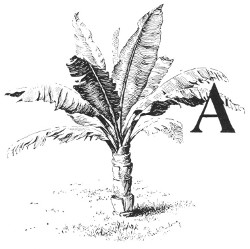
Agricultural education has made
great progress within the past few years.
Methods are crystallizing and at the same
time the field is enlarging. We once thought
of agricultural education as wholly special or
professional, but we now conceive of it as an
integral part of general and fundamental educational
policy. As a college or university
subject it is necessarily technical and semi-professional; but college
work must articulate with the common-school work, as
language and science now articulate with the schools. That
is, agricultural subjects are now to be considered as a part of
primary and secondary school work, leading naturally to special
work in the same subjects for those who desire technical training.
In the schools the subjects are to be treated non-professionally,
as primary means of educating the child. The reason
for using these subjects as means of educating lies in the principle
that the child should be educated in terms of its own life rather
than wholly in subjects that are foreign to its horizon and
experience. It is most surprising that, while the theory of education
is that the person shall be trained into efficiency, we nevertheless
have employed subjects that have little relation to the
individual child's effectiveness.
Not long since my father showed me a letter that he received
from a school girl in 1851. It read as follows: "I seat myself
expressly for the purpose to finish this letter which has been
long begun. I go to school room to Mr. Wells and study parsing
mental Philosophy grammar and penciling." This sounds as if it
came from "The Complete Letter-Writer." This person lived
on a farm. She lives on a farm to this day. Her parents and
grandparents lived on a farm. The family had no expectation
[46]
of living elsewhere than on a farm. Yet, in her entire school life,
I presume there was not a single hour devoted to any subject
directly connected with the farm or with the country. If her
studies touched life in any way that she could comprehend, it was
probably in habits of thought of the city and of the academician
rather than in anything that appealed to her as related to the life
she was to lead. It is small wonder that the farm has been devoid
of ideals, and that the attraction has been to leave it. The direction
of the stream determines the course of the river.
The future course of education will develop many means of
training the child mind. Heretofore these means have been few
and the result has been narrow. We shall see agricultural, commercial,
social subjects put into pedagogic form and be made the
agencies whereby minds are drawn out. These will be at least as
efficient as the customary methods that we happen thus far to
have employed. How much of one or how much of another is a
detail that must be left to the future. Nor does it follow that the
old-time subjects are to pass away. They will be an important
part of the system, but not the whole system. These new subjects
are now coming into the schools as rapidly, perhaps, as they
can be assimilated. It is a general feeling that our schools
already are overcrowded with subjects; and this may be true.
The trouble is that while we are introducing new ideas as to subjects,
we are still holding to old ideas as to curriculums and
courses of study. We will break up our schools into different
kinds; we will employ more teachers; we will not endeavor to
train all children alike; we will find that we may secure equal
results from many kinds of training; we will consider the effect
on the pupil to be of much greater importance than the developing
of the particular subject that he pursues; there are many men of
many minds; some system will be evolved whereby individual
capabilities will be developed to the full; the means will be
related to the pupil: one of the factors will be subjects making
up the environment of the pupil that lives in the country.
My plea, therefore, is that agricultural and country life subjects
become the means of educating some of the pupils of at least
some of the schools. To be sure, we have already introduced
"natural science" into many of the schools, but, for the most,
part, this has worked down from the college and, necessarily, it
usually stops at the high school. We need something much more
vital for the secondary schools than science as commonly taught.
[47]
The great nature-study movement is an expression, as yet imperfect,
of the feeling that there should be some living connection
between the school life and the real life.
A college of agriculture, therefore, is as much interested in the
common schools as a college of arts and sciences is. It should
be a part of a system, however informal that system may be, not
an establishment isolated from other educational agencies. But
even as a college it will reach more persons than it has ever
reached in the past. In any self-sustaining commonwealth it is
probable that one-third of the people must be intimately associated
with the soil. These people need to be as well-trained as
those who follow the mechanic trades or the professions. It is
immensely difficult to put these agricultural subjects into teachable
form and to reach the agricultural people in a way that will
mean much to them, because agriculture is a compound of many
wonderfully diverse trades in every conceivable kind of natural
conditions. Nor can one institution in each large state or province
hope eventually to reach all these people, any more than one
institution can reach all those who would best be taught in terms
of books. But there must be at least one institution that is well
equipped for the very highest kind of effort in these fields; Congress
long ago recognized this fact in the establishment of the
land-grant colleges, and all persons who are informed on agricultural
education also now recognize it. The agricultural colleges
have been handicapped from the first for lack of funds. It is now
coming to be recognized that the highest kind of effort in these
colleges cannot be sustained on a farm that pays for itself nor by
means that are copied from the customary college work in
"humanities" and "science." If it is to be efficient, agricultural
education of a university grade is probably more expensive to
equip and maintain than any other kind of education.
Once it was thought that the agricultural college should be
wholly separate from any "classical" institution. The oldest of
the existing American agricultural colleges, the Michigan institution,
is established on this principle. So are the Massachusetts,
Iowa and Pennsylvania colleges and a number of others. It is
natural that this should have been the feeling in the original
movement for the establishment of these colleges, for the movement
was itself a protest and revolt from the existing education.
Time, however, has put agricultural subjects on an equal pedagogical
plane with other subjects, and there is no more reason
[48]
why the agriculture should be segregated by itself than that the
architecture or law or fine arts should be. The agricultural colleges
connected with universities are now beginning to grow
rapidly. This is illustrated in the great development of the agricultural
colleges at the universities in Illinois, Wisconsin, Minnesota,
Nebraska, Missouri, Ohio, and elsewhere. It was once
thought that the agricultural student would be "looked down
upon" in a university or in a college with other departments.
This was once true. It was true once, also, of the student in
natural science and mechanic arts. Pioneers are always marked
men. The only way to place agricultural students on an equality
with other students is to place them on an equality.
These remarks are made in no disparagement of the separate agricultural
colleges, but only to illustrate the character of the growth
of agricultural education. No doubt the separate colleges blazed
the way. They stand for an idea that we would not like to dispense
with. Every state and territory has one college founded
on the land grant, and in the Southern states there are two, one
for the whites and one for the blacks; in nearly half of the states
these colleges are separate institutions. But the fact remains
that the college connected with the university is to have the
broader field in the future. Its very connection dignifies it and
gives it parity. It draws on many resources that the separate
college knows not of, unless, indeed, the separate college develops
these resources for itself. The tendency, therefore, is for every
ambitious separate college to develop the accessory resources, in
the way of equipment in general science, literature, the arts; for
agricultural education is constantly coming to be of a higher
grade. The separate agricultural and mechanical colleges are
rapidly becoming essentially industrial universities, giving general
training but with the emphasis on the technical subjects.
It is strange how far this principle of education by isolation
has been carried in the development of the agricultural colleges.
Not only have the colleges been separated from other educational
enterprises, but in many cases they have been planted far in the
open country, partly on the theory that the farm boy, of all others,
should be removed from temptation and from the allurements of
other occupations. It was the early theory, also, that the agricultural
student must be compelled to do manual labor in order
that he be put in sympathy with it and that his attention be isolated
from tendencies that might divert him from farming. These
[49]
methods seem to have rested on the general theory that if you
would make a man a farmer you must deprive him of everything
but farming. It would be interesting to try to estimate how much
this general attitude on the part of the agricultural colleges was
itself responsible for the very inferiority of position that the agricultural
student was supposed to occupy. This attitude tended
to maintain a traditional class distinction or even to create such a
distinction. Agricultural education must be adapted to its ends;
but it must also be able to stand alone in competition with all
other education without artificial props. It is no longer necessary
that the agricultural student wear blinders.
On the other hand, the farm point of view must be kept constantly
before the student, as the engineering point of view is
kept before the student in a college of civil engineering; but we
are coming to a new way of accomplishing this. Mere teaching
of the sciences that underlie agricultural practice will not accomplish
it; nor, on the other hand, will drill in mere farm practice
accomplish it. It is not the purpose of an agricultural college to
make men farmers, but to educate farmers. We are not to limit
the student's vision to any one occupation, but to make one occupation
more meaningful and attractive than it has ever been
before. From the farmer's point of view a leading difficulty with
the college course is that it sometimes tends to slacken a man's
business energy. One cannot at the same time pursue college
studies and commercial business; and yet farming is a business.
In a four years' course some students are likely to incur certain
habits of ease that are difficult to overcome upon their return to
the farm. How much this is a fault of the courses of instruction
and how much a personal equation of the student is always worth
considering. But if this is a fault of college work it is generic
and not peculiar to colleges of agriculture. Experience has now
shown that a compulsory labor system is no preventive of this
tendency, at least not with students of college and university age.
Student labor is now a laboratory effort, comparable with laboratory
work in medicine or mechanic arts. The mature student must
have some other reason for laboring than merely a rule that labor
is required. However, it is yet largely an unsolved problem with
the agricultural colleges as to just how the stirring business side
of farming can be sufficiently correlated with the courses of study
to keep the student in touch and sympathy with affairs. With
[50]
the passing of compulsory student labor there has no doubt been
a reaction in the direction of too little utilization of the college
farm in schemes of education; but we shall now get back to the
farm again, but this time on a true educational basis.
Nothing is more significant of the development of the agricultural
colleges than the recent splitting up of the professorships.
From agricultural chemistry as a beginning, in one form or
another, there have issued a dozen chairs, first one subject and
then another being separated as a teachable and administrative
entity. Even the word "agriculture" is now being dropped from
the professorships, for this is a term for a multitude of enterprises,
not for a concrete subject. Horticulture was one of the first protuberances
to be lopped off; and even this must very soon be
divided into its component parts, for there is little relationship
between the effort that grows apples and that grows orchids or
between the market garden and landscape gardening. Even the
chair of agronomy, the newest department of the colleges, must
soon be separated into its units. Forty years ago mechanic arts
was undivided. Who then would have prophesied such professorships
as experimental engineering, electrical engineering, marine
engineering, railroad engineering, naval architecture, machine
design? The progress of the dividing up of the mechanic arts
and civil engineering marks the rate of our progress, in the terms
of the Land Grant Act, "to promote the liberal and practical education
of the industrial classes in the several pursuits and professions
in life." All trades, classes and professions are to be reached
with a kind of education that is related to their work. One by
one we are reaching persons in all walks and all places. Socially,
there are centuries of prejudice against the farmer. When education
is finally allowed to reach him in such a way as to be
indispensable to him, it will at last have become truly democratic.
In this spirit agriculture is divided into its teachable units.
The lists of divisions of the teaching force or curriculum in the
larger agricultural colleges illustrate this admirably. In Illinois,
for example, the title of professors and instructors are associated
with such divisions as thremmatology, agronomy, pomology, olericulture,
floriculture, soil physics, dairy husbandry, dairy manufacture,
horses, beef cattle, swine husbandry, farm crops. At Cornell
the coördinate departments of instruction in the College of Agriculture
are classified as agricultural chemistry, economic entomology,
soils, agronomy, horticulture, animal husbandry with its
[51]
sub-department of poultry husbandry, dairy industry, agricultural
engineering and architecture, the farm home, rural economy
and sociology, out-door art (including landscape gardening),
nature-study for teachers, besides miscellaneous courses—making
altogether thirteen divisions. The courses now offered in the
Cornell College of Agriculture, not including the winter-courses,
are 76, of which 71 are to be given in the next academic year.
Nearly all these courses comprise a half-year's work.
While all this subdividing represents progress there are disadvantages
attending it, because it tends to give a partial view of
the subject. The larger number of farmers must engage in general
"mixed husbandry" rather than in specialties. Farming is a
philosophy, not a mere process. The tendency of the inevitable
subdividing of the subjects is to force the special view rather than
the general view, as if, in medicine, students were to become
specialists rather than general practitioners. The farm-philosophy
idea was represented by the older teachers of agriculture. Of
these men Professor Roberts is a typical example, and his work
in making students to be successful, all-around farmers is not yet
sufficiently appreciated. Much of this farm philosophy is now
coming into the courses of instruction under the titles of rural
economy, rural economics, rural sociology and the like. I have
sometimes thought that the time may come when we will again
have professors of "agriculture" who will coördinate and synthesize
the work of the agronomist, soil physicist, chemist, dairyman
and others. However, the dividing has not yet worked any
harm, and perhaps my fears are ungrounded; and it is certain
that with increasing knowledge and specialization the courses of
instruction must still further divide.
Another most significant development in agricultural education
is the change in attitude towards the college farm. Once it was
thought that the college estate should be run as a "model farm."
However, a farm that sets a pattern to the farmer must be conducted
on a commercial basis; yet it is manifest that it is the
province of a college to devote itself to education, not primarily
to business. A farm cannot be a "model" for all the kinds of
farming of the commonwealth; and if it does not represent fairly
completely the agriculture of the state, it misses its value as a
pattern. At all events the pattern-farm idea is practically given
up. It is then a question whether the farm shall be used merely
to "illustrate,"—to display kinds of tools, examples of fences and
[52]
fields, breeds of stock. This conception of the college farm is
comparable with the old idea of "experiments" in agricultural
chemistry: the teacher performed the experiments for the
students to see. The prevailing idea of the college farm is now
(or at least, I think, soon must be) that it shall be used as a true
laboratory, as the student in chemistry now works first-hand with
his materials instead alone of receiving lectures and committing
books. Is a student studying cattle? The herds are his for
measurements, testing as to efficiency, studying in respect to
heredity, their response to feeding, their adaptability to specific
purposes, and a hundred other problems. Cattle are as much
laboratory material for the agricultural student as rocks are for
the geological student or plants for the botanical student. Technical
books were once kept only in libraries; now they are kept
also in laboratories and are laboratory equipment. College
museums were once only for display; now they are also for
actual use by the student. Barns are laboratories, to be as much
a part of the equipment of a college of agriculture as shops are
of mechanic arts. They should be in close connection with the
main buildings, not removed to some remote part of the premises.
Modern ideas of cleanliness and sanitation are bound to revolutionize
the construction and care of barns. There is no reason
why these buildings should be offensive. It was once thought
that dissecting rooms and hospitals should be removed from
proximity to other buildings; but we have now worked these
laboratories integrally into the plans of colleges. Time has now
come for a closer assembling of the college barns with the college
classrooms. Likewise the entire farm is no doubt to be used in
the future as a laboratory, at least in the institutions of university
grade—except such part as is used for pure investigation and
research. Where, then, shall the student go to see his model
barn? To these farms themselves; here a stock farm; there a
fruit farm; elsewhere a dairy farm. The shops in the colleges of
mechanic arts have long since come to be true laboratories; they
do not engage in railroading or manufacturing. They do not try
to "pay their way;" if they do pay their way this fact is only an
incidental or secondary consideration. A college of agriculture
is a teaching institution: it must have equipment and laboratories.
It will be seen that the word "agriculture" has taken on a new
and enlarged meaning. The farmer is not only a producer of
commodities: he is a citizen, a member of the commonwealth,
[53]
and his efficiency to society and the state depends on his whole
outlook. Also his personal happiness depends on his outlook.
He must concern himself not alone with technical farming, but
also with all the affairs that make up an agricultural community:
good roads, organizations, schools, mail routes, labor movements,
rural architecture, sanitation, the æsthetic aspect of the country.
One will be struck with the new signification of "agriculture" if
he scan the titles of publications that issue from governmental
agricultural departments, agricultural experiment stations, agricultural
nature-study bureaus, agricultural colleges.
I cannot close this sketch without calling attention to the fact
that the college of agriculture has obligations to the farmers of
its commonwealth. The very fact that every college of agriculture
in North America is supported by public funds imposes this
obligation. Moreover, the colleges of agriculture and mechanic
arts stand for true democratic effort, for they have a definite constituency
that they are called upon to aid. It is desirable that as
many persons as possible shall assemble at the college itself, but
those who cannot go to college still have the right to ask for help.
This is particularly true in agriculture, in which the interests are
widely separated and incapable of being combined and syndicated.
Thereupon has arisen the great "extension" movement
that, in one way or another, is now a part of the work of every
agricultural college. Education was once exclusive; it is now in
spirit inclusive. The agencies that have brought about this
change of attitude are those associated with so-called industrial
education, growing chiefly out of the forces set in motion by the
Land Grant Act of 1862. This Land Grant is the Magna Charta
of education: from it in this country we shall date our liberties.
[54]
[55]
LEAFLET V.
SUGGESTIONS FOR NATURE-STUDY WORK.[6]
By ANNA BOTSFORD COMSTOCK.
Suggestions for nature-study must necessarily be more or less general.
Nature-study should be a matter of observation on the part of the
pupils. The teacher's part is to indicate points for observation and not
to tell what is to be seen.
After the child has observed all that it is possible for him to see, the
remainder of the story may be told him or may be read.
The objects of nature-study should be always in the teacher's mind.
These are, primarily, to cultivate the child's power of observation and
to put him in sympathy with out-of-door life.
Having these objects clearly in mind, the teacher will see that the
spending of a certain amount of time each day giving lessons is not the
most important part of the work. A great amount of nature-study may be
done without spending a moment in a regular lesson. In the case of all
the things kept in the schoolroom—i. e., growing plants, insects in
cages and aquaria, tame birds and domestic animals—the children will
study the problems for themselves. The privilege of watching these
things should be made a reward of merit.
The use of nature-study readers should be restricted. The stories in
these should not be read until after the pupils have completed their own
observations on the subjects of the stories.
Stories about adventures of animals and adventures with animals
may always be read with safety, as these do not, strictly
speaking, belong to nature-study. They belong rather to literature
[56]
and may be used most successfully to interest the child in
nature.
Blackboard drawings and charts should be used only to illustrate objects
too small for the pupil to see with the naked eye. The pupil must also
be made to understand that the object drawn on the board is a real
enlargement of the object he has studied with his unaided eye.
The use of a simple lens often contributes much interest to the work of
observation. The compound microscope may be used to show some
exceptionally interesting point, as the compound eyes of insects, the
scales on the butterfly's wing, or the viscid thread of the spider. But
this is by no means necessary. Nature-study work does not actually
require the use of either microscope or lens, although the latter is a
desirable adjunct.
The great danger that besets the teacher just beginning nature-study
is too much teaching, and too many subjects. In my own
work I would rather a child spent one term finding out how one
spider builds its orb web than that he should study a dozen different
species of spiders.
If the teacher at the end of the year has opened the child's
mind and heart in two or three directions nature-ward, she has
done enough.
In teaching about animals, teach no more of the anatomy than
is obviously connected with the distinctive habits of each one;
i. e., the hind legs of a grasshopper are long so that it can jump,
and the ears of a rabbit are long so that it can hear the approach
of its foes.
While it is desirable for the teacher to know more than she
teaches, in nature-study she may well be a learner with her pupils
since they are likely any day to read some page of nature's book
never before read by human eyes. This attitude of companionship
in studying with her pupils will have a great value in enabling
her to maintain happy and pleasant relations with them. It
has also great disciplinary value.
Reasons for and against graded courses in nature-study.
The question whether there should be a graded course in
nature-study is decidedly a query with two answers.
The reasons why there should not be a graded course, are:
1st. The work should be spontaneous and should be suggested
each day by the material at hand. Mother Nature follows no
[57]
schedule. She refuses to produce a violet one day, an oriole the
next, and a blue butterfly on the third.
2d. A graded course means a hard and fast course which each
teacher must follow whether or not her tastes and training
coincide with it.
3d. There is no natural grading of nature-study work. A subject
suited for nature-study may be given just as successfully in
the first as in the fifth grade.
There is only one reason why a nature-study course should be
graded, and that is so cogent that it outweighs all the reasons on
the other side: the training of the grade teacher in nature-study
is at present so limited in subject-matter that if the course were
ungraded the same work would be given over and over in the successive
grades until the pupils became utterly weary of it. To
many a pupil in the lower grades to-day, nature-study means the
sprouting of beans and peas and nothing more. As a matter of
experience, we believe that after a nature-study subject is once
studied it should be dropped entirely, the pupil should not again
meet it in the schoolroom until he finds it in its respective science
in the high school or college. On this account, we have been
persuaded that a graded course, or at least a consecutive course,
is necessary.
The following suggestions about grading the course are given
with a hope of being helpful, and not because we believe that the
courses indicated are necessarily the best courses possible. We
have graded each subject so that a teacher may follow her own
tastes and inclinations, and may not be forced to teach zoology
when her interests are entirely with botany, or vice versa.
We have tried to give a distinctive trend to the observations for
each year, and have suggested a line along which the work may
be done.
As a matter of fact, however, the time to study any living thing
is when you chance to find it. If you find an interesting caterpillar
or cricket or bird, study it, whatever your grade of work.
The probabilities are that it may be long before you chance upon
these same species again.
It has been the experience of most teachers that the lower
grades are much more interested in nature-study than are the
higher. Especially are the seventh and eighth grades difficult to
interest. Therefore, we have made this part of the course
economic in its bearing, hoping that this may appeal to the
grown-up feeling of pupils of these grades.
[58]
INSECTS.
First Grade.
The first year of work with insects may well be restricted to
familiarizing the pupils with the three most striking phases in the
life of insects with complete metamorphosis, i. e., the larvæ, the
pupæ, and the winged insects. Moths and butterflies are especially
adapted for this work with the small children.
Fall work.—In September there are still many caterpillars feeding.
Bring them in the schoolroom and feed them in breeding
cages. For different forms of cheap breeding cages, see Insect
Life, pp. 326-330; Cornell Teachers' Leaflet, No. 5 (No. XIX, this
volume); Lessons in Nature-Study, p. 45.
During October many of the hairy caterpillars will be found
hurrying along in quest of suitable winter quarters. These should
be brought in and put in box cages having sand or dirt in the bottom.
They are seeking secluded corners in which to curl up and
hide during the cold weather. Some of them pass the winter in
their cocoons, and some do not. Insect Life, pp. 239-241; Manual
for Study of Insects, pp. 317-324; Moths and Butterflies, (b),
pp. 191-198.
Bring in as many cocoons as possible. November or December,
after the leaves have fallen from the trees, is the best time in
which to hunt for the cocoons of Cecropia, Promethea, and Cynthia.
Insect Life, pp. 194-196; Moths and Butterflies, (b), pp. 119-180.
Teach the pupils the difference between the cocoon and the
pupa. The pupa is the quiescent form of the insect. The cocoon
is the silken bag covering it, and is always made by the caterpillar
before it changes to a pupa.
If possible bring in some butterfly larvæ. In September many
may be found. The cabbage butterfly especially is always with
us. Insect Life, p. 245. Also the larvæ of the black swallow-tail
may be easily found. Insect Life, p. 243; Everyday Butterflies,
p. 130; Moths and Butterflies, (b), p. 39.
Show the children (do not tell them) that the butterfly caterpillars
do not make cocoons, but that the naked pupa is suspended
by a silk button, and in some cases also by a silk thread.
Many teachers complain that but few of the moths are able to
get out of the cocoons. The usual reason for this is that in the
heated atmosphere of the schoolroom the cocoons become too dry.
[59]
To obviate this, the cocoons should be dipped in water every
week or two.
Spring work.—During the spring term use the apple-tree tent-caterpillars.
Cornell Teachers' Leaflet, No. 5 (No. XIX, this
volume); Moths and Butterflies, (b) p. 201. Show the four stages
of the insect: egg, caterpillar, pupa, and moth. Pay especial
attention to the way in which the caterpillars grow.
Summary of methods.—This whole year's work may be done
with no regular "lessons," and all the time required will be the
care of the breeding cages and the time given to hunting for the
caterpillars and cocoons. The child's reading may be selected
from the many stories of the caterpillars, moths and butterflies.
Yet be very careful to make each child understand that he himself
is studying out the especial story of each caterpillar and
cocoon in the schoolroom.
Second Grade.
The plan for the second year is to continue the study of the
life-histories of insects. The pupil, having learned the different
stages of the moths and butterflies, should learn that all insects
do not experience such marvelous changes of form.
Fall work.—Arrange a breeding cage like figs. 288, 289, Insect
Life, p. 329, placing fresh sod in the flower pot and covering the
lamp chimney with a square of wire netting. Push the glass
chimney down into the earth so as to allow no crevices through
which the insects may escape. In such a cage, place grasshoppers
and crickets of all sizes, and study their growth. Insect Life,
pp. 33-37.
Show the pupils that the young grasshopper looks like the old
one except that the wings are shorter; the same is true of crickets.
Keep the sod damp so the grass will not become dry; and when
it gets too old replace it with other sod. A good way to keep
these insects alive and to keep the children interested in them is
to plant wheat and grass seed in several flower pots, and then to
move the glass chimney from pot to pot, giving the insects fresh
pasturage when needed.
As early as possible start some aquaria. Cornell Teachers'
Leaflet, No. 11 (No. XII, this volume); Insect Life, pp. 330-332.
The mosquito is one of the most available insects for study
in the aquarium. Insect Life, pp. 131-136; Lessons in Nature-Study,
p. 12.
[60]
The nymphs of dragon flies and damsel flies and many others
may be studied during the entire winter. Insect Life, pp. 140-142;
Cornell Teachers' Leaflet, No. 11 (No. XII, this volume); Outdoor
Studies, p. 54. Those that have cannibalistic habits should be
kept apart, each one in a separate jar. They may be fed by dropping
into the jar a bit of raw beefsteak tied to the end of a string.
The purpose of the string is that the uneaten meat may be withdrawn
before it decays. It should not be left in the water more
than twenty-four hours. The insects do not need feeding more
than twice a week.
Spring work.—In the spring get new material for the aquaria.
In pools where there are many dead leaves look for the caddice
worms that build the log cabin cases, for these may be kept in
aquaria that have no running water. Insect Life, p. 149.
While we advise the introduction of the aquaria during the
second year, their use should be continued during the following
four grades; there are always new things to study in ponds and
streams, and nothing so fascinates a child as watching the movements
of these little denizens of the water.
Summary of methods.—There need be no set lessons in the work
of the second year, unless the teacher in a few words, now and
then, chooses to call attention to certain things as the occasion
seems to demand. The object of the year's work is to teach the
pupil the life histories of insects which have no quiescent or pupa
stage, and this should be accomplished by simple observation of
specimens bred in the schoolroom.
Third Grade.
The general subject of this year's work may well be the Homes
of Insects. This is a most interesting topic, and if well taught will
inspire the pupils to much individual observation and collecting.
The questions to be asked concerning insect homes are:
Of what material are they made? How are they made? What
is the purpose of the home? Is it made by the insect for itself to
live in, or is it made by the mother for the protection of her
young? Is it made as a protection for the insects while they are
eating, or do they go out to feed and come back only to rest and
spend the night or day?
Fall work.—Leaf rollers: Insect Life, p. 206; Ways of the Six-Footed,
p. 119.
Leaf miners: Insect Life, p. 208; Ways of the Six-Footed, p. 29.
[61]
Galls: Insect Life, p. 210; Outdoor Studies, pp. 18, 38-39.
Fall web worm: Insect Life, p. 200.
Scallop shell moth: Insect Life, p. 201.
Nests of silver spotted skipper: Insect Life, p. 203; Everyday
Butterflies, p. 190.
Bag worms: Insect Life, p. 204. Ant lions: Outdoor Studies, p. 81.
Carpenter bees: Ways of the Six-Footed, p. 108.
Tiger beetle larvæ: Insect Life, pp. 270-272.
All kinds of cocoons are found by the children. Ask concerning the
cocoons: Where did you find them? Were they in protected places? Why?
Of these nests there are many more than those mentioned above.
In fact, to one who sees what he looks at, every plant, every tree,
every fence corner and every foot along the country path contains
many most interesting homes. The leaf rollers and leaf miners
are the most common and most easily found of all.
Spring work.—The spring work in this subject may be to study
the way in which caddice worms make their houses; take a caddice
worm out of its house and watch it build another. This is a
new phase of the study of caddice worms. Ways of the Six-Footed,
p. 133.
Study the homes of beetles under sticks and stones, and find
the homes of the engraver beetles under bark. Insect Life,
p. 216. This work must necessarily be done by the pupils out of
school hours, and their discoveries and specimens of homes
should be made topics for lessons for the whole school.
During this term begin a butterfly calendar, made on the same
plan as the bird calendar. A collection of butterflies might be
started for the schoolroom in connection with the calendar. Study
the specimens caught and determine whether they hibernated as
adults or chrysalids. If their wings are battered and torn, they
spent the winter as adults. If they are bright in colors and their
wings perfect, they spent the winter in the chrysalis state.
Hints for collecting insects: Cornell Teachers' Leaflet, No. 7
(No. XVIII, this volume); Insect Life, pp. 283-314 and pp. 48-49.
How to Know the Butterflies.
Summary of methods.—The work in the third grade, as outlined,
requires a lesson period now and then when single specimens are
brought in by individual pupils. Each pupil should examine the
specimen, and after that the lesson may be given.
[62]
Fourth Grade.
After having studied Insect Homes, the pupils will be ready to
take up the broader subject, How Insects Live. The work of this
year may be given on this subject.
In order to study the life-histories of insects, the pupils should
know some things about insect anatomy. If the work as indicated
in the previous grades has been followed, the pupils know
the number of legs, wings, and compound eyes most insects have,
without ever having killed a specimen or having received a special
lesson in insect anatomy. Now teach the children how insects
breathe and how they eat. Show the spiracles on the body of
any caterpillar which is not hairy; they may be seen on the abdomen
of a grasshopper or of a butterfly that has not too many large
scales to cover them.
After they have seen these spiracles or breathing pores, give a
lesson, illustrated by chart or blackboard, showing that these holes
lead to the breathing tubes of the body. Manual for the Study
of Insects, pp. 73-75.
To show how insects eat, allow the pupils to watch the following
insects in the breeding cages while feeding: a grasshopper; a
leaf beetle (potato beetle is a good example); any caterpillar; an
ant; and a wasp. Show that all these have mouth parts made for
biting. Let the pupils see an aphid sucking the juice of a plant;
this may be done by bringing in a twig infested by aphids. Let
the pupils see the water bugs in the aquarium eat. Insect Life,
pp. 123-131, and pp. 137-140. Let them watch a fly, a honey
bee, and, if possible, a butterfly or moth, eat. All these have
mouth parts made for sucking. All this work should be original
investigation on the part of the pupils.
After the pupils find out how insects breathe and eat, let them
see how each insect lives a life adapted to its own peculiar needs.
Try to feed some cabbage worms on clover or grass. Then try
turnip or mustard leaves, and watch the result. Change the
potato beetle larvæ to some other plant, and watch the result.
Let the pupils first find out how the insects breathe in the water.
Each insect in the aquarium tells a different story as to its way of
getting air. The teacher will find all these stories indicated in
the chapters in Insect Life devoted to pond and brook insects.
Call especial attention to protective coloring of insects. Show
that when an insect resembles its surroundings in color it is
[63]
thereby enabled to escape its enemies; or, if need be, is enabled
to creep upon its prey unobserved.
Note the color of the grasshopper in the road; color of meadow
grasshopper; color of the caterpillars of the cabbage butterfly
(green and hard to find). Notice the shape and color of walking
sticks; color of the katydids. Note the bright color of the larvæ
of potato beetle. Why? (They are distasteful to birds, and their
colors advertise the fact.) Study the Monarch butterfly and the
Viceroy. Everyday Butterflies, p. 95 and p. 297; Ways of the Six-Footed,
p. 39. Bring out strongly in all this work that the insect
in order to live must have its special food plant and must escape
notice of its enemies. This is the proper place to begin the study
of the valuable work done by birds in destroying insects.
In addition to this general work, study especially the wasps.
Solitary Wasps: Mud daubers. Bring in their nests and
examine them. Ways of the Six-Footed, p. 96. How are the nests
provisioned, and for what purpose were they made? Find, if
possible, nests of other solitary wasps. Insect Life, p. 218, p. 262,
p. 264.
Social Wasps: Bring in a deserted nest of yellow-jackets. Of
what is it made? How? What for? Do the wasps store honey?
Do they live as a colony during the winter? All these questions
may be answered by a pupil who knows of a yellow-jackets' nest
in the fall and watches it during the winter. For the teacher
there are discussions of these insects in Manual for Study of
Insects, pp. 660-664. Wasps and their Ways.
Continue the butterfly collection and the butterfly calendar.
Spring work.—In the spring, begin a collection of moths for
the schoolroom. Insect Life, p. 50. Caterpillars and Moths.
In the spring, notice when the first house-flies appear. What
happens to the house-fly in winter? (Send for Circular No. 35,
second series, Div. of Entomology of Department of Agriculture,
Washington, D. C., for the life-history of the house-fly.)
Explain that one female destroyed early in the season means thousands
fewer late in the season.
Encourage the children to bring to the schoolroom all sorts of
flies and compare them with the house-fly. The object of this is
to teach something of the wonderful variety of forms among
small and inconspicuous insects. Make a collection of flies for
the schoolroom. For description of flies, see Insect Life, pp. 83-84.
A good plan for the spring work is to keep the pupils interested
[64]
in the first appearance, after the vicissitudes of winter, of each
insect which it is possible for them to find. Note that insects do
not appear before their food plants appear.
Summary of objects and methods.—The questions to be answered
during the whole year's work are: How do the Insects live,—on
what do they feed? How do they escape their enemies? What
happens to them in winter? How are the new broods started in
the spring? The work is chiefly observation, but occasional lessons
may be given and stories may be told to keep the interest in
the work from flagging.
Fifth Grade.
Fall work.—Study the Bees and Ants.
Fit up ants' nests. Insect Life, p. 278.
Teach the whole life-history by allowing the pupils to colonize
the nests. Manual for Study of Insects, pp. 633-639; Insect Life,
p. 271. Make observations upon the eggs, pupæ, workers, males,
females. What are the winged forms that appear in swarms in
June and July.
Let the pupils observe the relation of ants to aphids. This may
be done on almost any shrub or roadside plant. Home Nature-Study
Lesson 1904, No. 8.
The teacher should read Sir John Lubbock's "Ants, Bees and
Wasps."
Many stories on these subjects may be told and read, especially
those concerning the habits of exotic ants and ant wars which the
children are not likely to see; also of the slave-making ants.
These slave-making ants are quite common in New York State;
their nests may be found under stones. They resemble the brown
mound-builder ant; the slaves are black.
Spring work.—In the spring work in this grade, study the habits
of the honey bee. An observation hive is desirable but not
necessary. Bring in the honeycomb filled with honey. If there
are apiarists in your neighborhood, they will gladly give you specimens
of brood in the comb. Read The Bee People and the
Manual for Study of Insects, p. 673.
Develop all the facts of the wonderful life in the hive by letting
the pupils observe them as far as possible. Then give them the
many interesting stories:
Story of the Workers.
Story of the Queen.
[65]
Story of the Drone.
Story of the Bee Larva.
Story of Honey Making.
Story of Wax and Comb Making.
Story of the Swarm.
In connection with the study of the honey bee, study the bumble
bee. Manual for Study of Insects, pp. 672-673; Insect Life,
p. 256. Begin with the study of the big queen that appears in
May or June. Show that she is of great benefit to us and must
not be harmed or frightened. Let the bumble bee's nest be a
problem for summer observation, and finish the study in the next
grade in the fall.
Summary of objects and methods.—The work of this year should
have for its objects the harmonious life of social insects; their
unselfish work for each other; their devotion to their respective
colonies; their ways of building and of defending their habitations.
The work should be based upon observations made by the
pupils in and out of the schoolroom. Many lessons should be
given, mostly in the form of stories. Ways of the Six-Footed,
pp. 55-94.
Sixth Grade.
Fall work.—Study the spiders. Lessons in Nature-Study, p.
103; Insect Life, pp. 223-232. Cornell Teachers' Quarterly,
final number (No. XV, this volume).
In order to study spiders, they need not be handled with bare
hands. While all spiders are venomous to the same extent, perhaps,
that a mosquito or a bee is venomous, there is only one
species in the eastern United States (and that is very rare) the
bite of which need be feared by human beings.
The use of spiders in nature-study does not have to do with
handling living specimens, but rather with the habits of the different
species and the building of the webs. In catching spiders
to bring into the schoolroom, use the method indicated by Professor
Kellogg in Nature-Study Lessons. Capture the specimen
by the use of a pill box: take the box in one hand and the cover
in the other, and catch the spider by suddenly closing the box
over it.
The pupils should be made to observe the chief differences
between spiders and insects; i. e., spiders have two regions of the
body instead of three as in insects; eight legs instead of six,
[66]
simple eyes instead of compound. Compare spiders with daddy-long-legs.
If the teacher chooses to kill a specimen and show the arrangement
of the eyes and the spinnerets under the microscope, she
may do so. This is not necessary, although I have seen it done
successfully in the sixth grade. Diagrams and blackboard drawings
may be used instead of the microscope.
Let the pupils observe the uses of silk by the spider:
1. Snare for prey. 2. To enwrap prey when first entangled.
3. Nests for eggs. 4. Lining for habitations. 5. Means of
locomotion.
Introduce the grass spider into the schoolroom in glass jars containing
grass sod, and let the pupils observe it at work.
Encourage a study of cobwebs. Capture the owner of an orb
web, and bring it in a glass jar to the schoolroom. Try to give it
its natural environment; i. e., some sort of frame or branch of
tree on which it may fasten its web.
The orb web: 1. How is it made? 2. Of how many kinds of
silk? 3. The way the spiral thread is arranged as shown by drawings.
4. The position of the spider on the web. 5. The way the
spider passes from one side of the web to the other. 6. The way
it treats its prey when the victim is once entangled.
The engineering ability shown in making this web is one of the
most marvelous things in all the realm of animal life. These
observations may well cover two months of this term.
Study the ballooning spiders, the jumping spiders, the running
spiders, and the crab spiders. Study as many egg-sacs of spiders
as possible.
Another topic for study during the fall term is the Songs of
Insects. Insect Life, p. 235. Bring in the katydids, crickets, and
meadow grasshoppers, place them in cages containing green sod,
and observe them while they are singing. Note that only the males
sing. Show the ears of the crickets, katydids, and meadow grasshoppers
in the elbows of their front legs. The ear of the grasshopper
is on the side of the segment of the abdomen next to the
thorax. Ways of the Six-Footed, pp. 3-27.
Study snowy tree cricket. Manual for Study of Insects, p. 118.
If possible, get a cicada as these insects continue to sing through
the warm days of September. Show the cover to the drums on the
lower side of the common cicada. Cornell Nature-Study Bulletin,
No. 1, p. 24 (No. VI, this volume). This can be made a most
[67]
interesting subject, and pupils should be encouraged to do observation
work outside of school.
Begin a general collection for schoolroom.
Spring work.—Continue making a general collection for the
schoolroom, and specialize in this direction. When an insect is
brought in and added to the collection, if the teacher knows the
insect, a lesson should be given on its life and habits. This connecting
of the life and habits of the insects with the collection of
dead specimens is of greater value from a nature-study point of
view than the collection itself.
Summary of methods.—While this year's work must be based
on the observations of the pupils in the schoolroom and out-of-doors,
yet many interesting lessons may be given by the teacher.
Seventh Grade.
The study of this entire year may be the relation of insects to
flowers. Most of the references are given in the Plant-life work
for this grade.
The insect work may be limited to: What insects visit flowers?
How do they carry pollen? How does each kind of insect reach
the nectar? Which insects are robbers, and which are true
pollen carriers? The use of pollen by insects. Outdoor Studies,
pp. 7-12.
Take up the study of golden rod and its insect visitors, i. e., let
the pupils watch a bunch of golden rod and note all the insect
visitors. For directions concerning this work see Outdoor Studies,
pp. 29-46.
In the same way take up the study of asters and the late flowers,
and their insect visitors. Describe the visitor; what it does;
what part of the plant it visits.
Summary of objects and methods.—The object of this whole year's
work is to show the beautiful inter-relation between insects and
flowers. The studies must necessarily be made in the field. But
many delightful lessons may be given on the structure of flowers,
that make of greatest use to the flowers the work of insect visitors.
Eighth Grade.
The object of this year's work is the economic side of insect-study.
Many pupils do not continue these studies to high school
or college. Yet if they have homes with gardens or trees in city
or country, they must learn to cope with the many insect enemies
[68]
that feed upon cultivated plants. They should also learn to discriminate
between insect friends and foes. They should learn the
best methods of combating the foes and preserving the friends.
Explain first that in fighting an insect enemy we must know how
it eats. If it inserts its beak in the stem of the plant there is no
use trying to kill it by putting poison on the leaves.
Common Insect Foes.
To be studied in the schoolroom:
Fall work.—Codlin-moth. Insect Life, p. 180. Show work on
an apple, and give methods of destroying it.
Plum curculio. Insect Life, p. 182.
The pomace flies. Insect Life, p. 184.
Scale insects. Manual for Study of Insects, pp. 165-174.
Potato beetle. Manual for Study of Insects, p. 176.
Spring work.—Tussock moths and canker worms. Circular No.
9, 2d Series, Dept. Agr., Div. of Ent., Washington, D. C.; Cornell
Teachers' Circular, No. 1.
Cabbage worms. How to Know the Butterflies.
Currant worms. Manual for Study of Insects, pp. 613-614.
Plant lice or aphids. Insect Life, pp. 177-178.
Carpet beetle. Circular No. 5, 2d Series, Dept. Agr., Washington,
D. C.; Manual for Study of Insects, p. 539.
Clothes moth. Manual for Study of Insects, pp. 257-258; Circular
No. 36, 2d Series, Dept. Agr., Washington, D. C.
Tent caterpillar. Cornell Teachers' Leaflet, No. 5 (No. XIX,
this volume).
A study of spraying should be made. Insects and Insecticides,
pp. 39-56. Spray Calendar, distributed free by the Cornell Agricultural
Experiment Station.
Important Insecticides. Farmers' Bulletin No. 127, Dept. Agr.,
Washington, D. C.
Insect Friends.
Fall work.—Lady bugs. Insect Life, p. 179.
Aphis lions. Insect Life, p. 178; Ways of the Six-Footed,
p. 125.
Red clover and the bumble bee.
Parasitic insects. Manual for Study of Insects, pp. 621-630.
Spring work.—Bees and orchard in blossom.
Summary of methods.—The observations may be made in the
schoolroom or out-of-doors. There should be observations of
[69]
experiments in spraying. This may be accomplished in most
localities by encouraging the pupils to visit orchards undergoing
the operation of spraying. However, by means of syringe or
watering pot, the infested plants brought into the schoolroom may
be sprayed and the results noted. Lessons should be given on the
importance of preserving insect friends while we are destroying
insect enemies.
OTHER ANIMALS ADAPTED FOR NATURE-STUDY.
The Toad and Frog. The study of either of these two species
is delightful spring work for any grade. Cornell Teachers' Leaflet,
No. 9 (No. XVI, this volume); Wilderness Ways, p. 25.
Salamanders or Efts. Familiar Life of the Roadside.
Fishes. Observations upon goldfish or minnows kept in an
aquarium should be made the basis of lessons upon the life of
fishes. Study: (1) The shape of the body; see how it is especially
adapted to rapid movement through the water. (2) The shape
and arrangement of the fins, and their uses. (3) How the fish
propels itself through the water. (4) How the fish breathes.
(5) The shape of the fish's mouth, and how and what it eats.
(6) Experiment to ascertain the ability of the fish to see and
hear. Cornell Teachers' Leaflet, No. 21 (Nos. XIII and XXXVI,
this volume).
Encourage observations of habits of different species of fish
common in our ponds and streams. Study their eggs and the
places where they are found. Teach the children the reason for
the game laws, and impress upon them a true respect for those
laws. Food and Game Fishes.
Mice. Some house mice in an improvised cage may be placed
in the schoolroom, and the habits of the little creatures observed.
Give them paper to see how they make their nests. Note how
and what they eat, and how they clean themselves. Note shape
of teeth and their use. If possible, study the wild mice. Squirrels
and Other Fur Bearers, p. 111; Wild Life, p. 171.
Squirrels and Chipmunks. The work on these animals must be
based on out-of-door observations. Try to get the pupils to discover
for themselves answers to the following questions: How
and where do they travel? What do they eat? Where and how
do they carry their food? Do they store it for winter? If so,
where? What do they do in winter? Squirrels and Other Fur
Bearers, p. 15, p. 134; Wild Neighbors, p. 1.
[70]
Rabbits.—A domesticated rabbit should, if possible, be kept in
the schoolyard so that the pupils may make their own observations
upon its habits. Let them study: How and what it eats.
The shape of its teeth. The form and use of the ears. How
does it travel? What sort of tracks does it make, and why?
From these observations lead the pupils to think of the life of the
wild rabbit, how it is adapted to escape from its enemies and to
get its food. Ways of Wood Folk, p. 41; Story of Raggylug.
Guinea pigs.—These little animals are easily kept in the schoolroom,
and, though not particularly interesting in their habits, they
prove attractive to the smaller children and may be studied in the
same way as the other animals.
Domestic animals.—These need not be studied in the schoolroom,
as the pupils, if they have opportunity, can make the observations
at home. Studies of the horse, cow, pig, sheep, and goat, and
also the cat and dog may be made most interesting. Such questions
as these may be asked concerning each: What is the characteristic
form of the animal? What is its clothing? What does
it eat? How are its teeth adapted to its food? What is its chief
use to man? How does it travel, slow or fast? How are its feet
adapted to its way of running or walking? Has it a language?
How many emotions can it express by sound? How many can it
express by action? How does it fight, and what are its weapons?
What sort of life did its wild ancestors live? How did they get
their food, and how did they escape from their enemies?
Summary of methods of nature-study of animals.—Study only
so much anatomy as is clearly adapted to the animal's ways of
living. Observations made by the pupils should be arranged into
lessons by either pupil or teacher. Such lessons make excellent
English themes, and they may be adapted to any grade.
BIRDS.
Begin the study of birds by the careful study of some domesticated
species that may be observed closely and for a long
period. The hen is perhaps the best for this purpose. Study
carefully all of the adaptations of her anatomy to her life necessities.
Study shape of her body; the feathers; the bill; her food;
how she eats; drinks; the shape of her feet; their covering; how
she sees; hears; smells; sleeps; study the life of a chick; study
the language of chick, hen and cock; embryology of a chick.
Study a robin or some bird that builds near houses. Note all its
habits from the time it appears in spring until autumn.
[71]
Bird houses and bird protection. Usefulness of birds. Our
Native Birds, Lange. Publications of U. S. Dept. Agr.
Summary of methods.—It is much more important that the pupil
know the habits of one species than that he should know by name
many species. Therefore encourage patient watching and careful
observation concerning the things which birds do. Such observations
may be made into lessons by pupil or by teacher for the
benefit of all the pupils. First Book of Birds, and Second Book
of Birds; Bird Lore; The Story of the Birds; Bird Neighbors.
PLANTS.
First Grade.
Fall term.—Let the children study the different forms and the
colors of leaves. By no means teach the botanical terms for all the
shapes of leaves; simply let the children gather and bring in all
the different kinds of leaves they can find. Let them draw the
different forms in their blank books. Press leaves and mount
them.
The object of this work is to give the child an idea of the great
number of leaf forms and colors, and to get him interested in
observing them. References: Botany, Bailey, pp. 90-100; Lessons
with Plants, pp. 79-90; Gray's How Plants Grow, chapter on
Leaves and Forms of Leaves; Elements of Botany, pp. 89-93.
Winter and spring terms.—Let the children study vegetables.
The following questions should be answered concerning a vegetable.
What part of the plant is it? Does it grow below or above
ground? What sort of leaf has it? What sort of flower? What
sort of fruit or seed? Lessons with Plants, pp. 353, 356, 364;
First Studies, pp. 50, 51, 174; Botany, Bailey, pp. 31-37; Cornell
Teachers' Quarterly, No. 7 (No. XXXIX, this volume).
Second Grade.
Teach the use of the flower. Do this by bringing in all flowers
possible, and show that as the flower fades the fruit becomes evident.
Let the pupils observe for themselves the fact that the flower
exists for the sake of the fruit. Interest the pupils in all kinds of
fruits and seeds. This is not the place to teach seed dispersion,
but simply the forms and colors of fruits and seeds. Let the
pupils also observe that insects carry pollen from flower to flower.
Do not give the explanation of this to children of this age, but let
them see the bees at work.
[72]
For this work see Plant World, by Mrs. Bergen, pp. 80-107.
Let the pupils observe the following things in plant physiology:
Flowers sleep: Botany, Bailey, p. 50; Lessons with Plants,
p. 402; Plants, Coulter, pp. 9, 10, 48; Elements of Botany, p. 98.
Plants turn toward the light: Elements of Botany, p. 100;
Botany, Bailey, p. 50; First Studies, p. 136.
Effect of frost on flowers and leaves.
Winter and spring work.—Seed germination: First Studies,
pp. 1-24; Lessons with Plants, pp. 316-331; Botany, Bailey,
pp. 164-171; Cornell Teachers' Leaflet, No. 1 (No. XXVIII, this
volume); Plants, p. 307; Lessons in Nature-Study, p. 22.
Let the pupils observe in the field: Position of leaves when
first open. A Reader in Botany, by Newell, Part I, p. 84.
Position of leaves and flowers in the rain. First Studies, p. 135;
Elements of Botany, pp. 175-176; Plants, p. 51.
Third Grade.
Fall work.—The fall work of this grade may be (1) The way
flowers make fruit, i. e., the way the fruit is formed from the flower.
(2) The dispersion of seeds.
Fruits. First Studies, pp. 168-171; Lessons with Plants, pp.
251-310; Botany, Bailey, pp. 147-157.
Seed dispersion. First Studies, p. 176; Plant World, pp. 133-156;
Little Wanderers, by Morley; Seed Dispersal, by Beal;
Cornell Teachers' Quarterly, No. 2 (No. VIII, this volume); Seed
Travelers, by Weed; Botany, Bailey, p. 158.
Let the pupils observe: "How some plants get up in the world."
First Studies, p. 150; Lessons with Plants, p. 396; Botany, Bailey,
p. 108.
Spring work.—Opening of the buds. Lessons with Plants,
pp. 48-63; First Studies, p. 33.
Arrangement of buds. Lessons with Plants, pp. 63-69.
Expansion of bark. Lessons with Plants, pp. 69-72.
Fourth Grade.
The object of this year's work may be the teaching of the value
of earth, air, light, and water upon plants.
Fall work.—Experiments to show these to be carried on in
schoolroom. Experiments to show value of earth to plants:
(1) Plant seeds in fertile earth; poor earth; clean sand or
sawdust.
[73]
(2) Plant seeds in sawdust and on cotton batting placed on
water in a jar.
Experiments to show use of light to plants:
(1) Sow seeds in two boxes of earth prepared just alike. Place
one in the window, one in a dark closet, and note results.
(2) Place house plants from greenhouse in a window, and note
change of position of leaves.
(3) The story of the sunflower.
Experiments showing use of water to plants:
(1) Place a very much wilted cut plant in water, and note result.
(2) Place seeds in earth which is dry, and in earth which is
kept moist.
(3) Plant seeds on batting floating on a tumbler of water, and
note results.
These experiments should extend over several weeks.
Winter and spring work.—Begin the study of trees. Choose
some tree in the schoolyard, if possible, and make this the basis
of the work. The following is an outline for the study of a maple
tree: Begin observations in January. Make drawings of the
tree, showing the relations of branches to trunk and general
outline. Note the following details: The color of trunk and
branches in January, and the color in February and March;
when the buds begin to swell; the arrangement of buds; watch
closely to determine whether a bud develops into a blossom or a
leaf; the peculiarities of bark on trunk and branches; do the
leaves or the blossoms appear first; the shape and color of the
blossoms; draw them and study them thoroughly; the color and
position of the leaves when they first appear; draw the different
stages of the unfolding of the leaves; keep a calendar of all the
year's history of the tree; when in full leaf make another drawing
of the whole tree; study the tree from below, and if possible
from above, to show arrangement of leaves in reference to light;
make drawings of the fruit when it is formed; study how it
travels; when the first autumn tints appear; make colored drawings
of the tree in its autumn foliage, and note when leaves begin
to fall and when the branches are finally bare; note different
form of maple in the open and maple in the forest.
In connection with the year's history of the tree, study the tree
from an economic point of view. Make a special study of sugar-making
in connection with the maple tree. Study maple wood.
To do this get a quarter section of a piece of maple log and study
[74]
the grain lengthwise and in cross sections. Study all the industries
possible in which maple is used. Devote one notebook to
all the work on the maple tree, and at the end summarize the
observations. For drawing of trees, see Cornell Teachers' Leaflet,
No. 12 (Nos. XXIX and XXX, this volume). Home Nature-Study,
Vol. V, Nos. 2, 5.
Fifth Grade.
The work during this grade may be devoted to plant physiology.
For this work use First Studies of Plant Life, Atkinson.
The experiments described in this book are simple and excellent;
they give the pupil definite knowledge of the life processes of
plants, and the use to the plant of roots, stems, leaves, flowers,
and fruit.
Continue studies of trees. Select some other species than the
one studied during the last grade. Study it in the same way.
Note the differences between the two. Two or three contrasting
species may thus be studied.
Sixth Grade.
Having studied in the previous year the uses of different parts
of the plant, the pupil will be fitted now to take up the general
subject of weeds.
Take some common forms and let the pupils observe that they
grow where other plants do not grow, or that they drive out other
plants; then study the special reasons why each kind of weed is
able to do these things. Botany, Bailey, pp. 214-222; Elements of
Botany, pp. 196-205.
During the autumn another subject for study in this grade is
Mushrooms. Lead the pupils to see how these flowerless plants
produce seed, and let them bring in as many forms as possible.
Do not try to teach which mushrooms are poisonous. Lessons
with Plants, p. 347; Mushrooms, by Atkinson.
Winter work.—Evergreen trees. Cornell Teachers' Leaflet,
No. 13 (No. XXXIII, this volume).
Spring work.—The spring work may well be the making of a
calendar for trees and plants. Keep a record each day of the
leafage of plants, the appearance of weeds, and the appearance of
blossoms of fruit trees and all common flowers. Record which
appear first, leaves or blossoms.
This work will be good preparation for the study of the
"struggle for existence," which comes in the next grade.
[75]
Seventh Grade.
The work for this year, both fall and spring, may be the study of
the cross fertilization of flowers. Choose a few of the common
flowers, and let the pupils study the means by which pollen is
carried from flower to flower.
In studying any flower fertilized by insects always ask: Where
is the nectary? Where in relation to the nectary are the stigma
and the anthers? What path must the insect follow in order to
get the nectar? Do the flowers attract insects by color? By
fragrance? What insects do you find visiting the flowers studied?
Lessons with Plants, pp. 224-245; Plants, Coulter, pp. 109-137;
Elements of Botany, pp. 182-196; Readers in Botany, Newell,
Part II, p. 86; Plant World, Bergen, pp. 57-127; Ten New
England Blossoms, Weed.
The cross fertilization of flowers is only one adaptation for
succeeding in the struggle for existence.
Study as many other ways of insuring the continuance of a
plant as is possible. Botany, Bailey, pp. 197-217; Lessons with
Plants, pp. 15-20; Elements of Botany, pp. 199-212.
Study plant communities. Botany, Bailey, pp. 219-227; Plant
Relations, pp. 146, 162, 168; Plant Structures, p. 313; Cornell
Teachers' Leaflet, No. 19 (No. XXXV, this volume).
Eighth Grade.
It seems to be the experience of most teachers that pupils of
the seventh and eighth grades are with difficulty kept interested
in nature-study. This is probably due to the fact that the
methods suited to earlier grades are not suited to these. Pupils
of this age, now feeling "grown up," are attracted only by more
mature work. They may be interested in some of the following
subjects:
Horticulture and Gardening.—Cornell Teachers' Leaflets. Garden-Making;
The Pruning-Book; The Principles of Fruit-Growing;
The Principles of Vegetable-Gardening, all by Bailey. Plant
Culture, by Goff.
Forestry.—Relations of forests to preservation of rain-fall and
streams. Preservation of Forests. Use of Forests. Reforesting
waste lands, etc. A Primer of Forestry by Pinchot, United States
Department Agriculture. A First Book of Forestry, Roth.
[76]
Ferns.—Study and make collections of all the ferns of the
locality. Make drawings of each fern and its fruiting organs,
and press and mount the specimens with full accounts of habits
and locality of the plant. How to Know the Ferns, Mrs. Parsons;
Gray's Botany; Our Ferns, Clute.
BIBLIOGRAPHY.[7]
Insects.
Every Day Butterflies. S. H. Scudder. Houghton, Mifflin &
Co. $2.00.
Insect Life. J. H. Comstock. D. Appleton & Co. $1.25.
Lessons in Nature-Study. Jenkins & Kellogg. W. B. Harrison,
$1.00.
Manual for Study of Insects. J. H. Comstock. Comstock Pub.
Co. $3.75.
Moths and Butterflies. (a) Julia P. Ballard. Putnam's Sons.
$1.50.
Moths and Butterflies. (b) Mary C. Dickerson. Ginn & Co.
$2.50.
Stories of Insect Life. Weed & Murtfeldt. Ginn & Co. 35
cents.
Outdoor Studies. James B. Needham. American Book Co.
40 cents.
Bee People. Margaret W. Morley. A. C. McClurg. $1.25.
The Butterfly Book. W. J. Holland. Doubleday, Page & Co.
$3.00.
Caterpillars and Their Moths. Eliot and Soule. The Century
Co. $2.00.
Wasps and Their Ways. Margaret W. Morley. Dodd, Mead
& Co. $1.50.
The Ways of the Six-Footed. Anna Botsford Comstock. Ginn
& Co. 40 cents.
How to Know the Butterflies. J. H. and Anna Botsford
Comstock. D. Appleton & Co. $2.25.
Animals Other Than Insects.
Animal Life. Jordan & Kellogg. D. Appleton & Co. $1.25.
[77]
Familiar Fish. Eugene McCarthy. D. Appleton & Co. $1.50.
Story of the Fishes. James N. Baskett. D. Appleton & Co.
65 cents.
Familiar Life of the Roadside. Schuyler Mathews. D. Appleton
& Co. $1.75.
Squirrels and Other Fur Bearers. John Burroughs. Houghton,
Mifflin & Co. $1.00.
Wild Life in Orchard and Field. Harper & Bros. Wild
Neighbors. The Macmillan Co. Ernest Ingersoll. $1.50 each.
Kindred of the Wild. Roberts. L. C. Page. $2.00.
Wild Life Near Home. Dallas Lore Sharp. The Century Co.
$2.00.
Four Footed Americans. Wright. The Macmillan Co. $1.50.
American Animals. Stone & Cram. Doubleday, Page & Co.
$4.00.
Food and Game Fishes. Jordan & Evermann. Doubleday,
Page & Co. $4.00.
Various books that deal with animals from the story or narrative
point of view will be found to be interesting and helpful. They
are often useful in arousing an interest in the subject. There are
many good animal books not mentioned in the above list.
Birds.
Bird Homes. A. R. Dugmore. Doubleday, Page & Co. $2.00.
Bird Life (with colored plates). Frank M. Chapman. D. Appleton
& Co. $5.00.
Bird Neighbors. Neltje Blanchan. Doubleday, Page & Co.
$2.00.
Birds of Village and Field. Florence Merriam. Houghton,
Mifflin & Co. $2.00.
First Book of Birds. Olive Thorne Miller. Houghton, Mifflin
& Co. $1.00.
Second Book of Birds. Olive Thorne Miller. Houghton, Mifflin
& Co. $1.00.
Our Native Birds. D. Lange. The Macmillan Co. $1.00.
Story of the Birds. James N. Baskett. D. Appleton & Co.
65 cents.
How to Attract the Birds. Neltje Blanchan. Doubleday, Page
& Co. $1.35.
The Bird Book. Eckstorm. D. C. Heath & Co. 80 cents.
The Relations of Birds to Man. Weed & Dearborn. Lippincott.
$2.50.
[78]
The Woodpeckers. F. H. Eckstorm. Houghton, Mifflin & Co.
$1.00.
Bird Lore. A magazine. The Macmillans. Houghton, Mifflin
& Co. $1.00.
Plant Life.
Botany; an Elementary Text for Schools. L. H. Bailey. The
Macmillan Co. $1.00.
Corn Plants. F. L. Sargent. Houghton, Mifflin & Co. 60 cents.
Elements of Botany. J. Y. Bergen. Ginn & Co. $1.10.
Familiar Flowers of Field and Garden. S. Mathews. D. Appleton
& Co. $1.75.
First Studies in Plant Life. George F. Atkinson. Ginn & Co.
70 cents.
Flowers and Their Friends. Margaret W. Morley. Ginn & Co.
60 cents.
Flowers of Field, Hill and Swamp. C. Creevey. Harper &
Bros. $2.50.
Glimpses at the Plant World. Fanny D. Bergen. Ginn & Co.
35 cents.
A Guide to the Wild Flowers. Alice Lounsberry. Frederick
A. Stokes Co. $2.50.
How Plants Grow. Asa Gray. American Book Co. 80 cents.
How to Know the Ferns. Mrs. Frances Theodore Parsons.
Chas. Scribner's Sons. $1.50.
Our Ferns in Their Haunts. Clute. Stokes Co. $2.00.
How to Know the Wild Flowers. Mrs. Wm. Starr Dana.
Chas. Scribner's Sons. $2.00.
Lessons With Plants. L. H. Bailey. The Macmillan Co. $1.10.
Little Wanderers. Margaret W. Morley. Ginn & Co. 35
cents.
Mushrooms. George F. Atkinson. Andrus & Church, Ithaca,
N. Y. $3.00.
Plants; a text-book of botany. J. M. Coulter. D. Appleton &
Co. $2.00.
Plants and Their Children. Mrs. Wm. Starr Dana. American
Book Co. 65 cents.
Reader in Botany. J. H. Newell. 2 vols. Ginn & Co. 70
cents.
Seed Dispersal. W. J. Beal. Ginn & Co. 40 cents.
Ten New England Blossoms. Clarence M. Weed. Houghton,
Mifflin & Co. $1.25.
[79]
With the Wild Flowers, $1.00; Field, Forest and Wayside
Flowers, $1.50. Maud Going. Baker, Taylor & Co.
Flowers and Their Insect Visitors. Gibson. Newson & Co.
$1.00.
Trees.
A Guide to the Trees. Alice Lounsberry. Frederick A. Stokes
Co. $2.50.
Familiar Trees and Their Leaves. S. Mathews. D. Appleton
& Co. $1.75.
Our Native Trees. Our Native Shrubs. Harriet Keeler. Chas.
Scribner's Sons. $2.00 each.
A Primer of Forestry. Pinchot. U. S. Dept. Agri.
Getting Acquainted with the Trees. J. H. McFarland. Outlook
Co. $1.75.
The First Book of Forestry. Roth. Ginn & Co. $1.00.
Among Green Trees. Julia E. Rogers. Mumford. $3.00.
Trees, Shrubs and Vines. Parkhurst. Chas. Scribner's Sons.
$1.50.
Practical Forestry. John Gifford. D. Appleton & Co. $1.20.
The Nature-Study Idea. L. H. Bailey. Doubleday, Page &
Co. $1.00.
Science Sketches. David Starr Jordan. McClurg & Co. $1.50.
Poetry of the Seasons. Mary I. Lovejoy. Silver, Burdette &
Co. 60 cents.
Nature in Verse. Mary I. Lovejoy. Silver, Burdette & Co.
60 cents.
Nature Pictures by American Poets. The Macmillan Co.
$1.25.
Arbor Day Manual. Charles Skinner. Bardeen & Co. $2.50.
Songs of Nature. John Burroughs. McClure, Phillips & Co.
$1.50.
Among Flowers and Trees. Wait & Leonard. Lee & Shepherd.
$2.00.
[80]
[81]
LEAFLET VI.
A SUMMER SHOWER.[8]
By R. S. TARR.
A rainstorm comes, the walks are wet, the roads are muddy. Then the sun
breaks through the clouds and soon the walks are no longer damp and the
mud of the road is dried. Where did the water come from and where has it
gone? Let us answer these questions.
A kettle on the stove is forgotten and soon a cracking is heard; the
housewife jumps to her feet for the kettle is dry. The kettle was filled
with water, but it has all boiled away; and where has it gone? Surely
into the air of the room, for it can be seen issuing as "steam" and then
disappearing from view, as if by magic. The heat of the fire has changed
the liquid water to a gas as invisible as the air itself. This gas is
water vapor.
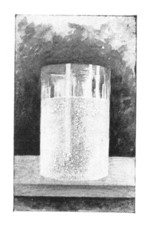
Fig. 9. A glass of cold water on which vapor has
condensed in drops.
Do you wish to prove that the water vapor is there, although unseen?
Then, if the day is cool, watch the window and notice the drops of water
collect upon it. Or, if the day is warm, bring an ice-cold glass or
pitcher into the room and see the drops collect upon it (Fig. 9). People
sometimes say, when drops of water collect on a glass of cold water,
that the glass is "sweating;" but see whether the same thing will not
happen with a cold glass that does not contain water.
These two simple observations teach us two very important facts: (1)
That heat will change liquid water to an invisible vapor, or gas, which
will float about in the air of a room; and (2) that cold will cause some
of the vapor to change back to liquid water.
Let us observe a little further. The clothes upon the line on
[82]
wash day are hung out wet and brought in dry. If the sun is
shining they probably dry quickly; but will they not dry even
if the sun is not shining? They will, indeed; so here is another
fact to add to our other two, namely (3) that the production of
vapor from water will proceed even when the water is not heated.
This change of water to vapor is called evaporation. The water
evaporates from the clothes; it also evaporates from the walks
after a rain, from the mud of the road, from the brooks, creeks
and rivers, and from ponds, lakes, and the great ocean itself.
Indeed, wherever water is exposed to the air some evaporation is
taking place. Yet heat aids evaporation, as you can prove by
taking three dishes of the same kind and pouring the same amount
of water into each, then placing one on the stove, a second in the
sun, and a third in a cool, shady place, as a cellar, and watching
to see which is the last to become dry.
About three-fourths of the earth's surface is covered by water,
so that the air is receiving vapor all the time. In fact, every
minute thousands of barrels of water-vapor are rising into the
atmosphere from the surface of the ocean. The air is constantly
moving about, forming winds, and this load of vapor is, therefore,
drifted about by the winds, so that the air you are breathing may
have in it vapor that came from the ocean hundreds or even
thousands of miles away. You do not see the vapor, you are perhaps
not even aware that it is there; yet in a room 10 feet high
and 20 feet square there is often enough vapor, if it could all be
changed back to water to fill a two-quart measure.
There is a difference in the amount of vapor from time to time.
Some days the air is quite free from it, and then clothes will
dry rapidly. On other days the air is damp and humid; then
people say it is "muggy," or that the "humidity is high." On
these muggy days in summer the air is oppressive because there
is so much vapor in it. Near the sea, where there is so much
water to evaporate, the air is commonly more humid or moist
than in the interior, away from the sea, where there is less water
to evaporate.
We have seen that there is some vapor in all air, and that there
is more at some times than at others. We have also seen how it
has come into the air, and that cold will cause it to condense to
liquid water on cold window panes and on water glasses. There
are other ways in which the vapor may be changed to liquid.
After a summer day, even when there has been no rain, soon
[83]
after the sun sinks behind the western horizon the grass becomes
so damp that one's feet are wet in walking through it. The dew
is "falling." During the daytime the grass is warmed by the sun;
but when the sun is gone it grows cooler, much as a stove becomes
cool when the fire is out. This cool grass chills the air near it
and changes some of the vapor to liquid, which collects in drops
on the grass, as the vapor condenses on the outside of a glass
of ice water.
In the opposite season of the year, on a cold winter's day, when
you step out of a warm house into the chilly air, a thin cloud, or
fog, forms as you expel the air from your lungs, and you say that
you can "see your breath." What you really see are the little
drops of water formed as the vapor-laden breath is chilled on
passing from the warm body to the cold air. The vapor is condensed
to form a tiny mist.
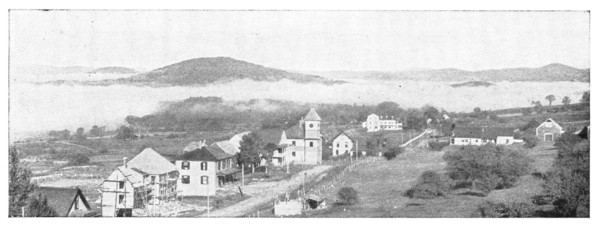
Fig. 10. A wreath of fog settled in a valley with the hilltops rising above it.
Doubtless you have seen a wreath of fog settling in a valley at
night; or in the morning you may have looked out upon a fog
that has gathered there during the night (Fig. 10). If your home
happens to be upon a hillside, perhaps you have been able to look
down upon the fog nestled there like a cloud on the land, which
it really is. Such a fog is caused in very nearly the same way as
the tiny fog made by breathing. The damp air in the valley has
been chilled until the vapor has condensed to form tiny mist or
fog particles. Without doubt you can tell why this fog disappears
when the sun rises and the warm rays fall upon it.
On the ocean there are great fogs, covering the sea for hundreds
of miles; they make sailing dangerous, because the sailors cannot
see through the mist, so that two vessels may run together, or a
ship may be driven upon the coast before the captain knows it.
[84]
Once more, this is merely condensed vapor caused by chilling air
that has become laden with vapor. This chilling is often caused
when warm, damp winds blow over the cold parts of the ocean.
This leads the way to an understanding of a rain storm; but first we
must learn something about the temperature of the air. The air near the
ground where we live is commonly warmer than that above the ground where
the clouds are. People who have gone up in balloons tell us so; and now
scientific men who are studying this question are in the habit of
sending up great kites, carrying thermometers and other instruments, in
order to find out about the air far above the ground.
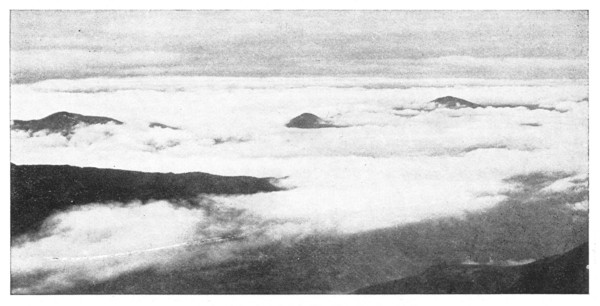
Fig. 11. Fog clouds among the valleys in the mountains, only the mountain peaks projecting above them.
It is not necessary, however, to send up a kite or a balloon to prove
this. If your home is among mountains, or even among high hills, you can
prove it for yourself; for often, in the late autumn, when it rains on
the lower ground, it snows upon the mountain tops, so that when the
clouds have cleared away the surface of the uplands is robed in white
(Fig. 12). In the springtime, or in the winter during a thaw, people
living among these highlands often start out in sleighs on a journey to
a town, which is in the valley, and before they reach the valley their
horses are obliged to drag the sleigh over bare ground. It is so much
warmer on the lower ground that the snow melts away much more quickly
than it does among the hills.
The difference in temperature is, on the average, about one
degree for every three hundred feet, so that a hill top rising
[85]
twelve hundred feet above a valley would have an average temperature
about four degrees lower than the valley. Now some
mountains, even in New York, rise thousands of feet above the
surrounding country. They rise high into the regions of cold air,
so that they are often covered with snow long before any snow
has fallen on the lowlands; and the snow remains upon them long
after it has disappeared from the lower country (Fig. 12).
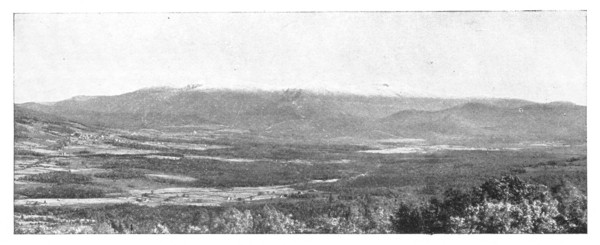
Fig. 12. A mountain whitened by snow on the top, while there is no snow at the base.
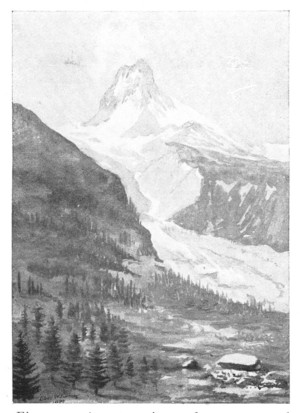
Fig. 13. A mountain peak snow capped, and covered on the very crest by a cloud.
Some mountains are so lofty that it never rains upon them, but snows
instead; and they are never free from snow, even in mid-summer. If one
climbs to the top of such peaks he finds it always very cold there.
While he is shivering from the cold he can look down upon the green
fields where the birds are singing, the flowers blossoming and the men,
working in the fields, are complaining of the heat.
One who watches such a mountain as this, or in fact any mountain peak,
will notice that it is frequently wrapped in clouds (Fig. 13). Damp
winds blowing against the cold
[86]
mountains are chilled and the vapor is condensed. If one climbs
through such a cloud, as thousands of people have done when
climbing mountains, he often seems to pass through nothing but a
fog, for really many clouds are only fogs high in the air. (Fig. 14).
But very often rain falls from these clouds that cling to the
mountain sides. The reason for this is easy to understand. As
the air comes against the cold mountains so much vapor is condensed
that some of the tiny fog particles grow larger and larger
until they become mist particles, which are too heavy to float in
the air. They then begin to settle; and as one particle strikes
against another, the two unite, and this continues until perhaps a
dozen have joined together so as to form a good-sized drop,
which is so heavy that it is obliged to fall to the ground as rain.
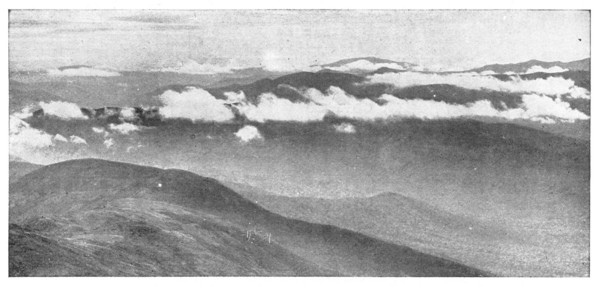
Fig. 14. Clouds clinging to the mountain sides. If one were climbing these mountains he would find himself, in passing through the clouds, either in a fog or a mist.
Let us now look at our summer storms. These do not form
about mountain peaks; yet what has been said about the mountains
will help us to understand such showers.
It is a hot summer day. The air is muggy and oppressive, so
that the least exertion causes a perspiration, and even in the
shade one is uncomfortably hot. Soon great banks of clouds
appear (Fig. 15),—the "thunder heads,"—and people say "a
thunder shower is coming, so that we will soon have relief from
this oppressive heat." The clouds draw near, lightning is seen
and thunder heard, and from the black base of the cloud, torrents
of water fall upon the earth. If we could have watched
this cloud from the beginning, and followed it on its course, we
[87]
would have seen some facts that would help explain it. Similar
clouds perhaps began to form over your head in the early afternoon
and drifted away toward the east, developing into thunder
storms many miles to the east of you.
On such a day as this, the air near the ground is so damp that
it gives up vapor easily, as you can prove by allowing a glass of
ice water to stand on a table and watching the drops of water
gather there, causing the glass to "sweat" (Fig. 9). The sun beats
down upon the heated ground and the surface becomes like a furnace,
so that the air near the ground is warmed.
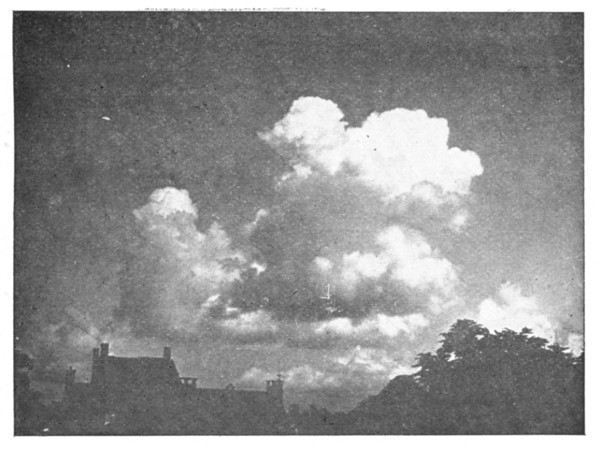
Fig. 15. A "thunder head," or cumulus cloud.
Air that is warm is lighter than cool air, and, being lighter, will
rise, for the heavy cool air will settle and push it up, as a chip of
wood will rise in a pail of water, because it is lighter than the
water which pushes it to the top. This is why the warm air rises
from a furnace, or a stove, or a lamp. It is the reason why the
hot air rises through a house chimney; undoubtedly you can find
other illustrations, as ventilation, and can find abundant opportunity
to prove that warm air will rise.
The warm, moist air near the ground becomes so light that the
heavy air above settles down and pushes it up, so that an uprising
current of air is formed above the heated ground, much as an
uprising current of hot air rises through the chimney when the
stove is lighted. Rising thousands of feet into the sky the warm
air reaches such a height, and finally comes to a place so cool, that
[88]
some of the vapor must be condensed, forming fog particles, which
in turn form a cloud.
On such a day, if you will watch a cloud, you will notice that its base
is flat (Fig. 15); and this flat base marks the height above ground
where the temperature of the atmosphere is low enough to change the
vapor to fog particles. Of course the air still rises somewhat above
this base and continues to get cooler, and to have more and more vapor
condensed. This makes a pile of clouds resting on a level base, but with
rounded tops (Fig. 15). Sometimes the base of these summer clouds,
called cumulus clouds, is a mile above the ground and their tops fully a
mile higher than this.
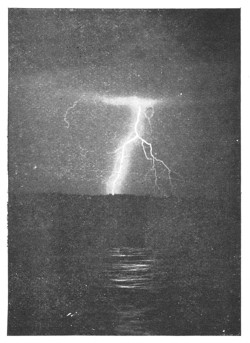
Fig. 16. Photograph of a lightning flash.
Just as on the mountain side, where the drops grow larger until they
must fall, so here, fog particles grow to drops of such a size that they
are too heavy to float. This growth is often aided by the violent
currents of air, which sometimes tumble and toss the clouds about so
that you can see the commotion from the ground. These currents blow one
particle against another, forming a single drop from the collision of
two; then still others are added until the rain drop is so heavy that it
must fall.
But sometimes the air currents are so rapid that the drops
are carried on up, higher and higher, notwithstanding the fact
that they are heavy. Then they may be carried so high, and into
air so cold, that they are frozen, forming hail. These "hailstones"
cannot sink to the ground until they are thrown out of the violent
currents, when they fall to the ground, often near the edge of the
storm.
Some hailstones are of great size; you will find it interesting
to examine them. If you do this, notice the rings of clear and
clouded ice that are often to be seen. These are caused when
the hail, after forming, settles to a place where it melts a little,
[89]
then is lifted again by another current, growing larger by the
addition of more vapor. This continues until finally the ice ball
sinks to the ground.
There is thunder and lightning in such storms. Few things in
nature are grander than these, and those who will watch the
lightning flash will see many beautiful and interesting sights
(Fig. 16). Sometimes the flash goes from cloud to cloud, again
from the cloud to the ground. No one knows exactly why the
lightning comes; but we do know that it is an electric spark,
something like that which one can often see pass from the trolley
to the wire of an electric car line. The main difference is that
the spark in a thunder storm is a powerful lightning bolt that
passes over a space of thousands of feet and often does great damage
where it strikes.
The thunder is a sound which may be compared to the crack
heard when a spark passes from the trolley, though of course the
noise is very much louder. The crack of the lightning echoes
and reverberates among the clouds, often changing to a great
rumble; but this rumbling is mainly caused by the echo, the
sound from the lightning being a loud crack or crash like that
which we sometimes hear when the lightning strikes near by.
Some of the vapor of the air, on condensing, gathers on solid
objects like grass, or glass; but some, as fog, floats about in the
air. Really this, too, is often gathered around solid objects.
Floating about in the air are innumerable bits of "dust" which
you can see dancing about in the sunlight when a sunbeam enters
a dark room. Some of these "dust" particles are actual dust from
the road, but much of it is something else, as the pollen of plants,
microbes, and the solid bits produced by the burning of wood or
coal.
Each bit serves as a tiny nucleus on which the vapor condenses;
and so the very "dust" in the air aids in the formation of rain by
giving something solid around which the liquid can gather. The
great amount of dust in the air near the great city of London is
believed to be one of the causes for the frequent fogs of that city.
That there is dust in the air, and that the rain removes it, is
often proved when a dull hazy air is changed to a clear, bright air
by a summer shower. Watch to find instances of this. Indeed,
after such a hazy day, when the rain drops first begin to fall, if
you will let a few drops fall upon a sheet of clean white paper,
and then dry it, you will find the paper discolored by the dust
[90]
that the rain brought with it. So the rain purifies the air by
removing from it the solids that are floating in it.
These are only a few of the things of interest that you can see
for yourself by studying the air. Watch the sky; it is full of
interest. See what you can observe for yourself. Watch especially
the clouds, for they are not only interesting but beautiful
(Fig. 17). Their forms are often graceful, and they change with
such rapidity that you can notice it as you watch them. Even in
the daytime the colors and shadows are beautiful; but at sunrise
and at sunset the clouds are often
changed to gorgeous banks of
color.
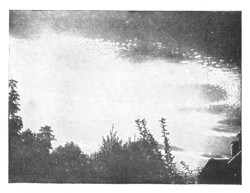
Fig. 17. A sky flecked with clouds high in the air.
Watch the clouds and you will be repaid; look especially for the great
piles of clouds in the east during the summer when the sun is setting
(Fig. 18). Those lofty banks, tinged with silver and gold, and rising
like mountains thousands of feet into the air, are really made of bits
of fog and mist. Among them vapor is still changing to water and rain
drops are forming, while violent currents are whirling the drops about,
and perhaps lifting them to such a height that they are being frozen
into hailstones. Far off to the east, beneath that cloud, rain is
falling in torrents, lightning is flashing and thunder crashing, though
you cannot hear it because it is so far away.
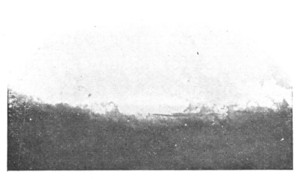
Fig. 18. The cloud banks of a thunder storm on the horizon.
You see the storm merely as a brightly lighted and beautifully colored
cloud mass in the sky; but the people over whom it is hanging find it a
threatening black cloud, the source of a furious wind, a heavy rain, and
the awe-inspiring lightning. To them it may not be beautiful, though
grand in the extreme; and so, too, when the summer thunder shower visits
you in the early evening, you may know that people to the west of you
are probably looking at its side and top and admiring its beauty of form
and color.
[91]
The storm passes on, still to the eastward, and finally the cloud
mass entirely disappears beneath the eastern horizon; but if you
watch, you will see signs that it is still there, though out of
sight; for in the darkness of the night you can see the eastern
horizon lighted by little flashes, the source of which cannot be
seen. You call it "heat lightning," but it is really the last signal
that we can see of the vanishing thunder storm, so far away that
the sound of the crashing thunder cannot be heard.
You watch the mysterious flashes; they grow dimmer and dimmer
and finally you see them no more. Our summer shower is
gone. It has done what thousands of others have done before,
and what thousands of others will do in the future. It has started,
moved off, and finally disappeared from sight; and as it has gone
it has told us a story. You can read a part of this story if you
will; and in reading it will find much that interests.
[92]
[93]
LEAFLET VII.
A SNOW STORM.[9]
By ANNA BOTSFORD COMSTOCK.
The snow had begun in the gloaming,
And busily all the night
Had been heaping field and highway
With a silence deep and white.
Every pine and fir and hemlock
Wore ermine too dear for an earl,
And the poorest twig on the elm-tree
Was ridged inch deep with pearl.
From sheds new-roofed with Carrara
Came Chanticleer's muffled crow
The stiff rails were softened to swan's-down
And still fluttered down the snow.
—Lowell.
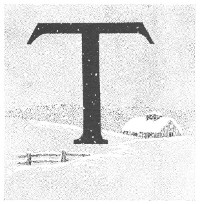
The storm which Lowell describes so delightfully is the first soft,
gentle snow fall that comes in November or early December. "The silence
deep and white" settles like a benediction over the brown, uneven
landscape, and makes of it a scene of enchantment. Very different from
this is the storm that comes when the winter cold is most severe and
winter winds most terrific. Then the skies are as white as the fields,
with never a sign of blue; if the sun appears at all, it shines cold
instead of warm, and seems but a vague white spot behind the veil of
upward, downward whirling snowflakes; the wild wind takes the "snow
dust" in eddies across the fields and piles it at the fences in great
drift billows with overhanging crests. On such a day the snow is so cold
and dry, the clouds so low and oppressive, the bare trees so brown and
bleak,
[94]
that we shiver even though we gaze on the dreary scene from the
window of a warm and comfortable room.
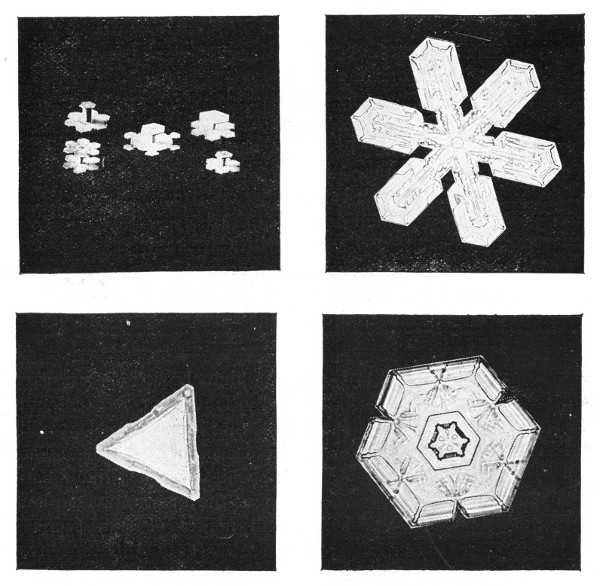
Fig. 19. Snow crystals enlarged.
But another change is sure to come. Some February day the
wind will veer suddenly to the south and breathe warm thawing
breaths over the white frozen world. Then will the forests appear
in robes of vivid blue-purple against the shining hills; and in the
mornings the soft blue of the horizon will shade upward into
rose-color and still upward into yellow and beryl green; these
hues are never seen on the forest or in the sky except when the
snow covers the earth to the horizon line. The eye that loves
color could ill afford to lose from the world the purples and
blues which bring contrast into the winter landscape.
The snow storm to our limited understanding, begins with a
miracle—the miracle of crystallization. Why should water freezing
freely in the air be a part of geometry, the six rays of the snow
[95]
crystal growing at an angle one to another, of sixty degrees? Or
as if to prove geometry divine beyond cavil, sometimes the rays
include angles of twice sixty degrees. Then why should the
decorations of the rays assume thousands of intricate, beautiful
forms, each ray of a flake ornamented exactly like its five sisters?
And why should the snowflake formed in the higher clouds of the
upper air be tabular in shape but still, in cross section, show that
it is built on the plan of six radii? Look at it as we will, the
formation of a crystal is a beautiful mystery and is as unfathomable
as is the mystery of life.
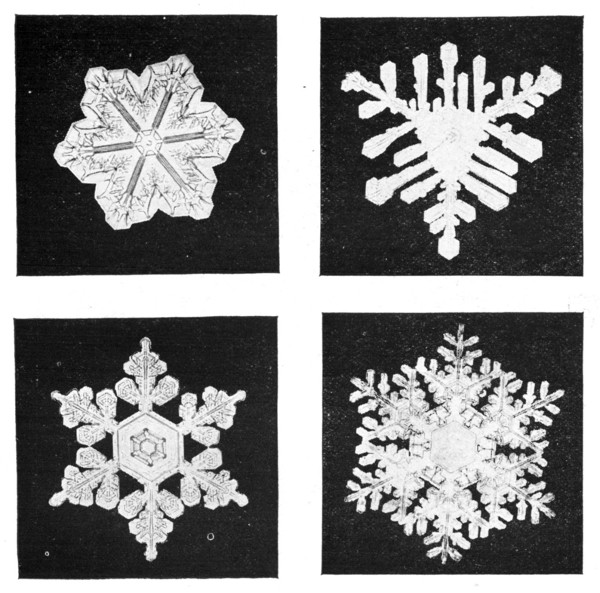
Fig. 20. Snow crystals enlarged.
I am indebted to the courtesy of Mr. R. G. Allen, Section Director
for New York of the U. S. Weather Bureau, for suggestions in making
out the following questions. The beautiful pictures of snow
crystals illustrating this lesson were made from photographs taken
by Mr. W. A. Bentley of Jericho, Vt. It is our desire to interest all
[96]
teachers in the natural history of a snow storm, to the end that
"they may love the country better and be content to live therein."
A thermometer hung in a sheltered, open place away from the
warmth of the house is a necessary preliminary to the proper
observation of the phenomena of a snow storm.
Dark woolen cloth is the best medium on which to catch and
observe snow crystals.
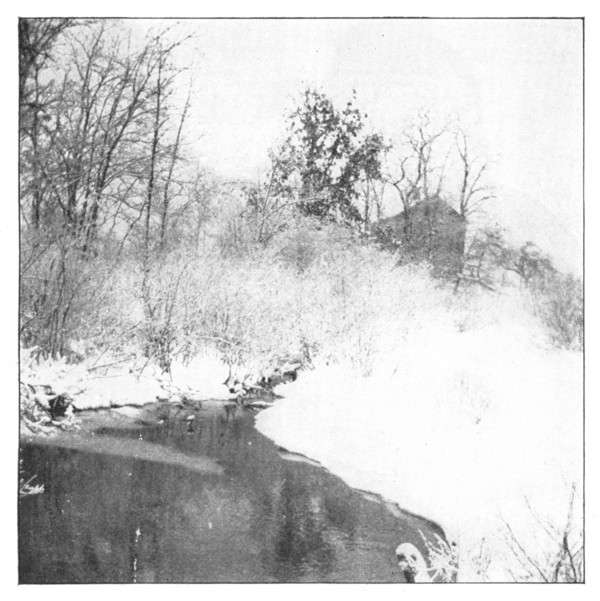
Fig. 21. "With a silence deep and white."
Questions on a Snow Storm.
1. What causes snow?
2. At what temperature do snow crystals form?
3. How do the clouds appear before a snow storm?
4. What is the temperature of the air before the storm?
5. What is the direction of the wind before the storm?
6. Does the storm come from the same direction as the wind?
[97]
7. What are the conditions of the wind and temperature when the snow crystals are most perfect in form?
8. What are these conditions when the snow crystals are matted together in great flakes?
9. What are these conditions when the snow crystals appear sharp and needle-like?
10. Are the snow crystals of the same storm similar in structure and decoration?
11. What is the difference in structure between a snowflake and a hail stone?
12. What is sleet?
13. What is the difference between hoar frost and snow?
14. Does the temperature rise or fall during a snow storm?
15. Is it colder or warmer after a snow storm has passed than it was before it began?
16. What are the conditions of weather which cause a blizzard?
17. Why does a covering of snow prevent the ground from freezing so severely as it would if bare?
18. Why is snow a bad conductor of heat?
19. Pack snow in a quart cup until it is full and let it melt; then tell how full the cup is of water. What do you infer from this?
20. Have you ever observed the grass to be green beneath snow drifts? Tell why.
21. Does snow evaporate as well as melt?
22. How does snow benefit the farmer and the fruit grower?
23. Do the snow storms in your locality come from one general direction all winter?
[98]
[99]
LEAFLET VIII.
A HANDFUL OF SOIL: WHAT IT IS.[10]
By R. S. TARR.
Wind drifts a seed from the parent plant until
it settles to the ground, perhaps in a field or
by the roadside, or even in the schoolyard.
There it remains through the long winter;
but with the return of spring, encouraged by
the warm sunlight, the seed awakens from its dormant condition,
breaks open the seed-cover and sends leaves into the air and roots
into the ground. No one planted the seed; yet the plant has
made its way in the world and it thrives until it has given to other
seeds the same opportunity to start in life.
Had the seed fallen upon a board or a stone it might have sent
out leaves and roots; but it could never have developed into
a plant, for something necessary would have been lacking. What
is there in the soil that is so necessary to the success of plant life?
How has it come to be there? What is this soil that the plants
need so much? These are some of the questions which we will
try to answer.
One readily sees that the soil furnishes a place in which the
plants may fix themselves,—an anchorage, as it were. It is also
easy to see that from the soil the plants obtain a supply of water;
and, moreover, that this water is very necessary, for the vegetation
in a moist country suffers greatly in time of drought, and few
plants are able to grow in a desert region because there is so little
water. You can make a desert in the schoolroom and contrast it
with moist soil by planting seeds in two dishes of soil, watering
one, but furnishing no water to the other.
That water is necessary to plants is also proved by the plant
itself. The sap and the moisture which may be pressed out of a
grass stem or an apple are principally water taken from the soil by
the roots. But there is more than water, for the juice of an apple is
sweet or sour, while the sap and juice of other plants may be sweet
or bitter. There are substances dissolved in the water.
[100]
It is these dissolved substances that the plants need for their
growth, and they find them ready for use in the soil. There is a
plant-food which the roots seek and find, so that every plant
which sends roots into the soil takes something from it to build up
the plant tissue. The sharp edges of some sedges, which will cut
the hand like a dull knife, and the wood ashes left when a wood
fire is burned, represent in part this plant-food obtained from the
soil.
Let us take a handful of soil from the field, the schoolyard, or
the street and examine it. We find it to be dirt that "soils" the
hands; and when we try to brush off the dirt, we notice a gritty
feeling that is quite disagreeable. This is due to the bits of
mineral in the soil; and that these are hard, often harder than a
pin, may often be proved by rubbing soil against a piece of glass,
which the hard bits will often scratch, while a pin will not.
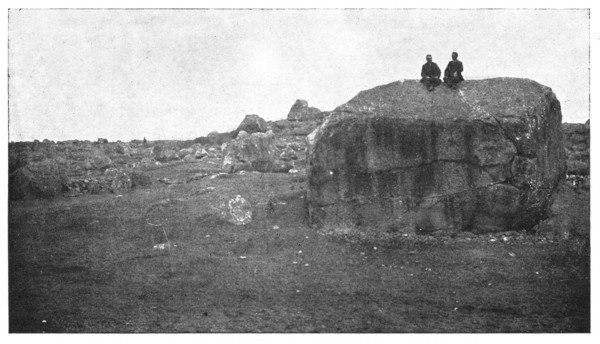
Fig. 21. A boulder-strewn soil of glacial origin with one of the large erratics on the
right similar to those which early attracted attention to the drift. See page 105.
Study this soil with the eye and you may not see the tiny bits,
though in sandy soils one may easily notice that there are bits of
mineral. Even fine loamy and clay soils, when examined with a
pocket lens or a microscope, will be found to be composed of tiny
fragments of mineral. It is evident that in some way mineral has
been powdered up to form the soil; and since the minerals come
from rocks, it is the rocks that have been ground up. That powdered
rock will make just such a substance as soil may be proved
[101]
by pounding a pebble to bits, or by collecting some of the rock
dust that is made when a hole is drilled in a rock. Much the
same substance is ground from a grindstone when a knife is
sharpened on it, making the water muddy like that in a mud hole.
It will be an interesting experiment to reduce a pebble to powder
and plant seeds in it to see whether they will grow as well as in
soil; but in preparing it try to avoid using a sandstone pebble,
because sandy soils are never very fertile.
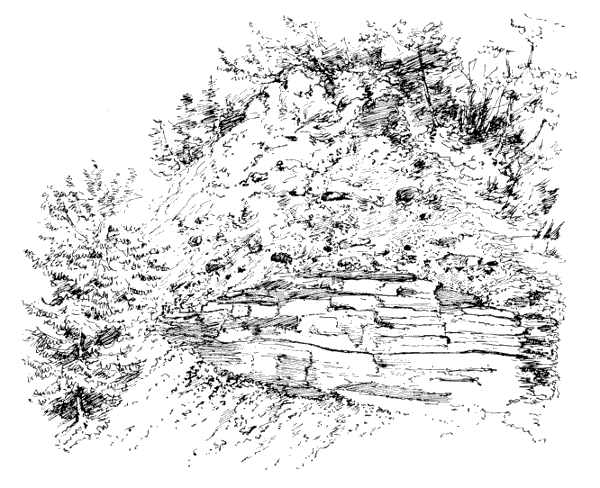
Fig. 22. A glacial soil, containing numerous transported pebbles and boulders,
resting on the bed rock.
Not only is soil made up of bits of powdered rock, but it
everywhere rests upon rock (Fig. 25). Some consider soil to be
only the surface layers in which plants grow; but really this is,
in most places, essentially the same as the layers below, down even
to the very rock, so that we might call it all soil; though, since a
special name, regolith (meaning stone blanket), has been proposed
for all the soft, soil-like rock-cover, we may speak of it as regolith
and reserve the word soil for the surface layers only.
In some places there is no soil on the bare rocks; elsewhere
the soil-cover is a foot or two in depth; but there are places
where the regolith is several hundred feet deep. In such places,
even the wells do not reach the bed rock; nor do the streams cut
[102]
down to it; but even there, if one should dig deep enough, he
would reach the solid rock beneath.
How has the hard rock been changed to loose soil? One of
the ways, of which there are several, may be easily studied whenever
a rock has been exposed to the air. Let us go to a stone
wall or among the pebbles in a field, for instance, and, chipping
off the surface, notice how different the inside is from the outside.
The outer crust is rusted and possibly quite soft, while the
interior is harder and fresher. Many excellent examples of this
may be found in any stony field or stone wall.
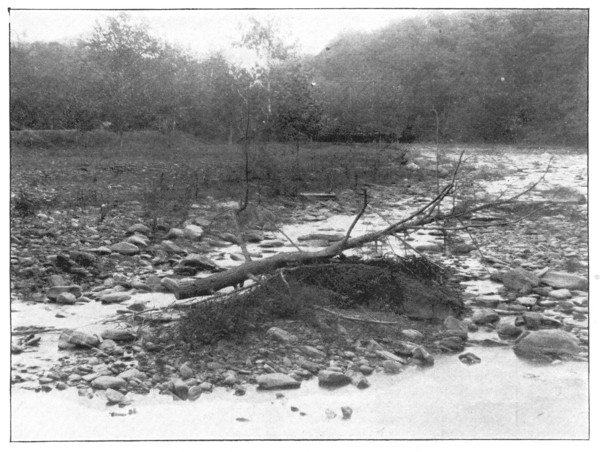
Fig. 23. The bed of a stream at low water, revealing the rounded pebbles that
have been worn and smoothed by being rolled about, thus grinding off tiny bits
which later are built into the flood-plains.
As hard iron rusts and crumbles to powder when exposed to
the weather; so will the minerals and the rocks decay and fall to
bits; but rocks require a very much greater time for this than
does iron. It happens that the soil of New York has not been
produced by the decay of rock; and, therefore, although the
soils in many parts of the world have been formed in this way, we
will not delay longer in studying this subject now, nor in considering
the exact way in which rocks are enabled to crumble.
[103]
Another way in which rocks may be powdered may be seen in
most parts of New York. The rains wash soil from the hillsides
causing the streams to become muddy. In the streams there are
also many pebbles, possibly the larger fragments that have fallen
into the stream after having been broken from the ledges. The
current carries these all along down the stream, and, as they go,
one piece striking against another, or being dragged over the rocks
in the stream bed, the pebbles are ground down and smoothed
(Fig. 23), which means, of course, that more mud is supplied to
the stream, as mud is furnished from a grindstone when a knife
or scythe is being sharpened on it. On the pebbly beaches of the
sea or lakeshore much the same thing may be seen; and here also
the constant grinding of the rocks wears off the edges until the
pebbles become smooth and round.
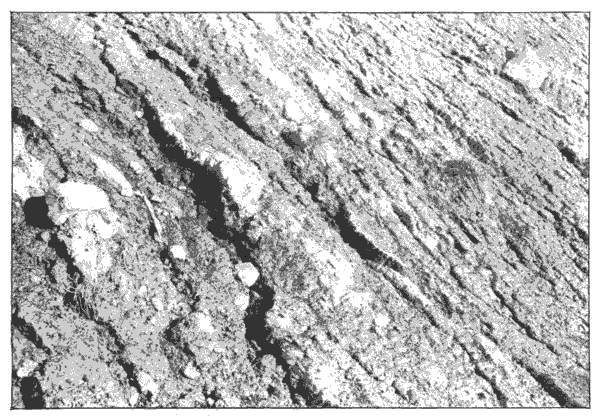
Fig. 24. Near view of a cut in glacial soil, gullied by the rains, and with numerous
transported pebbles embedded in the rock flour.
Supplied with bits of rock from the soil, or from the grinding
up of pebbles and rocks along its course, the stream carries its
load onward, perhaps to a lake, which it commences to fill, forming
a broad delta of level and fertile land, near where the stream
enters the lake. Or, possibly, the stream enters the sea and
builds a delta there, as the Mississippi river has done.
[104]
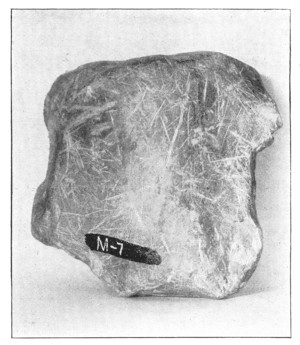
Fig. 25. A scratched limestone pebble taken from a glacial soil.
But much of the mud does not reach the sea. The greatest supply comes
when the streams are so flooded by heavy rains or melting snows that the
river channel is no longer able to hold the water, which then rises
above the banks, overflowing the surrounding country. Then, since its
current is checked where it is so shallow, the water drops some of its
load of rock bits on the flood-plain, much as the muddy water in a
gutter drops sand or mud on the sidewalk when, in time of heavy rains,
it overflows the walk.
Many of the most fertile lands of the world are flood-plains of this
kind, where sediment, gathered by the streams farther up their courses,
is dropped upon the flood-plains, enriching them by new layers of
fertile soil. One does not need to go to the Nile, the Yellow, or the
Mississippi for illustrations of this; they abound on every hand, and
many thousands of illustrations, great and small, may be found in the
State of New York. Doubtless you can find one.
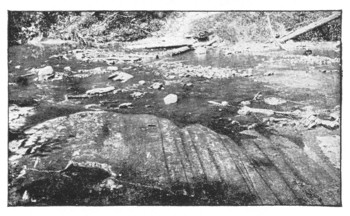
Fig. 26. The grooved bed rock scratched by the movement of the ice sheet over it.
There are other ways in which soils may be formed; but only one more
will be considered, and that is the way in which most of the soils of
New York have been made. To study this let us go to a cut in the earth,
such as a well or a stream bank (Figs. 22 and 24). Scattered through the
soil numerous pebbles and boulders will doubtless be found; and if these
are compared with the bed rock of the country, which underlies the soil
[105]
(Fig. 22), some of them will be found to be quite different from
it. For instance, where the bed rock is shale or limestone, some
of the pebbles will no doubt be granite, sandstone, etc. If you
could explore far enough, you would find just such rocks to the
north of you, perhaps one or two hundred miles away in Canada;
or, if your home is south of the Adirondacks, you might trace the
pebbles to those mountains.
On some of these pebbles, especially the softer ones, such as
limestone, you will find scratches, as if they had been ground
forcibly together (Fig. 25). Looking now at the bed rock in some
place from which the soil has been recently removed, you will find
it also scratched and grooved (Fig. 26); and if you take the direction
of these scratches with the compass, you will find that they
extend in a general north and south direction, pointing, in fact,
in the same direction from which the pebbles have come.
All over northeastern North America and northwestern Europe
the soil is of the same nature as that just described. In our own
country this kind of soil reaches down as far as the edge of the
shaded area in the map (Fig. 27), and it will be noticed that all of
New York is within that area excepting the extreme southwestern
part near the southern end of Chautauqua lake.
Not only is the soil peculiar within this district, but there are
many small hills of clay or sand, or sometimes of both together
(Figs. 33 and 34). They rise in hummocky form and often have
deep pits or kettle-shaped basins between, sometimes, when the
soil is clayey enough to hold water, containing tiny pools. These
hills extend in somewhat irregular ranges stretching across the
country from the east toward the west. The position of some of
these ranges is indicated on the map (Fig. 27).
For a long time people wondered how this soil with its foreign
pebbles and boulders, altogether called "drift," came to be placed
where it is; they were especially puzzled to tell how the large
boulders, called erratics (Fig. 21), should have been carried from
one place to another. It was suggested that they came from the
bursting of planets, from comets, from the explosion of mountains,
from floods, and in other ways equally unlikely; but Louis
Agassiz, studying the glaciers of the Alps and the country round
about, was impressed by the resemblance between the "drift"
and the materials carried by living glaciers.
Agassiz, therefore, proposed the hypothesis that glaciers had
carried the drift and left it where we now find it; but for many
[106]
[107]
years his glacial hypothesis met with a great deal of opposition
because it seemed impossible that the climate could have changed
so greatly as to cover what is now a temperate land with a great
sheet of ice. Indeed, even now, although all who have especially
studied the subject are convinced, many people have not accepted
Agassiz's explanation, just as years ago, long after it was proved
that the earth rotated each day, many people still believed that it
was the sun, not the earth, that was moving.
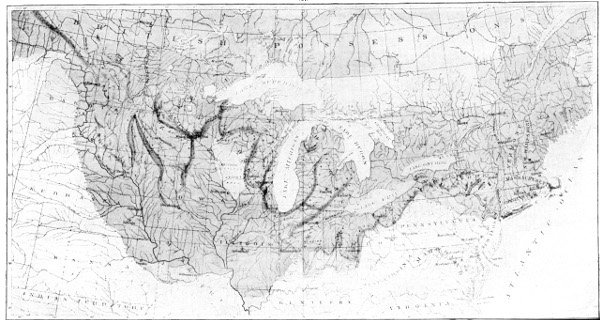
Fig. 27. Map showing the extent of the ice sheet in the United States. Position of some of the moraines indicated by
the heavily shaded lines. (After Chamberlain.)
The glacial explanation is as certain as that the earth rotates. For
some reason, which we do not know, the climate changed and allowed ice
to cover temperate lands, as before that time the climate had changed so
as to allow plants like those now growing as far south as Virginia to
live in Greenland, now ice covered. When the ice of the glacier melted
away it left many signs of its presence; and when the temperate latitude
plants grew in Greenland they left seeds, leaves and tree trunks which
have been imbedded in the rocks as fossils. One may now pick the leaves
of temperate climate trees from the rocks beneath a great icecap.
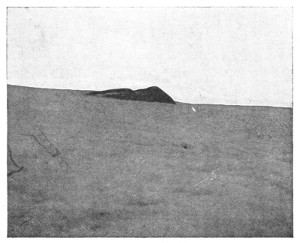
Fig. 28. A view over the great ice plateau of Greenland,
with a mountain peak projecting above it.
To one who studies them, the signs left by the glacier are as
clear proof as the leaves and seeds. From these signs we know
that the climate has changed slowly, but we have not yet learned
why it changed.
There are now two places on the earth where vast glaciers, or
ice sheets, cover immense areas of land, one in the Antarctic, a
region very little known, the other in Greenland, where there is an
ice sheet covering land having an area more than ten times that of
[108]
the State of New York. Let us study this region to see what is
being done there, in order to compare it with what has been done
in New York.
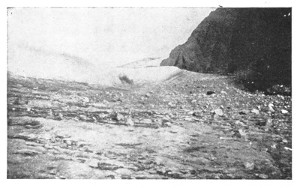
Fig. 29. The edge of a part of the great Greenland ice
sheet (on the left) resting on the land, over which are strewn many
boulders brought by the ice and left there when it melted.
In the interior is a vast plateau of ice, in places over 10,000 feet
high, a great icy desert (Fig. 28), where absolutely no life of any
kind, either animal or plant, can exist, and where it never rains, but
where the storms bring snow even in the middle of summer. Such must have
been the condition in northeastern America during the glacial period.
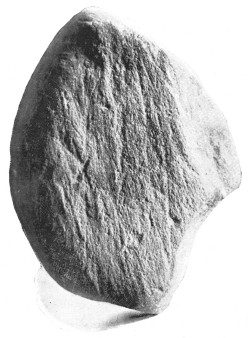
Fig. 30. A scratched pebble taken from the ice of the Greenland glacier.
This vast ice sheet is slowly moving outward in all directions from the
elevated center, much as a pile of wax may be made to flow outward by
placing a heavy weight upon the middle. Moving toward the north, east,
south and west, this glacier must of course come to an end somewhere. In
places, usually at the heads of bays, the end is in the sea, as the end
of our glacier must have been off the shores of New England. From these
sea-ends, icebergs constantly break off; these floating away toward the
south, often reach, before they melt, as far as the path followed by the
steamers from the United States to Europe. Between
[109]
bays where the glacier ends in the sea, the ice front rests on the land
(Fig. 29), as it did over the greater part of New York and the states
further west. There it melts in the summer, supplying streams with water
and filling many small ponds and lakes. The front stands there year
after year, sometimes moving a little ahead, again melting further back
so as to reveal the rocks on which it formerly rested.
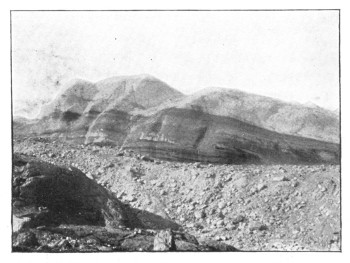
Fig. 31. A part of the edge of the Greenland glacier,
with clean white ice above, and dark discolored bands
below where laden with rock fragments. In the foreground
is a boulder-strewn moraine.
The bed rock here is found to be polished, scratched and grooved just
like the bed-rock in New York; and the scratches extend in the direction
from which the ice moves. Resting on the rock are boulders and pebbles
(Fig. 22), sometimes on the bare rock, sometimes imbedded in a clay as
they are in the drift. As we found when studying the soil in our own
region, so here the pebbles are often scratched, and many of them are
quite different from the rock on which they rest.
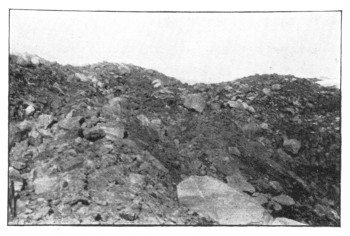
Fig. 32. Hummocky surface of the boulder-strewn moraine
of Greenland.
Going nearer to the ice we find the lower part loaded with pebbles,
boulders and bits of clay very like those on the rocks near by. Fig. 30
shows one of these, scratched and grooved, which I once dug from the ice
of this very glacier. The bottom of the ice is like a huge sandpaper,
being dragged over the bed rock with tremendous force. It
[110]
carries a load of rock fragments, and as it moves secures more by
grinding or prying them from the rocks beneath. These all travel
on toward the edge of the ice, being constantly ground finer and
finer as wheat is ground when it goes through the mill. Indeed
the resemblance is so close that the clay produced by this grinding
action is often called rock flour.
Dragged to the front of the ice, the rock bits, great and small,
roll out as the ice melts, some, especially the finest, being carried
away in the water, which is always muddy with the rock flour it
carries; but much remains near the edge of the ice, forming a
moraine (Figs. 31 and 32). This moraine, dumped at the edge of
the glacier, very closely resembles the hummocky hills of New
York (Figs. 33 and 34), mentioned above, which are really moraines
formed at the ice-edge during the glacial period. While their
form is quite alike, the New York moraines are generally less
pebbly than the Greenland moraines, because the Greenland
glacier carries less rock flour than did the glacier which covered
New York.
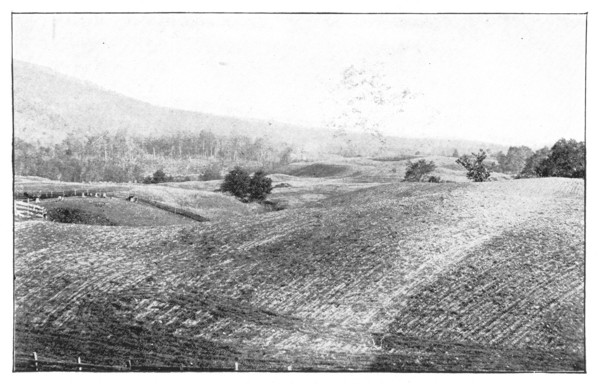
Fig. 33. A view over the hummocky surface of a part of the moraine of the great
American ice sheet in Central New York.
In the Greenland glacier, as you can see in Fig. 31, there is
much dirt and rock; in the glacier of the glacial period there was
even more. When it melted away the ice disappeared as water,
[111]
but the rock fragments of course fell down upon the rock beneath
and formed soil. If over a certain region, as for instance over
your home, the ice carried a great load of drift, when this gradually
settled down, as the ice melted, it formed a deep layer of soil;
but if the glacier had only a small load a shallow soil was left.
Again, if the ice front remained for a long time near a certain
place, as near your home, it kept bringing and dumping rock
fragments to form moraines, which, of course, would continue to
grow higher so long as the ice dumped the rock fragments, much
as a sand pile will continue to grow higher so long as fresh loads
are brought and dumped.
There are other causes for differences in the glacial soils, but
most of them cannot be considered here. One of them is so
important, however, that it must be mentioned. With the melting
of so much ice, vast floods of water were caused, and these came
from the ice, perhaps in places where there are now no streams, or
at best only small ones. These rapid currents carried off much
of the rock flour and left the coarser and heavier sand, gravel, or
pebbles, the latter often well rounded, with the scratches removed
by the long-continued rolling about in the glacial stream bed.
One often finds such beds of sand or gravel in different parts of
the State, telling not only of ice where it is now absent, but of
water currents where is now dry land. The rock flour was in
some cases carried to the sea, elsewhere to lakes, or in still other
places deposited in the flood-plains of the glacier-fed rivers. Now
some of this rock flour is dug out to make into bricks.
Enough has been said to show that the soils of New York were
brought by a glacier, and to point out that there are many differences
in thickness as well as in kind and condition of the soil.
The agriculture of the State is greatly influenced by these differences.
In some cases one part of a farm has a deep, rich soil,
another part a barren, sandy, pebbly or boulder-covered soil (Fig.
21), while in still another part the bed rock may be so near the
surface that it does not pay to clear the forest from it. Moreover,
some farms are in hummocky moraines, while others, near by, are
on level plains (Fig. 34), where a broad glacial stream built up
a flood-plain in a place where now the stream is so small that it
never rises high enough to overflow the plain.
There are even other differences than these, and one who is
familiar with a region is often puzzled to explain them; but they
are all due to the glacier or to the water furnished by its melting,
[112]
and a careful study by a student of the subject of Glacial Geology
will serve to explain them. Each place has had peculiar conditions
and it would be necessary to study each place much more
carefully than has been done here in order to explain all the
differences.
Not only is agriculture influenced greatly by the differences in
the soil from place to place, but also by the very fact that they
are glacial soils. Being made up of partly ground-up rock fragments
the soils are often stony and difficult to till. Unlike the
soil of rock decay, the particles of which the glacial soil is made
have been derived by mechanical grinding, not by chemical
decay and disintegration. There has been less leaching out of
the soluble compounds which make plant foods. These are
stored up in the rock fragments ready for use when decay causes
the proper changes to produce the soluble compounds which
plants require.
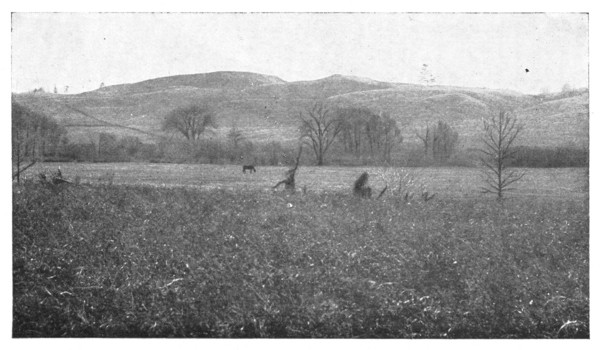
Fig. 34. Hummocky moraine hills in the background and a level gravel plain—an
ancient glacial-stream flood-plain—in foreground.
Slowly the glacial soils are decaying, and, as they do so, are
furnishing plant-food to the water which the roots greedily draw
in. So the glacial soil is not a mere store house of plant-food,
but a manufactory of it as well, and glacial soils are therefore
"strong" and last for a long time. That decay is going on, especially
near the surface, may often be seen in a cut in the soil,
where the natural blue color of the drift is seen below, while near
[113]
the surface the soil is rusted yellow by the decay of certain minerals
which contain iron.
Few materials on the earth are more important than the soil;
it acts as the intermediary between man and the earth. The rocks
have some substances locked up in them which animals need; by
decay, or by being ground up, the rocks crumble so that plants
may send roots into them and extract the substances needed by
animals. Gifted with this wonderful power the plants grow and
furnish food to animals, some of which is plant-food obtained
from the rocks; and so the animals of the land, and man himself,
secure a large part of their food from the rocks. It is then worth
the while to stop for a moment and think and study about this,
one of the most marvelous of the many wonderful adjustments of
Nature, but so common that most persons live and die without
even giving it more than a passing thought.
[114]
[115]
LEAFLET IX.
A HANDFUL OF SOIL: WHAT IT DOES.[11]
By L. A. CLINTON.
The more one studies the soil, the more certainly
it will be found that the earth has locked up
in her bosom many secrets, and that these secrets
will not be given up for the mere asking. As mysterious
as the soil may appear at different times, it
always is governed by certain laws. These principles
once understood, the soil becomes an open book
from which one may read quickly and accurately.
Uses of the Soil.
The soil has certain offices to perform for which
it is admirably fitted. The most important of these
offices are:
- To hold plants in place;
- To serve as a source of plant-food;
- To act as a reservoir for moisture;
- To serve as a storehouse for applied plant-food or fertilizer.
Some soils are capable of performing all these offices, while
others are fitted for only a part of them. Thus a soil which is
pure sand and almost entirely deficient in the essential elements
of plant-food, may serve, if located near a large city, merely to
hold the plants in position while the skillful gardener feeds the
plants with specially prepared fertilizers, and supplies the moisture
by irrigation.
Early in the study of soils an excursion, if possible, should be
made into the woods. Great trees will be seen and under the
trees will be found various shrubs and possibly weeds and grass.
It will be noticed that the soil is well occupied with growing plants.
The surface will be found covered with a layer several inches thick
of leaves and twigs. Beneath this covering the soil is dark, moist,
full of organic matter, loose, easily spaded except as roots or stones
may interfere, and has every appearance of being fertile.
[116]
Soil Conditions as Found in Many Fields.
After examining the conditions in the forest, a study should be
made of the soil in some cultivated field. It will be found that
in the field the soil has lost many of the marked characteristics
noticed in the woodland. In walking over the field, the soil will
be found to be hard and compact. The surface may be covered
with growing plants, for if the seeds which have been put into
the soil by the farmer have not germinated and the plants made
growth, nature has quickly come to the rescue and filled the soil
with other plants which we commonly call weeds. It is nature's
plan to keep the soil covered with growing plants, and from nature
we should learn a lesson. The field soil, instead of being moist,
is dry; instead of being loose and friable, it is hard and compact,
and it appears in texture entirely different from the woodland
soil. The cause of the difference is not hard to discover. In the
woods, nature for years has been building up the soil. The leaves
from the trees fall to the ground and form a covering which prevents
washing or erosion, and these leaves decay and add to the
humus, or vegetable mould, of the soil. Roots are constantly
decaying and furnish channels through the soil and permit the
circulation of air and water.
In the field, nature's lesson has been disregarded and too often
the whole aim seems to be to remove everything from the soil and
to make no returns. Consequently the organic matter, or humus,
has been used up; the tramping of the horses' feet has closed the
natural drainage canals; after the crop is removed, the soil is left
naked during the winter and the heavy rains wash and erode the
surface, and remove some of the best plant-food. After a few
years of such treatment, the farmer wonders why the soil will not
produce as liberally as it did formerly.
Experiment No. 1.—The fact that there is humus, or vegetable
mould, in certain soils can be shown by burning. Weigh a potful
of hard soil and a potful of lowland soil, or muck, after each has
been thoroughly dried. Then put the pots on the coals in a coal
stove. After the soil is thoroughly burned, weigh again. Some
of the difference in weight may be due to loss of moisture, but if
the samples were well dried in the beginning, most of the loss will
be due to the burning of the humus.
[117]
Conditions Which Affect Fertility.
There are certain conditions which affect soil fertility and of
these the most important are:
- Texture;
- Moisture-content;
- Plant-food;
- Temperature.
Texture and Its Relation To Fertility.
By texture is meant the physical condition of the soil. Upon
good texture, more than upon any other one thing, depends the
productivity of the soil. When the texture is right the soil is
fine, loose, and friable; the roots are able to push through it
and the feeding area is enlarged. Each individual particle is free
to give up a portion of its plant-food, or its film of moisture. The
conditions which are found in the woods' soil are almost ideal.
Experiment No. 2.—The importance of good texture may be
well shown in the class room. Pots should be filled with a soil
which is lumpy and cloddy, and other pots with the same kind of
material after it has been made fine and mellow. After seeds are
planted in the different pots, a careful study should be made of
the length of time required for germination and of the health and
vigor of the plants.
Experiment No. 3.—The greater part of our farming lands do
not present ideal conditions as regards texture. Clay soils are
especially likely to be in bad condition. If samples of the various
soils can be collected, as sand, loam, clay, etc., it may be clearly
shown how different soils respond to the same kind of treatment.
With a common garden trowel, the soils should be stirred and
worked while wet, and then put away to dry. After drying, the
conditions presented by the soils should be noted, also the length
of time required for the soils to become dry. Whereas the sand
and the loam will remain in fairly good condition when dry, the
clay will have become "puddled," i. e., the particles will have run
together and made a hard, compact mass. Thus it is found in
practice that clay soils must be handled with far more care and
intelligence than is required for the sand and loams, if the texture
is to be kept perfect.
Experiment No. 4.—If, in the experiment above suggested, the
clay soil is mixed with leaf-mould, or humus soil, from the woods,
[118]
it will be found to act very differently. The vegetable matter
thus mixed with the mineral matter prevents the running together
of the particles of clay.
Two principles, both important as relating to soil texture, now
have been illustrated. Soils must not be worked when they are
so wet that their particles will cohere, and organic matter, or humus,
must be kept mixed with the mineral matter of the soil. In practical
farm operations, if the soil can be made into a mud ball it is
said to be too wet to work. The required amount of humus is
retained in the soil by occasionally plowing under some green
crop, as clover, or by applying barn manures.
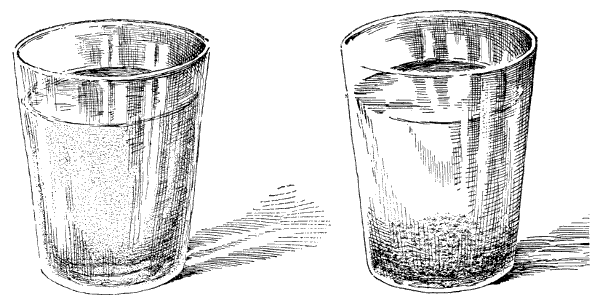
Fig. 35. The glass of water at the right has received lime and the clay has been
flocculated; the other was not treated.
Clay soils are also frequently treated with lime to cause them to
remain in good condition and be more easily tilled. Lime causes
the fine particles to flocculate, or to become granular, i. e., several
particles unite to form a larger particle, and these combinations
are more stable and do not so readily puddle, or run together. A
mud-puddle in clay soil will remain murky until the water has
evaporated entirely. Let a little water-slaked lime be mixed with
the muddy water, and the particles of clay will be flocculated and
will settle to the bottom; thus the water will become clear.
Experiment No. 5.—Into two glasses of water put some fine
clay soil; thoroughly stir the mixture (Fig. 35). Into one glass
thus prepared put a spoonful of water-slaked lime; stir thoroughly,
then allow both glasses to remain quiet that the soil may
settle. Notice in which glass the water first becomes clear, and
note the appearance of the sediment in each.
[119]
The Moisture in the Soil.
In Leaflet VI has been given the history of a thunder shower.
We are not told much about the history of the water after it
reaches the earth. If we go out immediately after a heavy shower,
we find little streams running alongside the road. These little
streams unite to make larger ones, until finally the creeks and
rivers are swollen, and, if the rain was heavy enough, the streams
may overflow their banks. In all these streams, from the smallest
to the largest, the water is muddy. Where did this mud come
from? It was washed largely from the cultivated fields, and the
finest and best soil is certain to be the first to start on its voyage to
the valleys or to the sea. If the farmer had only learned better
the lesson from nature and kept his fields covered with plants, a
large part of the loss might have been prevented. A rain gauge
should be kept in every school yard, so that every shower can be
measured. It can then be easily determined by the pupils how
many tons of rain fall upon the school grounds, or how much falls
upon an acre of land. It will be a matter of surprise that the
amount is so great.

Fig. 36. a. Soil too dry. b. Soil in good condition.
c. Soil too wet.
Not all the water which falls during a summer shower is carried
off by surface drainage, since a considerable part sinks into the
soil. As it passes down, each soil grain takes up a portion and
surrounds itself with a little film of water, much as does a marble
when dipped into water. If the rain continues long enough,
the soil will become saturated and the water which cannot be
retained, will, under the influence of gravity, sink down to the
lower layers of soil until it finally reaches the level of the free
water. From this free water, at varying depths in the soil, wells
and springs are supplied. If the soil were to remain long saturated,
seeds would not germinate, and most cultivated plants would
[120]
not grow because all the air passages of the soil would be filled
with water (Fig. 36). The water which sinks down deep into the
soil and helps to supply our wells is called free water. That part
which is held as a film by the soil particles (as on a marble) is
called capillary water. After the rain is over and the sun shines,
a part of the moisture which is held by the particles near the
surface is lost by evaporation. The moisture which is below
tends to rise to restore the equilibrium; thus there is created
a current toward the surface, and finally into the air; the moisture
which thus escapes aids in forming the next thunder storm.
Experiment No. 6.—Humus enables the soil to take up and
hold large quantities of water. To illustrate this, two samples of
soil should be obtained, one a humus, or alluvial, soil, rich in
organic matter, and the other a sandy soil. Put the two samples
where they will become thoroughly air dry. Procure, say five
pounds each of the dry soils, and put each into a glass tube over
one end of which there is tied a piece of muslin, or fine wire
gauze. From a graduated glass pour water slowly upon each sample
until the water begins to drain from the bottom of the tube.
In this way it can be shown which soil has the greater power of
holding moisture. Both samples should then be set away to dry.
By weighing the samples each day, it can be determined which
soil has the greater power of retaining moisture. This experiment
may be conducted not only with sand and humus, but with clay,
loam, gravel, and all other kinds of soil.
Experiment No. 7.—A finely pulverized soil will hold more film-moisture
than a cloddy soil. To illustrate the importance of
texture as related to moisture, soil should be secured which is
cloddy, or lumpy. One tube should be filled, as heretofore
described (Exp. No. 6), with the lumpy soil, and the other tube
with the fine soil which results from pulverizing the lumps, equal
weights of soil being used in each case. From a graduated glass
pour water upon each sample until the drainage begins from the
bottom. Notice which soil possesses greater power of absorbing
moisture. Put the samples away to dry, and by careful weighing,
each day, it can be determined which soil dries out more readily.

Fig. 37. "Foot-prints on the sands of time."
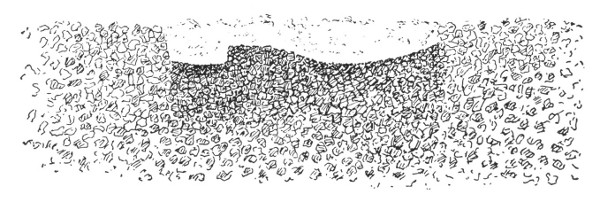
Fig. 38. A cross section through one of the foot-prints.
The prudent farmer will take measures to prevent the escape
of this moisture into the air. All the film-moisture (on the soil
particles) needs to be carefully conserved or saved, for the plants
will need very large amounts of moisture before they mature,
and they can draw their supply only from this film-moisture.
[121]
We can again apply the lesson learned in the woods. The soil
there is always moist; the leaves form a cover, or blanket,
which prevents the evaporation of moisture. Underneath an
old plank or board, the soil will be found moist. If we can break
the connection between the soil and the air, we can check the
escape of moisture. A layer of straw over the soil will serve to
prevent the loss of moisture; yet a whole field cannot be thus
covered. It has been found that the surface soil, if kept loose,
say about three inches of the top soil can be made to act as a
blanket or covering for the soil underneath. Although this top
layer may become as dry as dust, yet it prevents the escape, by
evaporation, of moisture from below. It is a matter of common
observation that if tracks are made across a freshly cultivated
field, the soil where the tracks are will become darker (Fig. 37).
This darker appearance of the soil in the foot-marks is due to the
moisture which is there rising to the surface. The implement of
tillage makes the soil loose, breaking the capillary connection
between the lower layers of soil and the surface; thus the upward
passage of the water is checked. Where the foot-print is, the soil
has been again pressed down at the surface, the particles have
been crowded closer together, and capillarity is restored to the
surface so that the moisture is free to escape (Fig. 38). In caring
for flower-beds, or even in growing plants in a pot in the school-room,
it is important that the surface of the soil be kept loose and
[122]
mellow. Far better in a flower garden is a garden rake than a
watering pot.
Experiment No. 8.—To show the importance of the surface
mulch, fill several pots with a sandy loam soil, putting the same
weight of soil into each pot. In one pot, pack the soil firmly; in
another pot, pack the soil firmly and then make the surface loose.
These pots of soil may then be put away to dry; by daily weighing
each it can be readily determined what effects the various
methods of treatment have upon the moisture-holding power of
soils.
Experiment No. 9.—The above experiment may be varied by
covering the soil in some of the pots with leaves, or straw, or
paper, care being taken that the added weight of the foreign matter
is properly accounted for.
Soil Temperature.

Fig. 39. The moss-grown lawn or grass plot.
If a kernel of corn be placed in the ground in early spring
before the soil has become warm, the seed will not germinate.
Abundance of moisture and oxygen may be present, but the third
requisite for germination, proper temperature, is lacking. The
soil is very slow to become warm in the spring, and this is due to
the large amount of water which must be evaporated. During
the winter and spring, the rain and melting snow have saturated
the soil. The under-drainage is deficient so there is no way for
the escape of the surplus water except by evaporation, and evaporation
is a cooling process. A well-drained soil is thus warmer
than a poorly-drained one.
The atmosphere is much quicker to respond to changes in temperature
than is the soil. In the spring, the air becomes warm while
the soil continues cold, and the rains which fall during this time are
warmed by passing through the warm air. Then in sinking through
[123]
the soil the rain-water parts with some of its heat which makes
the soil warmer. During mid-summer the soil becomes very
warm, and it is not affected by cool nights, as is the atmosphere.
Consequently as a summer rain may be several degrees cooler than
the soil, the water in passing through the soil takes up some of
the heat; thus the soil conditions are made more favorable for
plant growth. Therefore, soil temperature is regulated somewhat
by the rainfall.
Experiment No. 10.—The color of a soil also affects its temperature,
a dark soil being warmer than a light colored soil. By having
thermometers as a part of the school room equipment, interesting
experiments may be conducted in determining the effect of
color and moisture upon the temperature of soils.
Air in the Soil.
Although that part of the plant which we can see is entirely
surrounded by air, it is also necessary that the soil be in such a
condition that it can be penetrated by the air. Indeed, growth
cannot begin in a soil from which the air is excluded.
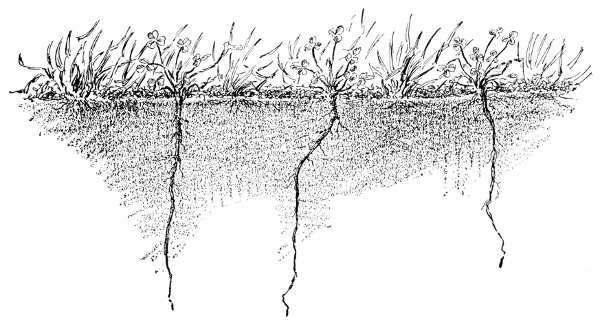
Fig. 40. The clover roots penetrate the soil deeply.
Experiment No. 11.—To prove this, put clay soil in a pot and
plant seeds; then wet the surface of the soil and puddle or pack
the clay while wet and watch for the seeds to germinate and
grow. At the same time put seeds in another pot filled with
loose, mellow, moist soil.
[124]
Frequently, after the farmer has sown his grain, there comes a
heavy, beating rain, and the surface of the soil becomes so packed
that the air is excluded and the seeds cannot germinate. If
plants are grown in pots and the water is supplied at the top, the
soil may become so hard and compact as to exclude the air and
the plants will make a sickly growth. The surface soil must be
kept loose so that the air can penetrate it.
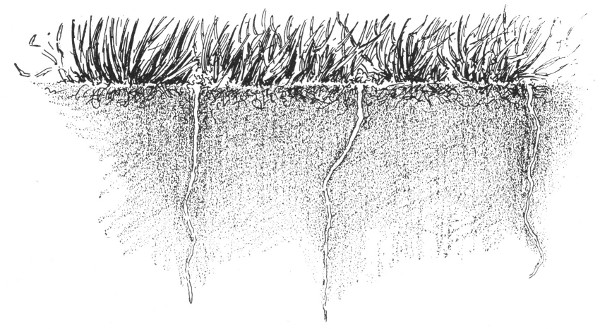
Fig. 41. After the clover dies the soil is in better condition for its having lived.
On many lawns it may be noticed that the grass is not thriving.
It has a sickly appearance, and even the application of fertilizer
does not seem to remedy the conditions. Perhaps the ground has
become so hard that the air cannot penetrate and the grass is
being smothered. If the surface of the soil can be loosened with
a garden rake, and clover seed sown, much good may be accomplished.
The clover is a tap-rooted plant, sending its main root
deep into the soil.
After the death of the plant, the root decays, and the nitrogen
which is stored in it can be used as food by the other plants.
Most useful of all, however, in such cases, the decay of the tap-root
of the clover makes a passage deep into the soil and thus
allows the air to enter. Consult Figs. 39-41.
[125]
LEAFLET X.
THE BROOK.[12]
By J. O. MARTIN.
Introduction by L. H. BAILEY.
A brook is the best of subjects for nature-study. It is near and dear to
every child. It is a world in itself. It is an epitome of the nature in
which we live. In miniature, it illustrates the forces which have shaped
much of the earth's surface. Day by day and century by century, it
carries its burden of earth-waste which it lays down in the quiet
places. Always beginning and never ceasing, it does its work as slowly
and as quietly as the drifting of the years. It is a scene of life and
activity. It reflects the sky. It is kissed by the sun. It is caressed
by the winds. The minnows play in the pools. The soft weeds grow in the
shallows. The grass and the dandelions lie on its sunny banks. The moss
and fern are sheltered in the nooks. It comes one knows not whence; it
flows one knows not whither. It awakens the desire of exploration. It is
a realm of mysteries. It typifies the flood of life. It goes "on
forever."
In many ways can the brook be made an adjunct of the school-room. One
teacher or one grade may study its physiography; another its birds;
another may plat it. Or one teacher and one grade may devote a month or
a term to one phase of it. Thus the brook may be made the center of a
life-theme.
L. H. B.
[126]
I. A BROOK AND ITS WORK.
On a rainy day most of us are driven indoors and thus we miss some of
nature's most instructive lessons, for in sunshine or rain the great
mother toils on, doing some of her hardest labor when her face is
overcast with clouds. Let us find our waterproofs, raise our umbrellas,
bid defiance to the pattering rain, and go forth to learn some of the
lessons of a rainy day.
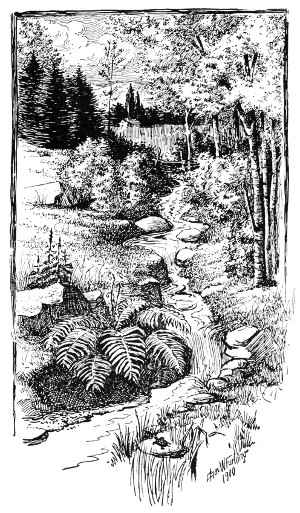
Fig. 42. The brook may be made the center of a life-theme.
Along the roadside, the steady, down-pouring rain collects into pools
and rills, or sinks out of sight in the ground. The tiny streams search
out the easiest grade and run down the road, digging little gullies as
they go. Soon these rills meet and, joining their muddy currents, flow
on with greater speed down the hillside until they reach the bottom of
the valley and go to swell the brook which flows on, through sunshine or
rain. The water which sinks into the ground passes out of sight for a
time, but its journey is also downward toward the brook, though the
soil, acting as a great sponge, holds it back and makes it take a slower
pace than the rushing surface water. This slower-moving underground
water percolates through the soil until it comes to a layer of rock,
clay, or other impervious substance, along the slope of which it flows
until it is turned again to the surface in the form of a spring. Perhaps
this spring is one of those clear, cold pools, with the water bubbling
up through its sandy bottom, from
[127]
which we love to drink on a hot summer's day; or, again, it is a swampy spot
on the hillside where the cat-tails grow. In whatever form it issues
from the ground, a tiny rill carries away its overflow, and this sooner
or later joins the brook.
The brook, we see, is simply the collected rainfall from the
hillsides, flowing away to join the river. It grows larger as other
brooks join it, and becomes a creek and finally a river. But
where is the dividing line between brook, creek, and river? So
gradually does the brook increase in volume that it would be
difficult to draw any dividing line between it and the larger
streams. And so with the rills that formed the brook: each is a
part of the river, and the names rill, brook, creek, and river are
merely relative terms.
Brooks are but rivers on a small scale; and if we study the
work that a brook is doing, we shall find it engaged in cutting
down or building up, just as the river does, although, owing to
the smaller size of the brook, we can see most of these operations
in a short distance. Let us take our way through the wet grass
and dripping trees to the brookside and see what work it is
doing.
The countless rain-born rills are pouring their muddy water
into the brook and to-day its volume is much greater than when
it is fed, as it is in fair weather, by the slower-moving underground
water of the springs. It roars along with its waters no longer
clear but full of clay and sand ("mud" as we call it).
If we should dip up a glassful of this muddy water, we should
find that when it had settled there remained on the bottom of the
glass a thin deposit of sediment. The amount of this sediment is
small, no doubt, for a single glassful, but when we think of the
great quantity of water constantly flowing by, we can see that
considerable sediment is going along with it. But this sediment
in suspension is not all the load that the brook is moving. If
you will roll up your sleeve, plunge your hand to the bottom of
the brook and hold it there quietly, you will feel the coarser
gravel and small stones rolling along the bottom.
All this load of sand and gravel comes, as we have seen, from
the valley sides, the banks of the brook, and from its bed. It is
moving downward away from its original resting place; and what
is the result? For thousands upon thousands of years, our brook
may have been carrying off its yearly load of sediment; and
though each day's labor is small, yet the added toil of centuries
[128]
has been great. The result of this labor we can see in the great
trough or valley through which the brook flows. Tennyson
speaks of the ceaseless toil of the brook in the following words:
"I chatter, chatter, as I flow
To join the brimming river,
For men may come and men may go,
But I go on forever."
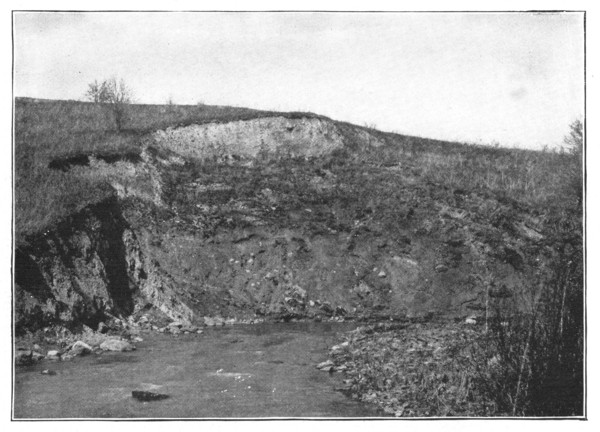
Fig. 43. A brook cutting under its bank and causing a landslide.
We have seen how the rills and torrents bring into the brook
their loads of sand, clay, and gravel; now let us walk along the bank
and see what the brook is doing to increase this load. Just here
there is a sudden turn in the channel and so sharp is the curve
that the rushing stream is not able to keep in mid-channel, but
throws itself furiously against the outer bank of the curve, eating
into the clay of which it is composed, until the bank is undermined,
allowing a mass of clay to slide down into the stream bed,
where it is eaten up and carried away by the rushing water (Fig.
43). Farther on, the brook dashes down a steep, rocky incline,
and if we listen and watch we may hear the thud of boulders
hurled along, or even see a pebble bound out of the muddy
foaming water. These moving pebbles strike against each other
[129]
and grind along the bottom, wearing out themselves as well as the
large unmovable boulders of the rocky bed of the brook. Thus
the larger stones are ground down, rounded at first but in time
reduced to sand, adding in this way to the moving burden of the
brook. By this slow process of cutting and grinding, the deep
rock gorges of New York state, like those at Watkins, Ithaca, Au
Sable Chasm, and even the mighty gorge of Niagara, have been
made. The Grand Canyon of the Colorado, over a mile in
depth, is one of the greatest
examples of stream cutting
to be found in the world.
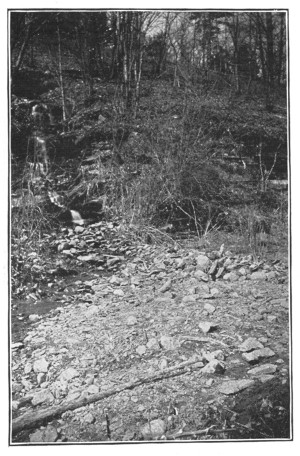
Fig. 44. A pile of brook debris deposited by the checking of the current.
Now the brook leads us into a dripping woodland, and just ahead we can
hear the roar of a little waterfall, for at this point the cutting
stream flows upon the bed rock with its alternating bands of hard and
soft rock through which the busy brook is cutting a miniature gorge.
Here is a hard layer which the stream has undermined until it stands out
as a shelf, over which the water leaps and falls in one mass with a drop
of nearly ten feet. Watch how the water below boils and eddies; think
with what force it is hammering its stone-cutting tools upon the rocky
floor. Surely here is a place where the brook is cutting fast. Notice
that swirling eddy where the water is whirling about with the speed of a
spinning top; let us remember this eddy and when the water is lower we
will try to see what is happening at its bottom.
On the other side of the woods our brook emerges into a broad
meadow; let us follow it and see what becomes of its load,
whether it is carried onward, or whether the tired brook lays
[130]
it down occasionally to rest. Out of the woods, the brook dashes down a
steep incline until the foaming tide comes to rest in a deep pool. What
becomes of the large pebbles which have been swept down? Do they go on
or do they stop? If you go to the outlet of the pool you will see that
the water is coming out with nothing in its grasp but the fine clay and
sand, the gravel and pebbles having been dropped by the less rapid
current of the pool. This is one of the most important of the brook's
lessons, for anything that tends to check the current makes it drop some
of the sediment that it carries (Fig. 44). Yonder is an old tree stump
with its crooked roots caught fast on the bottom; the mid-stream current
rushes against it only to be thrown back in a boiling eddy, and the
waters split in twain and flow by on either side with their current
somewhat checked. In the rear of the stump is a region of quiet water
where the brook is building up a pile of gravel. Farther on, the banks
of the brook are low and here the waters no longer remain in the
channel, but overflow the low land, spreading out on either side in a
broad sheet. The increased friction of this larger area reduces the
current, and again we see the brook laying down some of its load. The
sand and gravel deposited here is spread out in a flat plain called a
flood plain, because it is built up when the stream is in flood. It is
on the large flood plains of rivers that many of our richest farm lands
occur. These receive, each spring when the stream is in flood, a fresh
coating of soil mixed with fragments of vegetable matter, and thus grow
deeper and richer year by year. The flood plains of the Mississippi and
of the Nile are notable examples of this important form of stream
deposit.
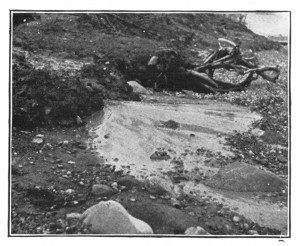
Fig. 45. A delta built by a tiny rill flowing from a
steep clay bank.
And now let us make one more rainy-day observation before
going back to our warm, dry homes. Just ahead on the other
side of that clump of alders and willows lies the pond into which
the brook flows and where its current is so checked that it gives
[131]
up almost all its burden of sediment. Close to the shore it has
dropped its heaviest fragments, while the sand and clay have been
carried farther out, each to be dropped in its turn, carefully
assorted as to size and weight. Here you can see that the stream
has partly filled this end of the pond, and it is now sending its
divided current out over the deposit which it has made in a series
of branching rivulets. This deposit is called a delta (Fig. 45), and
deltas are another important form of stream deposits. In the
lakes and ponds, deltas may grow outward until the lake is filled,
when the stream will meander across the level plain without much
current and hence without much cutting power (Fig. 46). In the
sea, great deltas are being formed in some places, like those at the
mouths of the Mississippi, the Nile, and the Ganges. Large areas
of dry land have thus been built. Deltas, like flood plains, afford
rich farming lands when they are built high enough to remain
above the water.
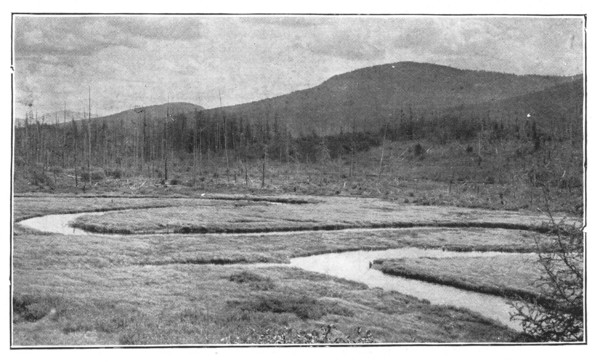
Fig. 46. A brook flowing across a pond which has been filled.
Here let us end our study of the brook for to-day, and wait
until the rain ceases and the water runs clear again; then we can
see the bottom and can also learn by contrast how much more
work the brook has been doing to-day than it does when the
volume of water is less.
On the road home, however, we can notice how the temporary
streams, as well as the everflowing brook, have been cutting and
depositing. See where this tiny rill has run down that steep
[132]
clay bank until its current was checked at the foot. Notice how
it has spread out its sediment in a fan-shaped deposit. This
form of deposit is sometimes made by larger streams, especially
in a mountainous country with plains at the foot of the slopes.
They are called alluvial fans or cone deltas (Fig. 47), but they are
not as important as flood plains and deltas.
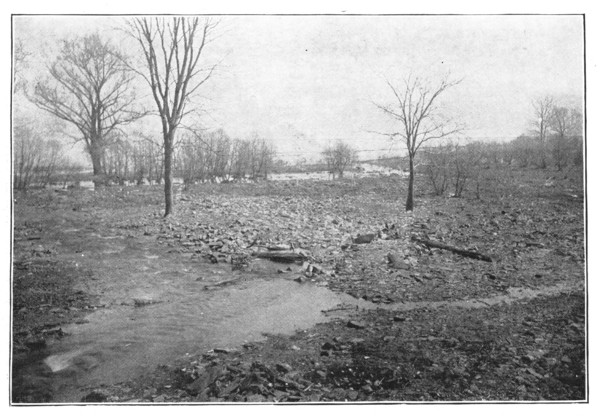
Fig. 47. A brook building a delta into a lake. Formerly the brook flowed straight ahead, but its own delta has caused it to change its direction.
The first dry, sunny morning that comes we visit the brook
again. It no longer roars, but its clear waters now sing a pleasant
melody as they ripple along the stony bed. We can see at a
glance that comparatively little work is going on to-day, and yet
if we look closely, we shall see glittering particles of sand moving
along the bottom. The clear water, however, allows us to study
the bottom which before was hidden by the load of mud.
First we see the rounded boulders and pebbles of all sizes
which must have been rolled about for a long time to make them
so smooth. Some of them are so very hard that we cannot even
scratch them with our knives; others are soft and easily broken.
What would be the effect of rolling together stones of such varying
hardness? We must think of these stones as the tools with
which the brook cuts and grinds, for water without sediment
can do little more than slightly to dissolve the rock.
[133]
Let us go at once to the little waterfall, for we shall be curious to
see what lies at the bottom of the whirling eddy that drew our attention
yesterday. As we look down into the sunlit pool we see that the eddy is
gone, for the volume of water is not great enough to cause it to
revolve, but there in the rock on the bottom is a deep basin-like hole.
In the bottom of this hole we shall see a number of well-rounded stones,
with perhaps some sand and gravel. These stones are the tools which,
whirled about by the eddying water, have cut the basin-like holes. Holes
of this sort are common in rocky stream beds, especially in the
neighborhood of falls or in places where falls have once been; they are
called pot-holes and represent another form of stream cutting (Fig.
48).
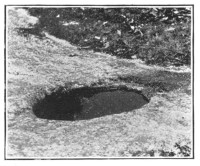
Fig. 48. A pot-hole cut in the rock of a stream's bed.
Next let us visit the flood plains which we saw forming when the water
was high. Now we shall find the brook flowing in its channel with the
flood plain deposits left high and dry. If we dig down into the flood
plain, we shall see that it is made up of successive layers varying in
thickness and in the size of the fragments. Each of these layers
represents a period of high water and the size of the fragments in the
layer tells us something of the strength of the current, and therefore
of the intensity of the flood. Some layers are thicker than others,
showing a longer period of flood, or perhaps several floods in which
there was little variation. This stratification, as it is called, is
one of the peculiarities of water deposits and it is due to the
assorting power of currents which vary in force. If we were to cut into
the delta we should find the same thing to be true,—a regular
succession of layers, though sometimes confused by changes in direction
of flow.
To-day we shall notice something which escaped our attention
when it was held by the rushing torrent—the valley bottom is
much wider than the bed of the stream; if we keep our eyes
open we shall see the explanation of this in the abandoned channels,
where, owing to some temporary obstructions, the stream
has been turned from side to side of the valley, now cutting on
one bank and now on the other. In this turning from side to
side the cutting area of the stream is increased, and it goes on
widening its valley as well as cutting it downward.
[134]
And now we have learned some of the most important ways in
which the busy brook is toiling; but there are other points which
we might have seen, and in some brooks there are special features
to be noted. However, we have learned that the brook is no
idler, that its main work is to conduct to the ocean the rain
that falls upon the earth's surface, and that in doing this it is
wearing down the hills, carrying them away only to build up in
other places. The cheerful song of the brook takes on a new
meaning as we lie in the shade and watch it hurry by. It is not
the song of idleness nor of pleasure, but like the song with which
a cheerful and tireless worker seeks to make its task lighter.
[135]
LEAFLET XI.
INSECT LIFE OF A BROOK.[13]
By MARY ROGERS MILLER.
What wader, be he boy or water-fowl, has
not watched the water-insects? How
they dart hither and thither, some skimming
the surface, others sturdily rowing
about in the clear shallows! The
sunlight fastens, for an instant, their
grotesque reflections on the smooth
bottom, then away—the shadow is lost,
except for the picture it left in the
memory of the onlooker.
The splashing, dashing wader, with
his shout and his all-disturbing stick, stands but a poor chance
of making intimate acquaintances among water-folk. Your true
brook-lover is a quiet individual except when occasion demands
action. The lad who, from the vantage ground of a fallen log or
overhanging bank, looks down on the housekeeping affairs of his
tiny neighbors has the right spirit. Indeed, I doubt whether
these little folk are aware of his presence or curiosity.
Time was when the enjoyment of brook-life was limited to
boys. White aprons, dainty slippers and fear of being called
"Tom-boy" restrained the natural impulses of the "little women."
Happily that day is past, and it no longer looks queer for girls to
live in the open air and sunshine, free to chase butterflies and
hunt water-bugs with their brothers.
My brooks abound in swift eddies, perfect whirlpools in miniature,
and water-falls of assorted sizes. They have also their quiet
reaches, where whirligig beetles perform their marvelous gyrations,
and bright-eyed polliwogs twirl their tails in early May.
On the banks are ferns and mosses; sometimes willows and
alders form a fringing border.
The heart-leaved willows along many brooksides are found to [136] bear at the tips of many of their
branches, knob-like bodies which look like pine cones. (Fig. 49.) Now
everybody knows that willows bear their seeds in catkins. Why, then,
should so many brookside willows thrust these cones in our faces? On
cutting one of the cones open, we learn the secret. A tiny colorless
grub rolls helplessly out of a cell in the very centre of the cone. It
is the young of a small gnat, scarcely larger than a mosquito, and known
as a "gall gnat." The cone-shaped body on the willow branch is called a
"pine-cone willow-gall." The little gray gnat comes out in the spring.
Any one can collect the galls from the willows and keep them in some
kind of cage in the house until the gnats come forth.
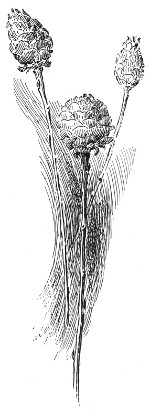
Fig. 49. Knob-like bodies resembling pine cones.
The pine-cone gall is an enlarged and deformed bud. The twig might have
developed into a branch but for the presence of the little larva. The
scales of the cone are the parts which under more favorable conditions
would have been leaves. The brook-lover cannot afford to miss the
pine-cone willow-galls.
Wandering along the brookside in spring
or early summer, one is surprised to find so
many insect visitors darting about in the
air. There are dragon-flies of many shapes,
sizes and colors; dainty damsel-flies perch
airily on reeds, their gleaming wings a-flutter
in the sunshine; sometimes a nervous
mud-wasp alights for a moment, and then
up and away. The dragon-flies seem intent
on coming as near to the water as possible without wetting
their wings. They pay no heed to other visitors, yet how easily
they escape the net of the would be collector! Let them alone.
Their business is important if we would have a new generation of
dragon-flies to delight the eye next year. The eggs of these
creatures are left in the water and the young ones are aquatic.
If you would know more of them, dip down into the stream in
some sluggish bay. Dip deep and trail the net among the water
plants. Besides dragon-fly nymphs there will be caddice-worm
cases like tiny cob-houses, water-boatmen, back-swimmers, and
[137]
giant water-bugs.[14] These are insects characteristic of still or
sluggish water, and are found
in spring and summer.
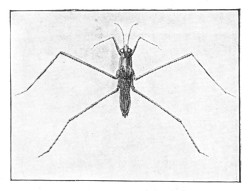
Fig. 50. Water-striders have long, thin legs.
The insects which skip lightly over the surface of the water where the
current is not too strong, are water-striders. (Fig. 50.) Some are short
and stout, others slender-bodied; but all have long thin legs. Their
color is nearly black. As they scurry about in the sunshine the
delighted watcher will sometimes catch a glimpse of their reflections on
the bottom. Six oval bits of shadow, outlined by rims of light; there is
nothing else like it! Be sure you see it.
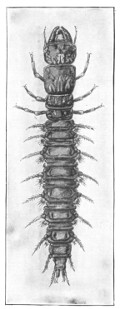
Fig. 51. The dobson makes no pretensions to beauty. (Natural size).
Let us leave the quiet, restful pools and the sluggish bays, and follow
the hurrying water to the rapids. Every stone changes the course of the
current and the babble makes glad the heart of the wayfarer. Let us
"leave no stone unturned," until we have routed from his favorite haunt
that genius of the rapids, the dobson. (Fig. 51.) These creatures bear
other common names. They are prized by fishermen in the black bass
season. Dirty brown in color and frankly ugly in appearance and
disposition, these larvæ, for such they are, have little to fear from
the casual visitor at the water's edge. When a stone is lifted, the
dobsons beneath it allow themselves to be hurried along for some
distance by the current. The danger over, they "catch hold" and await
their prey farther down stream. In spite of their vicious looking jaws
these insects are not
[138]
venomous. At the very worst they could do no more than pinch
the finger of the unwary explorer.
When the dobson is full grown, it is called a hellgrammite fly or horned
corydalis. It has lost none of its ugliness, though it has gained two
pairs of thin, brownish-gray wings, and flies about in the evening. It
has been known to create some consternation by flying in at an open
window. It is harmless and short-lived in the adult stage.
Upturned stones are likely to bring
to view other strangers. Lying close
against these wet stony surfaces one
usually finds young May-flies. (Fig. 52.[15])
These, like the young dragon-flies, are
called nymphs.
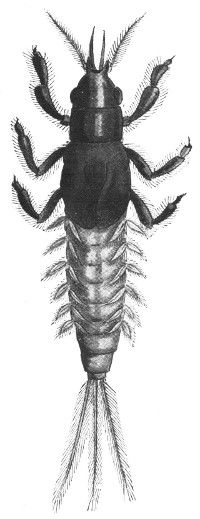
Fig. 52. May-fly nymph. (Three times natural size)
When they are ready to leave the water they make their way to the shore,
and, clinging to some convenient tree trunk or building, they shed their
nymph skins. I have seen trees and buildings on the banks of the St.
Lawrence river literally covered with these cast skins. In the early
morning in June and July one may watch the molting process, the
unfolding of the gauzy wings, and the unsheathing of the long filaments.
(Fig. 53.)
Do not believe that May-flies are harmful. They are sometimes too
numerous for comfort at summer resorts where myriads of them swarm about
the lights; but stories of their stinging and biting are entirely
without foundation. They are short-lived in the adult stage. The name of
the family to which they belong, Ephemeridæ, suggests their ephemeral
existence. It is of these that poets have sung.
Stone-fly nymphs, also, cling closely to the flat stones. The
cast skins of these are frequently found on the banks of streams.
[139]
They resemble the May-fly nymphs but can be identified by a
comparison with these illustrations. (Fig. 54.)
Sometimes on the very brink of a cataract one will see what
appear like patches of loose black moss. Strangely enough, these
are the larvæ of black-flies, related to the terrible black-fly
of the north woods. The black-fly larvæ can live only in the
swiftest water. There they pass through their transformations
and succeed in emerging into their aërial stage, in spite of the
rushing current.
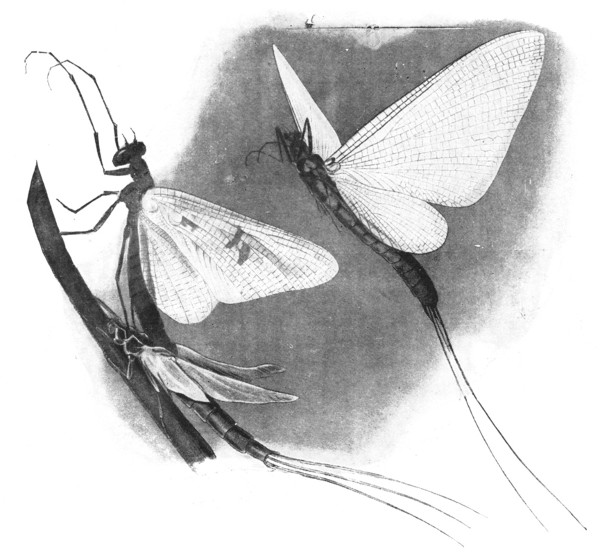
Fig. 53. The May-fly sheds its nymph skin. (Twice natural size.)
All these things and many more are seen by those who
frequent the water brooks. Observers cannot tell all they see,
for some things are too deep for words. They can and do say
to one and all, "Come, let us visit the brook together. The
[140]
water and all that dwell in it and round about, invite us and
make us welcome."
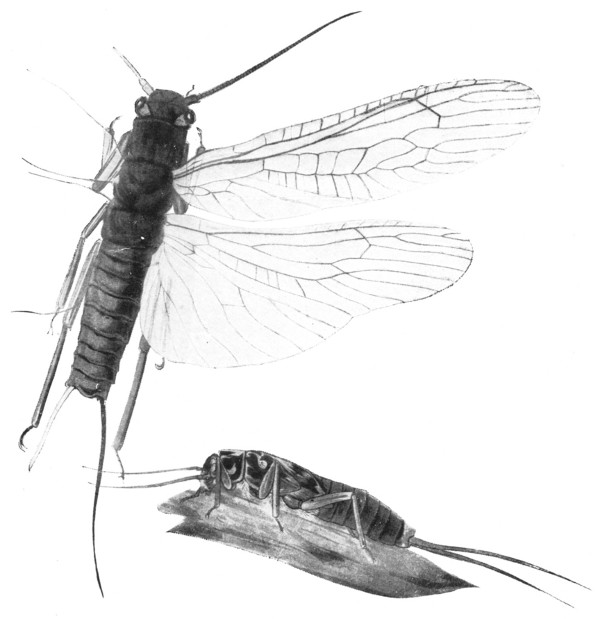
Fig. 54. Stone-fly, showing one pair of wings. The lower figure is a nymph.
(Twice natural size.)
[141]
LEAFLET XII.
LIFE IN AN AQUARIUM.[16]
By MARY ROGERS MILLER.
There is no more fascinating adjunct to
nature-study than a well-kept aquarium.
It is a never-ending source of enjoyment,
interest and instruction to students of any
age. Children in the kindergarten or at
home will watch with delight the lively occupants,
which cut all sorts of queer capers
for their amusement, and older people may
read some of nature's choicest secrets through the glassy sides of
the little water world. To many, the word aquarium suggests a
vision of an elaborately constructed glass box, ornamented with
impossible rock-work and strange water plants, or a globe in which
discouraged and sickly-looking gold-fish appear and disappear,
and take strange, uncanny shapes as they dart hither and thither.
Such forms of aquaria have their place in the world, but they
are not suited to the needs of an ordinary school-room. Every
school may have some sort of an aquarium if the teacher and
pupils are willing to give it some daily thought and care. Without
such attention a fine aquarium may become an unsightly and
disagreeable object, its inhabitants unhealthy and its beauty and
usefulness lost.
The great fundamental principle underlying success in making
and maintaining an aquarium is this: imitate nature. We all know
how much easier it is to formulate a principle, and even to write
a book about it, than to put it into practice. Most of us have
not had the time and opportunity for the close observation of
nature necessary to interpret her methods and to imitate her. It
is to those teachers who are anxious to learn what nature has to
teach and who wish to lead their pupils to a higher and wider
conception of life, that these suggestions are offered.
Four things are important in making and keeping an aquarium:
1. The equilibrium between plant and animal life must be
[142]
secured and maintained. It is probable that an aquarium in an elementary
school is mainly used for the study of animal life; but animals do not
thrive in water where no plants are growing. Nature keeps plants and
animals in the same pond and we must follow her lead. The plants have
three valuable functions in the aquarium. First, they supply food for
the herbivorous creatures. Second, they give off a quantity of oxygen
which is necessary to the life of the animals. Third, they take up from
the water the harmful carbonic acid gas which passes from the bodies of
the animals. Just how the plants do this is another story.
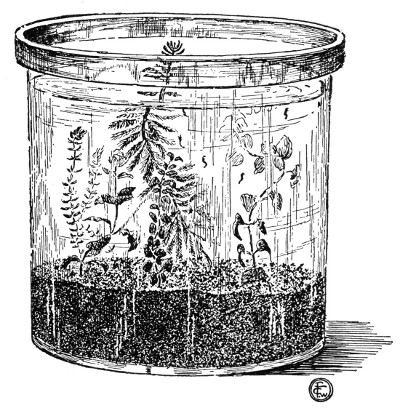
Fig. 55. A museum-jar aquarium. (More animal
life would make a better equilibrium.)
2. The aquarium must be ventilated. Its top should be broad
and open. Every little fish, snail and insect wants air, just as
every boy and girl wants it. A certain quantity of air is mixed
with the water, and the creatures must breathe that or come to
the surface for their supply. How does Mother Nature manage
the ventilation of her aquaria,—the ponds and streams? The
plants furnish part of the air, as we have said. The open pond,
whose surface is ruffled by every passing breeze, is constantly
being provided with fresh air. A tadpole or a fish can no more
live in a long-necked bottle than a boy can live in a chimney.
3. The temperature should be kept between 40° and 50° Fahr.
Both nature and experience teach us this. A shady corner is a
better place for the aquarium than a sunny window on a warm day.
4. It is well to choose such animals for the aquarium as are adapted
to life in still water. Unless one has an arrangement of water pipes
to supply a constant flow of water through the aquarium, it is
better not to try to keep creatures that we find in swift streams.
[143]
Practical experience shows that there are certain dangers to
guard against,—dangers which may result in the unnecessary suffering
of the innocent. Perhaps the most serious results come
from overstocking. It is better to have too few plants or animals
than too many of either. A great deal of light, especially bright
sunlight, is not good for the aquarium. A pond that is not shaded
soon becomes green with a thick growth of slime or algæ. This
does not look well in an aquarium and is likely to take up so much of
the plant-food that the other plants are "starved out." The plants
in the school-room window may provide shade for the aquarium,
just as the trees and shrubs on its banks shade the pond. If we
find green slime forming on the light side of our miniature pond,
we should put it in a darker place, shade it heavily so that the
light comes in from the top only, and put in a few more snails.
These will make quick work of the green slime, since they are
fond of it, if we are not.
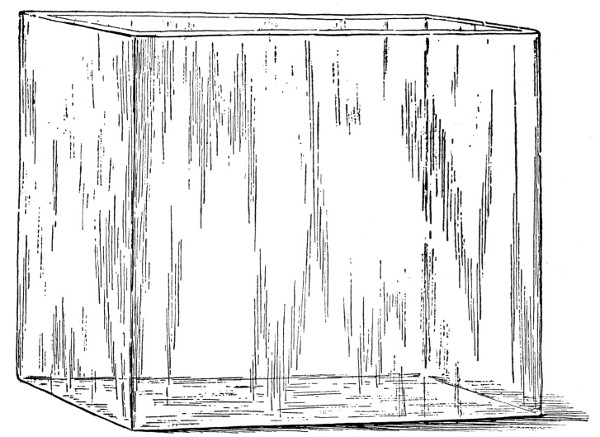
Fig. 56. A rectangular glass aquarium.
Some of the most innocent-looking "water nymphs" may be
concealing habits that we can hardly approve. There are some
which feed on their smaller and weaker neighbors, and even on
the members of their own families. We know that such things go
on in nature, but if we wish to have a happy family we must keep
the cannibals by themselves.
After an aquarium has been filled with water and the inhabitants
[144]
well established, it is not necessary to change the water,
except in case of accident. The water that is lost by evaporation
has to be replaced. It should be poured in gently in order not to
disturb the water and destroy its clearness. If a piece of rubber
tubing is available, a practical use of the siphon can be shown and
the aquarium replenished at the same time. It is a good plan to
use rain water, or clear water from a pond, for this purpose.
A piece of thin board or a pane of glass may be used as a cover
to keep the dust out of the aquarium. This need not fit tightly
or be left on all the time. A wire netting or a cover of thin cotton
net would keep the flying insects from escaping, and it might
be tied on permanently. Dust may be skimmed off the top of the
water or may be removed by laying pieces of blotting paper on
the surface for a moment.
If any of the inhabitants do not take kindly to the life in the
aquarium, they can be taken out and kept in a jar by themselves—a
sort of fresh air and cold water cure. If any chance to die
they ought to be removed before they make the water unfit for
the others. Bits of charcoal in the water are helpful if a deodorizer
or disinfectant is needed.
Experience, the dear but thorough teacher, is of more value to every one
of us than many rules and precepts. Nothing can rob us of the pleasure
that comes of finding things out for ourselves. Much of the fun as well
as much of the success in life comes from overcoming its difficulties.
One must have a large store of patience and courage and hopefulness to
undertake the care of an aquarium. After it is once made it is less
trouble to take care of than a canary or a pet rabbit. But most things
that are worth doing require patience, courage and hopefulness, and if
we can add to our store of any of these by our study of life in an
aquarium we are so much the better for it.
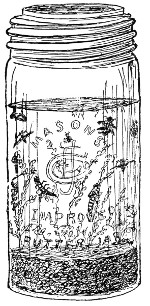
Fig. 57. A home-made aquarium.
Two kinds of aquaria will be found
useful in any school. Permanent ones—those
which are expected to continue
through a season or through a whole year
[145]
if the school-room is warm enough to prevent freezing; and temporary
ones—those which are for lesson hours or for the study
of special forms.
If some one phase in the life of any aquatic animal is to be
studied during a short period, it is well to have special temporary
aquaria. Also, when a talk on some of the occupants of the
larger aquarium is to be given, specimens may be placed in small
vessels for the time being and returned later. For such purposes
glass tumblers can be used, or small fruit jars, finger bowls, broken
goblets set in blocks of wood, ordinary white bowls or dishes, tubs,
pails or tanks for large fishes,—in fact any wide-mouthed vessel
which is easy to get. Special suggestions will be made in connection
with the study of some of the water insects and others.
A permanent aquarium need not be an expensive affair. The
rectangular ones are best if large fishes are to be kept, yet they
are not essential. Here, again, it is easier to write directions for
the construction of a perfect aquarium than it is for the most
patient teacher, with the help of the boys who are handy with
tools, to put together a box of wood and glass that will not
spring a leak some day and spoil everything. But failures do not
discourage us; they make us only more determined. If a rectangular
water-tight box is out of the question, what is the next
best thing? One of the busiest laboratories in New York State
has plants and animals living in jars of all shapes and sizes,—fruit
jars, glass butter jars, candy jars, battery jars, museum jars, and
others of like nature. There are rectangular and round aquaria
of various sizes kept by all firms who deal in laboratory supplies,
and if some money is to be spent, one of these is a good investment.
Fig. 56 shows one of these rectangular ones, and Fig. 57
shows a round one of small size which is useful and does not cost
much.
A Good School Aquarium.
A cheap, substantial aquarium for general use may be made of
glass and "angle" or "valley" tin. Pieces of glass are always
handy and the tin can be had at any tin-shop. The tinsmith will
know just how to cut, "angle" and solder it.
The following directions for making an aquarium of this kind
are supplied us by Professor C. F. Hodge of Clark University.
He has made and used them for years with great satisfaction in
the university laboratory and in graded schools.
[146]
The illustration (Fig. 58, 59) shows various sizes. A good
all-round size has these dimensions: 12 inches high, 15 inches long
and 8 inches wide. One may use spoiled photographic plates for
small desk aquaria, in which to watch the development of "wigglers,"
dragon-fly nymphs or other water insects. Lids of wire screen are
shown on some of the aquaria in the picture (1, 2 and 3).
To make the frame.—If the aquarium is to be 10 x 8 x 5 inches,
we shall need two pieces of glass for sides 10 x 5 inches, two for
ends 8 x 10, and one for bottom 8 x 5; and two strips of tin 3/4
inch wide, 28 inches long, and four strips 103/8 inches long. These
should be angled by the tinner, and out of them we shall make
the frame. The 28-inch strips should be cut with tinner's snips
half way in two at 103/8, 53/8, 103/8 and 53/8 inches, cutting off the
end at the last mark. This keeps the top and the bottom of the
frame each in one piece. Next we bend them into shape. When
the corners are well squared they should be soldered. The four
103/8 pieces make the vertical corners and we will solder them in
place. An easy way to be sure that each angle is square is to
hold it in a mechanic's square while soldering it.
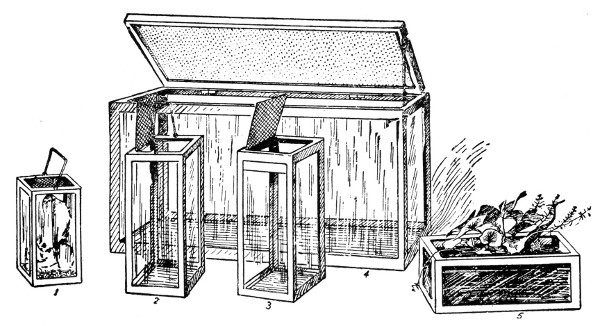
Figs. 58, 59. Permanent aquarium made of tin and glass.
To set the glass.—Lay the aquarium cement (see recipe) on
evenly all around the bottom of the frame and press the bottom
glass into place. Put in the sides and ends in the same way.
Next carefully put a few very limber twigs into the aquarium to
hold the glass against the frame till the cement takes hold. Cut
off the extra cement with a knife and smooth it nicely. Cover
[147]
the frame with asphaltum varnish or black lacquer. In a week
it will be ready to use.
Double thick glass must be used for large aquaria.
Cement.—Shun all resinous cements that require to be put on
hot. The following is a recipe for cement used in successful
angle tin aquaria, for both salt and fresh water:
- 10 parts, by measure, fine, dry, white sand,
- 10 parts plaster of Paris,
- 10 parts litharge,
- 1 part powdered resin.
Stir well together and, as wanted, mix to consistency of stiff
putty with pure boiled linseed oil.
The formula given by the U. S. Fish Commission is recommended:
- 8 parts putty,
- 1 part red lead,
- 1 part litharge.
Mix, when wanted, to consistency of stiff putty, with raw linseed oil.
After reading all these directions and getting the idea of an
aquarium, one should think the whole matter out for himself and
make it just as he wants it. Directions are useful as suggestions only.
The shallow form is better for raising toads, frogs and insect larvæ;
the deeper aquaria show water plants and fishes to better advantage.
Inhabitants of the Aquarium.
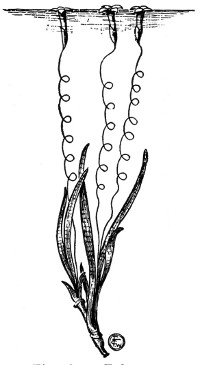
Fig. 60. Eel-grass.
It is now time to begin to think about
what shall be kept in the aquarium. At the
bottom a layer of sand, the cleaner the better,
two or three inches deep will be needed.
A few stones, not too large, may be dropped
in on top of this first layer, to make it more
natural. The water plants come next and
will thrive best if planted securely in the
sand. The most difficult thing is to get the
water in without stirring things up. A good
way is to pour the water in a slow stream
against the inside of the aquarium. The
best way is to use a rubber tube siphon, but
even then the water ought not to flow from
a very great height. If the aquarium is
large, it had better be put in its permanent
place before filling.
The aquarium will soon be ready for snails,
polliwogs, and what ever else we may wish to put into it. In the
[148]
course of a few days the plants will be giving up oxygen and asking
for carbon dioxid.
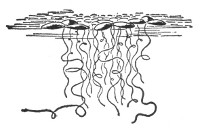
Fig. 61. Duck-weed.
Plants that thrive and are useful in aquaria.—Many of the common
marsh or pond plants are suitable. The accompanying illustrations
show a few of these. Nothing can be prettier than some
of these soft, delicate plants in the water.
The eel-grass, or tape grass (Fig. 60), is
an interesting study in itself, especially at
blossoming time when the spiral stems,
bearing flowers, appear.
Any who are especially interested in
the life-history of this plant may read in
reference books a great deal about what
other observers have learned from the plant concerning its methods
of growth and development. The best that we learn will be what
the plant itself tells us day by day.
Some of the best reference books on both plant and animal life
are found in the New York State Teachers' Library and can be
obtained by teachers through the school commissioners.
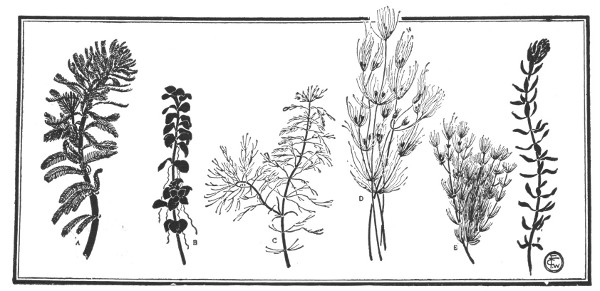
Fig. 62. Water plants.
Every boy and girl who likes to taste the fresh, peppery plants
which they find growing in cold springs, knows watercress. If the
aquarium is not too deep, this plant will grow above the surface
and furnish a resting place for some snail which, tired perhaps by
its constant activity, enjoys a few minutes in the open air.
Duck-weed or duck's-meat (Fig. 61) grows on the surface, dangling
its long thread-like roots in the water. A little of it is enough.
Too much would keep us from looking down upon our little
friends in the water.
[149]
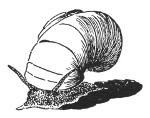
Fig. 63. Snail.
The parrot's feather (Fig. 62, A) is an ornamental water plant
that can be obtained from a florist; a plant that looks very like it
grows in our ponds. It is called water-milfoil.
The water purslane, B, or the common stoneworts, Nitella and
Chara, D, E, the waterweed, F, and the horn-wort, C, appear graceful
and pretty in the water. If you do not find any of these, you are
sure to find others growing in the ponds in your neighborhood
which will answer the purpose just as well.
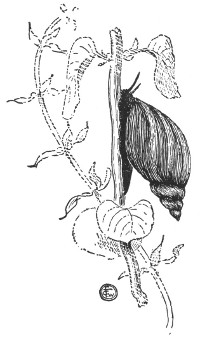
Fig. 64. Snail with conical shell.
Animals that may be kept in aquaria.—The snail. The common
pond snail with the spiral shell, either flat or conical, can be found
clinging to the stems of the cat-tails or flags and to floating rubbish
in ponds or swamps. If these are picked off carefully and taken home in
a pail of water they will be valuable inhabitants for the aquarium. They
are vegetable feeders and unless there is some green slime in the water,
cabbage or lettuce leaves may be put where the snails can get them. The
eggs of the snail are excellent food for fishes, and if a few could be
secured for special study, their form, habits and development may be
made delightful observation and drawing lessons. Snails can be kept out
of the water for some time on moist earth. Land snails and slugs should
be kept on wet sand and fed with lettuce and cabbage leaves. The common
slug of the garden is often injurious to vegetation. It may always be
tracked by the trail of slime it leaves behind it. Gardeners often
protect plants from those creatures by sprinkling wood-ashes about them.
Minnows. Every boy knows where to find these spry little fellows. They
can be collected with a dipper or net and will thrive in an aquarium if
fed with earth worms or flies or other insects. If kept in small
quarters where food is scarce, they will soon dispatch the other
occupants of the jar. They will, however, eat bits of fresh meat. If the
aquarium is large enough, it would hardly be complete without minnows.
[150]
Cat fish.—It will not be practicable to keep a cat fish in the
permanent aquarium. If one is to be studied it can be obtained
at any fish market or by angling, the latter a slow method, but one
which will appeal to every boy in the class. The cat fish should
be kept in a tub, tank, or large pan of water, and if not wanted for
laboratory work, they might be fried for lunch, as cat fish are very
good eating.
Gold fish are a special delight if kept in large aquaria. These
may often be obtained from dealers in the larger cities. Those
who wish other fish for study should be able to get information
from the New York State Fish Culturist, concerning the species
that are suited to life in still water, and how to get and take
care of them.
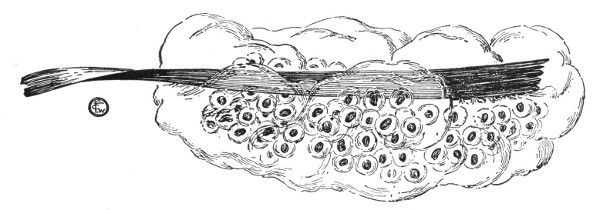
Fig. 65. "Frog spawn."
The clam.—If empty clam shells are plenty on the bank of
some stream after a freshet, a supply of clams may be obtained by
raking the mud or sand at the bottom of the stream. They can be
kept in a shallow pan, and if the water is warmish and they are left
undisturbed for a time, they will move about. If kept in a jar of
damp sand they will probably bury themselves. They feed on
microscopic plants and might not thrive in the permanent aquarium.
Crawfish or crayfish.—These can be collected with nets from
under stones in creeks or ponds. They can live very comfortably
out of the water part of the time. There is small chance for
the unsuspecting snail or water insect which comes within reach
of the hungry jaws of the crawfish, and the temporary aquarium
is the safest place for him. Many who live near the ocean can
obtain and keep in sea water the lobster, a cousin of the crawfish,
and will find that the habits of either will afford much amusement
as well as instruction. The school boy generally knows the
crawfish as a "crab."
The frog.—The study of the development of the common frog
[151]
is accompanied with little or no difficulty. To be sure there are some
species which require two or three years to complete their growth and
changes, from the egg to the adult, yet most of the changes can be seen
in one year. Frogs are not at all shy in the spring, proclaiming their
whereabouts in no uncertain tones from every pond in the neighborhood.
The "frog spawn" can be found clinging to plants or rubbish in masses
varying in size from a cluster of two or three eggs to great lumps as
large as the two fists. The "spawn" is a transparent jelly in which the
eggs are imbedded. Each egg is dark colored, spherical in shape, and
about as large as a small pea. The eggs of the small spotted salamander
are found in similar masses of jelly and look very much like the frog's
eggs. If a small quantity of this jelly-like mass be secured by means of
a collecting net or by wading in for it, it may be kept in a flat white
dish with just enough clean, cool water to cover it, until the young
tadpoles have hatched. As they grow larger a few may be transferred to a
permanent aquarium prepared especially for them in a dish with sloping
sides, and their changes watched from week to week through the season.
The growing polliwog feeds on vegetable diet; what does the full grown
frog eat?
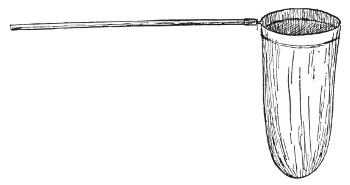
Fig. 66. A useful net for general collecting.
Insects that can be kept in aquaria.—Insects are to many the
most satisfactory creatures that can be keep in aquaria. They are
plentiful, easy to get, each one of the many kinds seems to have habits
peculiar to itself, and each more curious and interesting than the last.
Some insects spend their entire life in the water; others are aquatic
during one stage of their existence only. Those described here are a few
of the common ones in ponds and sluggish streams, of the central part of
the state of New York. If these cannot be found, others just as
interesting may be kept instead. One can hardly make a single dip with a
net without bringing out of their hiding places many of these "little
people."
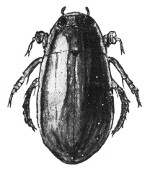
Fig. 67. The predaceous diving-beetle.
The predaceous diving-beetle (Fig. 67) is well named. He is a
diver by profession and is a skilled one. The young of this
[152]
beetle are known as "water-tigers" (Fig. 68), and their habits
justify the name. Their food consists of the young of other
insects; in fact it is better to keep them by themselves unless
we wish to have the aquarium depopulated. When the tiger has
reached his full size, his form changes and he rests for a time as a
pupa; then comes forth as a hard, shiny beetle like Fig. 67.
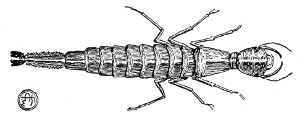
Fig. 68. A water-tiger.
The water-scavenger beetle (Fig. 69), so called because of its appetite
for decayed matter, is common in many ponds. It has, like the diving
beetle, a hard, shiny back, with a straight line down the middle, but
the two can be distinguished when seen together. The young of this
beetle look and act something like the water-tigers, but have not such
great ugly jaws.
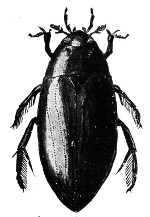
Fig. 69. A water-scavenger beetle.
There are three other swimmers even
more delightful to watch than those already
mentioned. The water-boatmen (Fig. 70),
with their sturdy oar-like legs and business-like
way of using them, are droll little
fellows. They are not so large as the back-swimmers.
Fig. 71 shows a back-swimmer
just in the act of pulling a stroke. These
creatures swim with their boat-shaped backs
down and their six legs up. We must be
careful how we handle the back-swimmers,
for each one of them carries a sharp bill
and may give us a thrust with it which
would be painful, perhaps poisonous.
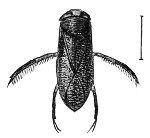
Fig. 70. Water-boatman.
The water-scorpion (Fig. 72) is a queer
creature living in a neighborly way with the
boatmen and back-swimmers, though not so
easy to find. Do not throw away any dirty
little twig which you find in the net after a
dip among water plants near the bottom of
a stream or pond. It may begin to squirm
and reveal the fact that it is no twig but a
slender-legged insect with a spindle-shaped
body. We may handle it without danger, as it is harmless. This
[153]
is a water-scorpion, and his way of catching his prey and getting
his air supply will be interesting to watch. He is not shy and will
answer questions about himself promptly and
cheerfully. Fig. 72 will give an idea of the
size and appearance of this insect.

Fig. 71. A back-swimmer.
No water insect except the big scavenger beetle can begin to compare in
size with the giant water-bug (Fig. 73). We may think at first that he
is a beetle, yet the way he crosses his wings on his back proves him a
true bug. In quiet ponds these giants are common enough, but the boy or
girl who "bags" a full-grown one at the first dip of the net may be
considered lucky.
The boatmen, back-swimmers and giants all have oars, yet are not
entirely dependent on them. They have strong wings, too, and if their
old home gets too thickly settled, and the other insects on which they
feed are scarce, they fly away to other places. The giant water-bug
often migrates at night, and is attracted to any bright light he sees in
his journey. This habit has given him the popular name of
"electric-light bug."
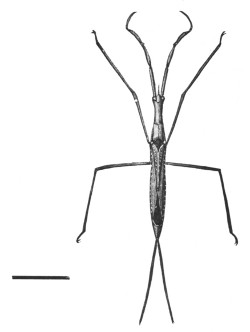
Fig. 72. Water-scorpion.
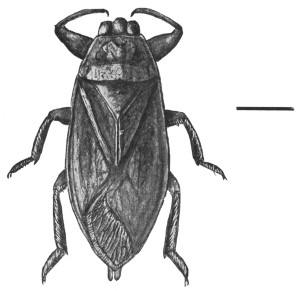
Fig. 73. Giant water-bug.
Among the insects which spend but part of their life in the water, we
shall find many surprises. It made us feel queer when we learned that
the restless but innocent-looking wiggler of the rain-water barrel was
really the young of the too familiar mosquito.
[154]
The adult mosquito leaves its eggs in tiny boat-shaped masses on the
surface of stagnant water, where food will be abundant for the young
which soon appear. Some time is spent by the wigglers in eating and
growing before they curl up into pupæ. Insects are rarely active in the
pupa stage. The mosquito is one of the very few exceptions. From these
lively pupæ the full-grown mosquitoes emerge. Fig. 74 shows a small
glass tumbler in which are seen the three aquatic stages of the
mosquito's life and an adult just leaving the pupa skin. Nothing is
easier than to watch the entire development of the mosquito, and the
changes must be seen to be fully enjoyed and appreciated. It would be
interesting to note the differences between the mosquitoes that come out
of the small aquaria. A supply of wigglers may be kept in the permanent
aquarium where they serve as food for the other insects.
Every child knows the dragon-fly or darning-needle, and none but the
bravest of them dare venture near one without covering ears or eyes or
mouth, for fear of being sewed. Many and wide-spread are the
superstitions concerning this insect, and it is often difficult to bring
children to believe that this creature, besides being a thing of beauty,
is not only harmless but actually beneficial. If they knew how many
mosquitoes the darning-needle eats in a day they would welcome instead of
fearing the gay creature.
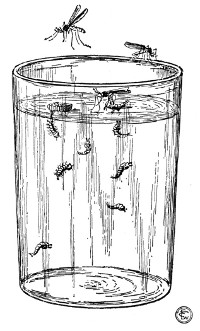
Fig. 74. Temporary aquarium, containing eggs, larvæ and pupæ of mosquito.
The young of the dragon-fly live a groveling existence, as different
as can be from that of their sun-loving parents. Their food
consists of mosquito larvæ, water-fleas and the like, and their
method of catching their prey is as novel as it is effective. Pupils
and teacher can get plenty of good healthy entertainment out of
the behavior of these awkward and voracious little mask-wearers.
The first dip of the net usually brings up a supply of dragon-fly
nymphs and of their more slender cousins, the damsel-fly nymphs.
The latter have expanded plate-like appendages at the hind end
of the body which distinguish them from the dragon-fly nymphs.
[155]
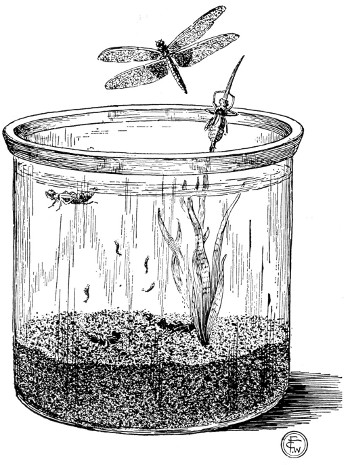
Fig. 75. The life history of a dragon-fly as seen in an aquarium.
The transformation of one of these young insects into an adult is one of
the most interesting observation lessons that can be imagined for a warm
spring morning. If a dragon-fly nymph should signify its intention of
changing its form in my school-room, I should certainly suspend all
ordinary work and attend to him alone. Each child should see if possible
this wonderful transfiguration.
Floating in the water of a pond or stream one may find a little bundle
of grass or weed stems, with perhaps a tiny pebble clinging to the mass.
Close examination will prove this to be the "house-boat" of one of our
insect neighbors, the caddice-worm. Contrasting strangely with the
untidy exterior is the neat interior, with its lining of delicate silk,
so smooth that the soft-bodied creature which lives inside is safe from
injury. The commonest of the many forms of houses found here are those
illustrated in Figs. 76 and 77. These will find all they wish to eat in
a well-stocked aquarium. When full grown they will leave the water as
winged creatures, like Fig. 78, and return to its depths no more.

Fig. 76. Case of caddice-worm
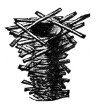
Fig. 77. Another caddice-worm case.
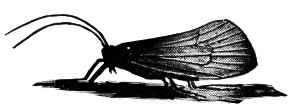
Fig. 78. Caddice-fly.
There is surely no lack of material furnished by Mother Nature
[156]
for the study of aquatic life. Every one who really believes in its
usefulness can have an aquarium, and will feel well repaid for the
time and effort required when the renewed interest in nature is
witnessed which this close contact with living beings brings to
every student. Let us take hold with a will, overcome the
difficulties in the way, and teacher and pupils become students
together.
[157]
LEAFLET XIII.
A STUDY OF FISHES.[17]
By H. D. REED.
The first forms of animal life which attract the young naturalist's
attention are doubtless the birds. These are most interesting to him
because of their beautiful colors, their sweet songs, and the grace with
which they fly. But who has watched the fishes in a brook or an aquarium
and is not able to grant them a place, in beauty, grace and delicate
coloration, equal to the birds? To be sure, fishes cannot sing, yet
there are so many other interesting facts in connection with their
habits and life-histories that it fully makes up for their lack of
voice.
The Parts of a Fish.
While observing a living fish and admiring its beauty, it will
probably occur to some of us that a fish consists only of a head
and tail. Yet this is not all. Between the head and tail is a part
that we may call the trunk. It contains the digestive and other
organs. There is no indication of a neck in a fish. Any such
constriction would destroy the regular outline of the animal's
body and thus retard the speed with which it moves through the
water. But head, trunk and tail are not all. There are attached
to the outer side of the fish's body certain appendages that are
called fins.
Before discussing some of the different kinds of fishes and their
habits, it will be necessary to learn something about fins, for the
fins of all fishes are not alike. When a fish moves through the
water, it bends its tail first to one side and then to the other.
This undulatory movement, as it is called, pushes the fish's body
ahead. One can observe the movements easily upon a specimen
kept alive in an aquarium jar. At the extreme end of the tail
[158]
there is a broad, notched fin which aids the tail in propelling and
steering the body. We will call this the tail or caudal fin (Fig. 79
B). In most of our common fishes there are seven fins—six without the
caudal. The first of these six is a large fin situated near the middle
of the back. This is the back or dorsal fin (Fig. 79 A). Sometimes
we may find a fish that has two dorsal fins. In this case the one
nearest the head is called first dorsal and the next one behind it the
second dorsal. Near the head, in a position corresponding to our arms,
is a pair of fins which are called the arm or pectoral fins (Fig. 79
E). Farther back towards the tail, on the under side of the fish, is
another pair, corresponding in position to the hind legs of a quadruped.
This pair is called the leg or pelvic fins (Fig. 79 D). Just behind
the pelvic fins is a single fin, situated on the middle line of the
body. This is the anal fin (Fig. 79 C). The pectoral and pelvic fins
are called paired fins because they are in pairs. The others which are
not in pairs are called median fins, because they are situated on the
middle line of the body. The paired fins serve as delicate balancers to
keep the body right side up and to regulate speed. They are also used to
propel the body backwards. After naming the different fins of the fish
in the schoolroom aquarium, it will be interesting to observe the uses
of each.
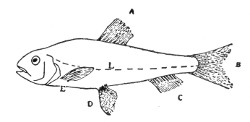
Fig. 79. Diagram of a fish to show: A, dorsal fin; B,
caudal fin; C, anal fin; D, pelvic fins; E, pectoral fins; L, lateral
line.
On the side of the body, extending from the head to the caudal
fin, is, in most fishes, a line made up of a series of small tubes
which open upon the surface. This is called the lateral line, and
acts in the capacity of a sense organ (Fig. 79 L). Is the lateral
line straight or curved? Does it curve upwards or downwards?
Does the curvature differ in different kinds of fishes? Do all the
fishes you find possess a lateral line? Is the lateral line complete
in all fishes, i. e., does it extend from the head to the caudal fin
without a single break?
Where Fishes Spend the Winter.
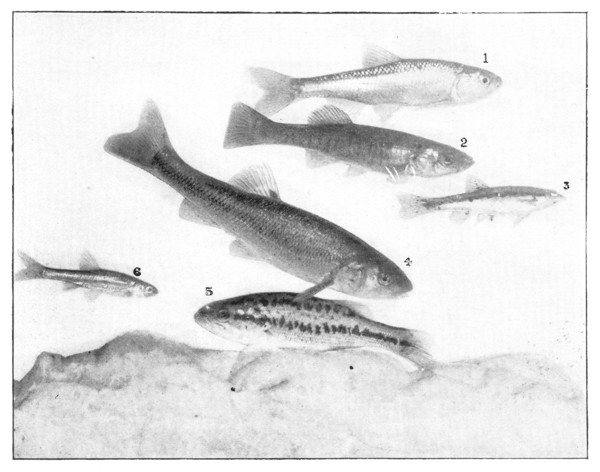
Fig. 80. 1, Shiner; 2, Barred Killifish; 3, Black-nosed
Dace; 4, Creek Chub; 5, Young of Large-mouthed Black Bass; 6,
Varying-toothed Minnow.
As winter approaches and the leaves fall and the ground
becomes frozen, the birds leave us and go farther south into
warmer climates where food is more abundant. We are all
[159]
familiar with this habit of the birds, but how many of us know
or have even wondered what the fishes have been doing through
the cold winter months while the streams and ponds have been
covered with ice? Before the warmth of spring comes to raise
the temperature of the streams, let us go to some familiar place
in a brook where, during the summer, are to be found scores of
minnows. None are to be found now. The brook shows no
signs of ever having contained any living creatures. Suppose we
go farther up or down the stream until we find a protected pool
the bottom of which is covered with sediment and water-soaked
leaves. With our net we will dip up some of the leaves and sediment,
being sure that we dip from the very bottom. On looking
over this mass of muddy material we may find a fish two or three
inches long, with very fine scales, a black back, a silvery belly
and a blackish or brown band on the side of the body extending
from the tip of the nose to the tail. This is the Black-nosed Dace
(Fig. 80). If specimens of this fish are caught very early in the
[160]
spring, one will be able to watch some interesting color changes.
As the spawning time approaches, the dark band on the sides and
the fins change to a bright crimson. Sometimes the whole body
may be of this gaudy color. During the summer the lateral band
becomes orange. As the season goes, the bright colors gradually
fade until finally, in the fall and winter, the little black-nose is
again clothed in his more modest attire. A great many of the
fishes, and especially the larger ones, seek some deep pond or
pool in the stream at the approach of winter, and remain near the
bottom. If the pond or stream is so deep that they do not become
chilled they will remain active, swimming about and taking food
all winter. But when the stream is very shallow and the fishes
feel the cold, they settle down to the bottom, moving about very
little and taking little or no food. The carp collect in small numbers
and pass the winter in excavations that they make in the
muddy bottom. If the débris thrown up by the water across the
marshy end of a lake be raked over during the winter, one will
probably find some of the smaller catfishes spending the season in
a semi-dormant state.
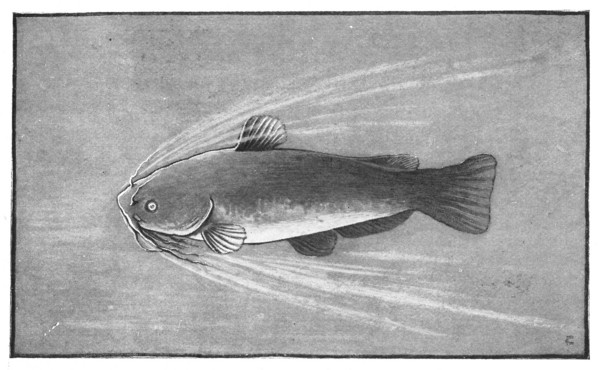
Fig. 81. The Common Catfish or Bullhead.
Some interesting experiments may be tried with the fishes in
the aquarium jar. Keep them for a few days where it is cold and
then bring them into a warmer room and note the difference in
their activity.
[161]
The Common Catfish or Bullhead.
This sleepy old fellow differs in many respects from most of our
common fishes. He has no scales. About the mouth are eight
long whisker-like appendages, called barbels (Fig. 81). Perhaps
he is called catfish because he has whiskers about his mouth like
a cat. Any one who has ever taken a catfish from the hook
probably knows that care is needed in order not to receive a painful
prick from the sharp spines in his pectoral and dorsal fins.
There is nothing aristocratic about the catfish. In warm pools
and streams where the water is sluggish and the muddy bottom is
covered with weeds, he may be found moving lazily about in
search of food. His taste is not delicate. Animal substance,
whether living or dead, satisfies him. When in search of food he
makes good use of his barbels, especially those at the corners of
his mouth, which he uses as feelers. The catfish will live longer
out of water than most of our other food fishes. They will live
and thrive in water which is far too impure for "pumpkin seeds"
or bass. They spawn late in the spring. The mother fish cares
for her young much as a hen cares for her chickens. When they
are old enough to take care of themselves, she weans them.
The Common Sunfish or Pumpkin Seed.
Some evening just at sunset visit a quiet pool in a nearby stream. Drop
in your hook baited with an "angle worm" and presently the dancing cork
shows that you have a "bite." On "pulling up" you find that you really
have a fish. It is a beautiful creature, too—thin flat body shaped
something like the seed of a pumpkin. His back is an olive green
delicately shaded with blue. His sides are spotted with orange, while
his belly is a bright yellow. His cheeks are orange-color streaked with
wavy lines of blue. Just behind his eye on his "ear-flap" is a bright
scarlet spot. This is the common Sunfish or Pumpkin Seed (Fig. 82).
He is a very beautiful, aristocratic little fellow, "looking like a
brilliant coin fresh from the mint."
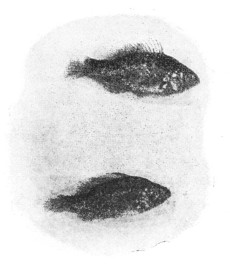
Fig. 82. The common Sunfish or Pumpkin Seed.
[162]
Keep him alive in an aquarium jar with a shiner. Compare the
two fishes, as to the size and shape of their bodies and fins.
Feed them different kinds of food, such as worms, insects and
crackers, and try to discover which they like best and how they
eat.
The sunfishes prefer quiet waters. They lay their eggs in the spring of
the year. The male selects a spot near the banks of the stream or pond
where the water is very shallow. Here he clears a circular area about a
foot in diameter. After making a slight excavation in the gravel or
sand, the nest is completed. The eggs are then deposited by the female
in the basin-like excavation. He watches his nest and eggs with great
diligence, driving away other fishes that chance to come near.
The Black Basses.
The black basses are not usually found in small streams where it is most
pleasant for teachers and pupils to fish. They are fishes that seek the
rivers and lakes. There are two kinds of black bass, the Large-mouthed
and the Small-mouthed. As the name indicates, the two may be
distinguished by the size of the mouth. In the large-mouthed black bass
the upper jaw extends to a point behind the eye, while in the
small-mouthed species it extends to a point just below the middle of the
eye (Fig. 83).
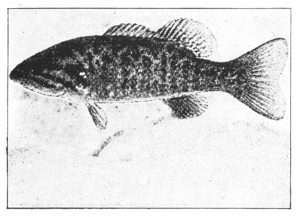
Fig. 83. Adult Small-mouthed Black Bass.
Both kinds of black bass may be found in the same body of
water. The character of the bottoms over which they are found,
however, differs. The small-mouthed prefers the stony bars or
shoals. The large-mouthed, on the contrary, selects a muddy bottom
grown over with reeds. They feed upon crayfish ("crabs"),
minnows, frogs, worms, tadpoles and insects. Our black basses are
very queer parents. They prepare a nest in which the eggs are
deposited. Both male and female are very courageous in the
defense of their eggs and young. As soon as the young fishes are
able to take care of themselves the parent fishes leave them, and
after that time may even feed upon their own children.
[163]
The Stickleback.
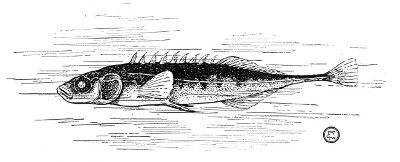
Fig. 84. A Stickleback.
The sticklebacks are queer little fellows indeed (Fig. 84). The slender
body, extremely narrow tail, and the sharp, free spines in front of the
dorsal fin, give them at once the appearance of being both active and
pugnacious little creatures. The sticklebacks are detrimental to the
increase of other fishes since they greedily destroy the spawn and young
of all fishes that come within their reach. They build nests about two
inches in diameter, with a hole in the top. After the eggs are laid the
male defends the nest with great bravery. The little five-spined brook
stickleback in the Cayuga Lake basin, N. Y., is most commonly found in
stagnant pools, shaded by trees, where the water is filled with decaying
vegetable matter,—the so-called "green frog-spawn" (spirogyra), and
duck weed. If you supply the sticklebacks with plenty of fine vegetable
material, you may induce them to built a nest in the aquarium jar, but
they must be caught and placed in the jar early in the season before
they spawn.
The Johnny Darters.
In New York State, every swift stream which has a bed of
gravel and flat stones ought to contain some one of the Johnny
darters, for there are a great many different kinds (Fig. 85).
They are little creatures, delighting in clear water and swift
currents where they dart about, hiding under stones and leaves,
or resting on the bottom with their heads up-stream. The body
of a darter is compact and spindle-shaped, gradually tapering
from the short head to a narrow tail. The eyes are situated
nearly on top of the head. The color of the darters varies greatly
with the different kinds. Some are very plain, the light ground
color being broken only by a few brown markings. Others are
gorgeous in their colorings, it seeming as if they had attempted
[164]
to reproduce the rainbow on their sides. Such kinds are indeed
very attractive and are ranked with the most beautifully colored
of all our common fishes. When a darter swims, he appears bird-like,
for he flies through the water much as a bird flies through
the air. He does not use his tail alone in swimming, as the
catfish, the sunfish, the stickleback, and most of the other fishes
do, but flies with his pectoral fins.
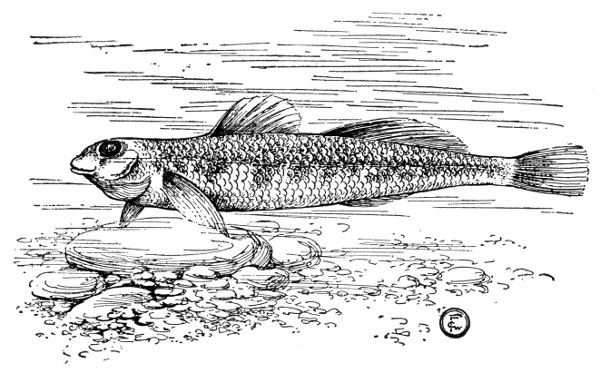
Fig. 85. A Johnny Darter.
You surely must have a Johnny darter in your aquarium jar.
The Johnnies are true American fishes. Though small, they face
the strong currents and eke out a living where their larger cousin,
the yellow perch, would perish. There are many interesting facts
which may be learned from the Johnny darters when kept alive in
an aquarium. When not actually moving in the water, do the
Johnnies rest on the bottom of the jar or remain suspended in the
middle apparently resting on nothing, as the other aquarium fishes
do? When a fish remains still in the middle of the jar he does so
because he has a well-developed air-bladder to help buoy him up,
and when a fish dies it is the air-bladder which causes him to turn
over and rise to the top. Now if the Johnnies always rest on the
bottom of the jar when not swimming and if one happens to die
and does not rise to the top we may know that, if he has an air-bladder
at all, it is only a vestigial one. It would be interesting
also to find out for ourselves whether a Johnny darter can
really "climb trees" (I mean by trees, of course, the water plants
in the aquarium jar), or if he can perch upon the branches like a
bird.
[165]
The Minnows.
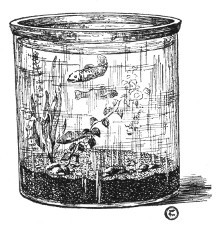
Fig. 86. A convenient form of aquarium jar supplied with
water plants. The bottom is covered with clean sand and flat stones.
All the small fishes of the brooks are called minnows, or more often
"minnies," by the boy fisherman. The boy believes that they grow into
larger fishes. This is not true. The minnows are a distinct group of
fishes and, for the most part, small ones. They do not grow to be bass
or pike or sunfishes or anything else but minnows. Some of the minnows,
however, are comparatively large. Two of these are the Creek Chub
(Fig. 80), and the Shiner (Fig. 80). The chub is the king of the small
brooks, being often the largest and most voracious fish found in such
streams. His common diet probably consists of insects and worms, but if
very hungry he does not object to eating a smaller fish. During the
spawning season, which is springtime, the male chub has sharp, horny
tubercles or spines developed upon the snout. We are able to recognize
the creek chub by means of a black spot at the front of the base of the
dorsal fin.
The shiner or red-fin has much larger scales than the chub.
The back is elevated in front of the dorsal fin, giving him the
appearance of a hump-back. His sides are a steel-blue with silvery
reflections. While the shiner is not the largest, it is almost
everywhere one of the most abundant brook fishes. In spring the
lower fins of the male become reddish. Like the chub, he has
small horny tubercles developed on the snout.
Random Notes.
Did you ever see a fish yawn? Watch a shiner in your aquarium.
Sometimes you may see him open his mouth widely as
though he was very sleepy. Again you may find him resting on
the bottom of the jar taking a nap. Fishes cannot close their
eyes when they sleep for they have no eyelids.
A convenient way to collect fishes for the schoolroom aquarium
is to use a dip net. The ordinary insect net will do, but it is better
to replace the cheese-cloth bag by a double thickness of mosquito-bar,
[166]
thus enabling one to move the net through the water more
rapidly. By dipping in the deep pools, among grasses and
under the banks with such a net one can soon obtain fishes
enough to stock an aquarium (Fig. 86). The aquarium jar should
never be placed in the sun. It is better to have only three or four
fishes in an aquarium at one time. Some flat stones on the bottom
of the jar will afford them convenient hiding places.
For further notes on aquaria, consult Leaflet No. XII.
[167]
LEAFLET XIV.
THE OPENING OF A COCOON.[18]
By MARY ROGERS MILLER.
Among the commonest treasures brought into the
schools by children in the fall or winter are the
cocoons of our giant silk-worms. If one has a place
to put them where the air is not too warm or dry,
no special care will be necessary to keep them
through the winter. Out-door conditions must
be imitated as nearly as possible. If early in the
fall one is fortunate enough to meet one of these
giants out for a walk, it is the simplest thing in
the world to capture him and watch him spin his
marvelous winter blanket. Two members of this family of giant
insects are quite common in this state, the largest the Cecropia,
called sometimes the Emperor, and the Promethea.
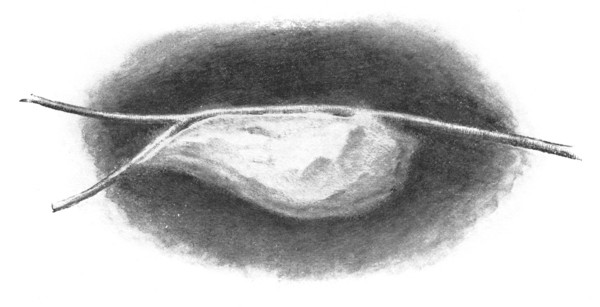
Fig. 87. Cocoon of the Cecropia moth. It sometimes hangs from a twig of
a fruit tree.
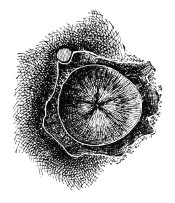
Fig. 88. End of cocoon of Cecropia, inside view, showing
where the moth gets out.
The Cecropia moth often measures five or six inches across—a
veritable giant. Its main color is dusty brown, with spots and
[168]
bands of cinnamon brown and white. On each wing is a white crescent
bordered with red and outlined with a black line. The body is heavy and
covered with thick, reddish-brown hairs, crossed near the end with black
and white lines. On its small head are two large feathery feelers or
antennæ. The Cecropia moth emerges from the cocoon, full grown, in early
summer, when out of doors. Those kept in the house often come out as
early as March. The eggs are deposited by the adults upon apple, pear,
cherry, maple and other shade and fruit trees. Professor Comstock says
that the spiny caterpillars which hatch from the eggs in about two
weeks, are known to feed upon the leaves of some fifty species of
plants. One could therefore hardly make a mistake in offering
refreshment to these creatures, since they are anything but epicures.
The full-grown caterpillar, having spent the summer eating and growing,
with now and then a change of clothes, is often three inches long and an
inch in diameter. It is a dull bluish green in color. On its back are
two rows of wart-like protuberances (tubercles), some yellow, some red,
some blue. As there is nothing else in nature which is just like it, one
need have no difficulty in recognizing the Cecropia in its different
phases.
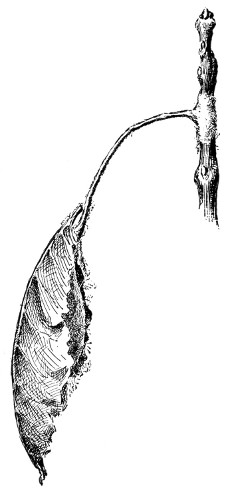
Fig. 89. Cocoon of Promethea moth fastened to a twig
with silk.
The cocoon which this giant silk-worm
weaves is shown in Fig. 87. It may be found
on a twig of some tree in the dooryard, but
sometimes on a fence-post or equally unexpected place. Inside
the cocoon the brown pupa, alive but helpless, waits for spring.
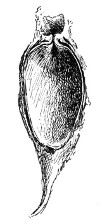
Fig. 90. Cocoon of Promethea, cut open lengthwise to
show the valve-like device at upper end through which the adult moth
pushes its way out.
After the moth comes out it is interesting to examine the structure
of the cocoon, and to discover how the moth managed to
free itself without destroying the silken blanket (Fig. 88).
Swinging loosely from last summer's twigs in lilac bushes, and
on such trees as wild cherry and ash, one often finds the slender
cocoons of the Promethea moth (Fig. 89). We cannot help admiring
the skill and care displayed by the spinner of this tidy winter
overcoat. The giant silk-worm which spun it chose a leaf as a
foundation. He took care to secure himself against the danger
of falling by fastening the leaf to the twig which bore it by
means of shining strands of silk. It is easy to test the strength
of this fastening by attempting to pull it loose from the twig.
[169]
The moths which come from these cocoons do not always look alike, yet
they are all brothers and sisters. The brothers are almost black, while
the wings of the sisters are light reddish brown, with a light gray wavy
line crossing the middle of both wings. The margins of the wings are
clay-colored. On each wing is a dark velvety spot. The adults emerge in
spring and are most often seen in the late afternoon. Their flight is
more spirited than that of the Cecropia, which moves very sedately, as
becomes a giant.
The caterpillars of this species, the young Prometheas, feed during the
summer on leaves of wild cherry, ash and other trees. They grow to be
about two inches long, and are distinguished from others by their pale
bluish green color and yellow legs. They also have rows of wart-like
elevations on their backs, some black and shining, four of a bright red
and one large and yellow near the hindmost end.
The life of these giant insects is divided into four
distinct stages: the egg, deposited by the adult moth
usually on or near the food plant; the larva, or caterpillar
stage, when most of the eating and all the growing
is done; the pupa, passed inside the cocoon woven
by the larva; and the adult, a winged moth.
The life-cycle or generation is one year, the winter
being passed in the pupa stage. The insect lives but a
short time in the adult stage and the egg stage is but two or
three weeks. Most of the summer is devoted to the caterpillar
phase of its life.
These creatures are entirely harmless. They seldom appear in
numbers sufficient to make them of economic importance.
[170]
[171]
LEAFLET XV.
A TALK ABOUT SPIDERS.[19]
By J. H. COMSTOCK.
Of all our little neighbors of the fields there are none that are more
universally shunned and feared than spiders, and few that deserve it
less. There is a wide-spread belief that spiders are dangerous, that
they are liable to bite, and that their bites are very venomous. Now
this may be true of certain large species that live in hot countries;
but the spiders of the Northern United States are practically harmless.
It is true, spiders bite and inject venom sufficient to kill a fly
into the wound made by their jaws. But they are exceedingly shy
creatures, fearing man more than they are to be feared. If an
observer will refrain from picking up a spider there is not the
slightest danger of being bitten by one; and excepting a single
uncommon species no spider is known in this part of the country
whose bite would seriously affect a human being.
On the other hand, spiders do much to keep in check various
insect pests, and hence must be regarded as our friends. It is,
however, from a different point of view that we wish to look upon
them at this time. It is as illustrations of remarkable development
of instinctive powers, and of wonderful correlation of
structure and habit, that we would have the reader study these
creatures. The teacher of nature-study can find no more available
or more fertile field from which to take subjects for interesting
children in the world about us. Let us then put aside our
fears and go into the fields and see whether we can learn something
of the ways of these spinners.
The Funnel-web Weavers.
Often on summer mornings the grass of the roadsides and fields
is seen to be carpeted with little sheets of glistening silk, the webs
of the grass-spider. None were observed the day before; and we
[172]
wonder at the sudden appearance of this host of weavers. Later
in the day the webs have vanished! Have the weavers rolled
them up and carried them off? We remember that there was an
especially fine one near the end of the veranda steps; we examine
the place carefully and find that it is still there, but not so conspicuous
as it was. The warm sun has dissipated the dew which
rendered visible to our dull eyes the tapestry of the fields. Now
that our eyes are opened we can find the webs everywhere and
are impressed with a suspicion that perhaps ordinarily we see
very little of what is around us.
We examine one of the webs carefully and find that it is a
closely woven sheet made of threads running in all directions;
that it is attached to spears of grass, and supported by numerous
guy lines, and that from one side a funnel-like tube extends
downwards. If, while we are watching, an insect alights on the
sheet, there darts from the tunnel, where she was concealed, the
owner of the web, a dark-colored spider; and the insect must be
agile if it escapes.
If you attempt to catch the spider it retreats to its tunnel; and
when you examine the tunnel the spider is not there. You find
that the tube is open below, that there is a back door by which
the spider can escape when hard pressed.
We call those spiders that makes webs of this kind The Funnel-web
Weavers. They are long-legged, brown spiders, which run on
the upper surface of their webs; these are usually made on grass,
but sometimes they are found in the angles of buildings, and in
quite high places.
The Cobweb Weavers.
The webs that we most often find in the corners of rooms are
of a different kind and are made by the members of a family
known as The Cobweb Weavers. In these webs there is not such
a definite sheet of silk as in those of the funnel-web weavers, but
instead a shapeless maze of threads extending in all directions.
Many of the cobweb weavers, however, make their webs in the
fields on bushes, and weave in them a flat or curved sheet, under
which the spider hangs back downward. The funnel-web weavers
run right side up; the cobweb weavers hang inverted. Some
of the cobweb weavers do not remain in their webs, but have a
nest in a neighboring crack or corner, from which they rush to
seize their prey, and sometimes there is a funnel-shaped tube
leading to their nest. But these spiders differ from the true
[173]
funnel-web weavers in running back downwards on the lower side
of their webs.
The Orb Weavers.
The spider webs that most often excite admiration are those in which the
supporting threads radiate from a center like the spokes of a wheel, and
bear a spiral thread. Such webs are known as orb-webs; and the family of
spiders that make them, The Orb Weavers.
Few if any of the structures built by lower animals are more wonderful
than these webs; but they are so common that they are often considered
hardly worthy of notice. If they occurred only in some remote corner of
the earth, every one would read of them with interest.
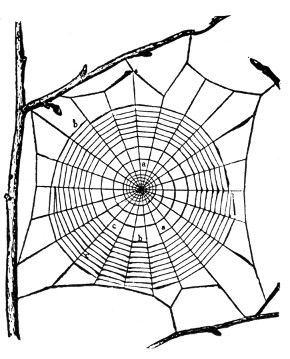
Fig. 91. Nearly completed orb-web.
The webs or nets of the different species of orb weavers differ in the
details of their structure; but the general plan is quite similar. There
is first a framework of supporting lines. The outer part of this
framework is irregular, depending upon the position of the objects to
which the net is attached; but the central part is very regular, and
consists of a number of lines radiating from the center of the net (Fig.
91). All of these supporting lines are dry and inelastic. Touch them
with your pencil and you find that they neither stretch nor adhere to
it. Upon these radiating lines there is fastened in a very regular
manner a thread which is sticky and elastic. This will adhere to your
pencil, and will stretch several times its normal length before
breaking. Usually this sticky thread is fastened to the radiating lines
so as to form a spiral; but a few species make nets in which it is
looped back and forth. And even in the nets where the greater part of
the thread is in a spiral there are in most cases a few loops near the
lower margin (Fig. 91). Examine the next orb-web you find and see
whether it is true in that case.
Many of the orb weavers strengthen their nets by spinning a
[174]
zigzag ribbon across the center. This ribbon is made by spreading
apart the spinnerets, the organs from which the silk is spun, and
which will be described later. Ordinarily the tips of the spinnerets
are held close together so that they form a single thread, but by
spreading them apart many threads can be spun at once, thus
forming a ribbon.
Some orb weavers are not content with making a simple zigzag band across
the center of the net, but weave an elaborate bit of lace in this
position. Fig. 92 is from a photograph of the center of the net of one
of these spiders, which was found near Ithaca.
In studying the various kinds of orb-webs one should pay particular
attention to the center of the web; for this part differs greatly in the
webs of the different species. There is usually a hub composed
entirely of dry and inelastic silk woven in an irregular manner; outside
of this there are several turns of a spiral thread which is also dry;
this constitutes the notched zone, a name suggested by the fact that
the spiral line is attached for a short space to each radius it crosses,
thus giving the line a notched course. In many cases it is here, on the
hub and the notched zone, that the spider waits for its prey; and it is
obvious that sticky silk in this place would be objectionable. Between
the notched zone and the spiral zone, the part furnished with the
sticky spiral thread, there is a clear space, the free zone, crossed
only by the radii. This gives the spider an opportunity to pass from one
side of the web to the other without going around the entire web.
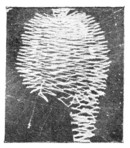
Fig. 92. Lace-like hub of an orb-web.
Some orb weavers do not wait upon the hub but have a retreat
near one edge of the net, in which they hang back downwards.
While resting in these retreats they keep hold of some of the lines
leading from the net, so that they can instantly detect any jar
caused by an entrapped insect.
When an insect in its flight touches one of the turns of the
sticky line the line adheres to it, but it stretches so as to allow
the insect to become entangled in other turns of the line. If it
were not for this elasticity of the sticky line, most insects could
readily tear themselves away before the spider had time to reach
them.
In running over its net the spider steps upon the radii, carefully
avoiding the sticky line; otherwise it would destroy its own net.
[175]
The rapidity with which a spider can cross its net without touching
the sticky line is remarkable.
In making its web an orb weaver first spins a number of lines extending
irregularly in various directions about the place where its orb is to
be; this is the outer supporting framework. Often the first line spun is
a bridge between two quite distant points, as the branches of two
separate bushes. How did the spider cross the gulf? It has no wings.
The bridge building can be easily seen on a warm summer evening, the
time at which the spiders are most active repairing their old nets and
building new ones. The spider lifts the hind end of its body and spins
forth a thread; this is carried off by the wind, until, finally striking
some object, it becomes fast to it. The spider then pulls in the slack
line, like a sailor, and when the line is taut fastens it to the object
on which it is standing, and the bridge is formed.
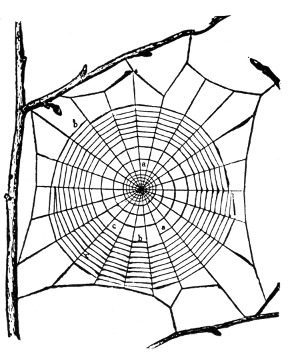
Fig. 93. Nearly completed orb-web.
After making the outward
framework, the radiating
lines are formed. A line
is stretched across the space
so as to pass through the point which is to be the center of the orb.
In doing this the spider may start on one side, and be forced to
walk in a very roundabout way on the outer framework to the
opposite side. It carefully holds the new line up behind it as it
goes along, so that it shall not become entangled with the lines on
which it walks; one or both hind feet serve as hands in these spinning
operations; for, as the spider has eight feet, it can spare one or
two for other purposes than locomotion. When the desired point
is reached the slack is pulled in and the line fastened. The
spider then goes to the point where the center of the orb is to be,
and, fastening another line, it walks back to the outer framework,
and attaches this line an inch or two from the first. In this way
all of the radiating lines are drawn. The next step is to stay these
[176]
radii by a spiral line, which is begun near the center, and attached
to each radius as it crosses it. The turns of this spiral are as far
apart as the spider can conveniently reach.
All of the threads spun up to this stage in the construction of the web
are dry and inelastic. The spider now proceeds to stretch upon this
framework a sticky and elastic line, which is the most important part of
the web, the other lines being merely a framework to support it. In
spinning the sticky line, the spider begins at the outer edge of the
orb, and passing around it, fastens this line to each radius as it goes.
Thus a second spiral is made. The turns of this spiral are placed quite
close together, and the first spiral, which is merely a temporary
support, is destroyed as the second spiral progresses. Fig. 93
represents a web in which the second spiral is made over the outer half
of the radii. In this figure, aa represents the temporary stayline;
bb, the sticky spiral; and cc, the fragments of the first spiral
hanging from the radii.
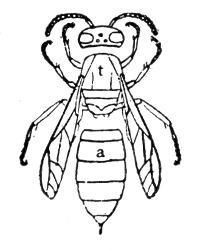
Fig. 94. Wasp, with head, thorax and abdomen separated.
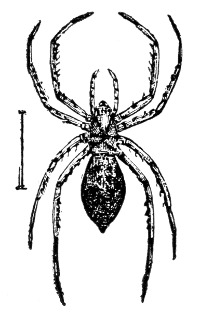
Fig. 95. Spider, showing division of the body into cephalothorax and abdomen.
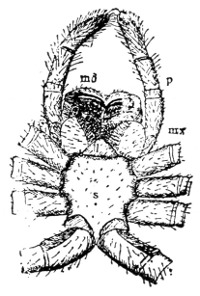
Fig. 96. Lower side of cephalothorax of a spider; md,
mandible; mx, maxilla; p, palpus; l, lower lip; s, sternum.
The Parts of a Spider.
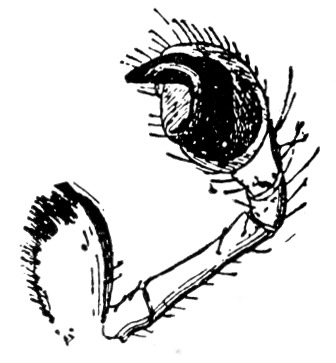
Fig. 97. Maxilla and palpus of male house-spider.
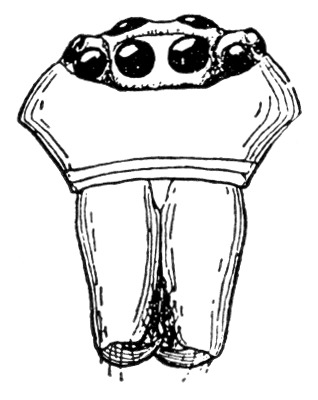
Fig. 98. Head of spider, showing eyes and mandibles.
Spiders differ much in appearance from the true insects. In the
insects the body is composed of three regions: the head; the
thorax, to which the legs are attached; and the abdomen or hind
part of the body (Fig. 94). In the spiders the head and thorax
are grown together, forming a region which is known as the
cephalothorax; to this the abdomen is joined by a short, narrow
stalk (Fig. 95). Spiders differ also from insects in the number of
their legs, spiders having eight legs and insects only six.
[177]
Spiders have two pairs of jaws, which, except in the Tarantula family,
move sidewise like the jaws of insects. The first pair of jaws are
called the mandibles. Each mandible consists of two segments, a strong
basal one and a claw-shaped terminal one, at the tip of which the poison
gland opens (Fig. 96). The second pair of jaws is known as the
maxillæ. These jaws are situated just behind the mandibles, one on
each side of the mouth. Each maxilla bears a large feeler or palpus.
These palpi vary greatly in form; frequently, especially in females,
they resemble legs; hence many spiders appear to have five pairs of
legs. In the male spiders the last segment of the palpus is more or less
enlarged, ending in a complicated, knob-like structure (Fig. 97). It is
thus easy to determine the sex of a spider by merely examining the
palpi.
The greater number of spiders have four pairs of eyes (Fig. 98), but
there may be only one, two, or three pairs; and certain cave spiders are
blind. The eyes appear like little gems set in the front of the
cephalothorax. They are most prominent in the jumping spiders, which
stalk their prey on plants, logs, fences, and the sides of buildings.
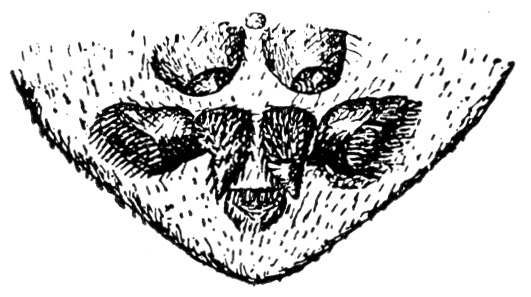
Fig. 99. Spinnerets of a spider.
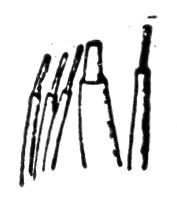
Fig. 100. A group of spinning tubes.
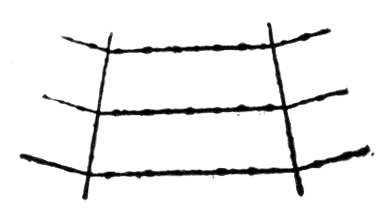
Fig. 101. Viscid silk from an orb-web.

Fig. 102. Spinnerets and cribellum of a curled-thread weaver.
The most characteristic feature of spiders is their spinning
organs. The silk is secreted in glands within the abdomen, and
while in the body it is a fluid. It passes out through the spinnerets,
which are situated near the hind end of the abdomen.
There are two or three pairs of spinnerets. These are more or
less finger-like in form, and sometimes jointed (Fig. 99). Upon
the end of each spinneret there are many small tubes, the spinning
[178]
tubes (Fig. 100), from which the silk is spun. Some spiders
have as many as one hundred and fifty or two hundred of these
spinning tubes on each spinneret.
Ordinarily the tips of the spinnerets are brought close together,
so that all of the minute threads that emerge from the numerous
spinning tubes unite to form a single thread. Hence this tiny
thread, which is so delicate that we can see it only when the light
falls on it in a favorable way, is composed of hundreds of threads.
It is not like a rope, composed of separate strands; for all the
minute threads fuse together into a single thread. The change in
the silk from a fluid to a solid cord, strong enough to support the
weight of the spider, must take place quickly after the silk comes
in contact with the air on leaving the spinning tubes; the minute
size of the threads coming from the spinning tubes doubtless
facilitates this change.
Sometimes a spider will spread its spinnerets apart, and thus
spin a broad ribbon-like band. We have seen a spider seize a
large grasshopper which was entangled in its web, and rolling it
over two or three times, completely envelop it in a sheet of silk
spun from its spread-apart spinnerets. We have already described
bands spun by orb weavers across the hub of the net in this
way.

Fig. 103. Last two segments of hind leg of spider, showing calamistrum.
It is supposed that the two kinds of silk spun by the orb weavers
are spun from different spinnerets, and that the viscid silk comes
from the front pair. When this silk is first spun, the viscid matter
forms a continuous layer of liquid on the outside of it. But very
soon this layer breaks up into bead-like masses—in a way similar
to that in which the moisture on a clothes line on a foggy day
collects into drops (Fig. 101).
There are two families of spiders that have spinning organs
differing from those of all other spiders. They have in front of
the usual spinnerets an additional organ, which
is named the cribellum (Fig. 102, c). This
bears spinning tubes like the other spinnerets,
but these tubes are much finer. These spiders
have also on the next-to-the-last segment of
the hind legs one or two rows of curved spines;
this organ is the calamistrum (Fig. 103). By
means of the calamistrum these spiders comb
from the cribellum a band of loose threads which form a part
of their webs.
[179]
The Curled-thread Weavers.
The spiders possessing a cribellum and a calamistrum represent
two families, one of which makes irregular webs; the other,
those which are of definite form.
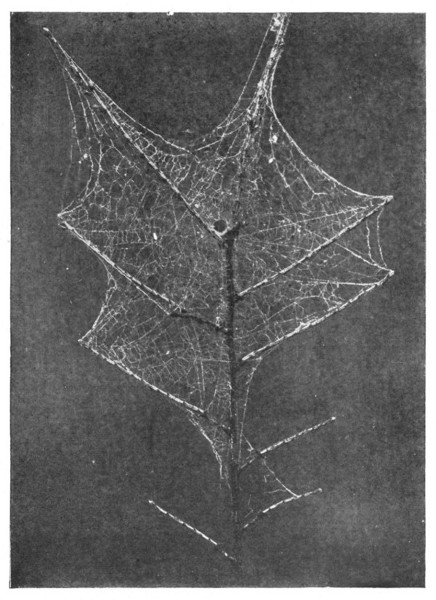
Fig. 104. Web of a curled-thread weaver.

Fig. 105. Fragment of a curled-thread weaver's web, enlarged.
An irregular web of a curled-thread weaver is shown in Fig.
104, from a photograph. In this web the framework is of ordinary
silk; and upon this framework is placed a band of curled
or tangled threads (Fig. 105). An insect alighting on a net of this
kind is likely to get its feet caught in the tangled silk, and to be
held fast till the spider can pounce upon it. Nets of this kind
are found on bushes and on the sides of buildings.
[180]
There are two quite distinct types of regular webs made by spiders
possessing a cribellum and a calamistrum. One is a round web which
resembles at first sight those of the orb weavers; but it differs from
the ordinary orb-web in that the spiral thread is made of curled or
hackled silk. These webs are nearly horizontal, and are usually made
between stones or in low bushes; they are not common.
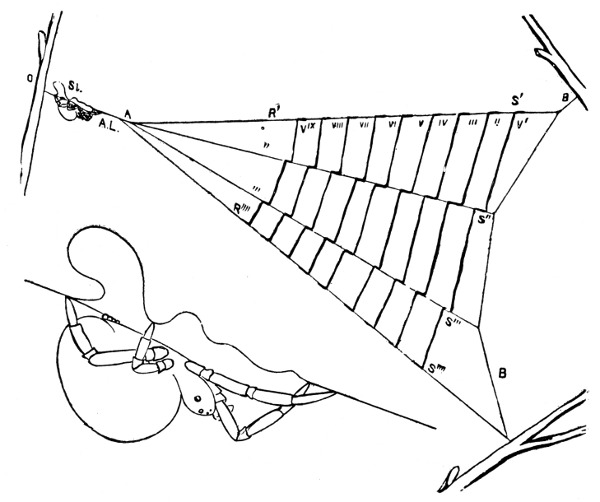
Fig. 106. Web of the triangle spider.
The other type is represented by the web of the
triangle spider. This web is most often found stretched
between the twigs of a dead branch of pine or hemlock. At
first sight it appears like a fragment of an orb-web (Fig. 106);
but a little study will show that it is complete. The accompanying
figure, by Dr. B. G. Wilder, who first described the habits of
this spider ("Popular Science Monthly," 1875) illustrates the
form of the web. It consists of four plain lines corresponding
to the radiating lines of an orb-web, and a series of cross lines,
which are spun by the cribellum and calamistrum. Each cross
line is composed of two lines, about 1/500 of an inch apart.
These double lines take the place of the curled threads woven by
[181]
other members of the family to which the triangle spider belongs.
From the point where the radiating lines meet, a strong line
extends to one of the supporting twigs. Near this twig the spider
rests, pulling the web tight so that there is some loose line
between its legs, as shown in the enlarged figure. When an
insect becomes entangled in one of the cross lines, the spider
suddenly lets go the loose line so that the whole web springs forward,
and the insect is entangled in other cross lines. The spider
then draws the web tight and snaps it again. This may be
repeated several times before the spider goes out upon the web
after its prey.
The triangle spider is a tiny fellow, and so closely resembles
the color of the dead branch near which it rests that it is very
difficult to find; its web is more easily seen, though it usually
requires careful searching to discover it.
The Motherhood of Spiders.
As a rule young spiders are forced to shift
for themselves, and a very hard time they have;
but of this we have not space to write. With
spiders, the mother's care is devoted chiefly to
furnishing protection to her helpless eggs.
These are placed in silken sacs, which are
often very elaborate in construction and protected
with great care.
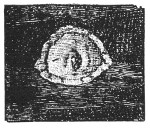
Fig. 107. Egg-sac of a spider.
The most common egg-sacs are those found
in the fields attached to stones and pieces of wood (Fig. 107).
They are disk-shaped objects, silvery in color, and about the size
of an old-fashioned three-cent piece.
The egg-sacs of the cobweb weavers can be found suspended in
their webs; and those of the orb weavers, in various situations.
Fig. 108 represents the large egg-sac of one of the orb weavers.
This is made in the autumn, and contains at that season a large
number of eggs—five hundred or more. These eggs hatch early
in the winter; but no spiders emerge from the egg-sac until the
following spring. If egg-sacs of this kind be opened at different
times during the winter, the spiders will be found to increase in
size but diminish in numbers as the season advances. In fact, a
strange tragedy goes on within these egg-sacs: the stronger
spiders calmly devour their weaker brothers, and in the spring
[182]
those that survive emerge sufficiently nourished to fight their
battles in the outside world.
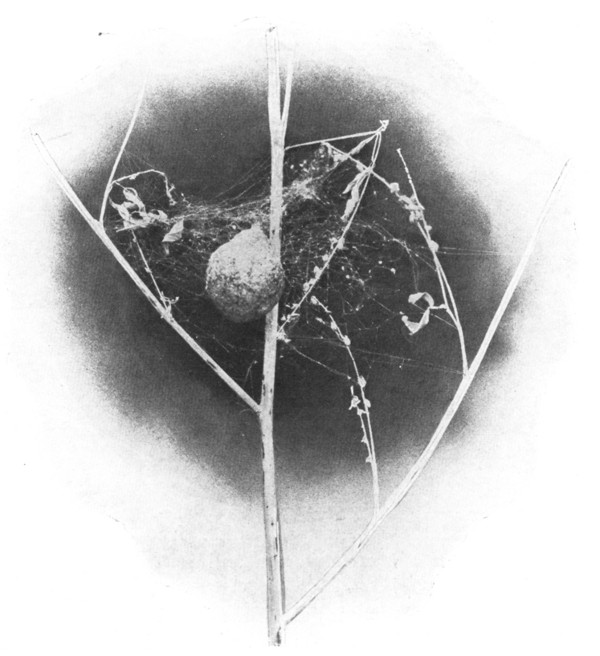
Fig. 108. Egg-sac of an orb weaver.
The females of the Running Spiders not only make a carefully
constructed egg-sac, but also care for the young spiders for a time. The
running spiders are the large dark-colored, hairy spiders, often found
under stones and rubbish; they are so-called because they capture their
prey by running. The females of most of the species (those of the genus
Lycosa) drag after them their egg-sac, which is attached to the
spinnerets (Fig. 109); and when the young hatch, they climb on their
mother's back, and are carried about for a time.

Fig. 109. Lycosa and egg-sac.
[183]
One of the running spiders (Dolomedes) carries her egg-sac with
her mandibles until the young are ready to emerge. At this time
the mother fastens the egg-sac in a bush, and spins irregular
threads about it, among which the young spiders remain for a
time (Fig. 110). In the specimen figured, the egg-sac was concealed
in the upper part of the web.
The Ballooning Spiders.
In warm autumn days, innumerable threads can be seen streaming
from fences, bushes, and the tips of stalks of grass, or floating
through the air. These are made by the Ballooning Spiders,
which are able to travel long distances, hundreds of miles, through
the air by means of these silken threads.
The ballooning spider climbs to some elevated point, and then,
standing on the tips of its feet, lifts its body as high as it can, and
spins out a thread of silk. This thread is carried up and away by
a current of air. When the thread is long enough the force of the
air current on it is sufficient to bear the spider up. It then lets
go its hold with its feet and sails away. That these spiders travel
long distances in this manner has been shown by the fact that they
have been seen floating through the air at sea far from land.
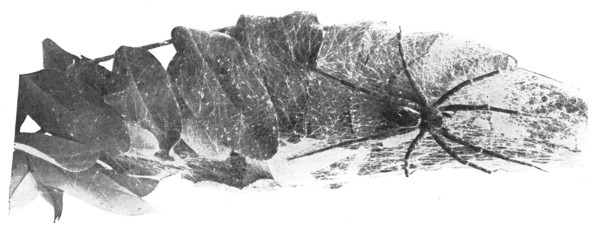
Fig. 110. Nursery of Dolomedes.
[184]
[185]
LEAFLET XVI.
LIFE HISTORY OF THE TOAD.[20]
By S. H. GAGE.[21]
On account of its economic importance, and because
the marvelous changes passed through in growing
from an egg to a toad are so rapid that they may
all be seen during a single spring term of school,
the common or warty toad has been selected as
the subject of a leaflet in nature-study. Toads
are found everywhere in New York, and nearly
everywhere in the world; it is easy, therefore,
to get abundant material for study. This animal is such a good
friend to the farmer, the gardener, the fruit-grower, the florist and
the stock-raiser that every man and woman, every boy and girl,
ought to know something about it.
Furthermore, it is hoped and sincerely believed that the feeling
of repugnance and dislike, and the consequent cruelty to toads,
will disappear when teachers and children learn something about
their wonderful changes in form, structure and habits, and how
harmless and helpful they are. Then, who that knows of the
chances, the dangers and struggles in the life of the toad, can help
a feeling of sympathy; for after all, how like our human life it is.
Where sympathy is, cruelty is impossible, and one comes to feel the
spirit of these beautiful lines from Coleridge's "Ancient Mariner:"
"He prayeth best who loveth best
All things both great and small;
For the dear God who loveth us
He made and loveth all."
It was William Harvey, the discoverer of the circulation of the
[186]
blood, who first clearly stated the fact that every animal comes
from an egg. This is as true of a toad as of a chicken.
The toad lives on the land and often a long way from any pond
or stream, but the first part of its life is spent in the water; and
so it is in the water that the eggs must be looked for. To find the
eggs one should visit the natural or artificial ponds so common
along streams. Ponds from springs or even artificial reservoirs or
the basins around fountains, also may contain the eggs. The time
for finding the eggs depends on the season. The toad observes
the season, not the almanac. In ordinary years, the best time is
from the middle of April to the first of May.
One is often guided to the right place by noticing the direction
from which the song or call of the toad comes. The call of the
toad is more or less like that of the tree toads. In general it
sounds like whistling, and at the same time pronouncing deep in
the throat, bu-rr-r-r-r-. If one watches a toad while it makes its
call, one can soon learn to distinguish the sound from others somewhat
similar. It will be found that different toads have slightly
different voices, and the same one can vary the tone considerably,
so that it is not so easy after all to distinguish the many batrachian
solos and choruses on a spring or summer evening. It will be
noticed that the toad does not open its mouth when it sings, but,
instead, the resonator or vocal sac under its mouth and throat is
greatly expanded. One must be careful to distinguish the expansion
of the mouth in breathing from the expansion of the vocal
sac. See the left hand toad in the drawing (Fig. 111) for the
vocal sac, and the toad in hibernation (Fig. 121) for the expansion
of the mouth in breathing. It is only the males that possess the
vocal sac, so that the toad chorus is composed solely of male
voices.
The eggs are laid in long strings or ropes which are nearly
always tangled and wound round the water plants or sticks on the
bottom of the pond. If the pond is large and deep, the eggs are
laid near the shore where the water is shallow. If the eggs have
been freshly laid in clear water the egg ropes will look like
glass tubes containing a string of jet black beads. After a rain
the eggs are obscured by the fine mud that settles on the transparent
jelly surrounding them, but the jelly is much more evident
than in the freshly laid egg strings.
Secure enough of the egg string to include 50 or 100 eggs and
place it in a glass fruit dish or a basin with clean water from the
[187]
[188]
pond where the eggs were found. Let the children look at the
eggs very carefully and note the color and the exact shape. Let
them see whether the color is the same on all sides. If the eggs
are newly laid they will be nearly perfect spheres.
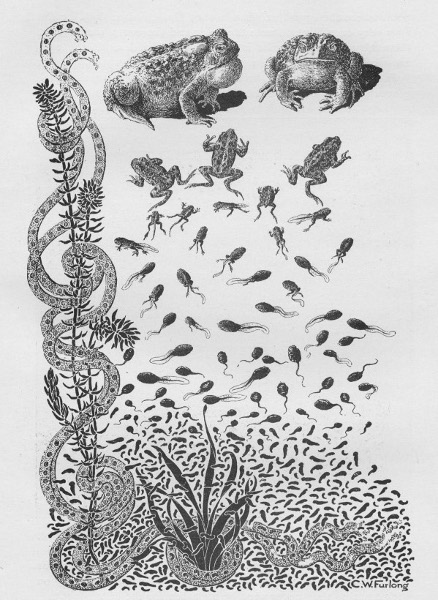
Fig. 111. The toad in various stages of development from the egg to the adult
Frogs, salamanders and tree toads lay their eggs in the same
places and at about the same time as the toad we are to study.
Only the toad lays its eggs in strings, so one can be sure he has
the right kind. The others lay their eggs in bunches or singly on
the plants, so they never need be mistaken for the ones sought.
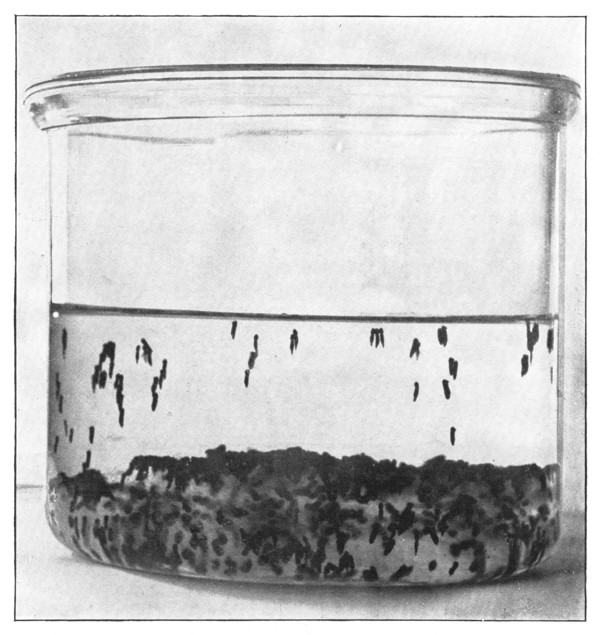
Fig. 112. Just hatched toad tadpoles climbing up where the water is better aerated.
The eggs which are taken to the school house for study should
be kept in a light place; an east, south or west window is best.
[189]
It requires only a short time for the eggs to hatch. In warm
weather two to four days are usually sufficient, but in the cool
days of April it may require ten days. As the changes are so very
rapid, the eggs ought to be carefully looked at two or three times
a day to make sure that all the principal changes are seen. If a
pocket lens or a reading glass is to be had it will add to the interest,
as more of the details can be observed. But good sharp eyes
are sufficient if no lens is available.
Hatching.—Watch and see how long it is before the developing
embryos commence to move. Note their change in form. As
they elongate they move more vigorously till on the second or
third day they wriggle out of the jelly surrounding them. This is
hatching, and they are now free in the water and can swim about.
It is curious to see them hang themselves up on the old egg string
or on the edge of the dish (Fig. 112). They do this by means of
a peculiar v-shaped organ on their heads.
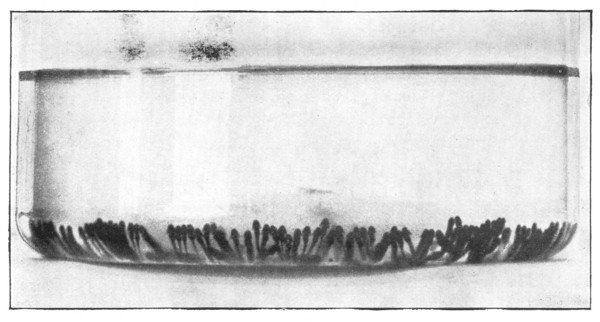
Fig. 113. Older toad tadpoles with their heads up.
How different the little creatures are, which have just hatched,
from the grown up toad which laid the eggs! The difference is
about as great as that between a caterpillar and a butterfly.
Tadpoles, polliwogs.—We call the young of the frog, the toad
and the tree toad, tadpoles or polliwogs. The toad tadpoles are
black. As they increase in size they may become greyish.
Those raised in the house are usually darker than those growing
in nature.
The tadpoles will live for some time in clear water with apparently
[190]
nothing to eat. This is because in each egg is some food,
just as there is a large supply of food within the egg shell to give
the chicken a good start in life. But when the food that the
mother supplied in the egg is used up, the little tadpoles would die if
they could not find some food for themselves. They must grow a
great deal before they can turn into toads; and just like children
and other young animals, to grow they must have plenty of food.
Feeding the tadpoles.—To feed the tadpoles it is necessary to
imitate nature as closely as possible. To do this, a visit to the
pond where the eggs were found will give the clue. Many plants
are present, and the bottom will be seen to slope gradually from the
shore. The food of the tadpole is the minute plant life on the stones,
the surface of the mud, or on the outside of the larger plants.
One must not attempt to raise too many tadpoles in the artificial
pond in the laboratory or school-room or there will not be enough
food, and all will be half starved, or some will get the food and the
rest will starve to death. While there may be thousands of tadpoles
in the natural pond, it will be readily seen that, compared
with the amount of water present, there are really rather few.
Probably many more were hatched in the school-house than
can be raised in the artificial pond. Return the ones not put in
the artificial pond to the natural pond. It would be too bad to
throw them out on the ground to die.
Comparing the growth of the tadpoles.—Even when one does his
best it is hard to make an artificial pond so good as the natural
one for the tadpoles, and the teacher will find it very interesting
and stimulating to compare the growth and change in the tadpoles
at the school-house with those in the natural pond.
As growth depends on the supply of food and the suitability of
the environment, it is easy to judge how nearly the artificial pond
equals the natural pond for raising tadpoles. It will be worth
while to take a tadpole from the natural pond occasionally and
put it in with those at the school-house, so that the differences may
be more strikingly shown. There is some danger in making a mistake
here, however, for there may be three or four kinds of tadpoles
in the natural pond. Those of the toad are almost jet black when
young, while the others are more or less brownish. If one selects
only the very black ones they will probably be toad tadpoles.
Every week or oftener, some water plants, and perhaps a small
stone covered with the growth of microscopic plants, and some
water, should be taken from the pond to the artificial pond. The
[191]
water will supply the place of that which has evaporated, and the
water plants will carry a new supply of food. If the water in the
artificial pond in the school-room does not remain clear, it should
be carefully dipped out and fresh clear water added. It is better
to get the water from the pond where the eggs were laid, although
any clear water will answer; but do not use distilled water.
The growth and changes in form should be looked for every
day. Then it is very interesting to see what the tadpoles do, how
they eat, and any signs of breathing.
All the changes from an egg to a little toad (Fig. 111), are
passed through in one or two months, so that by the first of June
the tadpoles will be found to have made great progress. The
progress will be not only in size, but in form and action.
One of these actions should be watched with especial care, for
it means a great deal. At first the little tadpoles remain under
water all the time, and do not seem to know or care that there is
a great world above the water. But as they grow larger and
larger, they rush up to the surface once in awhile and then dive
down again, as if their lives depended on it. The older they grow
the oftener do they come to the surface. This is even more
marked in the large tadpole of the bullfrog. What is the meaning
of this? Probably most of the pupils can guess correctly; but it
took scientific men a long time to find out just why this was done.
The real reason is that the tadpole is getting ready to breathe the
free air above the water when it turns into a toad and lives on the
land. At first the little tadpoles breathe the air dissolved in the
water, just as a fish does. This makes it plain why an artificial
pond should have a broad surface exposed to the air. If one
should use a narrow and deep vessel, like a fruit jar, only a small
amount of air could be taken up by the water and the tadpoles
would be half suffocated.
As the tadpoles grow older they go oftener to the surface to get
the air directly from the limitless supply above the water, as they
will have to do when they live wholly in the air.
Disappearance of the tail.—From the first to the middle of June
the tadpoles should be watched with especial care, for wonderful
things are happening. Both the fore and hind legs will appear, if
they have not already. The head will change in form and so will
the body; the color will become much lighter, and, but for the
tail, the tadpole will begin to look something like its mother.
If you keep an especially sharp lookout, do you think you will
see the tail drop off? No, toad nature is too economical for that.
[192]
The tail will not drop off, but it will be seen to get shorter and
shorter every day; it is not dropping off, but is being carried into
the tadpole. The tail is perfect at every stage; it simply disappears.
How does this happen? This is another thing that it
took scientific men a long time to find out.
It is now known that there are two great methods for removing
parts of the body no longer needed. In the first method the
living particles in the body which are able to wander all around,
as if they were inspectors to see that everything is in order, may
go to the part to be removed and take it up piece by piece.
These living particles are known as white blood corpuscles, wandering
cells, phagocytes, leucocytes and several other names. In
the other method, the blood and the lymph going to the part to
be removed dissolve it particle by particle. Apparently the toad
tadpole's tail is dissolved by the blood and lymph rather than
being eaten up by the phagocytes, although the phagocytes do a
part of the work.
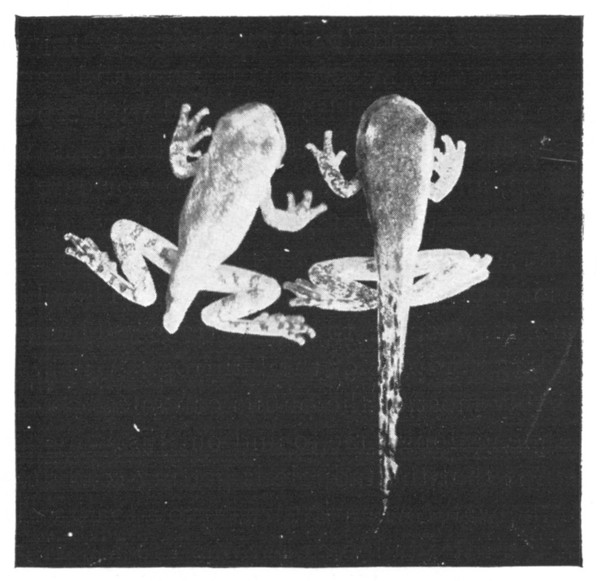
Fig. 114. Transforming tadpole of the green tree
toad to show the rapidity of tail absorption. (Change
in 24 hours. Natural size.)
HVLA—Natural size. Change in 24 hours; 28 mm. of tail absorbed in
24 hours; 11/6 mm. per hour. Common toad shortens the tail about 1/5
mm. per hour.
Now, when the tadpole is ready to dispense with its tail, the
blood and lymph and the phagocytes take it up particle by particle
and carry it back into the body where it can be used just as
[193]
any other good food would be. This taking in of the tail is done
so carefully that the skin epithelium or epidermis is never broken,
but covers up the outside perfectly all the time. Is not this a
better way to get rid of a tail than to cut it off?
If you look at the picture of the disappearance of the tail in the
toad tadpole (Fig. 115) and in the tree-toad tadpole (Fig. 114), you
will get an idea how rapidly this takes place. It is easier to see
the actual shortening if the tadpoles are put in a white dish of
clear water without any water plants. The tadpoles do not eat
anything while they are changing to toads, so they will not need to
be fed.
Beginning of the life on the land.—Now, when the legs are grown
out, and the tail is getting shorter, the little tadpole likes to put
its nose out of the water into the air; and sometimes it crawls
half way out. When the tail gets quite short, often a mere stub,
it will crawl out entirely and stay for some time in the air. It
now looks really like a toad except that it is nearly smooth instead
of being warty, and is only about as large as the end of a child's
little finger (Fig. 115).
Finally, the time comes when the tadpole, now transformed into
a toad, must leave the water for the land.
What queer feelings the little toad must have when the soft,
smooth bottom of the pond and the pretty plants, and the water
that supported it so nicely are all to be left behind for the hard,
rough, dry land! But the little toad must take the step. It is no
longer a tadpole, or half tadpole and half toad. It cannot again dive
into the cool, soft water when the air and the sunshine dry and
scorch it. As countless generations of little toads have done before,
it pushes boldly out over the land and away from the water.
If one visits the natural pond at about this season (last half of
June, first of July), he is likely to see many of the little fellows
hopping away from the water. And so vigorously do they hop
along that in a few days they may be as far as a mile from the
pond where they were hatched. After a warm shower they are
particularly active, and are then most commonly seen. Many
think they rained down. "They were not seen before the rain,
so they must have rained down." Is that good reasoning?
The little toad is careful and during the hot and sunny part of
the day stays in the shade of the grass or leaves or in some other
moist and shady place. If it staid out in the sun too long it
would be liable to dry up.
[194]
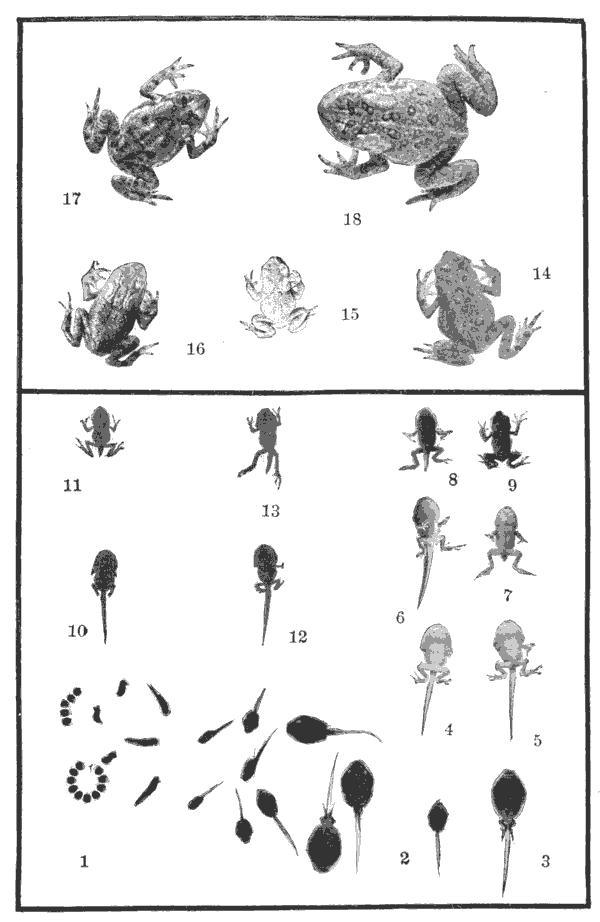
Fig. 115. Toad development in a single season (1903).
1-18. Changes and growth, April to November. 1-13. Development in 25 to 60 days.
15-18. Different sizes, October 21, 1903. 9, 14. Different sizes, July 30, 1903.
10, 11. The same tadpole,—11, 47 hours older than 10.
12, 13. The same tadpole,—13, 47 hours older than 12.
[195]
Food on the Land.
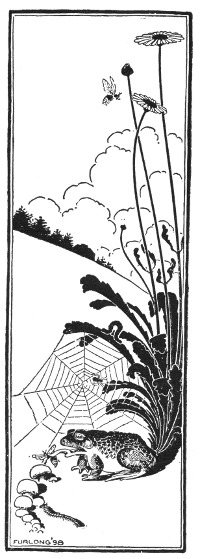
Fig. 116. Toad catching a winged insect, and illustrating how the
tongue is extended and brought in contact with the insect. Several other
creatures that the toad might eat are shown in various parts of the
picture.
In the water the tadpole eats vegetable matter; but when it becomes a
toad and gets on the land it will touch nothing but animal food, and
that must be so fresh that it is alive and moving. This food consists of
every creeping, crawling or flying thing that is small enough to be
swallowed. While it will not touch a piece of fresh meat lying on the
ground, woe to moving snail, insect or worm that comes within its reach!
It is by the destruction of insects and worms that the toad helps men so
greatly. The insects and worms eat the grain, the fruits and the
flowers. They bite and sting the animals and give men no end of trouble.
The toad is not partial, but takes any live thing that gets near it,
whether it is caterpillar, fly, spider, centipede or thousand-legged
worm; and it does not stop even there, but will gobble up a hornet or a
yellow jacket without the least hesitation.
It is astonishing to see the certainty with which a toad can catch these
flying or crawling things. The way the toad does this may be observed by
watching one out of doors some summer evening or after a shower; but it
is more satisfactory to have a nearer view. Put a large toad into a box,
or better, into a glass dish with some moist sand on the bottom. In a
little while, if one is gentle, the toad will become tame, and then if
flies and other insects are caught with a sweep net and put into the
dish and the top covered with mosquito netting one can watch the process
of capture. It is very quickly accomplished, and one must look sharply.
As shown in the little picture (Fig. 116), the toad's tongue is fastened
[196]
at the front part of its mouth, not back in the throat as with
men, dogs, cats and most animals. It is so nicely arranged that it can
be extended for quite a distance. On it is a sticky secretion, and when,
quick as a flash, the tongue is thrown out or extended, if it touches
the insect, the insect is caught as if by sticky fly paper, and is taken
into the mouth.
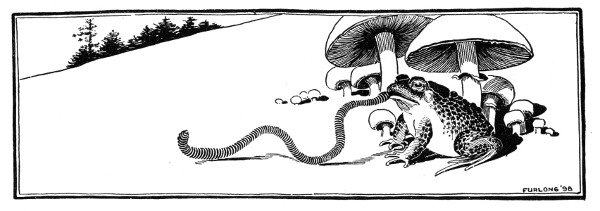
Fig. 117. Toad making a meal of an angle worm.
Think how many insects and worms a toad could destroy in a
single summer. Practically every insect and worm destroyed
adds to the produce of the garden and the farm, or takes away
one cause of discomfort to men and animals. One observer
reports that a single toad disposed of twenty-four caterpillars in
ten minutes, and another ate thirty-five celery worms within three
hours. He estimates that a good-sized toad will destroy nearly
10,000 insects and worms in a single summer.
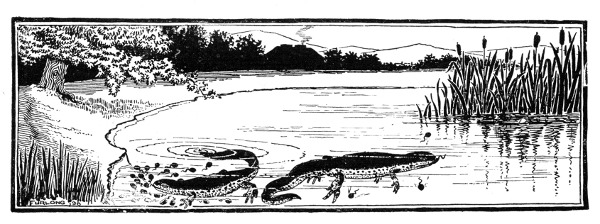
Fig. 118. Two newts feasting on tadpoles.
Enemies—The Shadow Side of Life.
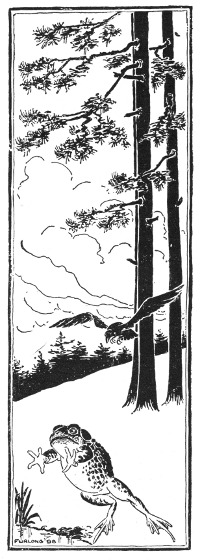
Fig. 119. In danger from a crow.
So far nothing has been said about the troubles and dangers
of the toad's life. Fig. 111 is meant to show the main phases
in the life-history. If one looks at it perhaps he may wonder
what becomes of all the tadpoles that first hatch, as only two
[197]
toads are shown at the top. Is not this something like the other
life-histories? How many little robins or chickens die and never become
full-grown birds! Well, the dangers to the toad begin at once. Suppose
the eggs are laid in a pond that dries up before the little toads can
get ready to live on the land; in that case they all die. The mother
toads sometimes do make the mistake of laying the eggs in ponds that dry
up in a little while. You will not let the artificial pond at the
school-house dry up, will you? Then sometimes there is an especially dry
summer, and only those that transform very early from tadpoles to toads
are saved.
In the little picture (Fig. 118) is shown another source of danger and
cause for the diminution in numbers. The newts and salamanders find
young tadpoles very good eating and they make way with hundreds of them.
Some die from what are called natural causes, that is, diseases, or
possibly they eat something that does not agree with them. So that while
there were multitudes of eggs (1,000 or more from each toad), and of
just hatched tadpoles, the number has become sadly lessened by the time
the brood is ready to leave the water.
Then when they set foot on land, their dangers are not passed. They may
be parched by summer's heat or crushed under the feet of men or cattle.
Birds and snakes like them for food. Figs. 119 and 120 show some of
these dangers. Is it a wonder, then, that of all the multitudes of
tadpoles so few grow up to be large toads?
We have so few helpers to keep the noxious insects in check, it
is not believed that any boy or girl who knows this wonderful
story of a toad's life will join the crows, the snakes and the salamanders
in worrying or destroying their good friends.
[198]
Moulting and Hibernation.
There are two very interesting things that happen in the life of
many of the lower animals; they happen to the toad also. These
are moulting, or change of skin, and hibernation, or winter sleep.
Every boy and girl ought to know about these, and then, if on the
lookout, some or all of the things will be seen.
Moulting.—Probably everybody who lives in the country has
seen a snake's skin without any snake in it. It is often very
perfect. When the outside skin or cuticle of a snake or a toad
gets old and dry or too tight for it, a new covering grows underneath,
and the old one is shed. This is a very interesting performance,
but the toad usually sheds it in a retired place, so the
process is not often seen. Those who have seen it say that a long
crack or tear appears along the back and in front. The toad keeps
moving and wriggling to loosen the old cuticle. This peels the
cuticle off the sides. Now, to get it off the legs and feet, the toad
puts its leg under its arm, or front leg, and in that way pulls off
the old skin as if it were a stocking. But when the front legs are to
be stripped the mouth is used as is sometimes done by people in
pulling off their gloves. Do you think it uses its teeth for this
purpose? You might look in a toad's mouth sometime, and then
you would know.
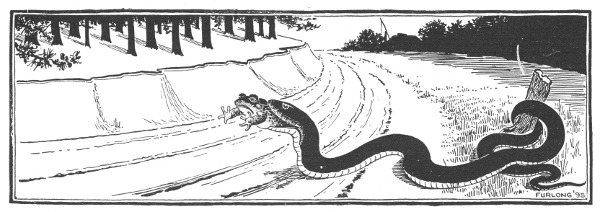
Fig. 120. Snakes frequently swallow toads hind legs foremost, as shown in the picture.
This is especially true of the garter snake, which is a great enemy of the toad.
It is said that when the skin is finally pulled off the toad swallows
it. This is true in some cases; at least it is worth while
keeping watch for. It is certain that the toad sometimes swallows
the cast skin; it is also certain that in some cases the cast skin is
not swallowed. After a toad has shed his old skin, he looks a
great deal brighter and cleaner than before, as if he had just got
[199]
a new suit of clothes. If you see one with a particularly bright
skin, you will now know what it means.
Hibernation.—The toad is a cold-blooded animal. This means
that the temperature of its blood is nearly like that of the surrounding
air. Men, horses, cows, dogs, are said to be warm-blooded,
for their blood is warm and of about the some temperature
whether the surrounding air is cold or hot.
When the air is too cool, the toad becomes stupid and inactive.
In September or October a few toads may be seen on warm days or
evenings, but the number seen becomes smaller and smaller; and
finally, as the cold November weather comes on, none are seen.
Where are they? The toad seems to know that winter is coming,
that the insects and worms will disappear, so that no food can be
found. It must go into a kind of death-like sleep, in which it
hardly moves or breathes. This winter sleep or hibernation must
be passed in some safe and protected place. If the toad were to
freeze and thaw with every change in the weather it would not
wake up in the spring.
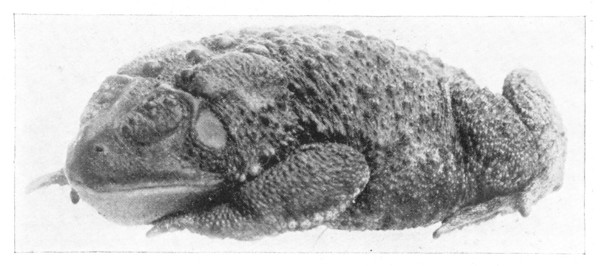
Fig. 121. Toad in the winter sleep. (Natural size).
The wonderful foresight which instinct gives it, makes the toad
select some comparatively soft earth in a protected place where it
can bury itself. The earth chosen is moist, but not wet. If it
were dry the toad would dry up before spring. It is not uncommon
for farmers and gardeners to plough them up late in the fall
or early in the spring. Also in digging cellars at about these
times they are found occasionally.
In burying itself the toad digs with its hind legs and body, and
pushes itself backward into the hole with the front legs. The
earth caves in as the animal backs into the ground, so that no sign
[200]
is left on the outside. Once in far enough to escape the freezing
and thawing of winter, the toad moves around till there is a little
chamber slightly larger than its body; then it draws its legs up
close, shuts its eyes, puts its head down between or on its hands,
and goes to sleep and sleeps for five months or more.
When the warm days of spring come it wakes up, crawls out of
bed and begins to take interest in life again. It looks around for
insects and worms, and acts as if it had had only a comfortable nap.
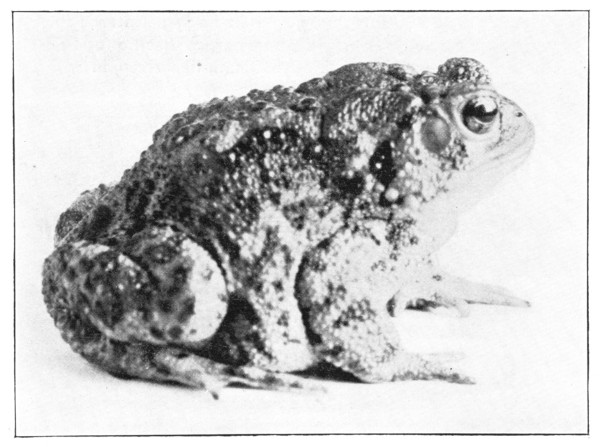
Fig. 122. The same toad awake in the spring. (Natural size).
The little toad that you saw hatch from an egg into a tadpole
and then turn to a toad, would hibernate for two or three winters,
and by that time it would be quite a large toad. After it had
grown up and had awakened from its winter sleep some spring, it
would have a strong impulse to get back to the pond where it
began life as an egg years before. Once there it would lay a great
number of eggs, perhaps as many as a thousand or two, for a new
generation of toads. And this would complete its life cycle.
While the toad completes its life cycle when it returns to the
water and lays eggs for a new generation, it may live many years
afterward and lay eggs many times, perhaps every year.
[201]
Many insects, some fish and other animals, die after laying their
eggs. For such animals the completion of the life cycle ends the
life-history also. But unless the toad meets with some accident it
goes back to its land home after laying the eggs, and may live in
the same garden or dooryard for many years, as many as eight
years, and perhaps longer. (See Bulletin No. 46, Hatch Experiment
Station of the Massachusetts Agricultural College, Amherst,
Mass.)
Erroneous Notions About the Toad.
If one reads in old books and listens to the fairy tales and other
stories common everywhere, he will hear many wonderful things
about the toad, but most of the things are wholly untrue.
One of the erroneous notions is that the toad is deadly poison.
Another is that it is possessed of marvelous healing virtues, and
still another, that hidden away in the heads of some of the oldest
ones are the priceless toad-stones, jewels of inestimable value.
Giving warts.—Probably every boy and girl living in the country
has heard that if one takes a toad in his hands, or if a toad touches
him anywhere he will "catch the warts." This is not so at all, as
has been proved over and over again. If a toad is handled gently
and petted a little it soon learns not to be afraid, and seems to
enjoy the kindness and attention. If a toad is hurt or roughly
handled a whitish, acrid substance is poured out of the largest
warts. This might smart a little if it got into the mouth, as dogs
find out when they try biting a toad. It cannot be very bad, however,
or the hawks, owls, crows and snakes that eat the toad would
give up the practice. The toad is really one of the most harmless
creatures in the world, and has never been known to hurt a man
or a child.
A boy might possibly have some warts on his hands after handling
a toad; so might he after handling a jack-knife or looking at
a steam engine; but the toad does not give the warts any more
than the knife or the engine.
Cows giving bloody milk.—It is a common belief in the country
that if one kills a toad his cows will give bloody milk. Cows will
give bloody milk if the udder is injured in any way, whether a
toad is killed or not. There is no connection whatever between
the bloody milk and a killed toad.
Living without air and food.—Occasionally one reads or hears a
story about a toad found in a cavity in a solid rock. When the
rock is broken open it is said that the toad wakes up and hops
[202]
around as if it had been asleep only half an hour. Just think for
a moment what it would mean to find a live toad within a cavity
in a solid rock. It must have been there for thousands, if not for
millions of years, without food or air. The toad does not like a
long fast, but can stand it for a year or so without food if it is in
a moist place and supplied with air. It regularly sleeps four or
five months every winter, but never in a place devoid of air. If
the air were cut off the toad would soon die. Some careful experiments
were made by French scientific men, and the stories told
about toads living indefinitely without air or food were utterly
disproved.
It is not difficult to see that one working in a quarry might honestly
think that he had found a toad in a rock. Toads are not
very uncommon in quarries. If a stone were broken open and a
cavity found in it, and then a toad were seen hopping away, one
might jump at the conclusion that the toad came out of the cavity
in the rock. Is not this something like the belief that the little
toads rain down from the clouds because they are most commonly
seen after a shower?
Surveys and Maps.
In considering the suggestions made in this leaflet, we thought
of the hundreds of schools throughout the state and wondered
whether there might not be some difficulty in finding the ponds
where the toads lay their eggs, and in finding some of the things
described in the other leaflets.
The teachers and students in Cornell University found this
difficulty in 1868 when the University opened. The great Louis
Agassiz came to the University at the beginning to give a course
of lectures on natural history. The inspiration of his presence
and advice, and of those lectures, lasts to this day.
Agassiz, and the University teachers, who had many of them
been his pupils, saw at once that the region around Ithaca must
be full of interesting things; but they did not know exactly
where to find them. Agassiz himself made some explorations, and
the professors and students took hold of the work with the greatest
enthusiasm. They explored the beautiful lake, the streams, hills,
valleys, gorges, ponds and marshes. Careful notes were kept of
the exact locality where every interesting thing was found and
simple maps were made to aid in finding the places again.
Finally, after several years, knowledge enough was gained to construct
an accurate map for the use of all. A part of this map,
[203]
showing only the most important features, is put into this leaflet
to serve as a guide (Fig. 123).
It will be seen that the University is made the starting point.
With a few hints it is believed that every school can make a
good beginning this year on a natural history survey of the
region near its school-house, and in the preparation of a map
to go with the survey.
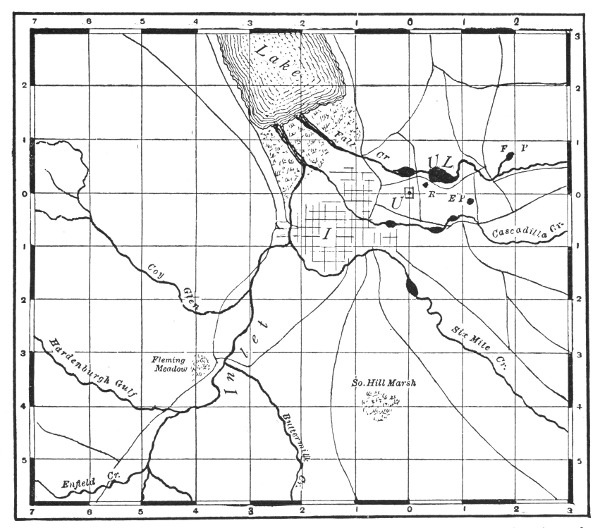
Fig. 123. Simple map showing the position of Cornell University, the city of
Ithaca, Cayuga Lake, and the roads and streams and ponds near the University.
From W. R. Dudley's map in "The Cayuga Flora." Scale, 1 centimeter to the
kilometer.
U. Cornell University.
U. L. University Lake in Fall Creek.
R. Reservoir supplied from University Lake, and supplying the campus.
E. P. East Pond where the eggs of the toad, tree toad, frogs and salamanders are found.
F. P. Forest Home Pond. A very favorable place for eggs, tadpoles, etc.
Inlet. The inlet of the lake. The lampreys are abundant near Fleming's meadow.
Preparation of the map.—It is well to have the map of good size.
A half sheet of bristol board will answer, but a whole sheet is
better. About the first thing to decide is the scale to which the
[204]
map is to be drawn. It is better to have the scale large. Twelve
inches to the mile would be convenient. Divide the map into
squares, making the lines quite heavy. If so large a scale were
used it would be advantageous for locating places to have the
large squares divided into square inches, but much lighter lines
should be used so that there will be no confusion with the lines
representing the miles.
Locating objects on the map.—The corner of the school-house
containing the corner stone should be taken as the starting point. If
there is no corner stone, select the most convenient corner. Put the
school-house on the map anywhere you wish; probably the center of the
map would be the best place. In the sample map the University is not in
the center, as it was desired to show more of the country to the south
and west than to the north and east.
The map should of course be made like other maps, so it will be
necessary to know the four cardinal points of the compass before
locating anything on it. Perhaps the school-house has been placed facing
exactly north and south or east and west, that is, arranged with the
cardinal points of the compass; if so, it will be the best guide. If you
are not sure, determine with a compass. With it the points can be
determined very accurately. Having determined the points of compass,
commence to locate objects in the landscape on the map as follows: Get
their direction from the starting point at the corner of the
school-house, then measure the distance accurately by running a bicycle
on which is a cyclometer, straight between the starting point and the
object. The cyclometer will record the distance accurately and it can be
read off easily. If no bicycle with a cyclometer is available, one can
use a long measuring stick, a tape measure or even a measured string;
but the bicycle and cyclometer are more convenient and accurate,
especially when the distances are considerable.
Suppose the distance is found to be one-sixth of a mile due
west. It should be located two inches west of the corner taken
as the starting point. If the direction were south-west, then the
two inches would be measured on the map in that direction and
located accordingly. Proceed in this way for locating any pond
or marsh, forest or glen. Now, when the places are located on
the map, you can see how easy it would be for any one to find the
places themselves. While the exact position should be determined
if possible and located, one does not often take a bee-line
in visiting them, but goes in roads, often a long distance around.
[205]
In locating the objects on the map, every effort should be made
to get them accurately placed, and this can be done most easily
by knowing the distances in a straight line.
It is hoped that every school in the state will begin this year making a
natural history survey and a map of the region around its school-house.
The map will show but few locations, perhaps, but it can be added to
from year to year, just as the University map has been added to; and
finally each school will have a map and notes showing exactly where the
toads lay their eggs, where fish and birds are; and where the newts and
salamanders, the different trees and flowers, rocks and fossils may be
found.
If the dates are kept accurately for the different years, one can also
see how much variation there is. Indeed, such nature-study will give a
sure foundation for appreciating and comprehending the larger questions
in natural science, and it will make an almost perfect preparation for
taking part in or for appreciating the great surveys of a state or a
country. It is believed that if accurate information were collected and
careful maps made by the different schools, the Empire State could soon
have a natural history survey and map better than any now in existence
in any state or country.
To the Teacher:
It is the firm belief of those who advocate nature-study that it is not
only valuable in itself, but that it will help to give enjoyment in
other studies and meaning to them. Every pupil who follows out the work
of this leaflet will see the need of a map of the region around the
school-house. This will help in the appreciation of map work generally.
So many of the beautiful and inspiring things in literature are
concerning some phase of nature, that nature-study must increase the
appreciation of the literature; and the noble thoughts in the literature
will help the pupils to look for and appreciate the finer things in
nature.
It is suggested that as many of the following selections as possible be
read in connection with the leaflet:
"The Fiftieth Birthday of Agassiz," by Longfellow.
The "Prayer of Agassiz," by Whittier. Professor Wilder, who
was present, assures the author that this describes an actual occurrence.
This "Silent Prayer" is also mentioned in an inspiring paragraph
by Henry Ward Beecher in the Christian Union, 1873.
The first part of Bryant's "Thanatopsis," Coleridge's "Ancient
[206]
Mariner," Burns' "On Scaring Some Water Fowl in Loch-Turit,"
and "To a Mouse."
Cowpers "The Task," a selection from book vi., beginning with
line 560. This gives a very just view of the rights of the lower
animals.
In connection with the disappearance of the tail, read Lowell's "Festina
Lente," in the Biglow Papers. For older pupils, Shakespeare's
picture of the seven ages in the human life cycle might be read. "As
You Like It," Act II, Scene II, near the end, commencing, "All the
world's a stage," etc.
Kipling's Jungle Books, and the works of Ernest Thompson-Seton
and William J. Long will help one to see how the world might look
from the standpoint of the animals.
One of the most satisfactory books to use in connection with nature-study
is Animal Life, by President David Starr Jordan and Professor
Kellogg. This gives the facts that every teacher ought to know in connection
with the processes of reproduction.
Attention is also called to A. H. Kirkland's Bulletin No. 46 of the
Hatch Experiment Station of the Massachusetts Agricultural College,
and to the Nature-Study Leaflet on the Toad, by Dr. C. F. Hodge,
of Clark University, Worcester, Mass.
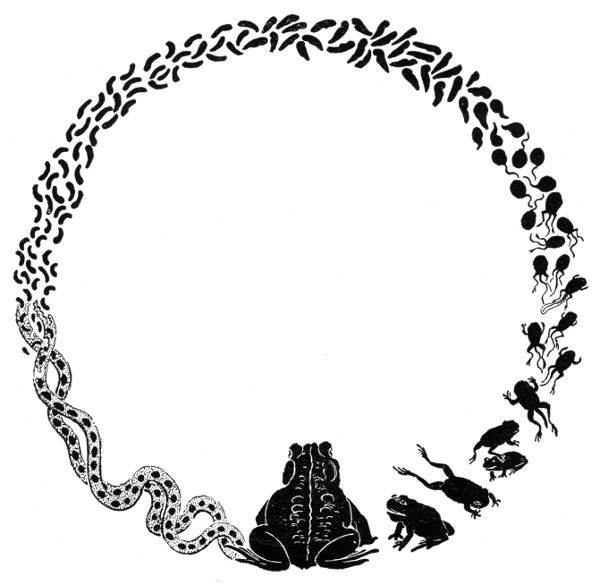
Fig. 124. From egg back to toad.)
[207]
LEAFLET XVII.
LIFE IN A TERRARIUM.[22]
By ALICE I. KENT.
And Nature, the old nurse, took
The child upon her knee,
Saying: "Here is a story-book
Thy Father has written for thee."
—Longfellow to Agassiz.
Fortunate are the children and the
teachers who are so placed that Nature's
story book is close at hand. But city children
and their teachers need not despair,
for Nature, the old nurse, is loving and
bountiful and will rewrite, in living characters,
many a page from the wondrous book, for those who care to
read. One such a page may be a terrarium—a confined plot of
earth on which things may live and grow (from terra, "earth," as
aquarium is from aqua, "water"). Within its narrow confines, the
[208]
whole drama of the beautiful life of many a tiny creature may be
rewritten.
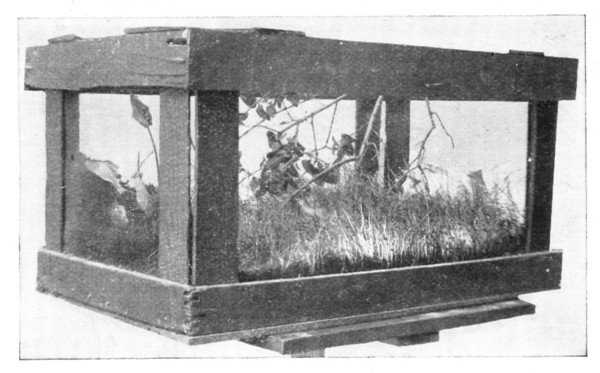
Fig. 125. Life in the terrarium.
Here is a fragment of the drama, as written in one terrarium.
This terrarium was made from an old berry crate (Figs. 125,
126). When the children saw it first, last fall, this is what it
looked like: a large rectangular box, grass-green in color, thirty-nine
inches long, eighteen inches wide, and fifteen inches high.
The long sides were of glass, the short sides and top of green
wire netting. The top could be removed like the lid of a box.
It stood upon a pedestal-table provided with castors. In the bottom
of the terrarium were three inches of rich soil, covered with
the delicate green of sprouting grass-seed. In one corner was
a mossy nook, and in another a mass of thistles and clover.
At one end, a small cabbage was planted and at the other lay
several sprays of glossy pin-oak. Suspended from the top, was
a large spray of purple thistles.
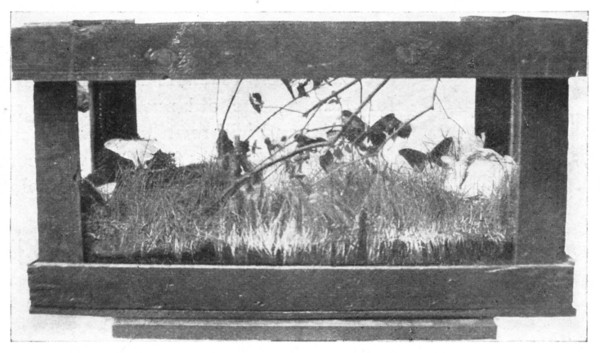
Fig. 126. Butterfly-time in the terrarium world.
Among the thistles in the corner, ten pendants of vivid green,
bright with golden points, could be seen. They were the chrysalids
of the monarch, or milkweed, butterfly. Among the cabbage
leaves, were many of the pale green eggs and several of the
caterpillars of the cabbage butterfly. Among the sprays of oak
in the corner, several oak caterpillars were feeding.
Before many days had passed, the drama of life began. One
by one, the chrysalids of the milkweed butterfly paled in color
and, becoming transparent, showed through their whitened walls
the orange-colored wings of the developing butterflies within.
[209]
They then burst, freeing their gorgeous tenants. This happened
until there were seven butterflies in the terrarium. As two of
these proved discontented with their new home, they were set
free. The five others spent the little round of their aërial life
seemingly happy and satisfied. They lived from three to six
weeks and showed some individuality in their tastes and habits.
Sometimes they chose the mossy corner for their resting place.
On other occasions they preferred the netting at the ends and top
of the terrarium. In fact, the netting at the ends of the terrarium
was a source of pleasure to these butterflies, as it served as a
secure resting place and an agreeable and convenient pathway to
the top. One of them spent nearly all its life on the thistles suspended
from the top. These thistles were kept fresh a long time
by placing their stems in a large sponge which was frequently
drenched with water.
The butterflies showed some individuality in their eating also.
Thistle, clover, golden-rod, nasturtiums, and honey-suckle were
offered to them. The thistle and the golden-rod were most frequently
visited, and next to these the nasturtiums were most
favored. Another fact noted was that most of the butterflies continued
to visit the flower first chosen. When, however, a thick
syrup of sugar and water was offered to them, the flowers were
much neglected, only one butterfly persisting in flower-visiting.
Golden-rod was its choice. If the syrup was fresh-made every
morning and was placed in a convenient spot, the butterflies never
failed to sip it. They generally slept clinging to the wire-netting
at the ends or top of the terrarium.
In the meantime, the cabbage began to attract the watchful eyes of the
wondering children. As it had industriously sent out many tiny roots, it
proved a safe and satisfactory home for its hidden occupants. Soon, one
by one, the caterpillars began to appear at the edges of the uppermost
leaves. They began small tours in the vicinage of the cabbage, and,
finally, as with the butterflies, the end wire nettings proved to be an
easy pathway to the top of the terrarium. Here several found good
resting places, and slowly changed to chrysalids.
One day a cabbage butterfly obligingly flew in at the open window.
It was caught and placed in the terrarium. It, too, proved
to be very fond of sugar syrup. One morning the syrup was accidentally
spilled on the wooden ridge at the bottom of the terrarium
[210]
outside of the netting. The butterfly was so hungry that it
could not wait for food more conveniently placed; so it stretched
its tongue out, full length, through the netting, and in that way
obtained it. The children were surprised to find its tongue somewhat
longer than its body.
At this time, the cabbage was removed so that the eggs and the
remaining young caterpillars could be observed. The protecting
coloring of the eggs and caterpillars was first noticed. One little
boy at first announced that the caterpillars were green because
they were not ripe, a good example surely of the danger of reasoning
from analogy!
Very soon the inhabitants of this terrarium world began to
increase. A father and two mother grasshoppers and a young
one, with his "armor on," came to live there; also a "woolly bear,"
several other species of caterpillars, several species of beetles, a
big horse-fly, some lady-bugs, and a cicada. About this time
too, some very unwelcome immigrants appeared. These were the
ichneumon flies. So numerous did they become in a very short
time, that they threatened desolation to this prosperous community.
Nature's methods were then scrutinized and the services
of two tree-toads were sought. Their response was immediate
and cordial. Soon not an ichneumon fly could be found.
The grasshoppers were partial to celery, over-ripe bananas, and
moisture. Three days after they became inhabitants of this miniature
world, the mother grasshopper dug a hole in the ground and laid eggs.
The observing children then had before them living illustrations of the
three stages of grasshopper life.
The tree-toads were both amusing and accommodating. They, too, liked the
wire netting at the ends of the terrarium, and delighted the children by
climbing up foot over foot, or hand over hand, like odd four-handed
sailor boys (Fig. 127.) This brought into plain view the tiny suckers on
their feet.
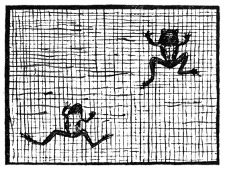
Fig. 127. Hand over hand.)
After the ichneumon flies had disappeared, a new difficulty
arose. The ground became mouldy, and the grass died down.
The terrarium was then placed by an open window and left there
[211]
several hours for a number of days until it was thoroughly dried
out. Then bird-seed was planted and the ground was watered
thereafter with a small plant syringe. This gave sufficient, but
not excessive moisture, and it was one of the pleasures of the children
to imitate a rainy day in the terrarium world. And it was a
pleasing experience, for there were splashes of water on the glass
sides and many shining drops on the netting and verdure, which
soon grew several inches tall; there was the same delightful odor
of rich fresh earth that one enjoys during summer rains, and the
sunshine touched with brilliancy the gay fall flowers and the
gorgeous outspread wings of the butterflies.
At this time the terrarium had an annex in the shape of a
wooden box, a foot square, with a gauze top. Here lived two
mother spiders with their egg-balls carefully hung on the cobweb
beams of their homes. One day a beautiful yellow silk egg-ball
was found out of doors, and when it was carefully opened to show
the eggs with which it was filled, the gratifying discovery was
made that these eggs were hatching. They were very tiny and
very numerous. They were inclosed in a silken pouch and were
the exact color of its lining. When resting the little spiders
seemed to hold their legs under the body, and they were so small
and so like the egg in general appearance that if they had not
run about when disturbed they would never have been discovered.
As soon as the egg ball was opened they exploited their one talent,
for they ran out on the fingers of the person who held the
ball and then suspended themselves by almost invisible threads
from all parts of the fingers. When they were to be returned to
the egg-ball they were gently pushed up. They then obligingly
ran back into their silken home, which was carefully closed as
before. These little ones were kept a week or ten days and were
then allowed to escape and establish homes for themselves. The
life history of the spider was thus seen, although, unfortunately,
our adult spiders did not belong to the same species as the
young ones.
To return to the terrarium: It was now early in November and
each day found one or more of the terrarium inhabitants missing.
One of the caterpillars disappeared and a cocoon made of its own
hair was found in its place; several chrysalids were found on the
top of the terrarium; the butterflies and the grasshoppers, one
by one, went into that sleep from which there is no awakening;
and a number of the other creatures disappeared. The children
[212]
finally concluded that the latter had gone to sleep in the ground.
The grasshoppers and the tree-toads were the last to take their
rest, but just before they answered Mother Nature's call to slumber,
a large garden toad came to bear them company.
He was a very interesting toad for he bore signs of having lived
through what must have been almost a tragedy. He had lost the
lower half of one front leg and had the scar of a long gash on his
throat. These disfigurements seemed not to cause him the least
unhappiness, for he had a very bright wide-awake expression and
was as plump and complacent as a toad should be. The loss of
his leg caused him a little inconvenience, for he sometimes lost
his balance when hopping and fell on his back. He occasionally
found it difficult to right himself at once, but a few vigorous kicks
and jumps generally placed him right side up. Three days after
he became a member of the terrarium community, he, too, heard
Mother Nature's call to bed, and partially buried himself. Each
day he covered himself more completely, until finally only the top
of his head and two sleepy eyes were to be seen. One day, about
a week afterward, he disappeared entirely. He proved to be a
very restless sleeper, and frequently showed himself during the
sunniest parts of nearly every day all winter, occasionally coming
entirely out of his earthy covering. He served as a sort of
barometer all winter, appearing in bright and disappearing in
gloomy weather. He never, however, left the spot he had chosen
for his bed.
"Winter is the night of the year," and the little terrarium world
indoors exemplifies it as truly as the great fields of Nature's
domain out of doors. The soil is dry and hard in this miniature
world and the verdure has dried down to palest green and brown.
In its earthy bed, the caterpillars, beetles, and other creatures
lie cosily asleep, and with the masses of tiny eggs, await the vivifying
touch of spring.
[213]
LEAFLET XVIII.
DIRECTIONS FOR COLLECTING AND PRESERVING INSECTS.[23]
By ANNA BOTSFORD COMSTOCK.
It is the purpose of this leaflet to give a few suggestions to aid those
pupils of the secondary schools who desire to make collections of
insects.
There are several good reasons why children should be encouraged to make
collections of flowers, birds and insects; and the least of these
reasons is the possession of such a collection on the part of the child.
Making a collection of natural history specimens should only be the
means to an end, i. e., training the child to observe. When eyes are
opened to the wonders of nature, every roadside, brook and woodland is
fraught with interest which is undreamed of by those who are
nature-blind. It is sad to think of the hosts of people who go through
this beautiful world having eyes but seeing not, having ears but hearing
not. The eyes must be unsealed in youth, when the mind is alert and
receptive if the man or woman is to find in later life that Nature is
not only a resource and recreation but an ever faithful friend holding
out comforting arms to those who are weary in soul and body.
Not only does the study of nature open the child's eyes, but it
also teaches him the value of accuracy. The young naturalist
soon understands that an observation is worth nothing unless it
is truthful. On the other hand, nature-study cultivates the imagination.
The wonders in the lives of insects, plants, and birds
are so illimitable that almost anything seems possible. Few indeed
are the studies wherein the fire kindled by imaginative seeming is
guarded and checked by the facts of actual seeing.
There are a few points in favor of beginning with insects when
the child first attempts making a collection of natural objects.
Insects are to be found everywhere and are easily caught; it
requires no technical skill to preserve them, as is the case with
[214]
birds; they retain their natural forms and colors better than do
flowers. To secure the desired results for the pupil when he is
making his collection of insects, the teacher should take care that
he makes his observations incidentally, thus subserving the true
methods of nature-study, which is to teach the child while he
remains unconscious of the fact that he is being taught. The
teacher, therefore, should ask the young collector, "Where did
you catch this butterfly?" "Where did you find this beetle?"
"Upon what plant or flower did you find this bug?" "Did you
hear this cricket chirp? If so, how did he do it?" etc., etc.;
thus making him tell orally or in a written language lesson the
things he has seen while collecting. The differences in the
appearance and structure of the insects caught should also be
brought out by questions. These questions may be adapted to
pupils of any age, and the success of this part of the work must
ever depend upon the interest and genius of the teacher.
The objection is sometimes raised that collecting and killing
insects and birds incite the child to cruelty and wanton destruction
of life. This seems good a priori reasoning, but experience
does not confirm it. We have always found that those who collect
and take an interest in insect life are much more careful about
killing or hurting insects than are other people; the entomologist
of all men takes the greatest pains to avoid stepping upon the
caterpillar or cricket in his path; also the young ornithologists
who have come under our observation show the greatest devotion
to the rights and interests of birds. Our experience is that as
soon as the child begins to take an interest in insects he begins to
see matters from their point of view, and this insures a proper
regard for their right to life. It will be well, however, for the
teacher to impress upon the pupil that he should kill no insect
that is not desired for his collection.
The articles necessary for collecting insects are few and inexpensive.
One net and one killing bottle may do service for a
grade or an entire country school, thus reducing the expense to a
minimum.
Insect Net. Fig. 128.
Materials required.
1. A handle about three feet long; an old broom handle
will do.
2. A piece of tin three inches wide, long enough to reach around
the handle.
[215]
3. A piece of No. 3 galvanized wire 3 feet 6 inches long.
4. One-sixth of a yard of heavy sheeting.
5. Three-quarters of a yard of cheese cloth.
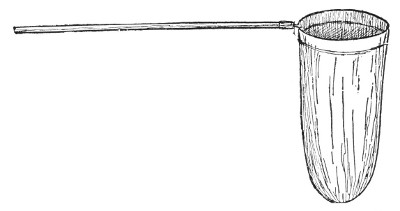
Fig. 128. Insect net.
Bend the wire into a ring about a foot in diameter and bend back about 3
inches of each end of the wire so they may be inserted into a hole
drilled into the end of the handle. The piece of tin should be fastened
around the end of the handle where the wire is inserted to hold it
securely in place. If practicable, a tinsmith should be called upon to
help in bending the wire and fastening it to the handle. After this is
done, take the sheeting and fold it over the wire double, using only
enough to fit around the wire without gathering; the object of this
heavy cloth is to prevent the net from wearing out quickly. Make the
cheese cloth into a bag with rounded bottom and just wide enough to fit
the facing of sheeting, to which it should be sewed securely, and the
net is finished.
How to Use the Net.
To be successful, the net must be swung swiftly. Insects have
many eyes and are very wide awake and have no desire to be
caught; therefore, the collector must be very active if he gets
anything. One method of using the net is called "sweeping;"
to do this take the handle about a foot and a half above the ring
and pass the net quickly back and forth striking it against the
grass in front of you as you walk through open fields; the net
must be turned at each stroke and kept in rapid motion or the
insects will escape. After a time the net should be examined and
the insects put in the killing bottle.
Another method of using the net is called "beating." This
method is used in collecting insects from bushes, and consists of
lifting the net, mouth upward, and striking it sharply against the
branches or leaves, thus jarring the insects into it.
To use the net in water, sweep the water plants as quickly as
possible. In running streams, overturn stones, holding the net
just below them with the mouth up stream. An old dipper made
into a sieve by perforating the bottom with an awl is a good utensil
for collecting water insects.
[216]
The Killing Bottle. Fig. 129.
It is desirable to kill the insects in a humane way, so that they
will not suffer by the process; it is also desirable that they
should not revive after they are pinned, both for their own
sakes as well as for the sake of the feelings of
the collector. The best way to secure painless
and sure death for the insects is by the means of
a "cyanide bottle."
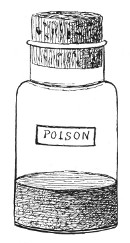
Fig. 129. Killing bottle.
Materials needed for a killing bottle.
1. A bottle with a wide mouth; a morphine bottle
or a small olive or pickle bottle will do. Even
a glass fruit-can holding a pint will answer very
well, although taking off and putting on the cover
consumes more time than is desirable.
2. A cork that will fit the bottle tightly and is
long enough to handle easily.
3. Two cents' worth of cyanide of potassium.
4. One cent's worth of plaster of Paris.
These latter materials may be procured from any drug store.
Place the lump of cyanide of potassium in the bottle and pour
in enough water to cover it. Add immediately enough plaster of
Paris to soak up all the water; leave the bottle open in a shady
place for an hour and then wipe the dry plaster of Paris from its
sides, put in the cork, and it is ready for use. The plaster of
Paris forms a porous cement, which, while it holds the cyanide
fast in the bottom, also allows the fumes of the poison to escape
and fill the bottle. It should be labelled "poison," for cyanide
of potassium is very poisonous. If kept corked when not in use,
a killing bottle made like this will last a whole season.
The first rule in using the killing bottle is this: do not kill any
more insects than you need for your collection. The second rule
is: do not breathe the fumes of the bottle, for they smell badly
and are not good for you. When you uncork the bottle to put an
insect in it, hold it away from your face and cork it up again as
quickly as possible.
Some insects may be caught from flowers, etc., directly into the
bottle by holding it uncorked beneath them for a moment; the
fumes of the poison soon overcome them and they drop into the
bottle. In taking insects from the net, hold the bottle in the right
[217]
hand and the cork in the left; insert the bottle into the net and
place the mouth of it over an insect crawling on the inside of the
net, then put the cork on the outside of the net into the mouth of
the bottle, net and all, for a moment until the insect falls into the
bottom of the bottle; then remove the cork and take the rest of
the imprisoned insects in the same way. Insects should be left
in the bottle at least an hour, and may be left in there over night
without injury to the specimens.
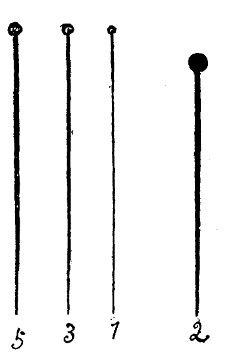
Fig. 130. Insect pins, 1, 3, 5, are German insect pins.
2 is a steel mourning pin.
After the insects are caught they should be pinned so that they may be
arranged in the collection in an orderly manner. Common pins are not
good for pinning insects; they are too thick and they corrode very soon,
covering the specimens with verdigris. Regular insect pins are desirable
as they are very slender and do not corrode so quickly. These may be
obtained of any dealer in entomological supplies at a cost of fifteen
cents per hundred.
Ask for the German insect pins Nos. 1, 3 and
5. If these pins are too expensive you can use
the black steel mourning pins. These come
in shallow boxes one by two inches square and
have round glass heads and the boxes are labelled "Germany;"
these may be procured from any dry goods store. However,
insects pinned with any beside regular insect pins cannot be sold
or exchanged.
All insects except beetles should be pinned through that part of
the body just back of the head, as shown in Figs. 137, 139, 140, 141.
Beetles should be pinned through the right wing-cover, as shown
in Fig. 138. About one-fourth of the pin should project above the
back of the insect. Very small insects may be gummed to a narrow
strip of card board and the pin put through the card board.
Labelling Specimens.
Specimens should be labelled with the date of capture and the
locality. Thus the butterfly, Fig. 141, would be labelled thus:
Ithaca, N. Y.
Aug. 12, 1896.
[218]
The paper on which this label is written should be slipped upon
the pin with which the butterfly is pinned and placed just below
the insect. Labels should be as small as possible and be neatly
cut.
Insect Boxes.
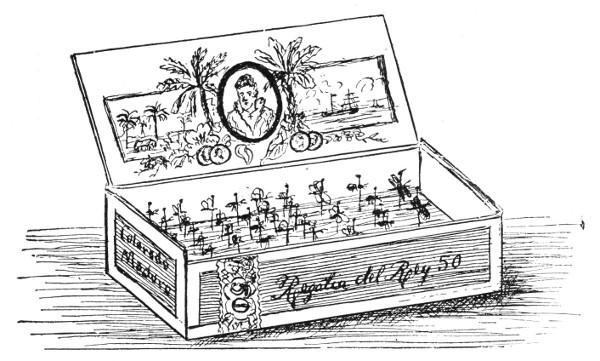
Fig. 131. A convenient box for the use of the young collector.
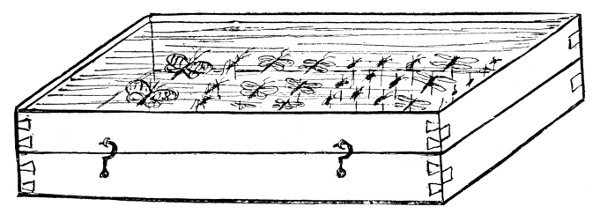
Fig. 132. Insect box made of wood, with glass top.
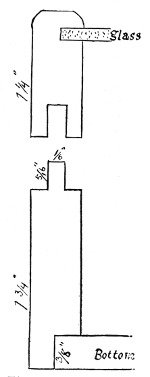
Fig. 133. A cross-section of the side of insect box Fig. 132, showing method of construction and giving measurements.
For the beginner nothing is more convenient than an empty cigar box,
which may be obtained at any store where cigars are sold. (Fig. 131.)
The bottom of the box should be covered with some soft, firm material
into which pins may be pushed without bending them. There are many such
materials. Sheet cork or pressed peat may be obtained of dealers in
entomological supplies. Some ingenious boys use regular bottle corks,
cut into cross sections about 1/4 inch thick. Others take the pith of
dried corn-stalks divided in half lengthwise. The cheapest and most
easily procurable of the purchasable materials is cork linoleum. This is
for sale in most carpet stores. Get the quality that is about 1/4 inch
thick, which costs about $1 per yard; put it into the box cork-side up.
Any of these materials can be fastened to the bottom of the box with
glue or with tacks. In all cases they should be covered neatly with
white paper, for the insects appear better against a white background.
For permanent collections, wooden boxes with glass tops are
much safer; and as the insects may be seen through the glass
these boxes are more practical for school collections. This kind
of a box is shown in Fig. 132. Its sides are 18 by 16 inches and
its height is three inches outside measure. The upper edge of the
sides of the bottom part of the box is made with a tongue which fits
[219]
into a groove made in the lower edge of the sides of the cover.
This is done so that the top and bottom parts of the box shall fit
very closely together in order that museum pests cannot get in
and destroy the specimens.
In Fig. 133 is a cross section through one side of the box, showing how
it should be made and giving measurements. In the drawing the glass is
fitted into a groove in the inner side of the cover. This glass might be
puttied in like a window pane if it is found difficult to make the
groove. The corners of the box may be mitred and dove-tailed, or mitred
and nailed; the latter is more easily done. Any carpenter or cabinet
maker can make this box. Great care must be taken to use only thoroughly
seasoned wood in its construction; otherwise the bottom will be sure to
warp and shrink and leave cracks through which the museum pests will
enter.
The cost of such a box will vary from $0.75 to $1. Basswood should be
used for its construction; pine is not at all suitable on account of the
resin in it. Screw eyes may be put into these boxes and they may be hung
on the walls of the schoolroom like pictures.
Museum Pests.
These are small beetles which find their way
through the narrowest crevice into the insect
boxes and lay their eggs on the pinned insects.
The larvæ when they hatch work within the
specimens at first but after a time destroy the
bodies entirely. The presence of these little rascals may be
detected by dust on the bottom of the box just below the infested
[220]
insect. As soon as this dust is observed, pour into one corner of the
box a tablespoonful of carbon bisulfide, or benzine, and close the box
quickly. The teacher or parent should put the substances into the boxes,
as the first is a poison and both are very inflammable. As a method of
preventing the beetles from attacking the collection it is well to
fasten a "moth ball" into one corner of the box. These may be obtained
at a drug store.
Spreading-board. Fig. 134.
Butterflies and moths look much better in a collection when their wings
are extended at right angles to the length of the body. To arrange them
thus we have to use what is termed a spreading-board.
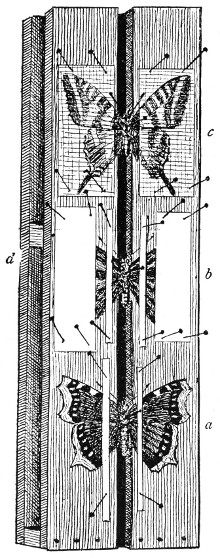
Fig. 134. A spreading-board.
Materials needed for a medium sized spreading-board.
1. Two strips of pine or other soft wood 18 inches long, 11/2 inches
wide and 1/2 inch thick.
2. One strip of wood 18 inches long, 31/4 inches wide and 1/2 inch
thick.
3. Two cleats 31/4 inches wide, 3/4 inch high and 1/2 inch thick; and
two cleats 1 inch wide and as high and thick as the others.
4. A strip of cork or linoleum 17 inches long and a little less than an
inch wide.
To construct the spreading-board, take the two narrow strips of
wood, place them one-fourth inch apart and on the under side
fasten them across the ends of the longer cleats. Then on the
same side as the cleats tack the piece of cork or linoleum over
the space between the strips of board, and as the cleats are one-half
inch wide the linoleum should cover all the space left. Then
midway the boards fasten the two smaller cleats. Fig. 135 shows
a cross-section of the spreading-board just in front of these two
[221]
middle cleats. Now it is ready for the bottom board which will fit
exactly if directions are followed, and this completes it. The space
between the two upper boards is wide enough to take in the body of the
moth or butterfly. The cork or linoleum below the space will hold firmly
the pin on which the butterfly is impaled. The cleats hold the top and
bottom boards apart and so protect the points of the pins.
Spreading-boards may be made much smaller or much larger to suit moths
of different sizes; the space between the top boards must always be
large enough to admit the body of the insect.
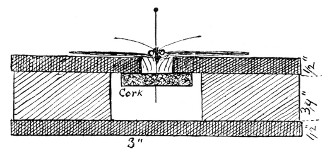
Fig. 135. A cross-section of spreading-board in front of the cleat "d" in Fig. 134.
To use the spreading-board: Insert the pin with the butterfly
on it into the linoleum just far enough so that the body of the
insect will be in the space between the boards up to the wings,
Fig. 135. Place the wings out flat on the board and fasten them
there with narrow strips of paper pinned across them, Fig. 134, a.
While held down by these strips of paper arrange them so that
the hind margins of the front wings shall cover the front margins
of the hind wings and shall be in a line at right angles to the
body; then pin larger pieces of paper over the rest of the wings,
Fig. 134, b. Sometimes isinglass is used instead of paper to hold
the wings down, Fig. 134, c. The insects should be left on the
spreading-board at least three days; and when the board has
insects on it, it should be kept in a box where the museum pests
and mice cannot get at it.
Sometimes when the moths are not spread soon after being
killed, they become so stiff that the wings cannot be moved without
breaking them. In such cases the insects should be put
on paper in a jar which has some wet sand in the bottom and
which can be covered tightly. The air in such a can is so moist
that in two or three days the insect will become limber and may be
spread with ease.
Where to Collect Insects.
The border of a piece of woods where many shrubs and weeds
are growing is an especially good place for collecting many kinds
[222]
of insects. Any place where there is a great variety of plants and
flowers will give a variety of insects. Banks of streams and
underneath stones in the fields are good places for collecting.
When To Collect Insects.
The best time of the year is during the summer months. The
best time of day is in the forenoon after eight o'clock, and in the
twilight at evening.
At night many moths may be caught by making a paste of sugar
and water (unrefined sugar is best) and painting it upon tree
trunks with a brush after sunset. The paste should cover a space
two inches wide and several inches long. After dark seek these
places cautiously with a lantern and moths will be found sucking
the paste; these may be caught with the killing bottle if you move
carefully so as not to frighten them; they do not seem to mind
the light of the lantern.
Electric street-lights attract many insects which may be caught
in the net. A lamp set in an open window is also a very good lure
on warm nights in the spring and summer.
Arranging the Insects in Boxes.
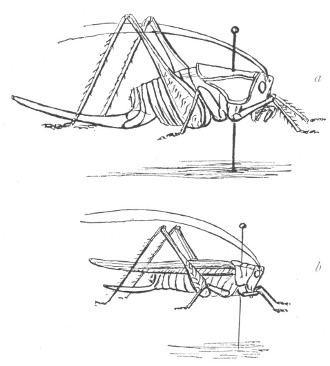
Fig. 136. a, Cricket. b, Grasshopper.
After collecting insects comes the desire to arrange them properly,
putting together in neat rows those that resemble each other. To
classify insects correctly requires much study. The scope of this
leaflet admits of only a few suggestions about the most common insects.
Dragon Flies.—There are many kinds of these, but they all have four
wings, finely netted and transparent, the hind wings being as large or
larger than the front wings. These are perfectly harmless insects.
Grasshoppers, Crickets and Katydids.—These are known to all,
[223]
Fig. 136. There are two families of grasshoppers: those with
long horns or antennæ and those with short antennæ. Katydids,
crickets, cockroaches and walking-sticks
are near relatives to the
grasshoppers.
Bugs.—These insects have the front pair of wings thick and heavy at
the base and thin and transparent at the tips, Fig. 137, b. The
squash-bug, the chinch-bug, and the electric-light bug are examples of
these. Some bugs have the front wings entirely thin and transparent and
sloping like a steep roof over the back of the insect, like the cicada,
Fig. 137, a; and the Brownie bug, Fig. 137, c, d.
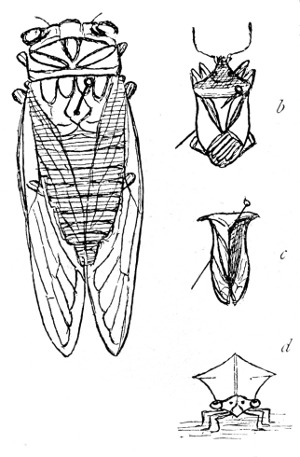
Fig. 137. a, Cicada. b, Stink-bug. c, Leaf-hopper. d, Leaf-hopper—front view.
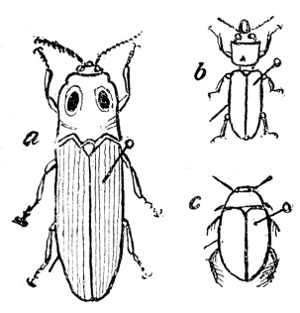
Fig. 138. Beetles—showing the pin through the right
wing cover. a, Snapping beetle. b, Wood-boring beetle. c, Water
beetle.
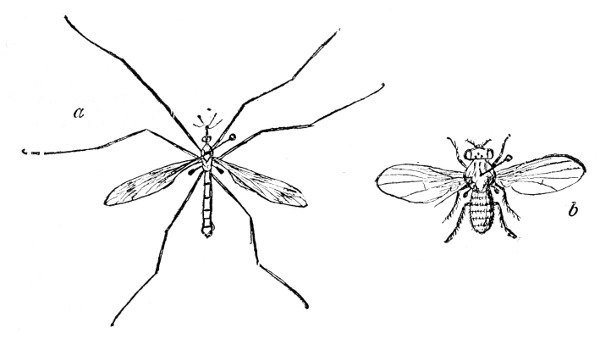
Fig. 139. Flies—showing the knobs just below the wings. Note that flies have only two wings. a, Crane fly. b, Pomace fly—enlarged.
Beetles.—These
have hard wing-covers
which meet in a
straight line down the
[224]
back and have a pair of thin wings folded under them, Fig. 138.
The "June bug" or "May beetle" and the potato beetle are good
examples of beetles.
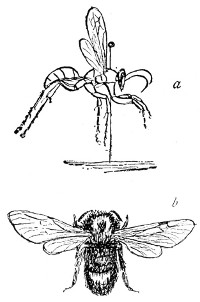
Fig. 140. a, Wasp. b, Bee. Note these have four wings.
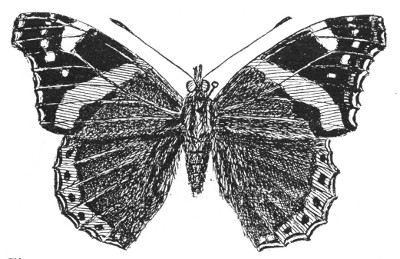
Fig. 141. The Red Admiral butterfly. Note the knobbed antennæ.
Flies.—These have only two wings, usually transparent. Behind
each of these wings a short thread with
a knob on it extends out on each side
of the body instead of hind wings,
Fig. 139. House-flies, horse-flies and
mosquitoes are examples of flies.
Bees, Wasps and Ants.—Bees, wasps
and the winged form of ants have four transparent wings, Fig.
140. Some flies resemble bees and wasps, but if examined it will
be found that they have only two wings instead of four.
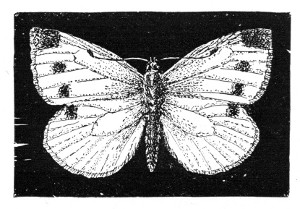
Fig. 142. The Cabbage butterfly.
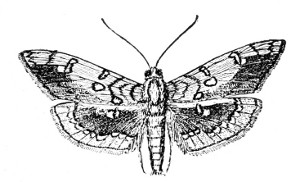
Fig. 143. The Bass-wood leaf-roller moth.
Butterflies and Moths.—Butterflies and moths may be told apart
by the following character: The antennæ or horns of the butterflies
are always threadlike and knobbed at the tip, Figs. 141, 142,
while the antennæ of moths are in various shapes, but never bear
knobs at the tips, Figs. 143, 144, 145, 146.
[225]
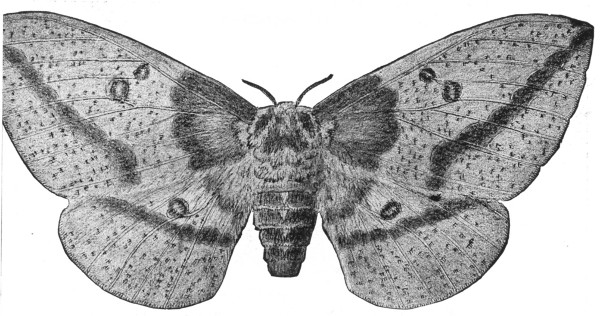
Fig. 144. The Imperial moth. A common night-flying moth.
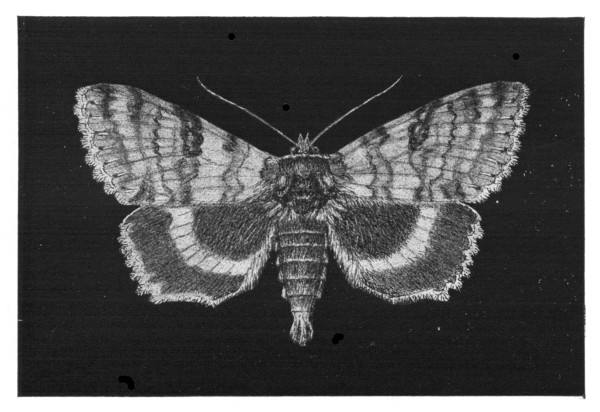
Fig. 145. An under-wing moth.
[226]
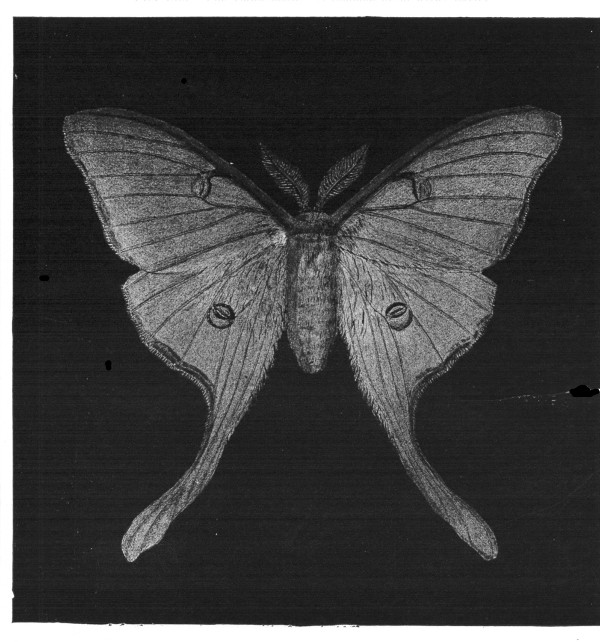
Fig. 146. The Luna moth. A common night-flying species.
DEALERS IN ENTOMOLOGICAL SUPPLIES.
The following is a list of the dealers in entomological supplies that have advertisements
in the current American entomological journals:
A. Smith & Sons, 269 Pearl Street, New York, N. Y.
John Akhurst, 78 Ashland Place, Brooklyn, N. Y.
M. Abbott Frazar, 93 Sudbury Street, Boston, Mass.
Entomological Society of Ontario, Victoria Hall, London, Ont.
Queen & Co., 1010 Chestnut Street, Philadelphia, Pa.
The Bausch & Lomb Optical Company, 515-543 N. St. Paul Street, Rochester, N. Y.
[227]
LEAFLET XIX.
SOME TENT-MAKERS.[24]
BY ANNA BOTSFORD COMSTOCK.

It is unfortunate that there is, throughout the country, a prevailing
dislike for the small creatures called "worms." This dislike is, in most
instances, the result of wrong training, and is by no means a natural
instinct. As evidence of this, witness the joy with which the small boy
or even the small girl, handles "bait" when preparing to go fishing;
although of all common "worms" surely the angle-worm is least attractive
from any point of view. A still more striking example is the hardihood
with which young fishermen catch the dobson to use as a lure for
bass—for the dobson is not only very ugly in appearance but is also
vicious, often pinching severely the careless fingers of its captors.
Thus the dislike for insects being the result of the point of view, it
should be the first duty of the teacher to remove this repulsion. In the
lesson which follows there is no occasion for teacher or pupils to touch
the insects unless they choose to do so; but an attempt is made to
arouse an interest in the habits and ways of insect life. If we can
succeed in arousing the child's interest in the actions of a
caterpillar, he will soon forget his dislike for the "little brothers"
which live upon foliage and which experience miraculous changes of form
during their short lives.
In selecting the Apple-tree Tent Caterpillar for this lesson we
have been guided by the following facts: First, it is to be found
in early spring; second, its life-history from egg to cocoon is
accomplished within the limits of the spring term of our schools;
third, it is common everywhere; fourth, it is an important insect
from an economic point of view, and the children may be taught
how to keep it out of the orchards, thus making the lesson of
practical use.
In this lesson the teacher is encouraged to use her own methods
and originate new ones to make the work interesting. The Leaflet
[228]
is meant for the exclusive use of the teacher and the text should
not be shown to the pupils. The pictures on page 235 are to be
shown to the pupils at the teacher's discretion. When answers
are herein given to the questions asked, they are meant to aid the
teacher in drawing out the correct replies from the children.
Materials Needed.
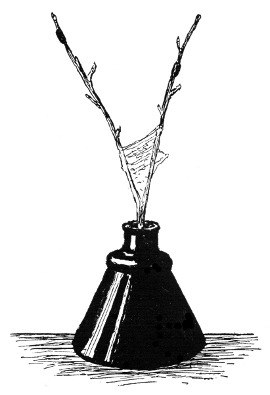
Fig. 147. The bottle with the twigs bearing the
egg-masses. The tent is being woven below.
1. A pocket lens or a tripod lens is desirable, but not a necessity.
These lenses may be bought from or ordered through any jeweler or
bookseller. They cost from twenty-five cents to one dollar each. It is
worth while for any teacher to possess one of these magnifiers as a
means of interesting her pupils in many things.
2. A bottle, a broad-bottomed one being preferable so that it will not
tip over easily. This bottle is to be filled with water in which a small
branch of the apple tree may be placed to keep it fresh. A common ink
bottle will do to begin with. Fig. 147.
3. A wooden or pasteboard box, twelve or fourteen inches square,—a soap
box or hat box will do. In place of a cover, nail or paste mosquito
netting or cheese cloth over the top; remove the bottom so that the box
may be placed over the bottle and the branch of apple in it. This is
called a "breeding-cage," and its use is to keep the insects from
straying about the schoolroom.
4. A twig bearing the egg-mass of the tent caterpillar. These are easily
found before the leaves appear on the apple tree or the wild cherry
tree.
Methods of Using the Leaflet.
The teacher should give the pupils a preliminary talk on
tents. Speak of the tents used by Indians, by armies, by circuses,
by campers, and describe them each in turn. The teacher should
use all the facts at her disposal, and all her ingenuity to get the
children interested in this subject. Spend a little time for two or
three days in discussing tents, and get the pupils to tell orally or
in essays all they know about tents. When sufficient interest is
thus aroused, tell them this: "The reason we have talked about
[229]
tents is that we are going to study some little folks who make
tents and live in them. Their tents are not made of bark like the
Indian's or of canvas like the soldier's, but are made of the finest
silk, which is spun and woven by the tenters themselves. These
silken tents are not pitched upon the ground and fastened down
by ropes and pegs, for these folk, like the Swiss Family Robinson,
live in trees. Many people live in one of these tree tents, and
they are all brothers and sisters. Now, just where these tents are
made, and how they are made, and what sort of little people make
them are things which we shall find out if we watch carefully and
patiently."
Lesson I.—the Eggs. Fig. 149, a.
The teacher, having found the egg-mass, should show it to the
pupils and let them, during play hours, collect some for themselves.
Say that they are eggs, but explain no further. Get the
children to examine the egg-masses; ask the following questions:
On what part of the trees are these egg-masses found?
What is the shape of the egg-mass? (Bring out the fact that
they look like a portion of the twig swollen or budded.)
What is the color of the egg-mass?
Is there much difference in color between the egg-mass and the
branch?
Has this similarity in color any use? (Develop the idea that
the shape and the color of the egg-mass make it resemble the
twig so closely as to hide it from birds or any animal that would
be likely to eat the eggs.)
Does the egg-mass shine?
Why does it shine? Answer. Because there is a coat of varnish
around the eggs.
Why was varnish put around the eggs? (Get the answer by
asking why varnish is put on wood. Varnish is put around the
eggs to preserve them and to keep them dry during the rains and
snows of autumn and winter.)
If the eggs are near the hatching period the varnish will have
scaled off, revealing the tiny white eggs; if not, let the teacher
remove the varnish with a knife or pin, thus exposing the eggs.
If the teacher has a lens the children should view the eggs through
it. Exhibit the picture Fig. 149, b, which represents the eggs
greatly enlarged showing the net-work of cement which holds
them in place. Ask the children to compare the shape of these
eggs with that of bird's eggs, and bring out the fact that these are
[230]
thimble-shaped. Then ask the pupils to guess what sort of
mother laid these eggs, cemented them fast with a network, and
then covered them with a coat of waterproof varnish. After sufficient
interest is aroused on this point, explain to them: "One
day last July a little moth or miller was flitting about the tree
from which these twigs were taken. If we could have been there
and caught her we should have found her a pretty little creature
with four wings covered with down and a soft fuzzy body. In
color she was a pale rosy-brown, and had two bands of pale yellow
across each front wing." (Call attention to the picture of the
moth, Fig. 149, e.[25])
"This is the little mother which laid her eggs in a ring around
the twig and covered them with a waterproof coat to keep them
safe and sound until this spring, when they will hatch."
What will come out of these eggs when they hatch? The
teacher should not answer this question, but let the pupils watch
the eggs and discover the answer for themselves.
Place the twig with the egg-mass upon it in the bottle of water
(Fig. 147). It will be best if this twig is a part of a forked branch,
so that the caterpillars may make their web upon it (Fig. 148).
As soon as the eggs hatch ask the following questions:
What sort of young ones hatch out of the eggs?
Are they like their mother?
What color are they?
Why are their heads so large? Answer. So that they can gnaw
the lid off the egg and thus get out.
Why should the young ones of a pretty moth be little black
caterpillars?
(Leave this answer for future investigation.)
After the caterpillars hatch it will be necessary to bring in each
day fresh apple twigs with buds and leaves on them so as to feed
the little prisoners. It is very desirable that they be kept alive
until they have begun their web and have molted at least twice.
If they show a disposition to wander off, put the breeding cage
over the bottle and branch and so keep them confined with their
food.
To supplement the study of the imprisoned caterpillars, study
should be made at the same time of the insects out of doors and
[231]
under natural conditions. If none appear upon an apple or wild cherry
tree near the school-house, the teacher should transfer a colony to such
a tree (Fig. 148). This may be done by fastening a twig with an egg-mass
upon it to a branch of the tree. If too late to get the unhatched eggs,
get a nest with the small worms in it and tie that to the convenient
branch instead. This study of the insects out of doors is very necessary
in discovering their normal habits.
Lesson II. The Caterpillars. Fig. 149, c.
If the eggs hatch before the leaves appear, upon what do the
caterpillars feed?
How long is it after hatching before the caterpillars commence to make
their tent?
Where is the tent always formed?
Answer. In the fork of the branches.
Why is this so?
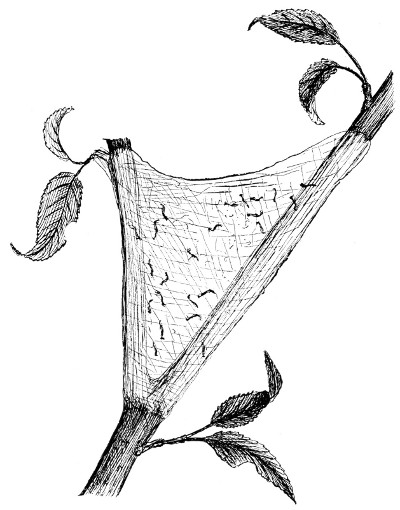
Fig. 148. A young colony of tent-makers on a cherry tree.
Answer. The forking branches offer a convenient support upon
which to stretch the tent: and when, as in the case out of doors, the
tent is spread in a fork of the larger limbs, these limbs afford two
branching roads for the caterpillars to follow in searching for food.
Let the pupils make drawings of the tent as soon as it is large
enough to be seen well.
What is the color of the caterpillars when they are a week old?
Upon what do they feed?
At what time of day do they feed?
When on a tree, how far from their tent do they go for food?
Are the paths over which the caterpillars travel when searching
for food marked in any way?
[232]
Answer. This caterpillar spins a silken thread wherever it goes
and therefore leaves a trail of silk behind it.
Of what is the tent made?
Compare the tent with a spider's web and note the differences.
Where does the silk come from, of which the tent is made?
Answer. The silk glands of the caterpillar are situated near the
mouth, while those of the spider are on the rear end of the
body.
Lesson III. How the Insects Grow.
The caterpillars shed their skins about five times. The first
molt occurs about three days after they hatch; the second molt
about four days later; and the third molt about six days after the
second. After each molt, the color and markings of the caterpillars
are somewhat changed. During some of the molts the pupils
should watch a caterpillar change his skin. After the class has
seen this operation the teacher may give the following lesson:
Where is your skeleton?
What is it made of?
What is it for? Bring out the fact that the skeleton is a support
for the muscles and organs of the body.
Where is an insect's skeleton? Get as many answers to this
question as possible, then explain:
The insect's skeleton is on the outside of its body instead of a
skin, and the flesh and muscles are supported by it on the inside
instead of on the outside like our own. As this skeleton is hard
it cannot stretch; as the insect grows and gets too large the shell
bursts open and the insect walks out of it. Now underneath this
old hard skeleton a new one is formed, which is soft and flexible
at first, and so stretches to accommodate the growing insect.
After a little time this new skeleton also hardens and has to be
shed when it is too small to suit its owner.
Notes should be made by the pupil upon the change of color
and markings after the different molts, and the process of molting
should be described.
Lesson IV. The Pupa. Fig. 149, d.
In ordinary seasons, about the middle of May, the caterpillars
get their growth. If those in the breeding cage have died or have
not thrived, bring in a few full-grown caterpillars from the orchard
and put them on some branches in the breeding cage. Give them
fresh food each day as long as they will eat; also place some
[233]
sticks and chips on the bottom of the breeding cage for the
worms to "spin up" on. Then have the children observe the
following things:
How do the caterpillars begin their cocoons?
Where are the cocoons made?
How are they made?
Draw a picture of a cocoon.
About a week after a cocoon is made, open it carefully with a
pair of scissors so as not to hurt the inmate, and let the pupil see
the change that has come over the caterpillar.
Have the pupils describe the pupa.
Let the pupils make drawings of the pupa.
The moths will hardly emerge from the cocoons until after the
close of the school term. The children should be encouraged to
gather the cocoons from the fences around the orchards and from
the sticks and the branches on the ground and to carry them home.
The cocoons may be placed in pasteboard boxes and kept until
the moths emerge, about the middle of July.
Lesson V. Destroying the Caterpillars.
After the caterpillars are fully grown and all the processes of
growth have been observed by the pupils, the teacher should give
a lesson upon the injury which they do to trees and the necessity
of keeping the orchards free from these pests. This lesson should
be given guardedly so as not to encourage the children to cruelty
in killing insects. The teacher should always try to inculcate in
the child reverence for life, that wonderful force, which we can so
easily take from a creature but which we can never give back.
It is better to appeal to the child's sense of justice in giving this
lesson. The teacher may vary it to suit her own ideas, but in substance
it might be given somewhat as follows:
"All life is sacred; the smallest worm has as good a right to live
in the sight of God as you or any child has. Life should never
be taken except when necessary. However, no one has the right
to interfere with the rights of another. Neither the child nor the
worm has any right to trespass upon the property of any one else."
"Let us see whether these caterpillars are trespassers or not.
The farmer works hard to earn the money to buy the land upon
which the orchard is planted; he works hard to earn the money
with which to buy the young trees; he works hard to set out the
trees and cultivate the orchard; therefore the orchard and the
fruit of it are his property, and he has a right to drive away all
[234]
thieves. If men or children steal the fruit, he has a right to
appeal to the law and have them fined or imprisoned. If worms
come and injure the tree by eating up the foliage, he has a right
to keep them out if he can. The leaves are necessary to the
tree, for if they are destroyed the tree cannot get the air it needs
to keep it vigorous and enable it to mature its fruit. We have
seen that these caterpillars destroy the leaves, and thus do great
injury to the apple crop. We therefore have a right to destroy
these little robbers, as that is the only way we can keep them out
of our orchards."
How can the caterpillars be destroyed?
The egg-masses can be collected in winter and early spring
from young orchards, and burned.
Tie bits of suet or fresh fat pork to the branches of the trees
and thus induce chickadees, nuthatches, and woodpeckers to visit
the orchard in winter. These birds will destroy eggs and cocoons
of the tent caterpillar, and of other insect pests also.
In large, old trees, we must wait until later. Ask the pupils the
following questions:
At what times did we find the worms in their tents? Answer.
Early morning; late afternoons; and during cold, dark days.
If we should destroy the tents in the middle of a warm, sunny
day, what would happen? Answer. The caterpillars, being out
feeding on the leaves, would not be hurt, and as soon as they
came back would make another tent.
If the tent is destroyed in the early morning or late afternoon
or on a cold, dark day, what would happen? Answer. The caterpillars,
all being in the tent, would be destroyed.
How may the tents be destroyed? Answer. By wiping them out
with a long pole on one end of which is wound a rag saturated
with kerosene. Or by burning them out with a torch.
Is it best to destroy the caterpillars early in the season, while
they are still small, or to wait until they are large and are about
ready to pupate.
If the trees were sprayed with Paris green in the early spring,
what would happen? Answer. The caterpillars would be killed as
soon as they began to eat, when they were first hatched.
When these caterpillars feed on the leaves of wild cherry they
are doing no damage to an orchard. Therefore, when the tents
appear on wild cherry trees have we any right to destroy them?
Answer. The wise and careful farmer does not allow wild cherry
[235]
trees to grow along his fences if they will become breeding places
for insect enemies which will next year attack his orchards.
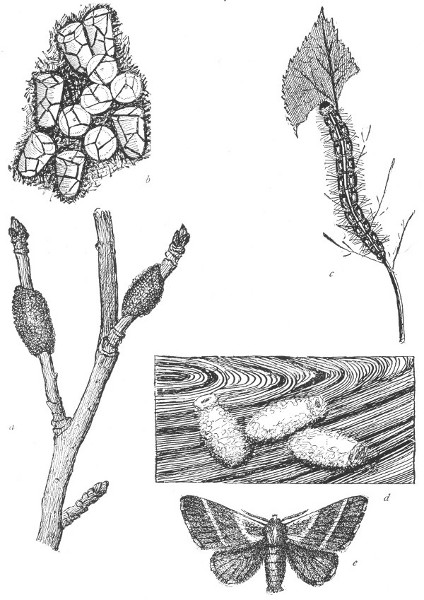
Fig. 149. The Curious History of a Tent Caterpillar.
a, The masses of eggs on the twigs of an apple tree. b, The eggs enlarged. c, A full
grown caterpillar. d, Cocoons. e, The moth, or adult insect.
[236]
[237]
LEAFLET XX.
MOSQUITOES.[26]
By MARY ROGERS MILLER.
"Nature-Study is learning those things in nature that are best worth
knowing, to the end of doing those things that make life most worth living."
—Professor Hodge in Nature-Study and Life.
Spite of all the efforts of scientists and nature-students to popularize
the mosquito, its reputation as a public nuisance is as well sustained
as ever, and it seems destined to remain as unpopular as were its
ancestors. There is no doubt that these creatures "abound" and that
"they are great annoyances to both man and animals," as Dr. Howard tells
us in "The Insect Book;" but he has laid a new and even more deadly sin
at their door in stating, as he does in no uncertain terms, that "they
are active agents in the transfer of disease."
There seems to be no escape from the attention of these persistent
"imps o' evil." Though we travel to far Alaska or to icy
Greenland we cannot be free. Since we are doomed to existence
in the same world with the mosquito it behooves us to discover,
if possible, some way to turn the creature to account for
our entertainment or instruction. Forget for the moment that you
despise mosquitoes, and let us study their ways. By making its life
history the subject of some of our lessons we may at least learn how
the mosquito lives and develops; and later we can turn this knowledge
to practical account. Since for many generations these creatures
have made the human race the subject of insistent study, it
is no more than fair that the tables should be turned!
You are not good nature-students until you have recognized
and overcome your prejudices. You read the life history of the
rabbit and you think you hate its enemies. You watch a family
of foxes with their cunning ways, and the mother's care for her
[238]
young and you cannot help sympathizing with them in their
struggle for existence. Every creature in its turn becomes interesting
to you when you find yourself wondering about how it
makes its home, rears its young, and gets its food. As you get
nearer to nature you will cease to feel any pride in the fact that
you "hate" snakes, mosquitoes, and all such "varmints." Indeed
that hatred, born of ignorance, will have given place to sympathy
and interest. You have a new point of view.

Fig. 150. Mosquito's wing.
One of the first questions asked of the returning animals in early
spring is, "How have you spent the winter?" The bluebird and the robin
show no signs of weariness after their long flight from the South. The
"woolly bear" caterpillars look just as they did in October. The early
butterflies are a trifle worn and shabby after their hibernation. But
who has thought to inquire where and how the mosquito has spent the cold
season? "Who cares," one may say, "so long as they don't stay around
where we are as they did last summer?"

Fig. 151. Raft of eggs, greatly enlarged.
Suppose we make it our business from now on to care about such things,
and to inquire into the ways our plant and animal neighbors have of
living and of getting a living. Are you quite sure that the mosquitoes
have not spent their winter under your protection? If in April you had
had occasion to frequent either garret or cellar there you might have
found them. By dozens and scores they were waiting for the return of
warm weather to free them. Many of them winter not as eggs, larvæ, or
pupæ, but as winged adults, as mosquitoes. This rather interferes with
the prevalent notion that mosquitoes live but for a day. Would that this
were true, and might that day be short!
The Life History of the Mosquito.
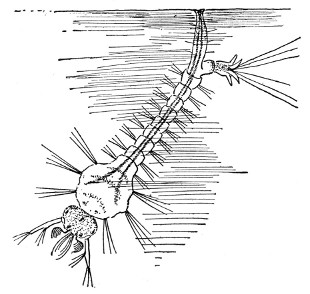
Fig. 152. The larva or wiggler.
The life history of a mosquito is in four chapters, some of
which are exceedingly short, others long. The length of each
may be varied by the weather and the season. Moisture and
warmth are particularly advantageous to the rapid development
of these creatures. Ten days in hot weather may be sufficient
[239]
time for the growth of a generation of them, from egg to adult.
There are many generations in a year.
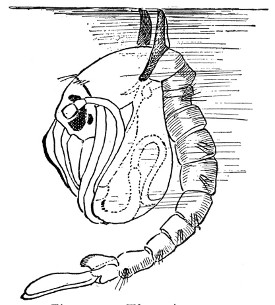
Fig. 153. The active pupa.
The larvæ of mosquitoes are aquatic. They live in stagnant water
everywhere, in ponds, swamps, ditches, puddles, rain-water barrels, and
horse-troughs. In early spring the female mosquito that has wintered in
your garret will probably go to the nearest rain-water barrel or
water-tank. She finds her way by instinct, before the sun is up. When
you go to replenish your pitcher you will find a little flat cluster of
eggs like a tiny raft floating on the surface (Fig. 151). It is
dark-colored and the chances are you will not see it unless it gets into
your pitcher. By two o'clock in the afternoon there may be from two to
four hundred lively little wigglers in the water. Possibly they will
wait until the following day. They all hatched from the eggs of one
mosquito. They hitch and twitch about in the water, coming often to the
surface and hanging there for a moment (Fig. 152). You call them
"wigglers." But did you ever wonder why they wiggle, why they come so
often to the surface, and why they thrust up the little tube which
projects from near the end of the body? Did you ever ask what they find
to eat in the water, and how they eat it?
The larval stage lasts about ten days in hot summer weather, but longer
when the days are cool. Then comes a change in form into the pupa (Fig.
153). The creature is still active and aquatic, though no food is taken.
It does not stay long away from
[240]
the surface while in this stage. Finally, after two or more days
as a pupa, the full-grown mosquito emerges and takes wing, leaving
its pupa case floating on the top of the water like a forlorn
little derelict.
Enemies of the Mosquito.
Besides man, the mosquito has many natural enemies. In the
water especially they fall easy victims to the thousand-and-one
insect ogres. The nymphs of dragon-flies are especially fond of
wigglers, and there has been much said and written about raising
dragon-flies as a safeguard against mosquitoes. Most of the predaceous
insects which live in still water feed on young mosquitoes,
while the adults often fall prey to their more swiftly flying
insect neighbors.
How To Study the Mosquito.
Over and around the tumbler place a piece of close-woven mosquito
netting to confine the adult insects. A glass tumbler two-thirds
full of rain-water, a little cluster of eggs, or a half dozen
wigglers, a keen observer, and you have a nature-study opportunity
not to be surpassed in the finest laboratory. If you have already
seen a part of the life history, do not be satisfied until you have
completed your chain of observations. Get the eggs; watch the
hatching, the molting, the transformations. See every stage. Learn
something new every time you look at the wiggler or the mature
mosquito. It is not at all necessary that you let these insects
escape into the school-room and cause trouble.
Those who wish more minute description, with many illustrations
of mosquitoes of different kinds, should obtain from the
Division of Publications, Department of Agriculture, the published
results of Dr. L. O. Howard's studies of mosquitoes.
In this pamphlet, from which the drawings in this lesson are
copied, the subject of the transfer of disease germs by mosquitoes
is very thoroughly discussed, with pictures which distinguish
between the common mosquito and those which transfer malaria
and other diseases.
Those scientists who had to do with the naming of the many
species of mosquitoes had certainly a sense of humor. One
would think they named the creatures according to the mildness
or malignity of their bite. A few of the names are as follows:
- Culex excitans
- Culex pungens
- Culex irritans
- Culex stimulans
- Culex perturbans
- Culex excrucians
[241]
THE CRUSADE AGAINST MOSQUITOES.
By M. V. SLINGERLAND.
There is now a world-wide crusade against mosquitoes, extending
from the wilds of Africa through the noted malarial districts
of Italy to America. In America a National Mosquito Extermination
Society has been formed. This extensive crusade is due to
the practical demonstration that some kinds of mosquitoes may
transmit malaria, yellow fever and probably other diseases of
human beings.
All mosquitoes must have water in which to develop, and the
warfare against them consists largely in destroying their watery
breeding grounds. This is being done on a large scale, either by
draining or by filling in marshes, pools, and similar places which
often swarm with the "wigglers." Large areas of such mosquito-breeding
waste lands in New Jersey and on Long Island are thus
being reclaimed and the mosquito nuisance largely abated.
Aquaria, rain barrels, tanks, small ponds and similar places can
be kept free from the "wigglers" by introducing small fish, as
gold fish or silver fish, sunfish, "killies," roaches or minnows.
An interesting and instructive object lesson could be given by
putting a few minnows from a near-by brook into the school
aquarium or into a specially prepared glass dish well stocked with
the "wigglers."
One can easily prevent mosquitoes from breeding in rain barrels
or tanks by covering them with mosquito netting.
Another practicable and successful method is to pour or sprinkle
kerosene oil every two or three weeks in a thin film over the surface
of cesspools, rain barrels, tanks, ponds or any other body of
sluggish water where the "wigglers" are found. This oil film
kills the "wigglers" (both larvæ and pupæ) by preventing them
from getting to the surface to breathe, and it also prevents the
mother mosquito from laying her eggs on the water. There are
patent preparations or oils which penetrate all through the water,
killing the "wigglers" but spoiling the water for general use, so
that such oils are usually applied only to infested cesspools, sewer
basins, or manure pits.
By a little concerted effort of local officials, individuals, or by
the school children in applying whichever of the above methods
is most practicable, much interesting and valuable work could be
accomplished and the pestiferous mosquito largely eliminated in
many localities.
[242]
[243]
LEAFLET XXI.
THE WAYS OF THE ANT.[27]
By ANNA BOTSFORD COMSTOCK.
For many years ants have been recognized as among the most interesting
of the little animals that people our fields. However, not until
recently have we begun to understand, even in a small measure, their
economic importance and the part they play in maintaining the balance in
insect life. Therefore, we shall give a few studies of ants and their
ways, and as a knowledge of their habits is necessary to begin with, we
will take up the ant-nest first.
An Ant-nest.
Two panes of glass laid flat one on the other with a space
between of one-eighth of an inch or less, these panes covered with
a piece of dark paper or wood to keep out the light and then
placed on something that will allow them to be surrounded by
water; a bit of blotting paper two inches square, dampened and
placed at one end of the glass chamber—these are all the materials
and the art necessary for the construction of a perfectly equipped
ant-nest.
Once we wished to make an ant-nest hurriedly, and this is the
way we did it: we chose an agate wash basin (Fig. 154), as this
would not rust, and filled it half-full of water; in this we made an
island, by placing in it a three-pint agate basin turned bottom side
up. We took two discarded negatives, size 4x5 inches, and cleaned
off the films; then we placed one of the pieces of glass on the
basin-island, took the stumps of four burnt matches and placed
one on each side of this glass near its edge; then we placed the
other piece of glass on top, letting it rest on the matches to make
a chamber just high enough for the ants to live in comfortably.
[244]
This done, we took the cover of a cigar-box and cut it down to
the size of the negatives, put a screw-eye in the center to lift it
by and placed it on top of the upper glass to make the chamber
below quite dark. Then we took a trowel and fruit-can and went
after some inhabitants for our island. We went to an open
pasture and turned over stones until we found beneath one a heap
of yellowish grain-like pupæ and little translucent whitish bodies,
which we knew were larvæ, all being cared for by swarms of
worker-ants. One of us pushed the trowel beneath, taking up
dirt and all, while the other held the can open, into which the
trowel was emptied. We hastened back and as gently as possible,
taking care to hurt none of our little captives, placed the contents
of the can on the top of the nest.
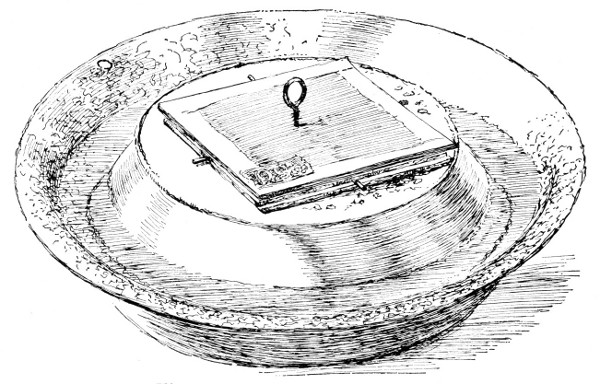
Fig. 154. An improvised ant-nest.
As the first thought of an ant is never for its own safety, but
for the safety of its infant sisters, the little workers began to hunt
for a safe and dark place in which to stow away their charges.
In running about they soon discovered the space between the two
pieces of glass and in a few hours the young ones were moved into
the new quarters. Then we cleaned away the earth on top of the
nest, and by lifting the cover we were able to see all that was
going on within. The water in the wash-basin prevented any of
our uneasy captives from escaping, as these little people, so clever
in most things, have never yet mastered the art of swimming.
I have an ant-nest on my table as I write, shown in Fig. 156.
Instead of matches to keep the two pieces of glass apart I have a
narrow strip of canton flannel glued around the edge of the glass
floor except for two little doors at the opposite corners; there is
[245]
also a narrow strip of cloth partitioning the chamber into two
rooms with a door at one end. One room I left empty and in the
other I placed a bit of blotting paper which I keep damp by occasionally
adding a few drops of water. The nest is placed upon a
piece of plank 18 inches square. Around the plank near the edge
is a groove about an inch deep made with a chisel and kept full
of water, so that my ants have a castle with a moat. It was necessary
to paint this bit of plank thoroughly, above and below, to
keep it from warping.
The ants in my nest I found on a hillside beneath a stone; they
are brownish with yellow legs and a little less than a quarter of
an inch in length. They were stupid at first and would not discover
the chamber prepared for them, but persisted in hiding
their young under bits of earth which were brought in with them.
So I made a scoop of a sheet of writing paper and with it placed
a heap of the young, with a few of the nurses, in the empty chamber,
then put on the glass ceiling and cover and left them. In a
few hours the whole colony had moved into this chamber, but
evidently it was not humid enough for the health of the young, and
by the next morning the pupæ and larvæ and eggs were all in the
other chamber arranged around the edges of the blotting paper.
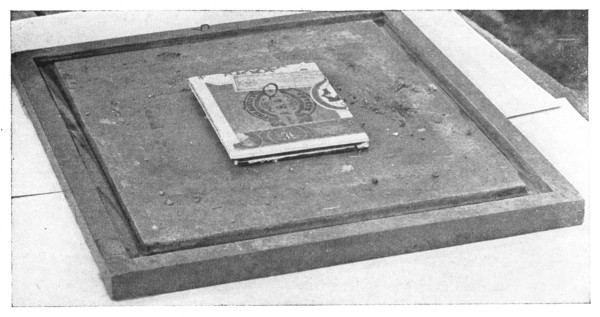
Fig. 155. Ant-nest, on a piece of plank, which has a moat near its edge to confine the insects.
What I have seen of interest in this nest on my table would fill
a small volume, if written out in detail. Just now a worker
approached a pupa, that appears through the lens like a little bag
[246]
of meal tied at one end with a black string; she examined it carefully
with her antennæ and concluded it needed to be moved, and,
though it is as large as she, picked it up in her jaws and carried
it to a position which she regarded as more favorable. Then she
approached a larva which looks like a little crook-neck squash,
inquired as to its needs with her antennæ and then cleaned it
with her tongue, as a cat licks a kitten, and fed it. Her next
duty was to pick up a whole bunch of little white oblong eggs
and scurry off with them to get them out of the light. Then she
stopped to help another worker to straighten out the soft legs and
antennæ of a pale, new sister that was just emerging from the
pupa skin. By the time I had seen as much as this I felt it my
duty to replace the cover, as the light greatly disturbs the little
captives. It is said that if a yellow glass be used for the upper
piece, the ants feel that they are in darkness, and their actions
may be watched constantly without disturbing them.
For a permanent nest, it is necessary to secure a queen, which
lays all the eggs for the colony. She may be recognized by her
larger size and may sometimes be found in a nest under the
stones. However, it is so difficult to obtain a queen that I more
often bring in the young and the workers; the latter will be content
as long as they have the babies to feed and bring up; when
finally this is accomplished, I usually take my colony back to its
nest in the field, where it is made most welcome. This may seem
sentimental, but after you have watched these little people working
so hard and taking such devoted care of their baby sisters
and doing so many wise things in their home, you will be loth to
let the tiny creatures die of discouragement because they have
nothing else to do, and you will be still more loth to let them
loose to scatter, bewildered and helpless, over a strange earth.
However, I have to be very careful and mark the nest to which
they belong, for if I should put them near another colony, my
poor captives would soon die inglorious deaths.
Food which we provide for the ants in captivity should be
varied and should be put on the island, rather than in the nest as
we may thus be able to better clean away the refuse. Crackers
or bread soaked in sweetened water, sponge cake, berry-jam,
sugar, bits of raw meat, yolks of hard boiled eggs crushed, freshly
killed insects or earth-worms, all may prove acceptable to our
little friends. Their food may be soft but should not be in a fluid
state.
[247]
Questions About Ants.
If you have not made an ant-nest and observed the ant as indicated,
make some field observations. These may be made with the naked eye,
or with a tripod lens. Such a lens costs about thirty-five cents.
1. Have you ever seen an ant-hill? If so, describe it.
2. Do all ants build mound nests?
3. In what situations have you found ant-nests?
4. How many kinds of ants do you know?
5. Have you ever seen winged ants? If so, describe the
experience.
6. What is the reason for a winged form of ants?
7. Have you observed ants meet and "converse" with each
other? If so, how did they do it?
8. Have you seen the ants carrying their young? If so, how do
they do it?
9. If you have made an ant-nest, tell what you have seen going
on within it.
10. Tell any experiences you have had with ants, that show their
courage, energy or cleverness.
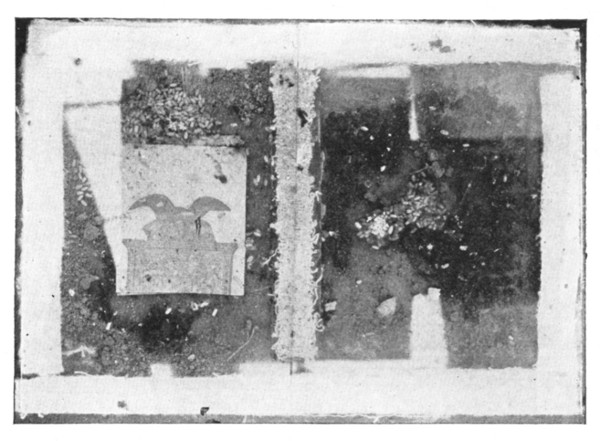
Fig. 156. Uncovered ant-nest, viewed from above, looking
through the glass ceiling.
The white pieces around the edges and at the center are strips of canton flannel, forming
walls and partition to the nest. Note the doors at the lower left and upper right hand
corners and at lower end of the partition. The piece of blotting paper in the chamber at the
left chanced to have a picture of an eagle upon it. The small white objects are pupæ,
assorted in heaps.]
[248]
Ants and their Herds.[28]
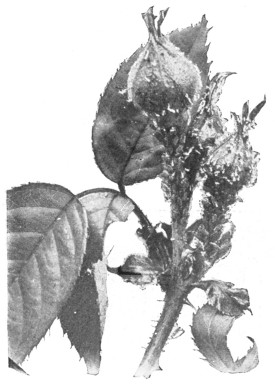
Fig. 157. Rose infested with aphids or plant-lice.
Very soon after the green leaves come, one may notice that the
ants seem to be greatly interested in getting to the tops of trees,
bushes and vines. If one watches for only a short time, he may
see them hastening up and down with that important ant-air which
says plainly, "There now, don't hinder me, I haven't a moment to
waste." If we should follow with our eyes one of these hurried six-footed
Marthas on her way up a tree, we would find that her business
was that of milk-maid. Her cows are there pasturing on the
leaves overhead, and she hastens to them coaxing for the milk,
which is a clear drop of sweet
honeydew. For many years
entomologists repeated the
statement that the honeydew
secreted by aphids or plant-lice
for the use of the ants
came from the two little tubes
on the back of the insect. It
is easy to see how this mistake
came about; the tubes were
there, and so was the honeydew;
the tubes suggested a
cow's udder, and as the ants
use the honeydew the natural
inference was that it came from
the tubes. This interesting
error has been printed in so
many honorable books, that it
has become a classic. As a
matter of fact, the caterpillars
of our little, blue butterflies do
have glands on the abdomen which secrete honeydew for the use
of the ants; but the honeydew of the plant-lice, like honey itself,
is manufactured in the alimentary canal, and issues from it.
Observations have shown that each individual plant-louse may
produce from five to seven drops of honeydew in twenty-four hours.
If our cows could produce as much in proportion, then a good
Holstein would give something like six thousand pounds of milk
per day, and would be a highly profitable animal to have in the
[249]
dairy. Although the honeydew does not come from the little
tubes on the back of the plant-louse, yet those tubes have their
uses. I once observed a young spider approaching an aphid,
which was facing its enemy. As the spider approached, the aphid
lifted its abdomen, and thrust one of these tubes over directly in
the spider's face, and on this tube there suddenly appeared a little
ball of yellow wax. The whole act was so like a pugilist thrusting
his fist in his enemy's face that I laughed. The spider retreated
and the aphid let its abdomen fall back in its natural position, but
the little wax ball remained for some time on the tip of the tube.
A German scientist, Mr. Busgen, of the University of Jena, discovered
that a plant-louse smeared the eyes and jaws of his enemy,
the aphis-lion, with this wax which dried as soon as applied. In
action it was something like throwing a basin of paste at the head
of an attacking party. Mr. Busgen discovered that the aphis-lion
thus treated was obliged to stop and clean himself before he could
go on with his hunt, and meantime the aphid walked off in safety.
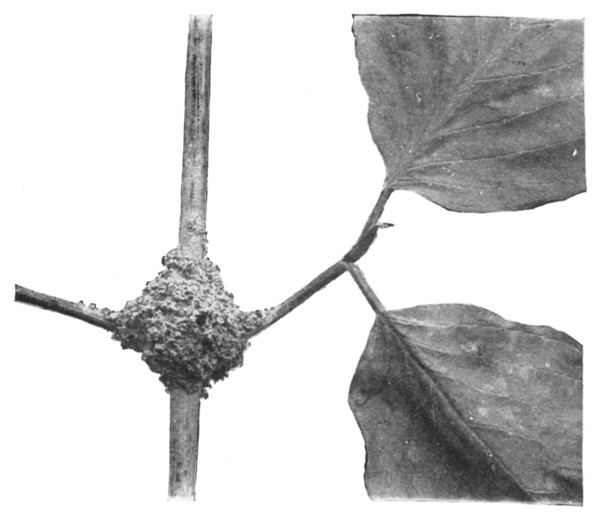
Fig. 158. A stable made by ants for plant-lice.
The honeydew is excreted in such quantities that often the
pavement beneath trees may be seen to be spattered by the drops
of this sweet rain. It seems to be excreted solely for attracting
the ants. In return for this, the ants give care and protection to
their herds. They sometimes take them into their nests and care
[250]
for them. In one case, at least, one species of ant builds for one
species of aphid (which lives upon dogwood) a little mud stable
which protects the aphids from all enemies. This stable is neatly
placed at the fork of the twigs and has a little circular door by
which the ants may enter (Fig. 158). The lady-bug larvæ and the
ant-lions both feed voraciously on the aphids; an ant will attack
single-handed one of these depredators, although it be much larger
than herself, and will drive it away or perish in the attempt.
Some so-called practical people say, "Let us study only those
things in Nature that affect our pocketbook, and not waste our
time studying irrelevant things." If this spirit had animated scientists
from the first, many of the most important economic discoveries
would never have been made. This relation of ants to
aphids is an example to the point. For a hundred years has the
fact been known that ants use the aphids for their cows, and the
practical men said, "This is a very pretty story, but what we want
is some method of killing the aphids." It remained for Professor
Forbes, of Illinois, to show the practical application of this
"pretty story" in the life history of the corn-root plant-louse,
which did great damage to the corn crop of the West. These
plant-lice winter in the ground wherever they chance to be left by
the dying roots of the last year's crop, and with their soft bodies
could never work their way in the hard earth and to the roots of
the newly-planted corn in the spring. Professor Forbes discovered
that the ants in these infested fields make mines along the
principal roots of the new corn; and that they then go out and
collect the plant-lice, and place them in these burrows, and there
watch over them and protect them.
Observation Lesson on the Relation of Ants To Plant-Lice.
A reading-glass or lens may be used to advantage in making these
observations.
Find some plant near at hand that is infested by aphids in order to
note from time to time the relation of ants to these little creatures.
Some aphids on the petiole and leaves of the Virginia Creeper on our
piazza once afforded me a convenient field for daily observation.
1. How does the ant approach the aphid and ask for honeydew?
2. Does she wait long if there is no response?
3. Does the ant step on the aphids as she runs about among
them?
[251]
4. What are the colors of the aphids you have observed?
5. On what plants were they feeding?
6. What sort of mouth parts have the aphids?
7. What part of the plant is their food, and how do they get it?
8. Why does not Paris green applied to the leaves on which
aphids are feeding kill them?
9. Have you seen the lady-bird larvæ or the ant-lions destroying
aphids? Explain.
10. Have you ever seen the little wax balls on the tubes of the
plant-lice? If so, did you note when and why they were produced?
11. Have you ever seen an ant attacking the enemies of plant-lice?
Describe.
12. How do you think this relation of ants to aphids affects
agriculture?
13. Study what the ants do for the aphids which infest your
rose bushes. Do you infer from this that it is well to exterminate
the ant colonies in your flower garden?
14. Do you know how to clear your plants of plant-lice? If so,
how? If not send to Cornell or some other experiment station
for a spray bulletin.
[252]
[253]
LEAFLET XXII.
THE BIRDS AND I.[29]
By L. H. BAILEY.
The springtime belongs to the birds and me. We own it. We know when the
Mayflowers and the buttercups bloom. We know when the first frogs peep.
We watch the awakening of the woods. We are wet by the warm April
showers. We go where we will, and we are companions. Every tree and
brook and blade of grass is ours; and our hearts are full of song.
There are boys who kill the birds, and girls who
want to catch them and put them in cages; and there are others
who steal their eggs. The birds are not partners with them; they
are only servants. Birds, like people, sing for their friends, not
for their masters. I am sure that one cannot think much of the
springtime and the flowers if his heart is always set upon killing
or catching something. We are happy when we are free; and so
are the birds.
The birds and I get acquainted all over again every spring.
They have seen strange lands in the winter, and all the brooks
and woods have been covered with snow. So we run and romp
together, and find all the nooks and crannies which we had half
forgotten since October. The birds remember the old places.
The wrens pull the sticks from the old hollow rail and seem to
be wild with joy to see the place again. They must be the same
wrens that were here last year and the year before, for strangers
could not make so much fuss over an old rail. The bluebirds
and wrens look into every crack and corner for a place in which
to build, and the robins and chipping-sparrows explore every
tree in the old orchard.
If the birds want to live with us, we should encourage them.
The first thing to do is to let them alone. Let them be as free
from danger and fear as you or I. Take the hammer off the old
[254]
gun, give pussy so much to eat that she will not care to hunt for
birds, and keep away the boys who steal eggs and who carry
sling-shots and throw stones. Plant trees and bushes about the
borders of the place, and let some of them, at least, grow into
tangles; then, even in the back yard, the wary cat-bird may
make its home.
For some kinds of birds we can build houses. Some of the
many forms which can be used are shown in the pictures at the
end of this Leaflet. Any ingenious boy can suggest a dozen other
patterns. Although birds may not appreciate architecture, it is
well to make the houses neat and tasty by taking pains to have
the proportions correct. The floor space in each compartment
should be not less than five by six inches, and six by six or six by
eight may be better. By cutting the boards in multiples of these
numbers, one can easily make a house with several compartments;
for there are some birds, as martins, tree swallows, and pigeons
that like to live in families or colonies. The size of the doorway
is important. It should be just large enough to admit the bird.
A larger opening not only looks bad, but it exposes the inhabitants
to dangers of cats and other enemies. Birds which build in
houses, aside from doves and pigeons, are bluebirds, wrens, tree-swallows,
martins, and sometimes the chickadees. For the wren
and the chickadee the opening should be an inch augur hole, and
for the others it should be about one-and-a-half inches. Only one
opening should be provided for each house or compartment. A
perch or door-step should be provided just below each door. It
is here that the birds often stop to arrange their toilets; and when
the mistress is busy with domestic affairs indoors the male-bird
often sits outside and entertains her with the latest neighborhood
gossip. These houses should be placed on poles or on buildings
in somewhat secluded places. Martins and tree-swallows like to
build their nests twenty-five feet or more above the ground, but
the other birds usually prefer an elevation less than twelve feet.
Newly made houses, and particularly newly painted ones, do not
often attract the birds.
But if the birds and I are companions I must know them more
intimately. Merely building houses for them is not enough. I
want to know live and happy birds, not dead ones. We are not
to know them, then, by catching them, or stuffing them, or
collecting their eggs. Persons who make a business of studying
birds may shoot birds now and then, and collect their eggs. But
[255]
these persons are scientists and they are grown-up people. They
are trying to add to the sum of human knowledge, while we want
to know birds just because we want to. But even scientists do
not take specimens recklessly. They do not rob nests. They do
not kill brooding birds. They do not make collections merely
for the sake of making them; and even their collections are less
valuable than a knowledge of the bird as it lives and flies and
sings.
Boys and girls should not make collections of eggs, for these
collections are mere curiosities, as collections of spools and marbles
are. They may afford some entertainment, to be sure, but
one can find amusement in harmless ways. Some persons think
that the securing of collections makes one a naturalist, but it does
not. The naturalist cares more for things as they really are in
their own homes than for museum specimens. One does not love
the birds when he steals their eggs and breaks up their homes;
and he is depriving the farmer of one of his best friends, for birds
keep insects in check.
Stuffed birds do not sing and empty eggs do not hatch. Then
let us go to the fields and watch the birds. Sit down on the soft
grass and try to make out what the robin is doing on yonder
fence or why the wren is bursting with song in the thicket. An
opera-glass or spy-glass will bring them close to you. Try to
find out not only what the colors and shapes and sizes are, but
what their habits are. What does the bird eat? How much
does it eat? Where is its nest? How many eggs does it lay?
What color are they? How long does the mother bird sit?
Does the father bird care for her when she is sitting? How
long do the young birds remain in the nest? Who feeds them?
What are they fed? Is there more than one brood in a season?
Where do the birds go after breeding? Do they change their
plumage? Are the mother birds and father birds unlike in size
or color? How many kinds of birds do you know?
These are some of the things that every boy or girl wants to
know; and we can find out by watching the birds! There is no
harm in visiting the nests, if one does it in the right way. I
have visited hundreds of them and have kept many records of the
number of eggs and the dates when they were laid, how long
before they hatched, and when the birds flew away; and the
birds took no offense at my inquisitiveness. These are some of
the cautions to be observed: Watch only those nests which can
[256]
be seen without climbing, for if you have to climb the tree the
birds will resent it. Make the visit when the birds are absent, if
possible; at least, never scare the bird from the nest. Do not
touch the eggs or the nest. Make your visit very short. Make
up your mind just what you want to see, then look in quickly and
pass on. Do not go too often; once or twice a day will be sufficient.
Do not take the other children with you, for you are then
likely to stay too long and to offend the birds.
Now let us see how intimately you can become acquainted with
some bird this summer.
[257]
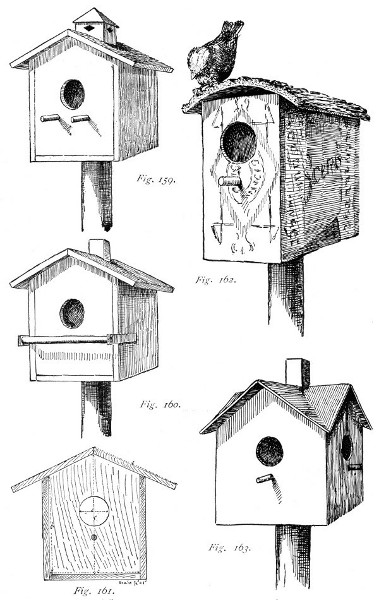
Suggestions for home-made bird houses.
[258]
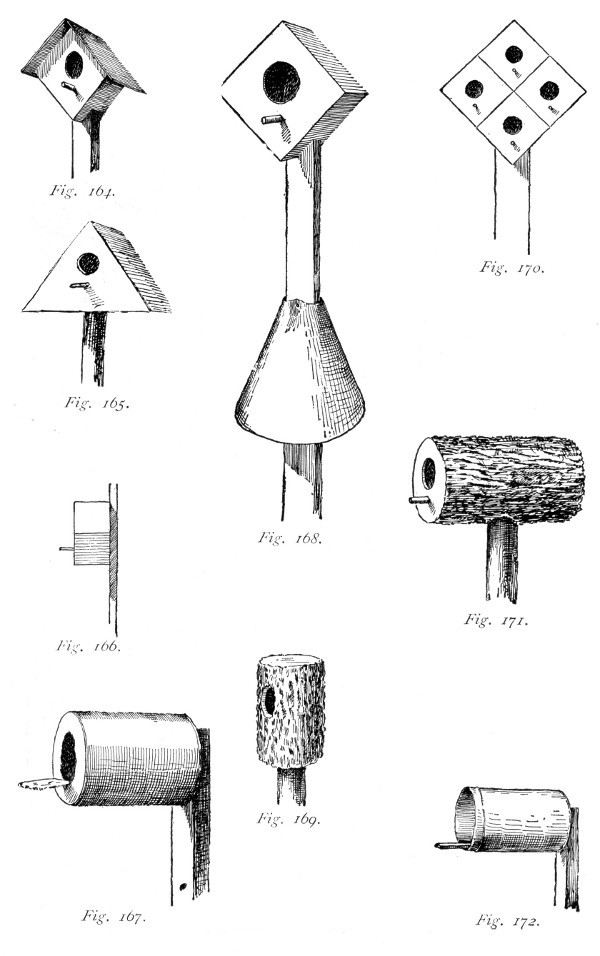
Improvised bird houses.
[259]
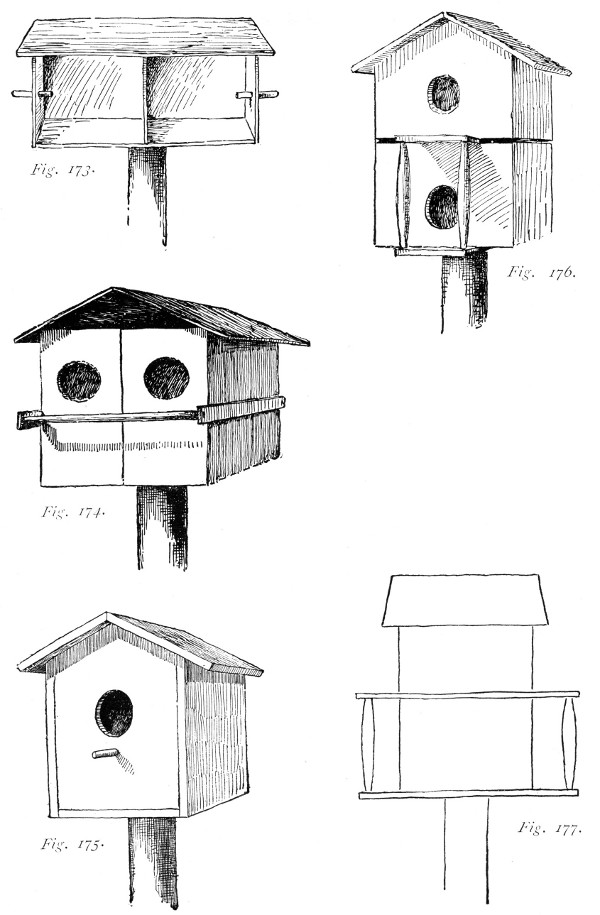
Suggestions for home-made bird houses.
[260]
[261]
LEAFLET XXIII.
THE EARLY BIRDS.[30]
By L. A. FUERTES.
After a long winter, many of us are too impatient for
spring to wait for the swelling of the buds, the opening
of the early flowers, and the springing of the grass.
Several weeks lie between the end of winter and
the truly genial spring days, and during this
interval we look for something to herald the
settled spring season. And the thing which gives
us that for which we are unconsciously looking, more than all
other signs, is the arrival of the birds. Who has not warmed to
the quavering call of the first blue-bird, or been suddenly thrilled
some early spring day with the sunny notes of the song-sparrow!
In the southern part of this State, notably in the lower Hudson
Valley, the winter is spent by several birds which elsewhere we are
accustomed to see only after the winter has passed. Among these
are the blue-bird, robin, song-sparrow, white-throated-sparrow,
meadow-lark, and possibly the purple-finch. But in most of the
State we must wait until the first or second week in March before
we can be sure of seeing any of them. It is a question which of
the earlier birds will first make its appearance, as these early
migrants are much less regular in their movements than those
that come late in April and in May, after the weather has become
settled. Many a robin and blue-bird arrives during some early
warm "spell," to find himself suddenly surrounded by flying snow
and blown about by cold winds. But these and a few other hardy
ones seem able to stand such rebuffs with great equanimity, and
the momentary shining of a fickle March sun will often evoke
some pent-up song-sparrow's notes from the shelter of a hedge
or thicket. Robins, blue-birds, song-sparrows, cowbirds, meadow-larks,
phœbes, bronzed grackles, kingfishers, and doves may be
looked upon as the vanguards of the hosts of migrating birds
that come to us each year, and the first four or five may be
[262]
expected almost any time after the first week in March. If the
winter has been late, these may not appear until the middle or
even the latter part of the month, in which case one is busy
keeping track of the arrivals, as the other birds have caught up
then, and all come nearly at the same time.
It is unnecessary to give detailed descriptions of robins, bluebirds,
and song-sparrows, as nearly everyone is familiar with them;
but some of the other early comers may be more easily recognized
if some field impressions of them be given.
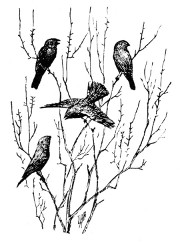
Fig. 178. Cowbirds.
Almost any warm day in early March we may hear a thin, clear "tsssss" in
a high piping key, and on looking up see from one to five black birds,
about the size of orioles, flying in a strange undulating
manner—some up and some down, with the wings held close to their
sides during the "drop" in their flight. They are cowbirds. The flock
may swirl into the top of a tree and sit close together. (Fig. 178.) If
this happens within eyeshot, stop and watch them for a moment. One or
two of the males are almost certain to utter the ridiculous song of the
species, which, like that of their relatives, the grackles, is
accompanied by the most grotesque of actions. The bird spreads its wings
to their utmost, spreads and elevates the tail, stretches its neck
upwards and forwards, and then, quivering and tottering, nearly falls
forward off the perch. The only sound which accompanies this absurd
action is a faint chuckling "clk-sfs'k," which is scarcely to be heard a
hundred feet away.
With the cowbirds we may expect the arrival of the bronzed
grackles, which resemble them much in flight, but are larger
and come in far larger flocks—sometimes ten, sometimes a hundred
or more. Their arrival is known by the vigorous calls they
utter while flying, a loud bass "jook." When seen squabbling in
the spruce trees or in the bare branches of the willows fringing
the streams, the males are likely to be giving their "song." It is
scarcely more of a note than the cowbird's, a rusty squeak, and
it is accompanied by a contortion in the same manner. It is
[263]
not such a pronounced effort, however, and is often only a slight
shudder and shrug of the shoulders. They feed, like cowbirds,
mostly on the ground, and walk about most sedately in the
grass like small crows. In tall grass, however, they waddle too
much to be graceful. When taking flight they spread their long
pointed tails in a very peculiar and characteristic manner—not
out in a horizontal plane, like most birds, but up at the sides in
the shape of a gardener's trowel, which gives them an extraordinary
appearance.
The redwings begin to come into the marshes soon after the
grackles, and are at that time in full feather and song. Their
rich, deliberate "clonk-ka lrrrrrrr," interlarded with the clear piping
whistles of some of the flock, makes a concert of bird-notes
very dear to all who are familiar with it. In their scarlet and
black velvet dress these birds are impossible to mistake, whether
seen chasing over the marshes, singing from an elm-top, or balancing
with spread tail upon some tall reed stalk.
There is a bird-note so often and so justly mistaken for that of the
phœbe that the error certainly merits correction. The spring song
of the chick-a-dee (which may be heard on almost any warm day all
winter, and is very easy to call forth by even a poorly whistled
imitation) is a clear, pure "eeeeee" or "—— —" which
really says "Phœbe" much more plainly than the true phœbe
note, this latter being much lower in tone, and only to be heard after
March is well on, and almost always in the vicinity of running streams
and brooklets; while the gay little chick-a-dee whistles at any time or
place that suits his versatile fancy.
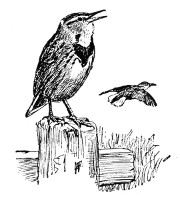
Fig. 179. Meadow larks.
The mellow flute notes of the meadow larks (Fig. 179) float to us from
the middle of some large, open field, and are among the most beautiful
bits of bird music we ever hear. They are not to be represented by
notes, and can only be most inadequately described. There is great
variation in the sequence of notes, but all are beautifully clear and
ringing, and have a decided tinge of what would be sadness if it were
not so sweet. The bird flies in a very characteristic
[264]
manner, never raising the wings above the plane of the back, and when
seen below the horizon line always shows the white feathers in the tail.
His saffron breast and black breast-mark seldom show on the living
birds, and the mottled brown back is a wonderful safeguard against his
many overhead enemies.
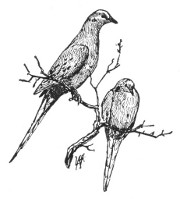
Fig. 180. Mourning doves.
Two or more doves may be seen winging their headlong flight through the
air. These are among the swiftest of birds, and are generally out of
eyeshot almost before you have seen them. (That is one way of knowing
what they are.) In flight, they look like small pigeons with very long
graduated tails, and when, in some old orchard or open wood, you see one
rise from the ground into a tree, the white lateral feathers in the tail
make an easily recognizable mark. (Fig. 180.) Their cooing notes are
well known—a high-pitched "overtone," followed by several long
bell-toned  notes.
notes.
About April 1 to 10, you may hear a scratching in the dead
leaves among the underbrush in any thickly grown tangle, and
upon cautiously coming up you may discover the authors—not
big grouse as you may have supposed, but a flock of fine, vigorous
fox-sparrows on their way to their northern breeding grounds.
They are bright bay fellows, with boldly blotched brown and
white breasts, diligently scattering the leaves for their food of
seeds, spiders, ants, and various insects. If you have been
fortunate enough not to have been seen you may hear their song,
which is one of the finest of our sparrow songs, readily recognizable
as such, though not resembling any of its fellows—a
clear, vigorous carol, often ending abruptly with a rather unmusical
"clip." If, however, they have seen you, you will be treated
to a sharp "tseep!" and a rear view of a flock of rapidly
retreating birds, for they are not sociable (with us, at least),
and generally take a hint to move on before you know of their
presence. They do not stay long with us on their migration,
and seeing them one day is no indication that you can find
them the next.
[265]
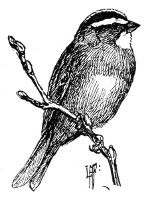
Fig. 181. White-throated sparrow.
Although the white-throated sparrows spend the winter in our
southern counties, they do not start their northward journey as
early as we might expect, and it is not until the first part of
April that we may be sure of finding them. I have one list,
indeed that shows their first appearance on May first!
They are to be found in places similar to those which the fox-sparrows
choose, and are very similar to them in habits, but the
boldly striped head and gray breast are very distinctive marks.
Almost all of our native sparrows have a call
note, the "tsweep" note, which is hard to distinguish
in the different species without much
patient listening—and I doubt if any person
is infallible in this distinction. The white-throat
has this note, as well as the song-sparrow,
tree-sparrow (a winter-bird), fox-sparrow,
white-crown, chippy, field-sparrow, grass-finch,
in fact all our brown-backed sparrows. But the
song of the white-throat is his own, and may
be heard frequently during his very leisurely
journey through our state. His Canadian name,
"Peabody bird" is descriptive of his notes, "— _.., _.., _.."
When a number get together and whistle, as if they were singing
a round, it makes a very sweet concert.
One of the foremost birds in the spring movement is the grass-finch
(vesper-sparrow or bay-winged bunting). It is to be found
in open fields and along roadside fences, in company with meadow
larks, and its sweet song may be heard almost any warm evening
after the middle of April. Unlike most of our birds, this sparrow
sings at its best late in the afternoon and during twilight, which
perhaps makes its song seem the sweeter. It is rather a gentle
song, though to be heard at some distance, carrying quite as far
as that of the song-sparrow. Although the quality of voice is
somewhat similar in these two birds, the grass-finch lacks the
merry abandon that characterizes the song-sparrow's song, but
has instead a deeper chord, which is called by some people sadness.
The bird may be easily recognized in the fields by the
white tail-feathers, which always show in flight. It is about the
size and general color of the song-sparrow.
By the time the foregoing birds are comparatively common,
[266]
and the maple buds are bursting and the lilacs swelling, the gay
purple finch appears. He is not purple at all, but has a crimson
head, which fades on the lower breast through rosy pink into
pure white. He is fond of spruces and larches, feeding greedily
on the tender buds as well as on the ants and scale insects that
infest them. His song is a fine one, and in addition to the charm
of being poured forth in full flight, is so long and intricate that
one finds himself holding his breath as the burst of melody continues,
as if to help the little fellow catch up with his music.
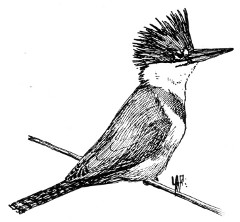
Fig. 182. Kingfisher.
Along the banks of some lake or stream, sitting idly on a telegraph pole
or wire, rising and settling, elevating and depressing his long parted
top-knot, a patriarchal old kingfisher may be seen silently awaiting the
gleam of a shiner in the water below (Fig. 182). Or perhaps you may
first see him flying like a big woodpecker, screaming his chattering cry
high in the air, or scaling close to the water under the fringing
hemlock branches that overhang the stream. His large size, slate-blue
back, loud notes, and characteristic flight make him a hard bird to
mistake in any case.
There are many other birds which pass us on their way north,
but they herald rather the summer than the breaking of spring.
The following list of spring migrations is taken from Mr. Chapman's
"Handbook of the Birds of Eastern North America," and
was compiled for use about New York City. The dates nearly
coincide with those I have found about the central part of the
State, and are, in the main, only a few days in advance of those
for the northern counties. The latter dates in the column are
about what may be taken for the middle tier of counties.
It is the earnest hope of the writer that these few very brief
sketches may be of use to those interested in entering the delightful
field of the study of birds; your experience may and probably
will be different from that which I have cited, which only goes to
show that everyone must really see for himself, and not only that,
but by so doing may make new observations and get new ideas on
[267]
practically all of even our best known birds. Birds are not, as a
rule, hard to watch, and the patience it requires to sit still and
"be a stump" long enough for birds to cease noticing you is soon
and amply repaid by the new insight into an unknown realm
which is sure to follow.
List of Birds Comprising the Spring Migration.
(Until April 20—Approximate.)
(Taken from Chapman's Handbook of Birds of Eastern North
America.)
| Date of arrival. |
|
| Feb. 15-Mar. 10. |
Purple Grackle. |
|
Rusty Grackle. |
|
Red-winged Blackbird. |
|
Robin. |
|
Bluebird. |
| Mar. 10-20 |
Woodcock. |
|
Phœbe. |
|
Meadow Lark. |
|
Cowbird. |
|
Fox-sparrow. |
| Mar. 20-31 |
Wilson's Snipe. |
|
Kingfisher. |
|
Mourning Dove. |
|
Swamp-sparrow. |
|
Field-sparrow. |
| April 1-10 |
Great Blue Heron. |
|
Purple Finch. |
|
Vesper-sparrow. |
|
Savanna-sparrow. |
|
Chipping-sparrow. |
|
Tree Swallow. |
|
Myrtle Warbler. |
|
American Pipit. |
|
Hermit Thrush. |
| April 10-20 |
Yellow-bellied Woodpecker. |
|
Barn Swallow. |
|
Yellow Palm Warbler. |
|
Pine Warbler. |
|
Louisiana Water Thrush. |
|
Ruby-crowned Kinglet. |
[268]
[269]
LEAFLET XXIV.
THE WOODPECKERS.[31]
By ANNA BOTSFORD COMSTOCK.
It is best to follow some definite line of bird study for an entire
year. All of the observations that could be made in a single month on
any bird would give but an inadequate idea of its habits. To know the
life of a bird, one must study it month by month for at least one year.
The woodpeckers seem a most attractive group for our
study. They are not only very interesting, but of great
importance to the farmer, orchadist and forester. There
are five common species in New York State that we all
may learn to know, and then make observations of our
own on their habits. These species are the downy, the
hairy, the sapsucker, the flicker and the redhead. The way to
begin our observations in winter is to tie a piece of suet to the
branch of some tree easily observed from our windows. Such a
bird feast as this is on a branch of a chestnut oak in front of my
office window, and though I never have time to watch more than
momentarily the birds that come there to eat, yet each glance tells
me something of their ways, and my own day's work is much
brighter and happier therefor. The "downy" (Fig. 183), as he is
universally called, comes with his mate every day and they eat
greedily of the suet; when they first arrive they are so absorbed
in working this food mine that I sometimes stand directly beneath
and watch them without frightening them. Perhaps they know
that I am the friend who invited them to breakfast. Anyway, as
soon as they leave the suet they hunt industriously over my tree,
finding there all of the hidden insects, and thus they keep my oak
clean and pay for their breakfast. Occasionally the hairy woodpecker
comes, a self-invited guest to the suet banquet. To the
untrained eye he looks very like an over-grown downy, as he is
by two or three inches the longer; but his outer tail feathers are
[270]
entirely white, while the downy's are barred with black; usually
the red cap of the hairy is divided by a black stripe. The hairy
is said to be a shy bird, but I have seen him several times this
winter at a suet party near dwellings.
In April there is likely to appear in any region of New York
State a bird which is often mistaken for the downy or hairy,
although it is very different in both coloring and habits. This is
the sapsucker, the only woodpecker of bad repute (Fig. 184).
However, I am sure its deeds are not nearly so black as they are
painted. The male sapsucker has a bright red crown and chin
and throat, his breast is yellow, and he is also yellowish on the
back; while the males of the downy and hairy are red-capped and
black and white with no yellow.
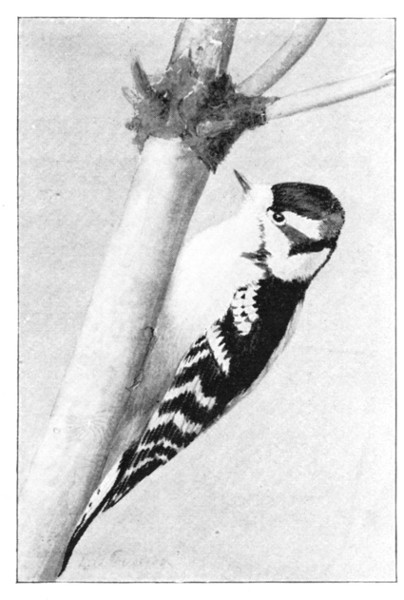
Fig. 183. Downy woodpecker.
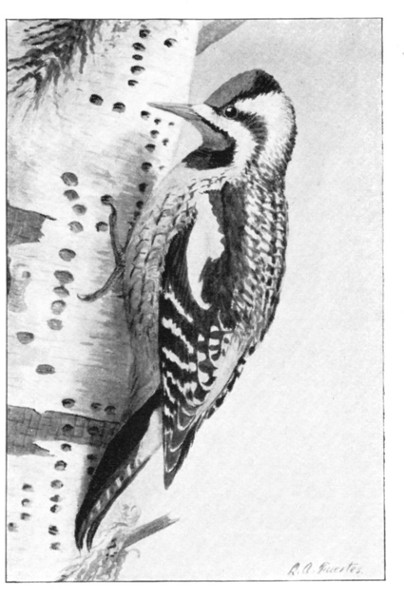
Fig. 184. Sapsucker.
Questions on Woodpeckers to be Answered in March.
1. What is the difference in appearance between the male and
female downy?
2. How does the downy travel down a tree; does it go head-first?
What food have you seen it eat?
3. How does the downy use its tail in going up and down the
tree trunk?
[271]
4. Have you approached a woodpecker closely enough to see
how its toes are arranged? If so, describe them.
5. How does it manage its head to make its blows forceful?
6. Are you able to discriminate between the hairy and the
downy when you see them? How?
7. Do you know the difference in the notes of the hairy and
downy? Explain.
Downy, Sapsucker and Red-head.[32]
This morning I was awakened by the beating of a drum over
in the woods. My ear was not yet sufficiently trained so that I
knew whether my drummer was Mr. Downy or Mr. Hairy, yet I
strongly suspected the former. The tattoo of the Sapsucker
(which does not nest here) James Whitcomb Riley has aptly
characterized as "Weeding out the lonesomeness." This is
exactly what the drumming of woodpeckers in the early spring
means. The male selects some dried limb of hard wood and
there beats out his well-known signal which advertises far and
near, "Wanted, a wife." And after he wins her he keeps on
drumming to cheer her, while she is busy with her family cares.
The woodpecker has no voice for singing, like the robin or thrush,
and realizing his deficiency, he does not insist on singing like the
peacock, whether he can or no. He chooses rather to devote his
voice to terse and business-like conversation, and when he is
musically inclined he turns drummer. He is rather particular
about his instrument, and, having found one that pleases him in
tone, returns to it day after day.
In case the drumming I heard this morning was an advertisement
for a wife, I am interested to know what has become of
Mrs. Downy, who has been true to her mate all winter. Does,
perhaps, the springtime bring divorce as well as marriage? Mr.
Burroughs tells of a downy that was absolutely brutal in his
treatment of his mate in winter, not allowing her to live in his
neighborhood. Be this as it may, the downy and the hairy woodpeckers
that have feasted upon my suet this winter have invariably
come in pairs, and while only one at a time sits at meat, and
the lord and master is somewhat "bossy," yet they seem to get
along as well as most married pairs.
The sapsucker is a woodpecker that has strayed from the paths
[272]
of virtue; he has fallen into temptation by the wayside, and
instead of drilling a hole for the sake of the grub at the end of it
he drills it for its own sake. He is a tippler and sap is his beverage.
He is especially fond of the sap of the mountain ash,
apple, thorn apple, canoe birch, red maple, red oak and white
ash. He drills his holes in beautiful rows, and sometimes girdles
a limb or tree, and for this he is pronounced a rascal by men who
have themselves ruthlessly cut from our land millions of trees
that should now be standing. However, the sapsucker does not
live solely on sap and the soft cambium layer of the tree; he also
feeds on insects wherever he finds them. When feeding their
young, sapsuckers are true flycatchers, getting the insects while
on the wing. If you find a sapsucker girdling a tree in your
orchard or a birch on your lawn, just protect the trees with a wire
netting, and let the sapsucker catch mosquitoes for you instead,
and remember that he belongs to a good family and is entitled to
some consideration, even if he has taken to drink.
The red-head (Fig. 185) is well named, for his helmet and visor
show a vivid, glowing crimson that stirs the sensibilities of the
color lover. He is readily distinguished from all other woodpeckers
because his entire head and the bib under his chin are
red. For the rest, he is a beautiful dark metallic blue and white.
He is a most adept drummer, and his roll is a long one. One
that I observed last spring selected a dead limb at the top of an
oak tree and there he drummed merrily every morning. He is
an adaptable fellow and has been known to drum on tin roofs and
lightning rods, thus braving the dangers of civilization for the
sake of better music. Though he can rattle so well when he is
musically inclined, he is not, after all, much of a woodpecker,
for he lives mostly on insects which he catches while they are
crawling or on the wing, and he also likes nuts. He is especially
fond of beech nuts, and, being a thrifty fellow as well as musical,
in time of plenty he stores up food against time of need. He
places his nuts in crevices and forks of branches, in holes in trees,
and other hiding places. Lets us watch him this spring and see
whether we can discover what he eats.
[273]
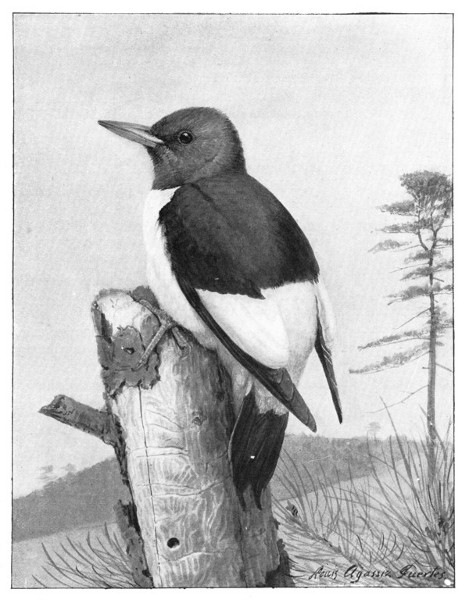
Fig. 185. The Red-headed Woodpecker.
Questions About Woodpeckers to Be Answered in April
and May.
1. Have you observed any species of woodpecker drumming?
2. Have you been able to see the drum? If so, describe it.
3. Are you able to distinguish between the tapping of the woodpecker
when searching for food, and his drumming when he is
making music?
[274]
4. If you have made any observations on the sapsucker, please
give them.
5. Have you seen the sapsucker at work? If so, did the holes
girdle the tree? Were the holes round or square?
6. Have you seen the red-head this spring?
7. Describe the way the woodpecker uses its tail when climbing
a tree.
8. Send for Bulletin No. 7, of the United States Department of
Agriculture, Division of Ornithology, called "Food of Woodpeckers."
Read this Bulletin and answer these questions: Does
the sapsucker do more harm than good? What special benefit to
us is the red-head? Which is the most useful of our woodpeckers?
The Flicker or Yellow Hammer.[33]
The first time I ever saw a flicker I said, "What a wonderful
meadow lark, and what is it doing on that ant hill?" But
another glance revealed to me a red spot on the back of the bird's
neck, and as soon as I was sure that this was not a bloody gash I
knew it belonged to no meadow lark. The golden brown plumage
dotted with black, the under wings of luminous yellow, the white
spot above the tail, the ashen gray back, and, above all, the oriental
ornaments of crescents,—one brilliant red across the back
of the neck, one black across the breast,—all conduce to make
the flicker one of our most showy and beautiful birds. The
flicker has many names, such as golden-winged woodpecker,
yellow hammer, highhole, and yarup or wake-up, and many others.
It earned the name of highhole because of its way of excavating
its nest high up in trees, usually between ten and twenty-five feet
from the ground. It especially loves an old apple tree as a site
for a nest, and most of our large, old orchards of New York State
may boast of a pair of these handsome birds during the nesting
season of May and June. However, the flicker is not above renting
any house he finds vacant which was made by other birds last
year. The flicker earned his name of "yarup" or "wake-up"
from his spring song, which is a rollicking jolly "wick-a-wick-a-wick."
As a business bird the flicker shines in the rather extraordinary
line of eating ants. It has a tongue equipped almost
exactly like the tongue of the animal called the ant eater, and it
often may be seen using it with great effectiveness in catching
the little communal laborers.
[275]
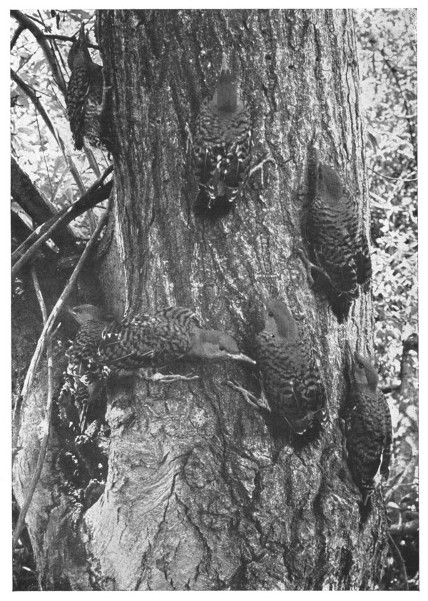
Fig. 186. Young Flickers.
[276]
Those who have observed the flicker during the courting season declare
him to be the most silly and vain of all the bird wooers. Mr. Baskett
says, "When he wishes to charm his sweet-heart he mounts a very small
twig near her, and lifts his wings, spreads his tail, and begins to nod
right and left as he exhibits his mustache to his charmer, and sets his
jet locket first on one side of the twig and then the other. He may even
go so far as to turn his head half around to show her the pretty spot on
his 'back hair.' In doing all this he performs the most ludicrous
antics, and has the silliest of expressions of face and voice as if in
losing his heart, as some one phrases it, he had lost his head also."
Summary of the Study of Woodpeckers.
We have now studied our five species of woodpeckers common in New York
State, and I trust that you know them all by sight. When you are
teaching the children about the woodpecker, there are many interesting
stories to tell about the way that his form is adapted to his life. Some
of these stories are as follows: First. The woodpecker's bill, which is
a drill and chisel, and how he uses it for getting at the grub or the
borer in the wood, and for making the hole for the nest, and for
drumming when he feels musical. Second. The tongue, which is a barbed
spear, and has a wonderful spring attachment of bones which allows it to
be thrust far out. This tongue is fitted in each case to get the kind of
food which sustains its owner. Third. The feet have a special
arrangement of toes which allows the bird to cling tenaciously to a tree
trunk. Study the way the fourth toe, which may be compared to our little
finger, has been moved around backward so that it acts as another thumb.
Fourth. Study how the tail made of stiff feathers is particularly
adapted to act as a brace, helping the bird to climb a tree. In studying
all these things I would especially recommend you to a little book
called, "The Woodpeckers" by Fannie Hardy Eckstrom, published by
Houghton, Mifflin & Co., price $1.00.
Questions on the Flicker.
1. Have you ever seen a flicker?
2. Do you know its song?
3. Has the flicker a straight bill like the downy's?
4. What are the differences between the male and female
flicker?
[277]
5. Have you ever seen a flicker catching ants? Describe.
6. Do you think the flicker is a beneficial bird? If so, why?
7. Have you ever seen a flicker's nest? Describe.
8. Do you know how the flicker feeds its young? Explain.
9. Describe the difference in color between the male and female
of the (a) downy, (b) the hairy, (c) the redhead, (d) the sapsucker,
(e) and the flicker.
10. How can you tell the difference between a flicker and a
meadow lark during flight?

Downy's long tongue.
[278]
[279]
LEAFLET XXV.
THE CHICKADEE.[34]
By ANNA BOTSFORD COMSTOCK.
He is the hero of the woods; there are courage and good nature
enough in that compact little body, which you may hide in your fist, to
supply a whole groveful of May songsters. He has the Spartan virtue
of an eagle, the cheerfulness of a thrush, the nimbleness of Cock Sparrow,
the endurance of the seabirds condensed into his tiny frame, and
there have been added a pertness and ingenuity all his own. His curiosity
is immense, and his audacity equal to it; I have even had one
alight upon the barrel of the gun over my shoulder as I sat quietly
under his tree.—Ernest Ingersoll.

However careless we may be of our friends when we are in the midst of
the luxurious life of summer, even the most careless among us give
pleased attention to the birds that bravely endure with us the rigors of
winter. And when this winged companion of winter proves to be the most
fascinating little ball of feathers ever created, constantly overflowing
with cheerful song, our pleased attention changes to active delight.
Thus it is that in all the lands of snowy winters the chickadee is a
loved comrade of the country wayfarer; that happy song,
"chick-a-dee-dee-dee," finds its way to the dullest consciousness and
the most callous heart.
One day in February we were, with much enjoyment, wading
through a drifted highway that skirted a forest, the least twig of
which bore a burden of soft snow. Over all hung that silence of
winter which is the most "silent silence" that rests upon the
earth anywhere outside the desert. No breeze swayed a creaking
branch or shook from it the snow in soft thud to the white carpet
below. Even the song of the brook was smothered beneath coverlets
of ice and pillows of drift. We stood fast, awed by the
stillness, when suddenly it was broken by the thrilling notes of
[280]
the chickadees. We could hardly credit our senses, for it seemed
as if the woods was a hopeless place for any living creature that
morning. But there before our eyes was a flock of these courageous
birds hunting for food on the leeward sides of boles and
branches left bare and black in the recent storm. Their tiny
weights sent the snow in showers from the terminal twigs, which
phenomenon was greeted with triumphant song while the cheerful
midgets hunted the relieved branches topside and bottomside for
any lurking tidbit. As we watched them, Emerson's poem came
to mind:
"Piped a tiny voice near by,
Gay and polite, a cheerful cry—
Chick-chickadeedee! saucy note
Out of sound heart and merry throat,
As if it said, 'Good-day, good Sir!
Fine afternoon, old passenger!
Happy to meet you in these places
Where January brings few faces.'"
No wonder that the great American philosopher was attracted by this
other American philosopher who sings when he is cold and hungry.
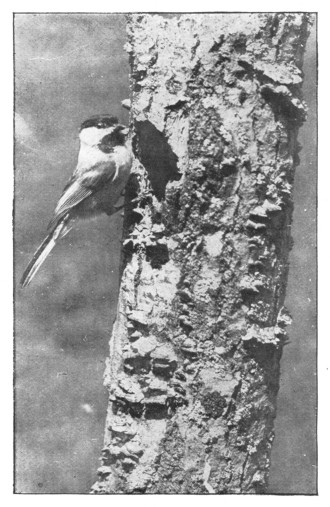
Fig. 187. A chickadee at the entrance to its nest.
Besides its usual song the chickadee has a song that says "phœbe"
much more distinctly than does the song of the phœbe itself. Few
people recognize this, and often in February or early March it is
announced in the local newspaper, "The phœbe-birds were heard to-day"
though it may be weeks yet before these birds arrive. The two songs may
be easily distinguished by even the ear untrained to music. In the
phœbe song of the chickadee, the last syllable
[281]
is at least one note lower than the first and has a falling inflection;
while the last syllable of the phœbe bird's song is at least a half
note higher than the first and has a rising inflection.
Not long since I visited the deserted nest of a devoted pair of
chickadees. It was cuddled down in the bottom of a hole that
opened on the very top of a fence post, and, one would imagine,
must have been wet more than once while inhabited. However,
a large family was raised there during the past season and much
enjoyment was derived from watching the many fubsy birdlings
that found home and comfort in that unattractive retreat. I
looked upon them with special interest, for I was sure they would
visit the suet on my trees this winter and thus become friendly
neighbors.
As soon as the trees are bare, nail or tie bits of suet to branches
which may be observed from your windows. I know of no investment
which pays such enormous dividends both to pleasure and
pocket as do suet restaurants in orchards patronized by chickadees.
Every child, at home or school, will be attracted by this
experiment.
Questions on the Chickadee.
1. Describe the colors of the chickadee above; below; wings;
tail; throat and head.
2. Describe the differences in coloring between the chickadee
and the nuthatch.
3. What is the shape of the chickadee's beak and for what is
it adapted?
4. Does it frequent the trunks of trees, or the twigs?
5. Describe its actions when hunting for food on a twig.
6. What is the chief food of the chickadee?
7. Why is it of special value to the farmer?
8. What are the differences in the winter and summer habits
of the chickadee?
9. Do you know the "phœbe" note of the chickadee?
10. Where do these birds build their nests and of what material?
11. What are the colors and markings on the eggs?
12. When is the nesting season?
[282]
[283]
LEAFLET XXVI.
THE WHITE-BREASTED NUTHATCH.[35]
By ANNA BOTSFORD COMSTOCK.
The busy nuthatch climbs his tree,
Around the great bole spirally,
Peeping into wrinkles gray,
Under ruffled lichens gay,
Lazily piping one sharp note
From his silver mailèd throat.
—Maurice Thompson.
"With more artless inquisitiveness than fear, this lively little acrobat
stops his hammering or hatching at your approach, and stretching himself
out from the tree until it would seem he must fall off, he peers
down at you, head downward, straight into your upturned opera-glass.
If there is too much snow on the upper side of a branch watch how he
runs along underneath it like a fly, busily tapping the bark, or adroitly
breaking the decayed bits with his bill, as he stretches for the spider's
eggs, larvæ, etc., hidden there; yet somehow, between mouthfuls, managing
to call out his cherry quank! quank! hank! hank!"
—Neltje Blanchan.

A voice outside is calling at me; I cannot describe it accurately, but
it is making delightful woodsy remarks that make me long to throw aside
the pen and go out and wander where the snow is making still softer the
carpet of dead leaves on the forest floor. It is not a musical note but
it is most enticing and translates into sound the picture of
bare-branched trees and the feeling of enchantment that permeates the
forest in winter. Neltje Blanchan says the voice reiterates "quank,
quank," others say it is "nay, nay"—but no nasal sound of the human
voice, and no spelling of the English language adequately represent this
call of the white-breasted nuthatch.
On the tree in front of the window I can see the owner of this
[284]
sylvan voice. He is a little bird blue-gray above with black head
and black and white V-trimmings on the back of his suit and
with soft, white breast. He is flitting blithely from tree to tree
enjoying the snow storm and coming often to the suet feast which
I have spread for him and for his little feathered kin.
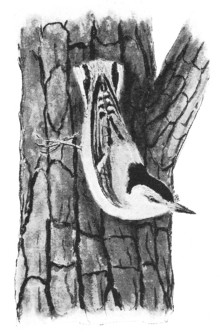
Fig. 188. The nuthatch, one of the winter birds.
We have been having exciting times at the suet banquet this morning. The
building in which my office is, stands on a high knoll near the
forest-covered brink of a deep gorge. Thus my window is opposite the
tops of the trees. One of our nature-study staff, a brave and gallant
knight, who loves birds and knows that I love to watch them, climbed two
of these trees at imminent risk of breaking his neck in order to place
this suet just opposite my window. The whole chickadee family and four
nuthatches, and Sir Downy and Madam Hairy had been reveling in the feast
all the morning when suddenly one after another three crows appeared
upon the scene. My heart sank as I saw them eying the suet with
interest. Nearer and nearer they hopped from branch to branch. I pounded
on the window and called out, "Go away" in both the crow and the English
language, all in vain. One crow braver or hungrier than the others with
one defiant eye on me flapped confidently down and sought to carry the
suet off in his beak; to his surprise it was tied on. That seemed
suspicious and when we raised the window and leaning far out explained
matters he lifted slowly with a jeering "caw" that said plainly "I'll
call sometime when you are not at home" and with that he and his
companions disappeared up the gorge. The invited guests at the suet
table were less disturbed than was I, and I suppose it is rather
inconsistent to feed the chickadees and let the ravens go hungry. But
this suet will last the little birds a month while it would hardly
furnish a breakfast for three crows; and in philanthropic enterprises
one is obliged to draw the line somewhere even at the cost of
consistency.
I will return to my nuthatch, who, by the way, has just hammered
off a piece of suet and thrust it into a crevice of the bark on the
[285]
tree bole. Why does he do that: is it for convenience in eating
or is it an attempt to store up some of his dinner for future need?
Anyway it is bad manners, like carrying off fruit from table d' hote.
But he is polite enough in another respect; every time after eating
the suet he wipes his beak on his branch napkin with great
assiduity, first one side and then the other, almost as if he were
sharpening it. The woodpeckers are similarly fastidious in cleaning
suet off their beaks.
The loud note of the nuthatch, seeming to be out of proportion
to the size of the bird is, by no means, its only note. Yesterday
we observed a pair hunting over the branches of an elm over our
heads, and they were talking to each other in sweet confidential
syllables "wit, wit, wit," entirely different from the loud note that
is meant for the world at large.
The nuthatches and chickadees hunt together all winter. This
is no business partnership, but one of congeniality based upon
similar tastes. Thus it is that the two birds are often confused.
There is, however, a very noticeable character that distinguishes
them at the first glance. Strange to say the nuthatch has also
been confused with the sapsucker and has gained unjust obloquy
thereby. How any one with eyes could confuse these two birds
is a mystery, for they resemble each other in no particular nor in
general appearance.
While the nuthatch finds much of its food on trees, yet Mr. Torrey
tells of seeing one awkwardly turning over the fallen leaves
for hidden cocoons and other things quite worth his while; and
Mr. Baskett tells of having seem them catch flies in the air and
becoming quite out of breath at this unusual exercise.
Audubon made some most interesting observations on the nuthatch.
He says they may sleep hanging head downward. He
also says of their nesting habits that "both birds work together,
all the time congratulating each other in the tenderest manner.
The male, ever conspicuous on such occasions, works some, and
carries off the slender chips chiseled by the female. He struts
around her, peeps into the hole, cherups at intervals, or hovers
about her on the wing. While she is sitting on her eggs, he
seldom absents himself many moments; now with a full bill he
feeds her, now returns to be assured that her time is pleasantly
spent."
The red-breasted nuthatch is sometimes associated with its
white-breasted cousin; it is a smaller bird and is essentially a
[286]
northern species. The nuthatches get their name from their habit
of wedging nuts and acorns into bark and then hatching them
open. From every standpoint the nuthatches are most desirable
acquaintances, and we cannot spend our time to better advantage
than in getting familiar with their interesting habits.
Questions on the White-breasted Nuthatch.
1. Describe from your own observations the colors of the nuthatch
above and below.
2. (a) What is the most noticeable character that distinguishes
the nuthatch from the chickadee? (b) Does the nuthatch usually
frequent the bole or the twigs of a tree? (c) Is there any difference
in this respect between the habits of the nuthatch and the
chickadee?
3. Does the nuthatch alight with its head down or up?
4. Does it travel down or up? Does it always go in a spiral?
5. What is its food?
6. Does it open nuts for the meat or the grubs within?
7. Does it use its tail as a brace in climbing trees as does the
woodpecker?
8. Where does it build its nest?
9. What is the color of the eggs?
10. Why does it seem less common in summer than in winter?
11. How does it use its feet when resting on a tree trunk?
12. Has it any special development of the feet to help it in
traveling on tree trunks?
13. Do you know the note of the nuthatch? Describe.
14. How would you spell its note?
15. How does the nuthatch help the farmer and fruit grower?
[287]
LEAFLET XXVII.
ABOUT CROWS.[36]
By MARY ROGERS MILLER.
Thousands and thousands of crows fast asleep amongst the branches of a
grove of pines! The trees themselves look dark and sombre against the
snowy hillside, but when the assemblage of dusky birds has gathered
there, the shadows thicken and the darkness settles like a pall. Soon
all is hushed and silent.
Would you not go miles to see such a sight?
Yet maybe you have lived for years within
easy walking distance of a great crow "dormitory" without even
suspecting its existence. You may have watched the crows flying
overhead every morning and then again every afternoon, without
noticing that they came from the same direction each morning
and returned at nightfall. This was just my experience until
I began to care about crows and their ways. Now I know that
there is a sleeping roost a mile or so up one of our wooded valleys
and the oldest inhabitant tells me that he remembers seeing
"more'n a million" crows up there in winters when he was a boy.
Undoubtedly generation after generation of crows return to these
sleeping places; certain localities have probably been so used for
centuries.
Although we have crows here all winter they may not be the
same individuals that spent the summer here. The center of
crow population in the eastern United States from November till
February is the neighborhood of Chesapeake Bay. There the
food supply is more abundant than where the ground is snow-covered
in winter, and thither the crows migrate in innumerable
armies. Dormitories from ten to thirty acres in extent and
accommodating from ten thousand to three hundred thousand
crows each have been found in that region.
Why crows gather thus in companies either small or large is
undoubtedly due to their natural sociability. The opportunities
[288]
for exhibition of conversational powers offered by such a custom
seems to be greatly appreciated by every crow. Such a babel as
they raise when in early morning their watchman rouses them
from sleep! They appear to be reviling him for his untimely
interruption. For several minutes the woods fairly ring with
their loud, coarse shouts. Then, as if resigned to their fate, they
take flight towards the feeding grounds. By sunset they all congregate
again and after recounting their adventures, settle down
early to sleep.
In open winters crows fare well enough. Seeds and berries are
easy to get and considerable grain may be found in harvested
fields. But like barnyard fowls, crows are omnivorous. After
the grasshoppers disappear, a supply of animal food is hard to
get. The silken egg-sacs of spiders are often found torn open
and rifled, while suspiciously near by are the tracks of crows.
Undoubtedly rabbits and field mice would unite with the spiders
in declaring the crow to be their deadly enemy.
That crows eat corn is undeniable. The farmers know it to
their sorrow, the bird's champions reluctantly admit it, the crow
himself goes openly into the field, both in winter and summer,
with no intent to conceal his intentions. And yet this universally
acknowledged habit will bear investigation. Upon the real
or supposed injury done to sprouting corn and to roasting-ears,
the farmer and his sons base their animosity toward crows and
rejoice at the wholesale or retail slaughter of these birds. Carefully
prepared estimates show conclusively that the crow is the
farmer's friend. Only three per cent of the total food of the crow
consists of corn in any form, while twenty-six per cent consists of
insects such as grasshoppers, May beetles (June bugs, whose
young are the white grubs), cutworms and other injurious kinds.
On such evidence as this would not an unprejudiced jury acquit
the crow?
The best way to establish the crow in this new and true relationship
to the farmer, is to interest the boys and girls in studying
crows and their ways. To make a fair judgment, one must
collect evidence. Mere hearsay is not always to be depended
on. Justice and truth are worth working for. The case of the
Crow vs. the Farmer, will give opportunity for the practice of
both of these virtues.
[289]
Winter Birds.[37]
The winter is not so devoid of life as we sometimes think.
There are mammals in the woods and coverts, fishes in the lakes
and deep brooks, birds in the forest and the open. Let us devote
one early midwinter lesson to the birds. Have the children make
particular observations on the English sparrow. Other birds may
be observed, as, for example, our old friend the crow. All these
birds touch the life of the farmer and the nature-lover. Those
students who are so situated that a study of crows is impossible
may substitute English sparrows, chickadees, woodpeckers or any
other winter birds.
A bulletin entitled "The Common Crow" was issued by the
U. S. Department of Agriculture in 1895. Students in this course
can obtain one copy each by sending ten cents to Superintendent
of Documents, Union Building, Washington, D. C. Do not send
stamps.
Do crows winter in your vicinity?
Are you able to verify the statements made in the lesson concerning
the flight in opposite directions in morning and evening?
Give observations made since receiving this lesson.
Is there a crow dormitory in your vicinity? (Inquire of old
residents and keep a close watch.)
Watch a crow on the wing. If he is flying low, try to count the
big wing feathers. Note here any peculiarities of this bird's way
of flying.
How does a crow hold on to a limb when asleep?
What characteristics have crows and chickens in common?
How do they differ?
Compare feathers, bills and feet of chickens and crows.
Look for crow tracks in the snow. Where have you seen them?
Can you always tell which way the bird was going? How?
Sketch the tracks on separate sheet.
How long is the longest toe, including the claw? Which toe is this?
Is the track ever longer than the toe itself? If so, why?
Have you ever seen the scratches in the snow made by the stiff
wing feathers when the crow takes its flight from the ground?
Count the scratches.
[290]
What food have you seen crows eating?
Watch during the whole month and mention any new items you
can add to their bill of fare.
Have you ever seen crow's nests? Where? When?
Describe the nest, eggs and nestlings, if you have seen them.
(These are things to look for during the spring and summer.)
Does the plumage of the yearling crow differ from that of the
older birds?
Do males and females differ in color?
Crows are said to possess remarkably well developed brains.
What evidence have you of their sagacity, fearlessness, cunning
or greed?
What other winter birds have you seen this year?
Give on separate sheet an account of a winter walk.
[291]
LEAFLET XXVIII.
HOW A SQUASH PLANT GETS OUT OF THE SEED.[38]
By L. H. BAILEY.
If one were to plant seeds of a Hubbard or Boston Marrow squash in loose
warm earth in a pan or box, and were then to leave the parcel for a week
or ten days, he would find, upon his return, a colony of plants like
that shown in Fig. 189. If he had not planted the seeds himself or had
not seen such plants before, he would not believe that these curious
plants would ever grow into squash vines, so different are they from the
vines which we know in the garden. This, itself, is a most curious
fact,—this wonderful difference between the first and the later stages
of nearly all plants, and it is only because we know it so well that we
do not wonder at it.
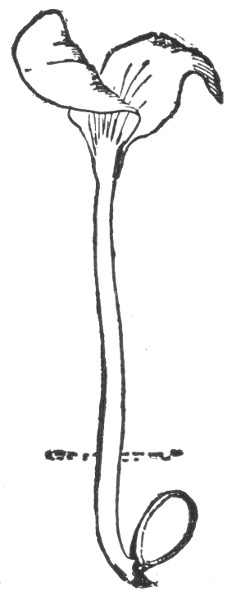
Fig. 189. Squash plant a week old.

Fig. 190. Squash plant which has brought the seed-coats
out of the ground.
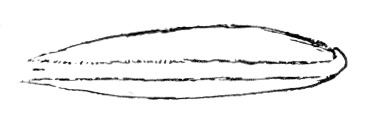
Fig. 191. Germination just beginning.
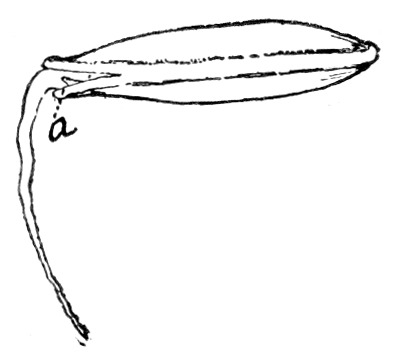
Fig. 192. The root and peg.
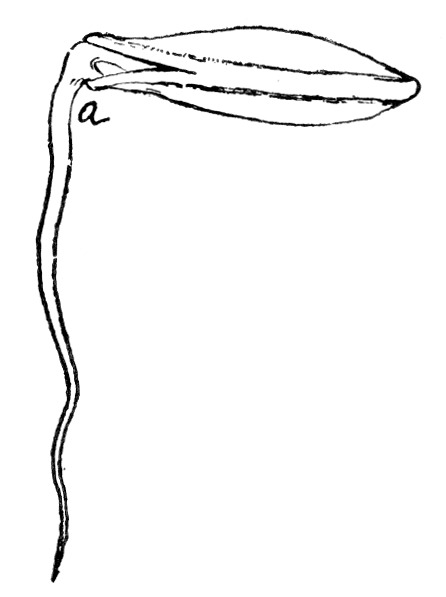
Fig. 193. Third day of root growth.
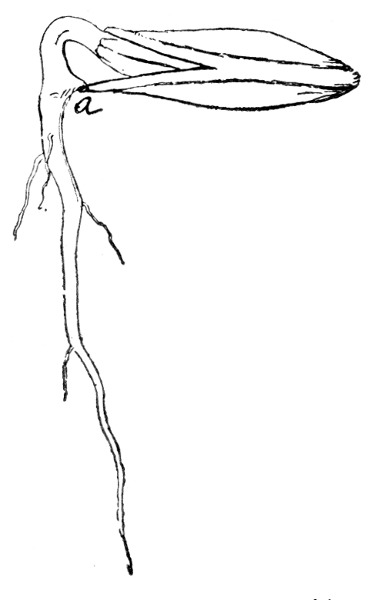
Fig. 194. The plant breaking out of the seed.
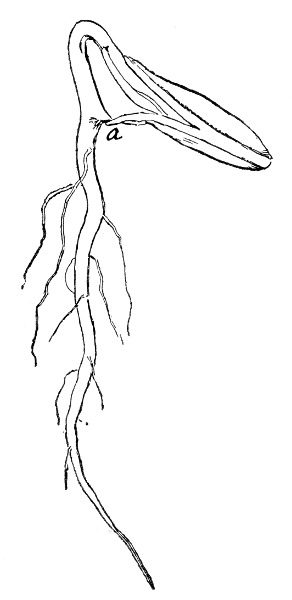
Fig. 195. The operation further progressed.
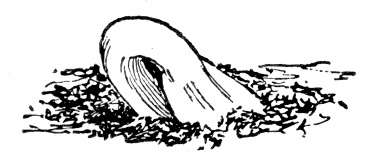
Fig. 196. The plant just coming up.
It may happen, however,—as it did in a pan of seed which I sowed a few
days ago—that one or two of the plants may look like that shown in Fig.
190. Here the seed seems to have come up on top of the plant; and one is
reminded of the curious way in which beans come up on the stalk of the
young plant. If we were to study the matter, however,—as we may do at a
future time—we should find a great difference in the ways in which the
squashes and the beans raise their seeds out of the ground. It is not
our purpose to compare the squash and the bean at this time, but we are
curious to know why one of these squash plants brings its seed up out of
the ground whilst all the others do not. In order to find out why it is,
we must ask the plant, and this asking is what we call an experiment. We
may first pull up the two
[292]
plants. The first one (Fig. 189) will be seen to have the seed-coats
still attached to the very lowest part of the stalk below the soil, but
the other plant has no seed at that point. We will now plant more seeds,
a dozen or more of them, so that we shall have enough to examine two or
three times a day for several days. A day or two after the seeds are
planted, we shall find a little point or root-like part breaking out of
the sharp end of the seed, as shown in Fig. 191. A day later this root
part has grown to be as long as the seed itself (Fig. 192), and it has
turned directly downwards into the soil. But there is another most
interesting thing about this germinating seed. Just where the root is
breaking out of the seed (shown at a in Fig. 192), there is a little
peg or projection. In Fig. 193, about a day later, the root has grown
still longer, and this peg seems to be forcing the seed apart. In Fig,
194, however, it will be seen that the seed is really being forced apart
by the stem or stalk above the peg for this stem is now growing longer.
The lower lobe of the seed has attached to the peg (seen at a, Fig.
194), and the seed-leaves seem to be backing out of the seed. Fig. 195
shows the seed a day later. The root has now produced many branches and
has thoroughly established itself in the soil. The top is also growing
rapidly and is still backing out of the seed, and the seed-coats are
still firmly held by the obstinate peg.
Whilst we have been seeing all these peculiar things
in the seeds which we have dug up, the plantlets which
we have not disturbed have been coming through
the soil. If we were to see the plant in Fig. 195, as it was "coming
up," it would look like Fig. 196. It is tugging away in getting
its head out of the bonnet which is pegged down underneath
the soil, and it has "got its back up" in the operation. In Fig. 197
[293]
it has escaped from its trap and it is laughing and growing in
delight. It must now straighten itself up, as it is doing in Fig. 197,
and it is soon standing proud and straight, as in Fig. 189. We now see
that the reason why the "seed" came up on the plant in Fig. 190, is that
in some way the peg did not hold the seed-coats down (see Fig. 195), and
the expanding leaves, being pinched together must get themselves loose
as best they can.
There is another thing about this interesting squash plant which we must
not fail to notice, and this is the fact that these first two leaves of
the plantlet came out of the seed and did not grow out of the plant
itself. We must notice, too, that these leaves are much smaller when
they are first drawn out of the seed-coat than they are when the
plantlet has straightened itself up. That is, these leaves increase very
much in size after they reach the light and air. The roots of the
plantlet are now established in the soil and are taking in food which
enables the plant to grow. The next leaves which appear will be very
different from these first or seed leaves.
These later ones are called the true leaves. They grow right out of the
little plant itself. Fig. 199 shows these true leaves as they appear on
a young Crookneck squash plant, and the plant now begins to look much
like a squash vine.
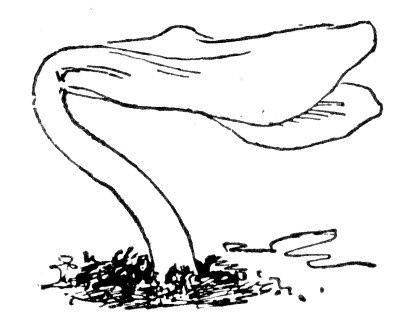
Fig. 197. The plant liberated from the seed-coats.
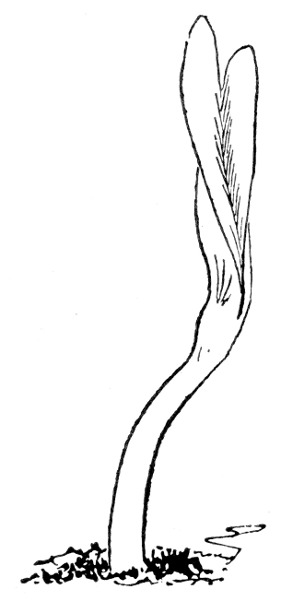
Fig. 198. The plant straightening up.
We are now curious to know how the stem grows when it backs out of the
seeds and pulls the little seed-leaves with it, and how the root grows
downwards into the soil. Now let us pull up another seed when it has
sent a single root about two inches deep into the earth. We will wash it
very carefully and lay it upon a piece of paper. Then we will lay a
ruler alongside of it, and make an ink mark one-quarter of an inch from
the tip, and two or three
[294]
other marks at equal distances above (Fig. 200).[39] We will now
carefully replant the seed. Two days later we will dig it up, when we
shall most likely find a condition somewhat like that in Fig. 201. It
will be seen that the marks E, C, B, are practically the same distance
apart as before and they are also the same distance from the peg AA. The
point of the root is no longer at DD, however, but has moved on to F.
The root, therefore, has grown almost wholly in the end part.
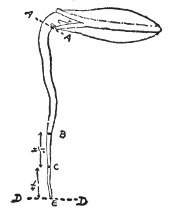
Fig. 199. The true leaves developing.
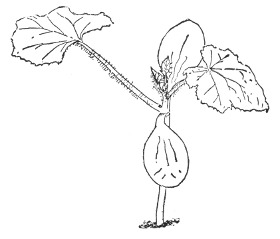
Fig. 200. Marking the root.
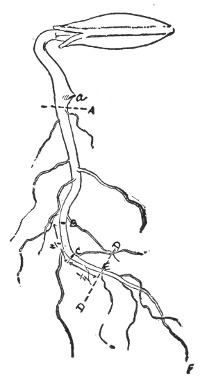
Fig. 201. The root grows in the end parts.
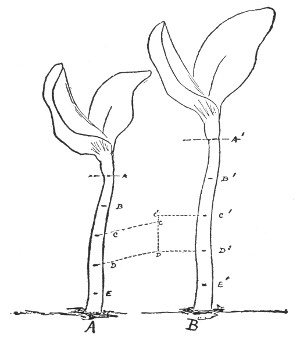
Fig. 202. The marking of the stem, and the spreading apart of the marks.
[295]
Now let us make a similar experiment with the stem or stalk. We will
mark a young stem, as at A in Fig. 202; but the next day we shall find
that these marks are farther apart than when we made them (B, Fig. 202).
The marks have all raised themselves above the ground as the plant has
grown. The stem, therefore, has grown between the joints rather than
from the end. The stem usually grows most rapidly, at any given time, at
the upper or younger part of the joint (or internode); and the joint
soon reaches the limit of its growth and becomes stationary, while a new
one grows out above it.
[296]
[297]
LEAFLET XXIX.
HOW THE TREES LOOK IN WINTER.[40]
By L. H. BAILEY.
To the teacher.—We want the country child to have a closer
touch with nature in the winter time. Teach him to see, to know, and to
care for the trees when they are leafless. This leaflet will suggest how
you may interest him.
You can also intensify his interest in the subject, and at the same time
increase his knowledge of drawing, by having him make skeleton or
outline drawings of the trees about the schoolhouse or the home. Leaflet
XXX gives suggestions for drawing.
You can correlate this work with geography by giving the distribution or
range of the different kinds of trees. Indicate the limit of
distribution northward, southward, eastward, westward; also the regions
in which the species is most abundant. The common manuals of botany will
help you in this work; or you may consult the many excellent special
books on trees.
In teaching nature-study, remember that a great part of its value lies
in the enthusiasm and zeal with which you handle it. Try, also, to
develop the æsthetic sense of the pupil; but do not teach mere
sentiment.

Only the growing and open season is thought to be attractive in the
country. The winter is bare and cheerless. The trees are naked. The
flowers are under the snow. The birds have flown. The only bright and
cheery spot is the winter fireside. But even there the farmer has so
much time that he does not know what to do with it. Only those who have
little time, appreciate its value.
But the winter is not lifeless and charmless. It is only
dormant. The external world fails to interest us
because we have not been trained to see and know it; and also
because the rigorous weather and the snow prevent us from going
afield. In the spring, summer, and fall, the hours are full to overflowing
[298]
with life and interest. On every hand we are in contact
with nature. If the farmer's winter is to be more enjoyable the
farmer must have more points of contact with the winter world.
One of the best and most direct of these points of sympathy is
an interest in the winter aspects of trees.
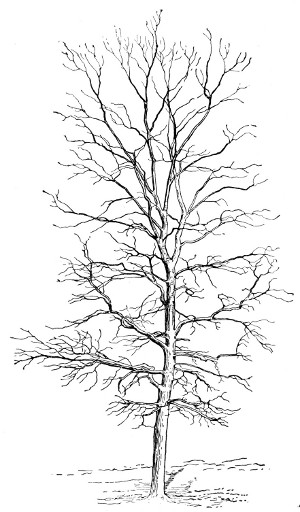
Fig. 203. Small-fruited Shagbark Hickory.
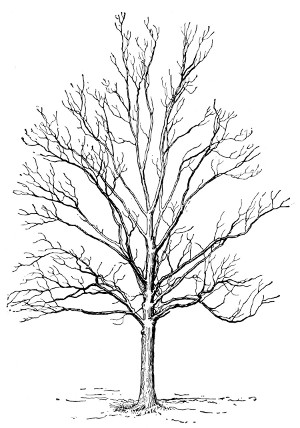
Fig. 204. Pignut Hickory. This and Fig. 203 are from "Lessons with Plants."
a. The Structure of the Tree-top.
In the summer time we distinguish the kinds of trees chiefly by
means of the shape and the foliage. In winter the foliage is
gone; but the shape remains, and the framework of the tree is
also conspicuous. Trees are as distinct in winter as in summer;
and in some respects their characters are more apparent and
pronounced.
Observe the outline of a tree against the dull winter sky. It
does not matter what kind of tree it is. Note its height, shape,
and size of top, how many branches there are, how the branches
[299]
are arranged on the main trunk, the direction of the branches,
whether the twigs are few or many, crooked or straight.
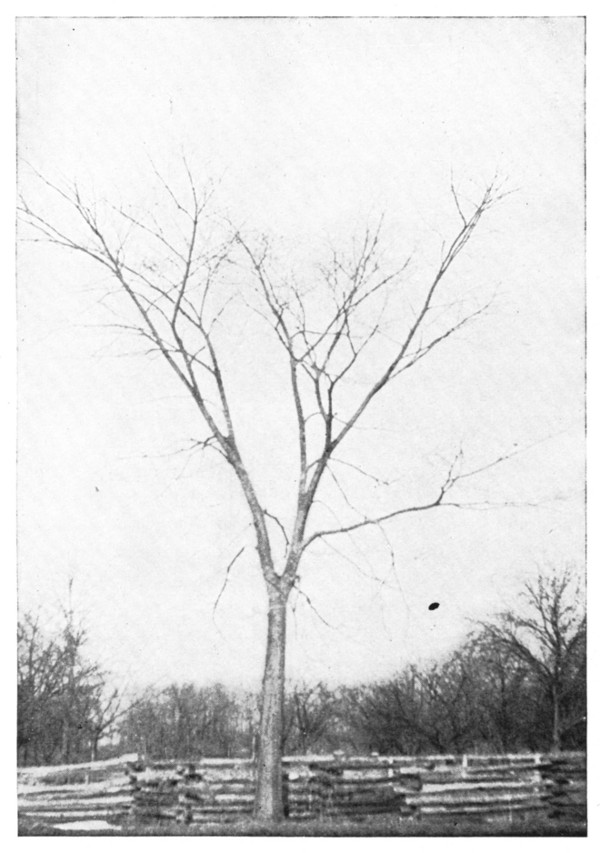
Fig. 205. Slippery Elm. The expression is stiff and hard.
Having observed these points in any tree, compare one kind of
tree with another and note how they differ in these features.
Compare an apple tree with an elm, an elm with a maple, a
basswood with a pine, a poplar with a beech, a pear tree with a
peach tree.
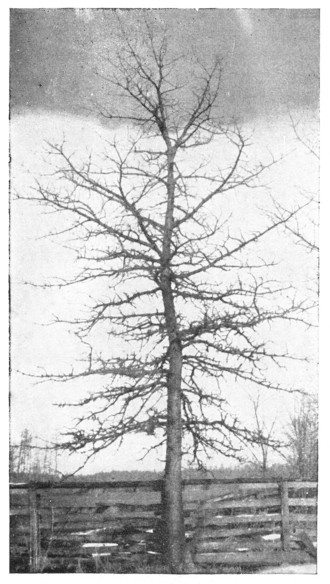
Fig. 206. Swamp White Oak.
Having made comparisons between very dissimilar trees, compare
those which are much alike, as the different kinds of maples,
of elms, of oaks, of poplars. As your powers of observation
[300]
become trained, compare the different varieties of the same kind of
fruit trees, if there are good orchards in the vicinity. The different
varieties of pears afford excellent contrasts. Contrast the Bartlett
with the Flemish Beauty, the Kieffer with the Seckel. In apples, compare
the Baldwin with the Spy, the King with the Twenty Ounce. The sweet and
sour cherries show marked differences in method of branching. Fruit men
can tell many varieties apart in winter. How?
Two common hickories are shown in Figs. 203 and 204. How do they differ?
Do they differ in length of trunk? General method of branching?
Direction of branches? Character of twig growth? Straightness or
crookedness of branches?
Contrast the slippery elm (Fig. 205) and the common or American elm
(Fig. 211). The former has a crotchy or forked growth, and long, stiff,
wide-spreading branches. The latter is more vase-like in shape. The
branches are willowy and graceful, with a tendency to weep.
Compare the oaks. The white and scarlet oaks have short
trunks when they grow in fields, and the main branches are comparatively
few and make bold angles and curves. The swamp
white oak (Fig. 206), however, has a more continuous trunk, with
many comparatively small, horizontal, and tortuous branches.
With Fig. 206 compare the pepperidge (Fig. 207). This is one
of the most unusual and interesting of all our native trees. It
[301]
grows in swales. It has a very tough-grained wood. The autumn foliage is
deep red and handsome. The peculiarities of the tree are the
continuation of the trunk to near the summit, and the many lateral,
short, deflected, tortuous branches.
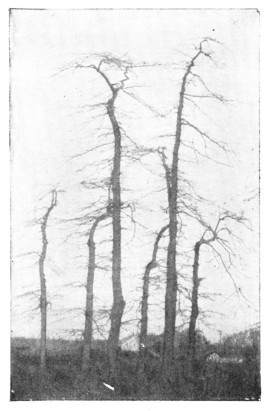
Fig. 207. Pepperidge or Sour Gum. The oddest of New York trees.
Consider the structure of the sassafras in Fig. 208. The great branches
stand off nearly at right angles to the trunk, and are bushy and twiggy
at the ends. Each large branch if cut off at its base and stood upright
would look like an independent tree, so tree-like are its branches.
Observe how much more bushy the sassafras is than any of the other trees
already figured. Compare it in the method of branching and the
twigginess with the slippery elm (Fig. 205).
But there is still greater brushiness in the thorn-apple (Fig. 209). In
twigginess Figs. 208 and 209 are very unlike, however. Pick out the
differences. Observe the very short and spur-like twigs in the
thorn-apple; also notice how soon the trunk is lost in the branches.
With all the foregoing pictures compare the steeple-like form of the
Lombardy poplar (Fig. 210). The tree is frequent along roadsides and
about yards. What is its structure? Observe it as it stands against the
winter sky. There is nothing else in our northern landscape so straight
and spire-like. If you know a beech tree standing in a field, contrast
it with the Lombardy poplar. These two trees represent extremes of
vertical and of horizontal branching.
Aside from the general structure of the tree-top, the pupil will
become interested in the winter color of the tree and in the character
of the bark. How does the bark differ between elms and
maples, oaks and chestnuts, birches and beeches, hickories and
walnuts? Why does the bark separate in ridges or peel off in
strips? Is it not associated with the increase in diameter of the
[302]
trunk? The method of breaking of the bark is different and
peculiar for each kind of tree.
Look at these things; and think about them.
The Expression of the Tree.
Consciously or unconsciously, we think of trees much as we
think of persons. They suggest thoughts and feelings which are
also attributes of people. A tree is weeping, gay, restful, spirited,
quiet, sombre. That is, trees have expression.
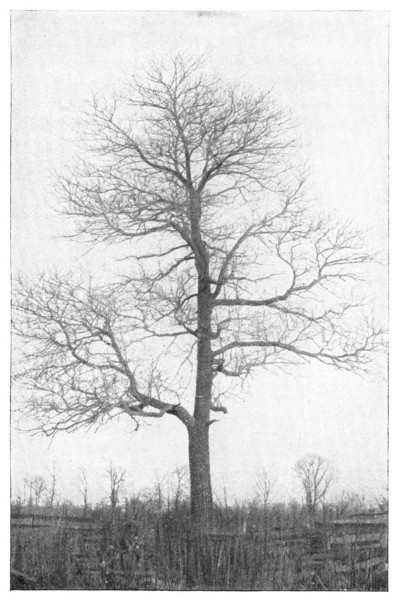
Fig. 208. Sassafras. Type of a bushy-topped tree.
The expression resides in the observer, however, not in the
tree. Therefore, the more the person is trained to observe and
[303]
to reflect, the more sensitive his mind to the things about him,
and the more meaning the trees have. No one loves nature who
does not love trees. We love them for what they are, wholly
aside from their uses in fruit-bearing or shade-giving. A knowledge
and love of trees binds one close to the external world.
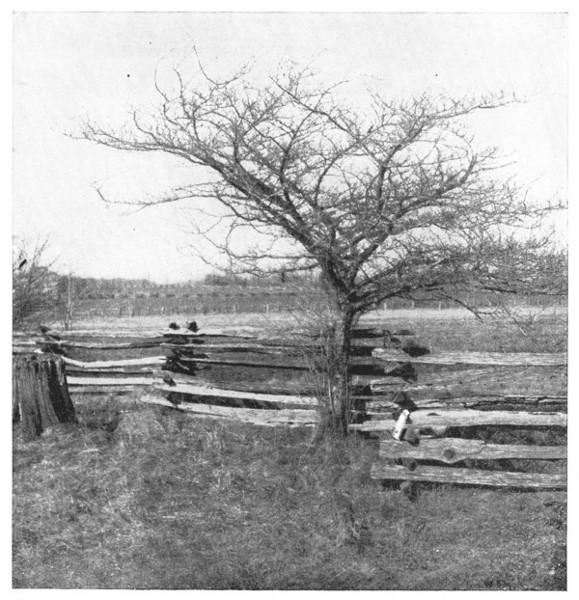
Fig. 209. Thorn-apple. One of the most picturesque objects in the winter landscape.
How shall one increase his love of trees? First, by knowing
them. He learns their attributes and names. Knowing them in
winter, as already suggested, is one of the ways of becoming
acquainted. Second, by endeavoring to determine what thought
or feeling they chiefly express. The slippery elm is stiff and
hard. The American elm is soft and graceful. The Lombardy
[304]
poplar is prim and precise. The oak is rugged, stern, and bold. The
pepperidge is dejected. The long white branches of a leaning buttonwood
standing against a distant forest, suggest some spectre hurrying away
from the haunts of men.
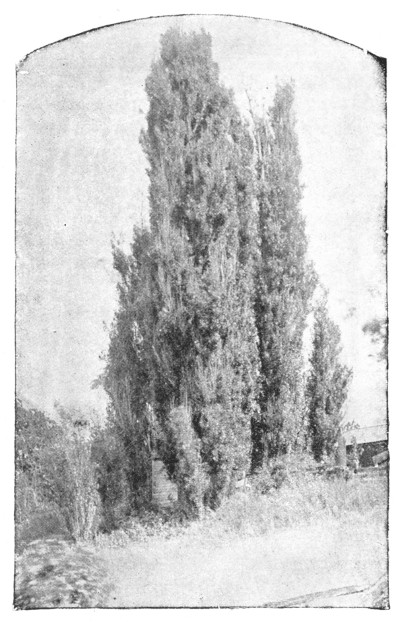
Fig. 210. Group of Lombardy Poplars. From Bulletin 68.
Trees which have very strong expressions, or which are much unlike
others, are said to have character. They are peculiar. Of such trees are
oaks, pepperidges, Lombardy poplars, button woods, old
apple trees.
A tree with very strong characters is said to be picturesque. That is,
it is such an object as an artist delights to put into a picture. Trees
which are very unsymmetrical, or knotty, gnarled, or crooked, are
usually picturesque. Of all common trees, none is more picturesque than
an old apple tree. Observe its gnarled and crooked branches, and the
irregular spaces in its top.
Encourage the pupil to extend his observation to all the trees
about him, especially to such as are common and familiar. Teach
him to observe the growths of bushes and trees in the fence-rows
which lie on his way to school; and to observe carefully and
[305]
critically. How do gooseberry bushes differ from currant bushes,
and raspberries from blackberries? Observe the lilac bush and
the snowballs. How is the snow held on the different kinds of
evergreens—as the pines, spruces, arbor-vitæ? See how the fruit-spurs
on pears and plums stand out against the sky. (Consult
Leaflet No. XXXI, "Four Apple Twigs.") Are there any bright
colors of branch and twig to relieve the bareness of the snow?
Do you see any warmth of color in the swales where the willows
and osiers are? Do you see old plumes of grass and weeds standing
above the snow? Do they bring up any visions of summer
and brooks and woods?
[306]
[307]
LEAFLET XXX.
ONE WAY OF DRAWING TREES IN THEIR
WINTER ASPECT.[41]
By C. W. FURLONG.
The few suggestions which are set forth in these pages are based upon
two assumptions:—first, that the teacher has some knowledge of the most
salient principles of elementary perspective; and second, that she has a
love for all things beautiful. It is feasible to deal here not to any
extent with art in either its abstract or its concrete form, but only
with drawing.
Drawing, in its simplest analysis, is the ability to record objects as
they appear to the normal eye.
Art is more complicated. It includes many elements, a few of which are
composition, expression of movement, and action. The very thought,
feeling, and refinement of the artist must be expressed in his work. He
must tell not only what he sees, but also what he feels. He interprets
nature through his own moods.
There are no outlines in nature. The boundaries, shapes, and character
of various forms are determined by the difference of their color values,
and the contrasts of light and shade. Yet an outline drawing is the
simplest means of representing form and proportion. Although inadequate
in many respects, this somewhat conventional rendering is important to
the beginner, for it is necessary that the child be taught to observe
forms and proportions correctly; and these impressions may be recorded
most simply and definitely by outline drawings. Michael Angelo
emphasized its importance in these words: "The science of drawing or of
outline is the essence of painting and all the fine arts, and the root
of all the sciences."
To a great extent, one may show in an outline drawing the character and
texture of surfaces. Our main object should be to train the boys and
girls to observe in order to acquire a correctness of perception, for
"education amongst us consists too much in telling, not enough in
training."
[308]
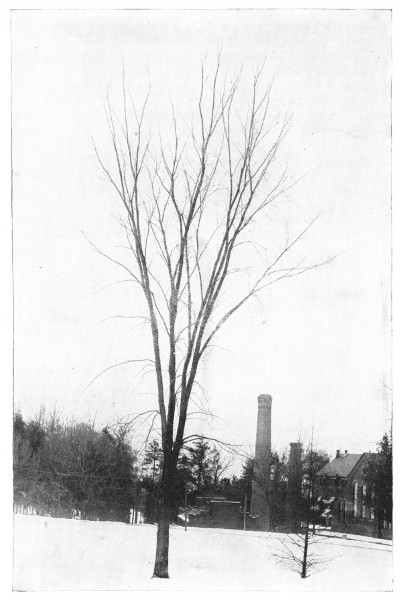
Fig. 211. The American Elm, one of the most typical of vase-form trees.
[309]
One of the greatest difficulties is to impress upon the minds of
beginners the fact that they must think while they look and draw.
Insist upon the pupil's looking repeatedly at the object. It is
better to observe for five minutes and draw for one, than to
observe for one and draw for five.
Make the drawing lesson more interesting by telling the class
something about the object which they are to draw, involving in
the story facts that will impress upon their minds some of the
most salient characteristics of the object. Encourage the children
to discuss the object, drawing out facts for their own observation.
Certain kinds of trees, like certain races of people, have a general
similarity, yet every single tree has an individuality of its own.
Apply a few essential questions that will help to determine at
least the kind of tree it is, the race to which it belongs; for first
we must get its general character, seeing its big proportions and
shape; and later must search for its individualities.
Is it tall for its greatest width?
How far does the trunk extend before dividing?
At what height do the lowest branches arise?
What is their general direction?
Do they appear to radiate from the trunk?
How do they appear to radiate from the trunk?
How do the main branches compare in size with the trunk?
Are they crooked or straight?
The manner of branch growth must be studied carefully.
We see in our elm (Fig. 211) that the trunk divides at about a
fourth of its height into several main branches, while in the case
of the pepperidge (Fig. 207) the trunk extends to the very top of
the tree, the branches being small in proportion to the trunk, not
varying much in size, and taking an oblique downward direction.
Notice the weird expression of these trees with their crookedly
bent tops, one side of each trunk being almost devoid of branches.
The trunk of the sassafras (Fig. 208) continues nearly to the
top of this tree, while the large branches, though unsymmetrical,
give it a well-balanced appearance.
Again in our picture of the thorn-apple (Fig. 209), we are at
once impressed with its irregular form, the branches on the left
taking a more oblique direction than those of the other side, the
trunk dividing a little short of half the height of the tree.
For an example, let our subject be an elm tree (Fig. 211); our
drawing to be rendered in outline.
[310]
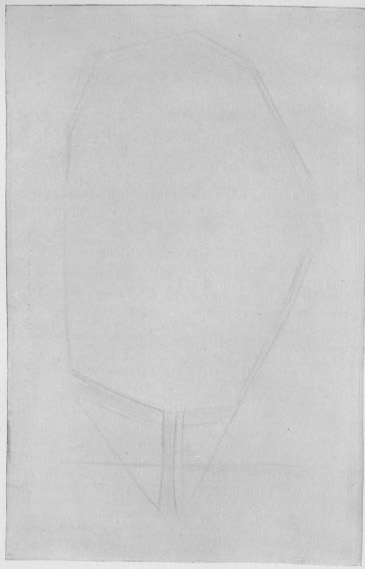
Fig. 212. Blocking-in the elm tree (Fig. 211). The first work which the artist does when he draws the tree.
[311]
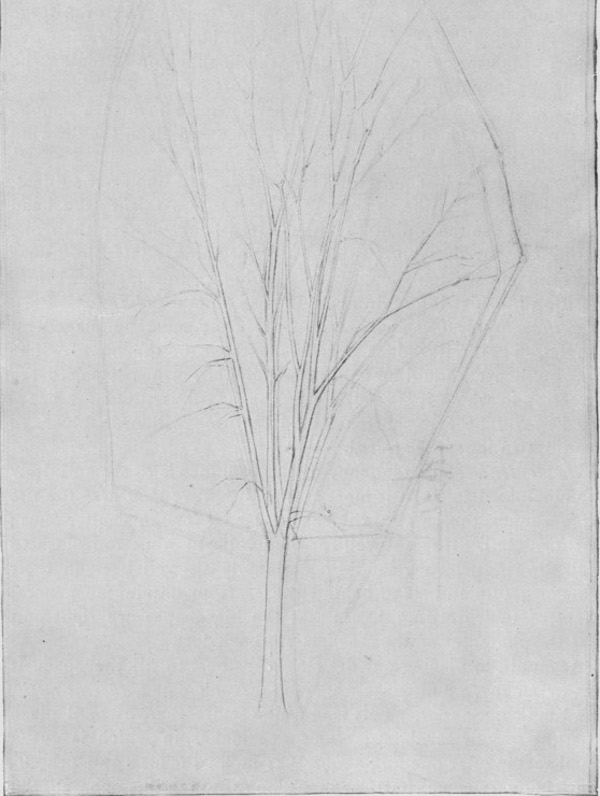
Fig. 213. Working in the details with sharp lines. The original pencil sketch is not followed exactly.
[312]
Material.—Almost any good drawing paper, white or buff in
color, will answer our purpose; 9x12 is a good size. Our pencil
should be of medium grade lead (F. or HB.) of any standard
make, Kohinoor preferred.
If procurable, we should have a light drawing board 17x22
inches (here is an opportunity for the carpenters) to place the
paper on, otherwise a very stiff piece of cardboard; or a large
geography book might answer. It is best, however, to fasten our
paper, which we cannot do in using the book. For fastening the
paper use four thumb tacks for the corners.
A Faber or multiplex pencil eraser is needed; also a sponge
eraser with which to remove the light lines and clean the drawing
before lining it in.
Our position.—Our point of view will depend upon our subject,
but it is not well to be so near as to necessitate raising the head
in order to see the top of the tree. If we take longer than one
sitting for our drawing (which I do not think advisable, as we
must not choose too complicated a subject), we must mark our
position in order to obtain again the same point of view.
Position of the drawing-board.—Our paper must be placed on
the board with its edges parallel to those of the board. The
drawing-board should be held perpendicular, or nearly so, to the
direction in which it is seen, for if the board is tilted far backward,
it will be fore-shortened and our tree will probably have
been drawn longer than it should be.
How to look.—The tendency of the beginner is to see and draw
too much in detail. It is most essential that we look first for the
large shapes, the greatest dimensions; next for the smaller ones;
last for detail. It is not well for the pupils to work too close to
their drawings. They should occasionally sit well back in their
seats or get up and stand behind the seats to obtain the general
effect of their drawing, to see that the big shapes are right and
that the character of the tree has not been lost.
As an aid to placing our drawing so as best to fill the space it
has to occupy, we may use what the French call a cherche-motif,
the English, a finder. This is nothing more than a small piece
of stiff paper or cardboard about 5x8 inches, in which is cut a
small rectangular opening about 3/4x1 inch; the size and proportion
may vary somewhat. We may look through this opening, the
card acting as a frame to our picture. This will help us to decide
whether our subject will look better placed the horizontal or
[313]
the vertical way of the paper and how much of the subject to
include and where to place it in that space. We may include
more or less in the finder by varying its distance from the eye.
Now, I am sure we should not place ourselves within a dozen
yards of our tree if we wished to get its general effect; therefore,
we must have plenty of foreground in our drawing. We must
give the eye a chance to look, allowing plenty of space between
the lowest point of our drawing and the lower edge of our paper.
As the height of tree we are to draw (Fig. 211) is greater than
its greatest width, we find that it will fill the space best if placed
the vertical way of the paper. After indicating the extreme
height and width by four light marks, before carrying the drawing
further we must test these proportions by comparing the
width with the height, always testing the shorter dimension into
the longer, viz.:
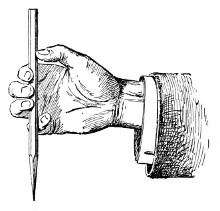
Fig. 214. How to test the drawing.
To test the drawing.—Close one eye. The pencil may be used to test
the drawing by holding it in front of you at arm's length (as in Fig.
214) perpendicular to the direction in which the object is seen; also
revolving it in a plane perpendicular to the direction in which the
object is seen, in order to compare one dimension with another. For
example, hold your pencil horizontally at arm's length so that its blunt
end covers the outermost left-hand point of the elm. Slide your thumb
along the pencil till it covers the extreme right-hand point; retain
that measurement (keeping the same position in your chair, pencil always
at arm's length); revolve the pencil in the same plane until it
coincides with the height of the elm, at the same time lowering it so
that the end of the thumb covers the lowest point of the tree; note
carefully the point that the blunt end covers; raise the pencil so that
the end of the thumb covers that point, noting again where the blunt end
occurs and notice how many times, and how much over, the width goes into
the height. In our elm (Fig. 211) we find that the width goes about once
and six-sevenths into the height, or a little short of twice. If the
latter statement is preferred, we must bear in mind the proportion left
over.
[314]
Do not use the scale side of a ruler or marks on the pencil or
object used in order to test the proportions, and never transfer
measurements from the object used in testing to your paper. A
scale or other mechanical means should not be used in free-hand
drawing. The teacher should have a spool of black thread and
should give a piece about 2 feet 6 inches long to each pupil. An
eraser, a knife, or some small article may be attached to one end
of the thread. By holding the weighted thread as a plumb-line in
front of us, we have an absolutely vertical line; so by having it
intersect a desired point of our tree we may obtain the relative
positions to the right and left of other points above and below
this intersected point.
Blocking-in.—We may conceive of the general shape of our elm
by looking at it with half closed eyes. It appears in silhouette.
Now imagine lines joining its outermost points; this will give the
general mass or shape of our tree. Now if we represent the
outermost points contained in these lines by sketching lightly
these "blocking-in" lines, as they are called, we obtain the general
shape of the elm (Fig. 212). We must emphasize the fact
that these blocking-in lines are to be sketched in lightly by holding
the pencil near the blunt end, using a free-arm motion. Now before
going farther we again test these new points to see if they occupy
their correct positions in relation to the height and width. Do not,
however, transfer the measurements from the pencil to the paper.
This test is only to obtain the proportion of one dimension to
another. Having tested these smaller dimensions we may draw
lightly the main branches.
After having indicated their general direction and character of
growth, we may indicate some of the smaller branches and twigs
(Fig. 213). All this work should be carried out without erasing;
all corrections should be made by slightly darker lines.
Let us now sharpen our pencils to a good point and go over the
drawing with a fine dark line, carefully studying the character and
spirit of the tree. Now erase the lighter and superfluous lines, as
the dark lines remain distinct enough to indicate our drawing.
Lining-in.—We may now take our pencil nearer the point and
proceed to line-in the drawing, going over it with a definite, consistent
line. If desirable, we may accent and bring out certain
parts of the tree more strongly than others by darker or shade lines
and short, strong markings called accents. These are especially
effective at the junction and underside of branches, and where
[315]
[316]
one wishes to give the object a nearer appearance. A soft, broad,
grey line may be obtained by using a softer pencil (B) and the
drawing given variety by breaking lines here and there. We
should be cautious in using them, however; but lack of space
does not permit further discussion of the subject of accented
outlines.
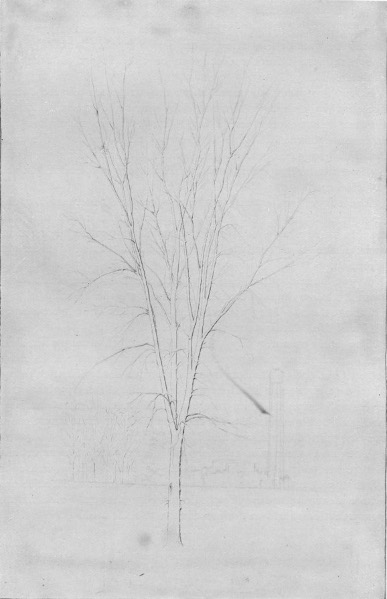
Fig. 215. The outline drawing complete, and the first pencil marks erased.
Allow the pupils to make short ten- or fifteen-minute "time
sketches" of trees. In these it is the spirit and general effect of
the tree that we must strive for. Above all, we must allow our
little draughtsmen to give their own interpretation of the tree.
A helpful suggestion as to proportion, etc., would be in place,
but we must allow their individuality to have as much play as
possible.
The suggestions given on these pages are necessary for the
beginner. Some of them are hard facts; but it lies with the
teacher to develop the æsthetic and artistic qualities lying dormant
in the pupil, ready to be moulded and started in the right
direction.
If you have confined the pupils to the flat copy, break away
from it; allow them to create. Let them see the beautiful things
all about them. They will respond. Let them draw from nature
and still life. Train them to observe.
The early summer days, just before school closes, with their
bright sunlight and strong shadows, make many subjects interesting
as light-and-shade drawings. Fall, with its brilliant coloring,
gives us a chance to use the color-box, while the early winter twilights
will bring many an interesting silhouette before our boys
and girls, and next day during the drawing hour these impressions
may be carried out in pen and ink.
The most successful teacher will be the one of sympathetic
nature whose love reaches out to the boys and girls, as well as to
all things beautiful. The most successful teacher will be the one
who endeavors to place the children where they may view nature
sympathetically and in the most intimate relationship.
[317]
LEAFLET XXXI.
FOUR APPLE TWIGS.[42]
By L. H. BAILEY.
As I walked through an apple orchard the other day for the first time
since the long winter had set in, I was struck by the many different
shapes and sizes of the limbs as I saw them against the blue-gray of the
February sky. I cut four of them in passing, and as I walked back to the
house I wondered why the twigs were all so different; and I found myself
guessing whether there would be any apples next summer.
I have had pictures made of these four little apple limbs. Let us look
them over and see whether they have any story to tell of how they grew
and what they have set out to do.
I.
One of these twigs (Fig. 216) was taken from a strong young
tree which, I remember, bore its first good crop of apples last
year. This simple twig is plainly of two years' growth, for the
"ring" between the old and new wood is seen at B. That is, the
main stem from the base up to B grew in 1895, and the part from
B to the tip grew in 1896. But the buds upon these two parts
look very unlike. Let us see what these differences mean.
We must now picture to ourselves how this shoot from B to 10
looked last summer while it was growing. The shoot bore leaves.
Where? There was one just below each bud; or, to be more exact,
one bud developed just above each leaf. These buds did not
put out leaves. They grew to their present size and then stopped.
The leaves fell.
What are these buds of the tip shoot preparing to do in 1897?
We can answer this question by going back just one year and seeing
what the buds on the lower (or older) part of the shoot did in
1896. On that part (below B) the buds seem to have increased in
size. Therefore, they must have grown larger last year. There were
[318]
no leaves borne below these buds in 1896, but a cluster of
leaves came out of each little bud in the spring. As
these leaves expanded and grew, the little bud grew on;
that is, each bud grew into a tiny branch, and when fall
came each of these branches had a bud on its end to
continue the growth in the year to come. What we took to
be simple buds at 2, 3, 4, 5, 6, are, therefore, little branches.
But the strangest part of this wonderful little twig has not yet been
seen,—the branches are of different sizes, and three of them (7, 8, 9)
have so far outstripped the others that they seem to be of a different
kind. It should be noticed, too, that the very lowermost bud (at 1)
never grew at all, but remained perfectly dormant during the entire year
1896. It will be seen, then, that the dormant bud and the smallest
branches are on the lower part of the shoot, and the three strong
branches are at the very tip of the last year's growth.
If, now, we picture the twig as it looked in the fall
of 1895, we shall see that it consisted of a single shoot,
terminating at B. It had a large terminal bud (like
those at 7, 8, 9, 10), and this bud pushed on into a
branch in 1896, while three other buds near the tip
did the same thing.
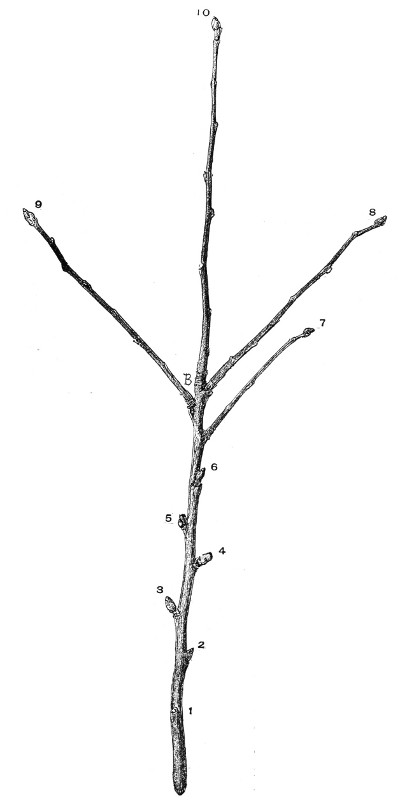
Fig. 216.—A two-year-old shoot from a young apple tree. Half size.
Why did some of these branches grow to be larger
than others? "Simply because they were upon
the strongest part of the shoot, or that part where
the greatest growth naturally takes place," some
one will answer. But this really does not answer the
question, for we want to know why this part of the
shoot is strongest. Probably the real reason is
that there is more sunlight and more room on
this outward or upward end. In 1897,—if this shoot
had been spared—each of these four largest twigs (7, 8, 9, 10)
would have done the same thing as the parent twig did in 1896:
[319]
each would have pushed on from its end, and one or two or three other
strong branches would probably have started from the strong side-buds
near the tips, the very lowest buds would, no doubt, have remained
perfectly inactive or dormant for lack of opportunity, and the
intermediate buds would have made short branches like 2, 3, 4, 5, 6. In
other words, the tree always tries to grow onward from its tips, and
these tip shoots eventually become strong branches, unless some of them
die in the struggle for existence. What, now, becomes of the little
branches lower down?

Fig. 217. A three-year-old shoot and the fruit-spurs. Half size.
II.
From another apple tree I took the twig shown in Fig. 217. We see at
once that it is very unlike the other one. It seems to be two years old,
one year's growth extending from the base up to 7, and the last year's
growth extending from 7 to 8; but we shall see upon looking closer that
this is not so. The short branchlets at 3, 4, 5, 7 are very different
from those in Fig. 216. They seem to be broken off. The fact is that the
broken ends show were apples were borne in 1896. The branchlets that
bore them, therefore, must have grown in 1895, while the main branch,
from 1 to 7, grew in 1894. It is plain, from the looks of the buds, that
the shoot from 7 to 8 grew last year, 1896.
Starting from the base, then, we have the main twig growing in 1894; the
small side branches growing in 1895; these little branches bearing
apples in 1896; and the terminal shoot also growing in 1896. Why was
there no terminal shoot growing in 1895? Simply because its tip
developed a fruit-bud (at 7) and therefore could not send out a branch;
for there are two kinds of buds,—the small, pointed leaf-bud and the
thick, blunt fruit-bud. If the branchlets 3, 4, 5, 7 are two years old,
the dormant buds—1, 2—must be of the same age. That is, for two long
years
[320]
these little buds have been waiting (if I may use the expression)
for some bug to eat off the buds and leaves above, or some accident
to break the shoot beyond them, so that they might have a
chance to grow; but they have waited in vain.
We have now found, therefore, that the little side shoots upon
apple twigs often become fruit-branches or fruit-spurs, while the
more ambitious branches above them are making a great display
of stem and leaves.
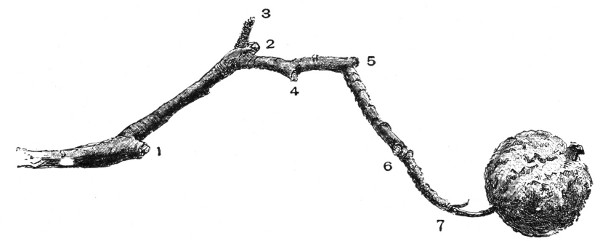
Fig. 218.—A fruit-spur which has borne six apples. Half size.
But will these fruit-spurs bear fruit again in 1897? No. The
bearing of an apple is hard work, and these spurs did not have
enough vitality left to make fruit-buds for the next year; but as
they must perpetuate themselves, they have sent out small side
buds which will bear a cluster of leaves and grow into another
little spur in 1897, and in that year these new spurs will make
fruit-buds for bearing in 1898. The side bud is plainly seen on
spur 5, also on spur 4, whilst spur 7 has sown a seed, so to speak,
in the bud at 6. It is plain, therefore, why the tree bears every
other year.
III.
There was one tree in the orchard from which the farmer had
not picked his apples. Perhaps the apples were not worth picking.
At any rate, the dried apples, shriveled and brown, are still
hanging on the twigs, and even the birds do not seem to care
for them. I broke off one of these twigs (Fig. 218). Let us see
how many apples this interesting twig has borne. We can tell by
the square-cut scars. An apple was once borne at 1, another at
2, another at 4, another at 5, another at 6, and another at 7,—and
at 7 there will be a scar when the apple falls. Six apples
this modest shoot has borne! And I wonder how many of them
[321]
got ripe, or how many were taken by the worms, or how many
were eaten by the little boys and girls on their way to school!
A peculiar thing happened when the fruit was growing at 2.
Two side buds started out, instead of one, and both of them grew
the next year. But one of the little branchlets fell sick and died,
or a bug nipped off its end, or it starved to death; and its memory
is preserved by the little stick standing up at 3. The other
branchlet thrived, and eventually bore apples at 4, 5, 6, and 7.
I have said that these fruit-spurs bear only every other year;
then, if this branch has borne six apples consecutively, it must
be twelve years old. The truth is that it is about twenty years
old, for some years it failed to bear; but the age cannot be traced
out in the picture, although any little boy or girl with bright eyes
could soon learn to trace out yearly rings on the shoot itself.
IV.
The last shoot that I got that day has a whole volume of history
in it, and I cannot begin to tell its story unless I should
write a small book. But we will trace out its birthdays and see
how many apples it has borne. It is shown in Fig. 219, and
because it is so long I have had to break it into several pieces to
get it on the page. It begins at A, and is continued at B, C, D,
E, and F.
Let us count the yearly rings and see how old the whole limb
is. These rings are at 28, 26, D, 12, 1,—five of them; and as the
shoot grew one year before it made any ring, and another year
made no increase in length—as we shall presently see—the
whole branch must be seven years old. That is, the limb probably
started in 1890.[43] Let us begin, then, at A, and follow it out.
1890. Started as a spur from the main branch, A, and grew to 1.
1891. Apple borne at 1. This apple did not mature, however,
as we can readily see by the smallness of the scar. In this
year, two side buds developed to continue the spur the next
year.
[322]
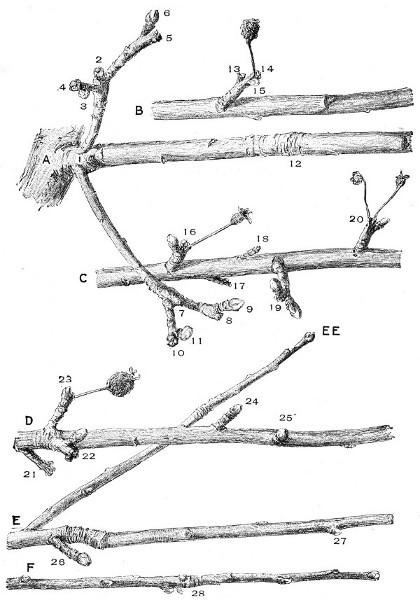
Fig. 219. A seven-year-old apple twig and its curious history. (Half size.)
[323]
1892. Ceased to be a fruit-spur, and made a strong growth on to
12. For some reason, it had a good chance to grow. Perhaps
the farmer pruned the tree, and thereby gave the shoot an
opportunity; or perhaps he plowed and fertilized the land.
In the meantime, one of the side buds grew to 3, and the
other to 7, and each made a fruit-bud at its end.
1893. Shoot grew lustily,—on to D.
The fruit-bud at 3 bore an apple, which probably matured,
as shown by the scar 2. Two side buds were formed beneath
this apple, to continue the spur next year.
The fruit-bud at 7 bloomed, but the apple fell early, as
shown by the small scar. Two side buds were formed.
The buds upon the main shoot—1 to 12—all remained
dormant.
1894. Shoot grew from D to beyond E.
Side bud of 2 grew to 4, and made a fruit-bud on its end;
the other side bud grew on to 5, and there made a fruit-bud.
Side bud of 7 grew on to 10, and the other one to 8, each
ending in a fruit-bud.
Buds on old shoot—1 to 12—still remained dormant.
Some of the buds on the 1893 growth—12 to D,—remained
dormant; but some of them made fruit-spurs,—14, 16, 17, 18,
19, 20, 21, 22, 23.
1895. Shoot grew from beyond E to 28.
Flowers were borne at 4 and 5; but at 4 the fruit fell early,
for the five or six scars of the flowers can be seen, showing
that no one of them developed more strongly than the other;
that is, none of the flowers "set." A fairly good fruit was
probably borne at 5. At the base of each, a bud started to
continue the spur next year.
Upon the other spur, flowers were borne both at 8 and 10.
At 10 none of the flowers set fruit, but a side bud developed.
At 8 the fruit partially matured, and a side bud was also
developed.
The buds upon the old stem from 1 to 12 still remained
dormant.
Some of the spurs on the 1893 growth—12 to D—developed
fruit-buds for bearing in 1896.
Some of the buds on the 1894 growth—D to beyond E—remained
dormant, but others developed into small fruit-spurs.
One of these buds, near the top of the 1894 growth,
[324]
threw out a long shoot, starting from E; and the bud at 26
also endeavored to make a long branch, but failed.
1896. Main shoot grew from 28 to the end.
The side bud below 4 (where the fruit was borne the year
before) barely lived, not elongating, as seen above 3. This
branch of the spur is becoming weak and will never bear
again. The side bud of 5, however, made a fairly good spur
and developed a fruit-bud at its end, as seen at 6.
The side bud of 10 grew somewhat, making the very short
spur 11. This branchlet is also getting weak. The bud of 8,
however, developed a strong spur at 9. Both 11 and 9 bear
fruit-buds, but that on 11 is probably too weak ever to bear
fruit again. In fact, the entire spurs, from 1 to 6 and 1 to 9,
are too weak to be of much account for fruit-bearing.
This year several of the spurs along the 1893 growth—12
to D—bore flowers. Flowers were borne from two buds on
the first one (at 13 and 14), but none of the flowers "set."
One of the little apples that died last June still clings to the
spur at 14. A side bud (15) formed to continue the spur in
1897. Flowers were borne at 16, 20, 21, and 23, but no apples
developed. Upon 16 and 20 the flowers died soon after they
opened, as seen by the remains of them. Upon 23, one of the
flowers set an apple, but the apple soon died. The spurs 17
and 18 are so weak that they have never made fruit-buds, and
they are now nearly dead. The spurs 19 and 22 have behaved
differently. Like the others, they grew in 1894 and would
have made terminal fruit-buds in 1895, and would have borne
fruit in 1896; but the terminal buds were broken off in the
fall or winter of 1894, so that two side buds developed in
1895, and each of these developed a fruit-bud at its end in
1896 in the spur 19, but only one of them developed such a
bud in 22. Upon these spurs, therefore, the bearing year has
been changed.
Upon the growth of 1894—D to beyond E—only three spurs
have developed, nos. 24, 25, 26. These started out in 1895, and
two of them—25 and 26—have made large fat buds which are
evidently fruit-buds. The shoot at E grew on to EE, and all
the buds on its lower two-year-old portion remained dormant.
On the 1895 growth—from beyond E to 28—all the buds
remained dormant save one, and this one—27—made only
a very feeble attempt to grow into a spur.
[325]
The buds upon the 1892 growth—1 to 12—are still dormant and waiting
for an opportunity to grow.
What an eventful history this apple twig has had! And yet in all the
seven years of its life, after having made fifteen efforts to bear
fruit, it has not produced a single good apple! The fault, therefore,
does not lie in the shoot. It has done the best it could. The trouble
has been that the farmer either did not give the tree enough food to
enable it to support the fruit, or did not prune the tree so as to give
the twig light and room, or allowed apple-scab or some other disease to
kill the young apples as they were forming. I am wondering, therefore,
whether, when trees fail to bear, it is not quite as often the fault of
the farmer as it is of the trees?
[326]
[327]
LEAFLET XXXII.
THE BURST OF SPRING.[44]
By L. H. BAILEY.
Spring is coming! The buds will burst and the birds will sing!
How do the buds burst? Watch them as the spring opens; or, if you are
impatient, cut long twigs and place them in bottles of water in a
living-room, and the buds will swell. First, notice what the winter buds
are like,—that they are spherical, or oblong, or conical bodies lying
close to the limb and tightly covered with scales. Notice that there is
a mark or scar beneath the bud, showing where a leaf was borne.
It is excellent practice to collect winter twigs of different kinds of
trees and bushes, and to compare the form and color of the shoots, and
the size, shape, color, and make-up of the buds. Lay the twigs side by
side on the table and notice how one differs from the other. What part
of the twig grew last year? Notice the "ring" at the base of the last
year's growth. After all the differences are noted, put the twigs in
water, as you would a bouquet. Sometimes flowers and leaves will appear.
If the twigs are two or three feet long, the buds are more likely to
grow, for then there is sufficient supply of food in them. Change the
water frequently, and cut off the lower ends of the twigs so that a
fresh surface will be exposed to the water. It will be two to five weeks
before the buds open, depending mostly on the kind of plant.
Mark one bud on a maple, or apple, or lilac, or other plant, by
tying a string about the twig. Look at it carefully from day to
day: observe how it opens, and what comes out of it.
The pupil should know that a winter twig has interest.
[328]

Fig. 220. Opening of an apricot bud.
The bud may be peach or apricot. Soon the bud begins to swell at its
top. The scales open. A white lining appears. This lining soon protrudes
(Fig. 220). Soon the lining opens. We see that it is a flower. Or
perhaps the peach bud sends out a green shoot rather than a flower.
There must be two kinds of peach and apricot buds,—a flower-bud and a
leaf-bud. Can you tell them apart? The flower-bud is thicker and
rounder. Usually one stands on either side of a leaf-bud. But the
leaf-bud may stand alone. Find one: any peach tree or apricot tree will
have leaf-buds, but all may not have flower-buds. As the bud expands and
the flower or leaf appears, notice that the bud-scales fall away. Do
these scales leave scars? And do not these scars, standing together,
make the "ring" which marks the beginning of the new growth?

Fig. 221. Opening of a pear bud.
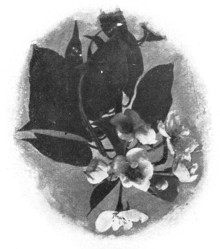
Fig. 222. What came out of a pear bud.
Observe a pear bud. Notice that the scales elongate as the bud swells.
You can see the white bases of the scales, marking the new growth (Fig.
221). If it is a leaf-bud the scales may become three-fourths of an inch
long before they fall. But sooner or later, they are cast, and their
places are marked by scars. If it is a flower-bud, notice that several
flowers come out of it. In the apricot and peach, there is only one
flower in each bud. Each of these little pear flowers is closed up like
a bud and elevates itself on a stalk before it opens: and this stalk
becomes the stem of the pear fruit. But this pear flower-bud contains
leaves as well as flowers. Fig. 222 shows what comes out of a pear bud.
This, then, is a mixed flower-bud,—it contains both leaves and flowers.
The apricot and the peach bear true or simple flower-buds.
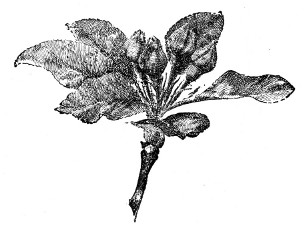
Fig. 223. Opening of an apple bud.
Watch apple buds. The scales do
not elongate as in the pear, but the flower-buds are mixed.
Fig. 223 shows the expanding cluster from an apple flower-bud.
[329]
Four flowers will open; and there are six leaves. If the buds are made
to open in the house on severed twigs, the leaves do not grow so large
before the flowers expand, for the twig does not contain sufficient
food. Fig. 224 is a photograph of an apple twig which I had in my window
one winter's day.
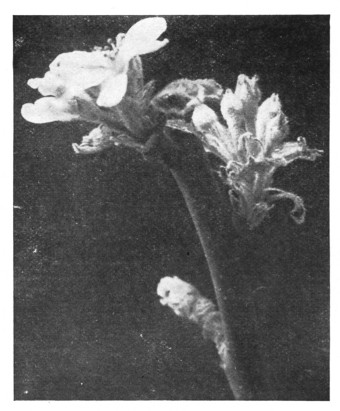
Fig. 224. Apple flowers in midwinter.
Examine a hickory twig. The illustration (Fig. 225) shows the "ring"
marking the beginning of the annual growth. See the large leaf-scars.
Notice that the terminal bud is much the largest. It is the one which
will grow. The other buds will remain dormant unless they are forced
into growth by the death of the terminal bud or by other unusual
circumstances. Notice that buds differ in size on shoots of all plants;
consider that not all the buds are to grow: there is a struggle for
existence. When the hickory bud expands, some of the scales fall away;
but some of the inner parts enlarge into leaf-like bodies, as shown in
Fig. 226. In some hickories these bodies become two or three inches long
before they fall. Hickories open very late in the season. The Norway
maple, commonly planted on lawns, behaves in a similar way. Observe the
sugar maple.
[330]

Fig. 225. Shoot of a hickory.
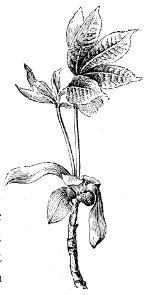
Fig. 226. The opening of a hickory bud.
A twig of the common elm is shown in Fig. 227. Notice the "ring." See
the two kinds of buds. We suspect that the three larger ones are
flower-buds. With the very first warm days—before the robin has built
her nest—these three buds will burst; soon the red-brown tassels will
hang on the leafless twigs. Each tassel is a flower. Several flowers
come from each bud. We see them in Fig. 228; and the leaf-buds have
elongated somewhat. Watch for the fruits or seeds that blow about the
walks so early in spring; and note how the leaves come out.

Fig. 227. Twig of elm.
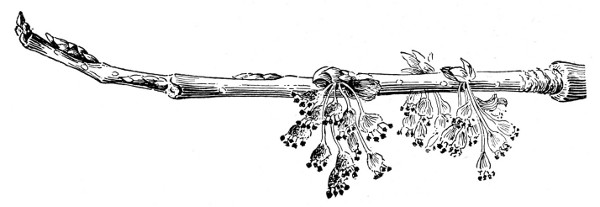
Fig. 228. Blossoms of the elm.
With the first breath of spring, the "pussy willows" come. And what are
the "pussies"? They are clusters of flowers. So snugly are the little
flowers wrapped in wool, that the "pussies" are silken-soft as they
begin to expand. Fig. 229 is a willow shoot. Find one when the buds
first begin to burst. Notice the big brown-black scale that covers the
bud as a shield and falls when the "pussy" first begins to appear.
[331]

Fig. 229. The opening of a pussy willow.
And now what is a winter bud? It is a miniature shoot or flower, resting
for the time, and snugly wrapped for the long winter. It was made last
season. It is ready to leap into growth the moment the warm rain of
spring wakens it. A good hand lens will show the embryo branch, if a
section is made of the bud.
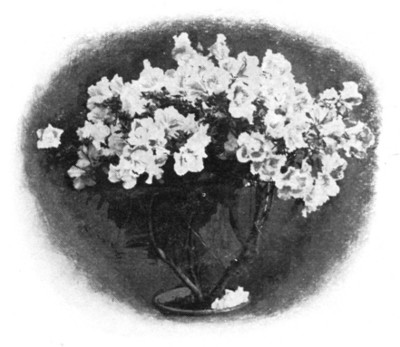
Fig. 230. Bloom of azalea.
This bud is not only ready-formed but is ready-fed. The winter shoots
contain starch. On a cut surface of a dormant twig, apply a drop of
tincture of iodine; note the bluish color, which is indicative of
starch. This starch is insoluble; but with the first awakening of life,
it changes into sugar, which is soluble and is transferred to the
growing part. The burst of spring is made possible by means of this
stored food. Notice the azalea in the florist's window (Fig. 230). The
large flower-buds were formed the year before, and it is a short
operation to "force" them into bloom. The flowers come in advance of the
leaves; therefore these leaves could not have made the food required for
the bloom. The blooming of the apple twig (Fig. 224) in the winter shows
that the food is in the twig and buds. Once I drew a branch of a tree
into a room and fastened it there. It made leaves and began to grow
while the tree to which it was attached was perfectly dormant (Fig.
231).
Not only are the buds ready-formed and ready-fed,
but they are covered. Snugly is the tender, growing
part protected. Pull away the scales of a winter bud
one by one. Observe how closely they are placed.
Often the chinks are filled with a packing of wool, or
are sealed with varnish. Dip the bud in water: then
[332]
see whether the water permeates the covering. The chief value of
the bud covering is not to protect from freezing, as commonly
supposed, but to prevent the soft growing parts from drying out.
The plants are waiting for spring. They are ready.
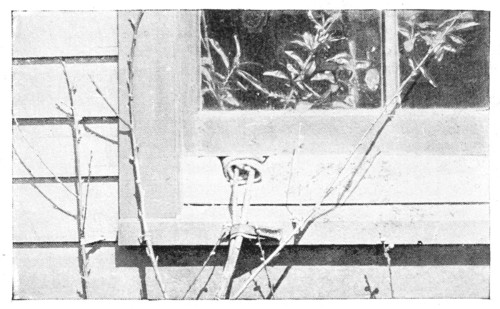
Fig. 231. Branch of a tree bearing leaves inside a window, when the tree itself is dormant.
[333]
LEAFLET XXXIII.
EVERGREENS AND HOW THEY SHED THEIR LEAVES.[45]
By H. P. GOULD.
Note to the teacher.—This leaflet has two particular objects: to teach how
evergreens shed their leaves, and to enable you to distinguish a few of the
evergreens which are most commonly met. These studies (and those suggested
in Leaflet No. XXIX) should be the means of adding much cheer
to the winter. Encourage pupils to make collections of cones, to observe
when they shed their seeds, and how long (how many seasons) they remain
attached to the branch. Remember that mere identification of the kinds
of trees is not the highest type of nature-study.
Cones are good subjects for free-hand drawing. Beginners should draw
them in outline, omitting the shading. Encourage pupils to draw single
leaf-clusters of the different pines, cautioning them to show the right number
of leaves in each case.

Cone-bearing evergreens are familiar to everyone; yet this familiarity
is usually with the trees as entire objects. We do not often stop to
analyze a tree in order to find out what gives it its characteristic
appearance or to see what makes it look as it does.
We shall often find, if we stop to look, that much of the character of a
tree,—that is, its general appearance or the way in which it impresses
us,—is due to the leaves and to their arrangement on the branches. This
is true of many of the evergreen trees.
Why are certain kinds of trees called evergreen in distinction
from those which are said to be deciduous? The reason is obvious.
One kind is always green from the presence of foliage, while
the other sheds all of its leaves every season. The evergreen
trees, like the pines and the spruces and the firs, always appear to be
well covered with foliage; hence it does not often occur to us that
these trees shed their leaves. And yet perhaps we can recall
[334]
happy hours when we used to play beneath some large pine tree
where the ground was carpeted with pine "needles."
The falling of the leaves of the maple trees or the oaks is a
familiar sight, but who has seen the spruce leaves fall, and who
can tell when the pine needles drop?
That the evergreen trees do shed their foliage, as truly as the
maples and the elms do, we will not question, for we can see the
fallen leaves under any tree. Look up into the top of a spruce
or pine. See that the interior is bare of foliage. The leaves are
towards the ends of the branches, where they receive sunlight.
Yet the branches which are now in the interior once bore leaves,
for we can see the leaf-scars.
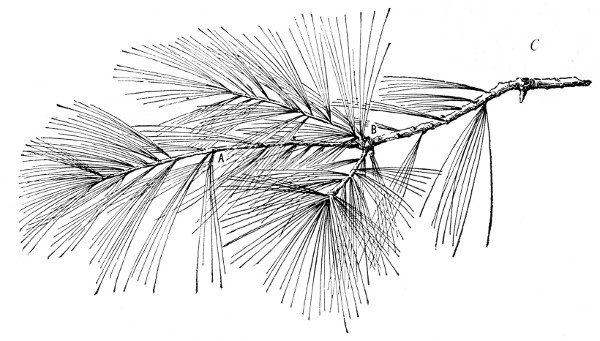
Fig. 232. Shoot of the common white pine, one-third natural size.
It will be interesting to find out something about the leaves of
our common evergreens. Let us look at some of them.
The White Pine.
In Fig. 232 is shown a white pine branch. Notice that the
leaves are borne in bunches or clusters of five. Each bunch of
leaves is produced in the axil (or angle) of a minute scale-like
body, but this scale can best be seen and studied on the very
young growth. It has been worn away or broken from the older
growth by the wind and the rain and the other forces of nature.
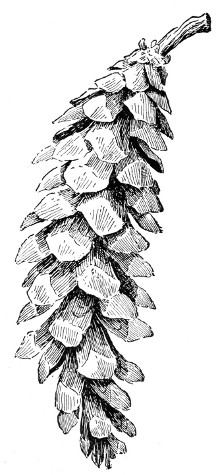
Fig. 233. Cone of white pine. It has shed its seeds. Half natural size.
Another strange fact should be well observed. The leaves
of the maples and other deciduous trees are borne only on the
[335]
present season's growth; but this is not the case in the pines, and
kindred trees. If we trace back the growth of the past two or three
years, we may find that there are as many leaves on the wood that is two
years old as there are on the last season's growth; and in many cases we
can find leaves on the part of the branch that is three years old. This
means that the pine leaves or needles are two and sometimes three years
old when they fall. The Fig. 232 shows the falling of the leaves from
the different years' growth. The part of the branch between the tip and
A is the last season's growth; between A and B it is two years old; the
part between B and C is three years old. The part that grew four seasons
ago—beyond C—has no leaves.
The different seasons' growth is indicated not by distinct "rings" as in
the case of deciduous trees, but by the branching. Each whorl of
branches about a limb represents the end of a season's growth. A young
pine tree, or the younger limbs of an old tree, shows this character
very plainly.
Do the leaves of the pines and of the other evergreen trees fall at the
end of the growing season, as the leaves of most of the deciduous trees
do? Or do they gradually become lifeless and fall at any season, from
the force of the wind and other natural forces? Tie a large sheet of
cloth in the top of some evergreen tree, in such a way as to form a
receptacle to catch the leaves. Do you catch leaves in winter as well as
in summer? Do you find leaves on the snow?
As there are several different kinds of pines, we must picture
carefully in our minds the foliage of the white pine, for it is different
from that of any others. The leaves are soft and very
slender, and from three to four inches long. The base of each
cluster of leaves is at first surrounded by a small sheath. A scar
[336]
is left when the leaves drop and these scars can often be seen on
parts of the branches that are eight or ten years old. Do the
leaves of other kinds of trees make a scar when they fall?
The white pine cones, in which the seeds are borne, are conspicuous
objects. They are five or six inches long and slightly
curved. It will be interesting to find out whether the seeds ripen
the same year in which they are formed. Perhaps a cone still containing
seeds can be secured. Carefully tear it apart and see
where the seeds are attached. Red squirrels sometimes eat the
pine seeds. A white pine cone, which has shed its seeds, is shown
in Fig. 233.
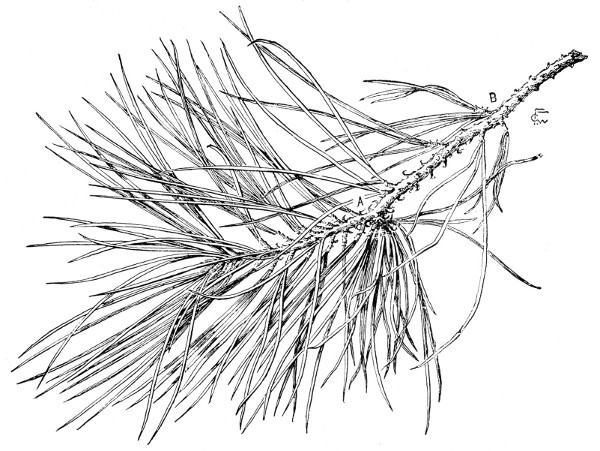
Fig. 234. Shoot of common pitch pine. One-half natural size.
This kind of pine is found widely scattered in New England,
New York, and westward to Minnesota and Iowa and along the
Alleghany Mountains as far south as Georgia; also in some parts
of Canada. It is a valuable lumber tree.
The Pitch Pine.
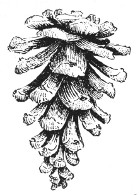
Fig. 235. Cone of pitch pine. One-half natural size.
This kind of pine is very different, in many respects, from the
white pine. Let us find some of the differences. Instead of having
leaves in bunches of five, it has them in clusters of three, and
[337]
the base of each cluster is inclosed by a scaly
sheath which does not fall away as in the case
of the white pine; neither does the little scale-like
body upon the branch, in the axil of which
the leaf-cluster is borne, fall away, but it may
be found just below the leaf, and even on
branches that are several years old. Sometimes
a sheath is found with only two leaves.
We shall want to know, too, how old the leaves
are when they fall. Do they remain on the
tree longer than the white pine leaves do?
Again, instead of being soft and slender as the white pine leaves are,
we shall find that these leaves are rigid and thick in comparison, and
stand out straight from the branches. The shape of the leaves is also
distinct from that of the white pine needles. See whether you can find
any other differences.
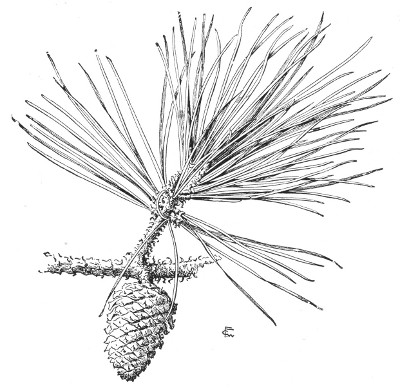
Fig. 236. Pitch pine. One-third natural size.
A pitch pine branch is shown in Fig. 234. The part between the tip and A
is the past season's growth. Observe the foliage on the part that is two
years old. Part of it has fallen. We often find it on growth which is
older than this; but in this specimen there are no leaves on the
three-year wood.
The cone of the pitch pine is
very unlike that of the white pine. Fig. 235 gives a good idea
of one that has shed its seeds. Compare this with Fig. 233; or,
better, examine the two kinds of cones side by side. The pitch
[338]
pine cones are sometimes borne in clusters of two or more and
they persist,—that is, remain on the tree for several years after
the seeds have ripened and scattered.
Notice how the new cones are borne with reference to last season's
growth. Are they attached to the tip of a branchlet? Or
are they closely attached to the side of a branch? Figs. 236 and
237 will help us answer this question. The little cones in Fig. 237
near the tip of the twig, are just beginning to form.
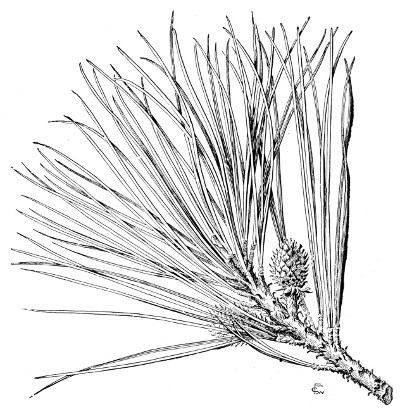
Fig. 237. Pitch pine, showing young cones. Half natural size.
The pitch pine usually grows in sandy or rocky soil and is
found in the United States along the Atlantic coast to Virginia,
along the mountains to Georgia, westward to Western New York,
Eastern Ohio, Kentucky, and Eastern Tennessee. It has little
value as timber, because it does not grow large enough.
Scotch and Austrian Pines.
In the same manner other pines may be studied. Fig. 238
shows a cone and a bit of foliage of the Scotch pine, and Fig. 239
the Austrian pine. These cones grew the past season and are
[339]
not yet mature. After they ripen and shed the seeds which they
contain, they will look somewhat like the cone in Fig 235. The
Scotch pine has short and blue-green needles. The Austrian
pine is coarser, and has long dark-green needles.
There are but two leaves in a cluster on these kinds of pines
and we shall find that the sheath which incloses the base of the
leaf-cluster is more conspicuous than in either the white or the pitch
pine. Do the leaves persist in the Scotch and Austrian pines
longer than they do in the others we have examined? Study the
cones of these and other pines.
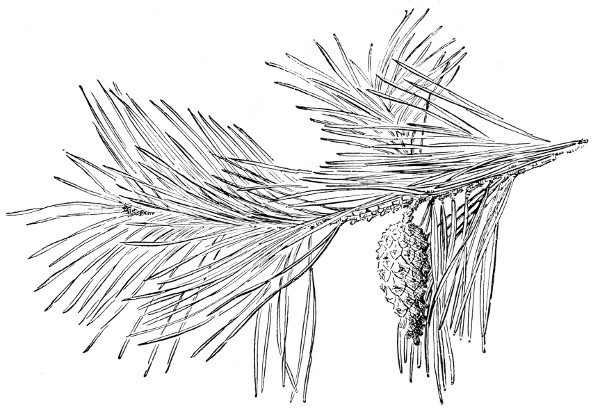
Fig. 238. Scotch pine. Half natural size.
The Scotch and Austrian pines are not native to this country,
but are much grown for ornament. They can be found in almost
any park and in many other places where ornamental trees are
grown.
The Norway Spruce.
The leaves of spruce trees are borne very differently from
those of the pines. Instead of being in clusters of two or more,
they are single and without a sheath at the base; neither are
there scale-like bodies on the branches where the leaves are
borne. Notice, too, that the leaves have a very short stem or
petiole.
[340]
The leaves of the Norway spruce are about one inch long, although the
length varies more or less in different parts of the tree and in
different trees. They are rather stiff and rigid and sharp-pointed. In a
general way, the leaves are four-sided, though indistinctly so.
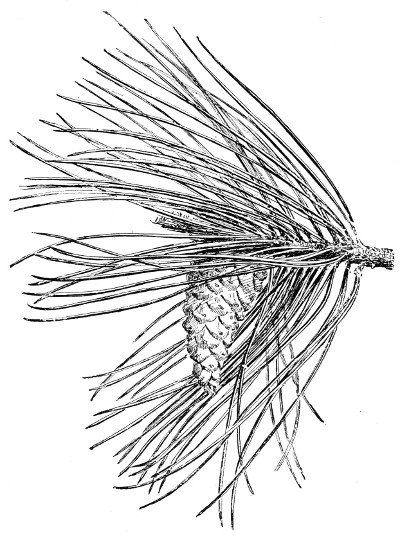
Fig. 239. Austrian pine. One-third natural size.
It will be interesting to study the position which the leaves take on
the branches. A hasty glance might give us the impression that the
leaves are not produced on the under side of the branches; but a more
careful examination will convince us that there are nearly as many on
the under side as on the upper. The leaves are all pointing outward from
the branch and as nearly upward as is possible. In other words, the
leaves grow toward the light.
We must not forget to see how long the leaves of the Norway
spruce persist and to find out when the leaf-scars disappear. We
can find leaves that must surely be six or seven years old and
sometimes we can find them even older than this. The leaf scars,
too, remain a long time. The falling of the leaves is illustrated
in Fig. 240. It shows the extremities of a limb which is eight
years old. The part between the tip and A is last season's growth;
between A and B it is two years old; and beyond B is a part that
[341]
grew three seasons ago. The section beyond C is six years old;
from C to D is seven years of age. The four years' growth of
this limb not shown in the drawing was as densely covered with
foliage as is the part shown in the upper figure; but there are not
many leaves between C and D (seven years old) and none on the
eight-year-old wood (except those on the branchlets, and these
are younger).
The cone of the Norway spruce is nearly as long as that of the white
pine, but it is not so rough and coarse as the white pine cone is. The
cones are usually borne on the tips of small branchlets, although
occasionally one is borne in the manner shown in Fig. 241. The cones
usually fall the first winter.
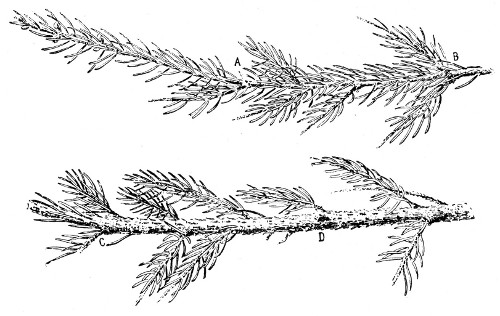
Fig. 240. Twig of the common Norway spruce. Half natural size.
The Norway spruce is not a native of this country, but like the Scotch
and Austrian pines, it was introduced from Europe and is grown very
widely as an ornamental tree. It is the commonest evergreen in yards and
parks.
The Black Spruce and Its Kin.
There are several different kinds of spruces which we find
growing in our forests and swamps, and sometimes these are
planted for ornament. A sprig of foliage and a cone of one of
these,—the black spruce,—is shown in Fig. 242. The foliage is
not very unlike that of the Norway spruce, but the cones are very
[342]
small in comparison. They are about one inch long, though they
vary considerably in size. Before they open they are oval or
plum-shaped; but when mature and the scales of the cone have
expanded, they are nearly globular. They are often borne in
clusters, as well as singly, and persist for many years after the
seeds have fallen. The position of
the cones will depend upon their
age. When young they point
upward, but they gradually turn
downward.
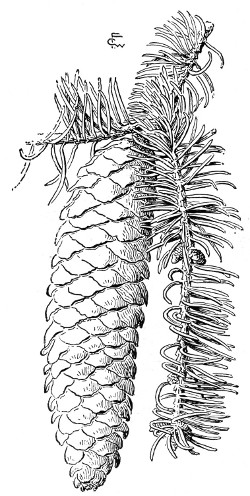
Fig. 241. Cone of Norway spruce. Half size.
In general appearance the white spruce resembles the black very closely.
The leaves of the white spruce have a whitish or dusty looking tinge of
color and when crushed or bruised give forth a peculiar, disagreeable
odor. The cones vary in length from an inch to two inches, and in shape
are more cylindrical or finger-shaped than the cone of the black spruce.
The foliage of the red spruce lacks the whitish tinge of color of the
white spruce and the cones, which are from one inch to two inches in
length, are obovate in shape—that is, the widest place is through the
upper part of the cone, and from this point it gradually tapers to the
tip. They seldom persist longer than the second summer.
The leaves of all these different kinds of spruces vary greatly in
length, thickness, and sharpness of point, according to the part of the
tree on which they grow, and their surroundings. The shedding of the
leaves on these or other spruces can be determined as easily as in the
Norway spruce.
These three spruces like a cold climate and grow in many sections
of the northern United States and Canada and farther south
in the mountains. They are sometimes all found growing
together, but the black spruce likes best the damp, cold swamps,
while the others grow best on the drier and better drained
[343]
lands. The black spruce is commonest. The red spruce is least
known.
The Balsam Fir.
This is another evergreen tree which grows naturally in the
cold, damp grounds of the northern United States and Canada,
and to some extent in the eastern states as far south as West
Virginia.
The foliage is borne in much the same manner as that of the
spruces; yet there are interesting differences in the characters of
these two kinds of leaves. Perhaps the most noticeable difference
is in the shape; and the color of the fir leaves will attract
our attention because the under side is a silvery color, while the
upper side is green. What is the nature of the tip of the leaf and
how does it compare with the pines and spruces in this respect?
Does the leaf have a stem or petiole or is it attached directly to
the branch without any stem? How are the leaves shed?

Fig. 242.—Black spruce. Half natural size.
The cones are about three inches long and present a rather
delicate appearance. It will be interesting to determine the position
of the cones, that is, the direction in which they point, and
to learn whether it is the same when they are young as it is after
they have matured.
The grayish colored bark of the trunk and limbs bears many
"blisters" from which Canada balsam is obtained.
The Hemlock.
A hemlock twig is an interesting object. It may have many
characters in common with the spruce and fir; yet the impression
which we get from it, or from a large hemlock tree, is entirely
distinct. The arrangement of the leaves and the gracefulness of
the drooping branchlets are most pleasing. We are led to
examine it more closely. We notice that the leaves appear to be
[344]
borne in two more or less regular rows,—one on each side of the
branch or twig; but in reality they come from all sides of the
branch, and it is the position which the leaves assume that gives
this two-rowed appearance.
The leaves have a short stalk or petiole, and this stalk rests
along the side of the branchlet in such a direction that the leaves
are placed in single rows on either side of the branch. The
petioles of the leaves are nearly parallel with the branch while
the leaves often make a decided angle with the petiole. This
fact can best be brought out by carefully examining a small twig.
While we are noting the arrangement of the leaves on the
branchlets, we should also notice the points of similarity and
difference between these leaves and those of the spruces and firs.
We shall find that there is more in common, at least so far as
shape and color are concerned, between the hemlock and the
fir than between the hemlock and the spruce.
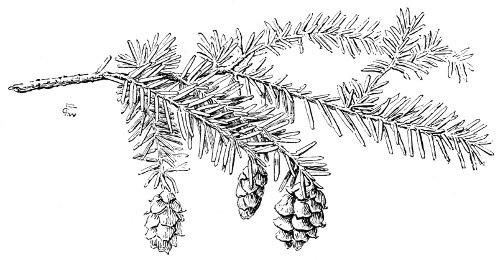
Fig. 243. Spray of the hemlock. Two-thirds natural size.
The small, delicate cones, borne on the tips of the branchlets,
will also attract our attention (Fig. 243.) We may wonder at their
small size, for they are only about three-quarters of an inch long,
and very delicate; yet a second glance at the tree will impress us
with the number of cones which the tree bears, and we conclude
that, although the cones may be small, yet there are so many of
them that there will be no lack of seeds.
It is more difficult to trace the age of a hemlock limb than of
many other kinds of trees, yet we can easily determine that many
of the leaves are several years old when they fall.
[345]
The bark of the hemlock is used in tanning hides for leather.
The tree is much used for lumber. Where does it grow?
The Arbor-vitæ.
One might almost wonder, at first sight, if the arbor-vitæ (often,
but wrongly, called the white cedar) has any leaves at all. It
does possess them, however, but they are very different in size and
shape from any of the others that we have examined. They are
small scale-like bodies, closely pressed together along the sides of
the branchlets, in four rows. Leaves pressed to the branches in
this manner are said to be "appressed." The leaves of the
arbor-vitæ are so close together that they overlap one another.
The leaves are of two distinct shapes, sometimes known as the
surface leaves and the flank leaves. The former are located on
what appears to be the flattened surface of the branchlets, while
the latter are on the sides or edges. See Fig. 244.
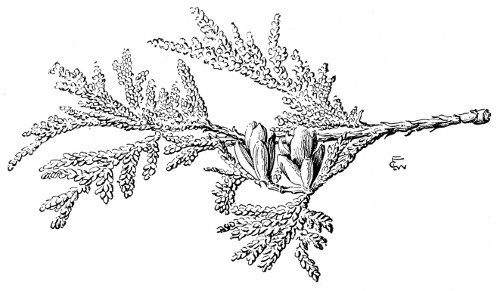
Fig. 244. The Arbor-vitæ. Nearly full size.
If we carefully look at the leaves, we shall notice a raised spot
near the point or tip. This is said to be a resin gland. This
gland can be seen more plainly on the surface leaves that are two
years old.
Most of the leaves persist for at least two and sometimes three
years; but even older ones can be found. These older leaves,
however, exist not as green, active leaves, but merely as dried
and lifeless scales. These lifeless leaves are probably detached
from the branches by the forces of nature.
The cones are even smaller than the hemlock cones. They are
borne in the axils of the leaves in the same manner as the branchlets
and are not conspicuous unless one is close to the tree.
[346]
The arbor-vitæ is much planted for hedges and screens, as well
as for other ornamental purposes. There are many horticultural
varieties. The tree is abundant in a wild state in New York.
Summary of the Kinds of Common Evergreens.
The white pine (Pinus Strobus).—Leaves in clusters of five, soft
and slender; cones five or six inches long, slightly curved;
bark smooth except on the trunks and larger limbs of old
trees, where it is fissured.
The pitch pine (Pinus rigida).—Leaves in clusters of three, from
three to four inches long, rather rigid; cones two to three
inches long, often in clusters of two or more but frequently
borne singly, persisting long after the seeds have been shed;
bark more or less rough on the young growth and deeply
fissured on the trunks of old trees.
The Scotch pine (Pinus sylvestris).—Leaves usually in clusters of
two, from two to four inches long, rigid, of a bluish-green
hue when seen in a large mass on the tree; cones two to three
inches long and the scales tipped with a beak or prickle.
The Austrian pine (Pinus Austriaca).—Leaves in clusters of two,
five or six inches long and somewhat rigid, dark green in
color, and persisting for four or five years; cones about three
inches long, conical in shape; and scales not beaked or
pointed as in the Scotch pine.
The Norway spruce (Picea excelsa).—Leaves borne singly, about
one inch long, dark green, four-sided; cones about six inches
long, and composed of thin scales, and usually borne on the
tips of branchlets. The small branches mostly drooping.
The black spruce (Picea nigra).—In general appearance, this is not
very unlike the Norway spruce, but the small branches stand
out more horizontally and the cones are only one or one and
one-half inches long, recurving on short branches. The cones
persist for several years after shedding the seed.
The white spruce (Picea alba).—Leaves about one inch long, having
a glaucous or whitish tinge; twigs stout and rigid, of a
pale greenish-white color; cones from one to two and one-half
inches long, more or less cylindrical or "finger-shaped," and
easily crushed when dry.
[347]
The red spruce (Picea rubra).—The foliage lacks the whitish tinge
of the white spruce and is of a dark or dark yellowish color;
twigs stouter than those of the black spruce and not so much
inclined to droop; cones about one inch long, obovate, and
usually falling by the second summer.
The hemlock (Tsuga Canadensis).—Leaves about one-half inch
long, flat with rounded point, green on the upper side, whitish
beneath, and borne on short appressed petioles; cones about
three-quarters of an inch long, oval or egg-shaped, and borne
on the ends of small branchlets and often persisting for some
time.
The balsam fir (Abies balsamea).—Leaves narrow, less than one
inch long, borne singly, very numerous and standing out from
the branchlets in much the way of the spruce; cones about
three inches long, cylindrical, composed of thin scales, and
standing upright on the branches, or recurved; bark smooth,
light green with whitish tinge.
The arbor-vitæ (Thuya occidentalis).—Leaves very small, scale-like,
and over-lapping one another in four rows, adhering
closely to the branchlets; the cones oblong and small,—a
half-inch or less in length,—and composed of but few scales.
[348]
[349]
LEAFLET XXXIV.
THE CLOVERS AND THEIR KIN.[46]
By ANNA BOTSFORD COMSTOCK.
The pedigree of honey does not concern the bee,
A clover any time to him is aristocracy.
—Emily Dickinson.

There is a deep-seated prejudice that usefulness and beauty do not
belong together;—a prejudice based obviously on human selfishness, for
if a thing is useful to us we emphasize that quality so much that we
forget to look for its beauty. Thus it is that the clover suffers great
injustice; it has for centuries been a most valuable forage crop, and,
therefore, we forget to note its beauty, or to regard it as an object
worthy of æsthetic attention. This is a pitiful fact; but it cheats us
more than it does the clover, for the clover blossoms not for us, but
for the bees and butterflies as well as for itself. As I remember the
scenes which have impressed me most, I find among them three in which
clover was the special attraction. One was a well-cultivated thrifty
orchard carpeted with the brilliant red of the crimson clover in bloom.
One was a great field of alfalfa spread near the shore of the Great Salt
Lake, which met our eyes as we came through the pass in the Wasatch
Mountains after days of travel in dust-colored lands; the brilliant
green of that alfalfa field in the evening sunlight refreshed our eyes
as the draught of cold water refreshes the parched throat of the
traveller in a desert. And another was a gently undulating field in our
own State stretching away like a sea to the west, covered with the
purple foam of the red clover in blossom; and the fragrance of that
field settled like a benediction over the acres that margined it. But we
do not need landscapes to teach us the beauty of clover. Just one clover
blossom studied carefully and looked at with clear-seeing eyes, reveals
each floweret beautiful in
[350]
color, interesting in form, and perfect in its mechanism for securing
pollination.
The clover is especially renowned for its partnerships with members
of the animal kingdom. It readily forms a partnership with
man, thriftily growing in his pastures and meadows, while he distributes
its seed. For ages it has been a special partner of the
bees, giving them honey for carrying its pollen. Below the ground
it has formed a mysterious partnership with microbes, and the
clover seems to be getting the best of the bargain.
For many years clover was regarded as a crop helpful to the soil, and
one reason given was the great length of the roots. Thus the roots of
red clover often reach the depth of several feet, even in heavy soil,
which they thus aerate and drain, especially when they decay and leave
channels. But this is only half the story; for a long time people had
noted that on clover roots were little swollen places or nodules, which
were supposed to have come from some disease or insect injury. The
scientists became interested in the supposed disease, and they finally
ascertained that these nodules are filled with bacteria, which are the
underground partners of the clovers and other legumes. These bacteria
are able to fix the free nitrogen of the air, and make it available for
plant-food. As nitrogen is the most expensive of the fertilizers, any
agency which can extract it from the free air for the use of plants is
indeed a valuable aid to the farmer. Thus it is that in the modern
agriculture, clover or some other legume is put on the land once in
three or four years in the regular rotation of crops, and it brings back
to the soil the nitrogen which other crops have exhausted. An
interesting fact about the partnership between the root bacteria and the
clover-like plants is that the plants do not flourish without this
partnership, and investigators have devised a method by which these
bacteria may be scattered in the soil on which some kinds of clover are
to be planted, and thus aid in growing a crop. This method is to-day
being used for the introduction of alfalfa here in New York State. But
the use of clover as a fertilizer is not limited to its root factory for
capturing nitrogen; its leaves break down quickly and readily yield the
rich food material of which they are composed, so that the farmer who
plows under his second-crop clover instead of harvesting it, adds
greatly to the fertility of his farm.
The members of three distinct genera are popularly called
clovers: The True Clovers (Trifolium), of which six or seven
[351]
species are found in New York State, and more than sixty species
are found in the United States. The Medics (Medicago), of which
four species are found here. The Melilots (Melilotus), or sweet
clovers, of which we have two species.
The True Clovers. (Trifolium.)
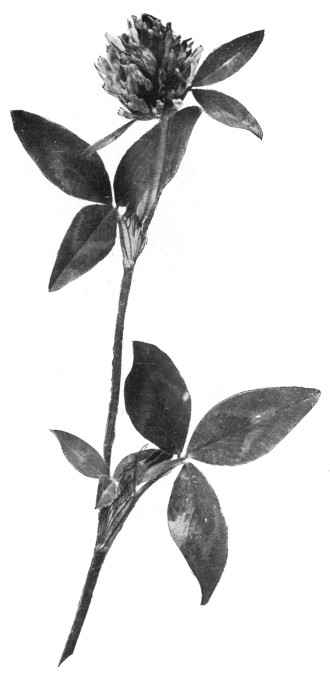
Fig. 245. The common red clover.
The Red Clover (Fig. 245). (Trifolium pratense.[47])—This beautiful
dweller in our fields came to us from Europe, and it is also a native of
Asia. It is the clover most widely cultivated in New York State for
fodder, and is one of our most important crops. Clover hay often being a
standard of excellence by which other hay is measured. The export of
clover seed from the United States has sometimes reached the worth of
two million dollars per year, and this great industry is supposed to be
carried on with the aid of that other partner of the red clover, the
bumblebee. Bumblebees had to be imported into Australia before clover
seed could be produced there. The whole question of the relation of the
bumblebee to the pollination of clover no doubt needs to be re-studied,
for recent observations have led to the contesting of prevailing
opinions. It has been supposed that the failure of the clover seed crop
in some places[352]
is due to the destruction of bumblebees; whether this is true or not, we
are certain that bumblebees visit clover blooms, and the teacher can
observe for himself.
There is a more perennial form of red clover, known as variety
perenne. It is distinguished from the common form of red clover by its
taller growth and mostly less hairy herbage, and by the fact that the
flower-head is usually somewhat stalked. Some persons regard it as a
hybrid of red and zig-zag clover.
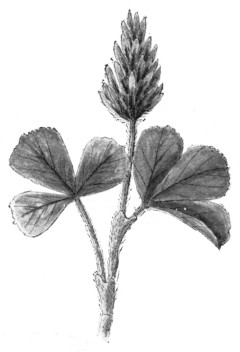
Fig. 246. Crimson clover.
Zig-Zag Clover. (T. medium.)—This is another species of red clover,
resembling the one just discussed, except that its flower-head rises on
a long stalk above the upper leaves, while the red clover has the
flower-head set close to these leaves. The color of the blossom is
darker than in red clover, and the flower-head is looser. The stems of
the zig-zag clover are likely to be bent at angles and thus it gets its
name. It is a question whether this species is really grown on farms. It
is probable that some or all of the clover that passes under this name
is Trifolium pratense var. perenne. At all events, the zig-zag
clover seems to be imperfectly understood by botanists and others.
Crimson Clover—Scarlet Clover (Fig. 246). (T. incarnatum.)—While
this beautiful clover grows as a weed in the southern parts of our
State, it has only recently begun to play an important part in our
horticulture. It is an annual, and its home is the Mediterranean region
of Europe. It thrives best in loose, sandy soils, and in our State is
chiefly used as a cover-crop for orchards, and to plow under as a
fertilizer. It usually has bright, crimson flowers, arranged in a long,
pointed head, and its brilliant green fan-shaped leaves make it the most
artistically decorative of all our clovers.
Buffalo Clover (Fig. 247). (T. reflexum.)—This is sometimes
taken for a variety of the red clover, but only a glance is needed
to distinguish it. While the head is perhaps an inch in diameter
the flowerets are not directed upward and set close as in the red
clover, but each floweret is on a little stalk, and is bent abruptly
backward. The flowers are not pink. The standard is red, while
[353]
the wings and keel are nearly white. The leaves are blunt at the
tip. It grows in meadows in western New York and westward.
This species is native to this country.
Alsike Clover. (T. hybridum.)—This is a perennial and grows in
low meadows and waste places from Nova Scotia to Idaho. It
was introduced from Europe. It is especially valuable in wet
meadows, where the red clover would be drowned. The blossoms
of the alsike look like those of the white clover except that they
are a little larger and are pink; but the long branching mostly
upright stems are very different in habit from the creeping stems
of the white clover; the blossoms are very fragrant.
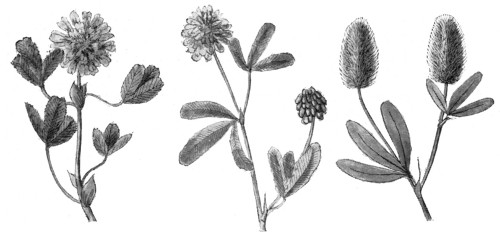
Fig. 247. Three clovers, respectively, Buffalo, Yellow, and Rabbit-foot clover.
The White Clover. (T. repens.)—This beautiful little clover,
whose leaves make a rug for our feet in every possible place, is
well known to us all. It is the clover best beloved by honey-bees,
and the person who does not know the distinct flavor of white
clover honey has lost something out of life. While in hard soil
the white clover lasts only two or three years, on rich, moist lands
it is a true perennial. While it was probably a native in the northern
part of America, yet it is truly cosmopolitan and may be found
in almost all regions of the temperate zones. Very likely the common
stock of it is an introduction from Europe. By many this is
considered to be the original shamrock.
The Yellow, or Hop Clover (Fig. 247). (T. agrarium.)—This
friendly little plant, filling waste places with brilliant green leaves
and small yellow flower-heads, is not considered a clover by those
[354]
who are not observant. But if the flowerets in the small, dense
heads are examined, they will be seen to resemble very closely
those of the other clovers. The stems are many-branched and
often grow a foot or more in height. The flowers are numerous,
and on fading turn brown, and resemble the fruit of a pigmy hop
vine, whence the name. Its leaves are much more pointed than
those of the medics, with which it might be confused because of
its yellow flowers.
Low Hop Clover, or Hop Trefoil. (T. procumbens.)—This resembles
the above species, except that it is smaller and also more
spreading, and the stems and leaves are more downy.
The Least Hop Clover. (T. dubium.)—This may be readily
distinguished from the above species by the fact that its yellow
flowerets occur from three to ten in a head. This is said by
some to be the true shamrock, although the white clover is also
called the shamrock.
The Rabbit-Foot, or Stone Clover (Fig. 247). (T. arvense.)—This
is another clover not easily recognized as such. It grows a foot
or more in height and has erect branches. The leaflets are narrow
and all arise from the same point. The flowerets occur in
long, dense heads. The calyx is very silky, and the lobes are
longer than the white corollas, thus giving the flower-head a soft,
hairy look, something like the early stages of the blossom of the
pussy willow. Because of its appearance it is often called "pussy
clover."
The Medics. (Medicago.)
Alfalfa (Fig. 248). (Medicago sativa.)—This is the veteran of
all the clovers, for it has been under cultivation for twenty centuries.
It is a native of the valleys of western Asia. In America it
was first introduced into Mexico with the Spanish invasion. It was
brought from Chile to California in 1854, where it has since been
the most important hay crop. In fact, there is no better hay than
that made from alfalfa. It was probably introduced into the
Atlantic States from southern Europe, and has grown as a weed
for many years in certain localities in New England and the Middle
States; only recently has it been considered a practicable
crop for this climate, although it was grown in Jefferson Co.,
N. Y., in 1791. Its special value is that it is a true perennial, and
may be cut three times or more during a season, and when once
established it withstands hot, dry weather. It is of marvelous
[355]
value to the semi-arid regions. The alfalfa flower is blue or
violet, and grows in a loose raceme. The plant grows tall and
its stems are many branched. This and all these medics are
introduced from Europe.
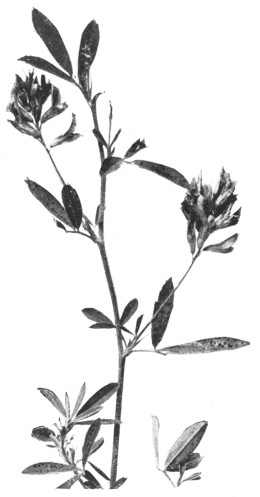
Fig. 248. Alfalfa, foliage and flowers.
Black or Hop Medic. (M. lupulina.)—This would hardly be called a
clover by the novice. The long stems lie along the ground, and the tiny
yellow flower-heads do not much resemble the clover blossom. It is a
common weed in waste places in our State. It is perennial.
The Toothed Medic. (M. denticulata.)—Instead of having the yellow
flowerets in a dense head, this species has them in pairs or perhaps
fours, or sometimes more. It is widely distributed as a weed, and is
also introduced as a pasture plant for early grazing. It is of little
value as hay.
The Spotted Medic. (M. Arabica.)—This very much resembles the
preceding species except that the leaves are likely to have on them
conspicuous dark spots near the center. Like the preceding species it is
an annual and a weed, and has also been introduced as a plant for early
grazing. This and the toothed medic are known to farmers under the name
of bur-clover. The reason for this name is found in the seed-pod, which
is twisted in a spiral and has an outer margin of curved prickles.
The Melilots, Or Sweet Clovers. (Melilotus.)
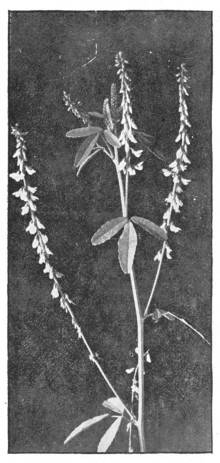
Fig. 249. White sweet clover.
In driving or walking along the country roads, we may find ourselves
suddenly immersed in a wave of delightful fragrance, and
if we look for the source we may find this friendly plant flourishing
in the most forbidding of soils. Growing as a weed, it brings
sweet perfume to us, and at the same time nitrogen, aeration and
[356]
drainage to the hopeless soil, making rich those places where
other weeds have not the temerity to attempt to grow. When the
soil is generous, the sweet clover often grows very tall, sometimes
as high as ten feet. It is a cheerful, adaptable and beneficial
plant, and I never see it without giving it a welcome, which, I am
sorry to say, I cannot always grant to other roadside wayfarers.
The sweet clovers are European.
The White Sweet Clover (M. alba) is sometimes called Bokhara clover
and has white flowers (Fig. 249).
The Yellow Sweet Clover (M. officinalis) has yellow blossoms. It has
interesting old English names, such as Balsam Flowers, King's Clover and
Heartwort.
Questions on the Clovers.
Two general kinds of types of studies are to be made of the clovers:
identification studies, whereby you will come to know the kinds of
clover; life history studies, whereby you will come to know under what
conditions the plants live and thrive. The latter is the more important,
but the former usually precedes it, for one is better able to discover
and discuss the biological questions when he is acquainted with the
species. The following questions will bring out some of the important
biological aspects:
1. How many of the true clovers, the medics, and the sweet clovers do
you know?
2. Send me properly labelled pressed specimens of the leaves and
blossoms of the clovers that you have been able to find.
3. Dig a root of red clover and find the nodules on it. Please
describe them.
4. What methods does the U. S. Department of Agriculture
employ to inoculate the soil with bacteria so that alfalfa may grow?
5. How do clover roots protect the land from the effects of
heavy rains?
6. How do the clover plants conserve the moisture in the soil?
[357]
7. How does this conservation of moisture aid the farmer and
orchardist?
8. What is a cover-crop, and what are its uses?
9. Why do farmers sow red clover with grass seed?
10. How do the habits of the stems of white clover differ from
those of other clovers?
11. Why is white clover so desirable for lawns?
12. Compare the floweret of the red clover with the sweet pea
blossom and describe the resemblance.
13. Study a head of white clover from the time it opens until
it is brown, and tell what changes take place in it day by day.
14. What has happened to the flowerets that are bent downward
around the stalk?
15. Watch one of these flowerets deflect, and describe the
process.
16. How many flowerets do you find in a head of red clover?
Of white clover? Of alsike?
17. Which flowerets open first in a head of red clover?
18. Describe a clover seed. Describe a seed of alfalfa.
19. What insects do you find visiting the red clover blossoms?
The white clover blossoms?
Alfalfa, or Lucerne.[48]
The alfalfa plant is just now coming into great prominence in
New York State. Every teacher, particularly in the rural schools,
will need to know the plant and to have some information about it.
What alfalfa is.—It is a clover-like plant. It is perennial. It
has violet-purple flowers. The leaves have three narrow leaflets.
It sends up many stiff stems, 2 to 3 feet high. The roots go
straight down to great depths.
Why it is important.—It is an excellent cattle food, and cattle-raising
for dairy purposes is the leading special agricultural
industry in New York State. In fact, New York leads all the
States in the value of its dairy products. Any plant that is more
nutritious and more productive of pasture and hay than the
familiar clovers and grasses will add immensely to the dairy
industry, and therefore to the wealth of the State. Alfalfa is such
a plant. It gives three cuttings of hay year after year in New
York State, thereby yielding twice as much as clover does. In
[358]
the production of digestible nutrients per acre ranks above clover
as 24 ranks above 10. When once established it withstands
droughts, for the roots grow deep.
Alfalfa is South European. It was early introduced into North America.
It first came into prominence in the semi-arid West because of its
drought-resisting qualities, and now it has added millions of dollars to
the wealth of the nation. Gradually it is working its way into the East.
It is discussed in the agricultural press and before farmers'
institutes. Last year the College of Agriculture offered to send a small
packet of seeds to such school children in New York State as wanted to
grow a little garden plat of it. About 5,000 children were supplied. The
teacher must now learn what alfalfa is.
In nearly every rural community, sufficient alfalfa can be found for
school purposes. In many places it has run wild along roadsides.
On these plants make the following observations:
1. Under what conditions have you found alfalfa growing? How did the
plant come to grow there,—sown, or run wild?
2. Describe the form of the root. How does the root branch?
3. Do you find the little tubercles or nodules on the roots? On what
part of the roots? How large? How numerous?
4. The crown of the plant (at the surface of the ground),—describe it,
and how the tops and the roots start from it.
5. The stems,—how many from each crown, whether erect or prostrate, how
they branch.
6. The leaves,—simple or compound? Form? Edges entire or fine toothed?
Do the leaves "sleep" at night, as those of clover do?
7. Do you find any distinct spots on the leaves? What do you think is
the cause of them?
8. Flowers,—how borne (whether singly or in clusters), color, form,
resemblance to any other flowers you may know. Do they vary in color?
9. If possible, find the seed-pods and seeds, and describe.
10. Make inquiries as to whether alfalfa is becoming well known in your
vicinity.
Agricultural Account of Alfalfa.
You may be asked some practical questions about alfalfa;
therefore we give you a brief agricultural account of it. If you
[359]
desire further information, write to the College of Agriculture,
Ithaca, N. Y., for Bulletin 221, "Alfalfa in New York."
Alfalfa is grown mostly for hay. It is not adapted to pasture,
because the new growth springs from the crown at the surface of
the ground, and if this is destroyed the growth will not be
renewed vigorously. New York is a hay-producing State. Grain
feeds can be grown more cheaply in the West. It is of great
importance to the State, therefore, if a better hay-producing
plant can be found. We have seen that New York leads the
States in dairy cattle. Other livestock also is abundant. Last
year more than half a million horses and mules were fed in the
State.
Success has not attended efforts to grow alfalfa in all parts of
New York. This is due to two principal reasons: (1) farmers
have not known the plant and its habits well enough to give it the
care and treatment it demands; (2) the soils of many localities,
because of their physical condition or composition, are not suitable
for the plant.
The alfalfa seedling is not a strong plant. It cannot compete
with weeds nor overcome adverse conditions of moisture; it cannot
adapt itself to conditions resulting from poor preparation of
land, and it is not vigorous in its ability to get food from any
source. Care must be given to the preparation of the land in
order that sufficient moisture may be supplied during the early
stages of growth and that there may be an abundance of quickly
available plant-food. After growth has started, alfalfa has the
power to get some of its nitrogen from the air through the nodules
which grow upon its roots; yet during the early stages of growth
it is essential that the soil be supplied with all elements of plant-food
in available form.
While alfalfa requires an abundance of moisture for its best
growth and development, yet it will not grow in soils that hold
water for any considerable length of time. Such soils are usually
those with an impervious subsoil or hard-pan, or those of clay or
silt structure which retain free water to the exclusion of air. Therefore,
it is important that alfalfa soils be well and uniformly drained,
either by natural conditions or by underground drains. One
other essential of prime importance is that the soil be neutral or
alkaline in its reaction; in other words, that it contain no free
acid. Limestone or blue-grass soils are ideal in this regard for
alfalfa. If acid is present, the difficulty may be corrected either
[360]
wholly or in part by the application of 500 to 2,000 pounds of
lime per acre.
As in most other legumes (members of the family Leguminosæ,
including peas, beans, clovers), there is a peculiar relationship
existing between the plant and excrescences or nodules upon its
roots. These nodules are essential to the normal growth and
development of the plant. They contain bacteria, and these bacteria
have the power of "fixing" or appropriating the free atmospheric
nitrogen in the soil. Legumes are "nitrogen-gatherers,"
whereas most other plants secure their nitrogen only from decomposing
organic matter. Failure to have the soil inoculated with
the proper bacteria for alfalfa is the cause for many failures with
the crop. In most instances when the plants do not make satisfactory
growth, or have a yellow, dwarfed appearance, the trouble
can be traced to the absence of these bacteria from the soil,
and hence to a lack of nodules on the roots. The relationship
existing between the plant and the organism is one of mutual
benefit. Each kind of leguminous plant seems to have its characteristic
bacterium, which grows on no other plant, although this
question is not thoroughly settled.
Farmers are becoming aware of this requisite in alfalfa culture
and usually supply it in two different ways. The older method is
to take the surface soil from an old alfalfa field, where the plants
have grown well and where nodules are to be found on the roots,
and to sow it on the land to be seeded at the rate of one hundred
or more pounds per acre. In this way the soil becomes inoculated
with the bacteria, and as the young plants spring into growth
the bacteria develop on the roots. Another method is to inoculate
the seed before sowing with artificial cultures of the bacteria.
Both of these methods are usually successful, and if soil conditions
are right the chances for failure are few.
Alfalfa should be cut when it opens into flower. At this time
the stems and leaves contain their highest percentage of nutrients,
the leaves do not so easily fall off in curing, and the stems are not
so woody. Besides these reasons, if cutting be delayed until after
flowering, the plant may not spring quickly into subsequent
growth.
Disease does not spare the alfalfa plant. Both leaves and roots
are attacked, the leaf spot being serious. The parasitic dodder
is a serious enemy in some parts of New York State.
[361]
LEAFLET XXXV
HOW PLANTS LIVE TOGETHER.[49]
By L. H. BAILEY.
To the general observer, plants seem to be distributed in a promiscuous
and haphazard way, without law or order. This is because he does not see
and consider.
The world is now full of plants. Every plant puts forth its supreme
effort to multiply its kind. The result is an intense struggle for an
opportunity to live.
Seeds are scattered in profusion, but only the few can grow. The many do
not find the proper conditions. They fall on stony ground. In Fig. 250
this loss is shown. The trunk of an elm tree stands in the background.
The covering of the ground, except about the very base of the tree, is a
mat of elm seedlings. There are thousands of them in the space shown in
the picture, so many that they make a sod-like covering which shows
little detail in the photograph. Not one of these thousands will ever
make a tree.
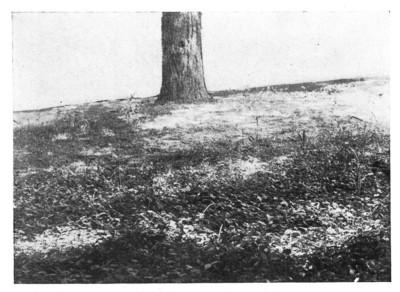
Fig. 250. A carpet of young elms, all of which must perish.
[362]
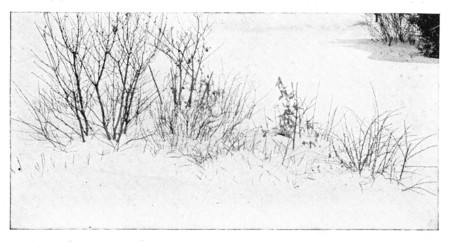
Fig. 251. A plant society waiting for the spring.
Since there is intense competition for every foot of the earth's
surface that is capable of raising plants, it follows that every spot
will probably have many kinds of plant inhabitants. Plants must
live together. They associate; they become adapted or accustomed
to each other. Some can live in shade; they thrive in the
forest, where sun-loving plants perish. Others prefer the sun, and
thereby live together. There are plant societies.
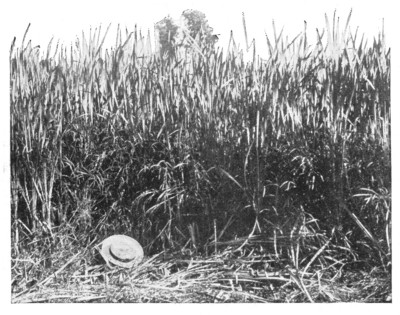
Fig. 252. Weak, narrow-leaved grasses grow in the cat-tail forest.
Every distinct or separate area has its own plant society. There is one
association for the hard-tramped dooryard,—knot-weed and broad-leaved
plantain with interspersed grass and dandelions; one for the
fence-row,—briars and choke-cherries and hiding weeds; one for the dry
open field,—wire-grass and mullein and scattered docks; one for the
slattern roadside,—sweet clover, ragweed, burdock; one for the meadow
swale,—smartweed and pitchforks; one for the barnyard,—rank pigweeds
and sprawling barn-grass; one for
[363]
the dripping rock-cliff,—delicate bluebells and hanging ferns and
grasses. Indefinitely might these categories be extended. We
all know the plant societies, but we have not considered them.
In every plant society there is one dominant note. It is the
individuality of one kind of plant which grows most abundantly
or overtops the others. Certain plant-forms come to mind when
one thinks of willows, others when he thinks of an apple
orchard, still others when he thinks of a beech forest. The
farmer may associate "pussly" with cabbages and beets, but
not with wheat and oats. He associates cockle with wheat, but
not with oats or corn. We all associate dandelions with grassy
areas, but not with burdock or forests.
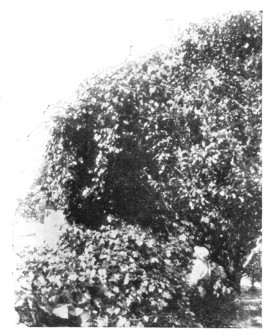
Fig. 253. The wild grape covers the treetop, and the children play in the bower. The grape is searching for light.
It is impossible to open one's eyes out-of-doors, outside the paved
streets of cities, without seeing a plant society. A lawn is a plant
society. It may contain only grass, or it may contain weeds hidden away
in the sward. What weeds remain in the lawn? Only those which can
withstand the mowing. What are they? Let a bit of lawn grow as it will
for a month, and see what there is in it. A swale, a dry hillside, a
forest of beech, a forest of oak, a forest of hemlock or pine, a weedy
yard, a tangled fence-row, a brook-side, a deep quiet swamp, a lake
shore, a railroad, a river bank, a meadow, a pasture, a dusty
roadway,—each has its characteristic plants. Even in the winter, one
may see these societies,—the tall plants still asserting themselves,
others of less aspiring stature, and others snuggling just under the
snow (Fig. 251).
Often these societies are in the nature of overgrowth and
undergrowth—one society living beneath another. Of such
are forest societies. Few woods are so dark that some plants do
not grow on the ground, unless they are evergreen or coniferous
woods. Even in humbler communities, the overgrowth and
[364]
undergrowth are usually apparent if one looks closely. Separate
the cat-tails in the dense swamp and see the weak and narrow-leaved
grasses growing between (Fig. 252). Note the clover,
young grasses, and other plants between the grass in the meadow:
the farmer says that his meadow has good "bottom."
Some plants even grow on top of other plants. It is their way
of getting light. Of such are the climbers. Note the mantle
which the wild grape throws over the trees (Fig. 253). Often the
supporting tree is smothered and killed.
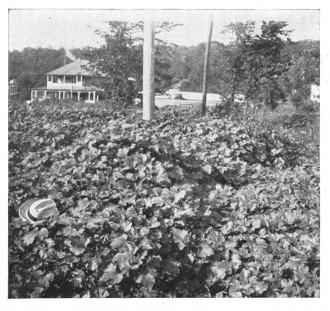
Fig. 254. A colony of clotbur.
When an area is newly cleared, many plants rush for it. Quickly it is
covered with ambitious growths,—pokeweeds, fireweeds, thistles, briars,
nettles. Often each plant occupies large places alone, making clumps or
patches. These patches are plant colonies,—made up mostly of one
species or kind (Fig. 254). But as the struggle tightens, other plants
insinuate themselves into the colony and it is broken up; a mixed
population results. Sometimes these colonies are broken up by the shade
of trees and tall bushes which have come up near them, for all neglected
areas, in this part of the world, tend to return to forest if they are
not mown, pastured or burned. Mown and pastured areas run into grass,
for the grass withstands the cutting and grazing. In burned areas the
struggle begins anew when the fire has passed.
Plant societies are easy to study for the school. The study of
them appeals to the desire for exploration and adventure, and adds
zest to the excursion. Go to a swale, swamp, roadside, forest,
weedy field, or other place, and ask the pupil to note: (1) that
the flora of the place is unlike that of places with different
physical features; (2) that these particular plants grow together
[365]
because they can all survive under similar conditions; (3) what
these conditions are,—whether sun, shade, dry soil, wet soil,
sand, clay, rock; (4) what particular plant is most abundant or
gives character to the society.
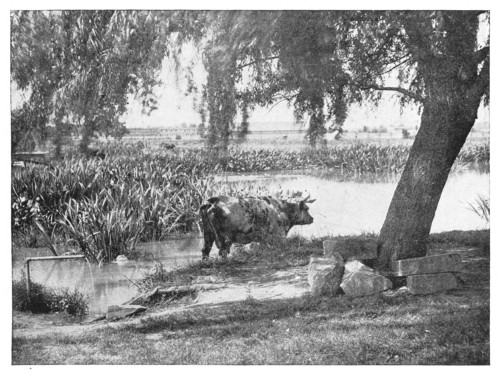
Fig. 255. Two plant societies,—the close-bitten sward and the rushy pond.
Study one society thoroughly. Make lists of the kinds of
plants and of the relative numbers of each. If the names of the
plants are not known, call them by numbers; make dried specimens
of them for reference. When another society is visited,
repeat these observations, and compare one society with another.
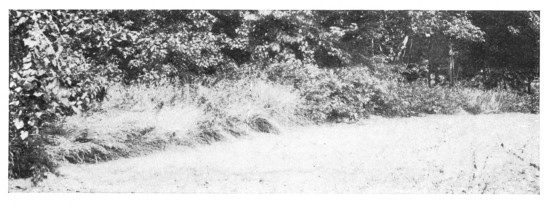
Fig. 256. The edge of the road. Trees and bushes crowd the drive-way, and a ribbon of grass and weeds has pushed itself to the very margin.
Ask every plant why it grows there.
[366]
[367]
LEAFLET XXXVI.
PLANTING A PLANT.[50]
By L. H. BAILEY.
Most persons are interested in plants, even though they do not know it.
They enjoy the green verdure, the brilliant flower, the graceful form.
They are interested in plants in general. I wish that every person were
interested in some plant in particular. There is a pleasure in the
companionship, merely because the plant is a living and a growing thing.
It expresses power, vitality. It is a complete, self-sufficient
organism. It makes its way in the world. It is alive.
The companionship with a plant, as with a bird or an insect, means more
than the feeling for the plant itself. It means that the person has
interest in something real and genuine. It takes him out-of-doors. It
invites him to the field. It is suggestive. It inculcates a habit of
meditation and reflection. It enables one to discover himself.
I wish that every child in New York State had a plant of his
own, and were attached to it. Why cannot the teacher suggest
this idea to the pupils? It may be enough to have only one
plant the first year, particularly if the pupil is young. It matters
little what the plant is. The important thing is that it shall be
alive. Every plant is interesting in its way. A good pigweed is
much more satisfactory than a poor rosebush. The pupil should
grow the plant from the beginning. He should not buy it ready
grown, for then it is not his, even though he own it.
It is well to begin with some plant that grows quickly and
matures early. One is ambitious in spring, but his enthusiasm
may wither and die in the burning days of summer. If possible,
grow the plant in the free open ground; if this is not feasible,
grow it in a pot or box or tin can. Take advantage of the early
spring enthusiasm. Choose hardy and vigorous plants: sow the
seeds when the "spirit moves."
[368]
If a pupil is interested in kitchen-garden vegetables, recommend
lettuce and radish, or a potato. If in flowers, suggest sweet pea,
bachelor's button or blue-bottle, annual phlox, candytuft, China
aster. If in fruits, suggest strawberry.
We desire to inaugurate a general movement for the planting of
plants. The school ground should be planted. Private yards
should be planted. Roadsides should be planted. In some
cities and villages there are committees or other organizations
whose object it is to encourage the planting of public and private
places. Sometimes this organization is connected with the
school interest, sometimes with a local horticultural or agricultural
society, sometimes with a business men's organization.
There should be such a committee in every village and town.
We wish that the teachers might help in this work, for they
would not only be lending their aid to planting, but also be
interesting their pupils in some concrete and useful work, and
teaching them the value of public spirit. Arbor Day should
be more than a mere ceremonial. It should be a means of
awakening interest in definite plans for the adornment of the
neighborhood and of directing the attention of the children
nature-ward.
[369]
LEAFLET XXXVII.
CUTTINGS AND CUTTINGS.[51]
By L. H. BAILEY.
Perhaps no subject connected with the growing of plants awakens so much
popular wonder and inquiry as their propagation by means of cuttings and
grafts. We assume that propagation by means of seeds is the natural way,
and therefore do not wonder, notwithstanding that it is wonderful. We
assume that propagation by cuttings is wholly unnatural, and therefore
never cease to wonder, notwithstanding that this is less wonderful than
the other. To common minds, common things are not wonderful. Mere
commonplace familiarity takes away the charm, for such minds have no
desire of inquiry. The well trained mind goes beneath the surface, and
wonders at everything; and this wonder, grown old and wise, is the
spirit of science.
A plant does not have a definite number of parts, as an animal does. It
may have ten branches or fifty. Each of these branches may do what every
other branch does—produce leaves, flowers, fruits, seeds. It is not so
with the higher animals, for in them each part may do something which
some other part cannot do: if the part is a leg, it runs; if an ear, it
hears. Each part serves the whole animal; and it cannot reproduce the
animal. But in the plant, each branch lives for itself: it grows on the
parent stock; or, if it is removed, it may grow in the soil. And if it
grow in the soil, it is relieved of competition with other branches and
grows bigger: it makes what we call a plant.
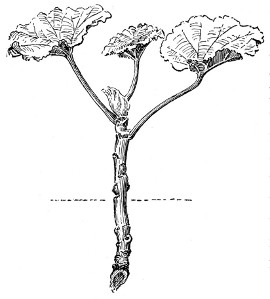
Fig. 257. Geranium cutting. One-half natural size.
Having thus bewildered my reader, I may say that a bit of a
plant stuck into the ground stands a chance of growing; and this
bit is a cutting. Plants have preferences, however, as to the kind
of bit which shall be used; but there is no way of telling what
this preference is except by trying. In some instances this preference
has not been discovered, and we may say that the plant
cannot be propagated by cuttings. Most plants prefer that the
[370]
cuttings be made of the soft or growing wood, of which the "slips" of
geraniums and coleus are examples. Others grow equally well from
cuttings of the hard or mature wood, as currants and grapes; and in some
instances this mature wood may be of roots, as in the blackberry.
Somewhat different principles underlie the handling of these two kinds
of cuttings; and these principles we may now consider. We shall find it
excellent practice to set the pupils to making cuttings now and then. If
we can do nothing more, we can make cuttings of potatoes, as the farmer
does; and we can plant them in a box in the window.
The Softwood Cutting.
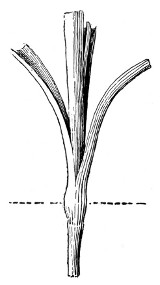
Fig. 258. Carnation cutting. Natural size.
The softwood cutting is made from tissue which is still growing, or at
least from that which is not dormant. It must not be allowed to wilt. It
must, therefore, be protected from direct sunlight and dry air until it
is well established; and if it has many leaves, some of them should be
removed, or at least cut in two in order to reduce the evaporating
surface. Keep the soil uniformly moist; and avoid soils which contain
much decaying organic matter, for these soils are breeding places of
fungi which attack the soft cutting and cause it to "damp off."
For most plants, the proper age of maturity of wood for the making of
cuttings may be determined by giving the twig a quick bend; if it snaps
and hangs by the bark, it is in proper condition; if it bends without
breaking it is too young and soft or too old; if it splinters, it is too
old and woody.
The tips of strong upright shoots usually
make the best cuttings. Preferably each cutting
should have a joint or node near its base; and if the internodes
are short, it may comprise two or three joints. Allow one
[371]
to three leaves to remain at the top. If these leaves are large,
cut them in two.
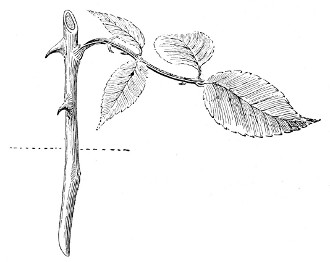
Fig. 259. Rose cutting. More than one-half natural size.
Insert the cutting half or more its length in clean sand or gravel.
Press the earth firmly about it. Throw a newspaper over the bed to
exclude the light—if the sun strikes it—and to prevent too rapid
evaporation. See that the soil is moist clear through, not on top only.
Mason's sand is good earth in which to start cuttings. Or fine
gravel—sifted of most of its earthy matter—may be used. If the
cuttings are to be grown in a window, put three or four inches of the
earth in a shallow box or a pan. A soap box cut in two lengthwise, so
that it makes a box four or five inches deep—like a gardener's flat—is
excellent.
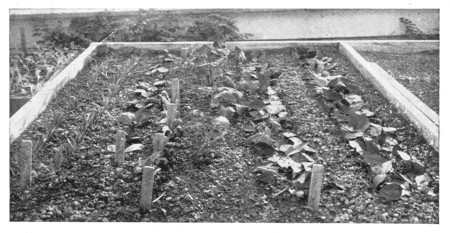
Fig. 260. Cutting-bed, showing carnations and roses.
If the box does not receive direct sunlight, it may be covered
with a pane of glass to prevent evaporation; and then the children
may see the plants more readily. But take care that the
air is not kept too close, else the damping-off fungi may attack
the cuttings and they will rot at the surface of the ground. See
[372]
that the pane is raised a little at one end to afford ventilation;
and if water collects in drops on the under side of the glass,
remove the pane for a time. Cuttings of common plants, as
geranium, coleus, fuchsia, carnation, should be kept in a living-room
temperature.
The pictures are better than words. The line across them
shows where the soil comes. There are softwood cuttings of
the geranium (Fig. 257), the carnation (Fig. 258), and the rose
(Fig. 259); and there is a gardener's cutting bed (Fig. 260) with
cuttings of carnations and roses.
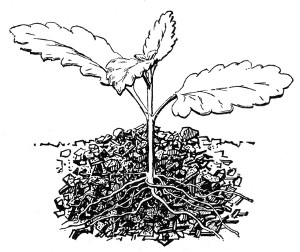
Fig. 261. Verbena cutting ready for transplanting. Two-thirds natural size.
Be patient. As long as the cuttings look bright and green, they are
safe. It may be a month before roots form. When roots have formed, the
plants will begin to make new leaves at the tip. Then they may be
transplanted into other boxes or into pots. The verbena in Fig. 261 is
just ready for transplanting. Each child will want a plant.
It is not always easy to find growing shoots from which to make the
cuttings. The best practice is to cut back some old plant severely, then
keep it warm and well watered, and thereby force it to throw out new
shoots. The old geranium plant from the window garden, or the one taken
up from the lawn bed, may be served this way. See Fig. 262. This may
seem hard treatment, but that is all the old plant is good for; it has
passed its usefulness for bloom. The best plants of the geranium and the
coleus and many window plants are those which are not more than one year
old. The cuttings that are made in January, February, or March will give
compact blooming plants for the next winter; and thereafter new ones
take their place.
Some plants may be propagated by means of cuttings of leaves.
The Rex begonias or "beefsteak geraniums" are the commonest
examples. The large, nearly mature leaf is divided into triangular
pieces, each piece containing at its point a bit of the leaf-base
(top of the leaf-stalk). This kind of cutting is shown in Fig. 263.
[373]
This base is sometimes split (as at o) by gardeners to hasten the
formation of roots. Only the tip of the cutting is stuck into the
sand; otherwise it is treated like other softwood cuttings.
The Hardwood Cutting.
Many plants grow readily from cuttings of ripe or dormant wood. The
willows cast their branchlets in snow and wind, and these, falling in
pleasant places propagate their kind; and thus the river sides and the
lake shores become willow-crowned.
Grapes, currants, gooseberries, poplars readily take root from the
hardwood. Fig. 264 shows a currant cutting. It has only one bud above
the ground.
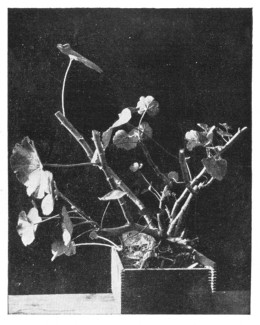
Fig. 262. Old geranium plant cut back to make it throw out shoots from which cuttings can be made.
The best results are attained when the cuttings are made in the fall,
and then buried until spring in sand in the cellar. They are not idle
while they rest. The lower end calluses or heals, and the roots form
more readily when the cutting is planted in the spring. But if the
children are interested, take cuttings at any time in winter, plant them
in a deep box in the window, and watch. They will need no shading or
special care.
When plants of any variety are scarce, the cuttings may be shorter.
Sometimes they are reduced to a single "eye" or bud, with an inch or two
of wood attached; and these single-eye cuttings are planted much as one
plants seeds.
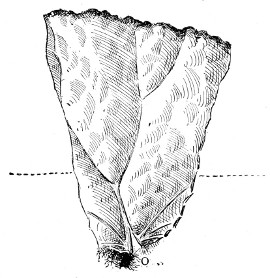
Fig. 263. Begonia leaf cutting. Natural size.
[374]
The Graft.
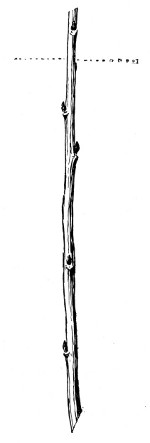
Fig. 264. Currant cutting. One-third natural size.
If the cutting were planted in a plant rather than in the soil, we
should have a graft; and the graft might grow. In this case, the cutting
would not make roots, but it would grow fast to the other plant, and the
twain would become one. When the cutting is inserted in a plant it is no
longer called a cutting, but a cion; and the plant in which it is
inserted is called the stock. The completed thing—the cion growing in
the stock—is a graft.

Fig. 265. Cion for cleft-grafting. One-half natural size.
Plants are particular as to their companions, when it comes to such
close relationships as these. They choose the stocks upon which they
will grow; but we can find out what their choice is only by making the
experiment. There are queer things about it. The pear grows well on the
quince, but the quince does not grow so well on the pear. The pear grows
on some of the hawthorns, but it is an unwilling subject on the apple.
Tomato plants will grow on potato plants and potato plants on tomato
plants. When the potato is the root, both tomatoes and potatoes may be
produced; when the tomato is the root, neither potatoes nor tomatoes
will be produced. Chestnuts are said to grow on some kinds of oaks.
Why do we graft? Think a bit. If I sow seeds of a
Baldwin apple, I shall probably have as many kinds of
apples as I have trees. Some of these apples may be
like the Baldwin, and they may not. That is, apple
seeds do not reproduce the particular variety. They
will not be held to any stricter account than merely to
produce apples; these apples may range all the way
from toothsome kinds to Ben Davis. The nurseryman knows
this, and he does not wait for the trees to bear in the hope that
they will produce something to his liking. So he grafts them when
they still are young,—takes a cion from the kind which he wishes
to perpetuate. So it happens that all the Baldwins and the Kings
[375]
and the Russets, and all other named varieties, are growing on
alien roots; and what kinds of fruits these stocks would have produced
no one will ever know, because their heads were cut off in
youth and other heads were put on to order.
In this way apples and pears and plums and
peaches and cherries and apricots are propagated,
for they will not grow readily from
cuttings. But raspberries and blackberries
and gooseberries and currants and grapes
grow willingly from cuttings, and they are
not grafted by the nurseryman.
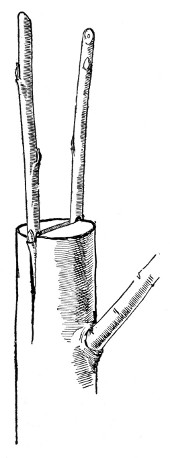
Fig. 266. Cleft-graft. One-half natural size.
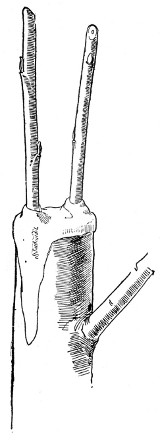
Fig. 267. The graft waxed.
The forming, growing tissue of the trunk is the cambium, lying on the
outside of the woody cylinder, beneath the bark. In order that union may
take place, the cambium of the cion and the stock must come together.
Therefore, the cion is set in the side of the stock. I once knew a man
who believed that everything was designed for some useful purpose. The
hole in the pith bothered him, until he discovered that a cion just
filled it. He grafted his trees accordingly; but the experiment was
productive of nothing except pithy remarks.
There are many ways of shaping the cion and of preparing the stock to
receive it. These ways are dictated largely by the relative sizes of
cion and stock, although many of them are matters of mere personal
preference. The underlying principles are two: see that there is close
contact between the cambiums of cion and stock; cover the wounded
surfaces to prevent evaporation and to protect the parts from disease.
On large stocks the common form of grafting is the cleft-graft.
[376]
The stock is cut off and split; and in one or both sides a wedge-shaped
cion is firmly inserted. Fig. 265 shows the cion; Fig. 266, the cions
set in the stock; Fig. 267, the stock waxed. It will be seen that the
lower bud—that lying in the wedge—is covered by the wax; but being
nearest the food supply and least exposed to weather, it is the most
likely to grow: it pushes through the wax.
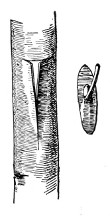
Fig. 268. Shield-budding. One-half natural size.
The wax is made of beeswax, resin, and tallow. The hands are greased,
and the wax is then worked until it is soft enough to spread. For the
little grafting which any school would do, it is better to buy the wax
of a seedsman. However, grafting is hardly to be recommended as a
general school diversion, as the making of cuttings is; and this account
of it is inserted chiefly to satisfy the general curiosity on the
subject. But we hope that now and then a youngster will make the effort
for himself, for nothing is more exciting than to make a graft grow all
by one's self.

Fig. 269. The bud set in the matrix. One-half natural size.
Cleft-grafting is done in spring, as growth begins. The cions are cut
previously, when perfectly dormant, and from the tree which it is
desired to propagate. The cions are kept in sand or moss in the cellar.
Limbs of various sizes may be cleft-grafted—from one-half inch up to
four inches in diameter; but a diameter of one inch is the most
convenient size. All the leading or main branches of a tree top may be
grafted. If the remaining parts of the top are gradually cut away and
the scions grow well, the entire top will be changed over to the new
variety in three or four years. Each cion may be a different variety;
but there is no difference in the operation or the treatment of the
tree.
On young or small stocks, like nursery trees, the cleft-graft is not
practicable, and a different form of grafting is employed; but the
teacher will not care to be confused with further details.
We have seen that a cutting may be reduced to a single bud;
so may a cion. If the bud-cion has very little or no wood
attached, and is inserted underneath the bark, the operation is
known as budding. The commonest form of budding is shown in
Figs. 268, 269, 270. This is the method known as shield-budding,
[377]
because the bud, with its attached bark, is shield-shaped (Fig. 268). A
T-shape incision is made in the stock, and under the bark the bud is
inserted (Fig. 269); then the wound is tightly bound with soft cord or
bast (Fig. 270). Budding may be performed whenever the bark will "slip"
and when well grown buds can be secured,—that is, either in spring or
late summer. It is usually performed at the latter season; and then the
bud does not throw out a shoot the same season, but merely grows fast to
the stock. The next spring it throws out a shoot and makes a trunk; and
in the meantime the stock has been cut off just above the bud. That is,
the bud-shoot takes the place of the top of the stock.
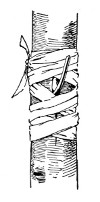
Fig. 270. The bud tied.
Shield-budding is performed only on small and young stocks. It is
usually exclusively employed in the propagation of stone fruits, as
cherries, peaches, plums, apricots, for experience has proved that it is
preferable to other forms of grafting. It may also be employed for other
fruit trees.
How is a peach tree made? In 1898 a pit or seed is saved. In the spring
of 1899 it is planted. The young tree comes up quickly. In August, 1899,
the little stock has one bud—of the desired variety—inserted near the
ground. In the spring of 1900 the stock is severed just above the bud:
the bud throws out a shoot which grows to a height of four or six feet;
and in the fall of 1900 the tree is sold. It is known as a year-old
tree; but the root is two years old.
How is an apple tree made? The seed is saved in 1898, planted in 1899.
The seedlings do not grow so rapidly as those of the peach. At the end
of 1899 they are taken up and sorted; and in the spring of 1900 they are
planted. In July or August, 1900, they are budded. In the spring of 1901
the stock is cut off above the bud; and the bud-shoot grows three or
four feet. In 1902 the shoot branches, or the top begins to form; and in
the fall of 1902 the tree may be sold as a two-year-old, although most
persons prefer to buy it in 1903 as a three-year-old. In some parts of
the country, particularly in the west, the little seedling is grafted in
the winter of 1899-1900 in a grafting-room; and the young grafts are set
in the nursery row in the spring of 1900, to complete their growth.
I have now given my reader an elementary lesson in horticulture;
but I shall consider it of little avail if it is not transformed
[378]
into practice for the children. February is the gardener's
time for the starting of his cutting-beds, in which to grow plants
for the summer bloom. Ask the children to bring the old
geraniums and fuchsias and coleus, and other favorites. Keep
them in a warm window; cut them back; see that they are well
watered; then take the cuttings when the time comes. The
children will be interested to watch the fortunes of the different
cuttings. They will be interested in Vergil's couplet, as set to
rhyme in old-fashioned English:
Some need no root, nor doth the Gardner doubt,
That Sprigs though headlong set, will timely sprout.
[379]
LEAFLET XXXVIII.
A CHILDREN'S GARDEN.[52]
By L. H. BAILEY.

We want every school child in the State to grow a few plants. We want
every one of them to learn something of why and how plants grow; and the
best and surest way to learn is to grow the plants and to watch them
carefully. We want everyone to become interested in everything that
lives and grows. It does not matter so very much just what kinds of
plants one grows as it does that he grows something and grows it the
best that he knows how. We want the children to grow these plants for
the love of it,—that is, for the fun of it,—hence we propose that they
grow flowers; for when one grows pumpkins and potatoes, and such things,
he is usually thinking of how much money he is going to make at the end
of the season. Yet, we should like some rivalry in the matter in every
school, and we therefore propose that a kind of a fair be held at the
school-house next September, soon after school begins, so that each
child may show the flowers which he has grown. What a jolly time that
will be!
Now, we must not try to grow too many things or to do too much.
Therefore, we propose that you grow sweet peas and China asters. They
are both easy to grow, and the seeds are cheap. Each one has many
colors, and everybody likes them. Now let us tell you just how we should
grow them.
1. The place.—Never put them—or any other flowers—in
the middle of the lawn,—that is, out in the center of the yard.
They do not look well there, and the grass roots run under them
and steal the food and the moisture. I am sure that you would
not like to see a picture hung up on a fence-post. It has no background,
and it looks out of place. The picture does not mean
anything when hung in such a spot. In the same way, a flower
[380]
bed does not mean anything when set out in the center of a lawn.
We must have a background for it, if possible,—a wall upon
which to hang it. So we will put the flower bed just in front of
some bushes or near the back fence, or alongside the smoke-house,
or along the walk at the side of the house, or in the back yard.
The flowers will not only look better in such places, but it will
not matter so much if we make a failure of our flower bed; there
are always risks to run, for the old hen may scratch up the seeds,
the cow may break into the yard some summer night, or some
bug may eat the plants up.
Perhaps some of the children may live so near to the school-house
that they can grow their plants upon the school grounds,
and so have sweet peas and asters where there are usually docks
and smartweeds. Grow them alongside the fence, or against the
school-house if there is a place where the eaves will not drip on
them.
2. How to make the bed.—Spade the ground up deep. Take out
all the roots of docks and thistles and other weeds. Shake the
dirt all out of the sods and throw the grass away. You may need
a little manure in the soil, especially if the land is either very
hard or very loose and sandy. But the manure must be very fine
and well mixed into the soil. It is easy, however, to make sweet
pea soil so rich that the plants will run to vine and not bloom
well.
Make the bed long and narrow, but not narrower than three feet.
If it is narrower than this the grass roots will be likely to run under
it and suck up the moisture. If the bed can be got at on both
sides it may be as wide as five feet.
Sow the seeds in little rows crosswise the bed. The plants can
then be weeded and hoed easily from either side. If the rows are
marked by little sticks, or if a strong mark is left in the earth, you
can break the crust between the rows (with a rake) before the
plants are up. The rows ought to be four or five inches further
apart than the width of a narrow rake.
3. How to water the plants.—I wonder if you have a watering-pot?
If you have, put it where you cannot find it; for we are
going to water this garden with a rake! We want you to learn, in
this little garden, the first great lesson in farming,—how to save
the water in the soil. If you learn that much this summer, you
will know more than many old farmers do. You know that the
soil is moist in the spring when you plant the seeds. Where does
[381]
this moisture go to? It dries up,—goes off into the air. If we
could cover up the soil with something, we should prevent the
moisture from drying up. Let us cover it with a layer of loose,
dry earth! We will make this covering by raking the bed every
few days,—once every week anyway, and oftener than that if the
top of the soil becomes hard and crusty, as it does after a rain.
Instead of pouring water on the bed, therefore, we will keep the
moisture in the bed.
If, however, the soil becomes so dry in spite of you that the plants do
not thrive, then water the bed. Do not sprinkle it, but water it.
Wet it clear through at evening. Then in the morning, when the surface
begins to get dry, begin the raking again to keep the water from getting
away. Sprinkling the plants every day or two is one of the surest ways
to spoil them.
4. When and how to sow.—The sweet peas should be put in just as soon
as the ground can be dug, even before frosts are passed. Yet good
results can be had if the seeds are put in as late as the 10th of May.
In the sweet pea garden at Cornell last year, we sowed the seeds on the
20th of April. This was about right. The year before, we sowed them on
the 30th. If sown very early, they are likely to bloom better, but they
may be gone before the middle of September. The blooming can be much
prolonged if the flowers are cut as soon as they begin to fade.
Plant sweet peas deep,—two or three or sometimes even four inches. When
the plants are a few inches high, pull out a part of them so that they
will not stand nearer together than six inches in the row. It is a good
plan to sow sweet peas in double rows,—that is, put two rows only five
or six inches apart,—and stick the brush or place the chicken-wire
support between them.
China asters may be sown from the middle of May to the first of June. In
one large test at Cornell, we sowed them the 4th of June, and had good
success; but this is rather later than we would advise. The China asters
are autumn flowers, and they should be in their prime in September and
early October.
Sow the aster seed shallow,—not more than a half inch deep. The tall
kinds of asters should have at least a foot between the plants in the
row, and the dwarf kinds six to eight inches.
Sometimes China asters have rusty or yellow spots on the
undersides of their leaves. This is a fungous disease. If it
appears, have your father make some ammoniacal carbonate of
copper solution and then spray them with it; or Bordeaux mixture
[382]
will do just as well or better, only that it discolors the leaves
and flowers.
5. What varieties to choose.—In the first place, do not plant too
much. A garden which looks very small when the pussy willows come out
and the frogs begin to peep, is pretty big in the hot days of July. A
garden four feet wide and twenty feet long, half sweet peas and half
asters, is about as big as most boys and girls will take care of.
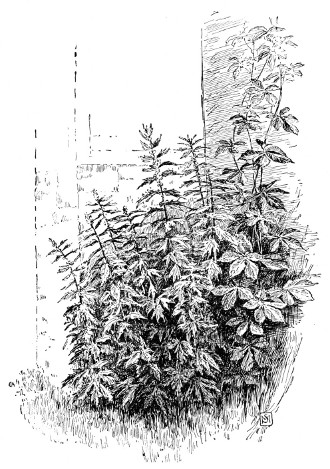
Fig. 271. A clump of weeds in the corner by the house,—motherworth and Virginia creeper. How pretty they are!
In the next place, do not get too many varieties. Four or five kinds
each of peas and asters will be enough. Buy the named varieties,—that
is, those of known colors,—not the mixed packets. If you are very fond
of reds, then choose the reddest kinds; but it is well to put in at
least three colors. The varieties which please you may not please me or
your neighbor, so that I cannot advise you what to get.
Of China asters, the Comet type—in various colors—will probably
[383]
give the most satisfaction. They are mostly large-growing
kinds. Other excellent kinds are the Perfection and Peony-flowered,
Semple or Branching, Chrysanthemum-flowered, Washington,
Victoria, and, for early, Queen of the Market. Odd
varieties are Crown, German Quilled, Victoria Needle, and
Lilliput. Very dwarf kinds are Dwarf Bouquet or Dwarf German,
and Shakespeare.
One of the chief merits of the China aster is the lateness of bloom,
allowing the flowers to be used in the schools after they open in the
fall. An excellent flower for sowing during May is the common annual
Phlox (Phlox Drummondii of the catalogues). Poppies are also
satisfactory, but the flowers do not last long. Petunias are excellent
and Balsams, Clarkias, Coreopsis (or Calliopsis), and Zinnias may be
sown.
Now, let us see how many boys and girls in New York State
will raise sweet peas and China asters this year! And we should
like them to write us all about it.
[384]
[385]
LEAFLET XXXIX.
A HILL OF POTATOES.[53]
By I. P. ROBERTS.
Plant a hill of potatoes. You can do it in the school-room. Plant in a
box or a flower-pot. Keep the box warm, and do not let the soil dry out.
Plant whole tubers and pieces of tubers. Plant pieces of various sizes.
Plant some that have no "eyes." Plant shallow—so that the tuber is just
covered with soil—and deep. Watch the results.
All plants are abundantly supplied with means for reproducing their
kind: some by seed, some by multiplication at the crown or base or by
roots, others by means of underground stems; and some, as the potato,
have two or more means of reproduction. In its wild or partially
improved state the potato is abundantly supplied with fruit, "seed
balls," borne on the top of the stalks. The seeds of a single ball will
often produce many varieties of potatoes; but they cannot be depended
upon to reproduce the parent stock. Farmers seldom attempt to raise
potatoes from the seeds; when they do it is for the purpose of securing
new varieties. The common method of reproduction is to plant a part or
all of an enlarged underground stem, that is, a part of the "potato" or
tuber.
When the soil is reasonably porous and fertile, a strong root
may start at the seed-piece and descend more or less directly into
the subsoil. In most cases, however, the roots spread laterally.
This is a good illustration of how plants may vary in their root
habits in order to adapt themselves to their environment. Notice
where the roots form on the plants you are growing. Few
farmers know where they form. Distinguish the true or feeding
roots from the underground stems. Determine how many tubers
form on each underground stem. Dig up a hill of potatoes from
the garden before school closes.
[386]
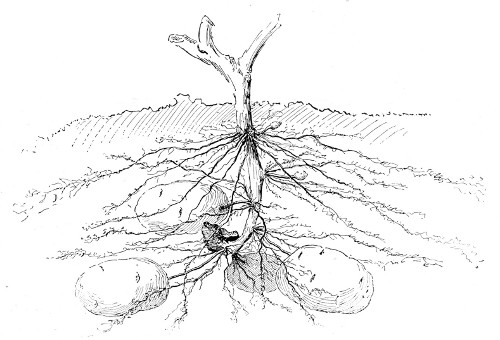
Fig. 272. Underground part of potato plant in mellow soil.
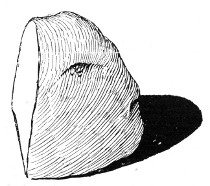
Fig. 273. Piece of tuber for planting, bearing a single eye.
A single eye, with a portion of the tuber attached to furnish
nourishment to the bud until sustenance can be secured from newly formed
rootlets, may produce one, occasionally more, strong upright stems. A
most interesting study of manifold reproduction may be made even in the
winter time by planting in a fertile soil a piece of potato containing a
single eye (Fig. 273). As soon as the rootlets begin to start, divide
each eye and piece into two parts and re-plant. In a few days after the
rootlets have again started, divide the two pieces into four and
re-plant. This operation may be performed again and again, until many
plants suitable for transplanting in the open may be secured from a
single eye.
Demonstrate that the potato contains
starch. This can be done by
applying a drop of dilute iodine to a freshly cut surface of the
tuber: the starch grains turn blue-black. Five cents' worth of
iodine purchased at the drug-store will be sufficient for many
tests. Dilute it about one-half with water. This starch, after
[387]
being changed to sugar, supplies the young plant with nourishment.
Dig up the pieces you have planted and see which start
first, shoots or roots.
The "potato" is an enlarged underground stem provided with
numerous buds similar to those on the stems of plants above
ground. These buds are placed spirally on the underground
stem or tuber with a considerable degree of uniformity. As on
the stems of other plants, the buds are less numerous and weaker
at the base and most numerous and vigorous at the top or upper
end. On a smooth well developed long potato, the spiral arrangement
of the buds may be illustrated by sticking a tooth-pick or
pin in each eye, beginning at the base or stem end, and connecting
the pins with a string (Fig. 274).
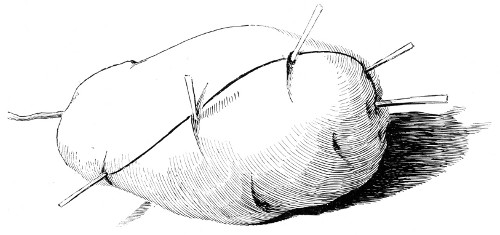
Fig. 274. How to illustrate the spiral arrangement of the eyes.
Farm Notes on the Potato.
Now that we have seen the potato growing in the school-room,
some information may be given respecting its treatment in the
field as a crop.
Potatoes are easily raised, even under adverse conditions,
although they respond quickly to superior fertility and tillage.
The average yield in the United States during the last ten years
was 76.6 bushels an acre, although from three to four hundred
bushels an acre are not uncommon under superior tillage when
soil and climate are at their best.
The area devoted to potatoes during the last decade was two
and a half million acres annually. Potatoes do best on a moderately
moist and deep soil and in a climate relatively cool.
[388]
Since the period of growth is short, varying from three to five
months, they should be planted in soil which has an abundance
of readily available plant-food. Notice in Fig. 272 that most of
the underground stems which have produced potatoes leave the
main stem about four inches below the surface and but a short
distance above the seed-piece. This suggests that the seed should
be planted about four inches deep. To produce three hundred
bushels of potatoes requires the exhalation of over three hundred
tons of water: therefore water or moisture is of quite as much
importance in securing large yields as plant-food.
It is best to prepare the land deeply, to plant deep, and then to
practice nearly or quite level culture. The practice of hilling up
potatoes, so common in most parts of the country, is to be discouraged,
usually, because it is wasteful of moisture and the tubers
do not grow in the coolest part of the soil. For very early
potatoes, hilling-up may be allowable. Till the soil very often to
save the moisture. For the philosophy of this, see Leaflet No. IX.
Not infrequently the potato is seriously injured by blights
which attack the leaves. The early blight, which usually appears
in June, may destroy some of the foliage, thereby checking
growth. The late blight, which also attacks the foliage, is far
more serious. It differs little in outward appearance from the
early blight. In rare cases the vines are so seriously injured that
no potatoes are formed. The potato rot or blight did great
damage to the potato in many localities in the United States in
1845. In 1846 the blight appeared in Ireland and virtually
destroyed the entire crop. Before this date the potato had become
the chief food supply of the peasantry. The cultivation of oats
as a food crop had been universal before the introduction of
the potato, but oats furnished so little food on a given area as
compared to the potato that the cultivation of them at the time the
blight appeared had been very largely abandoned. The loss of
the potato crop produced widespread famine. The most conservative
estimate of the numbers who perished for want of food
or by disease caused by a meager diet of unhealthy and innutritions
food is set down at six hundred thousand during the two
years of the potato blight. This disease was not so destructive
in 1847 as in 1846; and by 1848 it had virtually disappeared. Some
one has said that if Great Britain had expended one dollar for
investigating the diseases of potatoes where she had spent a thousand
dollars for perfecting the engines of war, the terrible famine
[389]
might have been averted. We now think it a relatively easy matter
to keep the blight in check by thorough spraying with Bordeaux
mixture.
How the Potato Has Been Improved.
All plants have their origin in pre-existing plants. While the
young plant is always similar to the one from which it was derived,
it is never exactly like its parent in every detail. This arises from
the fact that all of the conditions under which the parent plant
and its offspring grow are never exactly alike. The variations or
differences in the plants are usually exceedingly small in a single
generation; but occasionally they are wide, in which case they
are called "sports" and are usually difficult to perpetuate. If
successive generations of plants are reared under continuously
improved conditions, there will be a continuous and accumulating
variation from generation to generation, which in time may come
to be so great as to make it difficult to discover a marked similarity
between the wild and the cultivated forms of the same plant.
When conditions are undisturbed by man there is found to be
a fierce struggle for existence. The hardiest or those best suited
to the conditions preponderate, and this without any reference
to the wants of mankind. The farmer steps in and selects those
plants which give promise of being most useful or most beautiful
and then decreases or eliminates the struggle for these selected
plants, by destroying the plants which are least desirable, by fertilizing
and tilling the soil, by conserving moisture, and by improving
the physical conditions of the land, thereby making it more
comfortable for the plants which he has chosen. The selected or
"improved" plant, by reason of being more comfortable and
better nourished, tends to vary in one or more directions from
the wild and unimproved types. Whenever these variations tend
towards greater productiveness, better quality or enhanced
beauty, selection is again made of such specimens as give promise
of supplying the wants and gratifying the desires of civilized
man. The bettered conditions of the plant, by reason of man's
effort, do not usually result in producing like variation along all
lines. One part of the plant as the flower, the fruit, or the stem,
varies more than the other parts. All this tends to break up a
single type or stock into many varieties. There are hundreds of
varieties of potatoes all traceable to a single wild species. The
kind and quantity of nourishment supplied plays the most
important part of any single factor in producing variation.
[390]
The general character of the cultivated potato plant as to leaf,
stem, root, and habit of growth, is virtually the same as the wild
plant, variation having been directed and accentuated along the
line of increasing the size and quality of the underground tubers.
This habit of producing enormously enlarged underground stems
has been operating so long that the plant has inherited the power
of transmitting this acquired quality to the succeeding plants.
The most improved varieties seldom produce seed balls, because
growth has been directed so largely toward enlarging and multiplying
the tubers. By selecting tubers with shallow buds or
eyes and avoiding those with deep, sunken eyes, varieties have
been produced with few eyes or buds, and these set not in deep
indentations but nearly even with the surface of the potato.
As a school-room subject, the potato is not very tractable, unless
we study merely the tubers. If the school is in session in summer,
the growing plant may be had. Then it will be found to be an
interesting and profitable exercise to set the children at the
problem of determining the root-system of the potato plant. How
do the roots look? Does the plant have a tap-root, or do the
roots spread laterally? Are the tubers borne on roots? Or on
underground stems? Why do you think so? Does the tuber
terminate the branch? What relation, in position, do the tuber-bearing
branches bear to other parts of the underground system?
Do you think that the tuber-bearing branches aid in collecting
food from the soil?
The top of the plant may be studied in the same spirit,—branching,
leaves, flowers, berries.
If the growing plant cannot be had, study tubers. Compare as
to size, shape, color, character of eyes, whether scabby or smooth.
Use them as objects in drawing.
Plant tubers in the school-room, in boxes or flower pots. This
Leaflet will suggest some interesting observations.
How important is the potato crop in the State and nation? The
pupil can use his mathematics here.
[391]
LEAFLET XL.
THE HEPATICA.[54]
By ANNA BOTSFORD COMSTOCK.
As children are always especially interested in the wild flowers in
spring, I have thought best to study a few of the woodland blossoms. The
wonderful processes of plant life are as well shown in these as in any.
The hepatica is among the first which greets us in the spring, and we
will study this first.
There are several ways of getting acquainted with a plant: one is to
go-a-visiting, and another is to invite the plant to our own home,
either as guest on the window-sill, or as a tenant of the garden. When
we visit the hepatica in its own haunts it is usually with the longing
for spring in our hearts that awakens with the first warm sunshine and
which is really one of the subtlest as well as greatest charms of living
in a climate that has a snowy winter. As we thread our way into the
sodden woods, avoiding the streams and puddles that are little glacial
rivers and lakes from fast disappearing snow-drifts still heaped on the
north sides of things, we look eagerly for signs of returning life. The
eye slowly differentiates from the various shades of brown in the floor
of the forest a bit of pale blue or pink purple that at first seems as
if it were an optical delusion; but as we look again to make sure, lo!
it is the hepatica. There it is, rising from its mass of purple brown
leaves, leaves that are always beautiful in shape and color and suggest
patterns for sculpture like the acanthus or for rich tapestries like the
palm-leaf in the Orient. There the brave little flower stands with its
face to the sun and its back to the snow-drift and looks out on a gray
brown world and nods at it and calls it "good."
It is when the hepatica is our guest that we have a better
opportunity for studying its form and features. Take up a
hepatica root in the fall and pot it and place it in a cool cellar
[392]
until March 1. Then give it light, warmth, and moisture on your
table and see how gladly it will blossom and tell its secrets. Or
perhaps if we are not sufficiently forehanded to get the root in
the fall we can get it during a thaw in March when we go foraging
for spring feelings in winter woods.
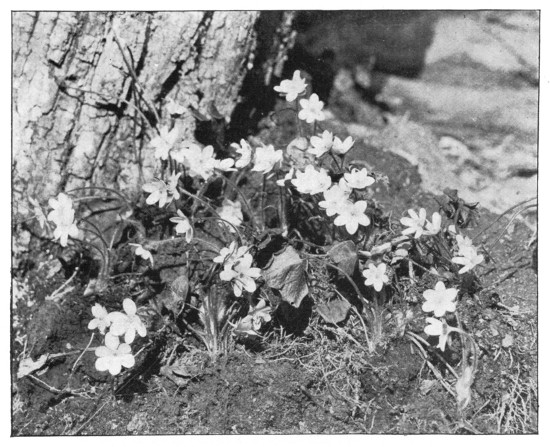
Fig. 275. Hepatica, harbinger of spring.
When finally a bud has uncuddled and lifted itself into a flower,
it will tell us the story of leaves in different disguises, and we
may be able to notice whether the pollen ripens and is all distributed
when the flower begins to fade and fall. We may note
also the number of seeds and examine one of them with a lens.
It is what the botanists call an akene, which simply means just
one seed with a tight envelope about it. We have a careless habit
of forgetting all about plants after their blossoms fade unless
their fruits or seed are good to eat or good to look at. This is as
inconsistent as it would be to lose all interest in the farm before
the fields were planted. After the flower is gone the plant must
mature its seeds and somehow must sow them. We will study the
[393]
hepatica through the summer and autumn, for we must know
what is happening to it every month.
Questions Concerning the Hepatica to be Answered
During March and April.
1. In what situations are the hepaticas found?
2. How does the hepatica prepare for the winter and store up
energy for blossoming early in the spring?
3. How early do you find blossom buds down in the center of
the plant? Did you ever look for these buds in the fall?
4. Do the flowers come out of the crown bud?
5. Are the leaves that come up late in the spring as fuzzy when
they first appear as those that come up early?
6. Make out as complete a life-history of the hepatica as you
can,—how it sows itself, where it grows, how long it lives, with
what plant it keeps company.
[394]
[395]
LEAFLET XLI.
JACK-IN-THE-PULPIT.[55]
By ANNA BOTSFORD COMSTOCK.
"Jack-in-the-Pulpit preaches to-day
Under the green trees, just over the way.
Squirrel and song sparrow high on their perch
Hear the sweet lily bells ringing to church.
Come, hear what his reverence rises to say,
In his low, painted pulpit this calm Sabbath day,
Fair is the canopy over him seen,
Penciled by nature's hand, black, brown, and green."
J. G. Whittier.
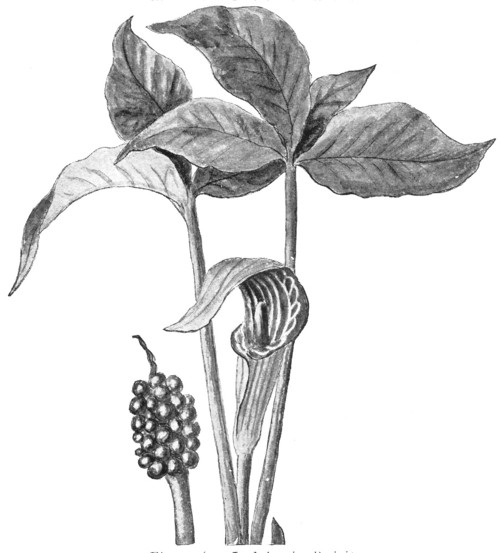
Fig. 276. Jack-in-the-Pulpit.
[396]
At one time or another, perhaps all of us are given to the belief that
all flowers blossom for our especial enjoyment. It is hard to think back
for a thousand years and imagine hepaticas blooming on our New York
hills; yet no doubt, they blossomed then in far greater numbers than
they do to-day. Many of our native plants played their part in
sustaining the lives of the native Americans, and that little preacher,
Jack-in-the-pulpit, was a turnip long before he was a preacher. Indian
turnip was his name in the days of our ancestors because the Indians
boiled his bulb-like root and the ripe berries, thus making them a less
peppery and a more palatable food.
The St. Nicholas Magazine was for so many years the organ through which
Jack preached so many sermons to children all over our land that he is
even to-day one of the best loved of the woodland flowers. Whittier, in
his "Child Life," and Lucy Larcom have both celebrated
Jack-in-the-pulpit in song, and these verses should be given to the
children when they are studying the habits of this interesting plant.
Jack-in-the-pulpit is a wild cousin of the over-civilized calla lily. It
is interesting to study the way the flowers resemble each other, and
this you and the children will be able to study for yourselves. It will
teach you that the showy parts of a blossom may be merely a protection,
and an advertisement for the true flower hidden within.
Questions Concerning Jack-in-the-Pulpit.
1. Where do you find this plant, in dry or in wet locations?
2. What is the shape of the root? Is it pleasant to the taste?
3. How do the leaves look when they first appear above the
ground?
4. How far are the leaves developed when the flowers appear?
5. Does the tip of the hood fold over at first?
6. Do you see a resemblance to the calla lily when you bend the
tip of the hood backward? Compare or contrast the two plants.
7. How many leaves has Jack-in-the-pulpit? Are they simple
or compound?
8. What are the colors of the "pulpits" in your locality?
[397]
LEAFLET XLII.
INDIAN CORN.[56]
By ANNA BOTSFORD COMSTOCK.
"Hail! Ha-wen-ni-yu! Listen with open ears to the words of thy
people. Continue to listen. We thank our mother earth which sustains
us. We thank the winds which have banished disease. We thank He-no
for rain. We thank the moon and stars which give us light when the
sun has gone to rest. We thank the sun for warmth and light by day.
Keep us from evil ways that the sun may never hide his face from us
for shame and leave us in darkness. We thank thee, oh, mighty
Ha-wen-ni-yu that we still live. We thank thee that thou hast made
our corn to grow. Thou art our creator and our good ruler, thou canst
do no evil. Everything thou doest is for our happiness."

Thus prayed the Iroquois Indians when the corn had ripened on the hills
and valleys of New York State long before it was a state, and even
before Columbus had turned his ambitious prows westward in quest of the
Indies. Had he found the Indies with their wealth of fabrics and spices
he would have found there nothing so valuable to the world as has proved
this golden treasure of ripened corn.
The origin of Indian corn, or maize, is shrouded in mystery.
There is a plant which grows on the tablelands of Mexico which
is possibly the original species, but so long had maize been cultivated
by the American Indians that it was thoroughly domesticated
when America was discovered. In those early days of
American colonization it is doubtful, says Professor John Fiske,
if our forefathers could have remained here had it not been for
Indian corn. No plowing nor even clearing was necessary for
the successful raising of this grain. The trees were girdled, thus
killing their tops to let in the sunlight; the rich earth was
[398]
scratched a little with a primitive tool and the seed put in and
covered; and the plants that grew therefrom took care of themselves.
If the pioneers had been obliged to depend alone upon the
wheat and rye of Europe which would only grow with good tillage
they might have starved before they had gained a foothold
on our forest-covered shores. While maize has never been a
popular grain in European countries outside of the southermost
parts, yet on the great continents of Africa and Asia it was
welcomed from the first, and is now largely grown. It has ripened
for so many centuries on the slopes of the Himalayas that if you
were to ask one of the natives to-day how long it had grown there
he would answer you "always."
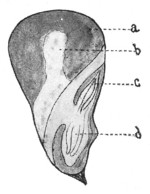
Fig. 277. Parts of corn kernel.
It is fitting that a grain which is so peculiarly adapted to be the aid
and support of a great civilization should grow upon a plant of such
dignity and beauty as is the maize. The perfect proportions of the
slender stalk to the long gracefully curving leaves; the plumed tassels
swaying and bowing to every breeze and sending their pollen showers to
the waiting skeins of silk hidden below; the ripened ear with its exact
rows of shining yellow grains wrapped in silken husks; all these make
the corn plant as delightful to the eye as it is intrinsically important
to the welfare of nations. No more wonderful lesson in plant growth can
we find for our study than this lesson of the Indian corn.
Lesson on Indian Corn for Spring and Summer.
Secure a kernel of corn and cut it in halves (Fig. 277) and with
the naked eye you will be able to see there the young plant pressed
close to its stored up food, which, though largely composed
of starch, also has in it proteids and oil. You will see that this
food is dry and thus cannot be used by the young plant, for plants,
whether young or old, must take their nourishment in a fluid condition.
Soak the seed and see how soon the young plant passes
on the moisture to soften the food so that it may imbibe it and
grow. Fill a tumbler with earth and plant a grain of corn next
to the glass so that you may be able to see how it grows.
[399]
Corn Stalks, Leaves and Roots.
1. Which appears first, root parts or leaf?
2. How does the leaf look when it first comes up?
3. How old is the corn when the blossom stalks begin to show
above the leaves?
4. Does the stalk break more easily at the joints than elsewhere?
Measure the distances between the joints in a stalk of
young corn and two weeks later measure these distances again,
and compare your figures. From these measurements tell whether
the plant grows only at the top, or has it several growing places?
5. Are the joints nearer each other at the bottom or at the top?
6. Where do the bases of the leaves clasp the stalks?
7. Tell why this arrangement gives strength to the stalk.
8. Do you see a little growth at the base of the leaf that prevents
the rain from flowing down between the stalk and the
clasping leaf? This is called the rain-guard. How might it
damage the plant if the water should get in between the leaf and
stem?
9. What is the structure of the leaf and direction of the ribs?
10. How does this structure keep the long leaf from being torn
to pieces by the wind?
11. Note the ruffled edge of the leaf. Lay such a leaf flat on a
table and bend it this way and that, and note how this fullness
allows it to bend without breaking the edges. What advantage is
this to the plant?
12. Study the roots of a corn plant. How far do they extend
into the ground? Describe them.
13. Study the brace roots that come off the stalk an inch or
more above the ground. Of what utility are these to the plant?
14. Bend down a stalk of growing corn and place a stone on it
near its base so as to hold it down, and note how it acts. Does it
commence to lift itself up straight from the joint, or from a place
between the joints?
15. Cut off the water supply from a plant, or watch the corn
during a drought and tell how the leaves behave.
16. Do they offer as much surface to the air for evaporation
when they are curled? Is this the way the plant protects itself
by retaining this moisture during a dry time?
17. Do the stalks or leaves grow after the ears begin to form?
18. Do you find "suckers" growing; if so what is the variety?
[400]
Flowers.
There are two kinds of flowers on the corn: the tassels bearing the
pollen, and the ears bearing the ovules which develop into seeds. Study
first the tassel. Observe the flowerets through a lens if you have one and
note that the pollen sacs open a little at one side instead of at the tip so
that the wind is needed in order to shake out the pollen. It is estimated
that on each corn plant there may be developed eighteen million pollen
grains and two thousand ovules. The pollen-tube must penetrate the whole
length of each thread of corn-silk in order to reach the ovules.
19. What agency carries the pollen grains to the ear?
20. What would happen to a field of corn if the farmer cut
off all the tassels as soon as they were formed?
21. Find a tassel before it appears and study it. Secure an ear
when only an inch or two long and study it. These should be
studied as flower parts.
22. How early can you find the ear? Look at every joint and
tell how many ears you find on a young stalk.
23. In studying the ear, take first the husk. Does it resemble
the leaf in structure? What is the difference between the outer
and the inner husks?
24. Do you believe that the husk is a modified leaf; if so why?
In the young ear does each thread of silk extend out to the end
of the ear; if so why?
25. Is there a thread of silk for each kernel in the ear?
26. Study corn when it is in the "milk." Is the taste sweet?
27. Does this sweet taste continue as the kernel matures?
28. How is the stalk modified to fit the ear?
Enemies.
The corn has many difficulties to contend with: there are heavy winds,
too much or too little rain, hail, and, worst of all, frosts which not only
kill it when it is first planted, but also hurt it before it is matured. The
corn has living enemies also, such as wire-worms and cut-worms. Our
forefathers were much troubled with the mischief which crows did in
pulling corn. However, many of our observing farmers to-day say that
only in rare instances do the crows injure corn much. The work done by
cut-worms is often attributed to crows.
29. Please note in your locality what difficulties the corn has to
contend with. If possible make a special study of the damage
said to be done by crows. Give the results.
[401]
LEAFLET XLIII.
THE RIPENED CORN.[57]
By ANNA BOTSFORD COMSTOCK.
Every boy and girl living on a farm in New York State twenty-five years
or more ago, has in memory a picture like this: a stubbly hill-side
field beset with russet shocks of corn and constellations of orange
pumpkins, whence might be seen wide valleys filled with purple haze, and
far hills bedecked with autumn tapestries woven about emerald patches of
new wheat.
To such a field, after the laggard sun had changed the hoar
frost to dew, would they hasten of an October morning, to begin
the corn-husking. The enthusiastic youngster, who had an eye to
artistic unity in the situation, invariably selected a pumpkin for
his seat, scorning his more sordid fellows who had brought milking-stools
from the barn, when nature had placed so many golden
thrones at their disposal. Too soon a discovery was made about
this that applies as well to other thrones,—it proved an uneasy seat,
and was abandoned for a sofa constructed of corn-stalks. Here,
leaning back with a full sense of luxury, listening to the rustle of
the dry leaves and husks and the monotonous song of the cricket,
enlivened now and then by the lazy call of the crow from the hemlocks
on the hill, the sweet note of the belated meadow-lark from
the valley, or the excited bark of the dog as he chased a squirrel
along the fence, the busy husker passed the autumn day. On
either side of him were evidences of his labor. On the right stood
great disheveled stooks of corn stalks bereft of their pockets of
gold; on the left lay in a heap the shining yellow ears, ready to
be measured in the waiting bushel-basket; in front was always a
little pile of noble ears with some of the husks still attached,—the
seed corn. Proud was the boy when he had learned to select
successfully "the ear of good length, cylindrical rather than
[402]
pointed, the cob firm and well filled from butt to tip with grains
uniformly large, of good color and in regular rows that showed no
space between." Now-a-days, we challenge this ideal of the
"perfect ear."
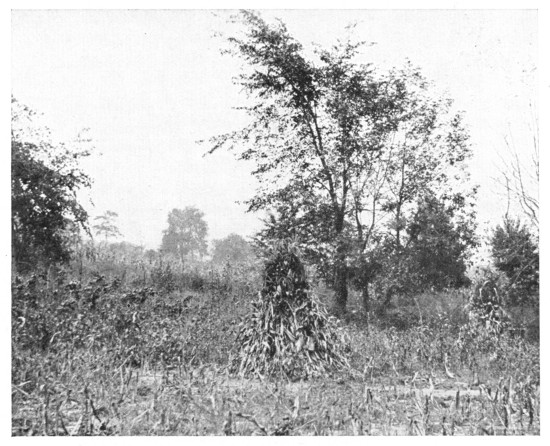
Fig. 278. The Harvest of the Corn.
As "chore time" approached, came the wagon afield to gather
the harvest of ears and take them to the cribs, where their gold
gleaming between the boards gave comfortable assurance of peace
and plenty. But the seed corn was stored in a way learned by
our forefathers from the American Indians; the ears were braided
together by their husks, by the skilled farmer, who could make a
braid two or three feet long, strong enough to hold the weight of
the ears that hung a heavy fringe along each side; this braid
when completed was tied with a bit of soft, tow twine, long saved
for the purpose, and then was hung on hooks on the granary walls.
There, until spring, waited the elect of the cornfield, holding in
perfect kernels all the future corn wealth of that farm.
From the first day's husking a bushel of ears was reserved from
the crib and was spread on a chamber floor to dry quickly; later
[403]
this was taken to the mill and ground into samp, one of the prized
luxuries of the autumn bill of fare. Other corn was ground into
finer meal for the delicious Johnny-cake and the Indian bread, the
latter reaching fullest perfection when baked in a brick oven.
To the tenants of the farm barns the corn meant even more
than to those in the farm house. In August the cattle in dry pastures
cast longing eyes and expressive voices toward the pale,
green leaves and waving tassels of the sowed-corn, and great was
their joy the first day they tasted this delicacy; in November,
they munched the dry leaves of the planted crop, leaving in the
barn-yard an angular patterned carpet of bare, hard stalks. In
winter the corn meal, in proper proportions, made for them a food
that kept them warm despite the cold winds that clutched at
them, through crevices, with fingers of drifted snow. And no less
dependent on this important crop were the denizens of the fold,
of the sty, and of the chicken-yard.
The old-time harvesting and husking are passing from the New
York farm of to-day. The granary is no longer frescoed with
braids of model ears, for the seed corn is now bought by the
bushel from the seedsmen. The corn harvester has dissolved the
partnership between corn and pumpkin and fells the stalks by
the acre, doing away with the old-time stooks or shocks. Corn-stalks
now become silage and are fed in a green condition throughout
the winter. How often do we lose something of picturesqueness
when we gain the advantages of modern improvements! Let
us be thankful, however, that the corn harvester and the silo make
efficient use of the great fields of corn.
Although there is but one species of corn recognized (Zea
Mays), there have been an endless number of varieties developed
from it. Seven hundred and seventy of these were sufficiently
distinct to be recognized when the Department of Agriculture
published its account of varieties. The importance of the corn
crop to this country and to others is almost incalculable. In
1902, the United States produced more than two and a half billion
bushels and the export price was $.60 per bushel. When the
corn crop fails every man, rich or poor, in America, suffers from
it, and every business is affected by it. Though the man working
in the cornfield may think only of his own crop, yet he is the man
that is helping maintain the prosperity of our country. He is
working for us all.
[404]
Questions on the Ripened Corn.
1. Is the corn crop in your vicinity good this year?
2. What affected it, beneficially or otherwise?
3. How many ears of corn are there usually on a mature stalk?
4. Are they on the same side of the stalk, or how are they
disposed?
5. How many kinds of corn do you know?
6. Describe an average ear of each in the following particulars:
shape and color of kernel; number of rows of kernels on
the cob; number of kernels in a row; length of cob. Are the
rows in distinct pairs? Do any of the rows disappear near the
tip; if so, how many?
7. Study a cob with corn on it. Are the kernel-sockets of
adjacent rows opposite each other or alternate?
8. Cut a kernel of pop-corn and a kernel of field corn across
and compare the texture of the two. What has this texture to do
with causing the kernel to "pop?"
9. How many foods do you know made from the grain of the
corn?
10. How many products do you know made from stalks of the
corn?
11. Do you know of any part of the corn that is used in constructing
battleships?
12. What is the corn crop of New York State worth in dollars
a year? (See U. S. Census Bulletin, No. 179.)
13. How many bushels of shelled corn are usually produced on
an acre of well cultivated land?
14. Could the corn plant itself without the agency of man?
If you are able to draw, please make a sketch of a kernel of
sweet corn and a kernel of field corn. Break an ear of corn in
two and sketch the broken end, showing shape of the cob and its
relation to the kernels.
[405]
Note on the New Corn Breeding.[58]
The particular materials that give the corn kernel most of its value are
the oil, the protein and the starch. For the production of corn oil—for
which the demand is large—a corn that has a high oil content is, of
course, particularly valuable; while for the production of starch or for
the feeding of bacon hogs, a relatively higher percentage of other
materials is desirable. It is apparent, therefore, that races of corn
should be bred for a particular content, depending on the disposition to
be made of the grain. Equal economic results cannot be attained,
however, in increasing the content of any of the three leading
ingredients, since a pound of gluten is worth one cent, a pound of
starch one and one-half cents, and a pound of oil five cents. The
amounts of these ingredients in the corn kernel are amenable to increase
or diminution by means of selection,—by choosing for seed the kernels
of ears that are rich or poor in one or the other of these materials.
Fortunately, the oil and starch and protein of the corn kernel occupy
rather distinct zones. Next the outside hull is a dark and horny layer
that is very rich in protein; in the center is the large germ, very rich
in oil; between the two is a white layer of starch. It is found that the
kernels on any ear are remarkably uniform in their content; the
dissection of a few kernels, therefore, enables the breeder to determine
the ears that are rich in any one of the substances. Experiment stations
in the corn-growing States are already making great headway in this new
breeding of corn, and one private concern in Illinois is taking it up as
a commercial enterprise. All this recalls the remarkable breeding
experiments of the Vilmorins in France, whereby the sugar-content of the
beet was raised several points. It is impossible to overestimate the
value of any concerted corn-breeding work of this general type. The
grain alone of the corn crop is worth about one billion dollars
annually. It is possible to increase this efficiency several
percentages; the coming generation will see it accomplished.
An interesting cognate inquiry to this direct breeding work is
the study of the commercial grades of grains. It is a most singular
fact that the dealer's "grades" are of a very different kind from
[406]
the farmer's "varieties." In the great markets, for example, corn is
sold as "No. 1 yellow," "No. 2 yellow," "No. 3 yellow," and the like.
Any yellow corn may be thrown into these grades. What constitutes a
grade is essentially a judgment on the part of every dealer. The result
is that the grain is likely to be condemned or criticised when it
reaches its destination. Complaints having come to the government, the
United States Department of Agriculture has undertaken to determine how
far the grades of grain can be reduced to indisputable instrumental
measurement. The result is likely to be a closer defining of what a
grade is; and, this point once determined, the producer will make an
effort to grow such grain as will grade to No. 1, and thereby attain to
the extra price. Eventually, the efficiency points of the grower and the
commercial grades of the dealer ought nearly or quite to coincide. There
should come a time when corn is sold on its intrinsic merits, as, for
example, on its starch content. This corn would not then be graded 1, 2
and 3, on its starch content, because that content would be assured in
the entire product; but the grade 1 would mean prime physical condition,
and the lower grades inferior physical condition. Eventually, something
like varietal names may be attached to those kinds of corn that, for
example, grade fifteen per cent protein. The name would be something
like a guarantee of the approximate content, as it now is in a
commercial fertilizer.
The first thing that strikes one in all this new work is its strong
contrast with the old ideals. The "points" of the plants are
those of "performance" and "efficiency." It brings into sharp
relief the accustomed ideals as to what are the "good points" in
any plant, illustrating the fact that these points are for the most
part only fanciful, are founded on a priori judgments, and are
more often correlated with mere "looks" than with efficiency.
An excellent example may be taken from corn. In "scaling" any
variety of corn it is customary to assume that the perfect ear is
one nearly or quite uniformly cylindrical throughout its length,
and having the tip and butt well covered with kernels. Now,
this ideal is clearly one of perfectness and completeness of mere
form. We have no knowledge that such form has any correlation
with productiveness in ears, hardiness, drought-resisting qualities,
protein or starch content,—and yet these attributes are the ones
that make corn worth growing at all. We only know that such
ears may bear more kernels. An illustration also may be taken
[407]
from string beans. The ideal pod is considered to be one of
which the tip-projection is very short and only slightly curved.
This, apparently, is a question of comeliness, although a short
tip may be associated in the popular mind with the absence of
"string" in the pod; but it is a question whether this character
has any direct relation to the efficiency of the bean-pod. We are
also undergoing much the same challenging of ideas respecting
the "points" of animals. Now, animals and plants are bred to
the ideals expressed in these arbitrary points by choosing for
parents the individuals that score the highest. When it becomes
necessary to recast our "scales of points," the whole course of
evolution of domestic plants and animals is likely to be changed.
We are to breed not so much for merely new and striking
characters, that will enable us to name, describe and sell a
"novelty," as to improve the performance along accustomed lines.
It may be worth while to produce a "new variety" of potato by
raising new plants from the seed-bolls; but it is much more to the
point to augment the mealiness of some existing variety or to
intensify its blight-resisting qualities. We are not to start with a
variety, but with a plant.
[408]
[409]
LEAFLET XLIV.
THE USES OF FOOD STORED IN SEEDS.[59]
By ANNA BOTSFORD COMSTOCK.
"A mystery passing strange,
Is the seed in its wondrous change;
Forest and flower in its husk concealed,
And the golden wealth of the harvest field."
—Lucy Larcom.
As is the case with our own babies, the first necessity of the infant
plant is food close at hand to sustain this tiny speck of life until it
shall be large and strong enough to provide for itself. If we study any
seed whatever we shall find some such motherly provision for the plant
baby or germ. Sometimes the germ is a mere speck with a large amount of
food packed around it, as is the case with the nutmeg; sometimes the
baby is larger and its food is packed in a part adjacent to it, as is
the case with the corn (Fig. 279); and sometimes the mother stuffs the
baby itself so that it has enough to last it until its own little roots
and leaves bring it mature food, as is the case with the squash seed. In
any case this "lunch put up by the mother," to use Uncle John's words,
is so close at hand that as soon as favorable conditions occur the
little plant may eat and grow, and establish itself in the soil.
Nature is remarkable for her skill in doing up compact packages,
and in no other place is this skill better shown than in storing
food in seeds for the young plants. Not only is it concentrated,
but it is protected and of such chemical composition that
it is able to remain fresh and good for many years awaiting the
favorable moment when it may nourish the starting germ. People
often wonder why, when a forest is cleared of one species of
trees, another species grows in its place. This often may have
resulted from the seeds lying many years dormant awaiting the
[410]
opportunity. This preservation of the food in the seed is largely
due to the protecting shell that keeps out the enemies of all sorts,
especially mould. And yet, however strong this box may be, as it
is in the hard-shelled hickory nut, it falls apart like magic when
the germ within begins to expand.
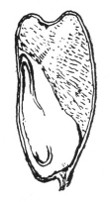
Fig. 279. Section of kernel of corn, showing the embryo, and the food supply at one side of it (at the right)
Brain rather than brawn is the cause of man's supremacy in this world.
Of all the beings that inhabit the earth he knows best how to use for
his own advantage all things that exist. His progress from savagery to
civilization is marked by his growing power to domesticate animals and
plants. Very early in his history man learned the value to himself of
the seeds of the cereals. He discovered that they may be kept a long
time without injury; that they contain a great amount of nutrition for
their bulk; that they are easily prepared for food; that, when planted,
they give largest return. Thus, we see, the advantages the plant mother
had developed for her young, man has turned to his own use. That the
food put up for the young plant is so protected and constituted as to
endure unhurt for a long time gives the cereal grains their keeping
quality. That it is concentrated and well packed renders it convenient
for man to transport. That the "box" is easily separated from the
"lunch" makes the preparation of food by crushing and sifting an easy
matter for man. That every mother plant, to insure the continuation of
the species, develops many seeds, so that in the great struggle for
existence at least some shall survive, makes the cereals profitable for
man to plant, and harvest the increase. Think once, how few ears of corn
it requires to plant an acre.
Because of all these things there has grown up between domestic
plants and man a partnership. Man relieves the plant of the
responsibility of scattering its seeds, and in return takes for himself
that proportion of the seeds which would have died in the
struggle for existence had the plant remained uncultivated. This
partnership is fair to both parties.
Different plants store food materials in different proportions in
their seeds; the most important of these food substances are
starch, oil, protein, and mineral matter. All of these materials are
necessary to man as food. In the cereals the seeds contain a
large proportion of starch, but in the nuts, like the butternuts and
[411]
walnuts, there is a predominance of oil. Let us for a moment
examine a kernel of corn and a kernel of wheat and see how the food
is arranged. Fig. 279 is a kernel of corn cut in two lengthwise;
at the lower left-hand corner are the root parts and leaf parts of
the young plant (the embryo); above the embryo is the loose
starch material. Now we have the baby corn plant lying at one
side, and its food packed about it. However, this food is in the
form of starch, and must be changed to sugar before the young
plant can partake of it and grow. There lies a connecting part
between the germ and its food, the scutellum. This is so constituted
that when soaked with water it ferments the starch and
changes it to sugar for the young plant's use.
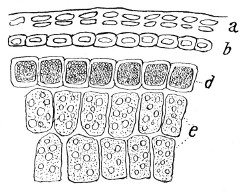
Fig. 280. Section of grain of wheat.
The germ itself is also a very nutritious food for man; hence the seed
is eaten, "baby and all." In the corn, those kernels with the largest
germs have the largest food value, and, therefore, to-day corn breeders
are developing kernels with very large embryos.
If we examine the microscopic structure of the food part of a grain of
wheat (Fig. 280), we find that there are two outer layers, a and b.
Next there is a row of cells d that divides these outer layers from
the flour cells within. This is the aleurone layer. At e are the flour
cells which constitute the central portion of the wheat kernel. They
contain starch, and also gluten, and some oil, and some mineral
substances. In grinding to make white flour, the miller tries to leave
the aleurone layer of cells d with the outer layers a and b, for
if it is mixed with the flour the latter spoils much sooner, and it is
also darker in color. In the seed is a ferment that helps digest the
food for the young plant.
In order to think more intelligently about our use of food, let us
find out, if we can, which parts of the food stored up by the plant
for its sustenance are used by us both for ourselves and our livestock.
The intelligent farmer gives his stock a carefully balanced
ration, i. e., food that is well proportioned for the growth
and product of the animal. If he wishes his cows to give more
milk he may give them more proteids in their food, and less starch
and fat. If he wishes to fatten them he may give them a greater
amount of starch and fat and less of the proteids. In order to
[412]
know what these proteids and starch and fat mean, both to us and
to the plant, we have to know a little chemistry. The following
table may aid us in this:
| Nutritive substances which contain nitrogen. |
{ |
Proteids (casein, gluten, legumen, etc., albuminoids, gelatine, white of egg, etc.). |
| Nutritive substances which do not contain nitrogen. |
{ |
The carbohydrates (sugar and starch). Fats (oils, butter). |
| Mineral substances. |
{ |
Lime, phosphorus, sulfur, etc./ |
The substances mentioned in the above table are all needful to
sustain the life of man and beast. If we compare the body to a
steam engine, then we can see that its whole framework is built
out of the proteids, mineral matter and water. The starch and sugar
and fats constitute the fuel used to heat the boiler and make the
engine move. Strictly speaking the proteids are also used somewhat
as fuel, as well as for framework. It is easily seen from this
that in order to be healthy we should try to give ourselves food
containing a proper amount of building material to repair the
breakage and wear and tear in the engine, and also give ourselves
enough fuel to make the boiler do its greatest possible work. For
if we do not have sufficient building material we break down, and
if we do not have sufficient fuel we lack energy. Food thus properly
proportioned is called a "well balanced ration."
A well balanced ration per day for the average human being is
as follows:
| Proteids, |
.40 |
lbs. |
| Starch, |
1.00 |
" |
| Fats |
.40 |
" |
| Mineral matter, |
.10 |
" |
|
—— |
|
|
1.90 |
lbs. |
The above is the amount of nutriment necessary, and in addition
to this there should be sufficient bulk to keep the digestive organs
healthy. We are just now entering upon the era of intelligence
in relation to our food. It seems strange that this intelligence
should first be applied to our domestic animals rather than to
man. As soon as the farmer discovered that to make his animals
pay better he must give them the right proportions of building
[413]
material and fuel for energy, he demanded that the agricultural
chemists give him directions for mixing and preparing their food.
But how few of the cooks in our land understand in the slightest
degree this necessity for the proper proportions to our food!
When they do we may look forward to entering upon an era of
serene good health, when we shall have strength to bear and
ability to do.
In answering the following list of questions you may be obliged
to consult with the miller, or feed-dealer, but it is to be hoped
that you will gain a clear conception of the parts of the seed used
in making foods from cereals.
1. What is graham flour? How does it differ from white wheat
flour?
2. What is whole wheat flour?
3. What is bran?
4. What is cracked wheat?
5. What are shorts, middlings, or canaille?
6. Which of the above are considered the more nutritious and
why?
7. What part of the corn kernel is hominy?
8. What is corn meal?
9. Is corn bran considered good food?
10. What is gluten meal?
11. What is germ meal?
12. Why is corn fattening to cattle?
13. How much of the oat grain is contained in oat meal?
14. What is a cotyledon?
15. Show by sketch or describe the cotyledon in the chestnut,
the walnut or hickory nut, and the bean.
16. Describe or show by sketch the position of the germinal
portion in each of these.
If you cannot find the germ in these, soak them in water for
several days and then observe.
The following publications may be had from the Department of
Agriculture, Washington, D. C., on application:
Circular No. 46, Revised—The Functions and Uses of Food.
By C. F. Langworthy.
Circular No. 43, Revised—Food-Nutrients-Food Economy.
The Cost of Food as Related to its Nutritive Value. By R. D.
Milner.
[414]
A Problem in Feeding.
As our knowledge increases, we give greater attention to the
economical and efficient use of all feeds for live-stock. We cannot
afford to feed even the corn stalks carelessly, either for the
immediate concern of the pocket-book or for the good of the
animal. The results of many experiments in feeding lead to the
conclusion that a suitable daily ration for a cow giving milk and
weighing 1,000 pounds should contain 24 pounds of dry matter,
of which 2.5 pounds is digestible protein; .4 pounds digestible
fat; and 12.5 pounds digestible carbohydrates. In such a ration,
the ratio of digestible protein to digestible carbohydrates in the
ration will be as 1 is to 5.4. In computing this ratio the amount
of fat, multiplied by 2.4, is added to the carbohydrates. The fiber
and the nitrogen-free extract constitute the carbohydrates. Individual
animals vary so much in digestive capacity and in other
respects that the foregoing standards may be frequently widely
departed from to advantage. Thus many animals will profitably
use more than 24 pounds of dry matter in a day and the ratio of
protein to carbohydrates may vary from 1:5 to 1:6.5 without
materially affecting the amount or character of the product.
Standards are useful as guides. The art of feeding and the skill
of the feeder consist in determining in how far the standard
should be conformed to or departed from in each individual
case.
Suppose a farmer has corn silage and timothy hay, and may purchase
cotton seed meal, wheat bran and buckwheat middlings, how
may they be combined so that the ration shall contain 24 pounds
dry matter, and the ratio of protein to the carbohydrates shall be
approximately 1:5.4? The following table gives the data:
|
Water. |
Protein. |
Fiber. |
Nitrogen-free
extract. |
Fat. |
| In 100 pounds of silage[60]. |
79.1 |
1.2 |
4.3 |
7.4 |
.6 |
| Timothy hay |
13.2 |
3.4 |
16.8 |
28.4 |
1.2 |
| Cotton seed meal |
8.2 |
31.3 |
1.3 |
10.9 |
11.9 |
| Wheat bran |
11.9 |
13.6 |
1.8 |
43.1 |
3.2 |
| Buckwheat middlings |
13.2 |
22.0 |
[61] |
33.4 |
5.4 |
[415]
LEAFLET XLV.
THE LIFE HISTORY OF A BEET.[62]
By MARY ROGERS MILLER.
If you are fond of a dish of "greens" made of young beet leaves in early
summer, you must see to it that there are beets in the garden. What
shall be planted? Seeds. Certainly; but where do the seeds come from?
Most of us buy them from a seedsman, it is true; but somebody must grow
them. They are not manufactured articles. If the beet plant produces
seeds it must first have flowers. Have you ever seen the beet in
blossom? When do the flowers come and how do they look?
Study the picture in Leaflet LII. Read the history beneath the picture.
Better still, get a plump red beet from the cellar, and plant it in a
can, a box, or a flower-pot. If no beets are to be had, a turnip, a
carrot, or a parsnip will do as well. It seems that "plants" come from
beet roots as well as from beet seed. The root you plant in the
flower-pot grew last summer from a seed. When may we expect the plant to
produce seeds of its own, thus multiplying according to its nature? If
you keep a beet plant long enough it will answer this question.
Beet seeds are rather slow in germinating. For this reason it is
common to soak them in warm water several hours or a day before
planting in the garden. These facts are interesting in themselves;
and instead of being discouraged should we not try to find out
some reason why the beet seed should take more time than the
corn or the bean? From a comparative study of a beet seedling
and of a plant which comes from a beet root throughout a season,
one may learn the whole life history of a beet. This story is not
written down in books. Every stage of growth noted in the two
plants should be regarded as typical of the life of an individual,
for each plant must pass through all these stages in its development
from seed to seed again.
The seedling beet pushes out roots and begins early to take
[416]
food from the soil. One may even see the root-hairs through
which the liquids enter the plant. Inquire if the plant growing
from a beet root has put out new roots. Have not its old ones
dried long ago in the cellar? It is a good idea to have more than
one plant, so that investigation of a matter like this may go on
without disturbing all. Where, if not from the soil through roots,
does the food come from which nourishes those thick-ribbed
leaves? From the stored-up material in the root, does it not? Is
this not the plant's way of providing for the second half of its
life, after a long resting period in the "beet" stage? When the
"plant" or top has grown quite large, how does the old beet look?
We may read in the botany that certain plants are biennials,
taking two seasons to pass through all the phases from seed to
seed; but we shall not know the joy of gaining knowledge from
original sources nor experience the mental training that comes
with this "finding out" process until we have actually planted
the beets or other things and watched them grow.
The following questions relate to the study of a beet plant.
Any other available plant may be reported on. The important
thing is that a minute study be made of some particular plant.
What plant are you making this special study of this month?
What care do you give it?
What conditions of temperature and moisture do you find most
beneficial to its growth?
What other plants are related to it? (Mention a wild and a
cultivated plant.)
What leads you to think them related? (Make this clear and
definite.)
How do the plants which come from beet roots differ from
those which come from the seed?
Of what utility to the plant is the fleshy root of beet, turnip, or
carrot? When is this root made use of by the plant?
What becomes of the old beet as the plant grows larger and
stronger?
What is the natural length of life of an individual beet plant?
Through how many changes of form does it pass? Which of
these are "resting" stages?
Give the events in the life history of a beet in chronological
order by seasons, beginning with a seed in the spring of 1903, and
ending with the first crop of ripened seed.
[417]
LEAFLET XLVI.
PRUNING.[63]
By MARY ROGERS MILLER.
You should know how the trees in your school yard have been pruned. Who
did the work, nature or a man with a saw? Some people hold to the idea
that pruning is unnatural, and therefore should not be practiced. Let us
see if this is true. Have you ever gone into the deep woods after a
storm? Who has been there, tearing and wrenching at the big limbs,
twisting the small branches until the ground is strewn with wreckage?
Nature has been pruning a few trees and she works with a fury which is
awe-inspiring. But the trees are much the worse for their encounter with
the forces they must obey without question. Their branches are broken;
mere stubs are left. With the melting snow and the April rains germs of
decay are likely to enter at every break in the bark. In a few years the
trunk may be weakened and the monarch of the woods lie prone upon the
forest floor.
We may learn the lesson of how not to prune by looking at this
great pine tree torn by the storm (Fig. 281).
"But why do we prune?" one asks. Let the horticulturist
answer. In a Farmers' Reading-Course lesson on The Care of
Trees, Professor Craig says: "Fruit trees must be pruned. If a
tree in an open field is allowed to go unpruned, the crown soon
becomes a dense mass of twigs and interlacing branches. Such
a tree may produce as large a number of apples as a well-pruned,
open-headed tree, but will there be the same percentage of merchantable
fruit? The chief effort of every plant under natural
conditions is expended in ensuring its own reproduction. This
is chiefly effected by means of seeds. A small apple may contain
[418]
as many seeds as a large one and even more. The orchardist wants
big fruits, and if they are nearly seedless so much the better."
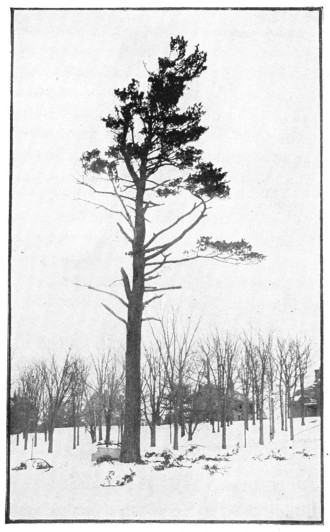
Fig. 281. A pine tree pruned by the storm.
In a tree top there is a sharp struggle for existence. But few of the
twigs which started from last year's buds will reach any considerable
size. One needs only to count the dead and the dormant buds on a branch,
and the weak, stubby, or decayed side shoots to appreciate this fact. If
part of the branches are cut out, this struggle is reduced and energy is
saved. By judicious pruning the tree may be shaped to suit the needs of
the owner. If a low tree is desired to make fruit-gathering easy pruning
keeps the head down. An open, spreading habit may be encouraged by
cutting out such branches as tend to grow close to the main trunk. A
careful orchardist has an ideal in his mind and knows how to prune to
bring the tree up to his standard. He knows the habits of trees of
different varieties. He will not prune all alike. He must prune some
every year, or the trees will not carry out his plans.
The pruner should not only know why he prunes, but how the
work should be done. He should be able to tell why he removes
one limb and leaves another. When I look at the trees in parks
and along the streets I wonder at the careless pruning. Judging
from the way they are treated one would think that a tree could
be produced in "a year or two or three at most."
[419]
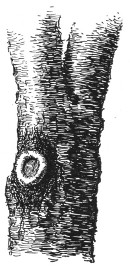
Fig. 282. Close cutting results in prompt healing.
Pruning should not be confined to fruit trees. It may be practiced with
profit on all kinds of plants from shade trees to house plants. Pinching
off the terminal bud of a young geranium makes the plant branch. Cutting
the lower limbs of a young elm makes the tree more stately. Nature may
do this, but broken branches leave wounds which the tree cannot heal.
Small branches may be cut close with a sharp knife or pruning shears.
The tree readily heals these places. It is little short of a crime to
break or tear limbs from trees. The injury done to the trees is bad
enough; but does not such heedless treatment of living things also have
a baneful influence on the mutilator?
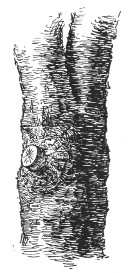
Fig. 283. The long stub does not heal.
For larger branches, if these must come off, no tool is better than a
sharp saw. The cut should be smooth and clean. No ragged edges of bark
should be left. The branch should all be cut off, and care should be
taken not to tear the bark about the wound. If a stub six or eight
inches long, or even one inch, be left, the tree is likely to suffer.
The branch started years ago from a bud on the side of the main trunk,
then but a twig itself. The fibers of the branch are continuous with
those of the trunk. In the air are the germs of decay. These take hold
of the bare stub and soon make their way to the center of the tree
itself. Try as it may, the tree cannot quickly heal a wound so far from
the main paths traveled by the sap in the trunk.
The two illustrations (Figs. 282, 283) show the right and the wrong way
to remove a limb. When the branch is cut close, new growth takes place
all around the cut surface and in a few years the wound is healed.
Bad pruning is worse than no pruning. Do you not think that
nature students should use their influence to protect the trees in
the school grounds, in the door yards, and along the streets?
Trees have insect and fungous enemies enough without having to
contend against carelessness and neglect.
[420]
Questions on Pruning.
1. Describe the results of some of the natural forces you have
seen pruning trees. Observe willows after a storm.
2. Are all sorts of trees affected alike by wind, ice, and
snow?
3. From your observations which kinds suffer most? Give
your opinion as to why.
4. Nature does not always prune in this boisterous fashion.
Silent forces are at work pruning out the weak buds and shoots,
giving the strong ones a better chance. Select a very young tree,
or a shrub like the lilac. Examine the tips of the branches.
You will find healthy buds on last season's growth. See if you can
find any dormant buds. Are there any weak-looking or dead
twigs?
5. Compare the number of strong healthy shoots with
the number which the plant started to make. How many of
each?
6. Mention several good effects which may result from
pruning.
7. What are some of the bad results of over-pruning? Of
insufficient pruning?
8. Consult some orchard-owner concerning this subject. When
does he prune to increase the production of fruit? When to
increase the growth of the woody part of the tree?
9. If the lower branches of a tree are not removed, what is the
effect on the shape of the tree?
10. For what kinds of trees is this form desirable?
11. What is your opinion as to the shearing of evergreens into
fantastic shapes?
12. If a tree has a tendency to grow crooked, how should one
prune to correct the habit?
13. Would you prune an elm tree just as you would an apple
tree? Why?
14. Why does pinching off the terminal bud of a geranium produce
a more bushy plant?
15. Discuss in full the reasons for cutting a limb off smoothly
and close to the main trunk or larger branch. Look at every tree
you pass to see whether it has been pruned well. Has it been able
to cover its wounds by the healing process?
16. Is it correct to suppose that "anybody" can prune a tree?
[421]
17. The cut surfaces made by pruning large limbs from trees
are often covered with thick paint, tar, or Bordeaux mixture.
What is the purpose of this?
18. Why is it better to prune a little every year than a great
deal once in five years?
19. When is the best time to prune shade trees? Why?
20. Does a tree carry the bases of its branches upward as it
grows higher, or does the base of every branch remain at the level
from which it started originally? Observe many trees in different
situations before making up your mind on this point.
[422]
[423]
LEAFLET XLVII.
A STUDY OF A TREE.[64]
By ANNA BOTSFORD COMSTOCK.
The Sugar Maple.
The maple puts her corals on in May,
While loitering frosts about the lowlands cling,
To be in tune with what the robins sing,
Plastering new log-huts 'mid her branches gray;
But when the autumn southward turns away,
Then in her veins burns most the blood of Spring,
And every leaf, intensely blossoming,
Makes the year's sunset pale the set of day.
—Lowell.
Like a friend is a tree, in that it needs to be known season after
season and year after year in order to be truly appreciated. A person
who has not had an intimate, friendly acquaintance with some special
tree has missed something from life. Yet even those of us who love a
tree because we find its shade a comfort in summer and its bare branches
etched against the sky a delight in winter, may have very little
understanding of the wonderful life-processes which have made this tree
a thing of beauty. If we would become aware of the life of our tree we
must study it carefully. We should best begin by writing in a blank book
week after week what happens to our tree for a year. If we keep such a
diary, letting the tree dictate what we write, we shall then know more
of the life of our tree.
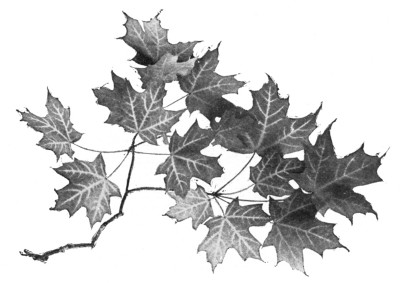
Fig. 284. Sugar maple.
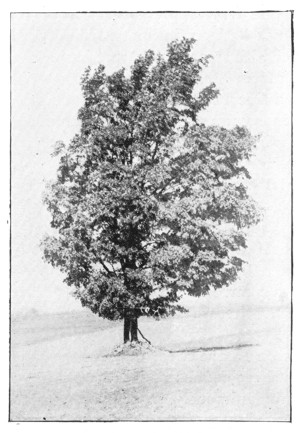
Fig. 285. A sugar maple grown in an open field.
In selecting a tree for this lesson I have chosen the sugar maple,
for several reasons. It is everywhere common; it is beautiful; it
is most useful; and it has been unanimously chosen as the representative
[424]
tree of the Empire State. Let each of us choose some maple tree in our
immediate vicinity that shall be the subject for our lesson now, and
again in the winter, and again in the spring. Our first thought in this
study is that a tree is a living being, in a measure like ourselves, and
that it has been confronted with many difficult problems which it must
have solved successfully, since it is alive. It has found breathing
space and food; it has won room for its roots in the earth and for its
branches in the light; and it has matured its seeds and planted them for
a new generation.
Brief Physiology of the Tree.
The tree lives by breathing and by getting its daily food. It breathes
through the numerous pores in its leaves, and green bark, and roots. The
leaves are often
[425]
called the lungs of the tree, but the young bark also has many openings
into which the air penetrates, and the roots get air that is present in
the soil. So the tree really breathes all over its active surface, and
by this process takes in oxygen from the air. It gives off carbon dioxid
as we do when we breathe.
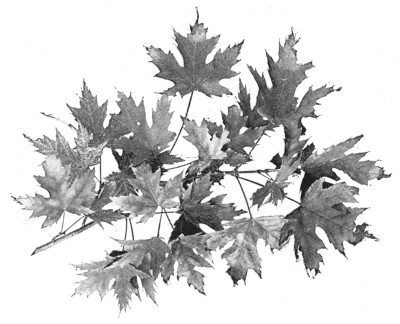
Fig. 286. Silver maple.
While the leaves act as partial lungs they have two other most
important functions. First, they must manufacture the food for
the entire tree. "Starch factories" is the name that Uncle John
gives to the leaves when he talks to children, and it is a good
name. The leaf is the factory; the green pulp in the leaf cells
is part of the machinery; the machinery is set in motion by sun-shine
power instead of steam or water power; the raw materials
are taken from the air and from the sap sent up from the roots;
the first product is usually starch. Thus, it is well when we begin
the study of our tree to notice that the leaves are so arranged as
to gain all sunlight possible, for without sunlight the starch
factories would be obliged to "shut down." It has been estimated
that on a mature maple of vigorous growth there is exposed to
the sun nearly a half acre of leaf surface. Our tree appears to
us in an unfamiliar light when we think of it as a starch factory
covering half an acre. Plants are the original starch factories.
The manufactories that we build appropriate the starch that
plants make from the raw materials.
[426]
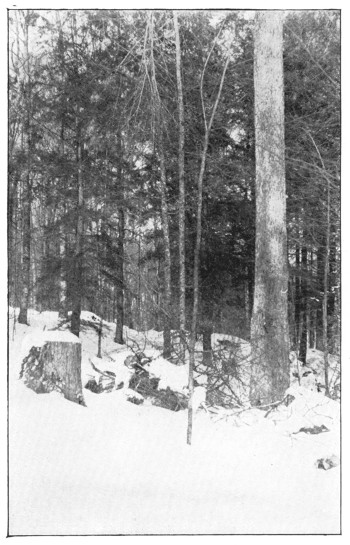
Fig. 287. The bole of a sugar maple grown in a wood.
Starch is plant-food in a convenient form for storage; but as it cannot
be assimilated by plants in this form it must be changed to sugar before
it can be transported and used in building up plant tissues. Hence the
leaves have to perform the office of a stomach in order to digest the
food they have made for the use of the tree; they change the starch to
sugar, and they take from the sap nitrogen, sulfur, phosphorus, and
other substances which the roots have appropriated from the soil, and to
these they add portions of the starch, and thus make the proteids which
form another part of the diet of the tree. It is interesting to know
that while these starch factories can operate only in the sunlight, the
leaves can digest the food, transport it, and build up tissues in the
dark.
The autumn leaf, which is so beautiful, has completed its work. The
green material which colors the pulp in the leaf cells is withdrawn,
leaving there material which is useless, so far as the growing of the
tree is concerned, but which glows gold and red, thereby making glad the
eye that loves the varying tints in autumn foliage. It is a mistake to
believe that the frost makes these brilliant colors: they are caused by
the natural old age and death of the leaf, and
[427]
where is there to be found old age and death more beautiful? When the leaf
turns yellow or red it is making ready to depart from the tree; a thin
corky layer is being developed between its petiole and the twig, and
when this is finally accomplished the leaf drops from its own weight,
from the touch of the lightest breeze, or from a frost on a cold night.
Observations on the Maples.
We want you to know the maples from actual observation.
Discover the characteristic forms of the tree, the character of
bark, fruits, and leaves. Verify the pictures in this lesson.
Though the fruit of the sugar maple matures in midsummer, yet
you may perhaps find beneath your tree some of the keys or seeds
now partially planted. If the tree stands alone you may perchance
see how well she has strewn its seeds, and how many of
its progeny have been placed in positions where they can grow
successfully.
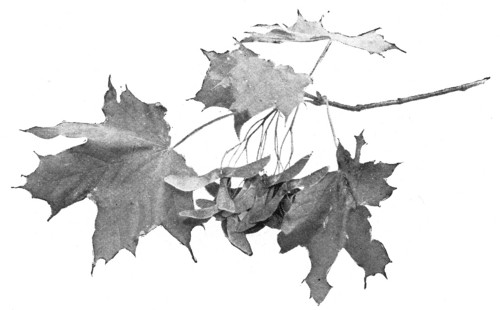
Fig. 288. Leaves and fruits of Norway maple.
We have in New York State seven species of maple common in
our forests. Two of these are dwarf species rarely attaining
thirty-five feet in height, more often found as mere bushes. These
two are the mountain maple and the striped maple or moosewood.
This latter is sometimes called goose-foot maple, because its leaf
is shaped somewhat like the foot of a goose. Of the maples that
attain to the dignity of tall trees we have four species: the sugar
[428]
maple, the silver or white maple, the red or swamp maple, and the
box elder. The leaf of the box elder does not look like the leaf
of a maple at all; it has a compound leaf of three or five leaflets,
but the flowers and fruits are those of the maples. There is also
a variety of sugar maple that is called black maple. We have
planted in our parks the sycamore and Norway maples introduced
from Europe, and also ornamental species from Japan. Our
native species are easily distinguished from these and from each
other; just a little observation as to the shape of the leaves, the
form of the trees, and the character of the bark enables a person
to tell all these species at a glance. I hope that you will become
familiar with the seven native species. Such knowledge is not
only of practical use, but gives real zest and pleasure. When a
person walks in the morning he should be able to call his tree
acquaintances as well as his human acquaintances by name.
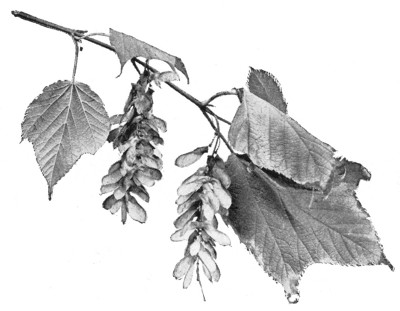
Fig. 289. Leaves and fruits of striped maple.
Questions on the Maples.
1. How many species of maple trees do you know and what
are they?
2. How do you distinguish the red maple and the silver maple
from the sugar maple?
3. What is the shape of the one tree you have chosen to study?
4. What is there in its shape to tell you of its history, i.e., did
it grow in the open or in the forest? Was it ever shaded on either
[429]
side; if so, what was the effect? How have the prevailing winds
affected its shape?
5. How old do you think the tree is?
6. Was the tree injured by storm or insects during the past
season; if so, how?
7. Study the leaves on this tree and note any differences in
shape and color.
8. What is the use of the skeleton of the leaf?
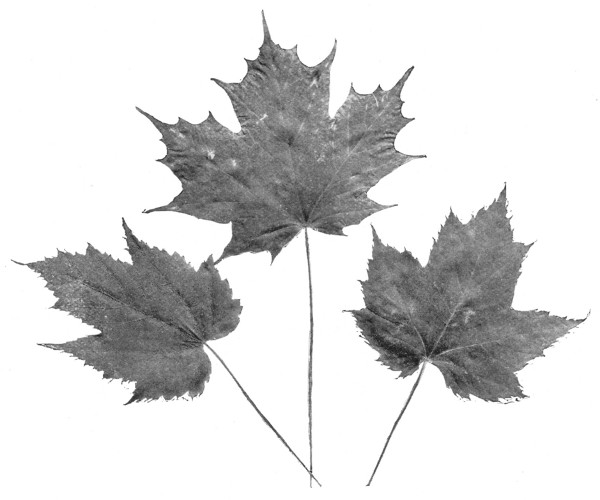
Fig. 290. Leaves of mountain maple, sugar maple, red maple.
9. Is there always a bud in the axil where the leaf stalk joins
the twig?
10. How are the leaves arranged on the twig?
11. What is the color of the tree this autumn?
12. When did the leaves begin to fall? Place in your note book
the date when the tree finally becomes bare.
[430]
13. Have you found any seeds from your tree? If so, describe
them.
14. How are they dispersed and planted?
15. Are both seeds of the pair filled out?
16. How high is your tree?
17. How large an area of shade does it produce? If it stands
alone, measure the ground covered by its shadow from morning
until evening.
18. How has its shadow affected the plants beneath it? Are the
same plants growing there that grow in the open field?
19. Make a sketch of the tree you are studying, showing its
outline.
20. Make a sketch of the leaf of the sugar maple.
[431]
LEAFLET XLVIII.
THE MAPLE IN FEBRUARY.[65]
By ANNA BOTSFORD COMSTOCK.
Sap.
Strong as the sea and silent as the grave, it ebbs and flows unseen:
Flooding the earth,—a fragrant tidal wave, with mists of deepening green,
—John B. Tabb.

"Tapping the sugar bush" are magical words to the country boy and girl.
The winter which was at first so welcome with its miracle of snow, and
its attendant joys of sleighing and skating, begins to pall by the last
of February. Too many days the clouds hang low and the swirling flakes
make out-of-door pursuits difficult. Then there comes a day when the
south wind blows blandly and the snow settles into hard, marble-like
drifts, and here and there a knoll appears bare, and soggy, and brown.
It is then that there comes just a suggestion of spring in the air; and
the bare trees show a flush of living red through their grayness and
every spray grows heavy with swelling buds. Well do we older folk
remember that in our own childhood after a few such days the father
would say, "We will get the sap buckets down from the stable loft and
wash them, for we can tap the sugar bush soon if this weather holds." In
those days the buckets were made of staves, and were by no means so
easily washed as are the metal buckets of to-day. Still do we recall the
sickish smell of musty sap that greeted our nostrils when we poured the
boiling water in to cleanse those old, brown buckets. During the long
winter evenings we had all had something to do with the fashioning of
the sap spiles made from selected stems of sumac; after some older one
had removed half of the small branch lengthwise with a draw-shave we
younger ones had cleared out the pith, thinking thirstily meanwhile of
the sweet liquid which would sometime flow there.
[432]
With buckets and spiles ready when the momentous day came,
the large, iron caldron kettle was loaded on a stoneboat together
with the sap cask and log chain, the axe and various other utensils,
and as many children as could find standing room; and then the
oxen were hitched on and the procession started across the rough
pasture to the woods where it eventually arrived after numerous
stops for reloading almost everything but the kettle. When we
came to the boiling-place we lifted the kettle into place and flanked
it with two great logs, against which the fire was to be kindled.
Meanwhile the oxen and stoneboat had returned to the house for
a load of buckets; and the oxen blinking with bowed heads or
with noses lifted aloft to keep the underbrush from striking
their faces "geed and hawed" up hill and down dale through the
woods, stopping here and there while the man with the auger
bored holes in certain trees near other holes which had bled sweet
juices in years gone by. When the auger was withdrawn the sap
followed it and enthusiastic young tongues met it half way though
they received more chips than sweetness therefrom. Then the
spiles were driven in tightly with a wooden mallet.
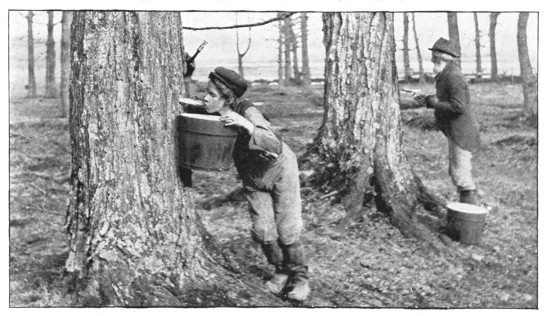
Fig. 291. Sugar making in New York.
The next day after "tapping," those of us large enough to wear
the neck-yoke donned this badge of servitude and with its help
brought pails of sap to the kettle, and the "boiling" began. As
the evening shades gathered, how delicious was the odor of the
sap steam permeating the woods farther than the shafts of fire-light
pierced the gloom! How weird and delightful was this
[433]
night experience in the woods! and how cheerfully we swallowed
the smoke which the contrary wind seemed ever to turn toward
us! We poked the fire to send the sparks upward and now and
then we added more sap from the barrel and removed the scum
from the boiling liquid with a skimmer which was thrust into the
cleft end of a stick to provide it with a sufficiently long handle.
As the evening wore on we drew closer to each other as we told
the stories of the Indians and the bears and panthers that had
roamed these woods when our father was a little boy; and there
came to each of us a disquieting suspicion that perhaps they were
not all gone yet, for everything seemed possible in those night-shrouded
woods; and our hearts suddenly jumped into our
throats when nearby there sounded the tremulous, blood-curdling
cry of the screech owl.
It was the most fun to gather the sap in the warmer mornings,
when on the mounds the red squaw-berries were glistening through
a frosty veil; then we looked critically at the tracks in the snow
to see what visitors had come sniffing around our buckets. We
felt nothing but scorn for him who could not translate correctly
those hieroglyphics on the film of soft snow that made white again
the soiled drifts. Rabbit, skunk, squirrel, mouse, muskrat, fox:
we knew them all by their tracks.
After about three days of gathering and boiling the sap, came
the "syruping down." During all that afternoon we added no
more sap, and we watched carefully the tawny steaming mass in
the kettle; and when it threatened to boil over we threw in a thin
slice of fat pork which seemed to have some mysterious, calming
influence. The odor grew more and more delicious, and finally
the syrup was pronounced sufficiently thick. The kettle was
swung off the logs and the syrup dripped through a cloth strainer
into the carrying pail. Oh! the blackness of the material left
on that strainer! but it was "clean woods-dirt" and never
destroyed our faith in the maple sugar any more than did the
belief that our friends were made of "dirt" destroy our friendship
for them.
Now the old stave bucket and the sumac spile are gone, and
in their place a patent galvanized spile not only conducts the sap
but holds in place a tin bucket carefully covered. The old caldron
kettle is broken or lies rusting in the shed. In its place are
evaporating vats placed over furnaces with chimneys, built in the
new-fangled sugar houses. The maple molasses of to-day seems to
[434]
us a pale and anæmic liquid and lacks just that delicious flavor
of the rich, dark nectar which we, with the help of cinders and
smoke and various other things, brewed of yore in the open woods.
While sugar-making interests us chiefly as one of our own
industries, yet we must not forget that it is based upon the life
processes of the maple tree, and in studying about it we may be
able to learn important facts about the tree which we have chosen
for our study.
Questions on the Maple Tree.
1. How does the maple tree look in winter? Describe it or
sketch it.
2. Are the buds on the twigs opposite or alternate?
3. Are the tips of the twigs the same color as the bark on the
larger limbs and trunk?
4. If you can draw, make a pencil sketch, natural size, of three
inches square of bark of the maple tree trunk.
5. How does the bark on the trunk differ from that on the
branches?
6. How does the bark on the trunk of a maple tree differ from
that on the trunk of a soft maple or an elm?
7. What work for the tree do the trunk and branches perform?
8. Is the tree tapped on all sides? If not, why?
9. How deep must the spiles be driven successfully to draw off
the sap?
10. Would you tap a tree directly above or at the same spot
tapped last year; or would you place two spiles one above the
other? Give reasons.
11. Why does the sap flow more freely on warm days after cold
nights?
12. Is the sap of which we make sugar going up or down?
13. How does the sugar come to be in the sap?
14. Why is the sugar made during the "first run" better than that
which is made later? Why cannot you make sugar in the summer?
15. Does it injure trees to tap them?
16. Do the holes made in earlier years become farther apart as
the tree grows?
17. What other trees besides the sugar maple give sweet sap?
18. What animals, birds, and insects are to be seen in the woods
during sugar-making time?
19. Have you ever seen the tracks of animals on the snow in the
woods? If so, make pictures of them and tell what animals made
them.
[435]
LEAFLET XLIX.
THE RED SQUIRREL OR CHICKAREE.[66]
By ANNA BOTSFORD COMSTOCK.
"All day long the red squirrels came and went, and afforded me much
entertainment by their manœuvres. One would approach at first warily
through the shrub-oaks, running over the snow crust by fits and starts like
a leaf blown by the wind, now a few paces this way, with wonderful speed
and waste of energy, making inconceivable haste with his "trotters" as if
it were for a wager, and now as many paces that way, but never getting on
more than half a rod at a time; and then suddenly pausing with a ludicrous
expression and a gratuitous somerset, as if all the eyes in the universe were
fixed on him,—for all the motions of a squirrel, even in the most solitary
recesses of the forest, imply spectators as much as those of a dancing girl,—wasting
more time in delay and circumspection than would have sufficed to
walk the whole distance,—I never saw one walk,—and then suddenly,
before you could say Jack Robinson, he would be in the top of a young
pitch-pine, winding up his clock and chiding all imaginary spectators,
soliloquizing and talking to all the universe at the same time,—for no reason
that I could ever detect, or he himself was aware
of, I suspect."—Thoreau.

From contact with civilization some wild animals flourish while others
are soon exterminated by association with man. To this latter class
belongs the black squirrel. Within my own memory this beautiful creature
was almost as common in the rural districts of New York State as was the
red squirrel; but now it is seen no more except in most retired places;
while the red squirrel, pugnacious and companionable, defiant and shy,
climbs on our very roofs and sits there scolding us for daring to come
within his range of vision. One reason for the disappearance of the
black squirrel is, undoubtedly, the fact that its meat is a delicious
food. The red squirrel is also good food at certain times of the year,
but because of its lesser size, and its greater agility and cunning, it
has succeeded in living not merely despite of man, but because of man,
for now he rifles corn cribs and grain bins and waxes opulent by levying
tribute on man's own savings.
[436]
Although the red squirrel is familiar to us all, yet, I think, there
are few who really know its habits, which are as interesting as are
those of bear or lion. Note, for example, the way he peeps at us
from the far side of the tree, and the way he uses his tail as a
balance and a help in steering as he leaps. This same tail he uses
in the winter as a boa by wrapping it around himself as he lies
curled up in his snug house. His vocal exercises are most entertaining
also; he is the only singer I know who can carry two parts
at a time. Notice some time this autumn when the hickory nuts are
ripe that the happy red squirrel is singing you a duet all by himself,—a
high, shrill chatter, with a low chuckling accompaniment.
We usually regard nuts as the main food of squirrels, but this is
not necessarily so; for they are fond of the seeds of pines and
hemlocks, and also hang around our orchards for apple-seeds. In
fact, their diet is varied. The red squirrel is a great thief and
keeps his keen eye on chipmunks and mice, hoping to find where
they store their food so that he can steal it if he can do so without
danger to his precious self.
Questions on the Red Squirrel.
We want you to make some original observations on the red
squirrel.
1. In summer, what is the color of the red squirrel on the upper
parts? Beneath?
2. What is the color along the side where the two colors join?
3. Do these colors change in winter?
4. Tell how and where the squirrel makes its nest.
5. Does it carry nuts in its teeth or in its cheeks?
6. Has it cheek pockets like the chipmunk?
7. Does the red squirrel store food for winter use? If so, where?
8. Does it spend its time sleeping in winter like the chipmunk,
or does it go out often to get food?
9. Name all the kinds of food which you know it eats.
10. Did you ever see a red squirrel disturb birds' nests?
11. How does a squirrel get at the meat of a hard-shelled nut
like a black walnut, or a hickory nut? (Answer this by a sketch,
if you can draw.)
12. Do the squirrels of your neighborhood have certain paths
in tree-tops which they follow?
13. How many emotions does the squirrel express with his voice?
14. What kind of tracks does the red squirrel make in the snow?
(Show this by a sketch if possible.)
[437]
LEAFLET L.
THE IMPROVEMENT OF COUNTRY SCHOOL GROUNDS.[67]
By JOHN W. SPENCER.
My Dear Teacher:
Despite all that is said and done the average school ground is far short
of its possibilities in an artistic way. Of this you are well aware, and
no doubt you have often wished that you might remedy this defect. Your
hours are full of arduous work. Perhaps, however, you can interest your
children to help you to clean and to improve the grounds, without much
extra care or work on your part.
This illustration of a schoolhouse (Fig. 292) is taken from Bulletin
160, published by the College of Agriculture of Cornell University.
The title of the bulletin is "Hints on Rural School
Grounds." I wish you would send for the bulletin. It will be
mailed you free if you request it.
The picture is not an imaginary sketch, but a faithful representation
of what stood in a prosperous rural community less than
five years ago. To one familiar with country school buildings it
will not be considered as a solitary "awful example," but rather
as a type of many that are scattered over the State. I hope it is
not your misfortune to be teaching in such a house, even though
it is my desire to reach every teacher who is that luckless. However,
to make my talk more real let us "make believe," as children
say, that you are the priestess in a similar temple of learning.
Together we will plan how we can make the most of very uncongenial
surroundings.
[438]
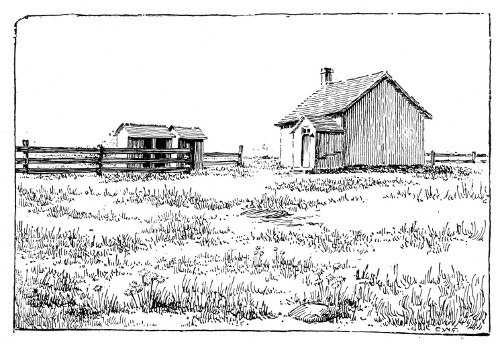
Fig. 292. A country school property.
It would be safe to wager a red apple that the inside of the
building is every bit as dilapidated as the outside. A community
that tolerates such a building would not be likely to have anything
but the rudest furniture and most of that on crutches. It would
be something out of the usual if the box stove is not short a leg
or two, with brick-bats being used as substitutes. You will be
fortunate if the stove door has two good hinges and if the wood is
not green. At the last school meeting, did the patrons instruct
the trustees not to pay more than six dollars per week for your
services? Was the proposition that the district raise five dollars,
to which the State would add five more for the purchase of books
for a library, unanimously voted down and the poor man who
introduced the resolution expected to apologize for his temerity?
The leading man in the district each Sunday during summer
drives two miles to salt his young stock, inspect fences, and see
how the yearlings are prospering; but he never thinks of visiting
the school to see how his children are progressing. Yet the people
of this district are not bad. They are counted good citizens by
the bar and judge, when they are drawn on juries. The public
buildings at the county-seat are models of their kind and these
gentlemen do not remonstrate as to the expense. Perhaps it has
not occurred to them that school buildings and grounds should
have as high a standard as those of the county. A correct public
[439]
ideal is everything. It is not a hopeless undertaking to advance
such an ideal in the community of which we are speaking.
I suggest to you as teacher in this school to undertake some
improvements in the grounds. I consider the above sketch to be a zero
case. If improvements can be developed here, it is reasonable to suppose
that the same can be repeated where conditions are primarily better. The
possibilities are sufficient to warrant the undertaking. The victory
will add to your strength. The lives of the children will be better
filled for the part they may do, and you will have started a public
improvement.
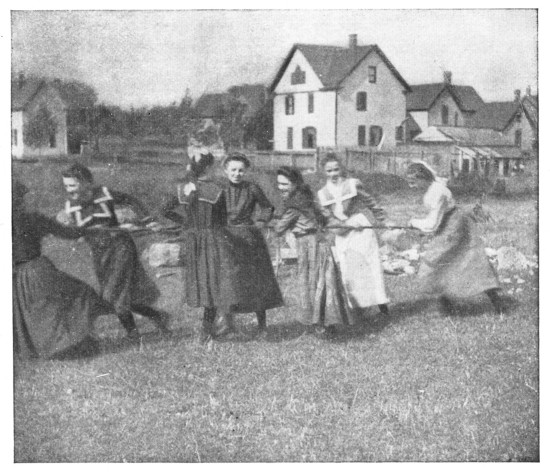
Fig. 293. "The girls organized themselves into a tug-of-war team."
I should not appeal to the parents for help. You have a fountain
of power in the children. It is necessary only to inspire and
guide them. This is no theory of mine. It is a result that has
been worked out in many instances.
The beautiful city of Rochester is proud of its schools. The
development of the town made the construction of new school
buildings necessary to such an extent that little money remained
[440]
for the improvement of the grounds. Some of them were located
in the breadwinners' districts. The grounds were as the contractor
left them; your imagination can picture their condition.
The interiors were well nigh perfect. The exterior was sometimes
a Sahara of mud and builders' rubbish. The principal of
one of the schools—a woman, by the way,—knowing the force in
children, set about to apply it to the improvement of the surroundings.
Her method was first to inspire, and then to direct. Her
success was ample. Both boys and girls participated. The girls
organized themselves into a tug-of-war team (Fig. 293). By fastening
ropes to sticks and beams, these things were hauled out of
sight. The boys leveled the hummocks and brought fertile soil
from some distance. This principal confined her improvements
to small areas—so small that the children wanted to do more
when they were through. From the time school opened until the
rigors of winter stopped the juvenile improvements, only part of
the space from the front of the building to the street was graded.
Some of the boys brought chaff from a haymow, which was raked
in as lawn grass seed. The following spring quite as many weeds
appeared as grass, but the children gave the weeds the personification
of robbers and made their career short. The promoters
had a just pride in what they had accomplished; and that meagre
bit of lawn meant vastly more to them than had it been made
by a high-salaried landscape gardener.
I am acquainted with another instance, where the patrons are
largely Polish Jews. I am credibly informed that the average
head of a family does not have a gross annual income to exceed
three hundred and fifty dollars. This necessitates that the mother
go out for work and that the children leave school as soon as the
law allows to take up work. Yet with all these unfavorable circumstances
the pupils have a pride in their school grounds that is glorious
to see. In the fall of 1901 prizes were offered for the greatest
improvement of school grounds made by children. Nothing
daunted, the principal entered his grounds in competition with
those in the more wealthy part of the city. The committee of
awards gave him the third prize. To judge from the mere physical
side, the decision was no doubt just; but when judged on the score
of getting the greatest results from the least material, the principal
and his school may have deserved the first prize, plus a reward.
The chances are that your fuel is wood, and perhaps not very
dry at that. It is in a pile in the open. Sometimes the sticks are
[441]
scattered over half the lot. This you can prevent by properly
appealing to the pride of your pupils. You will find that they
wish to be more tidy than is the school over in Whippoorwill Hollow
or in some other district that is considered to be a little more
in the back country than your own.
About the time you hear the first spring notes of the bluebird
and the robin, prepare public opinion in your little school community
for a spring furnishing. You can devise many ways to
inspire them. Tell them about Col. George R. Waring and his
white brigade and what they did to make New York City cleaner
than it had been for many decades before. After the Spanish
war, when Cuba became a responsibility upon the United States,
the question arose as to what could be done to make filthy
Havana cleaner and freer from yellow fever. No one was thought
by the Federal government so competent to solve the problem as
Colonel Waring. He went, spared not himself, and did his duty,
did it so fearlessly that he died the victim of the filth he had
fought so valiantly. He had done much during previous years to
commend his memory to posterity; but probably nothing will stand
out so prominently as his great ability to correct municipal untidiness.
Ask your pupils to be Warings in their own neighborhoods.
By this time the ground will be bare of snow and it will be
soft. Ask some of the pupils to bring rakes, and have them
gather up the rubbish. You can all play gypsies when you
gather about the bonfire. This will be a favorable time to sow
grass seed; for I have no doubt the school lot will need it. A
lawn mixture of seed would be ideal, but I hardly expect you to
pay for it. At this stage of your improvements, I scarcely expect
that any of the patrons of your school would do so either. Later
some of them may feel differently. Your pupils can at least
follow the plan of those spoken of in Rochester—get chaff from
a haymow. It will inevitably be a mixture of grass and weeds,
but the latter can be pulled out after germinating. It is barely
possible that some farmer will give you some clover and timothy,
such as he uses in seeding his meadow; and this will be far better.
Next, I should put out a hitching-post. When your school
commissioner calls it will be appreciated. If that functionary
does not publicly compliment your school for even such small
improvements, I wish you would report such indifference to me,
giving his full address, and I will request him to explain this
forgetfulness.
[442]
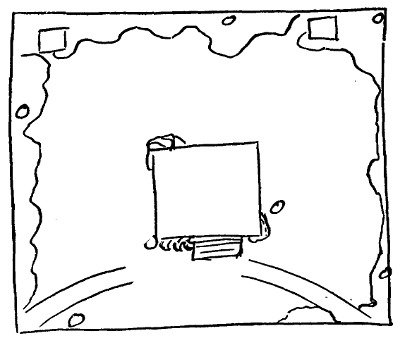
Fig. 294. Showing how the borders may be planted.
Good results in landscape-gardening depend on observing certain
principles, the same as with our wardrobe. Many a clever girl will
accomplish more in dress with twenty-five dollars than others can do
with twice that amount. Among the first and most important efforts is to
make a frame or setting for the house by planting around the borders of
the place. Sometimes the location will make this inconvenient if not
impossible, when, for instance, the building is placed near the street
or crowded between other buildings. Even in such cases, however, it is
well to keep the idea clearly in mind and to approach it as nearly as
circumstances will permit. An illustration of a normal location to which
this principle can be applied is shown in Fig. 294. The trees and the
higher shrubs are planted first and on the extreme borders of the lot,
with shorter shrubs, roses, and the like in front of them. This frame
can be given a finish by planting flowers or very low things next the
grass. If the area be ample, let the edges be irregular (Fig. 294); but
if very limited, straight lines become necessary.
The open space within the boundaries should be a mat of green
carpeting, for nothing can be more beautiful than sward. Fight
all influences to bedeck it with beds of flowers in forms of stars
and moons and other celestial and terrestrial designs. The
demands for such capers may be great, but hold out against them
boldly. Certain small shrubs, ferns, and flowers may be planted
along the walls of the building, particularly in the angles; but I
beg of you to leave the green plat unscalloped and unspoiled,
only as is necessary for drives and walks. When the buildings
are unsightly, cover with vines and plant bushes against them.
Fig. 295 illustrates how Fig. 292 may be improved with very
little effort.
Now I will speak of the actual planting. In the light of
unnumbered thousands of Arbor Day trees put out to struggle a
few weeks for life and then die, this may seem the most important
feature of my article. To the unsuccessful planter, let me suggest
that he select shrubs and trees which take care of themselves
[443]
under adverse conditions. We have a number of such. If they
were imported from Japan and sold at fancy prices, they would be
greatly appreciated. The common sumac is one of them. For a
shrub I know of nothing of its class so sure to bear the ordeal of
transplanting or to make more vigorous growth under adverse
conditions. It can be pruned to suit, and nothing can rival its
blaze of color in late autumn; yet as a farmer, I know the experience
of fighting against its existence in fence corners, about
stone piles, and on steep hillsides. I do this even though I am
fond of the shrub and admire it. It encroaches on my vineyard
and injures the crop. Grapes will help pay taxes and sumac will
not. In my cherry orchard it is a weed. In my back yard and on
the borders of my lawn it is an ornamental shrub. The same can
be observed of people. When in their proper sphere they are helpful
factors in a community; when out of it they are nuisances.
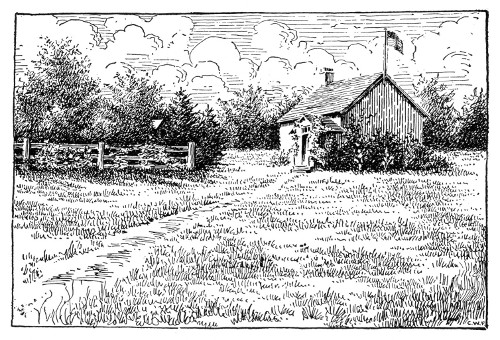
Fig. 295. How the grounds in Fig. 292 may be improved.
If you ask me to mention a tree most likely to live when planted
by unskilled hands, I should name the willow. I mean the most
common kind to be found in the northern States—the kind that
stands beside the roadside watering-trough. The impression is
common that willows will thrive only in wet places. It is true
that a willow is very comfortable in places where many other trees
will suffer from wet feet; yet it will give good results elsewhere.
It is reasonable to suppose that poor soil goes with a poor school
[444]
building, and a refined tree would probably find life hard in such
a place. I should certainly plant a willow in such cases. It will
thrive where a goat can, and where a sheep cannot. For city
places, the Carolina poplar is to be recommended. If the soil is
good enough, plant maples, elms, or other trees.
A judicious planting of Virginia creeper helps the appearance
of buildings both good and bad. I should surely plant it about
the main building and the outbuildings and fences, if the patrons
of the school did not object. The probabilities are that when
the vines have begun to cover some of the deformities of the
place, some finicky resident of the district will cut them out on
the plea that they promote decay of the weather-beaten clap-boards;
but do not be discouraged by such a possibility. Vines,
too, usually interfere with the painting of a building. Although
they may be taken down and put back after the painters are
through, the first effect is not regained unless the process of
putting back has been done with unusual care.
Do not make the mistake of planting too much. A small lawn
can be overdressed as is sometimes the case with women. Lilac,
Japan quince, syringa, hydrangea, and like common shrubs, could
be planted if the opportunities of space seem to warrant.
I hope it will be your taste to allow the limbs of the trees to
start low and those of the shrubs to begin as near the ground as
possible. I am aware that among country people it is the practice
to tolerate only the higher limbs. I can give a reason for this
only on the supposition that they must do something in pruning,
and the lower limbs are the most convenient to reach. I know a
man who came into possession of a place having a fine lot of
evergreens with the lower branches at the ground. By way of
proclaiming a change of ownership he cut away the lower
branches, leaving a bare trunk of about five feet. Before he
touched them they were beautiful green cones and when passing
the place I always turned my face in their direction to enjoy the
beauty. When he was through they were standing on one leg,
and a wooden leg at that. I have never felt kindly toward the
man since.
In the matter of planting I know of no better method than that
of the experienced orchardist. As a rule he buys his trees of a
nurseryman. They are often dug in the fall, and are planted the
following spring. During the interval they are stored in specially
constructed cellars, and at no time are the roots permitted to
[445]
become dry. When packed for shipment damp moss is placed
about the roots. When the orchardist removes them from the
packing box he "heels" them in, which is a kind of probationary
planting in shallow furrows where they stand until ready to be set
out permanently. When that time comes the trees are taken from
the trench and the roots plunged in a tub of thin mud or doused
with water and covered with a blanket. An orchardist counts a
tree lost if the roots have been allowed to remain in the sun until
the small rootlets have so dried that they have a gray appearance.
In taking the young tree from the nursery row only a fraction of
the original roots go with the tree, and these are badly bruised at
the point of cleavage. These ragged ends should be dressed
smoothly by means of a slanting cut with a knife. All mutilated
roots should be removed. You must bear in mind that the roots
you find with the trees are capable of performing but a small part
of what was done by all the roots when growing in their native
place.
The hole in which the tree is set should be large enough to
accommodate the roots without cramping them out of their natural
positions. It is important that the earth used for filling should
be fertile, and it is doubly important that it should be fine—even
superfine. Clods, even small clods like marbles, will not snuggle
up to the bark of the root as closely as is absolutely necessary.
Set the tree about an inch deeper than you think it originally
stood, so that when planted and the earth settles, it will really be
about the same depth. All the earth should not be dumped in at
once and then the surface pressed firm with the feet. A close
examination will show that the soil has "bridged" in places, leaving
many roots in tiny caverns. It is important that fine soil
should be snuggled close to each little rootlet, not for warmth but
for moisture. Fill the hole by installments of one-third at each
filling. Sprinkle the fine earth about the roots. Then dash in a
third of a pail of water. This will give the roots much needed
moisture and, best of all, will wash the earth about each root
fiber. I urge the adoption of this careful method for all trees and
shrubs, not excepting the sumac and willow. Even wallows will
show their gratitude for such considerate treatment, even though
they are able to survive rougher usage. They will pay for it when
the drought and neglect of summer come.
The most common mistake made in the selection of trees is in
taking those that are too large. For the conditions that we have
[446]
under consideration, I suggest that a tree no larger than a broom-handle
be chosen. I know that the common feeling is, "we shall
have to wait too long for our shade." Unless the larger tree is in
the hands of an expert, the smaller will be the more desirable at
the end of five years. I much prefer, moreover, the selection of a
tree or shrub growing in the sunshine, rather than one from the
shade.
I have one final request to make, which to the novice will be
the most difficult of all and one which he is quite likely to fail in
performing because of lack of moral courage. I mean the cutting
back of the top of the tree or shrub after planting. Before the
removal of the tree, the roots probably found pasturage in a cart
load of soil. After planting, the root pasturage is not more than
half a bushel of soil. What follows when the forces of plant
growth begin? A demand for soil products, with a very much
restricted means of supply. The top must be cut back to match
the shortened root system. Thousand of trees die every year
because this principle is not duly observed and the failure is often
attributed to the nurseryman. The amount necessary to cut back
differs with different trees and shrubs. No hard and fast rules
can be given. With willows and sumacs one-third to one-half of
everything bearing leaf buds can be cut away. With a maple
having a diameter of one and a half inches at the butt, I should
suggest that about one-third of the branch area be left to grow.
In this article I have had in mind the improvement of school
grounds where all the conditions are at zero—where the building
would be a discredit to any owner, where the patrons are totally
indifferent, and where the only resource is to awaken a public
spirit on the part of the children. With better school buildings,
more ample grounds, and a small number of patrons favorable to
improvement, the foregoing ideas need not be followed closely.
However, they do contain principles and some details that
deserve careful consideration, even in landscape planting of the
highest form. The first step should be the development of local
pride. Something may be accomplished among the parents; but
it is a problem as to what extent that may be done. To the true
teacher the pupils may be counted upon as the mainstay in such
an undertaking. To such a teacher I should say, Do not for a
moment believe that the improvements seen about the school
grounds will be all the good that is wrought. Fifty years from
now there will be a few gray-haired men and women who take
[447]
more interest in the appearance of their "front-door-yard," and
give their children encouragement in having a posy bed "all
their own," and who extend sympathy and service to the better
appearance of the school grounds, because of your altruism when
you taught district school.
We have some aids that may be helpful to you and to which
you are welcome. Bulletin 160, spoken of at the beginning,
specifically treats of this work, and Bulletin 121, on "Planting of
Shrubbery," has been very popular. We have published a number
of articles on children's gardening, all of which will be sent you
free if you request it. If you have specific problems we shall
be glad to have you write and we will help you all we can by
correspondence.
The most efficient help we can give you is through the organizing
of your pupils into Junior Naturalist clubs. We give these
clubs especial instruction in gardening and the improvement of
home and school grounds. Children receive great inspiration from
large numbers doing the same thing, while we can give instruction
to ten thousand as easily as to one child. Many hundreds
of teachers and thousands of children find the study of nature a
beam of sunshine in the schoolroom and a great aid in the English
period without being a burden to the teacher.
[448]
[449]
PART II.
CHILDREN'S LEAFLETS.
Designed to Open the Eyes of the Young.
Most of these leaflets were published as companions to the Teachers'
Leaflets and Lessons,—the teachers' lessons written in one vein and the
children's in another. Even though the subject-matter may be largely duplicated
in the two, it seems worth while to keep these separate as showing a
simple method of presentation and as suggesting a means of procedure to
those who would reach small children.
[450]
[451]
A little child sat on the sloping strand
Gazing at the flow and the free,
Thrusting its feet in the golden sand,
Playing with the waves and the sea.
I snatch'd a weed that toss'd on the flood
And parted its tangled skeins;
I trac'd the course of the fertile blood
That lay in its meshèd veins;
I told how the stars are garner'd in space,
How the moon on its course is roll'd,
How the earth is hung in its ceaseless place
As it whirls in its orbit old:—
The little child paus'd with its busy hands
And gaz'd for a moment at me,
Then dropp'd again to its golden sands
And play'd with the waves and the sea.
[452]
[453]
LEAFLET LI.
A SNOW STORM.[68]
By ALICE G. McCLOSKEY.
(Compare Leaflet VII.)
A chill no coat however stout,
Of homespun stuff could quite shut out,
The coming of the snow storm told.
—Whittier.
"Surely, it is going to snow," says Grandfather, as he puts an armful of
wood into the old box beside the fire; and a happy feeling comes over
you, and you like Grandfather a little better because he has promised
you a snow storm. "What a wise old Grandfather he is!" you think. He
always seems to know what is going to happen out-of-doors and you wonder
how he learned it all. Perhaps I can tell you why Grandfather is so
wise. When he was a boy he lived on a farm and was in the outdoor world
summer and winter. There he learned to know Nature day by day. This is
why he can consult her now as to wind and weather, and why he nearly
always understands what she tells him. He is a good observer.
If you hope ever to be as weather-wise as Grandfather, you must begin
right away to see and to think. The next time you hear him say, "It is
going to snow," put on your fur cap and mittens and go out-of-doors. Is
the air clear, crisp, and cold—the kind you like to be out in? Or is it
a keen cold that makes you long for the fire-place? Can you see the sun?
If so, how does it look? In what direction is the wind? How cold does
the thermometer tell you it is?
All the time that you are learning these things the storm will be
[454]
coming nearer. Then on your dark coat sleeve something soft
and white and glistening falls—a snowflake. You touch the bright
thing and it disappears. Where did it come from and whither did
it go? Others follow faster and faster, jostling each other as they
whirl through the air. Look at them closely. Are the crystals
large and flowery or small and clear? Put your head back and
let them come down on your face. Is their touch soft or do they
hurt as they fall?
Perhaps by this time you are very cold and think that supper
must be nearly ready. You go into the house, and you find the
gray kitten snoozing comfortably on the hearthrug. You snuggle
down beside her "to warm your frozen bones a bit," and still the
storm and outdoor world are near; for is it not splendid music
that the wind is making as it roars down the old chimney or sways
the tall pine trees?
Suggestions for Study.
Answer as many of the following questions as you can from
your own observations:
1. How did the sky look before it began to snow? During the
storm? After the storm? It is always a good thing to look up
at the sky.
2. In what direction did the old weather-cock tell you the wind
was blowing as the storm came on? Did the wind change during
the storm? If so, did the snow change in any way?
3. Look at snow crystals through a tripod lens if you have one.
How many points do they have?
4. After supper go to the window, raise the shade, and look out
on the stormy night. Tell Uncle John all that you see.
5. On your way to school the next day after a snow storm, have
the following in mind to write to us about:
(a) The tracks in the snow. How many do you find? Did
Rover make them? the gray kitten? a snow bird? an old crow?
a rabbit? a squirrel?
(b) The way the trees and small plants receive the snow. Some
hold it, others cast it off: why?
(c) Notice the snow drifts. Where are they highest? Why
does the snow pile up in some places and not in others? Is the
drift deepest close to buildings or a little way from them? Are
the drifts deepest close to the trees, or is there a space between
the tree and the drift?
[455]
LEAFLET LII.
A PLANT AT SCHOOL.[69]
By L. H. BAILEY.
I dropped a seed into the earth. It grew, and the plant was mine.
It was a wonderful thing, this plant of mine. I did not know its name,
and the plant did not bloom. All I know is that I planted something
apparently as lifeless as a grain of sand and that there came forth a
green and living thing unlike the seed, unlike the soil in which it
stood, unlike the air into which it grew. No one could tell me why it
grew, nor how. It had secrets all its own, secrets that baffle the
wisest men; yet this plant was my friend. It faded when I withheld the
light, it wilted when I neglected to give it water, it flourished when I
supplied its simple needs. One week I went away on a vacation, and when
I returned the plant was dead; and I missed it.
Although my little plant had died so soon, it had taught me a lesson;
and the lesson was that it is worth while to have a plant. I wish that
every Junior Naturalist would have a plant. It matters little what the
plant is. Just drop the seed, keep the earth warm and moist, watch the
plant "come up," see it grow. Measure its height at a given time every
day. Keep a record of how many times you water it. Make a note of every
new leaf that appears. See whether it leans towards the light. If it
dies, tell why. Four weeks from the time when you plant the seed, send
Uncle John your notes.
A sheet of foolscap paper contains about twenty-eight lines, one
line for the notes of each day, and space enough at the top to
write your name, date of sowing, kind of seed, and nature of the
soil. Open the sheet and on each line at the left side write all the
dates for four weeks ahead; then fill in these lines across the two
pages day by day as the plant grows. For the first few days there
will not be much to write, but you can say whether you watered
[456]
the earth or not, and where you kept the pot or box. It will be
good practice to get into the habit of taking notes. I suppose
that the record of the first few days will run something as follows:
Myron Johnson, name of school, age ——.
——, Teacher.
Feb. 2. Monday. Planted six cabbage seeds in loose soil from
the chip yard. I put the earth in a small old tin cup,
and pressed it down firmly. I made it just nicely
moist, not wet. I planted the seeds about equal distances
apart and about one-fourth inch deep, and
pressed the earth over them.
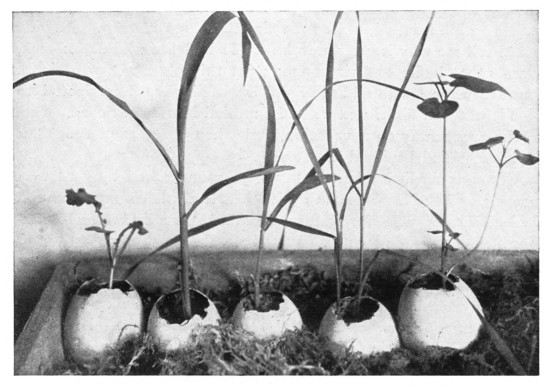
Fig. 297. An egg-shell farm. The plants, from left to right, are: cabbage, field corn, pop-corn, wheat, buckwheat.
Feb. 2. Did not water to-day, for the soil seemed to be moist
enough.
Feb. 3. Watered at 10:30 A. M. Teacher told me to be careful
not to make the soil too wet.
Feb. 4. Watered at noon.
Feb. 5. Put the cup nearer the stove so that the seeds would
come up more quickly.
[457]
Feb. 6. The earth is cracking in two or three places. Watered
at noon.
Feb. 7. Went to the schoolhouse and found some of the plants
coming up.
Feb. 9. Four of the plants are up. (Here tell how they look, or
make a few marks to show.)
When your month's record is all complete, send the sheet, or a
copy of it, to Uncle John, and this will be your club dues. See
how many things you can find out in these four weeks.
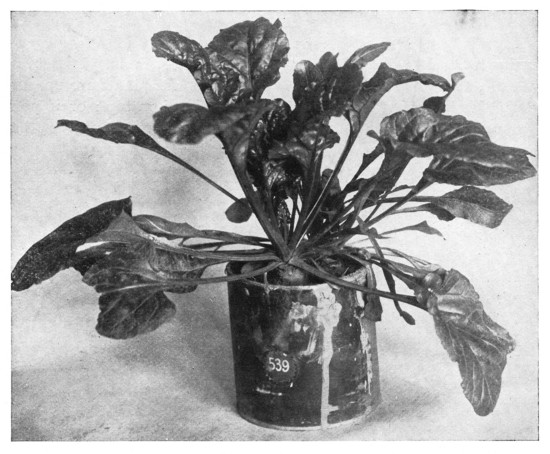
Fig. 298. A window plant that is easy to grow. It is a
common garden beet. The end of the beet was cut off so that it could be
got into the tin can. A very red beet will produce handsome red-ribbed
leaves. In all cases, be sure that the crown or top of the plant has not
been cut off too close, or the leaves may not start readily. The beet
starts into growth quickly and the growing plant will stand much abuse.
It makes a very comely plant for the school-room window. Try carrot,
turnip, and parsnip in the same way.
Before the four weeks are past write to Uncle John and he will
tell you what next to do. By that time your plants will need
transplanting, and he will tell you how to do it. Perhaps you can
set some of the plants outdoors later on and see them grow all
[458]
summer; whether you can or not will depend on the kinds of
plants that you grow. If you want to grow asters or cabbages
next summer, you can start some of them in February and March.
Quick-germinating seeds, fit for starting in the schoolroom, are
wheat, oats, buckwheat, corn, bean, pumpkin and squash, radish,
cabbage, turnip. Perhaps some of these require a warmer place
than others in which to germinate. If you find out which they
are, let Uncle John know.
You can grow the plants in egg-shells, wooden boxes (as cigar
boxes), tin cans, flower pots. If you use tin cans it is well to
punch two or three holes in the bottom so that the extra water
will drain out. Set the can or box in a saucer, plate, or dripping-pan
so that the water will not soil the desk or table. It is best
not to put it in a sunny window until after the plants are up, for
the soil is likely to "bake" or to become hard on top; or if you
do put it in such a place, throw a newspaper over it to prevent the
earth from drying out.
Suggestions for Plant Study.[70]
Last year hundreds of children sent us records of their plants.
This kind of work is most satisfactory to Uncle John. Following is a
record which we received in March, from a girl in the fourth grade:
Feb. 16—Monday. I planted seven cabbage seeds in an eggshell.
I did not water it.
Feb. 17—Did not see anything.
Feb. 18—Saw a little brown thing.
Feb. 19—Saw a little seed lying on top.
Feb. 20—Saw little sprout.
Feb. 21—Holiday.
Feb. 22—Holiday.
Feb. 23—Holiday.
Feb. 24—Saw two little sprouts.
Feb. 25—The egg-shell was full of sprouts.
Feb. 26—The plant was coming up and the earth was very
wet, so I did not water it.
Feb. 27—Saw six sprouts.
Feb. 28—Holiday.
March 1—Holiday.
March 2—Turned the plant around, so it would look toward
the light.
[459]
March 2—That afternoon I planted the cabbage in a tin can
with tissue paper around it, because the cabbage outgrew the eggshell
some time ago.
March 3—I put the plant out of the window.
March 4—I did not look at it.
March 5—One of the sprouts began to droop.
March 6—I dug the dirt up around it. Then it was put in
the air out of the window.
March 7—Holiday.
March 8—Holiday.
March 9—I put it out of the window.
March 10—It was put out of the window. It was brought in
at the close of school.
March 11—Dug the dirt out from the plant and patted it down.
March 12—Watered.
March 13—Put out of the window.
March 14—Holiday.
March 15—Holiday.
March 16—Watered and put out of the window. HELEN.
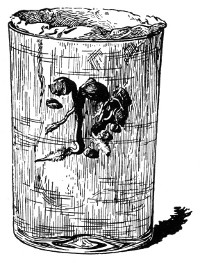
Fig. 299. Radish seeds germinating between blotting-paper and the side of a tumbler.
Was not this a good record for a little girl to make? I wish that she
had told something about the soil in which she planted the seeds. This
is always important. In winter you may have some difficulty in getting
soil, but in the village a florist will let you have some, and in the
country you may be able to get it in the cellar of a grocery store or
from your own cellar. Perhaps you can find some in the potato bin. When
there is a "thaw," get some soil, even if it is very wet; you can dry it
near the stove. Perhaps your schoolhouse will be too cold over Sunday in
mid-winter to allow you to grow plants. If so, plant the seeds at home.
When you have planted your seeds, unless you take them up every day, you
cannot see how the little plants are behaving down under the soil. I
want to tell you how you can know some things that the plants are doing
without disturbing them.
Choose an ordinary glass (Fig. 299), roll up a piece of blotting
[460]
paper so that it is a trifle smaller than the glass, and place it
inside. Between the blotting paper and the glass, put a few radish
seeds or any kind of seed such as you planted in the soil. Keep
the blotting paper moist and watch what happens. In four or five
days the plants should be "up." Here are some things to think
about as you watch them:
1. Note any change in the seeds when they have been moist for
a few hours.
2. What happens to the outer coat of the seed?
3. In what direction does the little root grow? The stem?
4. Notice the woolly growth on the root? Does this growth
extend to the tip of the root?
5. When the little plant has begun to grow, turn it around so
that the root is horizontal. Does it remain in that position?
6. How soon do the leaves appear?
It may interest some of the Junior Naturalists to see the effect
of much water on seeds. Suppose you experiment a little along
this line. Choose three glasses. In one put seeds into water, in
another put them into very wet or muddy soil, and in the third
plant the seeds in moist soil, such as seeds are ordinarily planted
in. Tell us the results of the three experiments.
A Third-grade Record.
Following is a facsimile reproduction of a spontaneous and unpruned
record made by a child in the third grade. The child grew beans in a
tumbler against blotting paper, as shown in Fig. 299. I hope that this
will illustrate to both teacher and children the value of simple
note-taking.
[461]
[462]
[463]
[464]
[465]
[466]
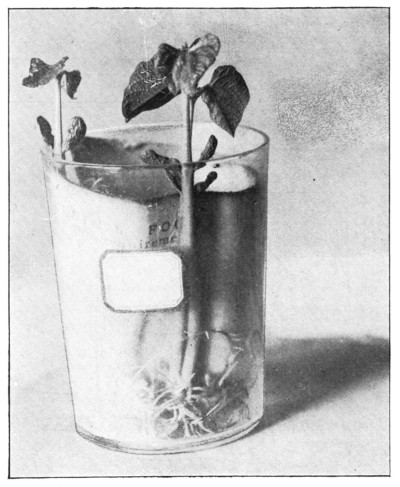
Fig. 300. The bean plants that were grown by the third-grade child.
[467]
LEAFLET LIII.
AN APPLE TWIG AND AN APPLE.[71]
By L. H. BAILEY.
(Compare Leaflet XXXI.)
Yesterday I went over into the old apple orchard. It was a clear
November day. The trees were bare. The wind had carried the leaves into
heaps in the hollows and along the fences. Here and there a cold-blue
wild aster still bloomed. A chipmunk chittered into a stone pile.
I noticed many frost-bitten apples still clinging to the limbs. There
were decayed ones on the ground. There were several small piles of fruit
that the owner had neglected, lying under the trees, and they were now
worthless. I thought that there had been much loss of fruit, and I
wondered why. If the fruit-grower had not made a profit from the trees,
perhaps the reason was partly his own fault. Not all the apples still
clinging to the tree were frost-bitten and decayed. I saw many very
small apples, no larger than the end of my finger, standing stiff on
their stems. Plainly these were apples that had died when they were
young. I wondered why.
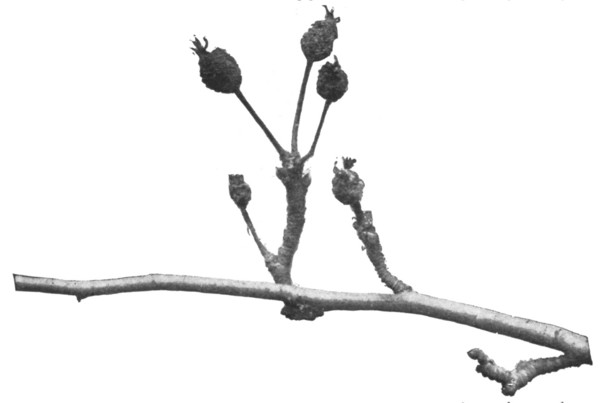
Fig 301. This is the branch that tried and failed.
I took a branch home and photographed it. You have the
engraving in Fig. 301. Note that there are three dead young apples
[468]
at the tip of one branch. Each apple came from a single flower.
These flowers grew in a cluster. There were three other flowers
in this cluster, for I could see the scars where they fell off.
But why did these three fruits die? The whole branch on which they grew
looked to be only half alive. I believe that it did not have vigor
enough to cause the fruit to grow and ripen. If this were not the cause,
then some insect or disease killed the young apples, for apples, as well
as people, may have disease.
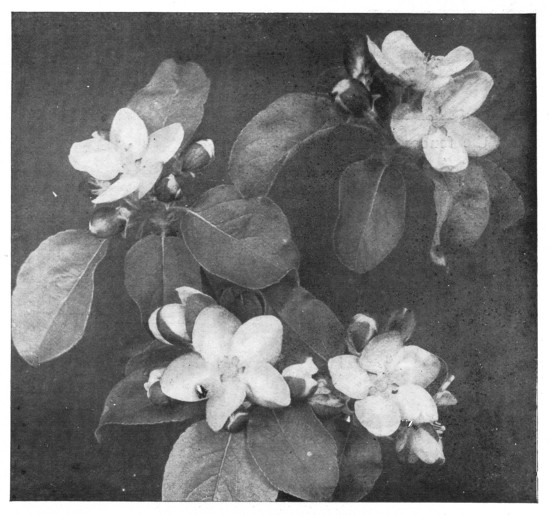
Fig. 302. These are the flowers that make the apples. How many clusters are there?
Beneath the three dead apples, is still another dead one. Notice
how shrivelled and dried it is, and how the snows and rains
have beaten away the little leaves from its tip. The three uppermost
apples grew in 1902; but this apple grew in some previous
year. If I could show you the branch itself, I could make you see
in just what year this little apple was borne, and just what this
[469]
branch has tried to do every year since. This branch has tried
its best to bear apples, but the fruit-grower has not given it food
enough, or has not kept the enemies and diseases away.
The lesson that I got from my walk was this: if the apples were not good
and abundant it was not the fault of the trees, for they had done their
part.
In the cellar at home we have apples. I like to go into the cellar at
night with a lantern and pick apples from this box and that—plump and
big and round—and eat them where I stand. They are crisp and cool, and
the flesh snaps when I bite it and the juice is as fresh as the water
from a spring. There are many kinds of them, each kind known by its own
name, and some are red and some are green, some are round and some are
long, some are good and some are poor.
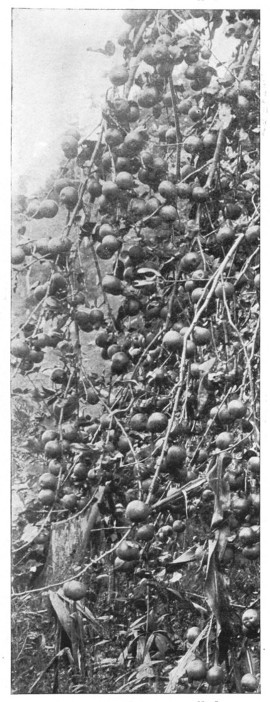
Fig. 303. The apples are usually borne one in a place, although the flowers are in clusters. Why?
Over and over, these apples in the cellar have been sorted, until only
the good ones are supposed to remain. Yet now and then I find a decayed
heart or a hollow place. The last one I picked up was fair and handsome
on the outside, but a black place and a little "sawdust" in the blossom
end made me suspicious of it. I cut it open. Here is what I found (Fig.
306). Someone else had found the apple before I had. Last summer a
[470]
little moth had laid an egg on the growing apple, a worm had come from
the egg and had eaten and eaten into the apple, burrowing through the
core, until at last it was full grown, as shown in the picture. Now it
is preparing to escape. It has eaten a hole through the side of the
apple, but has plugged up the hole until it is fully ready to leave.
When it leaves it will crawl into a crack or crevice somewhere, and next
spring change into a pupa and finally come forth a small, dun-gray moth.
This moth will lay the eggs and then die; and thus will be completed the
eventful life of the codlin-moth, from egg to worm and pupa and moth.
But in doing all this the insect has spoiled the apple. The insect acts
as if the apple belonged to him; but I think the apple belongs to me. I
wonder which is correct?
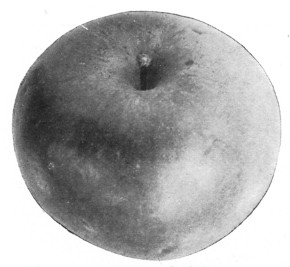
Fig. 304. The Baldwin apple. How many kinds of apples do you know?
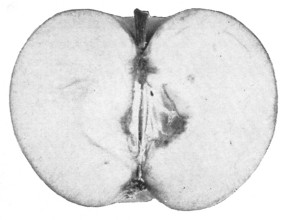
Fig. 305. The same Baldwin apple cut in two.
Some of these apples are sound and solid on the inside, but they have
hard blackish spots on the outside (Fig. 307). This is a disease—the
apple-scab. This scab is caused by minute plants and these plants also
claim the apple as their own. There are ways by means of which the
apple-grower is able to destroy the codlin-moth and the apple-scab; and
thereby he secures fair and sound apples.
Insects and diseases and men are all fighting to own the apple.
Ten Things to Learn from an Apple.
When you write your dues to Uncle John on the apple, answer
as many of the following questions as you can. You can get the
[471]
answers from an apple itself. He does not want you to ask anyone
for the answers:
1. How much of the apple is occupied by the core?
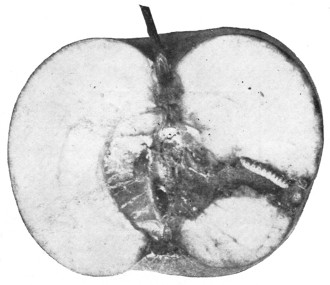
Fig. 306. This is an apple in which a worm made its home.
2. How many parts or compartments are there in the core?
3. How many seeds are there in each part?
4. Which way do the seeds point?
5. Are the seeds attached or joined to any part of the core? Explain.
6. What do you see in the blossom end of the apple?
7. What do you see in the opposite end?
8. Is there any connection between the blossom end and the core?
9. Find a wormy apple and see if you can make out where
the worm left the apple. Perhaps you can make a drawing. To
do this, cut the apple in two. Press the cut surface on a piece
of paper. When the apple is removed you can trace out the
marks.
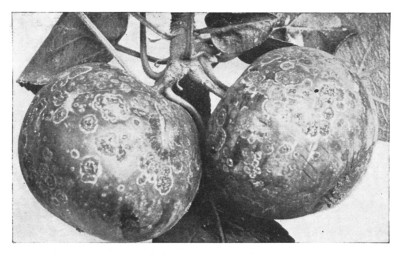
Fig. 307. These are the apples on which other plants are living.—The apple-scab.
[472]
10. When you hold an apple in your hand, see which way it
looks to be bigger—lengthwise or crosswise. Then cut it in two
lengthwise, measure it each way, and see which diameter is the
greater.
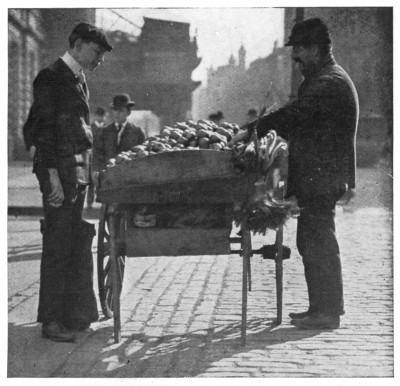
Fig. 308. Here is where city boys and girls buy their apples.
[473]
LEAFLET LIV.
TWIGS IN LATE WINTER.[72]
By ALICE G. McCLOSKEY.
Along a country road, through a drifted field, over a rail fence, and
into the woods I went, gathering twigs here and there as I passed. A
February thaw had come and these first messengers of spring, reaching
out from shrub and tree, were beginning to show signs of life. Many
young people do not believe that spring is near until they hear a robin
or a bluebird. The bare little twigs tell us first. Look at them as you
go on your way to school. Are they the same color in February that they
were in the short December days?
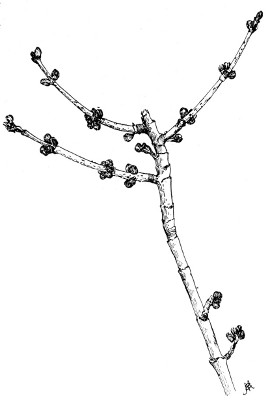
Fig. 309. Red or swamp maple.
When I reached home with my bundle of twigs, it was "fun" to sit by the
window and study the strange little things. They were so different one
from another, and so interesting in every way, that I decided to ask our
boys and girls to gather some winter twigs and tell us about them.
Select your twigs from the butternut, willow, hickory, horsechestnut,
apple, plum, plane-tree, maple, or any other tree that you come across.
Here are some suggestions that will help you in your study:
1. How many colors do you find in one twig? Count the tints and shades.
I found eight colors on a small maple branch (Fig. 309).
2. Notice the differences in several twigs as they
lie on the table. What makes them look so different:
[474]
size, shape, color, arrangement of buds, the size or shape
of the buds?

Fig. 310. Horsechestnut.

Fig. 311. Butternut.
3. On how many twigs are the buds opposite each other? Note the opposite
buds on the horsechestnut (Fig. 310). On how many are they alternate?
Are the buds opposite on the butternut (Fig. 311)?
4. Which twigs bear the buds singly?
5. When you find two or more buds growing together on a stem, is there
any difference in the size of the buds?
6. On how many of the twigs can you see a scar left by the leaf when it
dropped off (Fig. 310 and Fig. 311 a, a)? Compare the leaf scars on
different twigs. Notice the strange scar on the butternut (Fig. 311). It
looks like the face of an old sheep.
7. Do you see any cocoons on your twig?
8. You all know the rings on an apple twig that tell how much it grew
each year. Do you find rings on other twigs? Do you see them on any of
these pictures?
9. What do you suppose makes these rings? Do you think there was once a
large terminal bud where these rings are?
[475]
[476]
LEAFLET LV
PRUNING.[73]
By ALICE G. McCLOSKEY.
(Compare Leaflet XLVI.)
First snow, then sleet, and then a down-pour of rain—it stormed all
day. At night-fall it grew colder. The wind blew fiercely. The twigs and
branches fell on the white crust which covered the earth. Nature was
pruning the trees.
Have you ever seen your father go into the orchard and prune his trees?
Why did he do it? Compare the work done by nature and that which your
father does. Which seems to be the more careful pruner?
Let us experiment a little. It will please Uncle John. He always wants
his boys and girls to find out things for themselves. Select a branch of
lilac or some other shrub. Mark it so that you will always know it.
Count the buds on the branch. Watch them through the spring and the
summer. Note the number that become branches. You will then know that
nature prunes the trees.
If you think a minute, you will see that pruning is necessary in the
plant world. Suppose a branch has thirty buds, and that every bud should
produce thirty branches, each of which in turn should produce thirty
more,—do you think there would be any room left in the world for boys
and girls? Would a tree be able to hold so many branches?
You certainly have noticed decayed holes in trees. Did you
ever wonder why they were there? I suppose that most persons
never wonder about it at all; or if they do give it any passing
thought, they say it is only "natural" for trees to have rotten
spots. But these rotten spots mean that once the tree was injured.
Perhaps the injury was the work of a careless or thoughtless man
who pruned the tree. Very few persons seem really to know how
to remove the limbs of a tree so that the wound will heal readily.
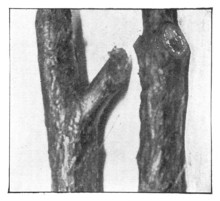
Fig. 312. The wrong way and the right way to remove a limb.
As you go and come, observe how the trees have been pruned. Do you see
long "stubs" left, where limbs have been cut? Yes; and that is the wrong
way to cut them. They should be cut close to the main branch or trunk,
for then the wounds will heal over better (Fig. 312). If we abused our
cows and horses, as we sometimes abuse our shade trees, what would
become of the animals?
Did you ever see trees that were mutilated to allow of the stringing of
telephone and telegraph wires?
Who owns the shade trees along a street or public highway?
[477]
LEAFLET LVI
THE HEPATICA.[74]
By ALICE G. McCLOSKEY.
(Compare Leaflet XL.)
Something new and pleasant happened in my life this year. In February,
while the wood was snow-covered and the roadsides piled high with
drifts, I saw hepaticas in bloom.
Oh, no! I did not find them out of doors. I had all the fun of watching
them from my warm chimney-corner. Then when winds blew fiercely I often
went to the window where they grew and buried my head in the sweet
blossoms. What do you suppose they told me? If some winter day you feel
their soft touch on your face, and smell their woodsy fragrance, you
will hear the message.
Perhaps you want to know how the hepaticas found their way into my
window-box. Last fall as I walked through a leafy wood I gathered a few
plants, roots and all, that I had known and loved in spring and summer
days. Among them were hepaticas. These I laid away in the cellar until
the first of February. Then I planted them in a corner of the window-box
that I had left for them.
Since the little woods plants have come to live with me I have
learned to know them well. Perhaps the most important lesson
they have taught me is this: The blossoms may be the least interesting
part of a plant. Will you find out what hepaticas have to
tell as the seasons pass?
Even before you hear the first robin, go into the woods, find
one of the hepaticas, and mark it for your own. You will know
it by the old brown leaves. Then watch it day by day. The following
questions will help you to learn its life story:
1. Where do hepaticas grow, in sunny or shady places? During
which seasons do they get the most sunlight?
[478]
2. Watch the first sign of life in the plant. Do the new leaves
or the flowers come first?
3. Look at the hepatica blossom a long time. How many different
parts can you see in it? Whether you know the names of
these parts now does not matter. I want you to see them.
4. Notice the three small, green, leaf-like parts that are around
the flower bud. As the flower opens see whether they are a part
of it, or whether they are a little way from it on the stem.
5. Observe the stem closely. Is it short or long? Hairy or
smooth?
6. As the new leaves appear find out whether they are fuzzy on
the inside as well as on the outside. Notice how they are rolled
up and watch them unroll.
7. In how many different colors do you find hepaticas?
8. Do some smell sweeter than others? If so, does color seem
to have anything to do with it?
9. Look at a hepatica plant at night or very late in the afternoon.
Also watch it early in the morning and in cloudy weather.
Then look at it in bright sunshine. Do you see any change in
the flowers? I think you will discover something of much
interest.
10. Seed-time among hepaticas is very interesting. Notice what
becomes of the three small, leaf-like parts that were underneath
the flower. How many seeds are there?
11. How long do you think the leaves of hepatica remain on
the plant? Do you suppose they remain green all winter?
12. What becomes of the hepatica plant after it blossoms? Did
you ever see one in summer? Describe.
[479]
LEAFLET LVII
JACK-IN-THE-PULPIT.[75]
By ALICE G. McCLOSKEY.
(Compare Leaflet XLI.)
They call him Jack-in-the-Pulpit, he stands up so stiff and so queer
On the edge of the swamp, and waits for the flower-folk to come and hear
The text and the sermon, and all the grave things that he has to say;
But the blossoms they laugh and they dance, they are wilder than ever to-day;
And as nobody stops to listen, so never a word has he said;
But there in his pulpit he stands, and holds his umbrella over his head,
And we have not a doubt in our minds, Jack, you are wisely listening,
To the organ-chant of the winds, Jack, and the tunes that the sweet birds sing!
Lucy Larcom.
"It is Indian turnip," said I.
"No," said Grandmother, "it's memory root. If you taste it
once you will never forget it." And what Grandmother said to
me so long ago, I say to every boy and girl, "If you taste it once
you will never forget it."
But of all the names for this strange little wood plant, I like
Jack-in-the-pulpit best. Though never a word has it said in our lifelong
acquaintance, it has been a helpful little "country preacher" to me. As
we go into the woods this year, let us make up our minds that we will
know more than we ever have known before of its interesting life.
Where do you find the Jack-in-the-pulpit? In what kind of
soil does it grow? How does it first come up?
What is the shape of the root? One is enough for the whole
class to study and it should be planted again. We do not want the
Jack-in-the-pulpit to disappear from our woods.
Does the little hood fold over at first?
The hood or "umbrella" is not the flower. You will find the
flowers on the little central stalk that you call "Jack." See
[480]
whether the blossoms are alike. Look at the blossoms on several
plants. Place a stick by the side of one of these plants so that
you will know it later in the year when the Jack-in-the-pulpit has
disappeared.
Notice whether there are insects in the lower part of the flower
stalk. If so, can they get out?
When the blossom has gone, look for the seeds. What color are
they in June? In August?
Have you any house plant that you think is related to Jack-in-the-pulpit?
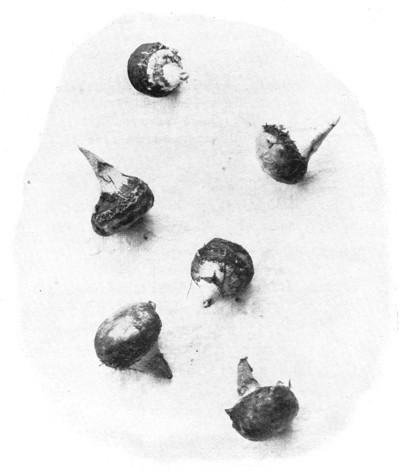
Fig. 313. Tubers of Jack-in-the-pulpit, or Indian turnip.
[481]
LEAFLET LVIII.
THE DANDELION.[76]
By ALICE G. McCLOSKEY and L. H. BAILEY.
The first warmth of spring brought the dandelions out of the banks and
knolls. They were the first proofs that winter was really going, and we
began to listen for the blackbirds and swallows. We loved the bright
flowers, for they were so many reflections of the warming sun. They soon
became more familiar, and invaded the yards. Then they overran the
lawns, and we began to despise them. We hated them because we had made
up our minds not to have them, not because they were unlovable. In spite
of every effort, we could not get rid of them. Then if we must have
them, we decided to love them. Where once were weeds are now golden
coins scattered in the sun, and bees revelling in color; and we are
happy! L. H. Bailey.
Suggestions for Study.
I. Ask your teacher to let you go out of doors for ten minutes
to look at dandelions. In your note books write answers to the
following questions:
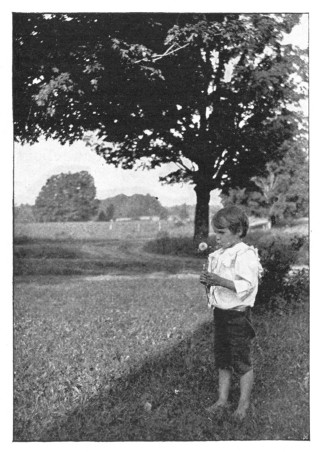
Fig. 314. Blow the dandelion balloon!
1. At what time of day are you looking for the dandelions?
Is the sun shining, or is the sky overcast? Make up your
mind to notice whether dandelions behave the same at all
hours of the day and in all kinds of weather.
2. How many dandelions can you count as you stand on
the school-ground? The little yellow heads can be seen a
long distance.
3. Where do they prefer to grow,—on the hillsides,
along the roadsides, in the marshes, or in your garden?
II. Gather a basket full of blossoming dandelions, roots and
[482]
all, take them to school, and ask the teacher to let you have a
dandelion lesson. Here are some suggestions that will help you:
1. Each pupil should have a plant, root and all. Describe the plant. Is
it tall or short? How many leaves are there? How many blossoms?
2. Hold the plant up so that you can see it well. How many distinct
colors do you find? How many tints and shades of these colors?
3. Look carefully at the blossom. How many parts has it? How much can
you find out about the way in which the yellow head is made up?
III. Mark a dandelion plant in your garden. Watch
it every day. Keep a record of all that happens in its life.
Later in the year send Uncle John a little history or account
of the plant you have watched.
Dandelion.
Dear common flower, that grow'st beside the way,
Fringing the dusty road with harmless gold,
First pledge of blithesome May,
Which children pluck, and, full of pride uphold,
High-hearted buccaneers, o'erjoyed that they
An Eldorado in the grass have found,
Which not the earth's ample round
May match in wealth, thou art more dear to me
Than all the prouder summer-blooms may be.
—Lowell.
[483]
LEAFLET LIX
MAPLE TREES IN AUTUMN.[77]
By ALICE G. McCLOSKEY.
(Compare Leaflets XLVII and XLVIII.)
The hills are bright with maples yet,
But down the level land
The beech leaves rustle in the wind,
As dry and brown as sand.
The clouds in bars of rusty red
Along the hill-tops glow,
And in the still sharp air the frost
Is like a dream of snow.—Alice Cary.
The hills are bright with maples about the time Jack Frost appears, and
many people say that he makes the leaves turn red and yellow. Wise folk
tell us, however, that Jack Frost is not the artist; that leaves change
to autumn tints when their work is completed.
Boys and girls may not know that leaves "work;" yet all through the long
summer days when you have been playing in the shade of some old maple,
the leaves over your head have been very busy. Uncle John says that each
leaf is a "starch factory," and this is true. Starch is necessary for
plant food and it is manufactured in the leaves. The green leaves and
stems are the machinery, which is run by sunlight. Look at a large
branch of maple and see how the leaves are arranged to catch every
sunbeam. The more light the green parts of the tree get, the more plant
food can be made and the sturdier and handsomer the tree.
But the story of the way in which the plant food is made is a long one
and not easy for young people to understand. This can come later when
you have become familiar with the many interesting things that you learn
by watching the tree and by studying with the microscope.
[484]
If I should to go into your school-room and should ask how many boys and
girls know a sugar maple, I suppose every hand would be raised. But if I
should ask: "When does the sugar maple blossom?" "What do the blossoms
look like?" "When do the winged seeds fall?" I wonder how many could
give me satisfactory answers to my questions!
Choose some fine old maple for study. The one that stands near the door
will be best, since you can see it every day. Write in a note book all
that you can find out about it as the weeks go by.
Suggestions for Fall Study.
1. Notice how the leaves turn to the sunlight.
2. Try to find two leaves exactly alike in color, form, size,
length of stem, etc. If you succeed send them to Uncle John.
3. How many different tints can you find in a single leaf?
4. As you look at two sugar maple trees, do they seem to be
colored alike?
5. Are all sugar maples that you know the same shape?
6. How are the leaves arranged on the branch?
7. Can you find any winged seeds near the tree? If so, plant
one in a box of earth and see whether it will grow.
8. If you find any plants growing beneath the maple tree,
describe them or tell what they are.
9. Do you know any other kinds of maples? How do you distinguish
them?
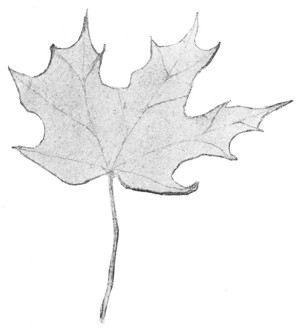
Child's drawing of a maple leaf. Fifth grade. (Reduced.)
[485]
LEAFLET LX
A CORN STALK.[78]
By ALICE G. McCLOSKEY.
(Compare Leaflets XLII and XLIII.)
"Tom," said I to a young friend who stood by the window tossing a
ten-cent piece into the air, "what plant is used for part of the design
on that coin?"
The boy did not answer right away. I do not believe he had ever looked
at it closely; yet this is one of the prettiest of our silver pieces.
After a few minutes he said, "It is corn, isn't it?"
Hearing a note of surprise in his voice, I told him something about
corn-raising in this country. We then decided that it is a good thing to
represent corn on one of the United States coins, since it is a source
of much of our wealth.
But aside from its value, Indian corn should interest us because
it is a wonderful plant. Boys and girls do not know much more
about it than does any old black crow. You have watched the
farmer plant corn and you like to eat it. Jim Crow has watched
the farmer plant corn and he likes to eat it, too. The time has
come, however, when you can get ahead of him if you care to;
and to get ahead of crows on the corn question is worth the while.
Let me tell you how to do it.
1. Secure a kernel of corn, cut it in halves, and note the food
inside it. This food was stored in the seed by the parent plant.
Uncle John would say that it is the "lunch" that the mother puts
up for her children. What must happen before the food can be
used by the little plant?
2. Place some moist soil in a tumbler, and put a kernel of
[486]
corn in it near the side so that you can watch it grow. How soon
does the root appear? The leaves? How many leaves come up at
one time?
3. Ask your father to give you a small piece of ground in the
garden. Plant a few kernels of corn so that you will have some
plants of your own to study this summer. Other people's plants
are never so interesting as our own.
4. As your corn plants push their way up into the light and
air, watch them every day. Notice how the new leaves are protected
by the next older ones.
5. Is the stem hollow or solid? In which way would it be
stronger?
6. Notice the joints. Are they the same distance apart
throughout the length of the stem? Does the distance between
the joints always remain the same? Measure them some day;
then in a week measure them again.
7. Where does the stalk break most easily?
8. Where does the leaf clasp the stalk?
9. Notice how strong the leaf is. In what direction do the
ribs extend? If these long narrow leaves were not strong what
would happen to them as they wave back and forth in the wind?
10. Have you ever noticed the ruffled edges of the leaves? As
you bend them you will see that the edges do not tear.
11. There are two kinds of blossoms on a corn plant. The ear
bears one kind, the tassel the other. If you were to cut all the
tassels from the plants in your garden, the kernels would not grow
on the ears. Later on you will learn why.
12. Watch the ear closely as it grows.
13. Follow a thread of silk to the place where it is attached.
Notice whether there is one silk for each kernel.
14. When the corn is in the milk stage it is preparing to store
up food for the young plants. How does it taste at this time?
15. Look closely at the base of the corn stalk and you will see
roots extending obliquely into the soil. These are the brace
roots. Of what use do you think they are to the corn stalk?
[487]
LEAFLET LXI
IN THE CORN FIELDS.[79]
By ALICE G. McCLOSKEY.
(Compare Leaflets XLII and XLIII.)
"Caw caw!" said Jim Crow as he flew over our heads. "Was he jeering at
us?" we wondered, the children and I. Perhaps he was inquisitive to know
what business we had in the open country and in the fields of corn.
Perhaps he was not concerned with us at all. Very likely crows are less
concerned with us than we think they are.
Jim Crow flew on out of sight, but we stayed among the ripening corn.
The ears were filling out. The ends of the silk were turning brown. We
saw many things that we had planned to look for in vacation: the tall
stem, the brace roots, the long strong leaves and the way the ribs
extend in them, the ruffled edges of the leaves, the two kinds of
blossoms, and where each silken thread is attached. The whole story was
before us.
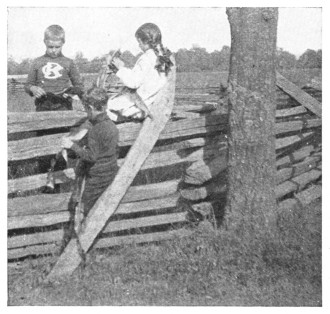
Fig. 315. Over the fields in corn-harvest time.
But this is the harvest
time and we are
ready to learn a new lesson from the corn fields. As we watch
them now let us answer the following questions:
1. How is the corn cut?
[488]
2. How many ears do you find on a stalk?
3. Are the ears on the same side of the stalk or on opposite
sides?
4. Take into the school room as many kinds of corn as you can
find and describe each as follows:
a—The shape and color of the kernel.
b—Number of rows of kernels.
c—The number of kernels in each row.
5. Perhaps the girls will pop some corn and bring it to the
Junior Naturalist Club meeting. Let them try to pop field corn.
Cut kernels in two of field corn and pop-corn, and report whether
they differ. Why does pop-corn pop?
6. Make a list of the foods for which corn is used.
7. Why are pumpkins planted among corn?
8. Why not make for your school room some decorations from
ears of corn?
[489]
LEAFLET LXII.
THE ALFALFA PLANT.[80]
By L. H. BAILEY and JOHN W. SPENCER.
(Compare Leaflet XXXIV.)
All the things that the farmer sells are produced by plants and animals.
The animals live on the plants. It is important that we know what some
of these plants are.
Some plants are grown for human food. Such are potato, wheat, apple,
lettuce. Some are grown only to feed to animals. Such are grasses and
clover,—plants that are made into hay.
Hay is the most important crop in New York State. In fact, New York
leads all the States in the value of the hay and forage. This value is
more than 66 millions of dollars.
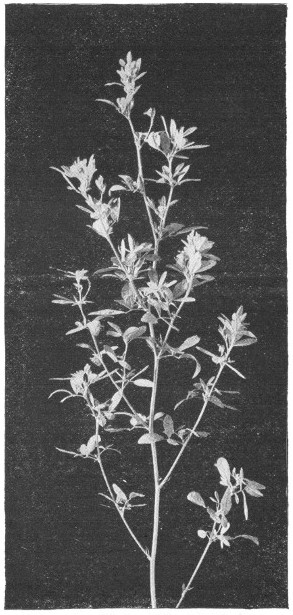
Fig. 316. Sprig of the alfalfa plant.
Hay is important in New York also because there are so many dairy cattle
in the State. There are more than one and one-half millions of dairy
cattle in New York. In the value of the milk and butter and cheese, New
York also leads all other States.
[490]
There are also great numbers of beef cattle, horses, mules, and
sheep. All these millions of animals must be supplied with hay in
our long cold winters.
Hay is made in New York State from grasses and clover. Suppose we could
find some plant that would yield twice as much hay as clover yields, and
yet be as nutritious,—you can readily see how valuable such a plant
would be to the State. It would be better than a gift of millions of
dollars. Such a plant is alfalfa.
Now that you know something about alfalfa in a general way, I want you
to know how the plant looks and how it grows. It is not yet very well
known even among farmers, but its cultivation is increasing every year.
You will probably know where there are fields of it. Sometimes it grows
along roadsides as a weed. Last spring Uncle John offered to send a
small packet of alfalfa seeds to any Junior Naturalist who wrote for it.
He sent about 5,000 packets. But if you do not know the plant or cannot
find it, write at once to Uncle John and he will send you some by mail
from the University farm.
Let us see how many school children in New York State will know what
alfalfa is between now and Thanksgiving time. When writing to Uncle John
about alfalfa, try to answer as many of the following questions as
possible from your own observation:
1. Does the plant remind you of any other plant that you ever
saw? Of what?
2. How does it grow,—straight up or spreading out on the
ground?
3. How many stalks come from one root?
4. What are the leaves like? Mark out the shape with a pencil.
5. What are the flowers like? Do you know any other flowers
of similar shape? What is the color?
6. If possible, dig around a plant and describe how the root
looks. Does it branch into many fibres, as grass roots or corn
roots do?
Uncle John's Letter About the Alfalfa Gardens.
My Dear Boys and Girls:
Do you know much about the alfalfa plant? Do you remember
that last spring we promised to send a packet of seed to each of
you who asked for it? Did you send your name asking that you
be served? We received the names of several thousand children
[491]
[492]
asking for seed and I am wondering whether you are one of them.
If so, did you sow the seed? Will you write me a letter telling
me what became of it?
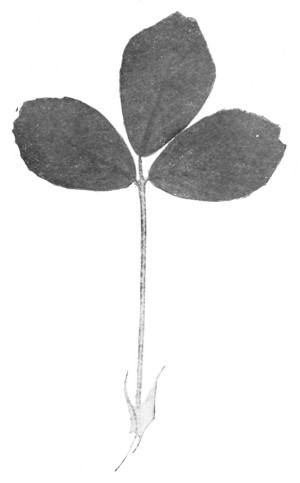
Fig. 317. What leaf is this? Is it enlarged?
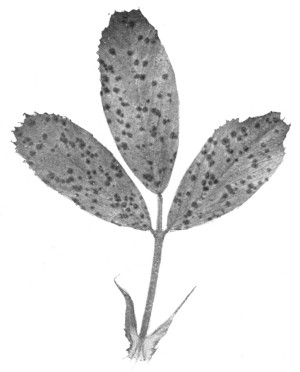
Fig. 318. Leaf of alfalfa. What significance have the spots?
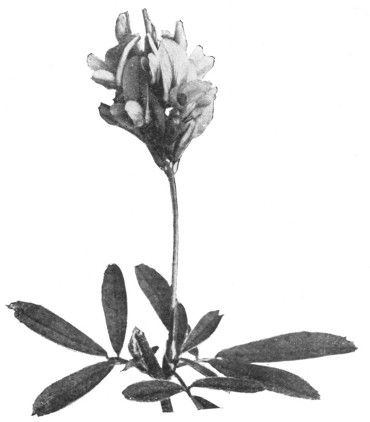
Fig. 319. Flowers of the alfalfa. Are they natural size?
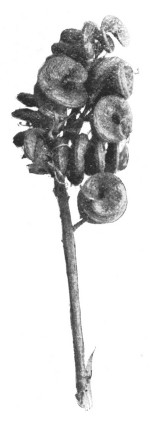
Fig. 320. Alfalfa pods. How much enlarged?
I am very fond of children's letters. Each year I receive more than
thirty thousand of them. I sometimes wonder whether there is another man
who is honored by so many letters from young people, for I count it an
honor to be so remembered.
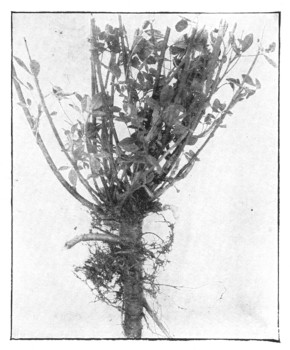
Fig. 321. Crown of the alfalfa plant, showing how root and top start off.
As large as that number is, I cannot spare one letter. I always want a
few more. All your letters are read and I take great pains to answer all
questions. If, by any oversight, you have been missed I am sorry. I know
what it costs a boy or girl to write a letter. I never open one without
feeling that the writer is a friend of mine, otherwise he would not have
expended so much hard work to write it.
School has now begun and of course you are very busy, and so is your
teacher. One of the best opportunities to write letters is in school.
Please ask your teacher whether you may not write me during your
language period. You may say that she may make authors of all of you if
she can, but I will do all I can to help you become good letter writers.
Ask her whether a letter to me may not be a substitute for a
composition.
In your letter you may tell me your experience with alfalfa.
Tell me your failures as well as your successes. Even though you
received your seeds and did not sow them, tell me that. I shall
never find fault with you for telling me the truth. If you sowed
the seed and the plants did not do well, tell me that also. The
plants may look very small and uninteresting to you this year, but
next year they may surprise you.
In some parts of the United States the alfalfa crop is of great
value and the loss of it would bring distress to many farmers. I
am wondering whether the crop, as raised in all parts of our
[493]
country, is not worth more money than all the gold found in the
Klondike, taking the two year by year. I do not know how that
may be. I am wondering. Men by the thousand have gone to
the gold mines and endured many hardships and later returned
with less money than those who had remained at home and took
care of their alfalfa.
It may be that a mine of wealth lies very near you, and to get
it you may have to ask alfalfa to find it and bring it to you. Gold
cannot be found in all places in a gold country and alfalfa may
not feel comfortable and grow in all parts of a good farming
country. What we asked of you last spring was that you become
alfalfa prospectors and later tell us what you found.
JOHN W. SPENCER.
[494]
[495]
LEAFLET LXIII
THE RED SQUIRREL.[81]
By ALICE G. McCLOSKEY.
(Compare Leaflet XLIX.)
The squirrel came running down a slanting bough, and as he stopped
twirling a nut, called out rather impudently, "Look here! just get
a snug-fitting fur coat and a pair of fur
gloves like mine and you may laugh at a northeast
storm."—Thoreau.
For a cheery companion give me the red squirrel! I enter the woods and
there the little fellow is, ready to welcome me. "What a fine day it is
for gathering nuts!" he seems to say, and straightway, as I listen to
his merry chatter, I think it is a fine day for any sport that includes
him and the brown November woods.
Young naturalists may think it is a difficult thing to become
acquainted with red squirrels, but you will often find them willing
to be sociable if you show them a little kindness. I have
many times watched two or three squirrels playing about a friend as
she sat in her garden. They seemed to find her nearly as interesting
as the old pine tree near by. They are inquisitive animals.
"How did you tame them?" I asked.
"I fed them occasionally," she replied. "At first I put some
nuts on the grass several feet away from me. Then I gradually
placed a tempting meal nearer and nearer until the little fellows
seemed to lose all fear of me."
If we care to, you and I, we can learn a great deal about red
squirrels before another year has passed. If you live on a farm
you should know the habits of all the wild creatures about you.
[496]
You can then be just to them, and decide whether or not you can
afford to let them continue to be tenants on your farm. You will
find that all of them have interesting lives.
The Red Squirrel.
A. B. C.
Just a tawny glimmer,
A dash of red and gray,—
Is it a flitting shadow,
Or a sunbeam gone astray?
[497]
It glances up a tree trunk,
And from some branch, I know
A little spy in ambush
Is measuring his foe.
I hear his mocking chuckle;
In wrath he waxes bold,
And stays his pressing business
To scold and scold and scold.
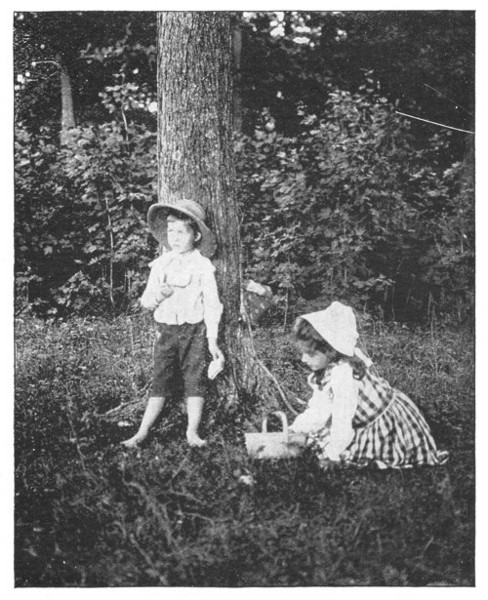
Fig. 322. In the haunts of the red squirrel.
Questions About the Red Squirrel.
1. What is the color of the red squirrel? Is he really red? Is
his entire coat of one color? Does he wear different colors in
winter and summer?
2. Did you ever see a red squirrel's nest? If so, describe it.
3. Does the red squirrel hibernate; that is, does he sleep all
winter as the chipmunk does?
4. What does a red squirrel eat? Did you ever see him getting
the winged seeds out of a pitch pine cone?
5. Do you believe a squirrel ever planted an oak? Give a
reason.
6. If you live in the country, you have seen red squirrels running
on the rail fences. Why do they like rail fences? Do you
see them so often on other kinds of fences?
7. Notice the tracks made in the snow in winter woods. Try to
find whether the red squirrel's is among them.
8. If you know any other kinds of squirrels, tell how they differ
from the red squirrel.
[498]
[499]
LEAFLET LXIV
ROBIN.[82]
By L. H. BAILEY.
The drifts along the fences are settling. The brooks
are brimming full. The open fields are bare. A
warm knoll here and there is tinged with green.
A smell of earth is in the air. A shadow darts
through the apple tree: it is the robin!
Robin! You and I were lovers when yet my years
were few. We roamed the fields and hills together.
We explored the brook that ran up into the great
dark woods and away over the edge of the world.
We knew the old squirrel who lived in the maple tree. We
heard the first frog peep. We knew the minnows that lay under the
mossy log. We knew how the cowslips bloomed in the lushy swale.
We heard the first soft roll of thunder in the liquid April sky.
Robin! The fields are yonder! You are my better self. I
care not for the birds of paradise; for whether here or there, I
shall listen for your carol in the apple tree.
Our lesson on robin shall be a lesson out of doors. We shall
leave the books behind. We shall see the bird. We shall watch
him and make up our minds what he is doing and why. We
shall know robin better; and robin lives in the fields.
Perhaps you think you know robin. Suppose that one of
your friends never saw a robin; do you think you could close
your eyes and describe him so that your friend would know how
the bird looks?
Then tell me where robin builds its nest, and of what materials;
and how many eggs are laid and their color; and how long the
mother bird sits; and how long the fledglings remain in the nest.
You can readily find a family of robins in some near-by tree, or
perhaps even on the porch; and you can learn all these things
without ever disturbing the birds.
[500]
I want you to watch a bird build its nest. You may think that
you know how robin builds, but can you really tell me just how
the bird carries the mud, and where it finds the other materials,
and how long the building operation continues? Do both birds
take part in the building?
Then I want to know whether you can tell the difference
between father robin and mother robin. Did you ever notice
whether robins that come first in the spring have brighter breasts
than those that come later? And can you explain?
Tell me, too, what robin does with his year. You know when
he comes in spring and when he builds and when the speckled
young ones fly. But where is he in summer and fall and winter?
And what is he about all this time? Does he build another nest
and rear another family, or does he go vacationing? And does
he gather the same kind of food in spring and summer? Does he
gather cherries for his family or for himself? Did you ever see
robin in winter in New York?
What can you tell me about the song of robin? Does he sing
all the year? Or does he have a different note for summer?
Not one of you can tell how many different notes and calls robin
has. I sometimes think that robin knows several languages.
I have seen many more springs than you have seen: and yet
I always wait for robin on the lawn. I often wonder whether
the same robins come back to my lawn. They seem to go to
business at once. They hop with the most confident air, and day
after day pull strings out of the ground. You know what these
strings are: but do you know how robin finds them? Is it by
smell, or sight, or feeling, or hearing? Do you suppose he is
listening when he cocks his head to one side and then to the
other? Or is he merely making motions? And I wonder whether
birds and animals usually make motions just for the sake of
making them?
I have asked you many questions, and not one of you can
answer. Perhaps I cannot answer. You ask, "What's the use?"
If you can see robin, and learn why, you can also learn other
things. But I like robin just because he is robin.
There is one thing more. You will read about robin redbreast.
Who is he? Find out for me whether robin redbreast of Europe
and of English poetry is the same as our American bird.
[501]
LEAFLET LXV
CROWS.[83]
By ALICE G. McCLOSKEY.
(Compare Leaflet XXIV.)
At a wigwam in the Adirondack Mountains a tame crow lives with a family
of Indians. These Indians make baskets of birch bark and other things
that they find out of doors, and sell them to visitors who spend their
summer in the mountains. The little crow helps in the business. He makes
himself so interesting to the passers-by that they stop to watch him.
The Indians then have an opportunity to show their baskets, and very
often sell them.
But we need not go to the Adirondacks to find a crow that earns his
living. Mr. F. E. L. Beal, who has studied crows a long time, speaks of
them as valuable farm hands; and Neltje Blanchan says that they are as
much entitled to a share of the corn as the horse that plows it. This
may surprise boys and girls who have heard crows spoken of as thieves
and rascals. Let us look into their story so that we can find out for
ourselves whether to the farmer the crow is a friend or an enemy.
How Jim Crow does harm:—
1. By killing toads, frogs, small snakes, and salamanders ("lizards").
Why are these little creatures first rate farm hands?
2. By pulling up sprouting corn. Some farmers prevent this
by tarring the corn.
3. By stealing eggs, small chickens, and tiny birds. It is said
that the crow is rarely guilty of these wrongs. What do you know
about it?
How Jim Crow does good:—
4. By eating large numbers of insects: grasshoppers, caterpillars
(including army worms and cut worms), June bugs, and other
insects. So many insects does he devour that he earns more than
[502]
he destroys. A half bushel of corn scattered on a field is said to
be sufficient in many cases to prevent Jim Crow from pulling the
growing corn.
To study crows:—
Watch the crows to find out just what they do. Do you ever
see them flying in large numbers? If so, at what time of day do
they fly? Where are they going? Notice how they use their
wings.
Do they come from the same direction each morning? Would
it not be a great experience to make up a party and visit the place
from which they come? What do you think you would find there?
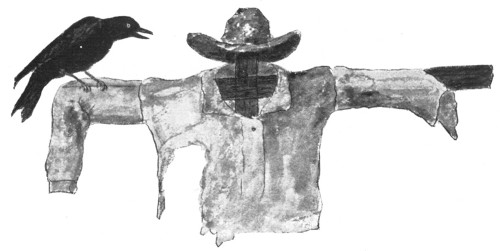
Fig. 323. Who's afraid!
When you see crows feeding in a field try to learn what they
are eating.
You can often find crows' tracks in the snow. There the prints
of their feet and wings may be seen. What do you think interested
the crows in the snow-covered field?
Determine whether the caw is always the same. Is it sometimes
short, sometimes long? Can you associate these differences with
the actions of the birds?
I wish you would read John Hay's poem, "The Crows at
Washington."
[503]
LEAFLET LXVI.
A FRIENDLY LITTLE CHICKADEE.[84]
By ALICE G. McCLOSKEY.
(Compare Leaflet XXIV.)
This scrap of valor just for play
Fronts the north wind in waistcoat gray.
—Emerson.
One cold December day a chickadee found himself alone in a wood. He
looked very much like other chickadees, a small, gray bird, wearing, as
someone has said, "a black hood with white side pieces and a black
vest." He was like others of his kin, too, in that he was a skillful
acrobat. He could stand right side up on a twig or cling to it upside
down—one position seemed as easy as the other.
But I am not sure that this little chickadee was like his fellows in one
respect. I have wondered whether they are all as friendly as he. I shall
tell of something that he did, and leave it to young naturalists to find
out whether other chickadees will show as friendly a spirit.
It happened on the cold December day when the chickadee was alone in the
"snow-choked wood" that a Senior Naturalist wandered along that way.
Whether or no the little bird knew that the tall man was there I cannot
say. At any rate, he called out "phœ-be," the plaintive little pipe
of two notes, clearer and sweeter than the real phœbe bird can make.
The tall man answered the call, whistling two notes as plaintive and
sweet as the chickadee's own. Again and again the whistle was repeated
and every time it was answered. Nearer and nearer came the fluffy
midget, until finally he alighted on a tree directly over the tall man's
head.
[504]
And then a remarkable thing happened! You will scarcely believe it, yet
it is true. Knowing how near the chickadee was, the tall man whistled
"phœ-be" very softly, and the little bird flew down and rested on his
arm. How pleased the Senior Naturalist must have felt when he had gained
the confidence of this wild bird! I wish that our boys and girls would
try to do the same thing and tell Uncle John whether the experiment is
successful.
Study of a Chickadee in Winter.
1. Keep a sharp lookout for chickadees. Can you tell one
when you see it? They are often with nuthatches and downy
woodpeckers. If you tie a piece of suet in a tree near your house
these winter birds may visit you.
2. Listen to the notes of all the winter birds. Some day you
will hear one say "Chick-a-dee-dee-dee-dee." Then he may sing
"phœ-be," and you will try to imitate the notes. He may answer
you. Tell us how near you can get to one of these friendly little
birds.
3. Watch a chickadee searching for his breakfast on a twig.
What kind of a bill has he? What do you think he is finding to
eat?
4. If I lived on a farm I should have suet hung in my orchard
to encourage the chickadees to stay there. Can you tell why?
5. Do you see chickadees in summer? Where are they then?
6. If I were to ask you to find a deserted chickadee's nest,
where would you look?
[505]
LEAFLET LXVII.
THE FAMILY OF WOODPECKERS.[85]
By ALICE G. McCLOSKEY.
(Compare Leaflet XXIV.)
I. THE RED-HEADED WOODPECKER.
The story goes that, once upon a time, a naturalist found a great many
grasshoppers wedged into an old fencepost. They were alive but could not
get away. Bye and bye their jailor appeared. He was neither somber nor
ugly, as you might suppose, but a merry red-headed woodpecker. With
never a thought of cruelty in his little red head, he had used the
fencepost as a cold-storage place, and had filled it with a good supply
of food.
Now I am sure our boys and girls will ask, "Is this story true?" I
cannot say. The best way to decide whether it may be true is to study
the habits of a red-headed woodpecker. Do you think that we shall find
him capable of so clever a trick?
The red-head is not uncommon. Keep on the lookout for him. His head,
neck, throat, and upper breast are red; the rest of his body is
blue-black and white. He is a handsome fellow, a bright bit of color in
wood, garden, orchard, or field. Let us see what we can learn about him.
Suggestions.
1. Try to get a nearer view of any bird that you see sitting on a
telegraph pole or fencepost. It may be a red-headed woodpecker.
2. Is this little fellow as good a drummer as his relatives?
3. His mate likes his music. If she comes near, the better to
hear him drum, notice whether she has a red head.
4. Do you find beech-nuts or other food stored in decayed
trees? Under a bit of raised bark? In cracks in bark? In gate
posts? If so, a red-head may be about.
[506]
5. These woodpeckers eat more grasshoppers than any of the
others. Find out whether they eat them on the ground.
6. Have you ever seen one fly into the air after a passing
insect?
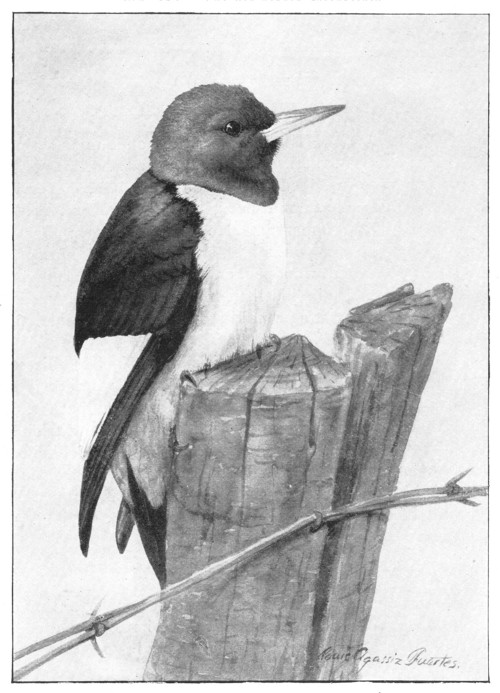
Fig. 324. The red-headed woodpecker.
7. Do red-headed woodpeckers ever visit your chicken yard?
Watch them closely and find out why they are there.
8. Do you see them later in the year eating fruit on your farm?
9. It has been found that they eat ants, wasps, beetles, bugs,
grasshoppers, crickets, moths, spiders, and caterpillars. If you
[507]
find them doing harm on your farm will you not compare it with
the good they do?
10. What plants do they visit?
11. Where is red-head's nest?
II. DOWNY WOODPECKER.—A LITTLE ORCHARD INSPECTOR.[86]
Rap! rap! rap! the little inspector has come to look at our apple trees.
"You are welcome, downy woodpecker," say we every one. "Stay as long as
you like. We want to look at you closely so that we shall know you every
time we see you."
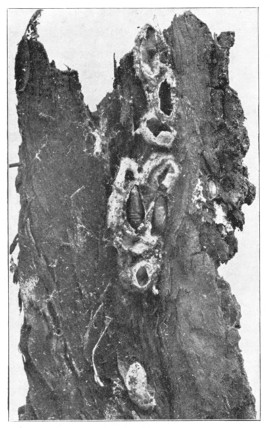
Fig. 325. Cocoons of the codlin-moth as they were found attached to a piece of loose bark, natural size.
A bird about three inches shorter than a robin, black above, white
below, white along the middle of the back, and the male red on the nape
of the neck: this is the way downy looks. A hardworking, useful,
sociable tenant of the farm: this is what downy is.
Let us see how this little woodpecker is useful. If you live on a farm,
you have probably heard of borers—grubs that get into trees and injure
them. Your father does not like these grubs, but downy does. He seems to
like any kind of grub. Watch him on a tree sometimes when he is looking
for one. He knows where to find it, although neither you nor I might
suspect that an insect is living beneath the smooth bark. Then he bores
into the tree, and spears the grub with his long tongue. His tongue is a
remarkable weapon. He can stretch it two inches beyond the tip of his
bill, and it is barbed on both sides.
Downy does not stop work, you must remember, when borers
are not plenty. Beetles nibble no more plants after his eyes light
on them. They are trespassers, and as judge, jury, and executioner,
[508]
he proves his right to be considered a most useful farm
hand. Ants, too, provide him with a good meal occasionally.
Among the helpful deeds of the downy woodpecker, we must not forget to
mention that he destroys great numbers of the larvæ or worms of the
codlin-moth in winter, when these worms have tucked themselves away in
the crevices of the bark, all wrapped in their cocoons. (Fig. 325, 326.)
Perhaps your father has shown you these little cocoons along the body
and in the crotches of the apple tree. If not, you can find them
yourself. Open some of them and see whether the worm is still there. If
he is not, downy has probably taken him. I suppose you know that the
larvæ of the codlin-moth are the worms you find in apples. See Leaflet
LIII.
You must not confound the downy woodpecker with that other woodpecker,
the sap-sucker, that often drills rings of holes in the trunks of apple
trees. The sapsucker has yellow on his under parts. I shall tell you
about him some other time.
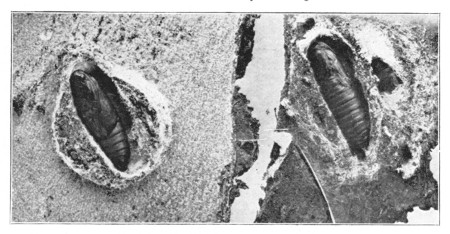
Fig. 326. Pupæ of the codlin-moth in cocoons, enlarged.
You have learned that insects and apple-scab and yourselves all
try to see who shall own the apple fruit. Now you know that
birds, and insects that feed on leaves and in the wood, are also
concerned in this quarrel about the apple.
A Few Things To Observe.
1. Does the downy woodpecker travel down a tree head first or
does he hop backward?
2. Try some day to see his feet. You will find that two of his
toes are turned forward and two backward. Are there other
birds that have this arrangement of toes?
[509]
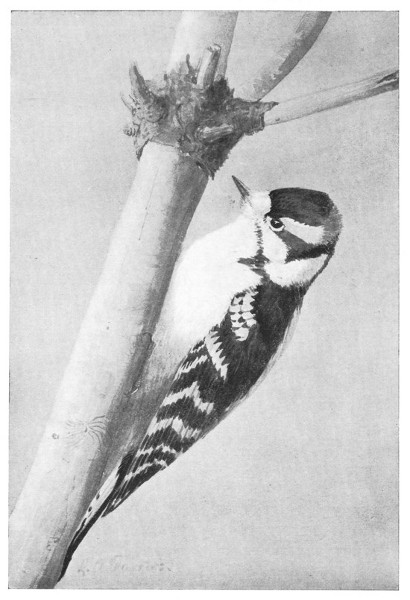
Fig. 327. The downy woodpecker.
[510]
3. Notice that he braces himself with his tail as he works.
4. Do you ever see the downy woodpecker eat seeds of plants
that the farmers do not like to have on their land?
5. Hang a bone or piece of unsalted suet out of doors for the
woodpeckers. They will enjoy an unexpected feast.
6. Where does downy make his nest?
III. THE SAPSUCKER.[87]
If you are walking through an orchard or wood and see a jolly
little woodpecker with red on its head, do not say at once that it
is a downy woodpecker. Look again. Has it yellow on the
underparts, black on the breast, a red throat, and red on the
crown instead of on the nape? Then it is a sapsucker, a new
arrival. (Fig. 328.) It is larger than the downy. The female
has no red on the throat.
And to think that such a merry little fellow has such a bad
reputation among farmer-folk! You will be surprised to find
how unkindly woodpeckers are treated throughout the country,
because of the misdeeds of the sapsucker. Even the downy has
suffered much abuse. This is unfortunate, for I am sure downy
woodpeckers have done much more good than sapsuckers have
done harm.
I wish that all Junior Naturalists would try to find out whether
even the sapsucker deserves all that has been said against him.
He does harm by boring holes in trees, but how much? Let us
learn. As woodpeckers are not shy, it is not difficult to get near
them. I have stood within a few feet of a sapsucker, and he did
not mind a bit. He kept on boring holes in a tree without a
thought that any one might object.
1. How many trees can you find that have holes bored by the
sapsucker?
2. How are the holes arranged; here and there on the trunk,
or in rings around it? Have you ever found a complete ring of
holes?
3. Keep a record of the months in which you find the sapsucker.
4. Notice how the sap runs down into the holes that have been
newly made by a sapsucker.
5. It is said that this woodpecker eats the inner bark of the
tree as well as the sap. What can you find out about this?
[511]
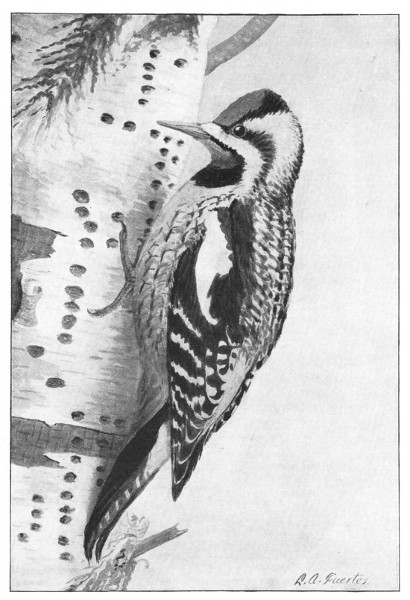
Fig. 328. The sapsucker. Compare this picture with that of the downy woodpecker in Fig. 327.
[512]
6. Do you ever find insects near the holes made by the sapsucker?
Do you think he eats them?
7. Find out where the sapsucker has his nest.
IV. THE FLICKER.[88]
Three woodpeckers have been introduced to you in these leaflets:
the red-head, the hard working downy (Fig. 327), the sapsucker
(Fig. 328). There is one more that we ought to add to
the list for summer study, since he is very likely to cross our path,—the
flicker (Fig. 329).
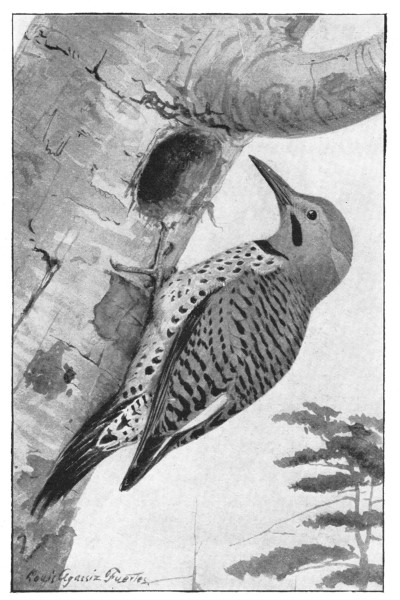
Fig. 329. The flicker.
[513]
This woodpecker has a great many names, probably because he
lives in a great many States. The most common are: flicker,
highhole, yellow-hammer, and golden-winged woodpecker. I like
the name flicker best of all.
He is a good-sized bird, about two inches longer than a robin.
His colors are: brownish with black spots above, whitish spotted
with black underneath, a black crescent on the breast, and a scarlet
crescent on the back of the neck. When he flies you will notice
two things: the rich golden color of the inside of his wings, and
the white patch on the back just above the tail.
Now, since he is a woodpecker, you will probably expect to find
the flicker in trees; but you are quite as likely to find him on the
ground. About half of his food consists of ants, and these he
finds afield. He also eats other insects, as well as a good deal of
plant food.
I hope that you will see a flicker this year and hear him call
out, "a-wick-a-wick-a-wick-a-wick-a-wick-a." Possibly some of
you may find a nest that these birds have dug out in an old apple
tree. They do not always make new nests, however, but live in
the deserted homes of other woodpeckers.
Questions.
1. Has the flicker a straight bill like the downy woodpecker?
2. Have you seen the flicker's mate? If so, in what way does
she differ from him in color or marking?
3. Where does the flicker build its nest? What color are the
eggs?
4. Try to watch a flicker feeding its young. Describe.
5. Do you know the call of the flicker? Can you imitate it, or
write it so that Uncle John can recognize it?
6. Do flickers remain all winter? If not, when do they come?
When do they leave?
[514]
[515]
LEAFLET LXVIII.
DESERTED BIRDS'-NESTS.[89]
By ALICE G. McCLOSKEY.
There is a wagon trail which I like to follow; it is always a
pleasant walk. There is no foot path; so I do not think many
people pass that way. Perhaps this is why many little wild
creatures of the field and wood like to live there. I do not
know any other place where the birds sing so sweetly, where
the wild flowers grow so thick, and where the insects are
so numerous.
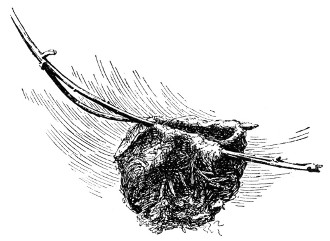
Fig. 330. The vireo's nest.
By the side of this road I found the little vireo's nest which you see
in the picture. It was about five feet from the ground, and hung near
the end of a long branch. It was interesting to find out what it was
made of,—grasses, strips of bark, hair, pine needles, plant fibres, and
bits of paper. On the outside were lichens and spiders' webs. The pieces
of paper were dropped along the way, I think, by the leader in a
cross-country run. Even the little vireos have an interest in the
outdoor sports of the college men.
One of the most interesting bird homes is the oriole's nest. Uncle John
will like to know whether you find one. The young orioles must have
happy times in their cradle, which hangs between the earth and the sky.
Winter is the best time of year to hunt for birds' nests. It is hard to
find them in the spring and the summer. The parent birds intend it shall
be. If you succeed in getting a nest, take it into the school room so
that the other members of your club can study it with you.
Suggestions.
Where did you find the nest? What is its size and shape?
Name it, if you can.
[516]
Was it built on the horizontal crotch of the branch, or on an
upright crotch?
How was it fastened to the branch?
Notice the materials of which it is made.
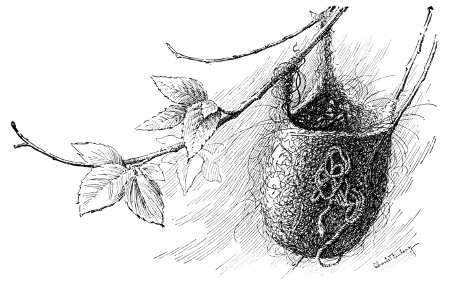
Fig. 331. The hanging nest of the oriole. A cord is woven into the nest.
In the oriole's nest you will see that there is a difference in the
way in which the upper and lower parts are made. What is it?
How deep is the oriole's nest which you find? Compare the
material on the outside with that on the inside.
How is the nest fastened to the twigs?
Where does a catbird build its nest? Robin? Bluebird?
Swallow? Hen? Turkey?
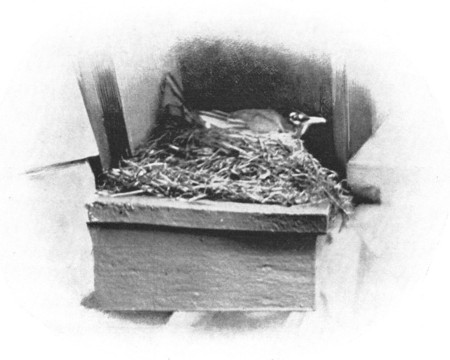
What?
[517]
LEAFLET LXIX.
THE POULTRY YARD: SOME THANKSGIVING LESSONS.[90]
By ALICE G. McCLOSKEY and JAMES E. RICE.
A rosy-cheeked girl, a freckled-faced boy and a little bald-headed baby
were the only young persons at the Thanksgiving dinner. The baby was not
old enough to be invited, but we were so thankful to have her with us
that we could not resist drawing her chair up to the table.
The turkey was a big one and "done to a turn." We old folks thought so,
the freckled-faced boy thought so, and the rosy-cheeked girl thought so.
The baby, so far as I could judge, thought not at all. She chewed
energetically on a spoon and left the discussion of the turkey to her
elders.
Having known for a long time that children like to chatter, I decided
that I would give the little lad and lassie opposite me an opportunity
to talk about turkeys, ducks, chickens, and the like. "These," thought
I, "are good Thanksgiving topics, and a boy and girl who have lived on a
farm all their lives can tell me some interesting things about them."
But this world is full of many strange surprises! It was not long before
I learned that those little folk could not answer some very simple
questions about poultry. They did not even know why a chicken does not
fall off the roost when it sleeps. To be sure, they could tell the exact
moment when, in the process of carving, the wish-bone would appear: but
you will admit that this is very little. I certainly was disappointed.
The bald-headed baby cheered things up a bit, however, by crowing
lustily. I rejoiced in the fact that apparently she had heard sounds
from the barn-yard.
Now there are many reasons why children, Junior Naturalists
especially, should know something about poultry. It may be that
[518]
you live on a farm and will want to raise chickens, ducks, and turkeys
some day; and the farmer who knows his poultry best
will be most successful in raising it. But whether you live in
country or city you will like to study these interesting birds. Let
us see what we can find out about them in the next three or four
weeks. November, the month of Thanksgiving, is a good time to
begin.
Turkeys.
Let us first pay our respects to the king of the poultry yard.
We may never know His Royal Highness, the old gobbler, very
well, because it is said he will not often permit folks to meet him
on his own ground. I am told that a visitor is more sure of a
welcome within his domain if he wear sombre garb. Although
gaily dressed himself the old fellow objects to bright colors on
others.
There is one thing that we can do if the gobbler does not let us
near him,—we can peek at him through the fence. Then, too, at
Thanksgiving time many a slain monarch will hang in a nearby
market. Following are a few suggestions that will help us to learn
something about turkeys. I hope that you know all these things
now, and, therefore, will not need to be asked. If you do, please
write Uncle John. How many letters do you think he will get
from such persons?
In the study of any bird, learn to describe it fully: the size, the
shape, the bill, the length of legs, the feet, and the color. Is there
more than one color of turkey?
Observe the head, face and wattles of the turkey gobbler.
Notice the strong, curved beak; the bright, clear, hazel eyes.
How many colors does he wear?
When the turkey is being prepared for the Thanksgiving dinner,
ask mother for the foot. Are there any feathers on it? Has it
the same number of toes that you find on a rooster's foot? Is the
arrangement of the toes the same?
Perhaps you find scales on the legs of the turkey. Do you find
them also on hens' legs? On which side of the leg,—front or
back—are the scales the larger?
When I was a little girl I liked to pull a tendon that I found in
the turkey's foot after it had been cut off. It was amusing to see
the toes curl up. I did not know then that when birds roost at
night this tendon is stretched as they bend their legs. Then the
toes grasp the perch and hold the bird on. When it stretches its
[519]
leg to leave the roost the toes spread out, but not until then
Because of this birds can go to sleep without the least fear of
falling. What kind of perch do they choose, a wide one or a narrow
one? Why?
Can you tell which is the hen turkey and which the gobbler?
Explain. On which one do you find a hairy tuft on the breast?
Did you ever hear of the caruncle on the head of the turkey?
Compare this with the comb in domestic fowls. Does it differ in
shape? Do ducks and geese have combs?
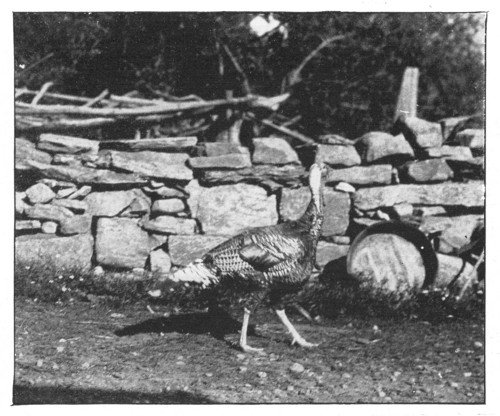
Fig. 332. A turkey likes to roam through the fields.
What is the color of the turkey's face? Does it change color?
Do you notice any difference in color when the turkey is angry?
What are the turkey's wattles?
Notice the fourth toe. Why is it placed in opposite direction to
the others? I wonder whether it enables the fowl to grip the
perch; and whether it gives the turkey a wide span for support in
running over loose brush.
Turkeys and chickens and other animals have habits, as boys
and girls do, only that they are not bad habits. Did you ever
watch turkeys hunting grasshoppers? And did they go in flocks
or alone? How do chickens hunt,—in flocks or alone? Which
[520]
roams farther from home, turkeys or chickens? Do turkeys lay
their eggs in the barn or poultry house, as chickens do? Did you
ever see a turkey's nest, and where was it?
We have Junior Naturalists in many parts of the world: England,
Scotland, Australia, Egypt. Will they have an opportunity
to study turkeys? See what you can find out in answer to this
question.
A Time-honored Race—Geese.
Geese, as you know, come of a very distinguished race. This is
no advantage to them in a social way in the poultry yard, however.
There is not a duck nor a turkey nor even a wise rooster, that
knows or cares whether in times gone by geese saved a Roman
city, or whether they were recognized in ancient Egypt.
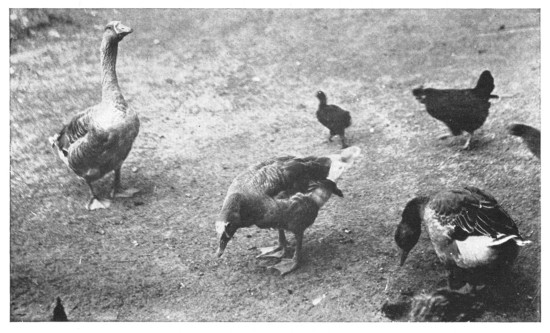
Fig. 333. Geese; "a very distinguished race."
The story of the old gray goose was the one I liked best long
ago,—the goose that died before Aunt Nabby had enough feathers
to make a bed. How often you and I have listened to mother
sing about her! And what an inconsiderate old gray goose we
thought she was, to die before the feather bed was finished.
Some things for Junior Naturalists to think about come into my
mind in connection with Aunt Nabby's goose and others of its
kind:
Why do goose feathers make the best beds?
Do you think an old grandmother goose would give enough
[521]
feathers in her lifetime to make a good bed? I have heard of one
that lived sixty years.
Are feathers ever taken from live geese for beds?
Compare the feathers of land-fowls and water-fowls.
Probably one or more of our Junior Naturalists will have a
goose for his Thanksgiving dinner. If so, I wish that the wing
feathers might be brought to school. See whether you can find
out why the wing feathers of a goose were preferred for making
quill pens. Make a pen if you can and write a letter to Uncle
John with it. The five outer wing feathers are most useful for
writing, and of these the second and third are best. Why? Do
you think that the Declaration of Independence was signed with
a quill pen? Do goose quills make good holders for artists'
brushes?
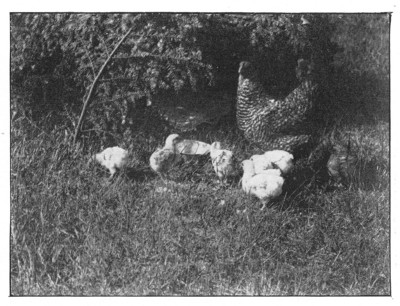
Fig. 334. A happy family.
What kind of food do geese like best?
Is the tongue of a goose similar to that of a turkey or chicken?
Is the old gander as cross as the turkey gobbler?
Have you ever seen a flock of wild geese flying northward or
southward? Which way are they going in the fall? Observe that
nearly always they keep their V-shaped ranks unbroken. There
is, of course, a leader whose call the flock follows. Whether the
leader is some chosen member of the number or whether he takes
his position by chance I do not know. What time of day do the
wild geese fly? Do you like to hear them honking as they go on
[522]
their way? I wish you would find out whether our farmyard geese
are only these common wild geese tamed.
Chickens and Ducks; and the Story of Two Mother Hens.
One mother hen had her own brood of fluffy little chicks (Fig.
334). When they were old enough they scratched for worms and
ate gravel as obediently as any one could desire. How happy
they were underneath the hemlocks in the long afternoons!
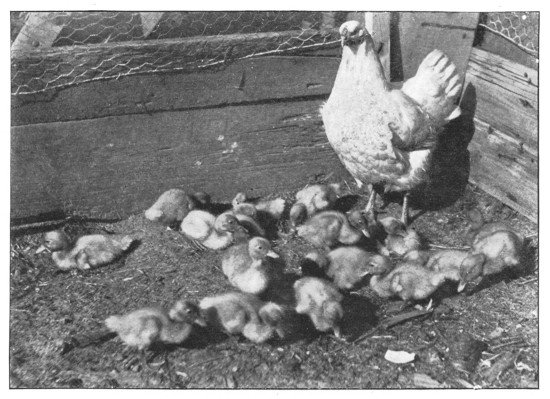
Fig. 335. Mother hen and baby ducks.
The other mother hen had to take care of ducks (Fig. 335). Pretty
as any chicks they were, but troublesome as only little ducks can
be with a nervous old hen for their adopted mother. The family
in the picture looks very contented. Do you suppose that the
photographer told them to look pleasant? When we come to
know ducks and chickens better, we shall learn why the little
ducks are often such a trial to the hen mother.
It may be that when we ask boys and girls to study chickens
and ducks they will say that there is nothing new to learn about
them. I am not so sure. The freckled-faced boy thought he knew
all about them, too. Let us see whether we can suggest some new
things to think about, as you look over the fence into the poultry
[523]
yard, or watch the cook preparing a hen or duck for the Thanksgiving
dinner.
As I looked at the chickens in a barn-yard the other day, I was
interested in the different kinds that I saw: some brown, some
white, some black, some speckled; some had feathers on their
feet, others had not; some had combs with many points, in others
the comb was close to the head; some had long tails, some short
tails, some no tails at all to speak of. If I were to name the differences
that I noticed you would not get through reading them
in time to write your November dues. How many unlike marks
or characters can you find in chickens or ducks?
Have you ever seen two chickens or two ducks exactly alike?
Compare the feet of a hen and a duck. Their bills. Do you
think that a duck can scratch for worms?
What do ducks eat? What kind of food do hens like best?
How do a hen's feathers differ from a duck's?
Note the scales on a hen's foot. Snakes have scales on their
bodies, too. Some day you may learn a wonderful story that these
similar features of hen and snake suggest.
Touch a hen's eye lightly with a pencil. Does she cover it with
a thin eyelid? A turtle does this. Has a turtle scales also? If
so, may be it will come into the wonderful story connected with
hens and snakes.
Look closely at a hen's ear.
Watch chickens as they make their toilet. A farmer told me
that among the tail feathers of barn-fowls there is an oil sac that
they find useful in cleaning their clothes. I wonder whether this
is true?
While I was watching some chickens the other day, I saw one
jump up into the air several times. She was a skillful little acrobat.
What do you think she was trying to catch?
Watch the cook as she prepares a chicken or turkey for dinner.
Find the crop into which the food passes after it has been swallowed.
From the crop it passes on to the gizzard. Look closely
at the gizzard. See what strong muscles it has. It needs them to
grind the grain and gravel stones together. It is a very good mill,
you see.
Try to find out whether a duck has a crop and a gizzard. Do
not ask any one. Wait until there is to be a duck for dinner some
day. Would you suppose from the kind of food ducks eat that
they need a crop and a gizzard?
[524]
Do little chickens have feathers when they are hatched? What
is the cover of their bodies called? Are they always of the same
color when they are hatched that they are when they are grown
up? What kinds of poultry change their color when their feathers
grow? Notice the chickens of Black Minorcas (if you know any
one who has that kind), then write Uncle John about their color.
Did you ever see fowls without feathers? When you go to the
fair be sure to look for some "Silkies." Did you ever see fowls
whose feathers were all crinkled up toward their head? Look
for "Frizzles" when you go to the fair.
A Lesson on Eggs.
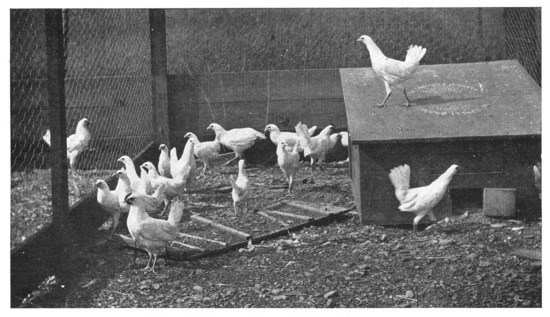
Fig. 336. A coop of chickens.
What is the color of the turkey's egg? Do the first-laid turkey's
eggs differ in color from those that are laid later? How do these
eggs differ in color from the eggs of ducks, geese, and hens? Do
eggs from different breeds of hens differ in color? Do eggs from
different kinds of poultry differ in shape? Can you not make
some drawings of eggs showing how they differ, and send to
Uncle John? Not one of you can tell how much a turkey's egg
weighs, nor a hen's egg. Do you think that eggs from all kinds
of hens weigh the same? And if they do not, do you think that
they are worth the same price the dozen?
Did you ever look through an egg at a strong light? What did
you see? Was there an air space? Was it on the big end or the
[525]
little end? Leave the eggs in a dry room for a few days. Does
the air space increase in size? Boil an egg. Remove the shell
carefully over the air space. Do you notice a membrane? Are
there two membranes? Boil an egg until it is very hard; does
the white of the egg separate in layers? Break the yoke carefully;
do you notice layers of light and dark color? Is there a
little soft light colored spot in the centre? Write to Uncle John
and ask him what this is.
Some Questions in General.
How many varieties of fowls can you name? How do they
differ in size and color?
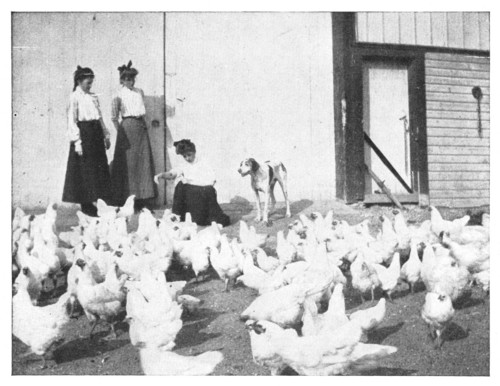
Fig. 337. What kind of hens are these?
Have you ever seen ducks, geese, hens, and turkeys standing on
the snow or ice? If so, how did they behave? Which seemed to
enjoy it? Why should a duck or goose be able to swim in ice
water without apparently suffering from cold? When mother
dresses a duck or goose for dinner, ask her to let you see the
layers of fat under the skin and inside the body. Write to Uncle
John and tell him what the fat in the body is for. Ask him how
this fat came in the body; also whether there is such a thing as
fat in the food which the ducks eat.
Did you ever see hens and ducks out in the rain? Did they all
[526]
enjoy it? Did you ever see anything wetter than a wet hen?
Why do they look so disconsolate?
Examine the feathers of different kinds of poultry. How do the
feathers of ducks, geese, turkeys and fowls differ? Try wetting the
various feathers, then let them dry out. Make drawings of these
feathers, showing, if you can, the different colors and shapes.
Do turkeys think? Did you ever watch a turkey steal her nest?
Where did she go? How long did you watch her before you found
the nest? Did she cover up her eggs? With what? Why do they
cover the eggs when they leave the nest? Do ducks, geese, turkeys,
and hens all cover their eggs? Why do hens differ in this
respect from the turkeys? Do all kinds of ducks cover their eggs?
Did you ever watch ducklings and little chickens eat? Did
you notice any difference in their appetites? Which grow faster,
little chickens or little ducks?
Do you know that some hens do not pay their board? Sometimes
hens eat more than they are worth. It may be the fault of
the hen or it may be that she is not provided with the proper kind
of food or given the proper care. A hen cannot make eggs unless
she has the proper kind of food. Some persons so feed and handle
their hens that they are able to produce eggs for six cents the dozen;
other persons expend more than a dollar to get the dozen.
How does the farmer make his money from fowls (that is, what
kind of products does he sell)?
You should learn to classify chickens according to the uses for
which they are grown. (1) Some kinds of hens excel in egg-laying.
These kinds are known as the "egg breeds." One of the
leading egg breeds is the Leghorn. (2) Others produce much
meat, and are known as the "meat breeds," as the Brahma. (3)
Others are fairly good fowls for both eggs and meat, and are
called "general-purpose breeds," of which Plymouth Rock and
Wyandotte are good examples. (4) Then there are "fancy breeds,"
grown as pets or curiosities or as game birds. Now, try to find out
whether there are any general differences in form and looks to distinguish
one class of breeds from another. And find out whether
turkeys, geese, and ducks may be similarly classified.
How Frank and Henry Raised Chickens.
Frank and Henry wanted to keep chickens all by themselves.
They thought they might sell the eggs and the fowls and get
spending money. They knew little about chickens, but then, it did
[527]
not matter, for chickens will take care of themselves. All there
is to do is to give them corn and water every day,—at least, so
the boys thought.
Both boys had a hard time the first year, but they kept at it. Frank
finally made a success. Henry lost money; his hens died or did not lay,
and he had to give up. One boy turned out to be a good farmer and the
other a poor farmer. You have seen such farmers living side by side.
I will tell you why Frank succeeded. 1. He provided warm and pleasant
quarters for the chickens, so that the fowls were comfortable and
contented. 2. He learned to like the chickens, so that he spent many of
his extra hours watching them and caring for them. 3. He learned that
something more is required in feeding a hen than merely to satisfy her
appetite. Some kinds of food may be best for growing chicks and others
for laying hens. 4. He soon found that some hens lay more and larger
eggs than others, and he saved eggs from these hens for hatching. Henry
said that "eggs are eggs" and that there was "no sense in being so
fussy." 5. He learned that eggs and poultry sell best when they really
are best and when they are carefully cleaned and neatly packed. Frank
had learned the first lessons in good farming.
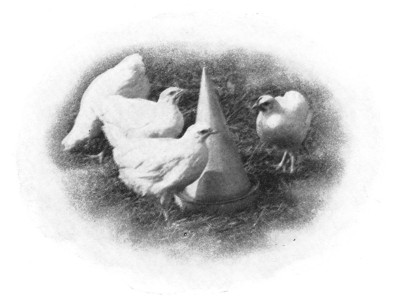
Fig. 338. At the drinking fountain.
[528]
[529]
LEAFLET LXX.
LITTLE HERMIT BROTHER.[91]
By ANNA BOTSFORD COMSTOCK.
In far Thibet exists a class of Buddhist monks who are hermits and who
dwell in caves. I was told about these strange people by a Senior
Naturalist, who has spent his life going around the world and finding
the countries upon it as easily as you Junior Naturalists find the same
countries on the globe in the schoolroom. A real naturalist is never
contented with maps of places and pictures of things, but always desires
to see the places and things themselves.
The Senior Naturalist told me that he found Thibet a dreary land
inhabited by queer people; and the hermit monks were the queerest of
all. Each one dwelt in his solitary cave, ate very little, and worked
not at all, but spent his time in thought. Could we read his thoughts we
should be none the wiser, since they are only mysterious thoughts about
mysterious things.
Now it is a surprising fact that we have hermits of similar habits here
in America; only our hermits are little people who dress in a white garb
and live in cells underground; they also eat little and work not at all,
and probably meditate upon mysteries. However, they are equipped with
six legs while the monks of Thibet have only two, a difference of little
importance since neither hermit travels far from his cave.
There are in eight or nine counties in New York State places that may
surely expect visitors on certain years. The connection between these
guests and the hermits of Thibet may not seem very close at first sight;
but wait and see.
The reason why these New York counties expect company is
that they entertained a large number of similar guests in 1882,
[530]
1865, 1848, 1831, 1814, in 1797, and probably at intervals of
seventeen years long before that; in 1797, however, was the
first record made of the appearance of these visitors. Every
time they came they probably outstayed their welcome; yet they
had the good quality of allowing their hosts sixteen years of rest
between visits.
In order that the Junior Naturalist may recognize these visitors
I will describe their methods of arrival. Sometime in the latter
part of May or in early June you may hear a great buzzing
in some trees, as if there were a thousand lilliputian buzz saws
going at once. If you examine the trees you will find on them
many queer-looking insects, with black bodies about an inch long,
covered with transparent wings folded like a roof. Naturally you
will wonder how such great numbers of large insects could appear
one day when they were nowhere to be seen the day before. But
if you look at the ground beneath the trees you will find in it
many small holes. You will also find clinging to the trees many
whitish objects, which at first sight seem like pale, wingless
insects, but which on closer examination prove to be merely the
cast skins of insects (Fig. 339). These are the cowls and robes
which our little American hermits cast off after they come out of
their underground cells, and which they must shed before they
can free their wings. Our little American hermits we call the
seventeen-year locusts. However, this name is a most confusing
one, since we also call our grasshoppers locusts, and to them the
name truly belongs. These seventeen-year locusts are really
cicadas, and they belong to a different order from the locusts.
The real locusts have mouth-parts formed for biting, while the
cicadas have mouth-parts grown together in the form of a tube,
through which they suck juices of plants. So we hope the Junior
Naturalists will call our little hermits by their right name,
cicadas; and will not permit them to be spoken of as locusts.
In order that you may know the mysterious lives of these wonderful
insects, I will tell you the story of one of them.
The Story of Little Hermit Brother, Cicada Septendecim.
Once a cicada mother made with her ovipositor a little slit or
cavity in an oak twig, and in this slit placed in very neat order
two rows of eggs. Six weeks later there hatched from one of
these eggs a pale, lively little creature, that to the naked eye
looked like a tiny white ant. If, however, we could have examined
[531]
him through a lens we should have found him very different from
an ant; for his two front legs were shaped somewhat like lobsters'
big claws, and instead of jaws like an ant, he had simply a long
beak that was hollow like a tube. After he came out of his egg
he ran about the tree and seemed interested for a time in everything
he saw. Then, suddenly, he went to the side of a limb and
deliberately fell off. To his little eyes the ground below was
invisible; so our small cicada showed great faith when he practically
jumped off the edge of his world into space. He was such a
speck of a creature that the breeze took him and lifted him gently
down, as if he were the petal of a flower; and he alighted on the
earth unhurt and probably much delighted with his sail through
the air. At once he commenced hunting for some little crevice in
the earth; and when he found it he went to the bottom of it and
with his shovel-like fore-feet began digging downward. I wonder
if he stopped to give a last look at sky, sunshine, and the beautiful
green world before he bade them good-bye for seventeen long
years! If so, he did it hurriedly, for he was intent upon reaching
something to eat. This he finally found a short distance below
the surface of the ground, in the shape of a juicy rootlet of the
great tree above. Into this he inserted his beak and began to take
the sap as we take lemonade through a straw. He made a little
cell around himself and then he found existence quite blissful. He
ate very little and grew very slowly, and there was no perceptible
change in him for about a year; then he shed his skin for the first
time, and thus, insect-wise, grew larger. After a time he dug
another cell near another rootlet deeper in the ground; but he
never exerted himself more than was necessary to obtain the little
food that he needed. This idle life he found entirely satisfactory,
and the days grew into months and the months into years. Only
six times in the seventeen years did our hermit change his clothes,
and this was each time a necessity, since they had become too
small. Judging from what the Senior Naturalist told me, I think
this is six times more than a Thibetan hermit changes his clothes
in the same length of time.
What may be the meditations of a little hermit cicada during
all these years we cannot even imagine. If any of the Junior
Naturalists ever find out the secret they will be very popular
indeed with the scientific men called psychologists. However, if
we may judge by actions, the sixteenth summer after our hermit
buried himself he began to feel stirring in his bosom aspirations
[532]
toward a higher life. He surely had no memory of the beautiful
world he had abandoned in his babyhood; but he became suddenly
possessed with a desire to climb upward, and began digging
his way toward the light. It might be a long journey through the
hard earth; for during the many years he may have reached the
depth of nearly two feet. He is now as industrious as he was
shiftless before; and it takes him only a few weeks to climb out of
the depths into which he had fallen through nearly seventeen
years of inertia. If it should chance that he reaches the surface
of the ground before he is ready to enjoy life, he hits upon a device
for continuing his way upward without danger to himself. Sometimes
his fellows have been known to crawl out of their burrows
and seek safety under logs and sticks until the time came to gain
their wings. But this is a very dangerous proceeding, since in
forests there are many watchful eyes which belong to creatures who
are very fond of bits of soft, white meat. So our cicada, still a
hermit, may build him a tall cell out of mud above ground. How
he builds this "hut," "cone," or "turret" as it is variously called,
we do not know; but it is often two inches in height, and he keeps
himself in the top of it. Under ordinary circumstances our cicada
would not build a hut, but remain in his burrow.
Finally there comes a fateful evening when, as soon as the sun
has set, he claws his way through the top of his mud turret or out
of his burrow and looks about him for further means of gratifying
his ambitions to climb. A bush, a tree, the highest thing within
his range of vision, attracts his attention and he hurries toward it.
It may be he finds himself in company with many of his kind
hurrying toward the same goal, but they are of no interest to him
as yet. Like the youth in the famous poem, "Excelsior" is his
motto and he heeds no invitation to tarry. When he reaches the
highest place within his ken he places himself, probably back
downward, on some branch or twig, takes a firm hold with all
his six pairs of claws, and keeps very still for a time. Then his
skeleton nymph-skin breaks open at the back and there pushes
out of it a strange creature long and white, except for two black
spots upon its back; on he comes until only the tip of his body
remains in the old nymph-skin; then he reaches forward and
grasps the twig with his soft new legs and pulls himself entirely
clear from the old hermit garb. At once his wings begin to grow;
at first they are mere pads on his back, but they soon expand
until they cover his body and are flat like those of a miller. The
[533]
many veins in the wings are white and he keeps the wings fluttering
in order that they may harden soon. If, in the moonlight of
some June evening, a Junior Naturalist should see a tree covered
with cicadas at this stage he would think it had suddenly blossomed
into beautiful, white, fluttering flowers.
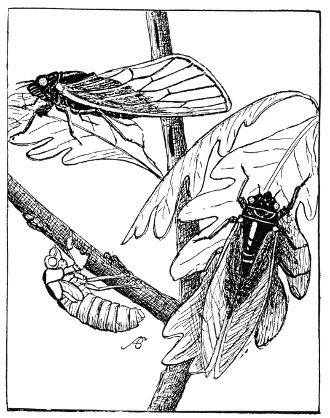
Fig. 339. The cicada is full grown at last, and his empty nymph skin is hanging to a branch.
As the night wears on, the color of our hero changes and his wings
harden; until when the sun rises we behold him in the glory of a black
uniform with facings of orange and with beautiful glassy wings folded
roof-like above his body. (Fig. 339.) Great is the change wrought in his
appearance during this one marvelous night, and greater still the change
wrought in his habits! He is now no longer a hermit; there are thousands
of his kind about him, a fact which he realizes with great joy. So happy
is he that he feels as if he must burst if he does not find some
adequate means for expressing his happiness in this beautiful world of
sunshine. Then suddenly he finds in himself the means of expression and
bursts into song. Yet, it is not a song exactly, for he is a drummer
rather than a singer. On his body just behind each of his hind wings is
a kettle drum. The head to this drum is of parchment thrown into folds
and may be seen with a lens if you lift his wings and look closely.
(Fig. 340.) Instead of drum sticks he uses a pair of strong muscles to
throw the membranes into vibration and there is a complex arrangement of
cavities and sounding boards around
[534]
these drum heads so that the noise he gives off is a great one
indeed for a fellow of his size. So fond is he of making music
that he has no time to eat or to do aught else but to sound fanfares
all the sunshiny day. He is not the only musician on the
tree; there are many others and they all join in a swelling chorus
that has been described as a roar like that made by the "rushing
of a strong wind through the trees."
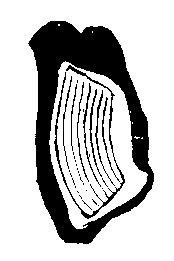
Fig. 340. The cicada's drum.
If our cicada could talk to one of you Junior Naturalists he would tell
you that there was a good reason for all this music. He would explain
that only the men of the cicada world possess drums and that the object
and reason of all their music is the entertainment of the lady cicadas,
who are not only very fond of this drumming, but are good critics of
cicada music as well. He would perhaps tell you also that he had his eye
on a certain graceful maiden perched on the leaf between him and the
sun; but she, on the other hand, seemed to give about equal attention to
him and three other drummers situated near by. Excited by the
competition and by her indifference, he rattled his drum faster and
faster until he rose to the heights of cicada melody and harmony that
left his rivals far behind. Then the lady of his choice listened
spellbound and pronounced him the greatest of all musicians, and thus he
won his bride. However, we may safely predict that their wedded life
will be too full of happiness to last. After a few weeks the sunshine,
the music, the happiness of wooing and winning will prove too much for
our hero and one day he will beat his drum in a last mad ecstacy and
fall to earth and die from happy exhaustion. His little wife may survive
him only long enough to cut slits in some of the twigs of the home tree
and place in them rows of eggs from which shall develop a family of
hermits which shall come forth and fill the world with their music
seventeen years hence.
There are many broods of cicadas in the United States, so that they
appear in different localities in different years. New York State has
five well-marked broods.
There are several other species of cicada peculiar to America. One is
called Cicada tredecim, since it appears every thirteen years.
However, this species is limited to the South.
The dog-day harvest fly, or lyreman, is the cicada that is
best known to us through the northern and middle States. This
appears in small numbers every year and is a distinct addition to
[535]
the summer chorus of insect singers. He is larger and much
more dignified in appearance than is his cousin septendecim. He
wears a black suit embroidered with scrolls of dark olive green
and the whole lower surface of his body is covered with white
powder. His drums are situated above plates which may be seen
on the lower side of the body, one behind each hind leg. He
hides in trees and his shrill music is so associated with the heat
of summer noons that the sound itself makes one drowsy. The
hermit life of the lyreman in underground cells is supposed to
last only two years.
While the cicadas of which we have spoken are the children of an ancient
race which inhabits America, Europe also has her ancient races of
cicadas, although they are not the kind which live hermit lives for
seventeen years. We have evidence that their music was held in high
esteem by the ancient races of men—especially the Greeks. When Homer
complimented his orators he compared them with cicadas. Thus it may lend
a special interest to the study of the cicada by our Junior Naturalists
when they know that his kettle drums have been celebrated instruments of
music by poets who wrote three thousand years before America was
discovered by Columbus.
Queries for Sharp Eyes.
1. When did you first see one of the cicadas?
2. What was it doing when you found it?
3. Did it do anything to attract your notice to it, or did you find it
by accident?
4. Where did you find it?
5. See whether you can determine which are the father and which the
mother cicadas.
6. Try to find where a mother cicada has laid eggs.
7. If you find where the cicada emerged from the ground, or from a hut,
give a brief description of the location, as to kind of soil, etc.
8. Where did you find the most of the cast-off nymph skins?
9. Did you discover animals or birds feeding upon the cicada?
[536]
[537]
LEAFLET LXXI.
A HOME FOR FRIENDLY LITTLE NEIGHBORS.[92]
By ALICE G. McCLOSKEY.
(Compare Leaflet XVII.)
Last year when vacation days were over our young people found it hard to
leave the acquaintances that they had made during the summer,—the
garden-folk, the road-side-folk, and the wood-folk. Let us take them
indoors with us this year. It will not be difficult to provide a home
for some of the more friendly ones and they will help to make the
schoolroom a cheerful place. How pleasant it will be in the long
afternoons to hear the cricket's merry tune or see the flutter of a
butterfly's wings! The quiet woods and the green fields will then seem
nearer and we shall feel a little touch of their mystery and beauty.
It is not necessary to have a fine home for the outdoor-folk. They will
not object if it is not an up-to-date dwelling. Fig. 341 illustrates a
very convenient terrarium, as the home is called. The sides and top are
covered with fine wire screening and the front is glass. By raising the
cover, which is fastened to one side by means of hinges, new visitors
can be admitted easily.
Another terrarium is shown in Fig. 126, page 208. This is made from an
old berry crate. It does not look quite so well as the other, but, as I
said before, the inmates will not mind a bit. The toads will give their
high jump as gracefully and the crickets fiddle as merrily as in the
finer one.
When the terrarium is ready to furnish, you can have some
nature-study trips in search of materials for it. Cover the floor
with stones and place about three inches of good soil over them.
Then you will be ready to select the carpet. Let this be of soft
green moss, the prettiest bits that you can find on the forest floor.
[538]
[539]
Leave one corner free for sods on which tall grasses grow, so that
there will be a cozy nook for the orchestra (crickets, grasshoppers,
katydids, and the like). What a fine concert there will be!
Will the most conceited toad in the terrarium ever dare to raise
his voice in song again after hearing it? Perhaps next spring we
shall know.
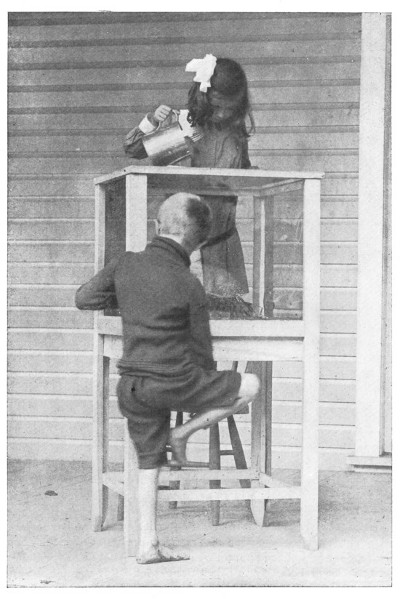
Fig. 341. A shower for the little neighbors.
Even before the home is completed, you can gather your small guests
about you. Temporary lodgings can be provided without much trouble. Fig.
342 illustrates a good insect cage, and a box containing damp moss and
covered with mosquito netting will make fairly comfortable quarters for
salamanders ("lizards") and toads.
The first visitor that you welcome will probably be a little
woolly-bear, a brown and black caterpillar that you see so often in your
autumn walks (Fig. 343). He is one of my favorite insect friends, and I
really like to have him snuggle up in a furry ball in my hand. You will
find woolly-bear a very restless little creature. You never know what he
is going to do next. He may spin a cocoon this fall or "he may curl up
like a woodchuck," as Uncle John says, and sleep until spring. Then, if
all goes well, he will spin his cocoon and come out an Isabella
tiger-moth (Fig. 344). No matter how fast woolly-bear may be hurrying
along the highway when you meet him, put him into the terrarium, for you
will find that he is a most entertaining little fellow.
If you have an insect net, sweep it among shrubs and weeds. I am hoping
that when you look into it you will find "golden-eyes" or the
lace-winged-fly. When you see the pretty little green creature you will
wonder that her children can be called aphis-lions, for they are not at
all like their mother (Fig. 345); but when you have watched them among
the aphids or plant-lice, you will understand how they have earned their
name. They have very long jaws and very large appetites.
No one knows better than golden-eyes what her children are
capable of doing when on a foraging tour. For this reason she
places her eggs high on silken stalks (Fig. 345). If she laid them
on the leaf close together, the first aphis-lion hatched would not
give the other members of his family a chance to open their eyes,
nor to know how pleasant it is to live on a green leaf. As it is he
walks down the silken stalk and finds himself among the aphids.
Then, when he has proved himself the gardener's friend by
devouring a great many of the small green insects, he spins a pearly
[540]
white cocoon and out of this comes a lace-winged-fly with glistening
golden eyes. If one of these dainty creatures comes to live
in your terrarium, you may notice some day that it has a disagreeable
odor. This is a characteristic that many insects possess,
and owing to it the birds do not like to eat them.
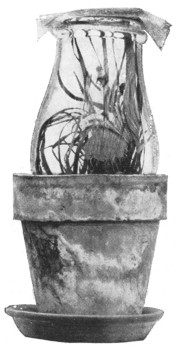
Fig. 342. An insect cage.
There is another insect out in the garden that ought to be an inmate of
every terrarium this fall, the green cabbage-worm. Some Junior gardeners
will object to calling this a friendly little neighbor, but you will
find that he will teach you many new things, in this way proving himself
friendly to you as a naturalist. You must remember that these green
caterpillars did not know that you had planted the garden in which they
worked destruction. They did not know that you wanted to send the very
best cabbage to the State fair. They knew only that when they opened
their eyes they were on a green leaf and it was good to eat.
Probably you will find the eggs of the cabbage butterfly on the under
side of the leaves. Then you can feed the young caterpillars when they
hatch. They will, of course, prefer cabbage leaves. If you miss them
some day, search in the terrarium for the chrysalids into which they
have changed. These chrysalids sometimes imitate the color of the
support from which they hang, and you may have difficulty in finding
them. For this reason it may be well to keep one of the caterpillars
under a lamp chimney, the top of which has been covered with mosquito
netting (Fig. 342), so that you may know how the chrysalids look.
The cabbage butterflies are familiar to most boys and girls; yet
as they come out of the chrysalid state in your terrarium, you will
be able to observe them more closely. Notice that the wings are
dull white on the upper sides, while on the under side the apex of
the fore wings and the entire surface of the hind wings are pale
lemon yellow. In the female you will find that there are two
black spots besides the tip on each of the fore wings, and in the
male there is but one.
Now that I have put you in the way to find a few members
of the insect world for your terrarium, I am going to ask you
[541]
to think about some other outdoor-folk that naturalists learn
to like.
Have you ever turned over stones or broken off pieces of an old stump in
the woods or along the bank of a stream? If so, you may have seen
salamanders ("lizards") making their escape as quickly as possible. If
you can get a few for your terrarium you will learn to like them, for
they are harmless and have very interesting ways. Do not catch them by
their tails as they try to get away, or you may find that you have
captured the tails but lost the salamanders.
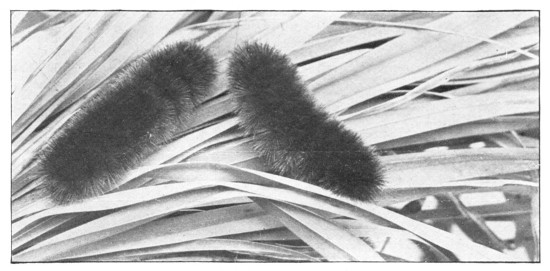
Fig. 343. Woolly-bear, natural size.
Let the excursion in search of these little fellows be one of the
jolliest of the year. You will find them in moist places and should
therefore, carry a box containing damp moss to put them in. I would
suggest that you take two boxes along, one for the smaller salamanders,
the other for their larger brothers. Why? I will tell you.
It happened this summer that a party of little folks went out
with me on a salamander hunt. We found three kinds: the
Spotted Salamander, which is black with yellow spots on each side
of the back; the Red-back Salamander, which usually has a reddish
brown band along the back; and a black one covered with
whitish spots. This black one with whitish spots was named
"Freckles" by one of our number, a much more attractive name
than his own, which is Pleth'-o-don glu-ti-no'-sus.
We placed the three in a box, and as I closed it the large
spotted salamander seemed very well satisfied (no wonder!), while
the other two raised their heads in a most appealing way. I was
[542]
firm, however, and made them prisoners, feeling sure that they
would be comfortable in the nice large terrarium.
When morning came we opened the box, for we were ready to
put our little neighbors into their new home. What was our surprise
to find the spotted salamander alone! As to countenance
he was well content; as to sides he was much bulged out. Poor
little "Freckles" and poor little Red Back! I wish I had listened
to your appeal!
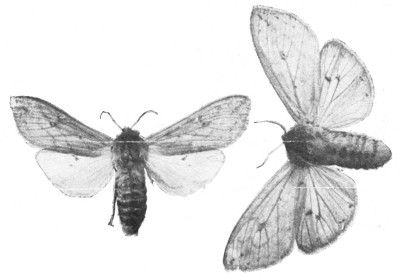
Fig. 344. Isabella tiger moths, male and female. The red
and black woolly-bear is the larva or caterpillar of this
moth. The smaller moth is the male.
Suggestions for Study.
1. A terrarium is "an inclosed bit of earth on which things may live and
grow." Do not think that it is necessary to have one as well made at
first as that in the illustration. (Fig. 341.) Uncle John will be well
pleased to know that you have made some arrangement for having
outdoor-folk live in the schoolroom. Any such home will be a terrarium.
2. Every one can have grasshoppers for study. How many different kinds
can you find? Do all have the feelers or antennæ the same length?
Observe the growth of the wings in the nymph, as the young grasshopper
is called. In the grown-up ones notice that the narrow wing is on the
outside and the pretty ones underneath.
3. Every one can also find crickets, and no terrarium will be
complete without them. In the warm schoolroom or home they
[543]
will make music until late in the year. Watch the black cricket
make music with his wings.
Notice a tiny light speck near the elbow of the cricket's front
leg. This is the ear; so you see the little fellows "listen with
their elbows."
The mother cricket has a spear at the end of her body. With
this she makes a hole in the ground in which to place her eggs.
She cannot chirp, but the father makes enough music for the
family. You will see that the mother seems to enjoy it.
Plant fresh grass seed and grain occasionally in the cricket corner
of your terrarium.
4. If you do not own an insect net, try to find a lace-winged fly
without one. It will not be difficult for young naturalists to see
the flies resting on the bushes along the roadside. These insects
are valuable to farmers because their children, the aphis-lions,
eat so many plant-lice and other insects.
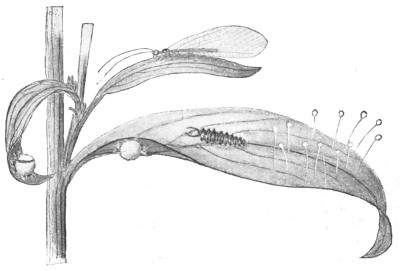
Fig. 345. Golden-eyes or lace-winged fly; eggs, larva or
aphis-lion, cocoon, adult.
Look on the under side of the leaves for the cocoon illustrated
in Fig. 345. It has the appearance of a small pearl. The first
time I found one I did not know what it was. I left it on my
desk hoping that something interesting would come out of it. The
next morning there was a pretty green insect trying to get out of
the window and I wondered how it had come there. While thinking
about it my eye fell on the cocoon lying on my desk. I
noticed that a lid had been raised on it and suspected at once
how golden-eyes had found her way into my room. Who will
[544]
succeed in getting the eggs, an aphis-lion, a cocoon, or a lace-winged
fly? Let us know.
5. The larger the number of butterflies you can bring into the
schoolroom, the gayer will be the terrarium world. Gather fresh
thistles or other flowers from which they can suck the nectar or
give them sweetened water in a dish. Notice their long mouth-parts
as they eat.
One of the most common of all butterflies is the large brown
and black one. This is called the monarch butterfly. Notice
that many of these fly together on autumn days. They are going
south with the birds.
6. Be sure to keep the moss damp for the salamanders and add
occasionally fresh pieces in which they will get food. Perhaps you
can teach them to eat raw meat after they have been with you awhile.
7. The terrarium will not be complete without a toad or two.
You can feed them flies, other insects, and earthworms, and they
may then leave the salamanders alone. You need not be afraid
to handle the toads for they cannot give you warts. When they
have been in the terrarium awhile they will show you how they
like to spend the winter.
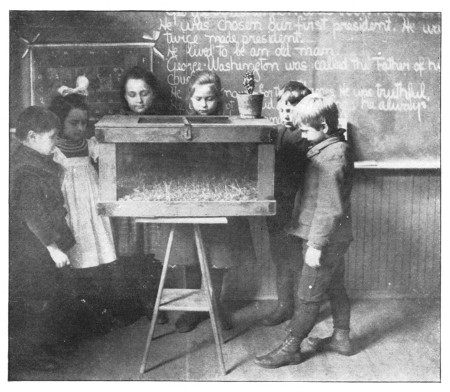
A terrarium in School No. 23, Buffalo.
[545]
LEAFLET LXXII.
MOTHS AND BUTTERFLIES.[93]
By ALICE G. McCLOSKEY.
Of all the insects that interest boys and girls, moths and butterflies
seem to hold the first place. I find, however, that young people are not
always able to distinguish these insects one from another, and do not
know very much of the strange lives they lead. Perhaps you may have
found out a few facts about them in books, but this is not knowing. To
know, one must see some of the wonderful things that they do. When you
have watched the whole life-story of a moth or butterfly, you will have
a far greater interest in these animals than their handsome wings and
graceful flight have ever given you.
The most important thing to remember in the study of moths and
butterflies is that they appear in four different forms during their
lives. These forms are:
The egg.
The larva.
The pupa.
The adult.
The Eggs.
The eggs are laid singly or in clusters. They are usually found on the
plant which is the favorite food of the young. Look for the shining
masses of the eggs of the tent-caterpillar on apple and wild cherry
trees; also for the yellow eggs of potato beetles on potato leaves.
The Larva.
The larva or "worm" hatches from the egg. During this
period in its history the insect eats and grows. If you doubt that
they have good appetites, undertake to feed a few healthy caterpillars
this spring. If you doubt that they are particular as to the
kind of food they have, find out for yourselves whether the apple
[546]
tree "worm" will eat milk-weed leaves or whether the milk-weed
caterpillar will eat leaves taken from an apple tree.
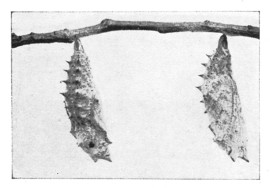
Fig. 346. Chrys'-a-lids of the mourning-cloak butterfly.
One of the most interesting things to notice in the study of larvæ or
caterpillars is that they occasionally appear in bright new coats, and
we find the old ones have been cast aside. It is necessity, not pride,
that leads them to do this. You see, an insect's skeleton is on the
outside of its body; and if it could not be shed once in a while how
would there be room for the little creature to grow?
The Pupa.
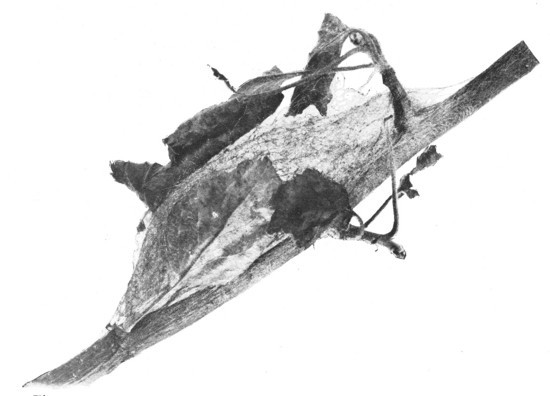
Fig. 347. Cocoon of the cecropia moth. It is often attached to the twig of a fruit tree.
Of all the forms in which moths and butterflies appear, the pupa
is the strangest. Although we speak of this period in the life of
the insect as one of rest or sleep, it is the time when the most
wonderful changes take place in its body.
[547]
The queer little objects that you see illustrated in Fig. 346 are the
pupæ of the mourning-cloak butterfly. When the caterpillars were about
to shed their coats for the last time, they hung themselves head
downward from a twig by means of a silk button which they had spun. Then
they cast off their skins, leaving the chrysalids or naked pupæ hanging;
protected from birds by their spiny form and protected from many
enemies, even from young naturalists, by their wood-brown color which so
closely resembles the support from which they are suspended.
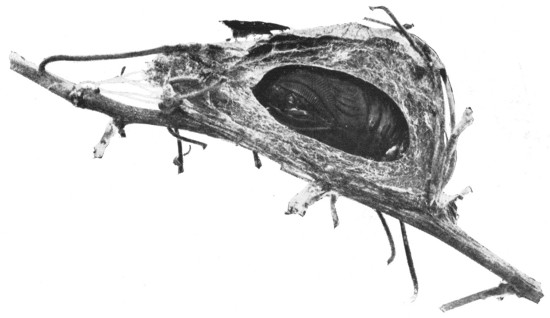
Fig. 348. The cecropia pupa inside the cocoon. Nearly natural size.
Let us next look at the pupa of a moth. This is often inside a
covering which is called a cocoon. If you look on the fruit trees
or shade trees about your home you may find a cocoon of the
ce-cró-pi-a moth. You will see that it is made of silk. This
covering was spun by the giant silkworm as a protection against
the storms of winter. How snug the pupa is inside, and how
firmly the cocoon is fastened to the twig on which you found it!
Figs. 347, 348, 349 show this interesting insect.
When you are studying pupæ remember that butterflies do not
come out of cocoons. Their chrysalis or pupa is always uncovered.
In the case of moths, however, the pupa is either inside a
cocoon or protected by being underground or in some well
sheltered place. These facts suggest a question. Is there any
reason why the one should be better fitted to endure cold and
storms than the other?
[548]
The Adult.
We now come to the fourth period in the lives of moths and butterflies,
a period which has ever had and ever will have an interest for young and
old. Since there are many persons, little and big, who cannot
distinguish the two groups, butterflies and moths, let us learn the
marks by which they may be known.
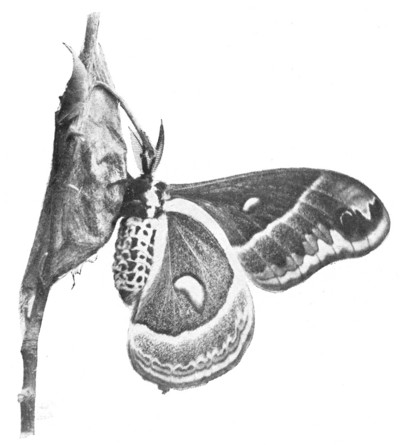
Fig. 349. Cecropia moth just emerged from the cocoon, on which it hangs. The moth comes from the pupa.
Butterflies have uncovered pupæ. They fly by day. The wings are folded
over the back when at rest. The antennæ or feelers have knobs on the
ends. (Fig. 350 B.) The body is slender.
Moths have pupae either inside cocoons or protected by being underground
or in some sheltered place. Many moths fly at night. The antennæ are
never knobbed. (Fig. 350 M M.) leave the wings spread when they are at
rest. The body is stout.
Occasionally you may come across insects that very closely resemble
butterflies, yet have some characters that are similar to those of
moths. They are the skippers, so named because of their strong and rapid
flight. The antennæ have knobs, but these knobs are drawn out and turned
back in the form of a hook. (Fig. 350 S.) The body is rather stout. The
pupa is covered by a thin cocoon. In some species the wings are held
vertically, in others horizontally.
Suggestions for Study.
Cocoons and butterfly chrysalids are very hard to find because
they so closely resemble the withered leaves that cling to shrubs
and trees.
[549]
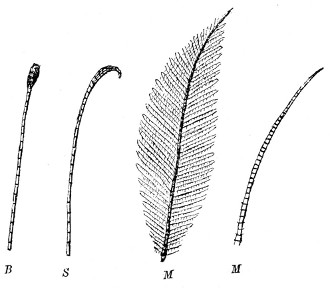
Fig. 350. Antennæ or feelers.
You will probably find cocoons of the ce-cro-pi-a and pro-mé-the-a
moths. The former, illustrated by Figs. 347 to 349, is commonly found on
fruit trees; the latter swings loosely from a branch of ash, wild
cherry, or lilac. The promethea cocoon is enfolded in a leaf which the
caterpillar fastened to a twig by means of silk before it spun the
cocoon. If you are rewarded for your search by finding some of these
winter homes, leave a few of them in a cool place and occasionally dip
them in water that they may not become too dry. Look at them carefully
from time to time and note any changes that take place. Following are a
few suggestions that will help you in the study of cocoons:
1. Observe the covering of the pupa closely. Is it made of
other material beside silk? When the woolly-bear, that many
of you have cared for all winter, spins his cocoon, he will use
some of his own hair as well as silk.
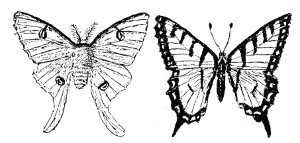
Fig. 351. Luna moth and swallow-tail butterfly.
2. Open the cocoon. Is the pupa free from it? Are the
threads of silk woven in the same direction in all parts of the
covering?
3. Out of which end do you think the moth will come?
4. Describe the inside of the cocoon. Do you find anything in
it beside the pupa?
5. The cocoons of the Chinese silkworm are soaked in hot water
[550]
or softened by steam before the thread can be unwound. Put
one of the cocoons that you find in hot water and see whether you
can unwind the silk. I wish you could secure some cocoons of
the real silkworm.
Boys and girls often ask us what they shall feed moths and
butterflies. Many of the adult insects do not eat at all. Some,
however, sip the nectar of flowers or sap of trees. Oftentimes
they will drink sweetened water or the juice of fruit. If you have
an opportunity, watch one while it eats. Notice the long
"tongue" through which it takes its food. This is made of two
pieces grooved on the inner side, and when held together they
form a tube. When the insect is not eating these mouth-parts are
coiled.
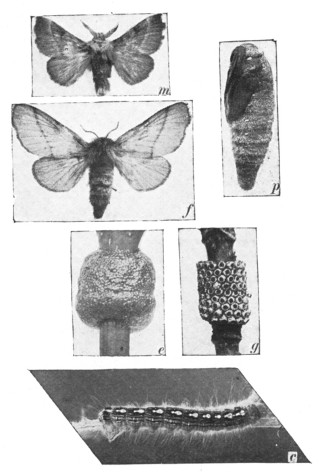
Fig. 352. The life-story of an insect, the
forest tent caterpillar. m, male moth; f,
female; p, pupa; e, egg-ring recently laid;
g, hatched egg-ring; c, caterpillar. Moths
and caterpillars are natural size, and eggs
and pupa are slightly enlarged.
[551]
LEAFLET LXXIII.
THE PAPER-MAKERS.[94]
BY ALICE G. McCLOSKEY.
A Castle Made of Paper.
Many school rooms in the State have a hornet's nest which some boy or
girl has brought to show the teacher. It is usually hung on the wall or
used as an ornament on top of the bookcase. Let us take it down some day
this month and learn something about it.
Do you think the nest can be called a castle? Why not? Look inside. Is
it not several stories high? Are there not spacious galleries in it? Is
it not as well guarded when the wasps are at home as if an army of
soldiers stood outside?
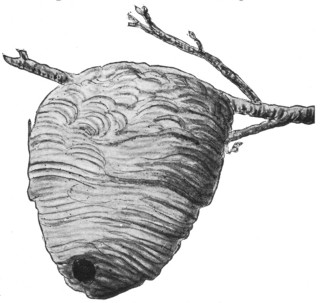
Fig. 353. The paper castle.
Let us see how this castle is built. You have heard that wasps were the
first paper makers. In the early summer you will see them around wood
that has been worn by the weather. They take off loose fibres and by
means of their mouth-parts work them into pulp. Can the rain get through
this paper? Find out whether it is waterproof.
Some of the nests made by vespa (Fig. 353), as the hornets or
yellow-jackets are called, are very large. Do you think a wasp
could make one alone? No, these are social wasps; that is, a
great many live together. There are males, females, and workers.
Some day we shall tell you how the wasps form their colony, but
for this lesson we want you to study the nest.
[552]
Notice the envelope which covers the cells. How many layers
of paper are there in it? We might call each layer a clapboard.
Can you see any difference in the direction of the outside layers
on top of the nest and those which are below?
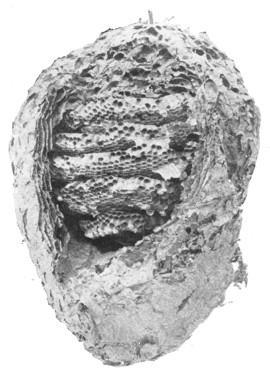
Fig. 354. Interior arrangement of white-faced hornet's nest.
How many stories high is the nest?
Note the difference in the size of the stories. Where do you find the
smallest?
Count the rooms or cells in each.
You know, of course, that an egg is placed in each cell. When the larvæ,
as the young of the wasps are called, are hatched, they still live in
the cells.
How do they manage to keep in their cells? You see the nest is really
turned upside down. Their little heads must hang where the worker wasps
can feed them easily. I wonder whether you can tell me why the young
wasps do not fall out?
The workers chew all the food which they give the little ones. When in
summer you see hornets about your flower beds or feeding on other
insects, it may be that they are preparing breakfast for the young.
Notice the flowers which they visit.
Polistes, the Paper-maker.
In the previous lesson I spoke of vespa wasps that make homes of paper.
You learned that they bite off pieces of weather-worn wood with their
jaws and chew it until it is made into pulp. Were you interested in
these social wasps? If so, you may like to hear about another member of
the same family.
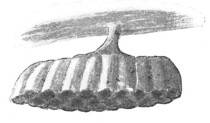
Fig. 355. Home of polistes, the paper-maker.
Hiding in some crevice about your house or the school building
there is probably a wasp which naturalists call po-lis´-tes.
[553]
She has been there ever since the cold weather came. In the
spring you may see her tearing off pieces of wood from some
unpainted building or weather-worn fence. Let us see what she
is going to do.
This wasp is the founder of a colony. The first thing she does is to
select a place for her home. Then she makes a few cells—only a few, for
she has no help. When you find a nest like the one in the picture (Fig.
355), you will see how the comb is fastened to the roof or to a tree or
to the under side of a stone.
As soon as the cells are completed, the mother lays an egg in each. From
these eggs little grubs or larvæ are hatched. They are fed by the mother
until they become pupæ. The cells are sealed over while the wasps are in
the pupa state. They have to break open the seals before they can come
out.
All members of the first brood are workers. As soon as they are hatched
the mother has nothing to do but to provide eggs. They clean out the
cells in which they passed their early days; they make additions to the
nests; they take care of the young. Do you remember how the vespa
workers prepared food for the larvæ in their colony and what they fed
them? The young polistes are cared for in the same way.
You may see the workers flying about in your garden this summer, getting
the sweets from the various flowers that you have planted. You will know
why they are so busy through the long sunny days. You will think of the
hungry little wasps waiting for their dinner. You will wonder whether
they put their heads out of the cells when the workers feed them.
Nest of Polistes.
1. Compare the nest of polistes with that of vespa.
2. In what ways do they differ?
3. Where did you find the nest?
4. How was it held in place?
5. How many cells are there in it?
6. Notice the pieces of the seals which still remain on the nest.
Tell us whether they are made of the same material as the cells.
Of what utility are the seals?
[554]
[555]
LEAFLET LXXIV.
SOME CARPENTER ANTS AND THEIR KIN.[95]
By ALICE G. McCLOSKEY.
(Compare Leaflet XXI.)
One bright August morning, as we were walking along the edge of a wood,
we found an old tree trunk lying on the ground. I am sure it had been
there a long time. Large pieces of bark were loose enough to be lifted
up; being naturalists, we took advantage of this fact to see whether
anything was living underneath.
What queer little outdoor folk we found: "thousand-legged worms,"
sow-bugs, a black beetle that looked as if its back were made of
patent-leather, and best of all a colony of ants! These ants were large
black ones known as carpenter ants. They had made very comfortable
quarters in this old log. How alarmed they were when we so rudely
exposed them to the light!
One brave ant impressed me more than any other member of the colony. I
wish that all of our girls and boys might have seen it. With my knife I
commenced to cut down the wall of one of the rooms to see what was
inside. The soldier-like ant stood near and, instead of running away, it
attacked the large steel blade with its jaws. Was not that a brave thing
to do? Are you surprised that I closed the knife and put it into my
pocket?
During all this time there was great commotion in the colony.
The worker ants were scurrying off with the younger members of
the family, trying to find a safe place for them. Some of these
little brothers and sisters were tiny white legless creatures; some
were covered up in what looked like little bags; others were
ghost-like things, very white and apparently lifeless.
[556]
Now before you can understand what is going on in an ant's
nest, you must know four things:
1. The white oblong eggs are very small. You will not see
them readily.
2. The little legless creatures, or larvæ, hatch from the eggs and
are fed by the workers. Mrs. Comstock says that an ant larva
looks like a crook-neck squash.
3. The larvæ either spin cocoons or rest awhile without any
covering before they become fully grown ants. In their resting
form they are called pupæ. Children usually think the little sack-like
pupæ are the eggs.
4. The fully grown ants come from the pupæ.
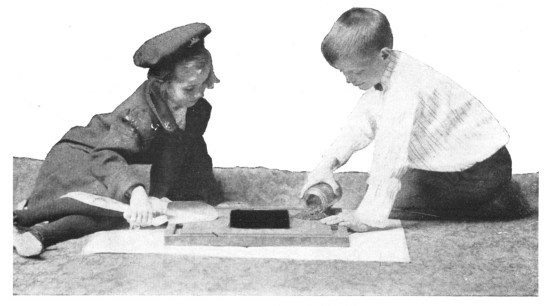
Fig. 356. Making a home for ants.
We want every Junior Naturalist Club to have an ant's nest in
the school room and to observe the following:
In time of danger do the ants look to their own safety first?
Watch the workers feed and clean the young.
Try to see an ant help a younger relative out of the pupa
skin.
Notice how many uses the ants seem to have for their antennæ
or feelers.
Has it ever seemed to you that ants carry on a conversation
when they meet?
See how many different kinds of ants you can find out-of-doors,
Tell us about their homes.
[557]
How To Make an Ant's Nest.
In the illustration (Fig. 356) you will see an ant's nest. For
this kind of nest you will need a plank, near the outside edge of
which is a deep groove. The plank should be painted; can you
tell why? In the center use two pieces of glass laid flat and separated
by narrow sticks along each side, so that they are about one-eighth
of an inch apart. The sticks should not come close together
at one corner. This leaves a little doorway for the ants. Cover
the top glass with black paper or cloth so that the space between
the two pieces of glass may seem a nice, dark, safe room in which
ants may live. It will be a good thing to keep a small piece of
damp blotting paper in one corner of this room in case the workers
want a moist place for the young ones. Fill the groove in the
plank with water and the nest is ready.
The best ant colony to take indoors is the one that you find
under stones in a pasture. With a trowel lift up the ants, pupæ,
larvæ, and sand and put the contents carefully into a pint can.
When you reach the schoolroom put the contents of the can on
the plank and watch what happens. If the ants do not find the
room you have made for them, place a few larvae and pupæ within
it. They will probably find them.
Do not neglect to provide food for the colony. Ants like to
eat cracker soaked in sweetened water, bread, cake, berry jams,
sugar, bits of raw meat, yolk of hard-boiled egg, and custard.
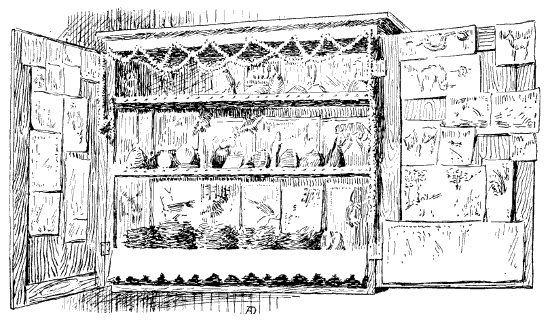
Junior naturalist museum in the school. District No. 2, Sheridan, N. Y.
[558]
[559]
LEAFLET LXXV.
A GARDEN ALL YOUR OWN.[96]
By JOHN W. SPENCER.
My Dear Nephews and Nieces:
Would you like to have a garden this summer—a
garden all your very own? If so, you can surely
have one. A man up in a balloon could have one
if he were to try; a man living down in a coal mine
could not, because there would be no sunlight.
Plants must have light from the sun, which is the
vital source of all light. I consider that anyone
who cares for a plant, growing either in a window
box or in a tomato can, has a garden. Yes; a plant growing in
an eggshell constitutes a garden.
A Little Girl's Garden.
Near my desk is a picture of a little girl, holding in her arms a
big pumpkin that she raised in a garden all her own. I do not
know how many pies could have been made from that pumpkin,
but, at any rate, it was a big pumpkin. The seed from which the
vine started was planted in an egg-shell in the school-room. When
the bright May days came the egg-shell had become too small for
the plant or the plant had become too large for the egg-shell, so
the little girl planted it in the open ground at her home. She
must have been a tiny girl or the soil in her garden must have
been very hard, for without help she was unable to spade it and
make it fine. She hired her father to do it for her and paid him
by carrying his dinner every day for a week to the shop where he
worked. When lunch time came, papa and she had a little picnic
all by themselves. There is no prettier picture than is made by
such strong comradeship between a little girl and her father.
Make a Bargain With Your Teacher.
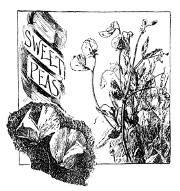
Fig. 357. Sweet peas.
I hope your teacher will permit you to have some boxes of earth
(I mean soil) in the windows of your school-room, in which you
[560]
may plant flower or vegetable seeds. In early June, just before the
close of school, you can divide the plants among yourselves and set them
out in the open ground or in window boxes at your home. Ask your teacher
whether you may have such a privilege. Promise that if she will grant
this favor you will be just as good as the "little girl who had a little
curl that hung in the middle of her fore-head," and if at any time you
become "horrid" the teacher may give your share of the plants to some
one better behaved than yourself. If she is a wise teacher she will
consent, but not until she has made a bargain with you that you are to
do all the work and to ask nothing from her but advice when you need it.
A Plant Nursery.
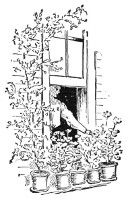
Fig. 358. A nest of window pots.
Your first garden should be in a shallow box, called a "flat," which you
may consider a kind of nursery for the plants. Let this nursery, or
cradle, be as long and as wide as a soap box, and not more than three or
four inches deep. You can make a "flat," as gardeners do, by sawing a
soap box in two. In the bottom of the box make some small auger holes
for drainage. Some of you may be so fortunate as to be able to gather
from the woods and fields the material for fitting up the flat. Some
moss,—say about an inch of it,—should first be laid in the bottom.
When moss cannot be found, use stones or pieces of broken pottery to
cover the drainage holes. This is to prevent the soil from washing
through. The remainder of the flat should be filled with good woods
earth. Pack the soil firmly. Fill the flat not even full, but to within
half an inch of the top. Those who cannot go to the fields must get the
best garden soil to be found. A few children may be unable to get even
garden soil. They will be obliged to go to the florist's for soil, as
they must do when they fill their window boxes. Because of the frequent
waterings required by all plants growing in boxes, it is important to
get soil that is not sticky and that will not pack hard.
[561]
Sowing the Seed.
When the time comes for the sowing of seeds, you had better ask your
teacher to look over your shoulder to see that you do it correctly. In
sowing, put the seeds in straight rows. These rows may be made by
denting the soil with the sharp edge of a stick or ruler. Let the rows
extend the entire width of the flat. Into the dent, drop the seeds at
regular intervals. If any seeds drop outside of the dent, gently push
them into place with a toothpick. Half a dozen rows of one variety of
flowers or vegetables having small seeds will give a large number of
plants. One flat may accommodate a number of varieties.
At the point where one variety stops and another begins, a neat label of
wood should be stuck. This affords a good chance for a boy to bring his
new jack-knife into use. On the label should be written the name of each
variety. This will give an excellent opportunity for one who writes a
good vertical hand to make himself useful. Begin at the very top of the
label and write towards the lower end; then if the lower part of the
label rots off or becomes discolored, you will still have the first and
most important part of the name left. The label should never be
disturbed, for a careless boy or girl might not put it back into the
exact place where it was found, which would be indeed unfortunate. The
Smiths and Joneses of that plant community would become so mixed that
the Joneses would be called Smiths and the Smiths would be known as
Joneses. It would be as bad as changing door-plates.
When the seeds have been evenly distributed in rows like houses along a
street there comes another very important step,—the covering of the
seeds. If seeds are covered too deep they will rot because of too much
moisture; if the covering is too thin, the soil will dry so rapidly that
the seeds will fail because of insufficient moisture. The size of the
seed usually determines the amount of covering necessary. As a broad
general rule, the soil covering should be about four times the thickness
of the seed.
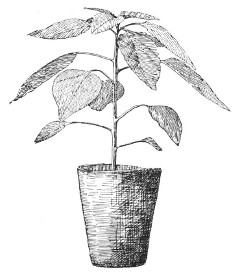
Fig. 359. Transplanted into a pot.
Having been covered, the earth must be thoroughly watered.
This must be done gently and carefully. If done with a rush, the
water will wash the covering away and many of the seeds will be
left bare. Whenever such an accident occurs, the seed may be
pushed into the soil with a toothpick. At most times when watering,
continue to apply the water until it just begins to drain
[562]
through the bottom of the flat. This should be practiced even after the
seeds have germinated and become growing plants. Keep the flats shaded
until the plants begin to push their heads through the soil. After this
time strong light should gradually be given them that the plants may not
become tall and spindling, or "leggy," as gardeners say.
If the seed boxes are in a sunny or windy place, the soil may dry out
too rapidly. This can be prevented by laying a newspaper over the flat
when the sun strikes it. As the plantlets grow, care must be taken not
to shade them too much.
A Plant Kindergarten.
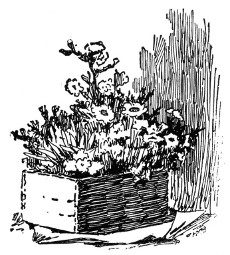
Fig. 360. A soap box put to use.
In some plants the first leaves are called the "seed-leaves," and, like
children's milk teeth, soon disappear. The next set are the true leaves.
After the true leaves appear, if the plants seem crowded and
uncomfortable, like three boys trying to sleep in a narrow bed,
transplant them into other flats prepared similarly to the one into
which the seeds were sown. You may think of this as the promotion of the
young plants from the cradle to the kindergarten. Here the plants should
be placed about an inch from each other, in squares. Wet the plants
thoroughly before taking them up and also the soil into which they are
to make their second home. After this is done, the soil should be
pressed firmly about the roots, as you snuggle the bedclothes about your
neck on a cold winter's night. It is entertaining practice to transplant
the plants into pots, if you happen to have any florist's pots of small
size.
This transplanting of plants in the school-room gives a quiet
occupation to boys and girls who for a time may not be engaged
in study. The disobedient child or the would-be "smart" one
[563]
might better be denied the privilege. I say "privilege," because
the wise teacher will make window gardening a privilege and not
required work. After the transplanting has been completed and
the plants thoroughly soaked with water, they must be shaded for
about twenty-four hours, after which they had better receive the
strong light once more, when they will resume their growth.
Plants Need Water.
If plants could feel and talk, they would tell of periods when
they had endured great suffering because of thirst: suffering as
great as that sometimes experienced by travelers in crossing a
desert. Often it has been so great as almost to ruin a plant's
constitution. I am often asked, "How frequently shall I water
plants?" It is as difficult to give a fixed rule for watering as to
determine how often a boy should be allowed a drink. During
cool cloudy weather, plants do not require as much water as when
the sun shines bright and hot on them. I can give no better
general direction than this:—water plants when the surface of
the soil seems dry and powder-like, when a pinch of it rolled
between the thumb and finger does not form a little ball. Under
conditions in which the drainage is good, plants should receive
water until the surplus begins to trickle out of the holes at the
bottom. If you follow these directions carefully, your schoolroom
garden should afford a good lot of plants for cultivation at
home in the open ground or in boxes.
What You May Plant.
As to the kind of seeds to sow, you must be governed by what you most
desire to have in your home garden for summer cultivation. If you are
able to have a garden in the open ground, I would have you make a
selection of both flowers and vegetables. Do not choose a large variety
of either, for children are but little men and women and must shape
their tasks to fit their shoulders. It would be better to have a garden
the size of a horse blanket and have it in good condition all summer
than to have a larger one and allow it to become a wilderness of weeds.
In the vegetable line, you can have radishes and lettuce that
may be harvested by the Fourth of July. After the first crop has
been removed the ground should be spaded and wax beans
planted in rows about eighteen inches apart and the beans six
[564]
inches apart in the rows. These give the juiciest of pods, excellent
for pickling. Kings and princes could have none better.
This plan gives you two crops from the same ground in one
summer. Plant radishes in rows twelve inches apart and about
two inches apart in the row. Pull them for the table when the
roots are three-quarters of an inch or a little more in diameter.
Set lettuce about three inches apart in the row, which is twice or
more as thick as the plants should be when full grown. When
half grown or more every other plant may be pulled out for table
use and the remaining ones will soon fill the vacancies.
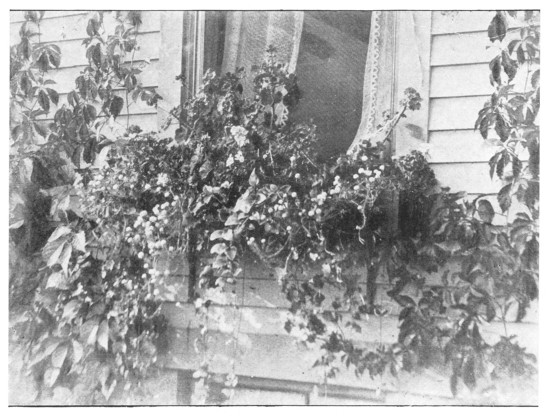
Fig. 361. A window-garden of one's own.
In suggesting your selection of flowers, I shall mention but a
few. I have chosen the following kinds because they are not too
particular or exacting as to care, while some are equally well
adapted for cultivation either in the open ground or in window
boxes. I hope you will include sweet peas, dahlias, and gladioli
in your selection. I have not named them in this list because
they are not suitable for planting in flats, but are planted directly
in the open ground where they are to spend their lives. Gladioli
and most dahlias you will not raise from seeds.
[565]
The following is a list from which you may make a selection for
planting in your school-room, to divide later with your mates for
home planting:—
Petunia
Nasturtium
Sweet Alyssum
Mignonette |
} |
Suitable for planting either in window boxes or in the open ground. |
Bachelor's Button
Salvia (Flowering Sage)
Phlox
Aster
Marigold
Candytuft |
} |
To be planted in the open ground. |
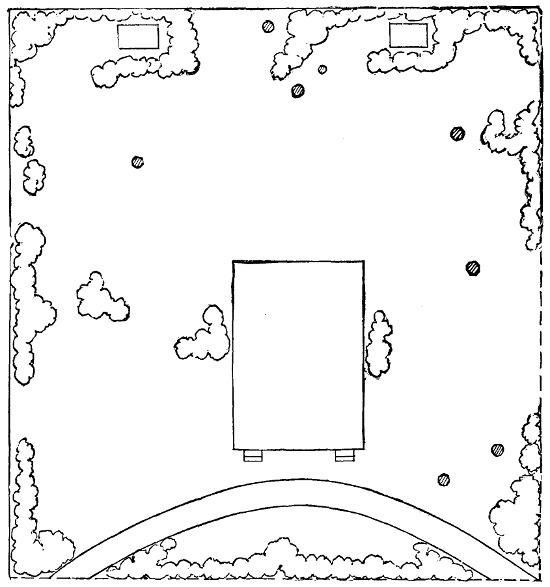
Fig. 362. Plan of the improvement of the school ground, shown in Fig. 365.
Make a Garden in a Box.
There is no reason why you cannot have a window-box as
attractive as the one shown in Fig. 361. Plants will grow as
well for you as for the richest or the greatest man of whom you
ever heard. All they require is to be made comfortable. The two
things most necessary for their comfort are water as often as they
[566]
need it, and fertile soil that will not become hard from frequent
watering. Plants in boxes need water much oftener than those in
the open ground. I once knew of a window-box on a tin roof on
the south side of the house that was watered morning, noon, and
night. Those plants must have been comfortable, for they made
thrifty growth.
When you have learned how to make plants comfortable in a
flat, you will know what is necessary for their comfort in a window-box.
They should have the same kind of earth, but more of it.
The box should never be less than eight inches wide and eight
inches deep and as long as you can afford to fill with earth and
plants. There must be holes in the bottom for drainage, and
moss or small stones placed over the holes to prevent the soil
from washing away.
The plants should be set four to six inches apart in the box.
At first, this will seem too great a distance, but after a few weeks
of growth, the plants will cover all bare spots. When transplanting
either to window-boxes or to the open ground, do it the same
way as when changing plants from the cradle flat to the kindergarten
flat.
I know of a brother and a sister who found enough soil to fill
some egg-shells. The shells had small drainage holes in the
bottom. In time the plants grew and became too large for the
egg-shells. Then the children went in search of more soil. They
found enough to fill a few tomato cans. These cans also had
drainage holes in the bottom. In each can they set a plant.
They then put the cans into a soap box. Then they packed
excelsior into all the vacant places in the soapbox. The excelsior
helped to hold the moisture. The box stood on a back veranda
where the plants had plenty of sunshine. So long as they were
comfortable they did their best, which is as much as they could
have done if they had been in expensive vases in the grounds of
the White House at Washington.
Consider Your School Grounds.
On the last page of this leaflet are two pictures of a school-house.
The first shows how it looked when it had not a friend. The
second shows what the friendship of the teacher and the children
could do for it. In both cases the building remains the same.
Look at one picture and then at the other. See, if you can, what
one thing has been done to make the difference—a difference as
[567]
great as that between a tramp and a gentleman. A few shrubs
have been planted by the friends, but the greatest thing they did
was to clean up. They took away everything that looked untidy
and shabby.
At this time of the year you see many beautiful crocuses, tulips,
daffodils, and hyacinths. Nothing children can plant will give so
much for the labor as these bulbs. Why not have some on the
school grounds? When school begins next September, write me
for directions how to grow them.
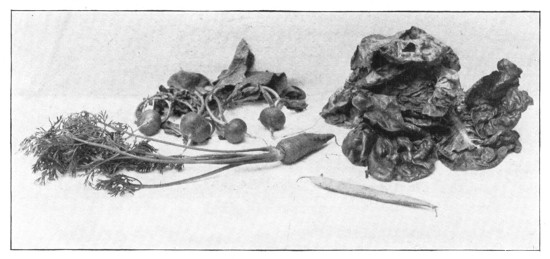
Fig. 363. Product of a child's garden.
[568]
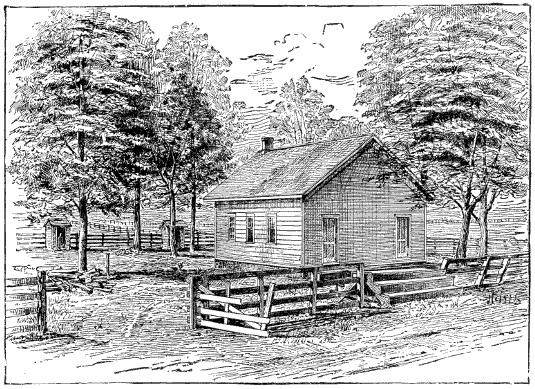
Fig. 364. School premises before improving.
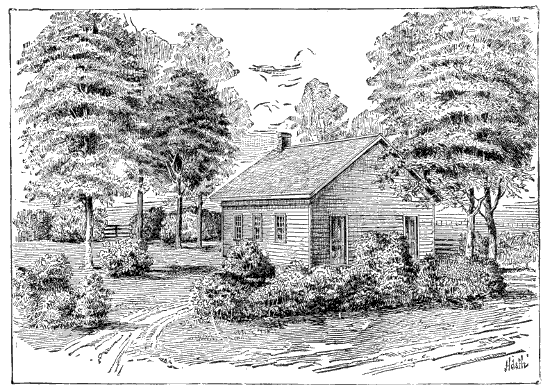
Fig. 365. School premises after improving.
Could you not do as much for your school grounds?
[569]
LEAFLET LXXVI.
THE GARDENS AND THE SCHOOL GROUNDS.[97]
By JOHN W. SPENCER.
My Dear Boys And Girls:
Of course you believe that Columbus discovered America, even though you
were not with him. If you had been on the deck of his ship when San
Salvador raised its head on the rim of the sea, you would be talking
about it every day of your life. As it is, your knowledge comes to you
through books, and you think you are fortunate if you are able to answer
questions correctly on examination. This leads me to remark that there
is much more interest in things that we have helped to "make happen"
than in things that we read about and that were "made to happen" by some
one else.
There is a chance for each of you boys and girls, in a way, to become a
Columbus. It is true that, not counting the north and south poles, all
the continents are discovered, but there is much pleasure and "fun" in
discovering facts. I am now speaking from experience. I think that James
Buchanan was President when I learned, in such a way that I could
explain to others, the principles of a suction-pump. Some of the
suggestions led me to make a squirt gun from a bit of elder stalk.
Sometimes when I made a demonstration the water would fly in the faces
of my audience. I started a squirt gun factory, but the teacher stopped
the enterprise because it made too much litter in the school-room.
I have a suggestion that will start you on a voyage of discovery. When
you have gone as far as you can I wish you would write me, telling what
you have learned. Writers of agricultural books sometimes use the
expression, "There is fertility in tillage." Is that true?
[570]
By fertility is meant the power of the soil to furnish plant-food.
Fertile soil is "rich" soil. By tillage is meant frequent stirring
of the soil. For example, Billy Boy and his chum each have a
flower garden side by side of equal size. Each boy sows seeds
from the same bag. The same sunshine and the same rains give
vigor to each flower-bed alike. Billy Boy spades the soil deep
and makes it fine. His chum stirs the top and leaves clods on
the surface. With the end of a sharp stick Billy makes a straight
drill for the seed. On the bottom of the drill the soil is fine like
meal, and the seed is sown with great care and is covered with
the finest soil. If the seed is small he makes the soil covering
very thin. The last thing he does is to firm the soil by patting it
with either his hand or the flat part of a hoe, and he does it in an
affectionate way as if he were patting a dog. His chum makes
the drill for the seed in a hasty way, leaving in the bottom little
clods of earth as large as hickory nuts. He sows the seed as if
he were glad to get rid of it, and he covers it as if he wanted it
out of sight as soon as possible.
Which of the two boys gave the better tillage to the soil? During the
summer you will see how others care for their plants and you will see
instances of good tillage and poor tillage. You must observe and write
me which of the two had the better success in having the seed come up.
The difference between the two ways does not end in sowing and
germination of seed, but continues all summer until the end of the
season. Billy Boy will care for the soil by combing it with a rake
several times a week, with the same care and affection with which the
lover of a horse will groom the animal each morning. The chum will think
the plants are all like goats, and ought to live with almost any chance.
Billy Boy will have no weeds among his plants and his chum will have
them in great numbers. The chum may say that weeds shade the plants and
thereby protect them from drought. I have known grown-up farmers to say
that. Is it true? Go on a voyage of discovery and find out.
I hope your garden may be of the Billy Boy kind, receiving plenty of
tillage. You will have no trouble to find any number of the other kind
of gardens growing to weeds and receiving no tillage. It will please me
very much if you will write me, giving as many reasons as you can why
tillage makes the soil more fertile (or "rich") and able to produce
better plants and flowers. Each letter will be carefully read.
[571]
An Experiment.
Perhaps you can answer the questions by watching your garden or some
one's else garden; but you can answer them better if you will grow a few
"hills" of corn. In the fall I shall have many questions to ask you
about corn, and I want you to be able to answer by telling me what you
have seen with your own eyes. Those of you who are Junior Naturalists
have done well with your dues this year, but we must always do better
next year than we did last; so I want you to know many things about
Indian corn when you come back to school in the fall. Your teacher has
also been asked to study corn, and I am going to study it myself. I am a
farmer and I have grown corn all my life. Once I thought that I knew all
about it; but frequently some one asks me a question about it that I
cannot answer.
Now, I hope that you can plant at least ten "hills" of corn, or,
if you do not plant it in "hills," you may make two rows, each of
them five or ten feet long. I want you to plant part of these hills
(or one of the rows) in good rich soil. Perhaps your father will
let you plant them in the best part of the garden along with the
cabbages or other crops; or, perhaps, your mother will let you
plant them at the back part of the flower garden. Then I want you
to keep down the weeds and break or cultivate the ground often
with a hoe or rake so that the soil is always loose. Then I want
you to plant the other part of the corn in a poor or dry piece of
ground, where the weeds grow. This part you need not cultivate.
I think that before the summer is half over you will learn a very
great lesson by looking at these two pieces of corn. Some of you
will say that you know beforehand what will happen; but I want
you to grow the corn nevertheless.
By fall I hope you will be able to write me whether you can tell
a rich soil when you see it, and also why you think it is rich. I
want everyone of the Junior Gardeners to tell me that much when
school opens.
To the Teacher:
We must depend upon your courtesy to help in reporting what
has been done by you and your pupils in improvement of school
grounds. In addition to this we hope it may be your pleasure to
ask all the children who are able to write to tell us in detail, at
[572]
some language period, what they have done. We are never able
to get reports of all this good work. Many teachers feel that
nothing but heroic deeds in the planting of school grounds are
worthy of mention. This is a mistake. Some grounds may be
more improved by attention to simple tidiness than by expensive
planting, and they are equally worthy of mention.
The attendance at some schools is small and the pupils are
young. Small efforts from them are relatively great when compared
with what is done by schools with ample facilities. We
know a teacher who began her first teaching in the fall of 1902.
The pupils were eight in number and most of them were small.
The school was in the country. The interior of the building
was shabby. The teacher was courageous and resolute. With
her small handful of not over-competent pupils, she had school
"exercises" and the children sold tickets. By this means enough
paper was bought to cover the walls, and the teacher and the
children put the paper on. Then they made other sales, for which
they received as commission three pictures creditably framed.
They were hung on the walls of the school-house. By this time,
the tide of civic improvement in that community began to turn
towards the improving of the school building and grounds. We
are eagerly awaiting reports to know what was done on Arbor
Day. Under such conditions, it was no small thing that the
teacher and children accomplished.
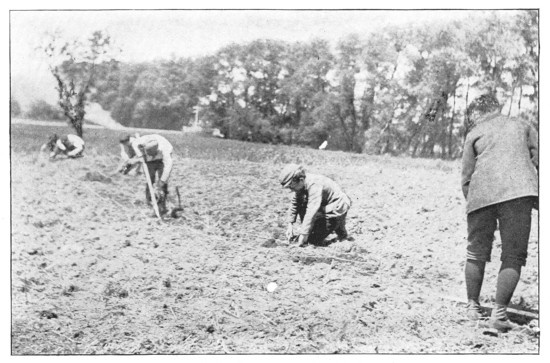
Fig. 366. Making a school-garden in Massachusetts.
[573]
LEAFLET LXXVII.
SOMETHING FOR YOUNG FARMERS.[98]
By JOHN W. SPENCER.
My Dear Nephews and Nieces:
I wish to make farmers of you all. I will try to tell you how to have
farms all your own—farms on which you can plant seeds and see the
plants grow. Once a little girl in Buffalo, who is one of my Junior
Naturalists, asked me whether I would call at her home and see the
harvest from seeds she planted on one of her farms the spring before.
The principal of the school went with me, for he knew all about the
little girl's success, and seemed proud of what she had accomplished.
What do you think it was she had raised? It was something that filled
her lap and was good to eat. It was a fine pumpkin. It weighed
twenty-two pounds. I wish I could have a photograph of her holding the
pumpkin, her face glowing with pride and satisfaction.
You are surely able to do as much as this little girl did. Perhaps you
would prefer some other crop to pumpkins, in which case you have many
kinds of seeds from which to choose.
Last spring, in school, this little girl with other boys and girls
began planting and caring for egg-shell farms. It costs no money
and but little trouble to own several such farms. The greatest
pleasure and profit is to be found in having them in school, for
then you have the opportunity of seeing how others manage their
farms, and there is a spur in doing what others are doing. When
you have read all about my plan I wish you would ask your teacher
whether you cannot have some egg-shell farms in your grade.
When your plants are large enough to put permanently in the open
ground, you can plant them in a garden or window-box at your
[574]
home. If it is not convenient to have egg-shell farms at school,
ask your parents if you cannot have some at home.
Please give me your ears and your attention while I tell you
how to get your farms.
In April you have eggs at some one of the three meals of the day, and
the empty shells can be easily obtained. The end of the shell to be
broken is the sharp or "peaked" end. Break away about a quarter or a
third of it and pour out the white and the yolk that is inside. This
empty shell is to hold the soil of your farm, and you can have as many
farms as may be convenient to care for. On each egg-shell you may write
your name, for the same reason that people have door plates on the doors
of their houses or signs on their places of business. Some very
methodical boys and girls write also the names of the kind of seeds
sown, and the dates of planting and sprouting. Do not forget to put a
hole through the bottom of each one of your farms for drainage. I wish I
could be with you when you get your soil; we would go out to the
pastures and the woods for a supply. I should be able to tell you much
about different soils, and how they have been made. It is an interesting
story that I must tell you when we are past the hurry of spring's work.
If we could go afield we should find the best soil for your egg-shell
farms about the roots of rotted stumps or in rotted leaves. It is
necessary that the soil shall not bake hard because of frequent
waterings, shall not dry out quickly, and shall have plenty of
plant-food. I fancy the most convenient plan will be for all of you who
wish soil to form a syndicate by contributing a cent each and go to a
florist and buy your soil. Tell the florist you wish it for your use and
the probabilities are that he will be so much interested in your plants
that you will get more for the same amount of money than I could if I
were to go for you.
The next difficulty will be to keep your farms right side up. That is
easily accomplished by putting some sand or sawdust in a shallow box and
making a dent where you wish each farm to stand. If you have your farms
in the school-room, Tom, Dick, and Harry can have all their farms in the
same box. There will be no trouble in separating them if the owner's
name is written on each one.
Next comes the planting of seeds and the problem of the amount
of earth to put over them. Big seeds require more covering than
little seeds. Seeds like peas, beans, and corn may be thrust into
the middle of your farm. Small seeds, like those of the petunia,
[575]
which are almost like dust, require only the gentlest sprinkling of
soil. Seeds as large as those of the aster and the balsam should be
covered with a layer of earth as thick as a lead pencil. I advise
you to plant twice as many seeds as you wish to have grow.
Many accidents may happen and if all grow, the surplus plants
can be replanted later or thrown away. The earth covering
should be sprinkled or sifted over the seeds, and then it must be
patted or pressed down firmly. By this means the particles of
soil are snuggled close together, and the seed and the soil hold
moisture much better than when the particles lie loose and far
apart.
The next thing to do after planting is to sprinkle water over your
farms. Do this as gently as possible, for with all your care some seeds
may be uncovered. Look over the ground carefully, and those you find
exposed poke into the earth with the point of a pencil or a stick.
The soil of your farms must be kept moist at all times. This
is a point that will require your continued attention. When your
Uncle John attended school, many years ago, there was a passage
in his reader that taught him that "Eternal vigilance is the price
of liberty." The attention required to keep plants suitably
watered does not fall much short of eternal vigilance. This need
not scare you. If you care for your farms you will find it a
pleasure to wait on your plants.
If you have your egg-shell farms in the school-room, there will
be no opportunity to water your plants Saturday or Sunday, when
school is not in session. I think if you make your farms soaking
wet Friday at the close of school, and then set them back from
the window out of the direct rays of the sun, no harm will come
from dryness before Monday morning.
You must watch to see whether all members of the same family
do the same thing precisely alike. After sowing your seeds and
watering your farms you will go to them many times to see whether
anything has happened. You will not be able to see anything
or hear anything, and you will conclude that nothing is going on
in the soil.
In this you will be mistaken, for some active changes are taking
place. They are of a kind that you can neither see nor hear.
In days to come, when you are men and women, you will be able to
appreciate the fact that some of the most important events come
about silently and some of the least important come with a racket.
[576]
The first leaves that appear on most plants are called the seed-leaves.
If your plants are comfortable, but a few days will pass
before true leaves develop. You will find the latter very different
from the seed-leaves. Before the first or seed-leaves appear it is
not important that your farms have the strong sunlight. In fact
I always put my egg-shell farms in the shade while the seeds are
germinating, but at the first peep of a leaf or stem I put them in
the full sunshine.
Most of you will no doubt have your farms on the window ledge.
Among the first things you will observe is a way all the leaves
have of looking out of doors. If you turn your farms around so
the leaves are looking in the room, the time will not be long
before all of them will be faced out of doors again. Once on a
time one of my Junior Naturalists told me that plants take to sunshine
as a duck does to water. A duck is never so comfortable as
when in water; and I am certain that sunshine is important to the
comfort of most plants. Some of my nephews and nieces will
understand why light is so necessary to plants, for I have spoken
of this before.
I hope you will this moment decide to have some egg-shell
farms, and sow some seed immediately after getting your soil.
Later, when the plants are large enough to plant in the open
ground, we will talk of what is best to do with them. In Leaflet
LII you will find a picture of an egg-shell farm.
[577]
LEAFLET LXXVIII.
BULBS.[99]
By JOHN W. SPENCER.
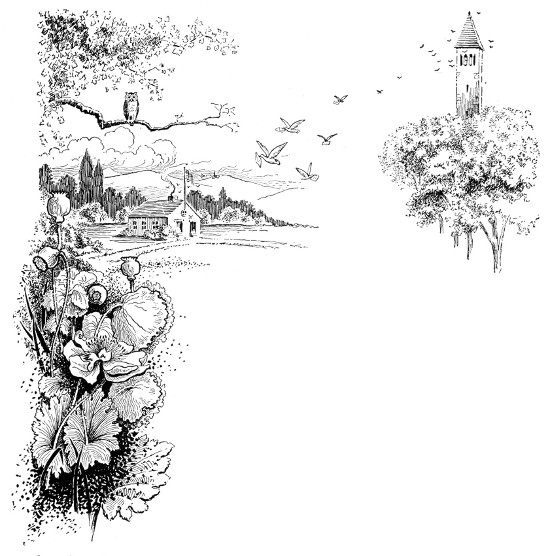
A BULB GARDEN.
- "It's rather dark in the earth to-day,"
- Said one little bulb to his brother;
- "But I thought that I felt a sunbeam ray—
- We must strive and grow till we find the way?"
- And they nestled close to each other.
- Then they struggled and toiled by day and by night
- Till two little snowdrops in green and white,
- Rose out of the darkness and into the light,
- And softly kissed one another.
—Boston Journal.
To succeed with the cultivation of flowers, the first thing to have in
mind is to make the plant comfortable. This condition should be not only
the first thought, but also the last thought. If you can do this
successfully, the plant will do the rest of the work and your results
will be abundant.
What plant comfort is, is a question more easily suggested than
answered, for it is a very large subject—about as large as the surface
[578]
of the earth. As a venture we will say that there are as many
different kinds of plants as there are people. It is at least safe to
say that plants have as many different notions as to their conditions
of life as have the people of the different nations and tribes
of the world.
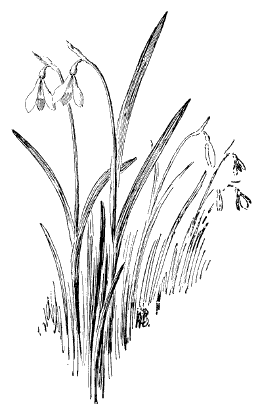
Fig. 367. The Snow-drop.
If you were to have a birthday party and should invite as your guests
the children from the four corners of the earth, and by magic could
bring them to you in a jiffy, the boys and girls from Greenland would
come enfolded in seal-skin, and those from Hawaii would bring only their
bathing suits. You would have a busy time keeping them comfortable, for
when you opened the door to cool off the little Greenlanders, the little
Kanakas would complain of too much draft; and at the table the former
would ask if you happened to have some tallow candles for dessert, and
the latter would ask for bread-fruit and bananas.
Many of our flowering plants have been brought together from such remote
quarters as that. We have bulbs from Holland, and pansies from England,
and phlox from the dry atmosphere of Texas.
There is as much difference in the conditions necessary for
comfort in these different plants as there is in the requirements
of the little Eskimos and little Polynesians. To some extent,
plants can change their manner of living, but in the main they
are happiest when they can have their own way, just as you and
I are.
We cannot bring about the foggy, damp weather of Holland
and England when we want it; neither can we bring the dry
atmosphere of Texas—air so dry that meat will cure hard in
the hottest weather without tainting. It so happens, however,
that from one Fourth of July to the next we have many kinds of
weather, and if one could not find conditions suited to almost any
[579]
kind of plant it would be strange. If we cannot make the weather
accommodate itself to the best comfort of the plant, we must set
the plant so as to accommodate itself to the weather.
Pansies from foggy England and bulbs from the lowlands of
Holland should be planted to bloom in the cool days of spring,
and the phlox from Texas will prosper in the heat and drought
of July and August.
With this idea well fixed in your mind, you will easily see that when
you know the country from which a plant has come, a knowledge of the
physical geography of that country will be helpful in knowing how to
make the plant happy and prosperous.
We must also make the plant comfortable in the soil. There is great
difference in what plants require to make them comfortable. Some, like
thistles or mullein or ragweed, will thrive on almost any soil and are
no more exacting as to food than a goat or a mule; but other plants are
as notional as children reared in the lap of luxury. As a rule,
flowering plants belong to the "lap-of-luxury" class.
Soil covers the land as thin skin covers an apple or as a thin coat of
butter covers bread, and it holds more or less plant-food. When men
erect school buildings and afterwards grade the ground they usually turn
a part of the soil upside down. There is also considerable rubbish of
the builders left scattered about, such as brick-bats, chips of stone,
and the like, that go to make the place an uncomfortable one for
notional plants. For this reason I wish particularly to call your
attention to the manner in which you should prepare the ground on which
you intend to plant. The first thing to do is to spade the ground
thoroughly to the depth of at least ten inches. All stones as large as a
big boy's fist should be thrown out, and all lumps given a bat with the
back of the spade to break them into fine particles. This is to be a
flower-bed and should be soft like your own bed. It would be better to
make it up more than once. After the first spading it would be well to
cover the bed with a coat of stable fertilizer to a depth of six to
eight inches, which will give additional plant-food; and in spading the
second time, this fertilizer will become thoroughly mixed with the soil.
The surface should next be raked smooth, and your flower-bed will then
be ready for planting.
We all admire the bright bulb flowers that are among the first
to blossom in the spring. These mostly come from Holland, or
at least attain their perfection there. We have just spoken of the
[580]
importance of planting flowers at such a time that they may live
their career when our climate is most like that from which they
come. In the case of bulbs, spring and early summer is the most
favorable time for them in this country, and fall is the proper
time for planting.
The exact time in the fall to plant, how to plant, what bulbs to
plant, when to put a winter overcoat on the bed, and other details,
I will leave for Mr. Hunn to tell in the following Leaflet. He
has had many years' experience in the management of flowers, and
I advise you to read carefully what he says.
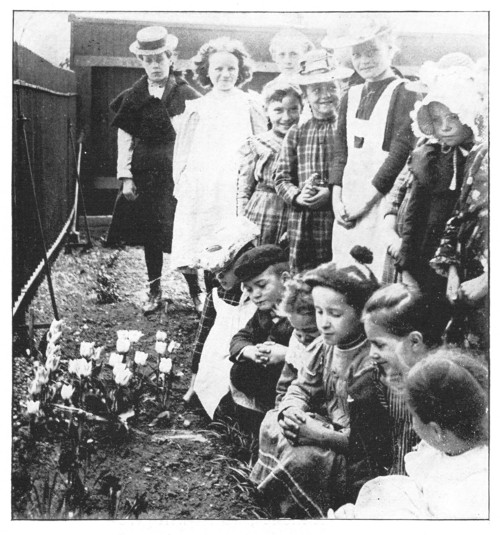
Fig. 368. A bulb bed at the school house.
[581]
LEAFLET LXXIX.
A TALK ABOUT BULBS BY THE GARDENER.[100]
By C. E. HUNN.
Perhaps you would like to hear from the gardener. Your Uncle John has
told you something about preparing a bed for your plants. His advice is
very good; but the bulbs we are to talk about are like those notional
children whom he mentions and they do not want tallow candles for any
part of their meal.
You should know that bulbs do not want to come into direct contact with
the stable fertilizer. They want the fertilizer below them where the
feeding roots may nibble at it when the bulb is hard at work developing
the leaves and flower. You know that all the leaves and the flowers were
made the year before, and the bulb simply holds them until the new roots
have formed. No kind of treatment will make a bulb produce more flowers
than were formed in the year it grew (last year); but the better the
treatment the larger and finer the flowers will be.
If I wanted to make a bulb bed, I should choose, if possible, a
sandy soil and throw out the top soil to the depth of six inches.
Then I should put into the bottom of the bed about two inches
of well rotted manure and spade it into the soil. Then I should
throw back half of the top soil, level it off nicely, set the bulbs
firmly on this bed, and then cover them with the remainder of the
soil; in this way you will have the bulbs from three to four inches
below the surface. It is dark down there and in the fall months
the top of the ground is cooler than at the depth of five or six
inches and the top of the bulb will not want to grow, while the
bottom, which is always in a hurry, will send out roots, to push out
the leaves and flowers the next spring.
[582]
When the weather is cold enough to freeze a hard crust on the
soil, the bed should have its winter overcoat. This may be straw,
hay, cornstalks, or leaves spread over the bed to the depth of six
inches if the material is coarse; but if you use leaves, three
inches will be enough, because the leaves lie close together and
may smother out the frost that is in the ground and let the bulbs
start. What we want is to keep them asleep until spring, because
if they start too early the hard freezes of March and early April
will spoil their beauty if the leaves or flowers are near or above
the surface. Early in April the covering may be removed gradually
and should all be off the beds before the leaves show above
the ground.
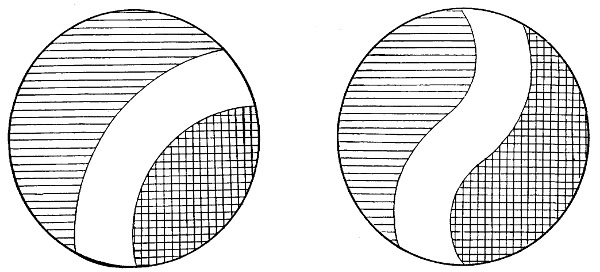
Fig. 369. Simple designs for bulb beds.
Perhaps many of you cannot find a sandy place for your beds;
if not, make your beds as has been told you, leaving the stones in
the bottom of the bed for drainage. Then, when you are ready
to set the bulb, place a large handful of sand where your bulb is
to go and set your bulb on it; this will keep the water from
standing around the bulb. Very good results may be obtained on
heavy soil by this method.
What kind of bulbs shall we put into these beds? Choose
hyacinths, tulips, narcissus, or daffodils, with snowdrops or
crocuses of various colors around the edge.
If you use hyacinths you can have the national colors, red,
white, and blue, or many shades of either color, as shown in the
diagrams (Fig. 369). Of tulips you can have stars or ribbons of
yellow, white, or crimson, or in fact almost any color except true
blue. In narcissus, yellow, sulfur, and white are the colors. The
little crocuses come in yellow, blue, white, and striped colors, and
are in bloom and gone before the large flowers take your attention.
Many other bulbs are fine for spring flowering; but as most
[583]
of them are more difficult to grow and many of them rather expensive,
I do not think we will discuss them now.
Suppose we want a bed of red, white, and blue hyacinths (Fig.
369), and make it six feet in diameter: how many bulbs would you
want? Now, hyacinths should be planted six inches apart each
way, and the outside row should be at least three inches from the
edge of the bed. You see you will want a little over one hundred
bulbs, which, if one person had to buy them, would cost him a
considerable sum; but if fifty or more boys and girls would club
together it would be easy for everyone.
If you want a bed of tulips, they should be planted four or five
inches apart instead of six inches. So you will need more bulbs;
but they are cheaper than hyacinths. The narcissus bulbs, being
still smaller than tulips, may be planted three inches apart; and
the little crocuses, the first flowers of spring, should touch one
another, as should also the snowdrops.
Perhaps many of you do not wish to wait until spring for your
bulbs to flower, in which case we must try to persuade them to
bloom through the winter, say at Christmas. Nearly all bulbs
are good-natured, and may be coaxed to do things that nature
never asks them to do; so if we go at it right we shall find it very
easy to make them think their time to bloom has come, even if
the ground is covered with snow and the ice is thick on the ponds.
Hyacinths, narcissus, and crocus can all be made to flower in the
winter by starting this way. Get the bulbs so as to be able to pot
them by the middle or last of October, or if earlier all the better.
The soil should be rich, sandy loam if possible; if not, the best
you can get, to which add about one-fourth the bulk of sand and
mix thoroughly. If ordinary flower pots are to be used, put in
the bottom a few pieces of broken pots, charcoal, or small stones
for drainage; then fill the pot with dirt so that when the bulbs are
set on the dirt the top of the bulb is even with the rim of the
pot. Fill around it with soil, leaving just the tip of the bulb
showing above the dirt. If the soil is heavy, a good plan is to
sprinkle a small handful of sand under the bulb to carry off the
water, the same as is done in the beds outdoors. If you do not
have pots you may use boxes. Starch boxes are a good size to
use as they are not heavy to handle; and I have seen excellent
flowers on bulbs planted in old tomato cans. If boxes or cans are
used, care must be taken to have holes in the bottoms to let the
water run out. A large-size hyacinth bulb will do well in a five-inch
[584]
pot. The same size pot will do for three or four narcissuses
or eight to twelve crocuses.
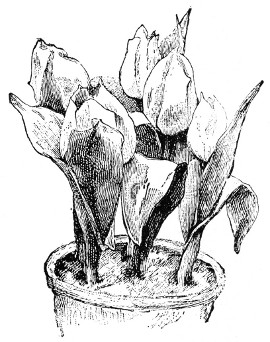
Fig. 370. Pot of tulips.
After the bulbs are planted in the pots or other receptacles, they
should be placed in a cool place, either in a cold pit or cellar or on
the shady side of a building, or, better yet, plunged or buried up to
the rim of the pot in a shady border. This is done to force the roots to
grow while the top stands still; as only the bulbs with good roots will
give good flowers. When the weather gets cold enough so that a crust is
frozen on the soil, the pots should be covered with a little straw, and
as the weather gets colder more straw must be used. From six to eight
weeks after planting, the bulbs should have made roots enough to grow
the plant, and the pots may be taken up and placed in a cool room for a
week or so; after which, if the plants have started into growth, they
may be taken into a warmer room where they can have plenty of light.
They will grow very rapidly now and will want lots of water; after the
flowers begin to show, the pots may stand in a saucer of water all the
time. When just coming into bloom the plants may have full sunlight part
of the time to help bring out the color of the flowers. Fig. 370 shows a
pot of tulips.
I want to tell you of two bulbs that do not need so much
fussing with to get them to bloom for Christmas. One of them is
called freesia (Fig. 371) and if I could have but one kind of bulb
to flower in the winter, I should choose this. The little bulbs are
not half as large as crocus bulbs and you will be astonished at the
large leaves and flowers such a bulb can produce. The bulbs are
about the cheapest of all winter bulbs and they grow without
putting them away to make roots, as the tops do not seem as
impatient to start as those of most other bulbs, but wait until
there are roots to help them along. The flowers are borne on a
slender stem and look very graceful, either on the plant or in
bouquets. They are also very fragrant, and a pot with five or six
[585]
bulbs will perfume a large room. All they need is good light soil,
sunlight, water, and warmth to make glad the heart of anyone who
plants them.
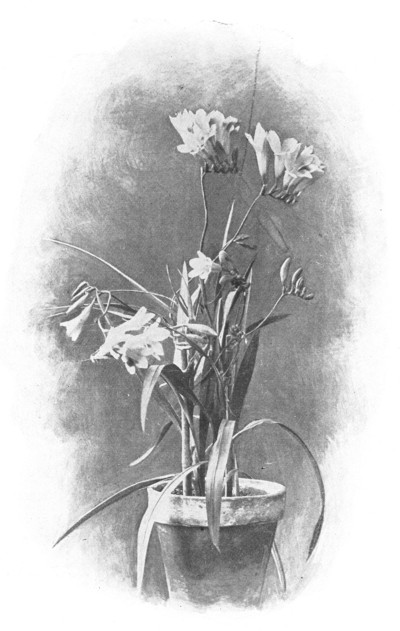
Fig. 371. Pot of the freesia.
The other bulb I should select is the oriental narcissus or
Chinese sacred lily. This grows in water without any soil whatever.
Just take a bowl or glass dish about three times the size
of the bulb; put some pretty stones in the bottom; set in the
bulb and build up around it with stones so as to hold it stiff when
the leaves have grown; tuck two or three small pieces of charcoal
among the stones to keep the water sweet; then fill up the dish
[586]
with water and add a little every few days, as it evaporates. Set
the dish in a warm, light place. In about six weeks the fragrant,
fine white flowers will fill the room with perfume and you will
have the pleasure of watching the roots start and grow, the top
throw up long green leaves, and the flower clusters develop and
open their flowers. Hyacinths may also be grown in water, but
not as easily as this narcissus, or in such inexpensive dishes.
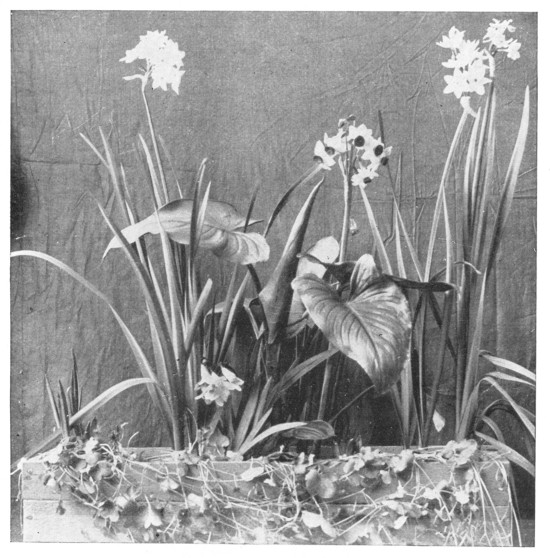
Fig. 372. Winter box of bulbs.
The picture (Fig. 372) of a bulb box was taken last winter from
a box of mixed bulbs grown at Cornell. The calla in the center
and the Kenilworth ivy trailing over the front were planted in
the box in September, and pots of geraniums and other plants set
on the dirt to fill the space. When the bulbs that were in pots
were ready to be started they were taken out of the pots and set
[587]
in the dirt in the box, where they grew and flowered; the tall
stems are paper white narcissus, the best variety for winter. On
each side there is a hyacinth just starting and in front a little
freesia in bloom. When these bulbs were done flowering, small
pots of blooming plants were set on the box and a charming window
box was obtained with many different things in it through the
winter.
Where to Plant Bulbs; and Other Advice for the Outdoor
Garden.
A large part of the beauty of the flower-bed lies in its position.
A flower-bed in the middle of the lawn is usually out of place. It
has no "setting," as the artists say. It lacks background. It is
merely an incidental thing dropped into the sward. It is out of
place. A flower-bed should belong to some part of the general
planting of the grounds, or it should be a part of the border or
boundary surrounding the place. The center of any grounds
should be left open, or free from heavy planting. A few trees may
be planted in the center, if one desires shade; but all the masses
of foliage and flowers should be somewhere near the sides or else
near the foundations of the house or near other definite boundary
lines. In such places the flower-bed is supported by other herbage.
It has relation to something else. It forms a part of a general
picture; and every good yard should be a picture.
Along the borders the beds are usually more easily cared for
than they are in the center of the lawn. In the latter place they
are in danger of being trampled over, and the roots of the grass
run underneath the bed and absorb the food and moisture which
the flowers need. The beauty of a formal bed in the center of the
lawn is destroyed if some of the plants are injured or do not
develop. Symmetry is part of its merit. If, however, the bed is
along the border, a few vacant places in the bed do not attract
great attention. In school grounds it is well to have the beds
somewhat near together or continuous, in order that the labor of
taking care of them may be less.
It is always well to plant profusely. Much of the beauty of a
flower-bed lies in an abundance of color. One must consider,
also, that some of the roots, seeds, or bulbs may fail. Some of
them may not grow in the first place, and others may be injured
by weather or by accidents. It is well to provide for all these
contingencies.
[588]
One of the best plants to use for the school bulb garden is the
crocus, because the bulbs are cheap and very hardy. The mixed
bulbs, comprising all the common colors, can be had for forty or
fifty cents per hundred at retail, and if one should buy them in
considerable quantities, they could be had for less than this. A
thousand bulbs of mixed crocuses should be got for three dollars
or a little more, and these would make a great display along the
fence or walks of any school garden. One of the ways to grow
crocuses is to plant the bulbs in the grass, not cutting out the
grass where they are planted. That is, they grow right in the
sod. By the time the lawn needs to be mown in the spring, the
flowers are gone and the crocuses can be cut with the grass. The
crocuses will not last so long in a mown sod as they will in beds
which are especially prepared for them, but they will ordinarily
give good results for two or three years if the land is good; and
they are so cheap that they can be renewed from time to time.
Other good, hardy bulbs for fall planting out-of-doors, aside
from lilies, are hyacinth, snowdrop, snowflake, tulip, narcissus of
various kinds (including daffodils and jonquils), grape hyacinth,
squill. All these are early spring bloomers and will delight the
children's eyes.
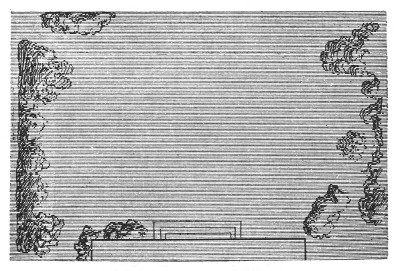
Fig. 373. A good arrangement of shrubbery and flower-beds.
[589]
LEAFLET LXXX.
HORSES.[101]
By ALICE G. McCLOSKEY and I. P. ROBERTS.
A few minutes ago I went into the stable to see Peg and Nan, the two bay
horses. On the outside of each stall I found a door-plate, with Nan
written in large, black letters on one, Peg on the other. I visited
each old friend in turn.
They are quite different in disposition, these two horses. Nan is
gentle, affectionate, patient; Peg is spirited, unfriendly, restless. I
am very fond of them both and as yet have not been able to decide which
I enjoy the more, quiet Nan or spirited Peg.
All horses are interesting to me. As I take my daily walk, I like to
look at the different ones I meet along the way. There is the baker's
horse and the butcher's; the doctor's horse, sleek and active; the heavy
gray horses that haul loads of coal up the hill all through the winter
weather; "Old Speckle," the postman's horse; and the friendly bay I so
often see feeding in the meadow.
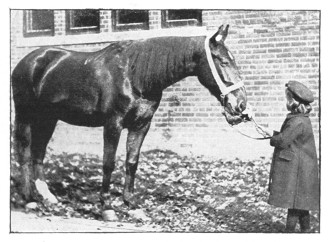
Fig. 374. Nan.
Of all these wayside acquaintances, I like best the one I meet in the
meadow. Perhaps I associate him with the meadow-lark's song, the fresh,
green grass, and the gay little dandelions that were about when I first
crossed his path; or, perhaps our friendship progressed more rapidly
than city streets ever will permit. He seems to know
[590]
when I am approaching and raises his head in welcome. I always
pet him and talk to him a bit, and we both know that two friends
have met.
There are many things about horses that everyone ought to
know. If we were to ask Junior Naturalists how coach horses
differ from roadsters and how roadsters differ from draft horses,
how many would be able to tell us?
Perhaps you will ask, "What is a draft horse?" The draft
horse has short legs, a heavy body, a short, thick neck, broad deep
chest and shoulders, strong hocks and moderately large feet. It
may be that your father owns a draft horse. Ask him whether it
is a Percheron, a Clydesdale, or an English Shire. These are the
most familiar breeds of draft horses. The Percherons came from
France and at first they were gray. Now they are often black
or dark brown. The Shires, commonly bay, brown or sorrel,
came from England; and the Clydesdales, similar in appearance
to the Shires but smaller and more active, came from Scotland.
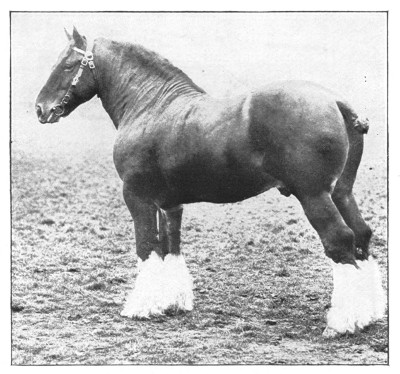
Fig. 375. A typical draft horse.
All boys and girls know coach horses. As you stand by the
school-room window, you may see one pass. They have long
arched necks and fine heads. Their bodies are rounded and well
proportioned.
[591]
Roadsters, trotters, and saddle horses are usually not so large
as coachers. Their necks are inclined to be longer and their
chests narrower than in the coach horse; however, their muscles
and tendons are strong.
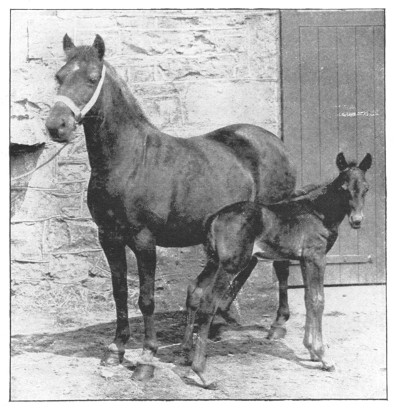
Fig. 376. Welsh pony and its mother.
Now you must not think that just because a horse is drawing a
load he is a draft horse; nor because a horse is hitched to a coach
he is a coach horse; nor because he is driven on the road he is a
roadster. These three names,—draft horses, coach horses, roadsters,—represent
types or classes. They mean kinds of horses
that are supposed to be best adapted for drawing, or for coaches
and carriages, or for fast driving, providing the horse has no other
work to do. But the horses that you usually see are just mere
common horses of no particular type, and are used for a great
variety of purposes. They are "nondescripts," which means
"undescribed" or "unclassified." You would not think of putting
a true draft horse, like the animal in Fig. 375, on a light
carriage; nor of hitching a coacher like that in Fig. 377 to a
coal wagon. Do you think there is any real roadster, or coach
horse, or draft horse in your neighborhood? If not, perhaps you
[592]
can tell, as the horses pass you, whether they are nearest like one
type or another. Try it.
If you will observe horses closely you will find that some are
large, heavy, and strong, and that they are seldom made to move
rapidly, while others may be nearly as tall but they are slim, and
carry their heads high and their necks arched. You should also
notice that the heavy draft horse does not lift his feet high nor
walk with a proud and lofty tread, while the coach horse lifts his
feet high, carries his head high, and moves very proudly.
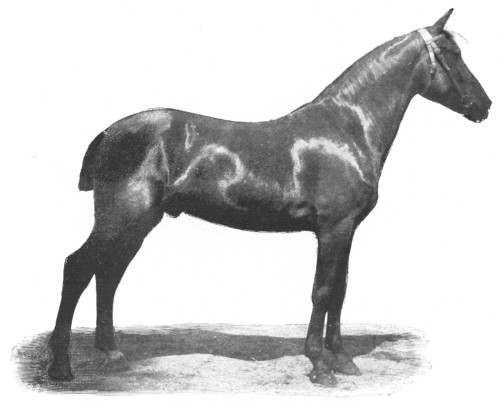
Fig. 377. A good coacher.
There are several breeds of draft or heavy horses. Fig. 375
shows a fine Clydesdale horse imported from Scotland. Notice
how nicely he is marked. The horseman would say that he has
four "white stockings" and plenty of "feather" on his fetlock;
strange, is it not, that this long hair should be called feather?
If you should see a large, smooth gray horse similar to the
Clyde, without the "white stockings" or the "feather," you may
conclude that he is a Percheron horse. As we have said before,
the Percheron breed of horses came from France. It is not always
gray in color. It is slightly smaller than the Clydesdale.
After you have learned that a draft horse should be large and
[593]
strong, study the picture of the coach horse (Fig. 377). Compare
him with the draft horse. The coach horse is not a fast
trotter nor even a fast roadster, but he is usually very beautiful,
strong, and stylish.
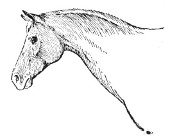
Fig. 378. Arabian horse.
Now I shall ask you to compare the neck shown in Fig. 380 with that
shown in Fig. 381. Which do you think is the more beautiful? The horse
with the long, slim neck is a noted trotter. If the neck and head were
large, would it help or hinder the trotter? Compare the neck of the
trotter with that of the draft horse and see whether you can explain why
one is heavy and the other light. Can you explain to your parents why
the draft horse should weigh more than the coach horse?
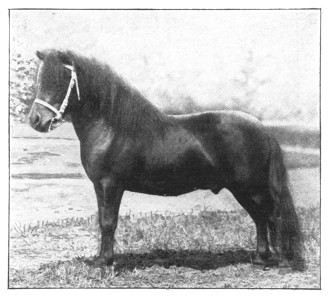
Fig. 379. Shetland pony.
Do you admire the head and neck shown in Fig. 380? Wherein does it
differ from the others? This type is called "ewe-neck." Can you tell
why? Tell me whether you think this horse would be a safe driver.
What do you think of the head and neck of the Arabian horse (Fig-378)?
You like it, do you? Why? Can you imagine what kind of horse belongs to
that head and neck? Describe it.
Probably the Arabian horse would be too spirited for you so I shall show
you a Shetland pony. (Fig. 379.) Where is Shetland? Why are horses so
small in the country where this little fellow came from? How does he
differ from the other horses shown in the Leaflet? Note all of the
differences.
In Fig. 376 you will see the picture of a Welsh pony, and she
has a ponyette, a baby only a few days old. Which is the larger,
the Shetland pony or the Welsh pony? Which one would you
prefer if the baby were left out? Could you raise a calf until it
became a grown cow and then trade it for a pony? Just a plain
[594]
little pony can be bought for the price of a good cow. It is part
of a good education to know how to raise
and handle cows and horses.
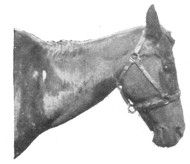
Fig. 380. Ewe-neck, a poor horse.
With this Leaflet in your hand, you should go to the stable, or, better
still, out on the street, and see whether you can find as good horses
and ponies as the pictures represent. As you study horses try to answer
the following questions:
1. Where is the horse's knee joint? Which way does the knee bend?
2. Where is the hock joint? Which way does it bend?
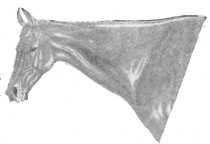
Fig. 381. Neck of a trotter.
3. Can a horse sleep when standing?
4. How are the legs placed when a horse lies down?
5. How does a horse get up,—front legs first or hind legs first? How
does a cow get up?
6. When a horse starts, after standing, what foot does he put forward
first,—the left or the right? Fore or back? What foot moves next?
7. When a horse trots, do the two feet on one side move together? Or do
lefts and rights move together?
8. What does a driver mean when he says that a horse "forges" or
"over-reaches?"
9. Name the things that a horse commonly eats. What is a good feed for a
day,—how much of each thing, and when given?
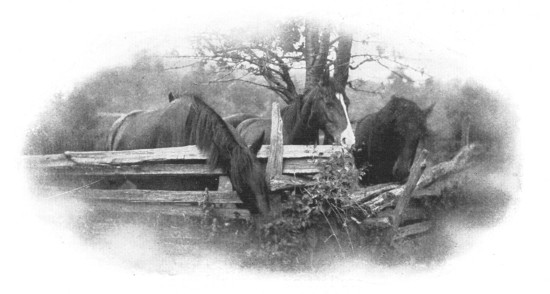
Fig. 382. At pasture.
[595]
INDEX.
["Fig." means that the page referred to contains the figure only, no text reference.]
|
PAGE. |
| Agassiz, glacial hypothesis |
105 |
| making of surveys and maps |
202, 203 |
| Agriculture, its place in schools |
45-47 |
| Agricultural education, what it is |
45-53 |
| Air |
87, 123, 124 |
| Alfalfa |
40, 354, 355, 357-360, 489-493 |
| Alluvial fans |
132 |
| Annual rings |
321, 327, 328, 329, 330, 335, 474 |
| Ants |
62, 64, (Fig.) 224, 248-251, 274, 508, 513 |
| Ant-lions |
250 |
| Aphids |
62, 68, 248-251, 539 |
| Aphis-lion |
249, 539, 540, 543 |
| Apple, buds |
328, 329 |
| fruit |
467-472 |
| grafting of |
374, 375 |
| shape of tree |
304 |
| twigs |
317-325 |
| Apple-scab |
470, (Fig.) 471 |
| Apricot |
328, 375, 377 |
| Aquaria |
59, 60, 141-156, 165, 166 |
| Arborvitae |
345, 346, 347 |
| Asters |
379-383 |
| Azalea |
331 |
| |
| Back-swimmers, see "Bugs." |
|
| Bagworms |
61 |
| Balsams |
383 |
| Barngrass |
362 |
| Bass, black |
162 |
| Basswood leaf-roller, see "Moths." |
|
| Beans |
291, 460-466, 563, 564 |
| Begonias |
372, 373 |
| Bees, wings of |
(Fig.) 224 |
| bumble |
65, 68, 351, 352 |
| carpenter |
61 |
| honey |
62, 64, 65, 353 |
| Beet |
257, 415, 416 |
| sugar |
405 |
| Beetles |
210, 223, 224, 507 |
| engraver |
61 |
| plum curculio |
68[596] |
| Beetles, potato |
62, 63, 68 |
| predaceous diving |
151 |
| snapping |
(Fig.) 223 |
| tiger |
61 |
| water scavenger |
152 |
| whirligig |
135 |
| wood-boring |
(Fig.) 223 |
| Bibliography of nature-study |
76-79 |
| Biennial |
416 |
| Birds, leaflets on |
253-290, 503, 504, 515, 516 |
| suggestions for study |
70, 71 |
| See special birds. |
|---|
| Black bass, see "Bass." |
|
| Blackberry |
305, 370, 375 |
| Blackbird, redwing |
263 |
| Black-fly, see "Flies." |
|
| Bluebells |
362 |
| Bluebird |
238, 261 |
| Black-nosed dace, see "Dace." |
|
| Bordeaux mixture |
381, 382, 389 |
| Breeding cage |
228 |
| Brook, The, insects of |
135-140 |
| suggestions for study |
125 |
| work of |
126-134 |
| Brownie-bugs, see "Bugs." |
|
| Budding |
376, 377 |
| Buds | |
| apple |
317-325 |
| apricot |
328 |
| azalea |
331 |
| butternut |
474 |
| dormant |
318, 314-320, 329 |
| elm |
330 |
| flower |
319, 328, 330 |
| hepatica |
392 |
| hickory |
329, (Fig.) 330 |
| horse-chestnut |
(Fig.) 474 |
| leaf |
319, 328, 330 |
| maple |
329, 473 |
| peach |
328 |
| pear |
328 |
| pussy-willow |
330 |
| terminal |
318, 474 |
| winter |
72, 331, 332, 327-336, 473, 474 |
| Bugs |
223 |
| brownie |
(Fig.) 223 |
| back-swimmers |
136, 152, 153 |
| giant water |
137, 153 |
| June |
288[597] |
| Bugs, lady |
210, 250 |
| stink |
223 |
| water boatmen |
136, 152 |
| water scorpions |
152, 153 |
| water-striders |
137 |
| Bulbs |
567, 577-580, 581-583 |
| see special bulbs. | |
| Burdock |
362 |
| Butterflies |
58, 59, 61, 62, 224, 238, 544 |
| cabbage, |
208, 209, 210, (Fig.) 224, 540 |
| common blue |
248 |
| milkweed |
208, 209 |
| monarch |
63, 544 |
| viceroy |
63 |
| Butternut |
(Fig.) 474 |
| |
| Cabbage butterfly, see "Butterflies." |
|
| Caddice-worm |
61, 136, 155 |
| Cambium |
375 |
| Cankerworms |
68 |
| Carnations |
(Fig.) 370, 372 |
| Carrot |
257 |
| Caterpillars |
58, 62, 501 |
| apple-tree tent |
59, 69, 227-235 |
| of cecropia moth |
167, 168 |
| cabbage |
63, 68, 208, 209, 210 |
| of codlin-moth |
470 |
| of common blue butterfly |
248 |
| of fall web-worm |
61 |
| of promethea moth |
168, 169 |
| "woolly-bear" |
210, 238, 539, (Fig.) 541 |
| Catfish |
150, 161 |
| Cat-tails |
364 |
| Cecropia moth, see "Moths." |
|
| Cereals, food value of |
409-414 |
| Chara |
(Fig.) 148, 149 |
| Charcoal |
144 |
| Cherry, grafting of |
377 |
| Chestnut, grafting of |
374 |
| Chickadee |
279-281, 285, 503, 504 |
| Chickens |
70, 522-524, 525, 526, 527 |
| Child's Realm, The (poem) |
451 |
| Chinese lily, see "Narcissus." |
|
| Chipmunk |
69 |
| Choke-cherries |
362 |
| Chrysalids |
58, 59 |
| of apple-tree tent caterpillar |
233 |
| cabbage butterfly |
209, 540[598] |
| Chrysalids, codlin-moth |
470 |
| milkweed butterfly |
208 |
| Cicada |
66, 210, (Fig.) 223, 529-535 |
| dog-day harvest fly |
534, 535 |
| seventeen-year locust |
529-535 |
| Cion |
374 |
| Clam |
150 |
| Clarkias |
383 |
| Clay |
117, 118 |
| Clothes moth, see "Moths." |
|
| Clouds |
84, 85, 88, 90 |
| Codlin-moth, see "Moths." |
|
| Clover |
124, 349-360 |
| alsike |
353 |
| buffalo |
352, 353 |
| crimson |
352 |
| hop, see yellow. |
|
| hop trefoil, see low hop. |
|
| least hop |
354 |
| low hop |
354 |
| rabbit foot |
(Fig.) 353, 354 |
| red |
351, 352 |
| scarlet, see crimson. |
|
| stone, see rabbit-foot. |
|
| zig-zag |
352 |
| See, also, "Alfalfa," "Medics," "Melilots." |
| Cocoons |
58, 59, 167-169 |
| of cecropia moth |
167, 168 |
| codlin-moth |
508 |
| lace-winged fly |
539, 540, 543 |
| promethea moth |
168, 169 |
| tent caterpillar |
(Fig.) 233, 235 |
| "woolly-bear" |
211, 539 |
| Cockle |
363 |
| Cold-blooded animals |
199 |
| Coleus |
370, 372 |
| Common blue butterfly, see "Butterflies." | |
| Cones, of arborvitae |
345, 347 |
| hemlock |
344, 347 |
| balsam fir |
343, 347 |
| Austrian pine |
338, 339, (Fig.) 340, 346 |
| pitch pine |
337, 338, 346 |
| Scotch pine |
338, 339, 346 |
| white pine |
(Fig.) 335, 336, 346 |
| black spruce |
341, 342, 346 |
| Norway spruce |
341, (Fig.) 342, 346 |
| red spruce |
342, 347 |
| white spruce |
342, 346 |
| Corn, Indian |
397-407, 409-414, 485-488, 571[599] |
| Coreopsis |
383 |
| Corydalis |
138 |
| Cowbird |
261, 262 |
| Crane-fly, see "Flies." |
|
| Crayfish |
150 |
| Creek chub |
165 |
| Crickets |
59, 66, 543 |
| Crocus |
582, 583, 588 |
| Crow |
197, 284, 287-290, 501, 502 |
| Cross-fertilization, see "Pollination." |
|
| Currants |
305, 370, 373, (Fig.) 374, 375 |
| Currant-worms |
68 |
| Cuttings |
369-378 |
| Cutworms |
288, 400, 501 |
| Cyanide bottle |
216, 217 |
| |
| Dace, black-nosed |
159 |
| Daffodils |
582-588 |
| Dahlia |
564 |
| Dairy products, value in N. Y. State |
489 |
| Damping-off |
370, 371 |
| Damsel-flies |
136, 154 |
| Dandelion |
362, 363, 481, 482 |
| Darter, Johnny |
163 |
| Delta |
103, 131, 132, 133 |
| Dew |
83 |
| Dobson |
137, 138 |
| Dock |
362, 380 |
| Dodder |
360 |
| Dog-day harvest fly, see "Cicada." |
|
| Domestic animals |
70, 414 |
| See, also, "Horses," "Poultry." |
| Doves |
254, 261, 264 |
| Dragon-flies |
136, 154, 155, 222 |
| Ducks |
522-524, 525, 526 |
| Duck-weed |
148 |
|
|
| Eel-grass |
147, 148 |
| Eggs, of ants |
246 |
| caterpillars |
210, 229, 230, (Fig.) 235 |
| cicada |
530, 534 |
| frogs |
188 |
| grasshoppers |
210 |
| lace-winged fly |
539, 543 |
| mosquito |
238, 239 |
| domestic fowls |
524, 525 |
| salamanders |
188 |
| spiders |
181-183, 211, 288 |
| toads |
186-189, 200 |
| Egg-shell farms |
456, 566, 573-576 |
| Electric-light bug, see "giant water bug" under "Bugs." |
|
| Elm, American |
300, 303, (Fig.) 308, 309, 310-316, 330[600] |
| slippery, (Fig.) |
299, 300, 301, 303 |
| struggle for existence |
361 |
| Entomological supplies, dealers in |
226 |
| Evaporation |
82 |
| Evergreens |
333-347 |
| See special kinds. |
| Fall web-worm, see "Caterpillars." |
|
| Ferns |
76, 362 |
| Finch, grass, see "vesper sparrow" under "Sparrows." |
|
| purple |
261, 265, 266 |
| Fir, balsam |
343, 347 |
| Fireweed |
364 |
| Fish |
69, 149, 150, 157-166 |
| See special fish. |
|---|
| Flicker, see "Woodpeckers." |
|
| Flies |
62, 224 |
| black |
139 |
| crane |
(Fig.) 223 |
| hellgrammite |
138 |
| horse |
210 |
| house |
63 |
| pomace |
(Fig.) 222 |
| Flood-plain |
104, 130 |
| Flowers, pistillate |
400 |
| staminate |
400 |
| study of |
71, 72 |
| Fog |
83, 86, 88, 89 |
| Foods, value of various kinds |
411, 412 |
| bulletins on |
413 |
| Forestry |
75 |
| Fossils |
107 |
| Frog |
150, 151, 188, 189, 501 |
| Frost |
426, 427 |
| Fruits |
71, 72 |
| |
| Galls |
61 |
| pine-cone willow |
135, 136 |
| Gardens, children's |
36, 37, 40, 379-383, 559-566, 569-571, 573-576 |
| Geese |
520-522, 525, 526 |
| Geraniums |
370, 372, 419 |
| Giant water-bug, see "Bugs." |
|
| Germination |
560-562, 566, 573-576 |
| of bean |
291, 460-466 |
| squash |
291-295 |
| Glacial scratches |
(Fig.) 104, 105, 108, 109, 110[601] |
| Glacier |
(Fig.) 100, 104-113 |
| Gladiolus |
564 |
| Gold-fish |
150 |
| Gooseberries |
305, 373, 375 |
| Grackle, bronzed |
261, 262, 263 |
| Grafting |
374-378 |
| Grape |
(Fig.) 363, 364, 370, 373, 375 |
| Grape hyacinth |
588 |
| Grass |
362, 363, 364, 380 |
| Grasshoppers |
56, 59, 62, 63, 66, 210, 288, 524 |
| Guinea-pigs |
70 |
| |
| Hail |
88, 89 |
| Hawthorn |
374 |
| Hay, value as crop in N. Y. State |
489 |
| Hellgrammite fly, see "Flies." |
|
| Hemlock |
343-345, 347 |
| Hepatica |
391-393, 477, 478 |
| Hibernation, of butterflies |
61, 238 |
| mosquitoes |
238 |
| toad |
199, 200 |
| "woolly-bear" |
539 |
| Hickory, buds |
329, (Fig.) 330 |
| small-fruited shagbark |
(Fig.) 298, 300 |
| pignut |
(Fig.) 298, 300 |
| High-hole, see "flicker" under "Woodpeckers." |
|
| Horse-chestnut |
(Fig.) 474 |
| Horse-fly, see "Flies." |
|
| Horses |
589-594 |
| See, also, "Domestic Animals." |
| Horticulture |
75 |
| House-fly, see "Flies." |
|
| Hyacinth |
582, 583, 586, 588 |
| |
| Ichneumon flies |
210 |
| Imperial moth, see "Moths." |
|
| Indian turnip, see "Jack-in-the-Pulpit." |
|
| Insects, cage for |
539, (Fig.) 540 |
| how to collect and preserve |
213-226 |
| of a brook |
135-140 |
| suggestions for study |
58-69 |
| Isabella moth, see "Moths." |
|
| |
| Jack-in-the-Pulpit |
395, 396, 479, 480 |
| Johnny Darters, see "Darter." |
|
| June bug, see "Bugs." |
|
| |
| Katydid |
66 |
| Kingfisher |
261, 266 |
| Knotweed |
262[602] |
| |
| Lace-winged fly |
539, 540, 543, 544 |
| Lady-bugs, see "Bugs." |
|
| Leaf-miners |
60 |
| Leaf-rollers |
60 |
| basswood |
(Fig.) 224 |
| Leaf-scars |
474 |
| of evergreens |
334 |
| Leaves, autumn colors |
71, 426, 427, 483 |
| fall of |
427 |
| functions of |
424, 425, 426, 483 |
| Lenses |
228 |
| Lettuce |
563, 564 |
| Lightning |
89, 91 |
| Lilac |
305 |
| Lime |
118 |
| Lobster |
50 |
| Locusts, mouth parts |
530 |
| seventeen-year, see "Cicada." |
|
| Lucerne, see "Alfalfa." |
|
| Luna moths, see "Moths." |
|
|
|
| Maple, black |
428 |
| box elder |
428 |
| goose-foot, see striped. |
|
| mountain |
427, (Fig.) 429 |
| Norway, |
329, 428 |
| planting of |
446 |
| red |
428, (Fig.) 429, (Fig.) 473 |
| silver |
428 |
| striped |
427, (Fig.) 428 |
| sugar |
73, 74, 329, 423-430 |
| swamp, see red. |
|
| Maple sugar |
431-434 |
| Maps, construction of |
202-205 |
| Martins |
254 |
| May-flies |
138, 139 |
| Meadow-lark |
261, 263, 264, 274 |
| Medics |
350, 351 |
| black |
355 |
| hop, see black. |
|
| toothed |
355 |
| spotted |
355 |
| See, also, "Alfalfa." |
| Melilots |
350, 351 |
| white sweet clover |
356 |
| yellow sweet clover |
356 |
| Bokhara clover |
356 |
| Mice |
69[603] |
| Milkweed butterfly, see "Butterflies." |
|
| Mineral matter, in seeds |
410, 411 |
| in soils |
100 |
| Minnows |
149, 165 |
| Monarch butterfly, see "Butterflies." |
|
| Moraine |
110 |
| Mosquitoes |
58, 59, 62, 153, 154, 237-241, 272 |
| Moths, how to collect |
222 |
| how to distinguish from butterflies |
224 |
| life cycle |
169 |
| basswood leaf-roller |
(Fig.) 224 |
| cecropia |
167, 168 |
| clothes |
68 |
| codlin |
68, 468-471, 508 |
| imperial |
(Fig.) 225 |
| Isabella tiger |
539, (Fig.) 542 |
| luna |
(Fig.) 226 |
| promethea |
167, 168, 169 |
| scallop-shell |
61 |
| tussock |
68 |
| underwing |
(Fig.) 225 |
| Moulting, of caterpillars |
232 |
| cicada |
531 |
| snake |
198 |
| toad |
198, 199 |
| Mudwasps, see "Wasps." |
|
| Mulching, of soil |
120, 121, 122, 380, 381 |
| Mullein |
362, 579 |
| Museum pests |
219, 220 |
| Mushrooms |
74 |
| |
| Narcissus |
582, 583, 588 |
| oriental |
585, 586 |
| Nature-study, outline of movement |
21-29 |
| suggestions for (graded course and bibliography) |
55-79 |
| what it is |
11-20 |
| Nettles |
364 |
| N. Y. Teachers, An appeal to |
31-43 |
| N. Y. State Teachers' Library |
148 |
| Nitella |
(Fig.) 148, 149 |
| Nitrogen |
350, 360 |
| Note-taking |
455-457, 458, 459, 460-466 |
| Nuthatch, white-breasted |
283-286 |
| red-breasted |
285 |
| Nutmeg |
409 |
| |
| Oaks, grafting of |
374 |
| scarlet |
300 |
| swamp white |
300[604] |
| Oil, in seeds |
398, 405, 410 |
| Oriole |
515, 516 |
| |
| Parsley |
363 |
| Parsnips |
257 |
| Parrot's feather |
(Fig.) 148, 149 |
| Peaches |
328, 375, 377 |
| Pear |
374, 375 |
| Pepperidge |
300, 301, 304, 309 |
| Petunias |
383 |
| Phlox |
383 |
| Phœbe |
280, 361, 363 |
| Pigeons |
254 |
| Pigweeds |
362, 367 |
| Pines, Austrian |
338, 339, (Fig.) 340, 346 |
| pitch |
336-338, 346 |
| Scotch |
338, 339, 346 |
| Pitchforks |
362 |
| Plantain |
362 |
| Plants, breeding of |
389, 390, 405-407, 411 |
| planting of |
367, 368 |
| physiology of |
72, 73, 74, 142, 424-427 |
| societies of |
361-365 |
| Plums |
375, 377 |
| Plum curculio, see "Beetles." |
|
| Pokeweed |
364 |
| Pollination |
351, 352, 400 |
| Polliwogs, see "Tadpoles." |
|
| Pomace flies, see "Flies." |
|
| Ponies |
593, 594 |
| Pop-corn |
488 |
| Poplar, Carolina |
444 |
| cutting of |
373 |
| Lombardy |
301, (Fig.) 303, 304 |
| Poppies |
383 |
| Potatoes |
370, 374, 385-390, 407 |
| Pot-holes |
133 |
| Poultry |
517-527 |
| See, also, "Domestic Animals." |
| Predaceous diving beetles, see "Beetles." |
|
| Promethea moth, see "Moths." |
|
| Protective coloration |
62, 63 |
| Protein |
398, 405 |
| Pruning |
417-421, 444, 475, 476 |
| Pumpkin |
401 |
| Pupa, of ants |
244, 245, 246 |
| butterflies, see "Chrysalids." |
|
| mosquitoes |
239, 240 |
| moths, see "Chrysalids." |
[605] |
| |
| Quince |
374 |
| |
| Rabbit |
56, 70 |
| Radish |
563, 564 |
| Ragweed |
362, 579 |
| Raindrops |
86, 88, 89, 90 |
| Rainfall |
119, 123 |
| Raspberry |
305, 375 |
| Robin |
238, 261, 499, 500 |
| Rock flour |
110 |
| Roots, growing point of |
293, 294 |
| Rose |
(Fig.) 371 |
| Rust, on asters |
381, 382 |
| |
| Salamanders |
188, 197, 501, 539-544 |
| Sand |
117, 120 |
| Sapsucker,see "Woodpeckers." |
|
| Sassafras |
301, (Fig.) 302, 309 |
| Scale insects |
68 |
| Scallop-shell moth, see "Moths." |
|
| School grounds, improvement of |
35, 38-41, 437-447, 566-568, 571, 572 |
| Schoolroom, The |
9 |
| Scion, see "Cion." |
|
| Seed, dispersal of |
72 |
| dormant |
409, 410 |
| uses of stored food |
409-414 |
| See, also, "Germination." |
| Shiner |
162, 165 |
| Shower, A Summer |
81-91 |
| Silage |
403 |
| Siphon |
144 |
| Skipper, silver spotted |
61 |
| Sleep, of flowers |
72 |
| Slug |
149 |
| Smartweed |
362, 380 |
| Snakes |
197, 198, 501 |
| Snails |
143, 148, 149 |
| Snow |
84, 85, 93-97, 453, 454 |
| Snowball bush |
305 |
| Snowdrops |
582, 583, 588 |
| Snowflakes |
588 |
| Soil |
99-114 |
| value of various kinds |
115-124 |
| in school gardens |
560, 570, 571, 574, 579, 581 |
| Sparrows, fox |
264, 265 |
| song |
261, 265 |
| tree |
265 |
| white-crowned |
265[606] |
| Sparrows, white-throated |
261, 265 |
| vesper |
265 |
| Spiders |
65, 66, 68, 69, 171-183, 211, 249, 288 |
| Spraying |
68, 69 |
| Springs |
126 |
| Spruce, black |
341-343, 346 |
| Norway |
339-341, (Fig.) 342, 346 |
| red |
342, 343, 347 |
| Squash |
291-295, 407 |
| Squill |
588 |
| Squirrel, red |
435, 436 |
| black |
435 |
| how to study |
69 |
| Starch |
331, 386, 387, 398, 405, 410, 483 |
| Stems, growing point of |
295 |
| Stickleback |
163 |
| Stink-bugs, see "Bugs." |
|
| Stock, for grafting |
374 |
| Stone-flies |
138, 140 |
| Storms, snow |
93-97, 453, 454 |
| thunder |
86, 87, 90 |
| Stratification |
133 |
| Stream-cutting |
127-129, 133 |
| Stream deposition |
104, 130, 133 |
| Struggle for existence |
74, 75, 361, 410, 418 |
| Sumac |
431, 433, 466 |
| Sunfish |
161 |
| Sweet clover, see "Melilots." |
|
| Sweet-peas |
379-383, 564 |
| Swallow, tree |
254 |
| |
| Tadpoles |
135, 189-193 |
| Tape-grass |
147, 148 |
| Terrarium |
207-212, 537-544 |
| Thistle |
364, 579 |
| Thunder |
89 |
| Thorn-apple |
301, (Fig.) 303, 309 |
| Tillage |
570, 571 |
| Tomato |
374 |
| Trees, winter aspect of |
297-305 |
| how to draw |
307-316 |
| how to plant |
444-446 |
| see special kinds. |
|
| Tree-toads |
188, 189, 210 |
| Tussock moth, see "Moths." |
[607] |
| Underwing moth, see "Moths." |
|
| |
| Virginia creeper | 444 |
| Vireo |
515 |
| Verbena |
372 |
| Vegetables |
71 |
| Viceroy butterfly, see "Butterflies." |
|
| |
| Walking-sticks |
63 |
| Warm-blooded |
199 |
| Wasps |
62, 63, (Fig.) 224 |
| mud |
136 |
| Water |
120, 126 |
| Water boatmen, see "Bugs." |
|
| Watercress |
148 |
| Waterfalls |
129, 133 |
| Water-milfoil |
(Fig.) 148, 149 |
| Water-purslane |
(Fig.) 148, 149 |
| Water-scavenger beetle, see "Beetle." |
|
| Water-scorpion, see "Bugs." |
|
| Water-strider, see "Bugs." |
|
| Water-tiger |
152 |
| Weeds |
74 |
| Wheat |
411 |
| Whirligig beetle, see "Beetles." |
|
| Willows |
305, 373, 443, 446 |
| pussy |
330 |
| Wire-grass |
362 |
| Wire-worms |
400 |
| Woodpeckers |
269-277, 505-513 |
| downy |
269, 270, 271, 284, 507-510 |
| flicker |
274-277, 512, 513 |
| golden-winged, see flicker. |
|
| hairy |
269, 270, 271, 284 |
| red-head |
272, 505-507 |
| sapsucker |
270, 271, 272, 510-512 |
| Wrens, |
254 |
| Yarup, see "flicker" under "Woodpeckers." |
|
| Yellow-hammer, see "flicker" under "Woodpeckers." |
|
|
| Zinnias |
383 |
Transcriber's Note:
Alternative spelling retained.
Punctuation normalized without comment.
Declarative end caps retained for aesthetic value.
Spelling changes:
Page 108, "moivng" was changed to read "moving"
Page 155, "caddice-warm" was changed to read "caddice-worm."
Page 178, "entangeled" was changed to read "entangled."
Page 190, "grow a a great" was changed to read "grow a great."
Page 223, "Snappping beetle" was changed to read "Snapping beetle."
Page 274, "Ornothology" was changed to read "Ornithology."
Page 284, "I pounded on the widow" was changed to read "I pounded on the
window."
Page 285, "Audobon" was changed to read "Audubon."
Page 288, "omniverous" was changed to read "omnivorous."
Page 321, "histery" was changed to read "history."
Page 363, "open ones eyes" was changed to read "open one's eyes."
Page 383, "motherworth and Virginia creeper" was changed to read
"motherwort and Virginia creeper."
Page 396, "Is is pleasant" was changed to read "Is it pleasant."
Page 510, "once that it it is" was changed to read "once that it is."
Page 530, "thousand liliputian" was changed to read "thousand
lilliputian."
Page 592, "Is you should" was changed to read "If you should."
*** END OF THE PROJECT GUTENBERG EBOOK 43200 ***

